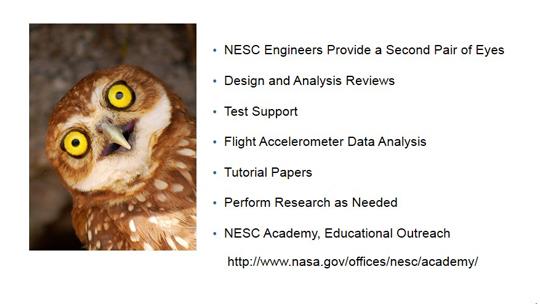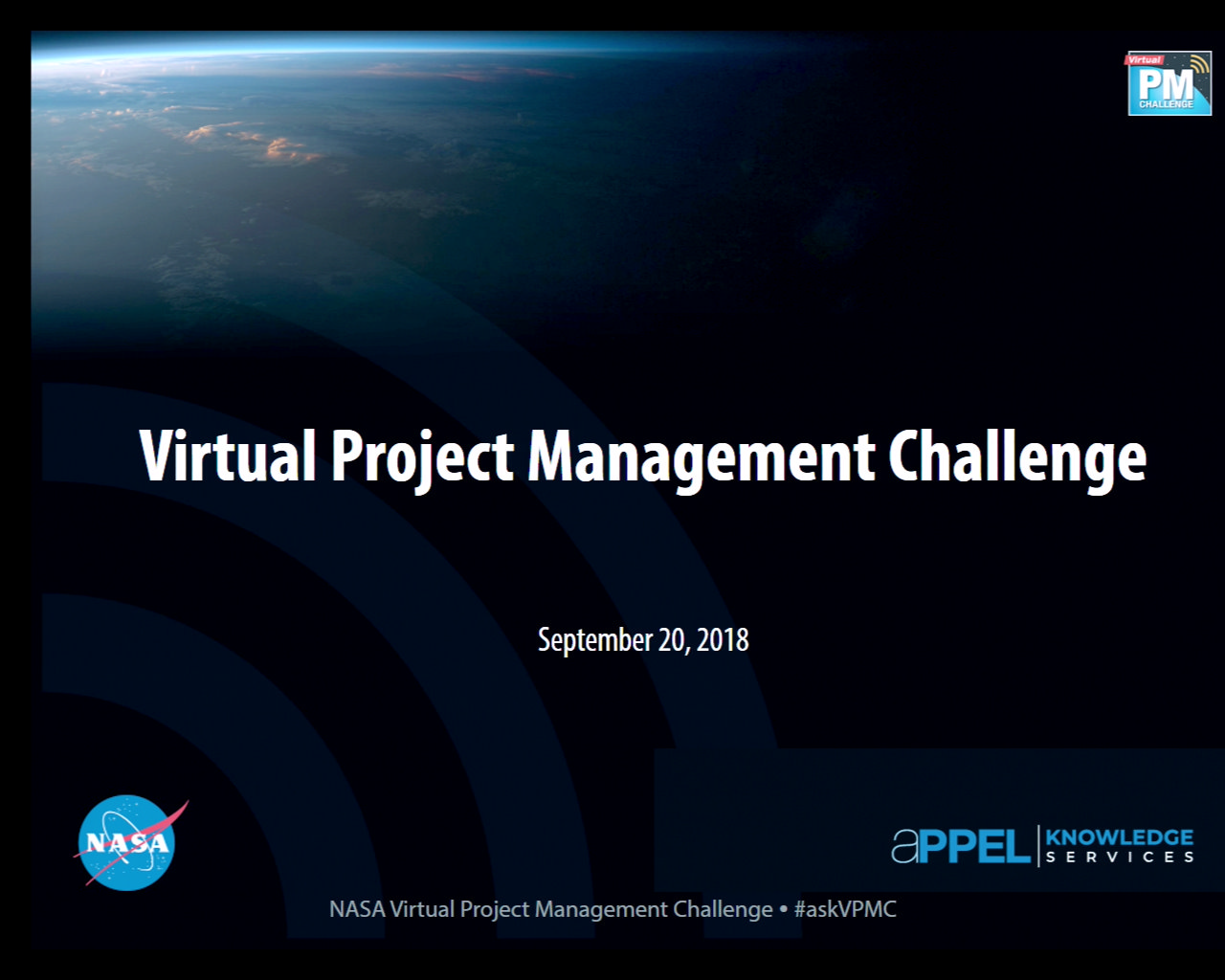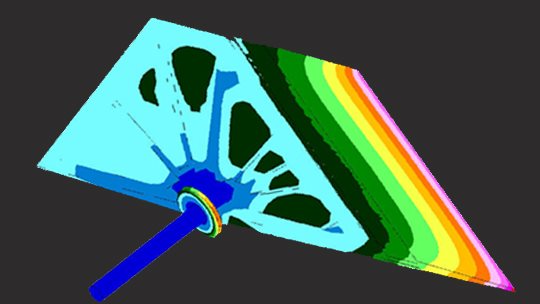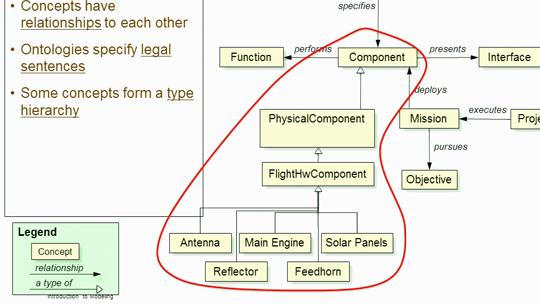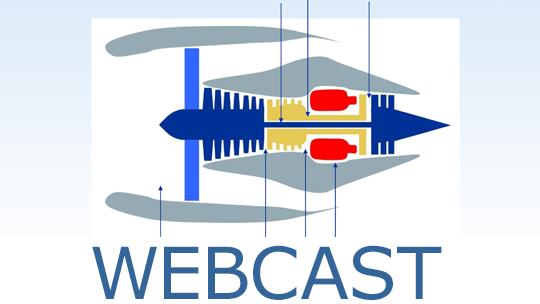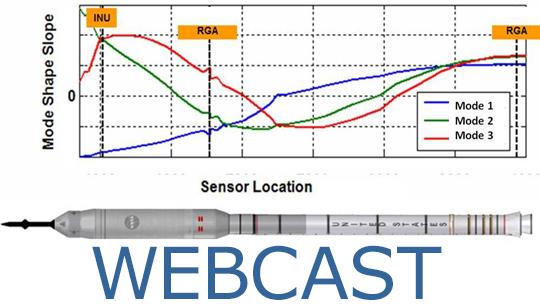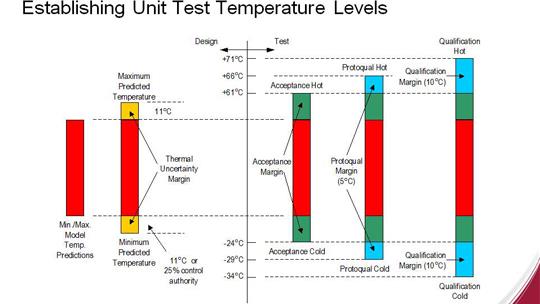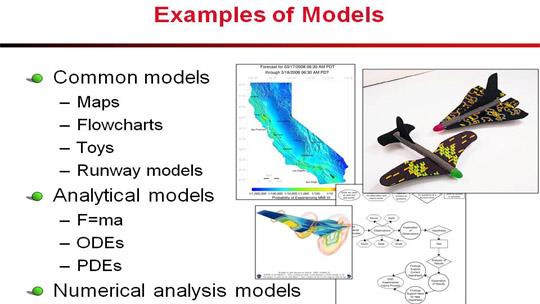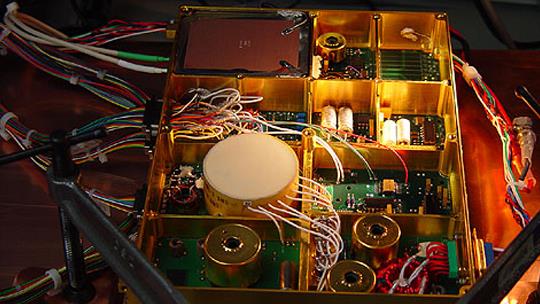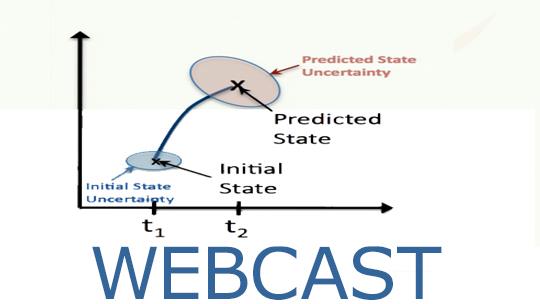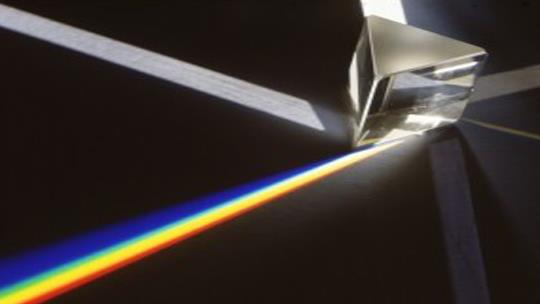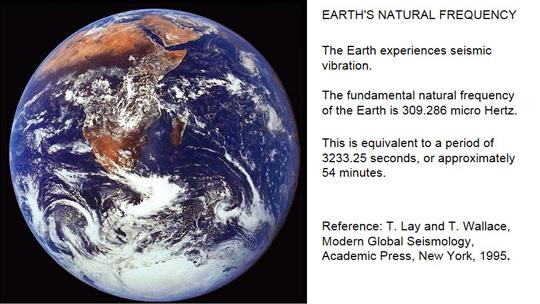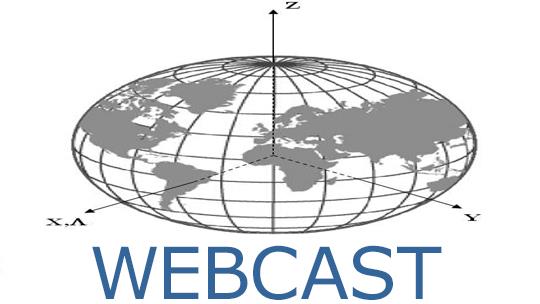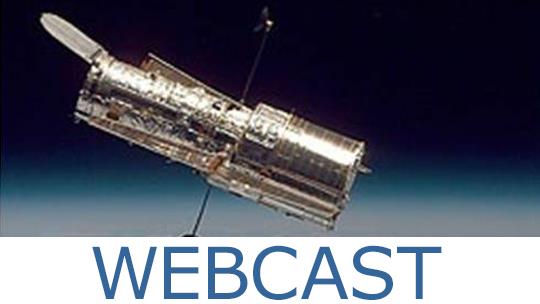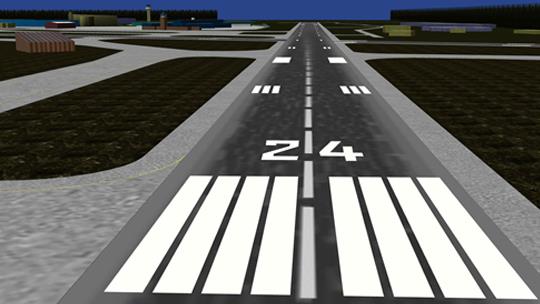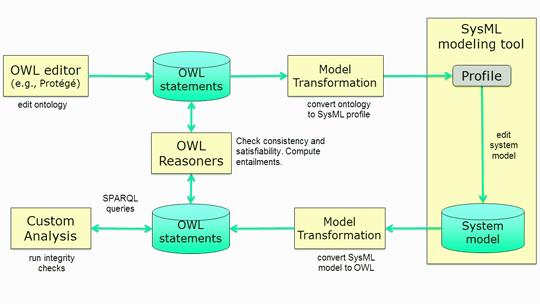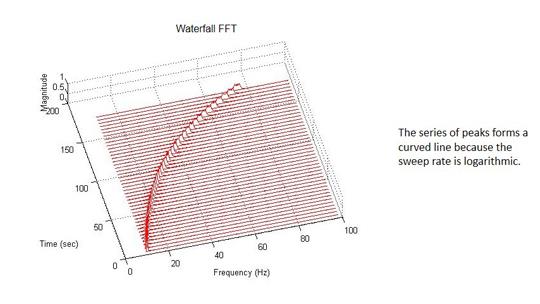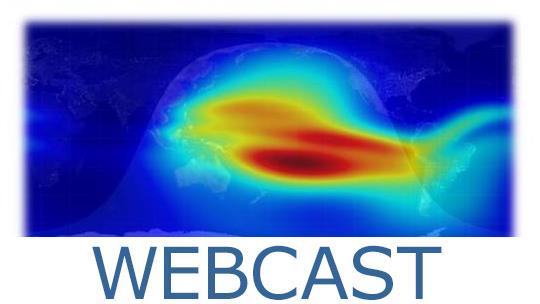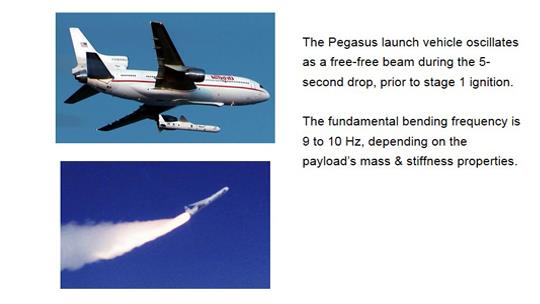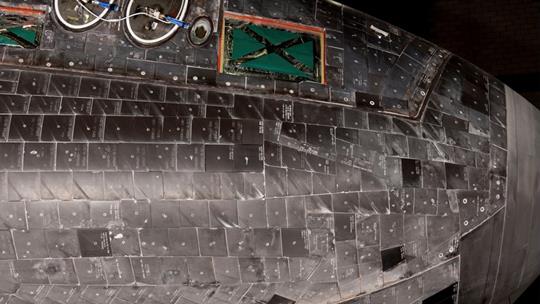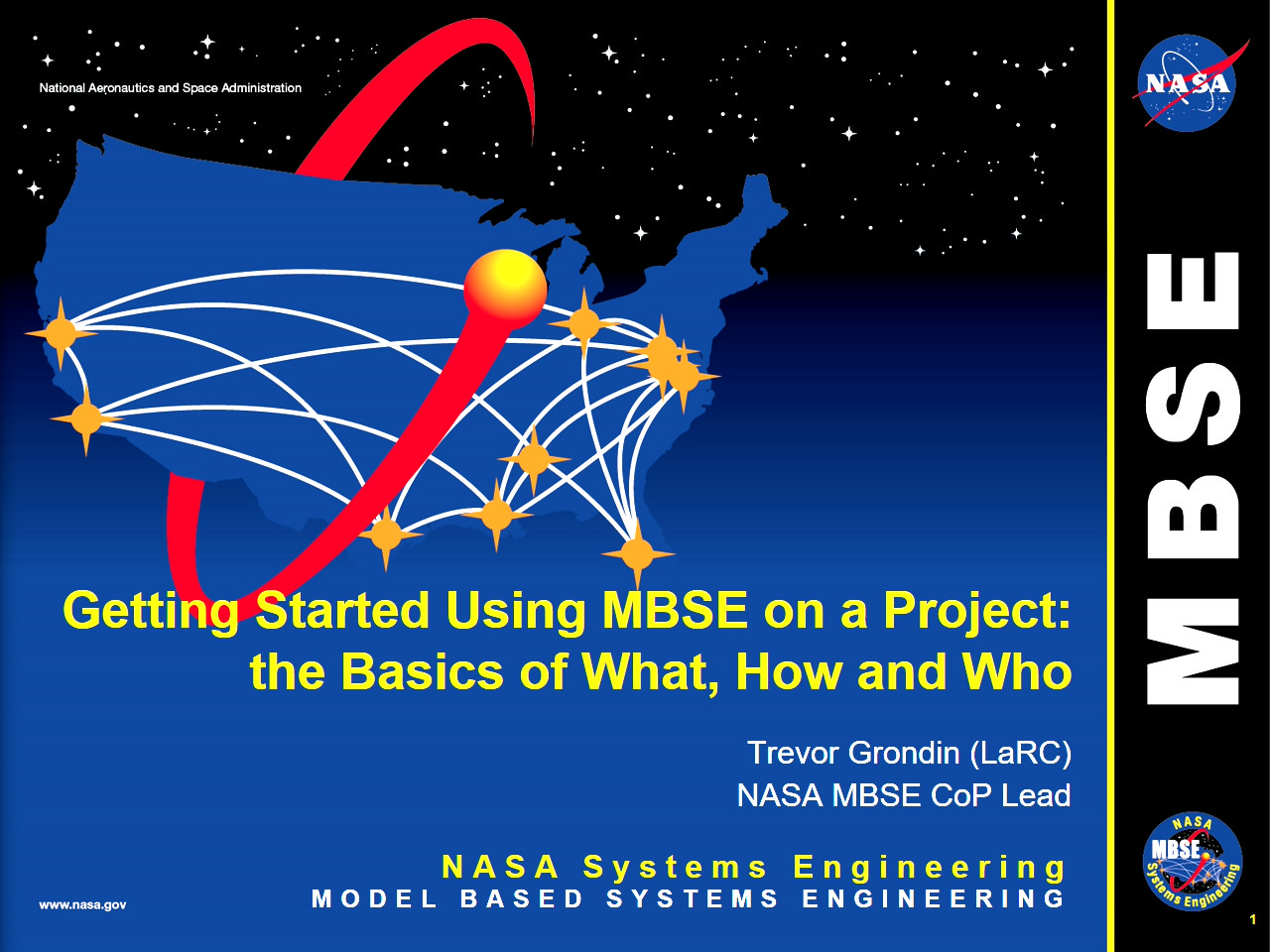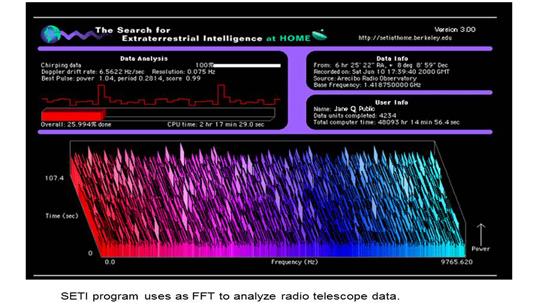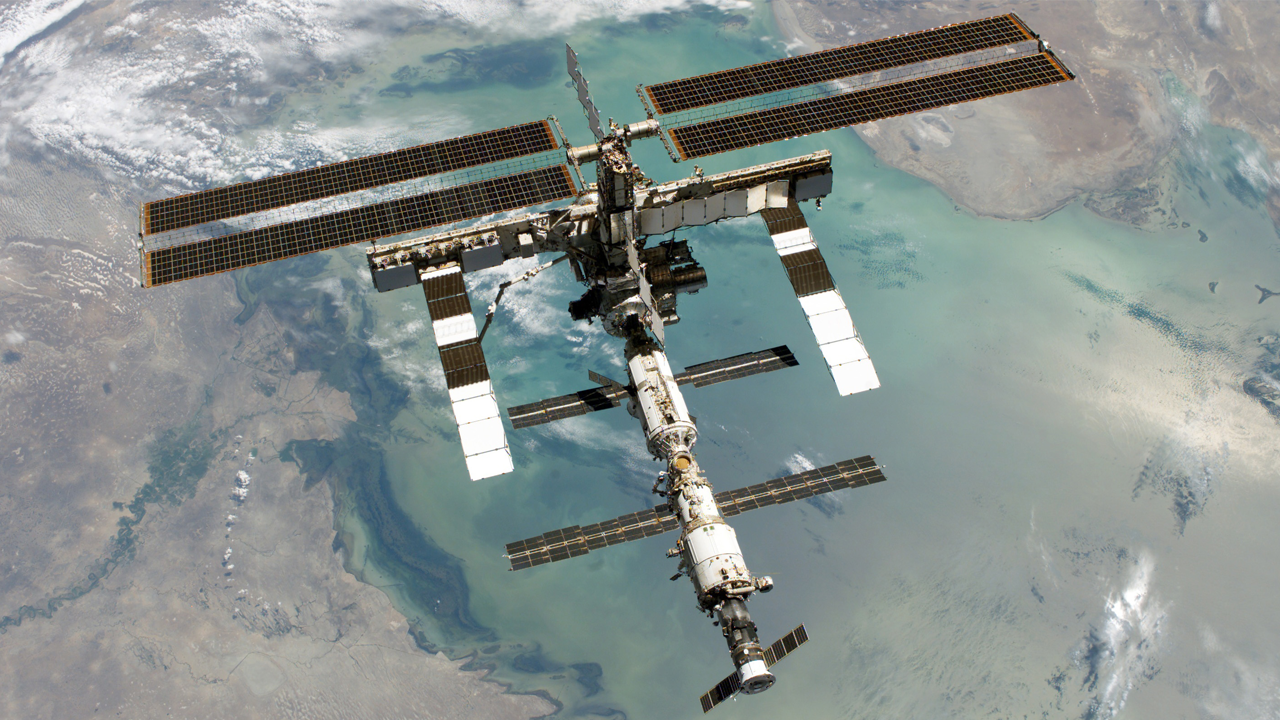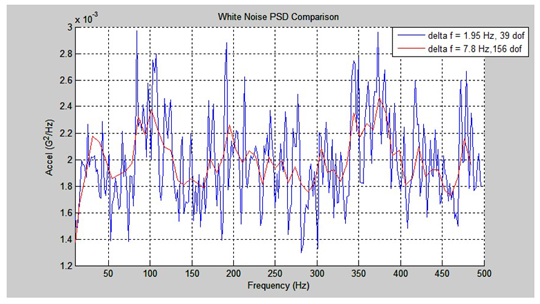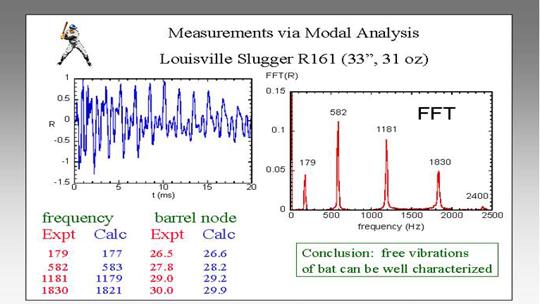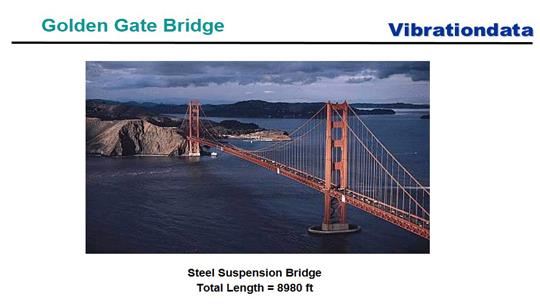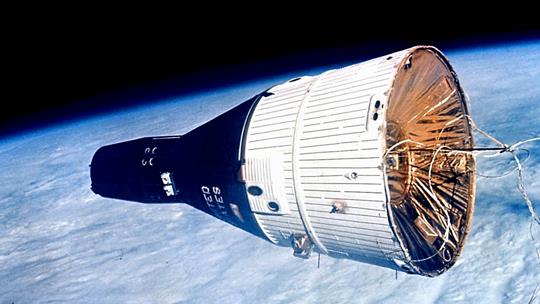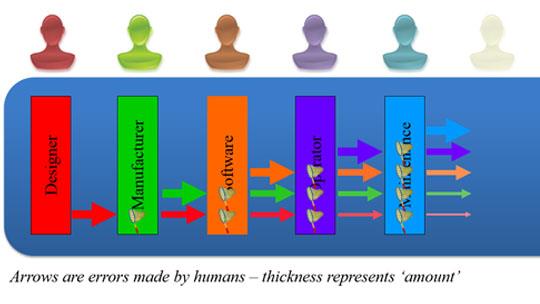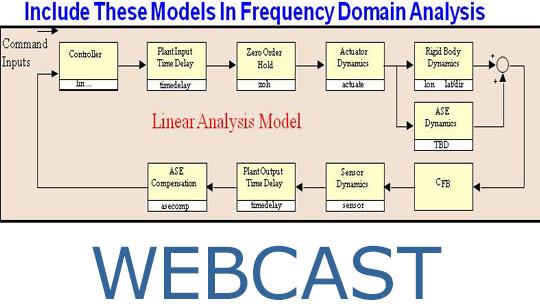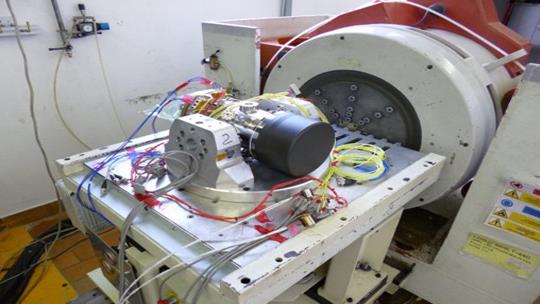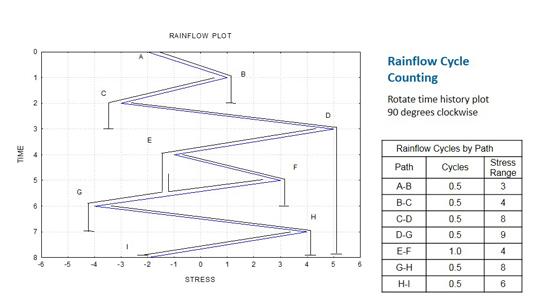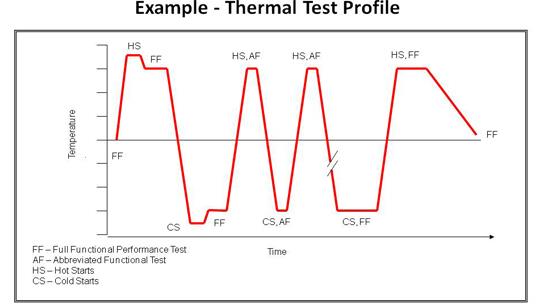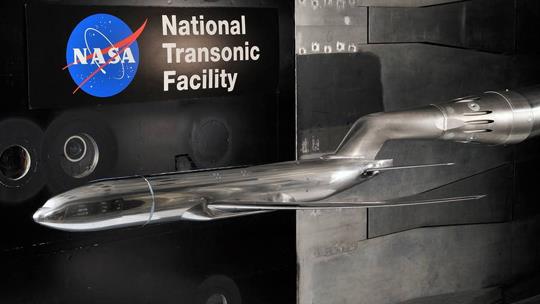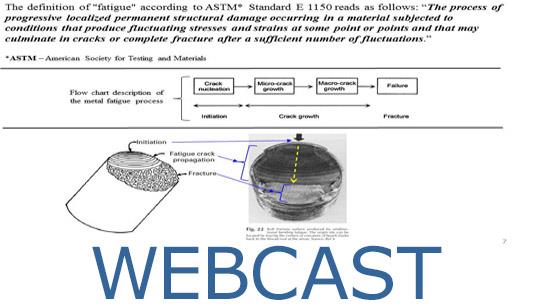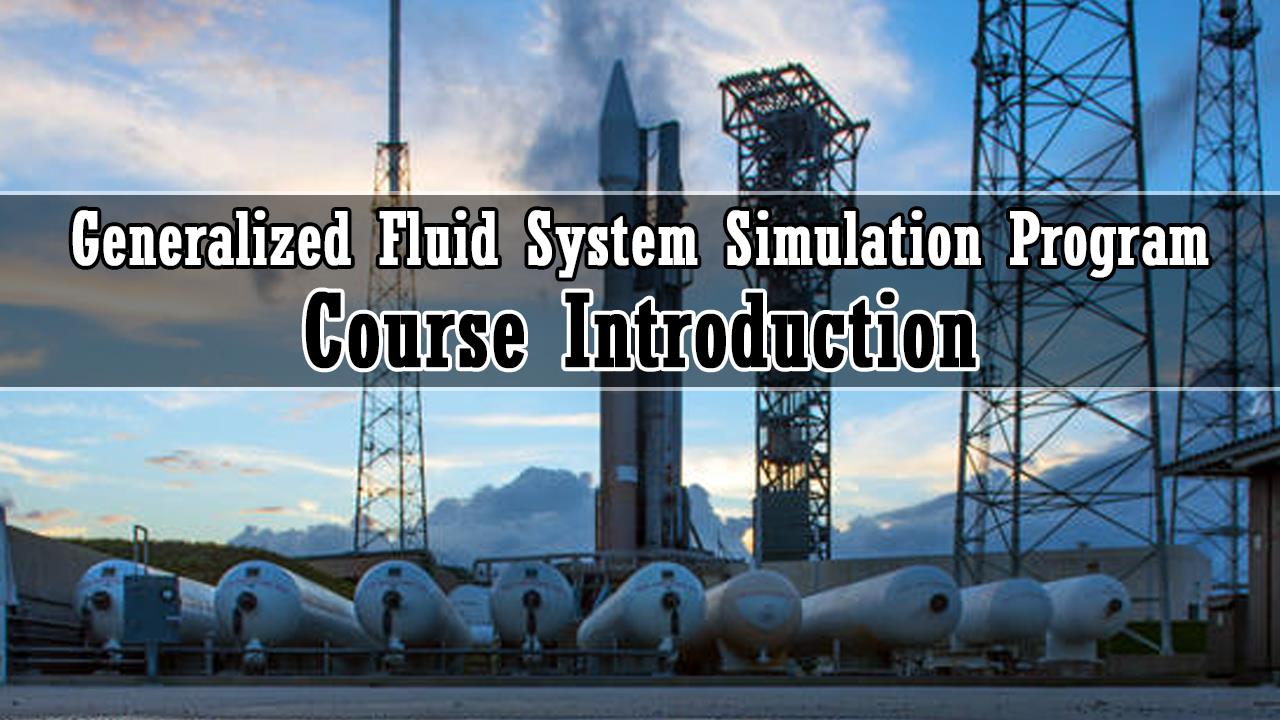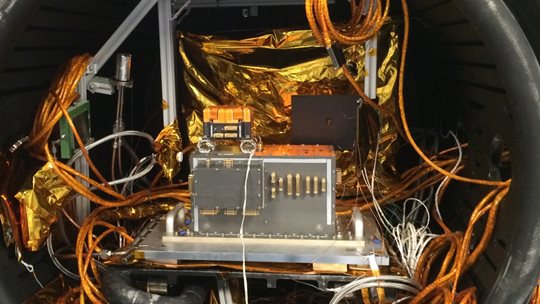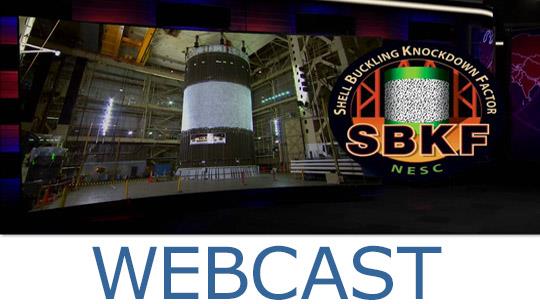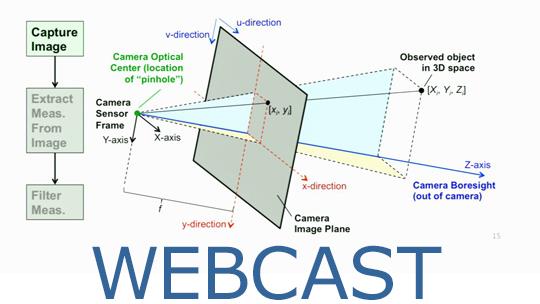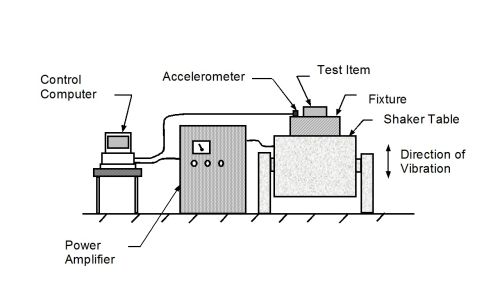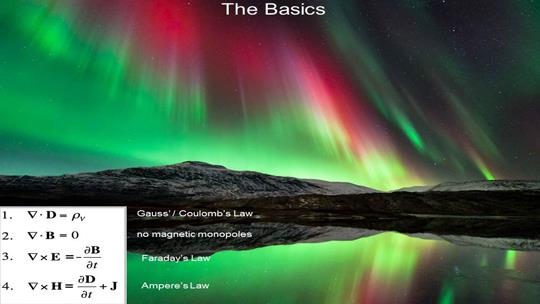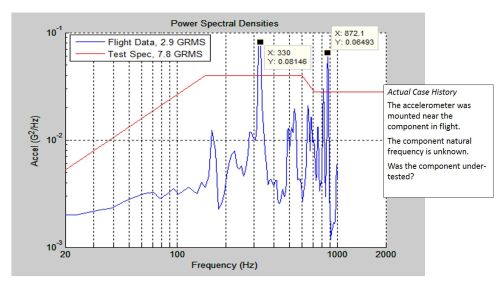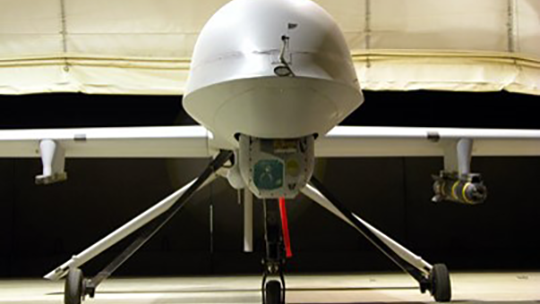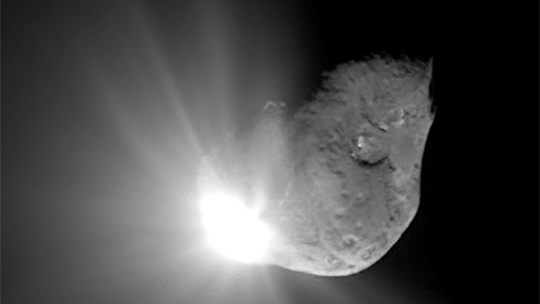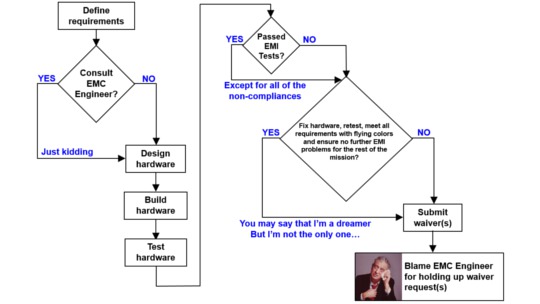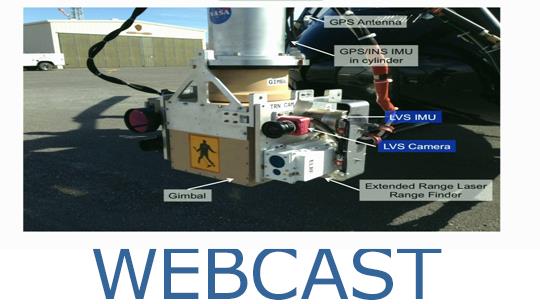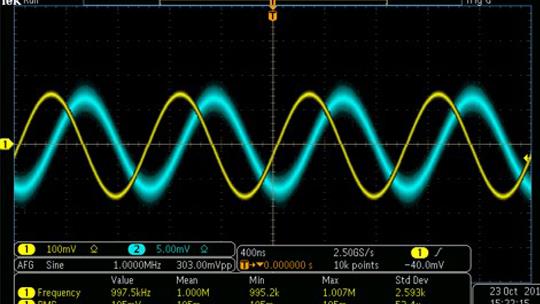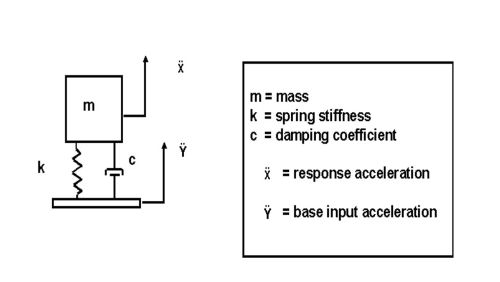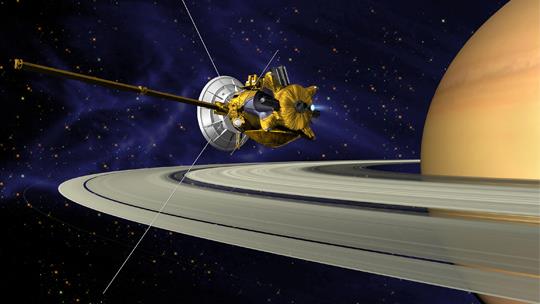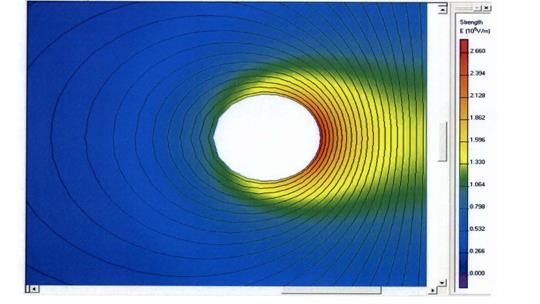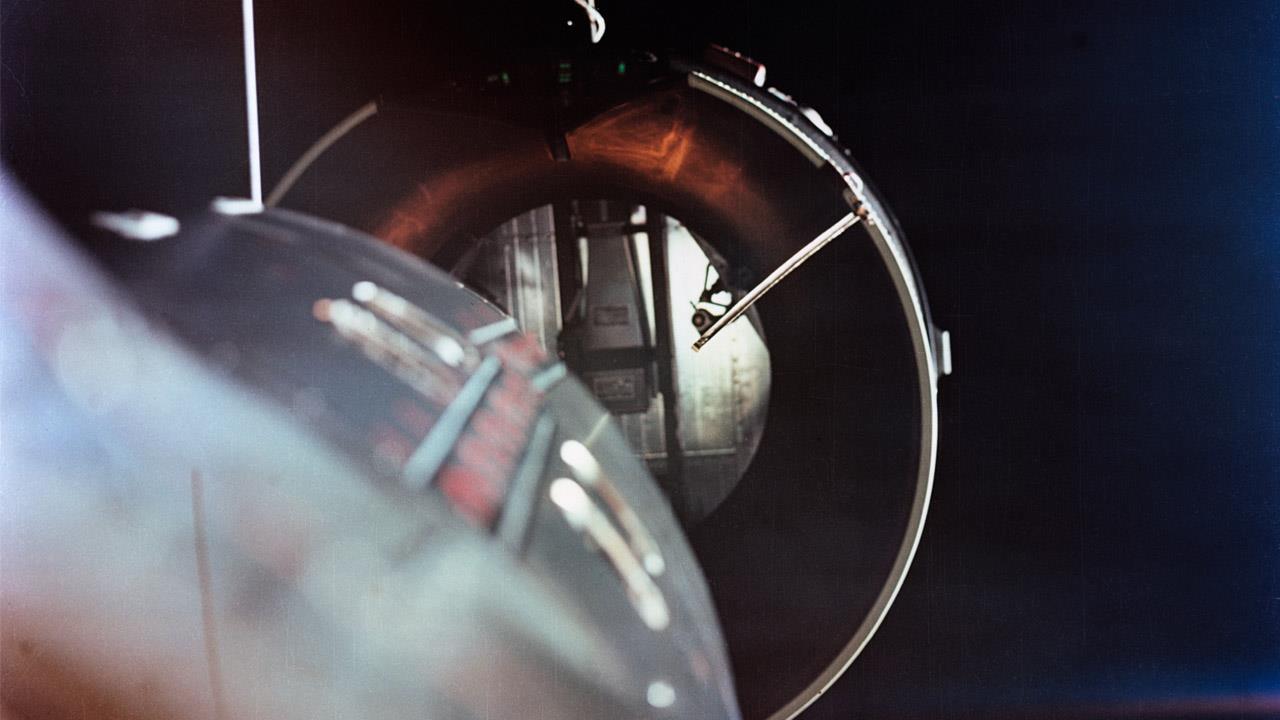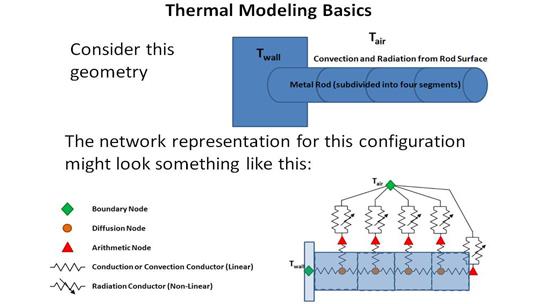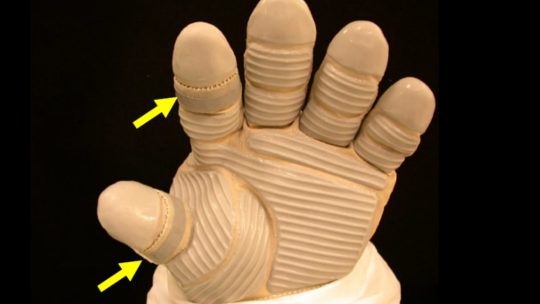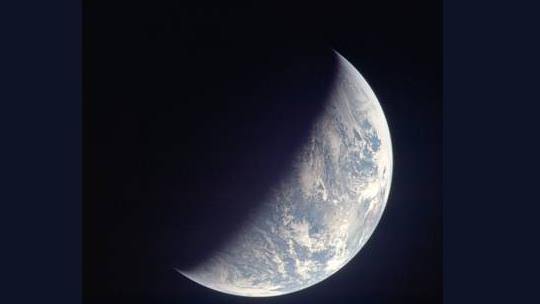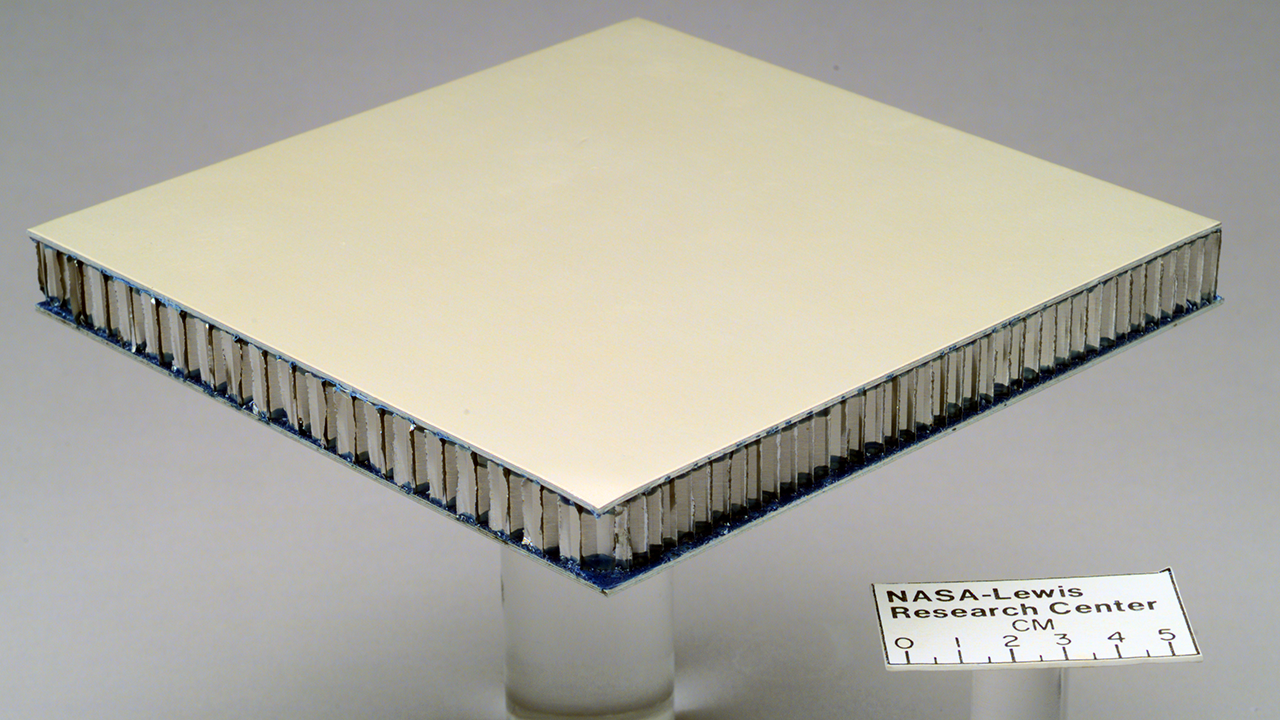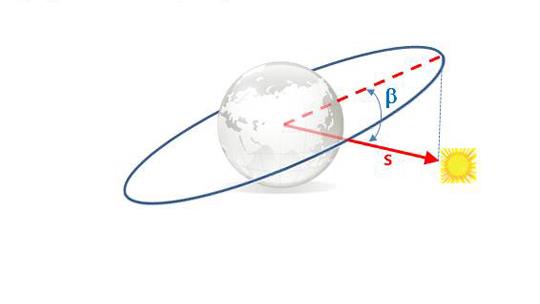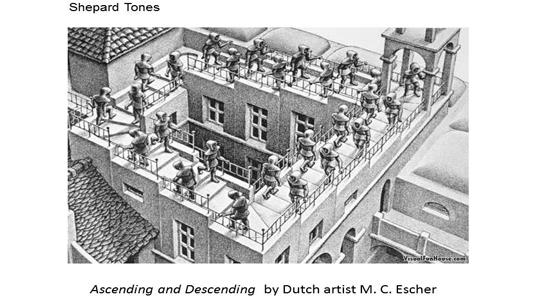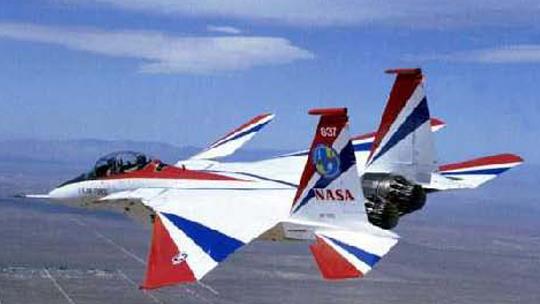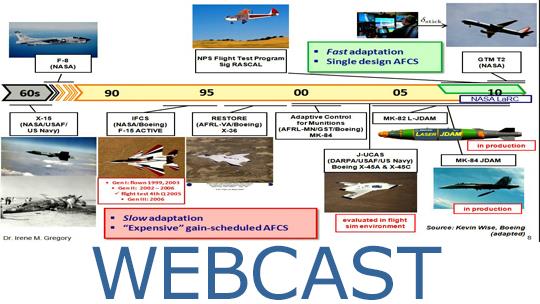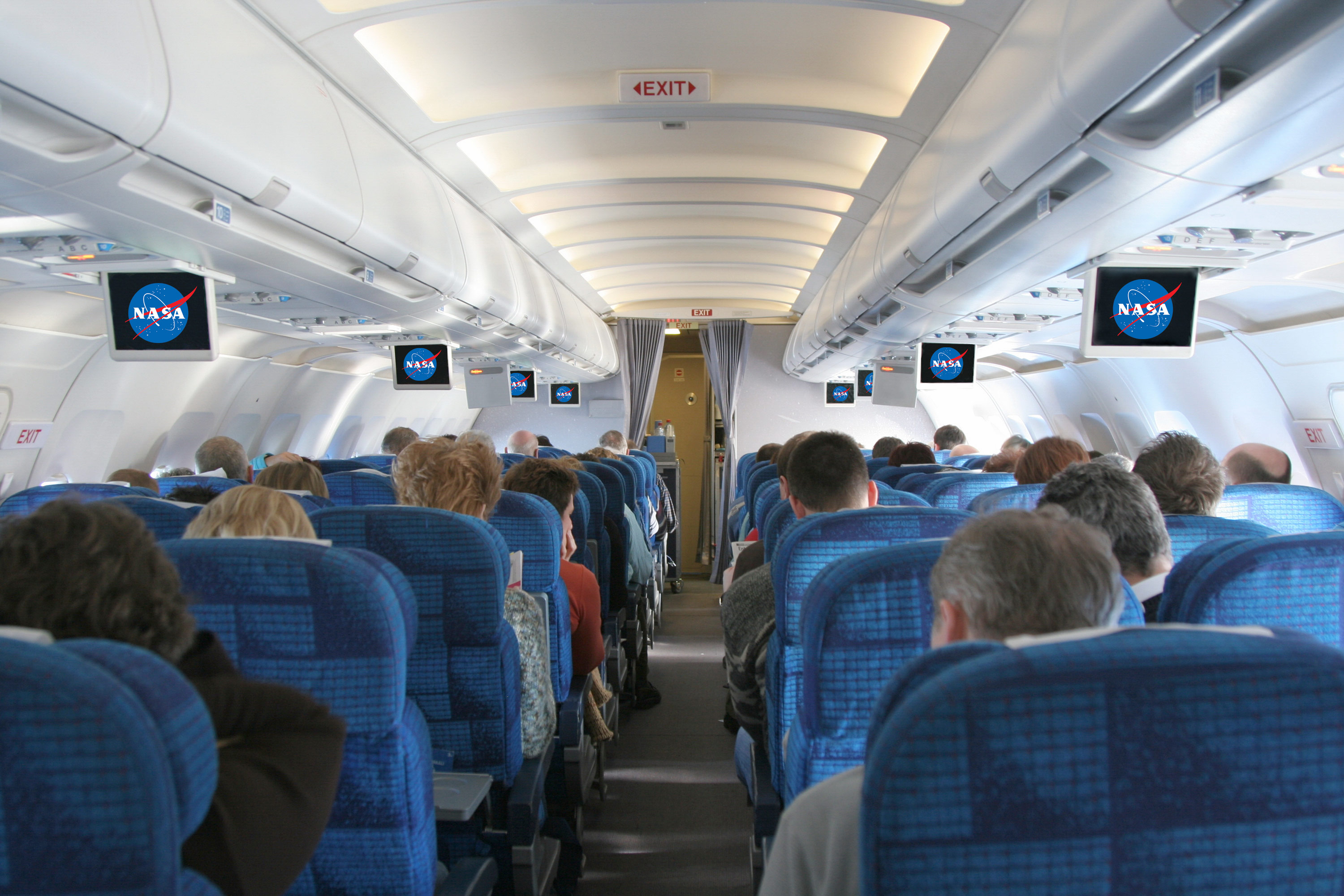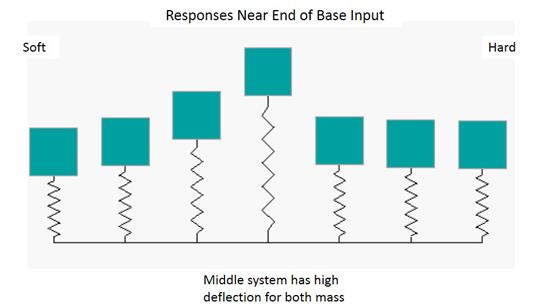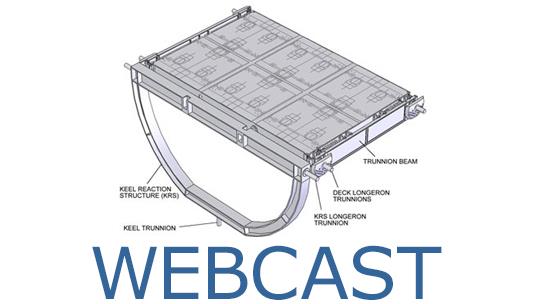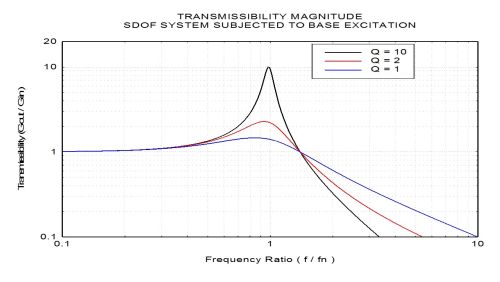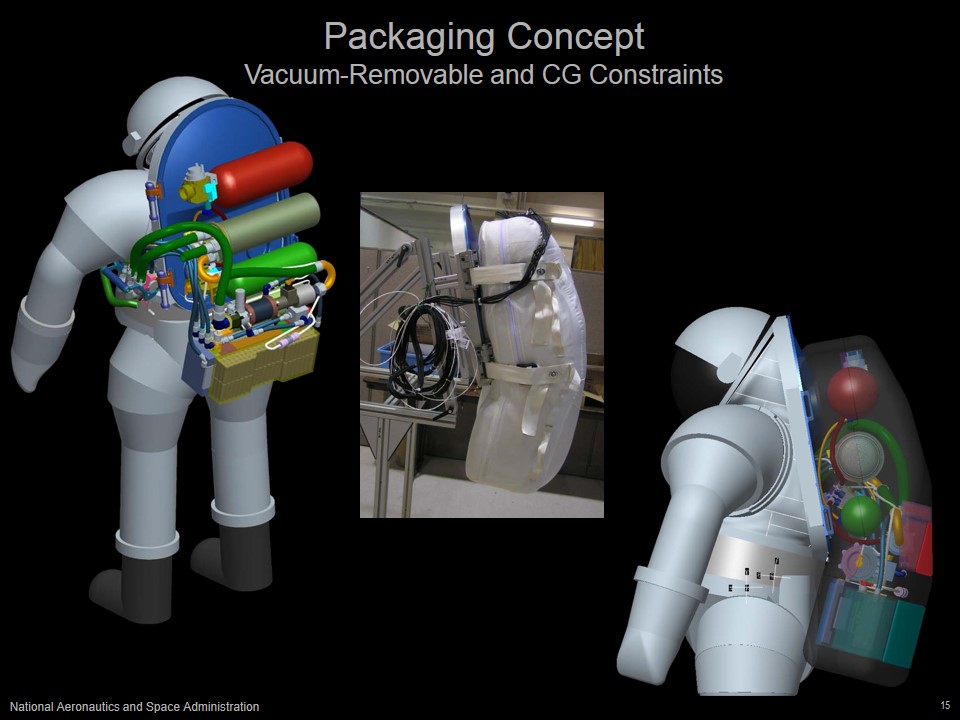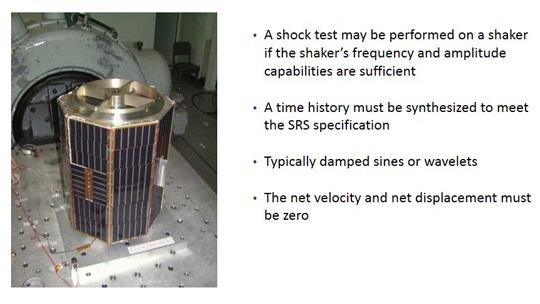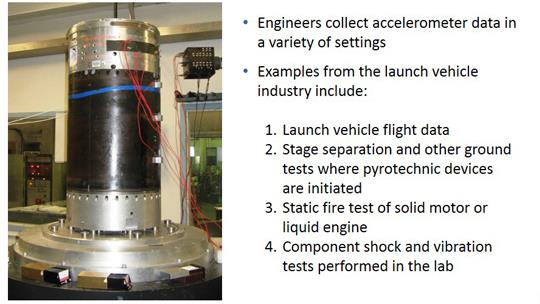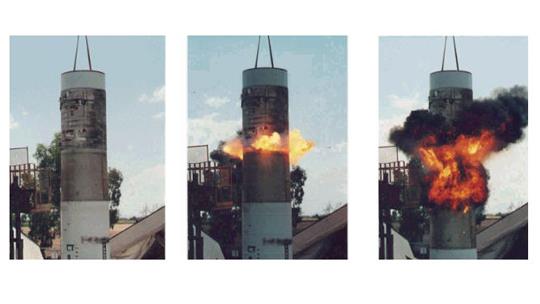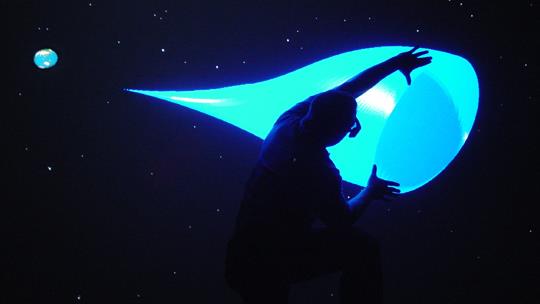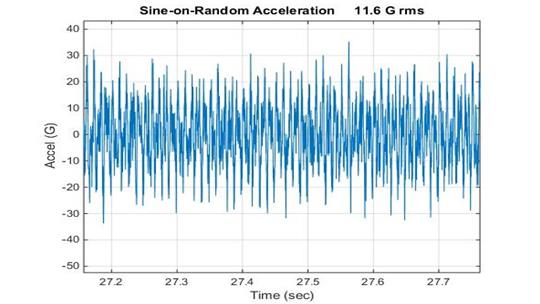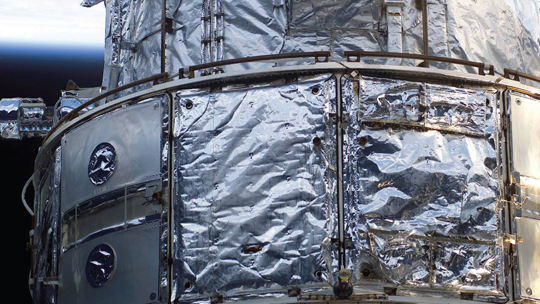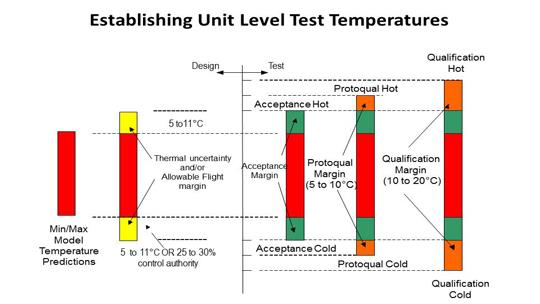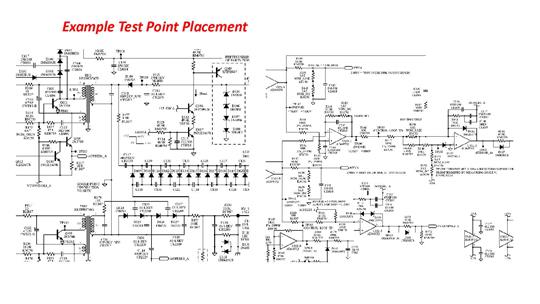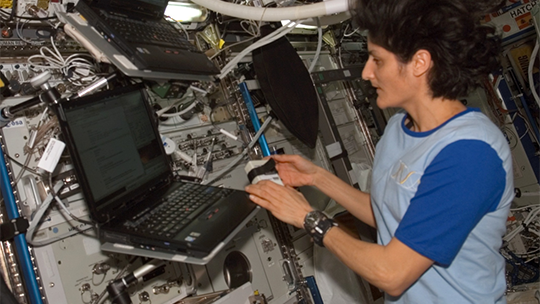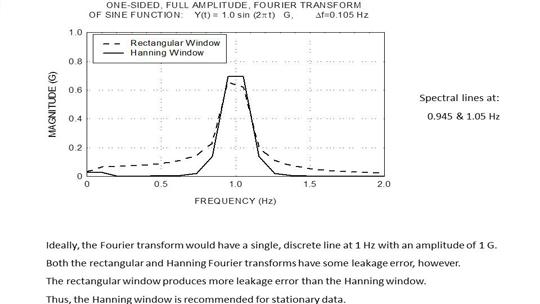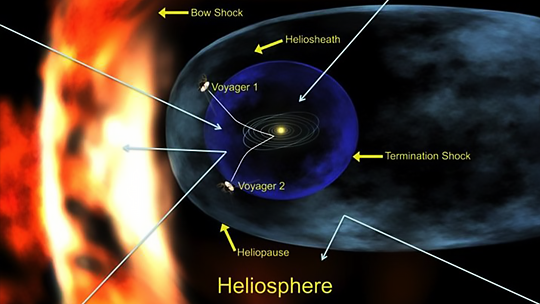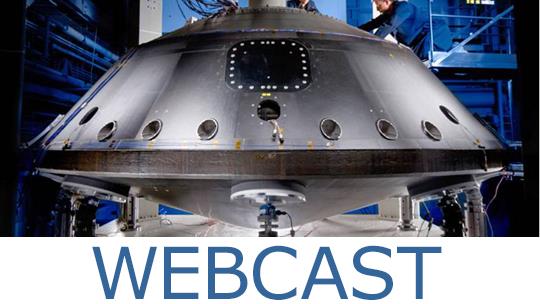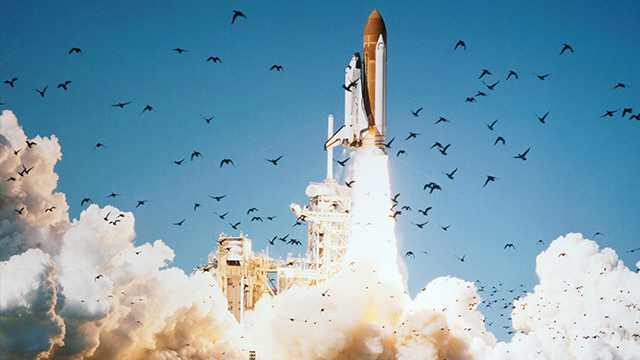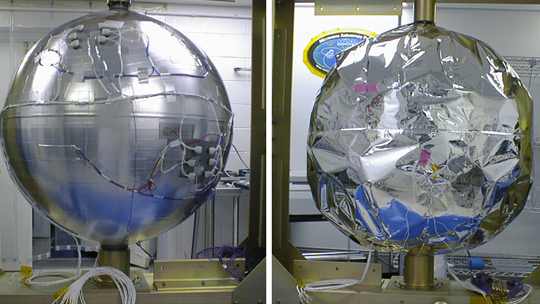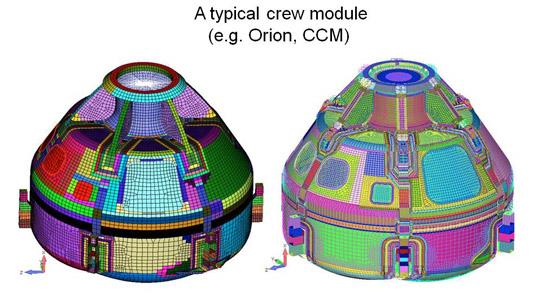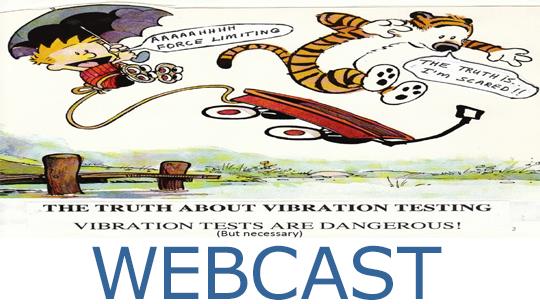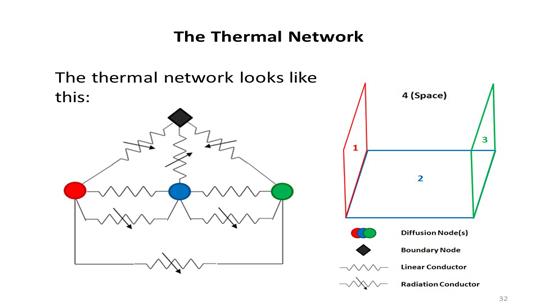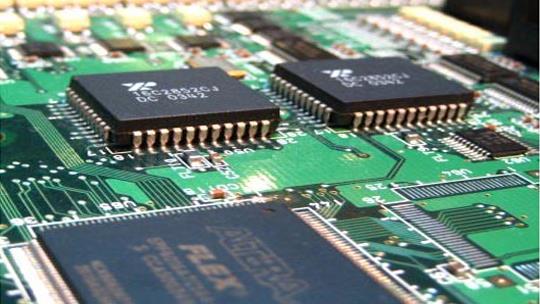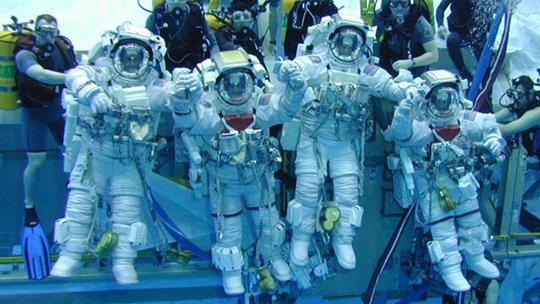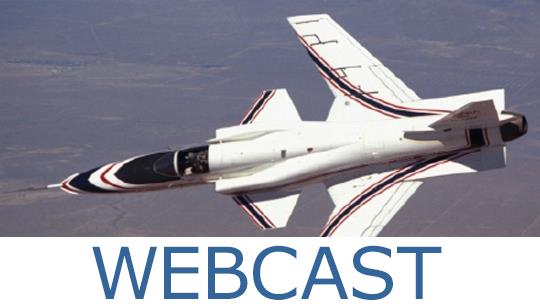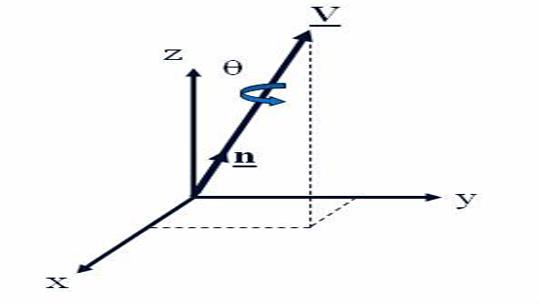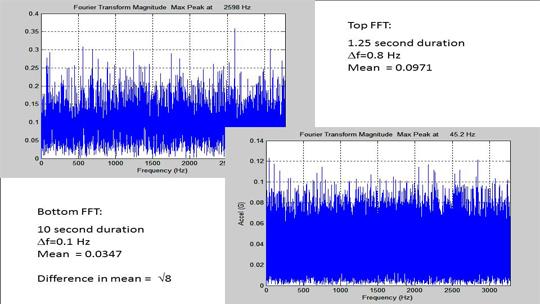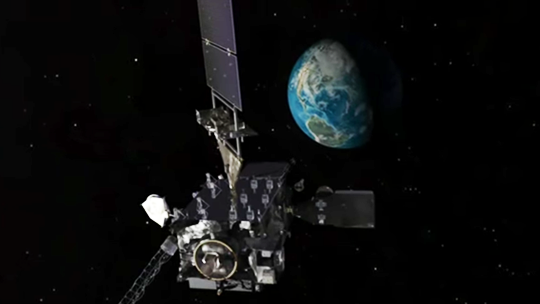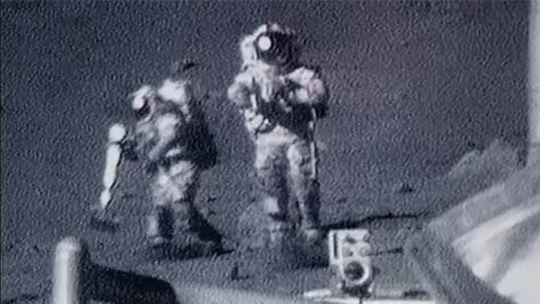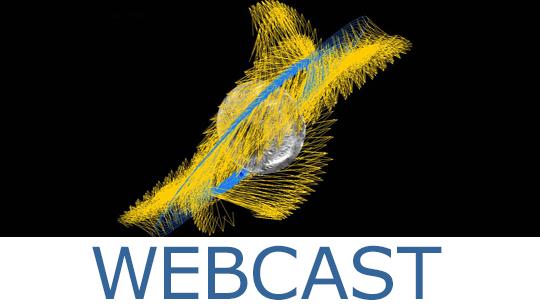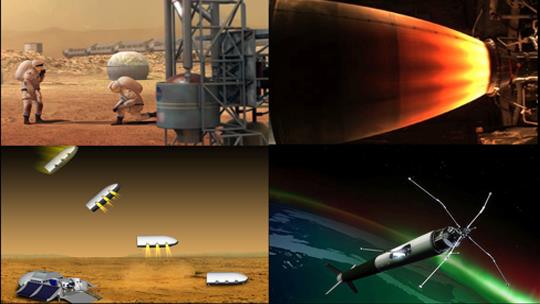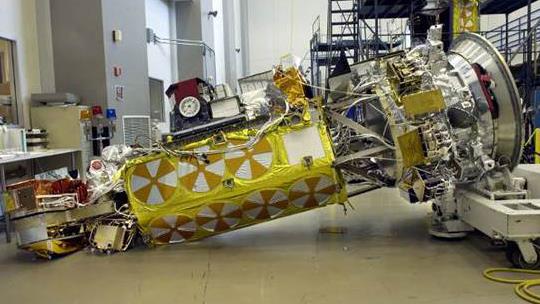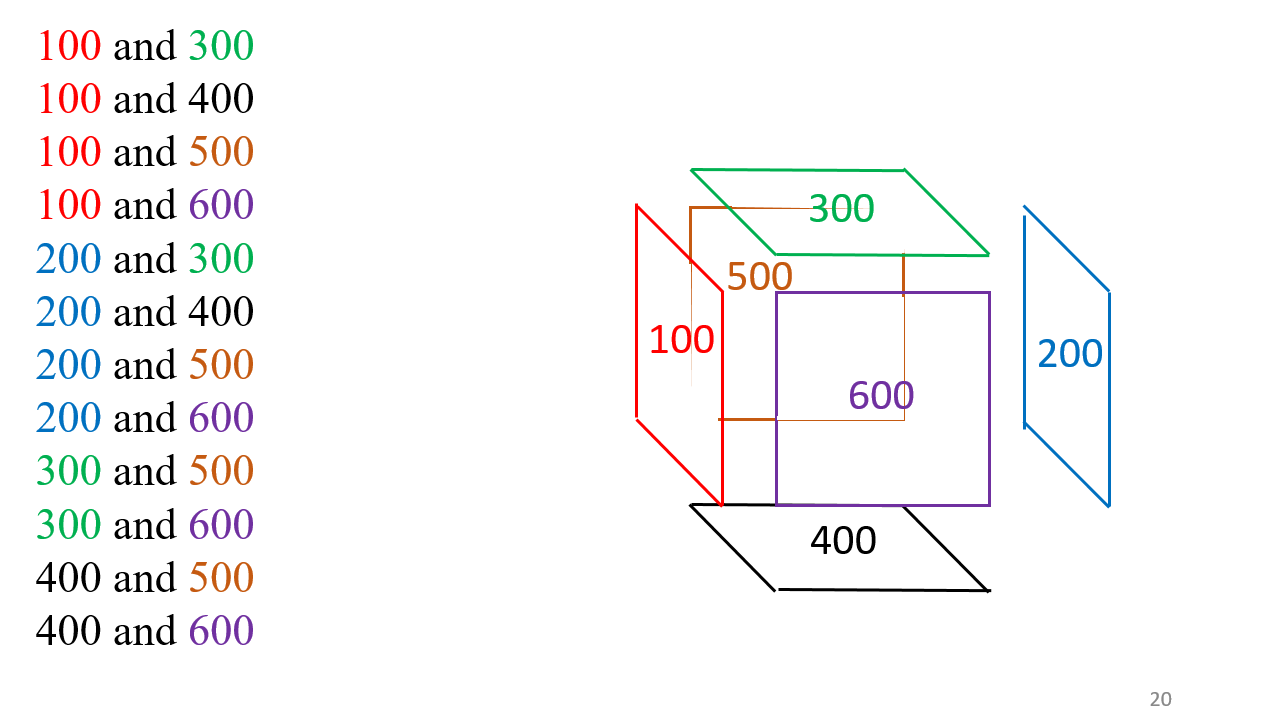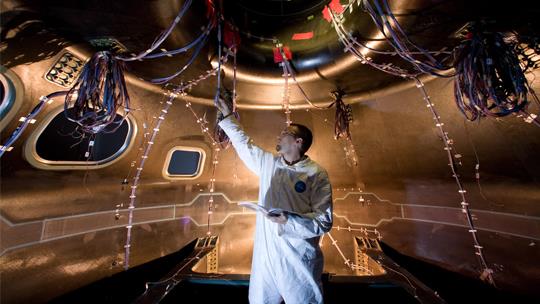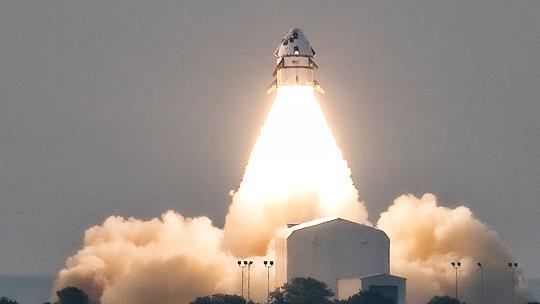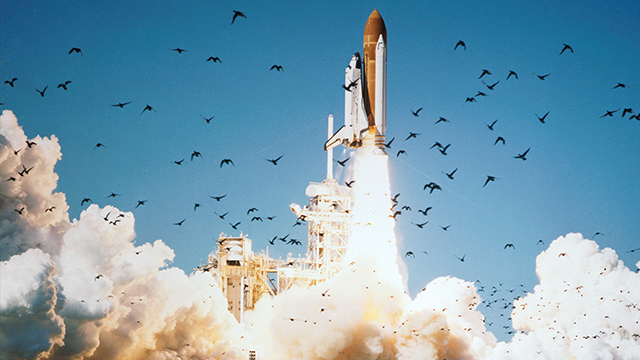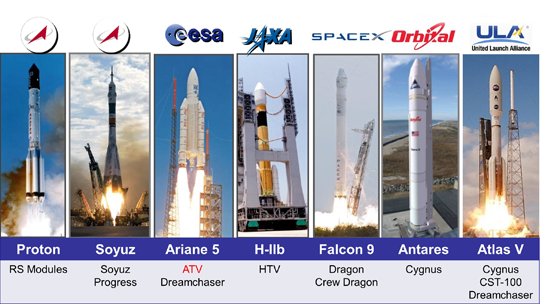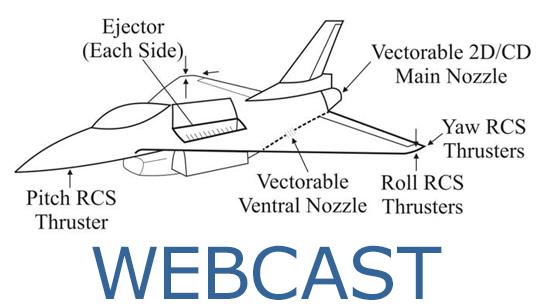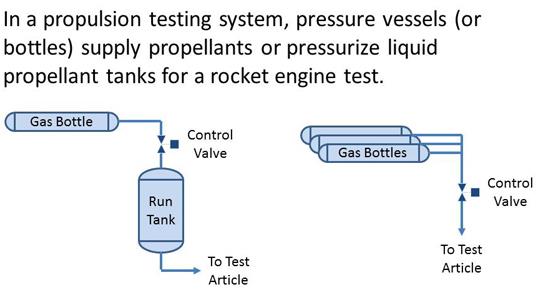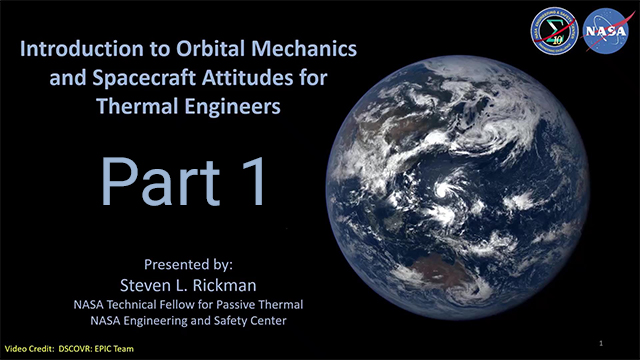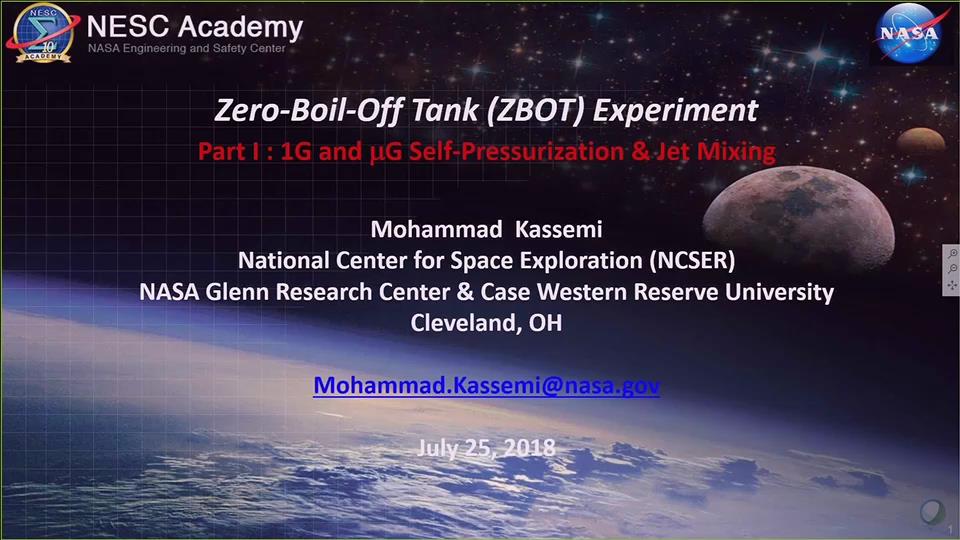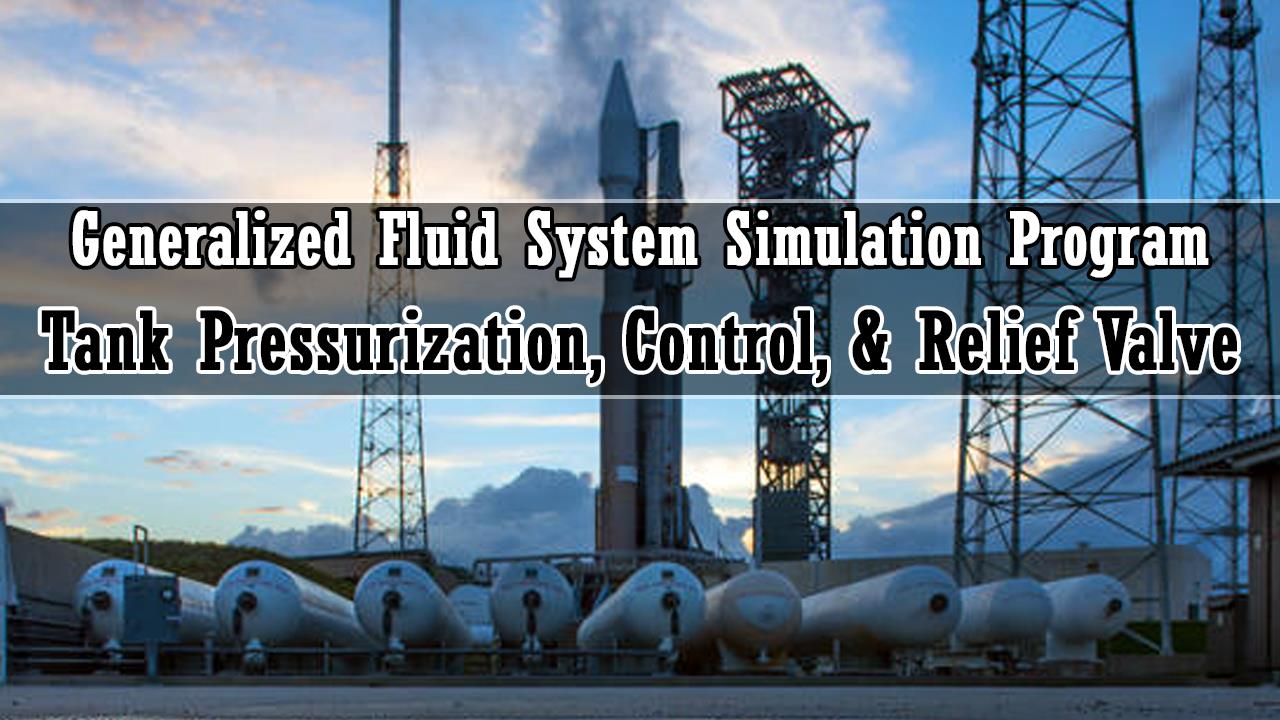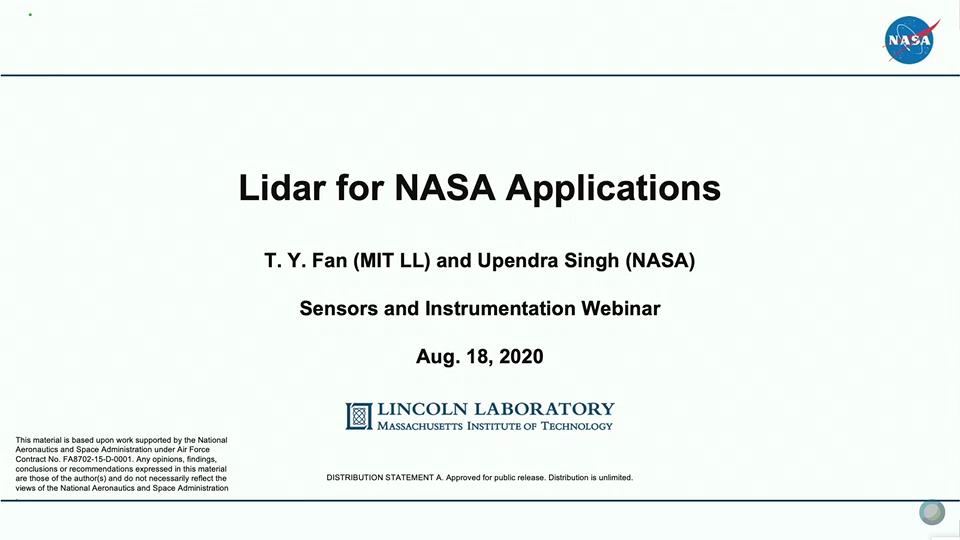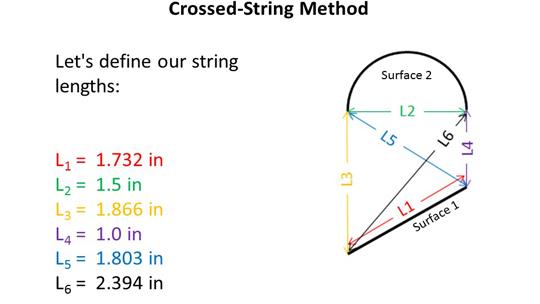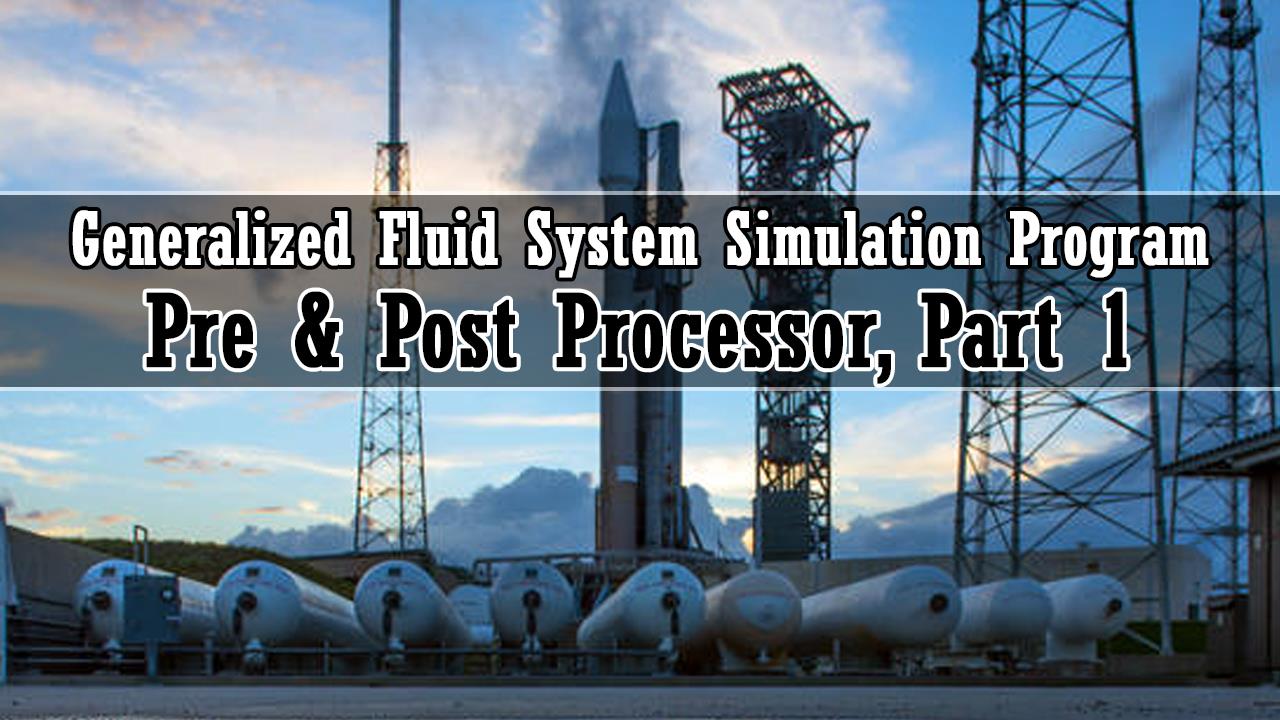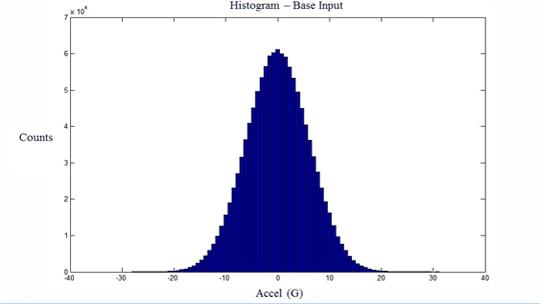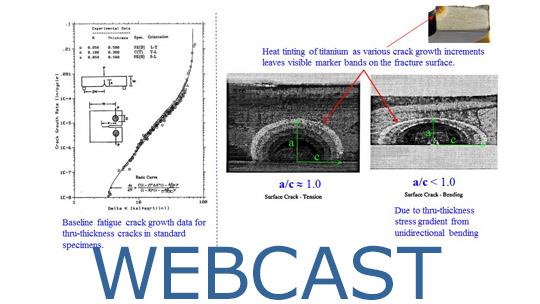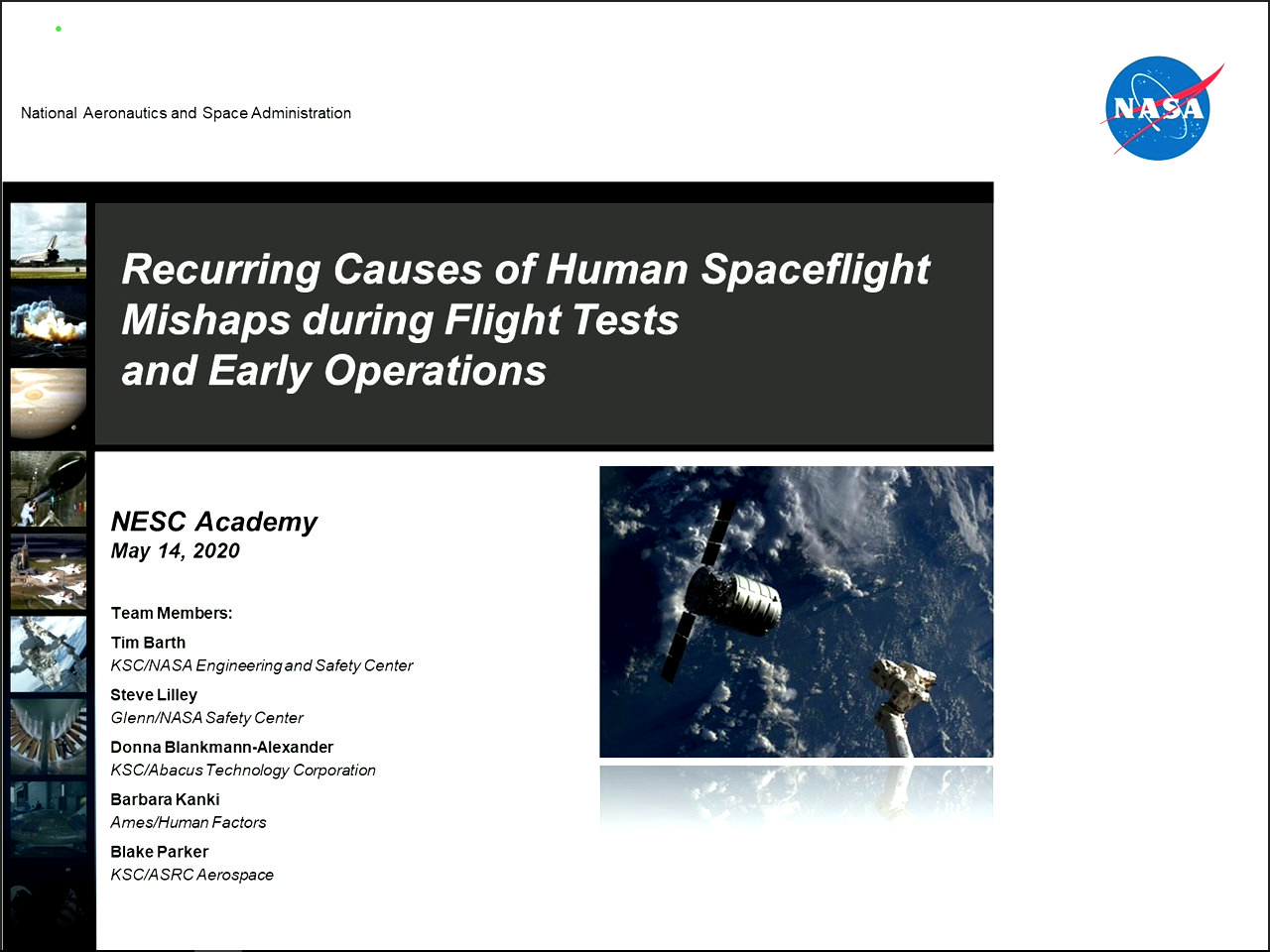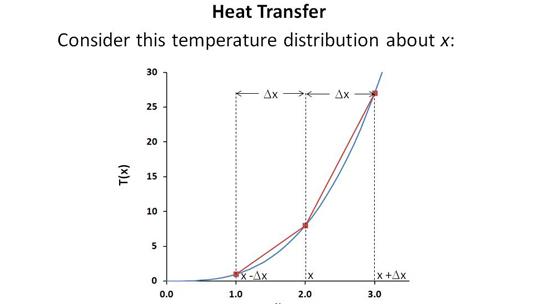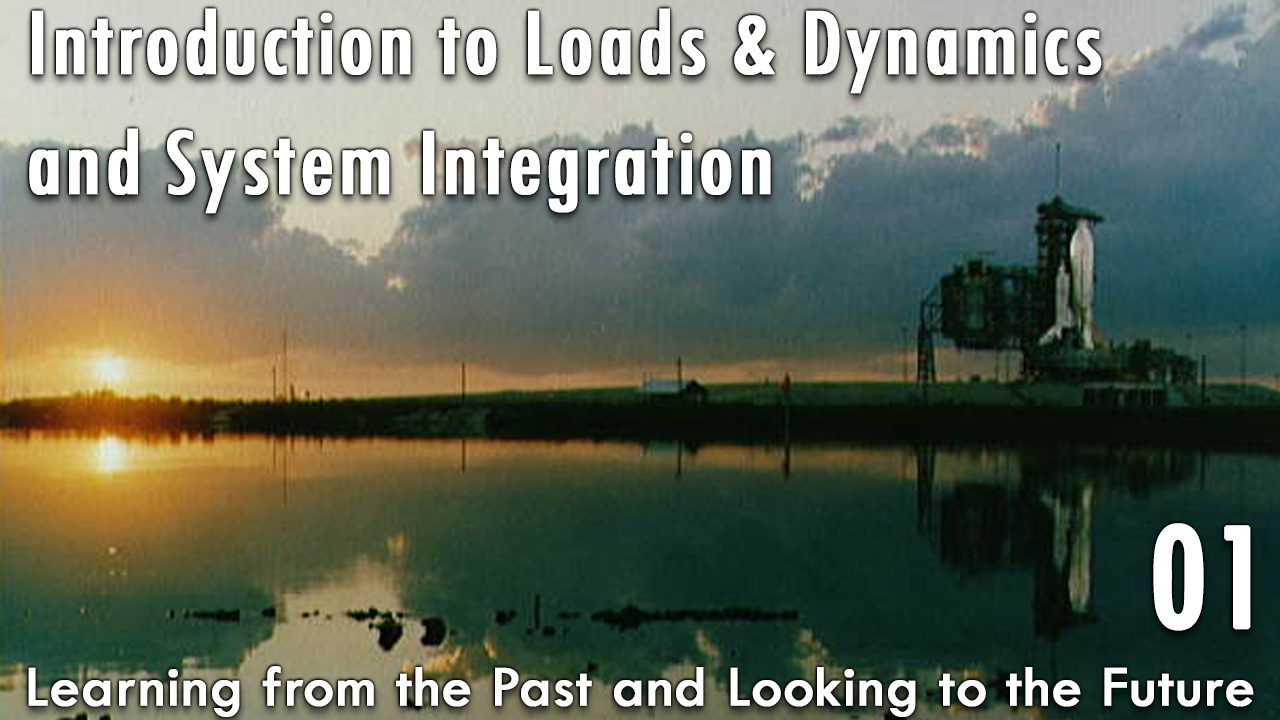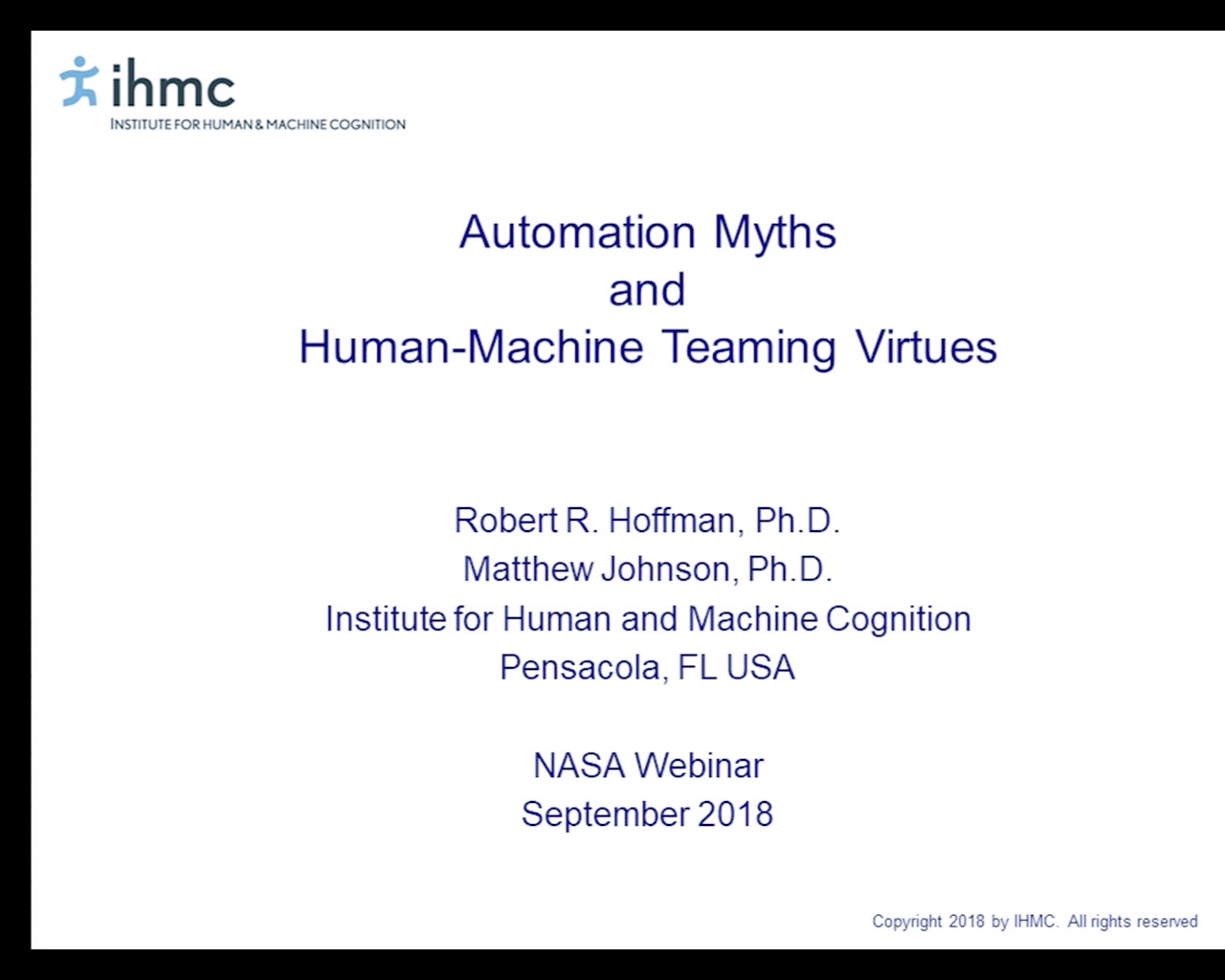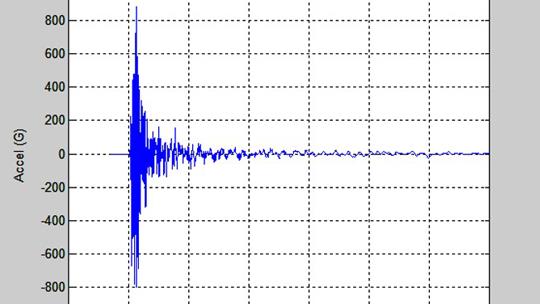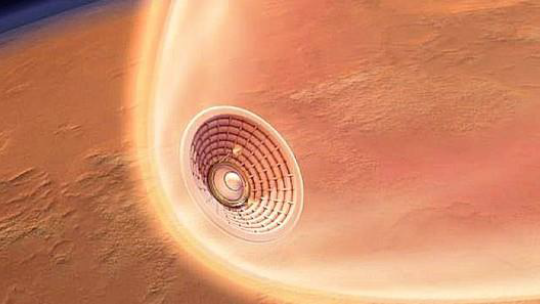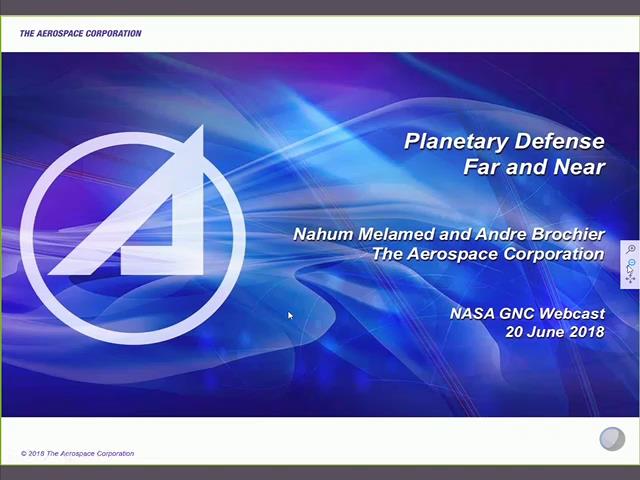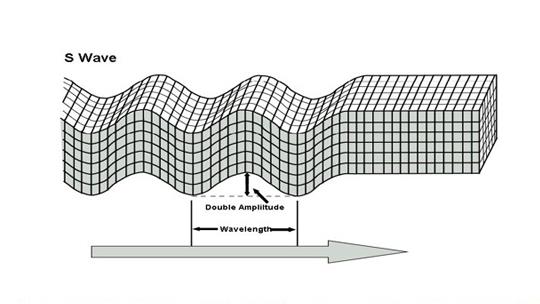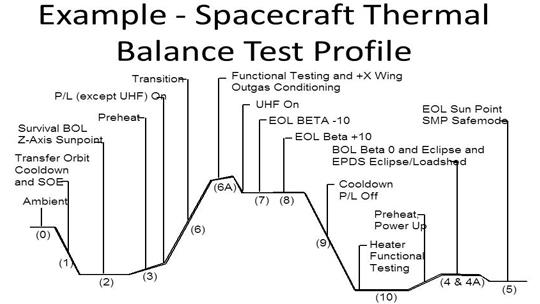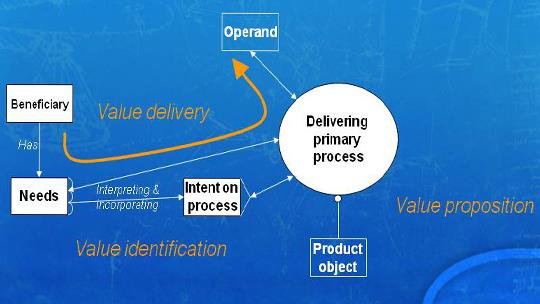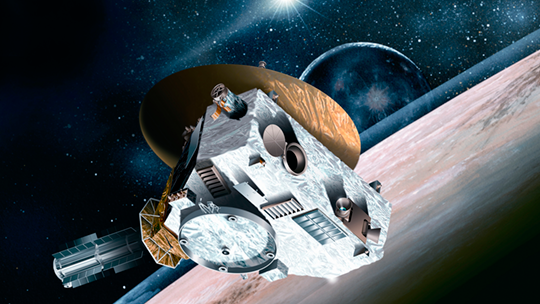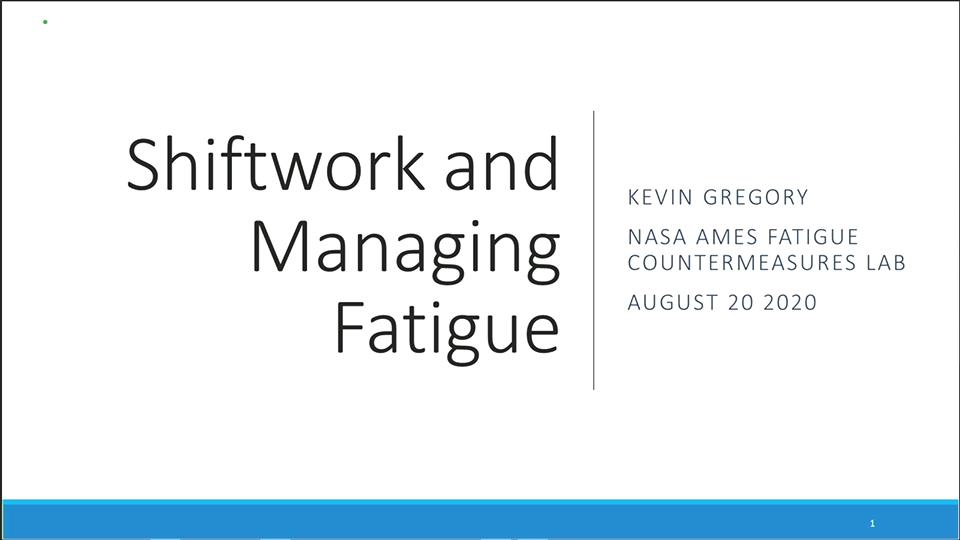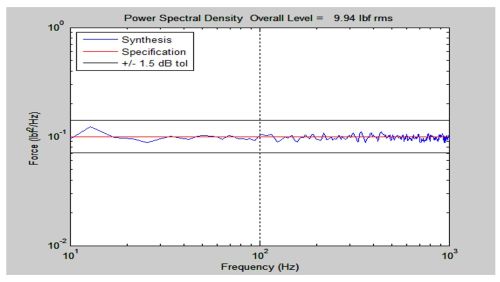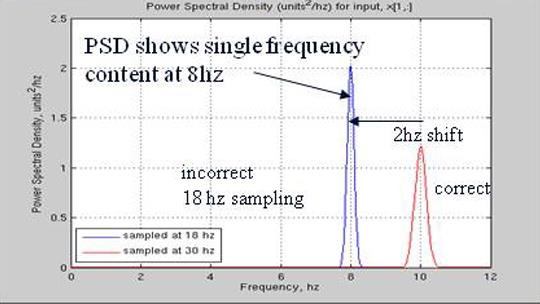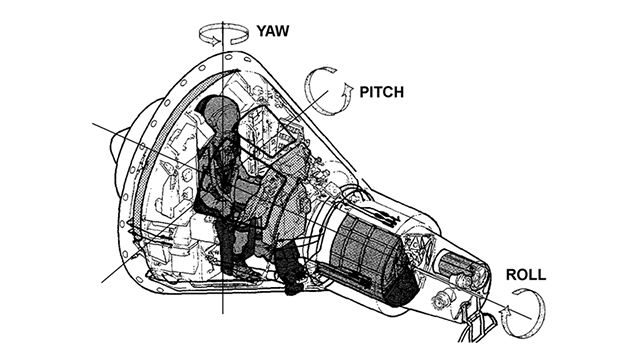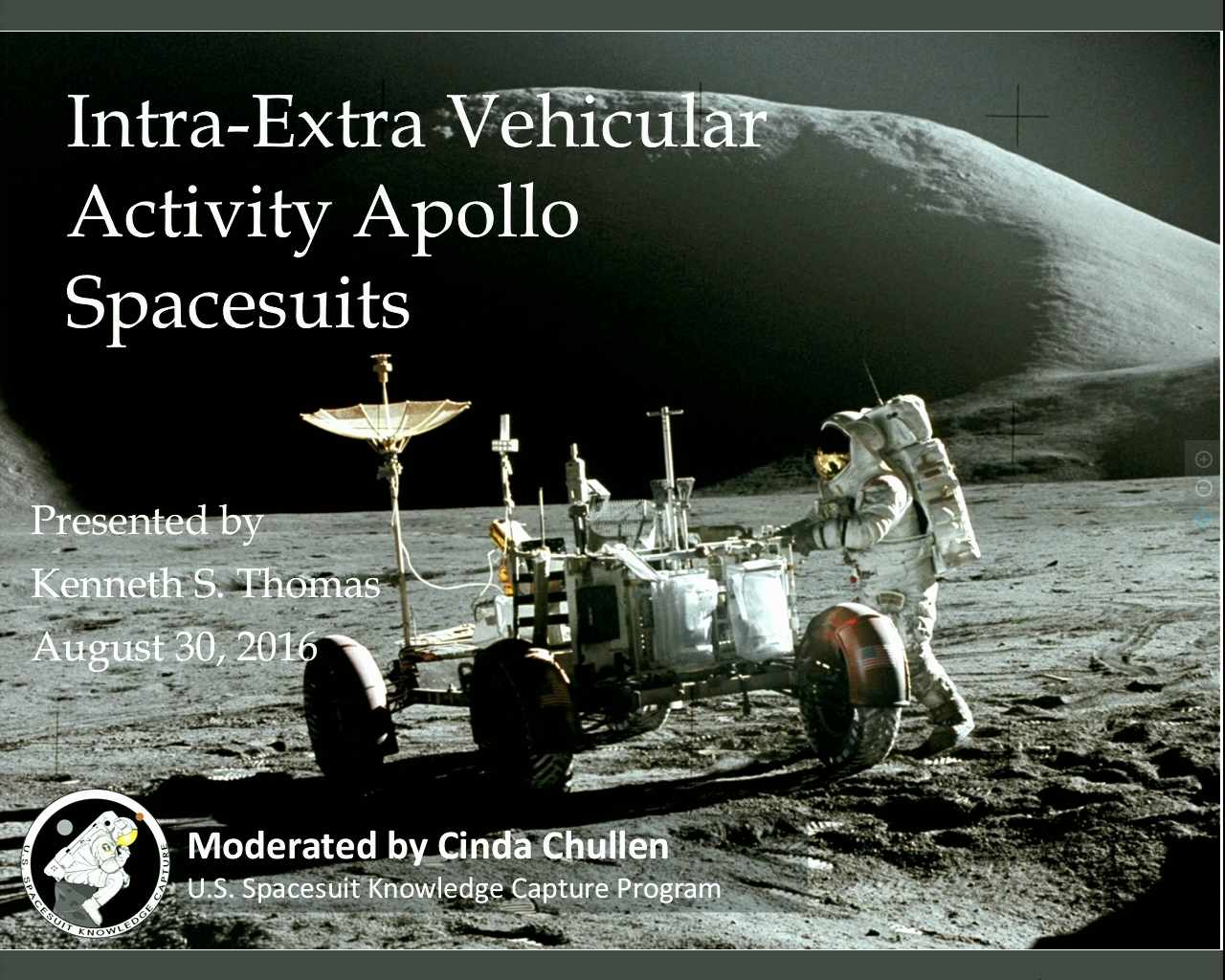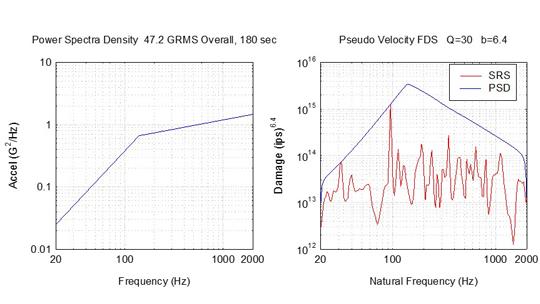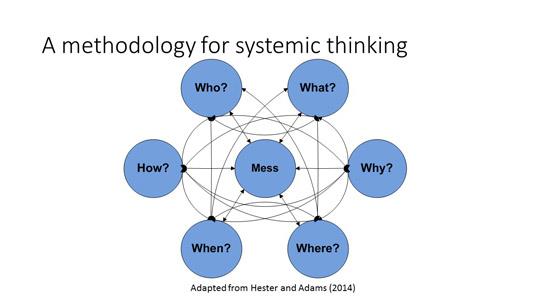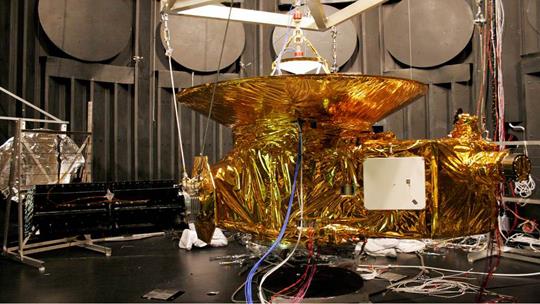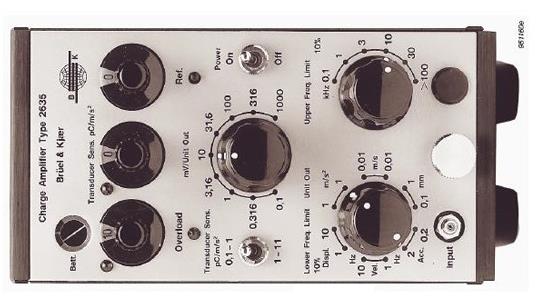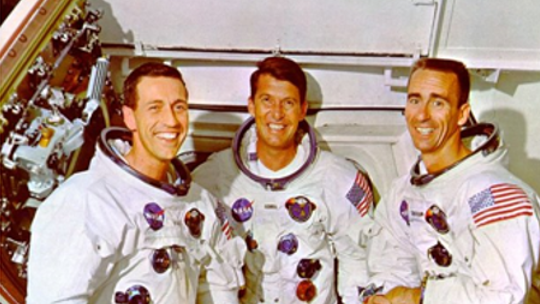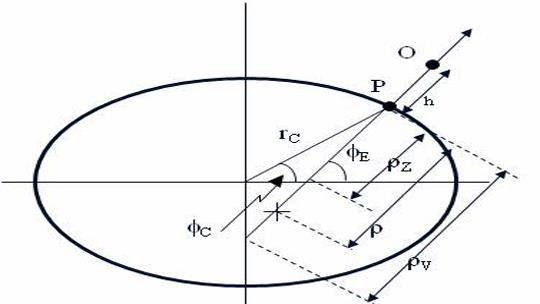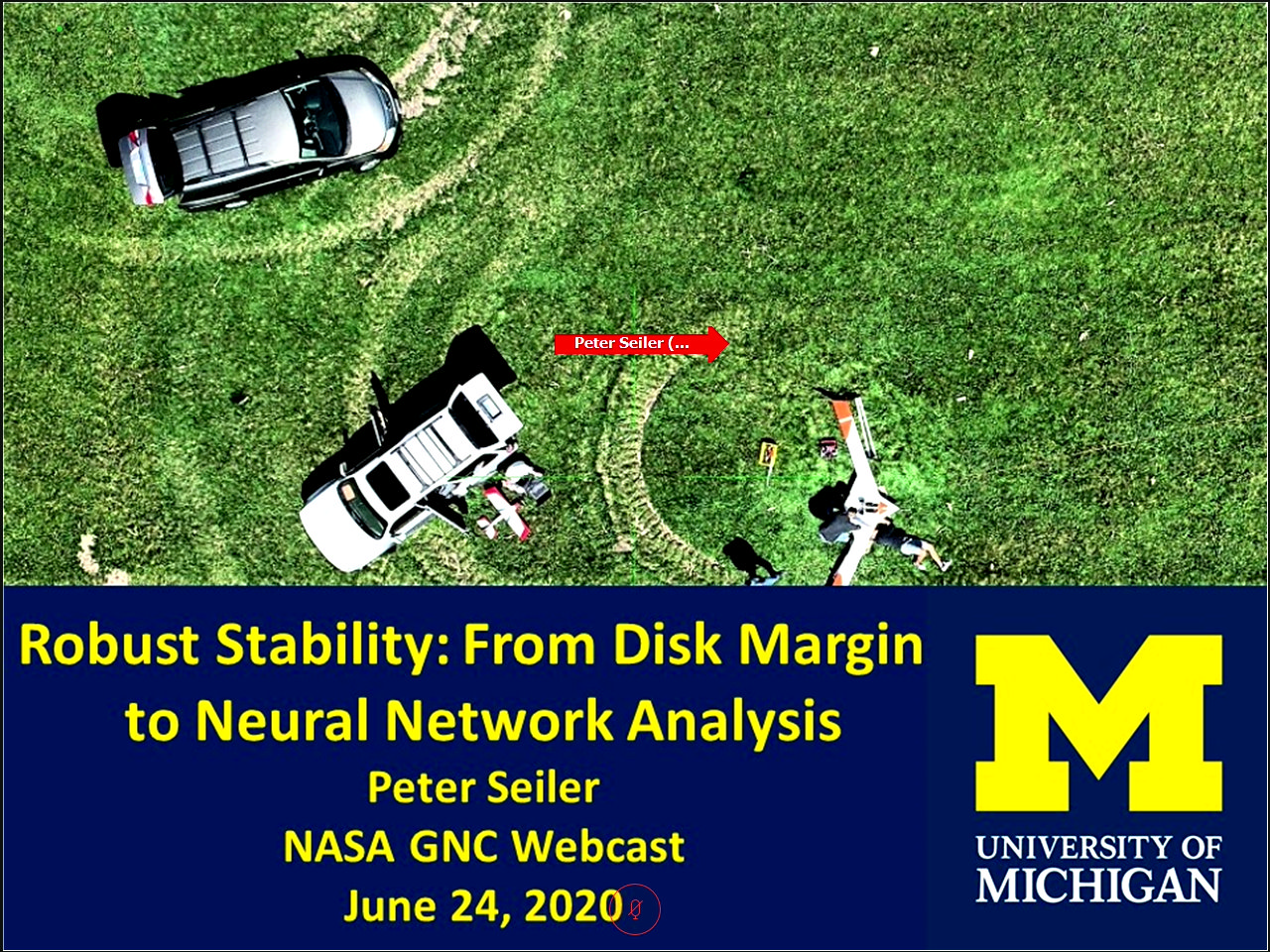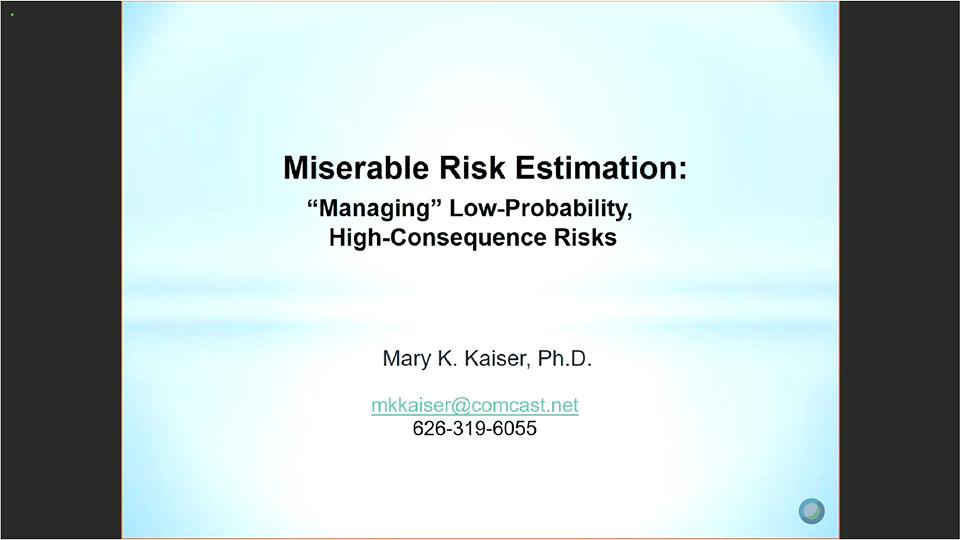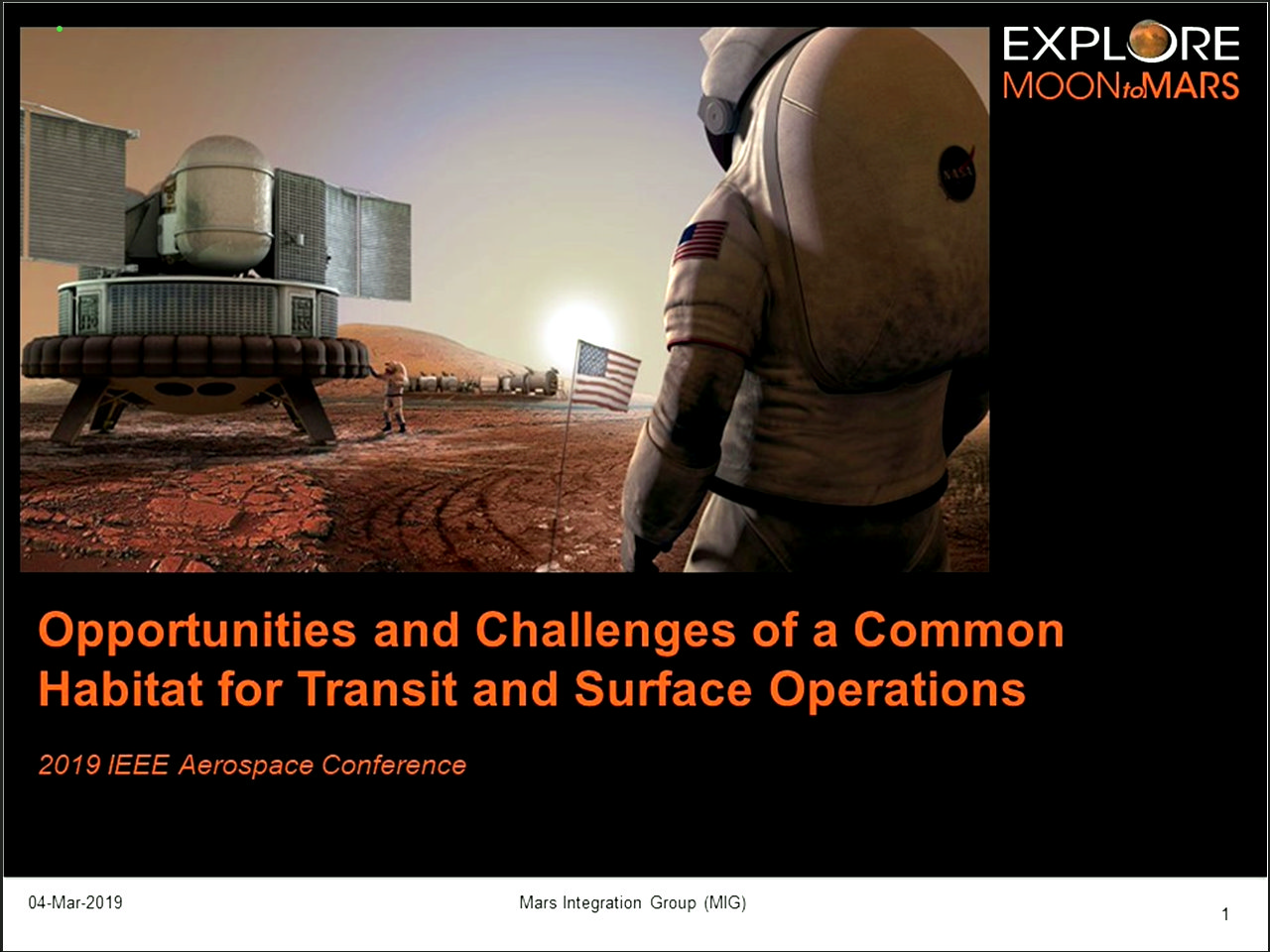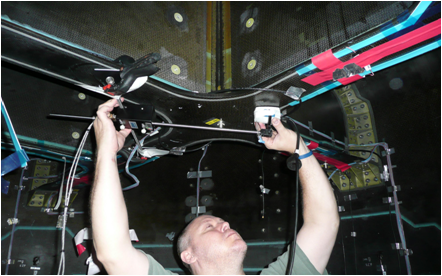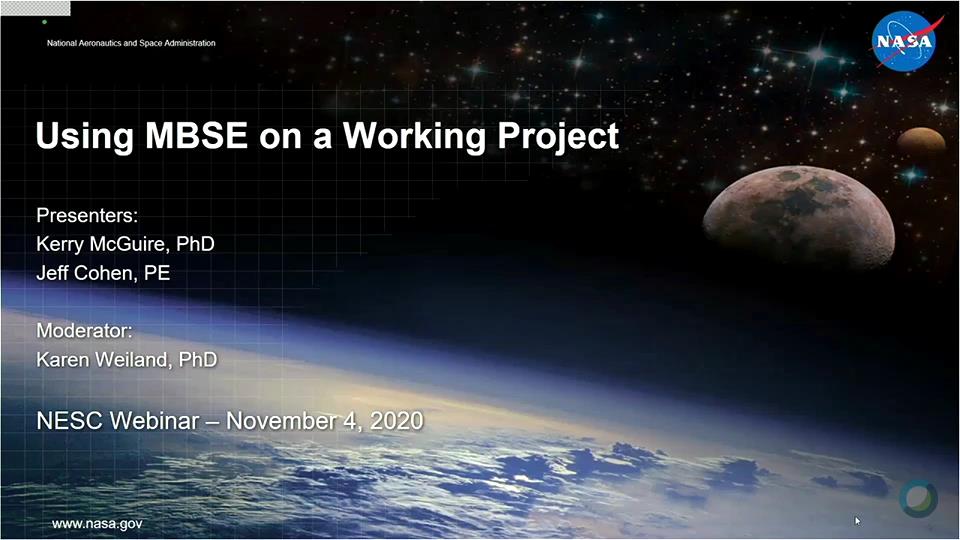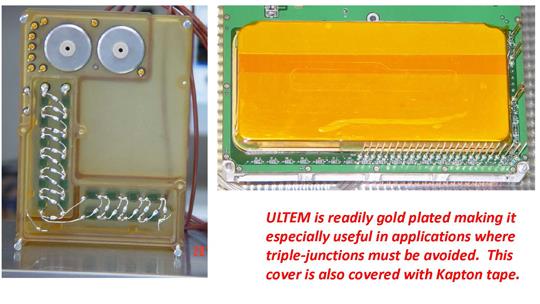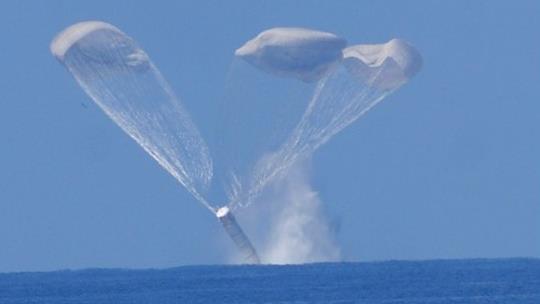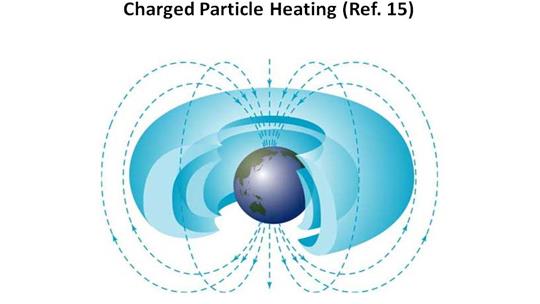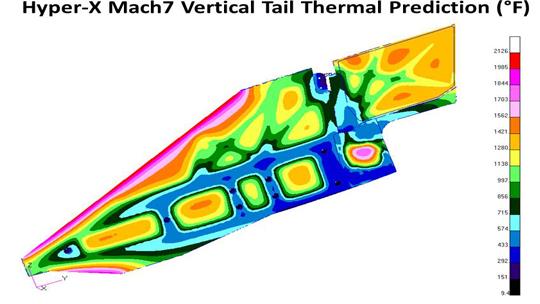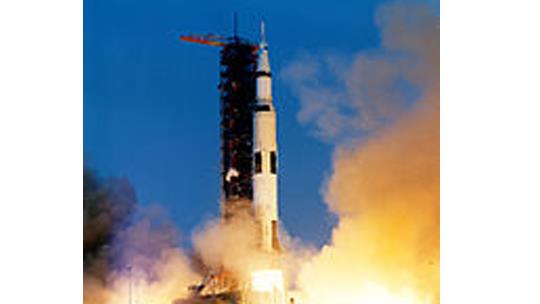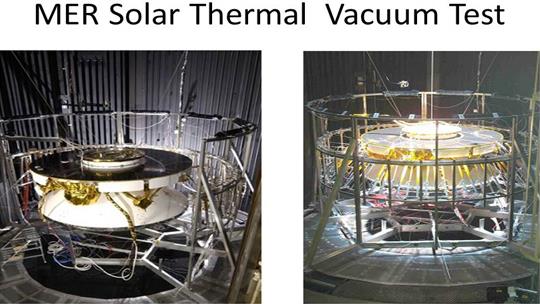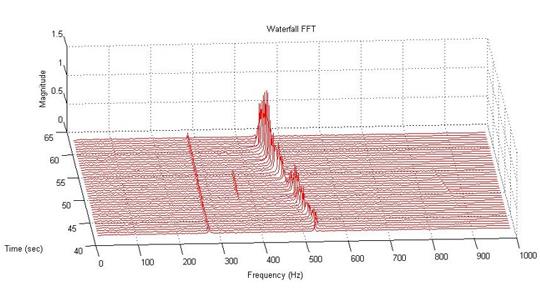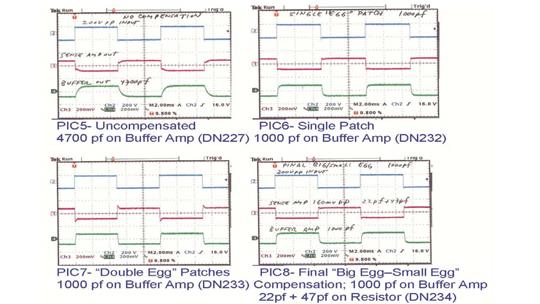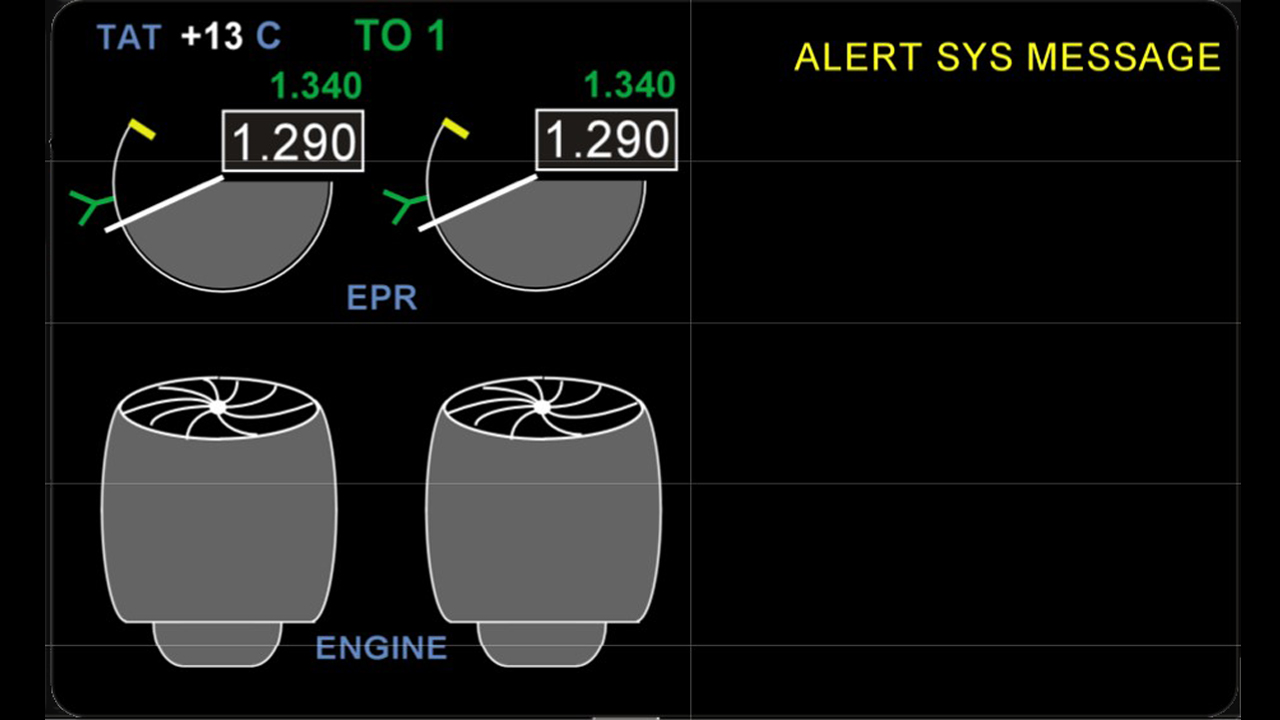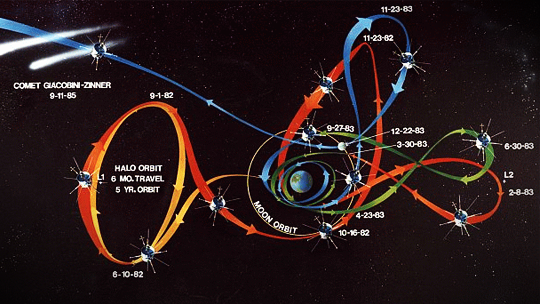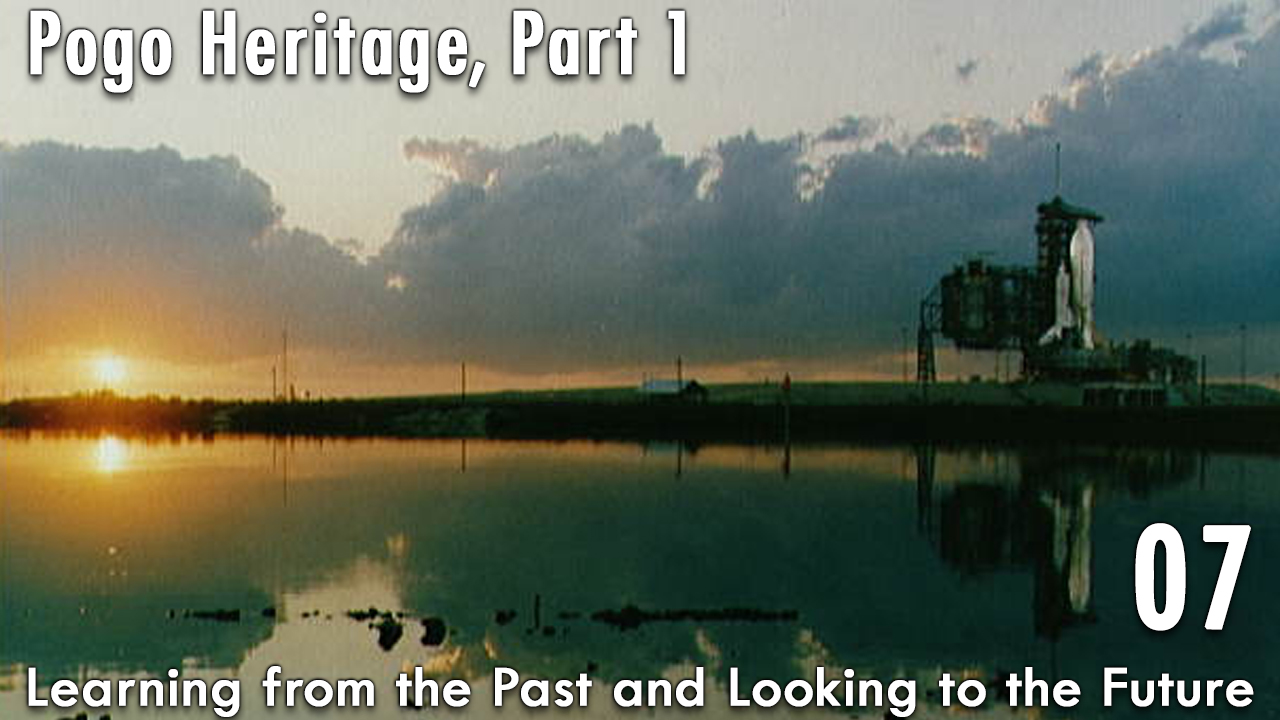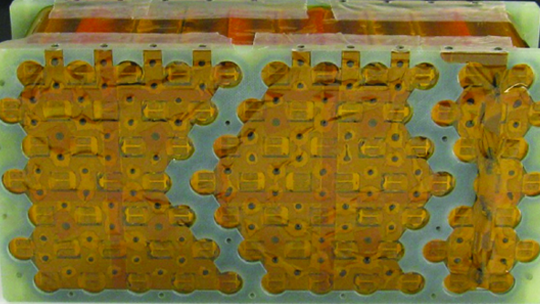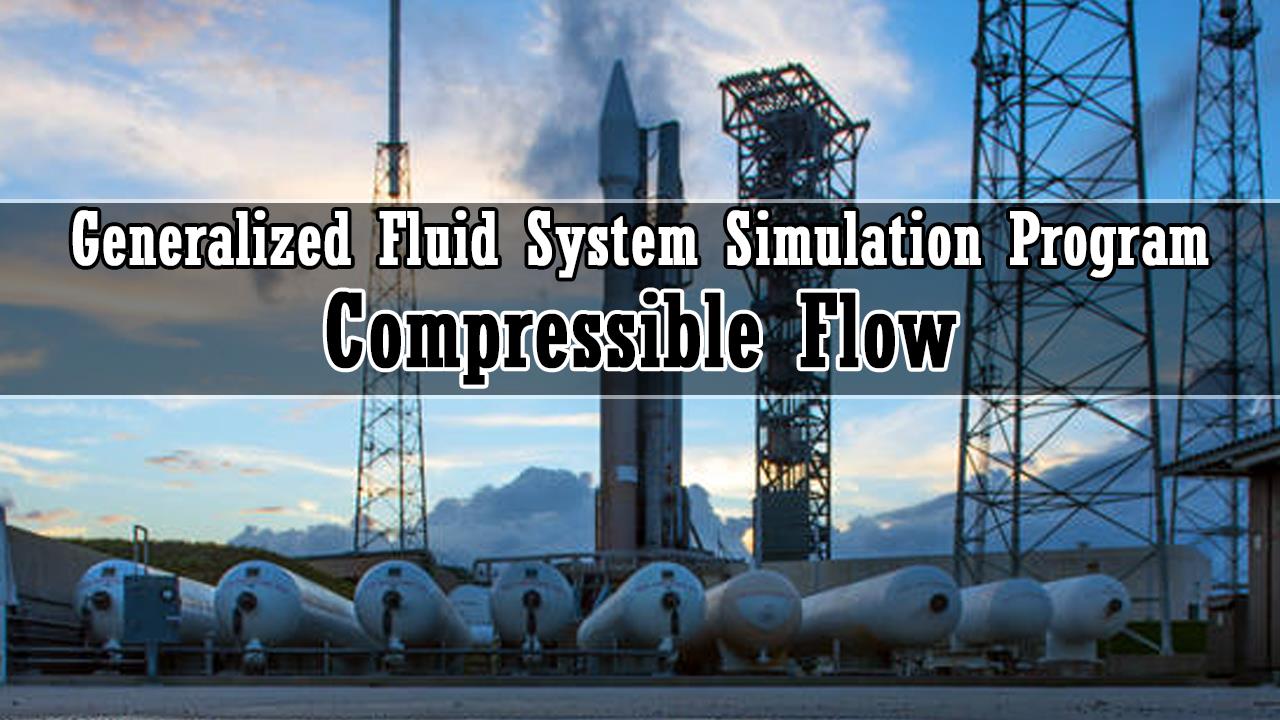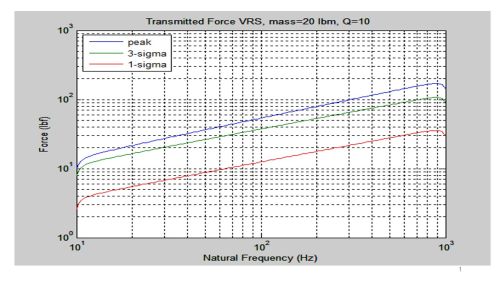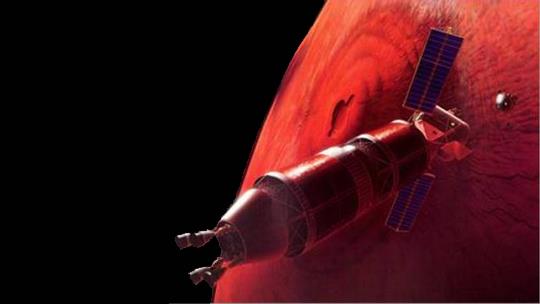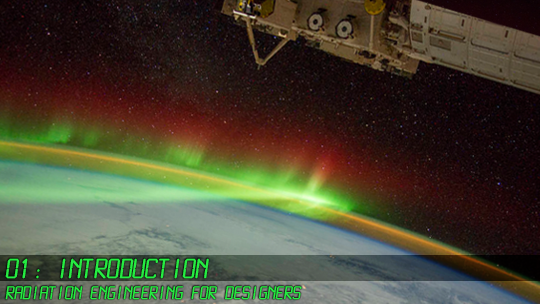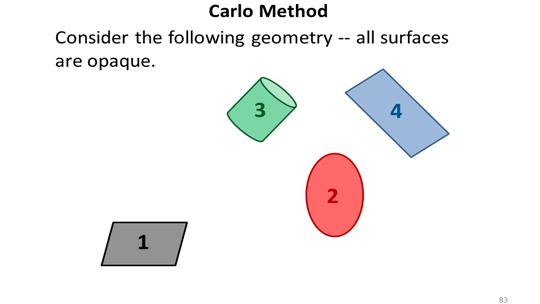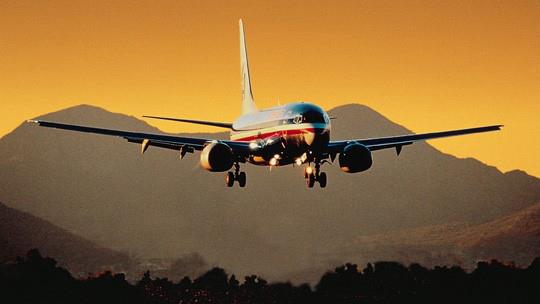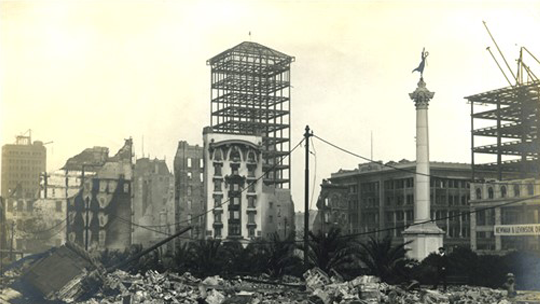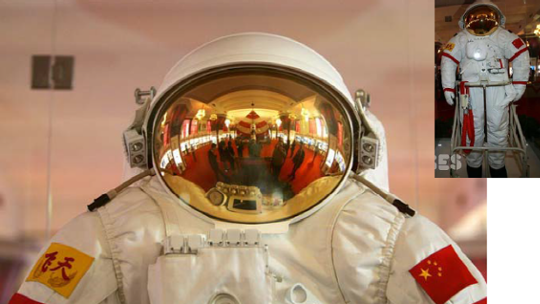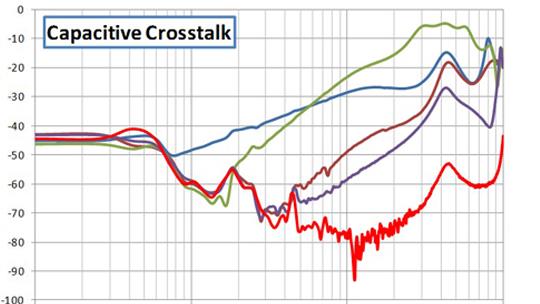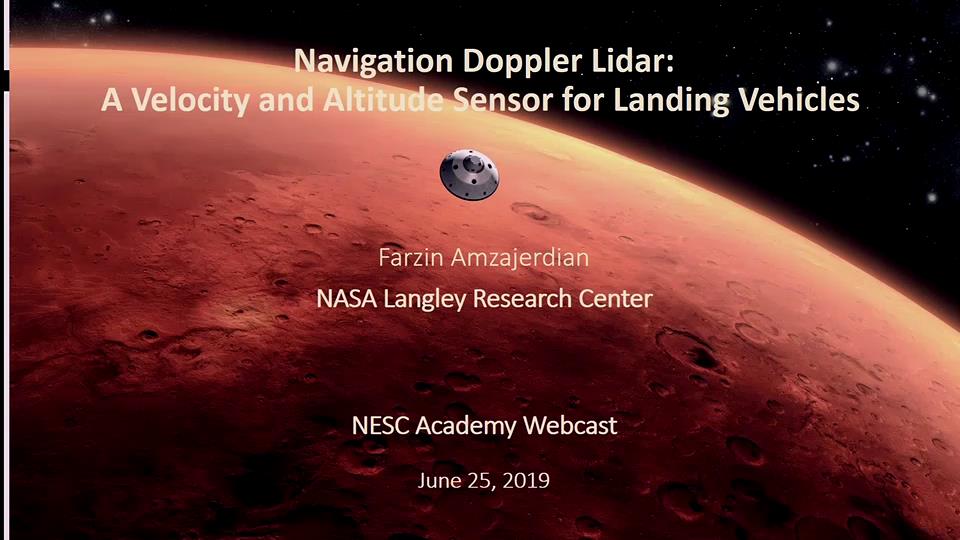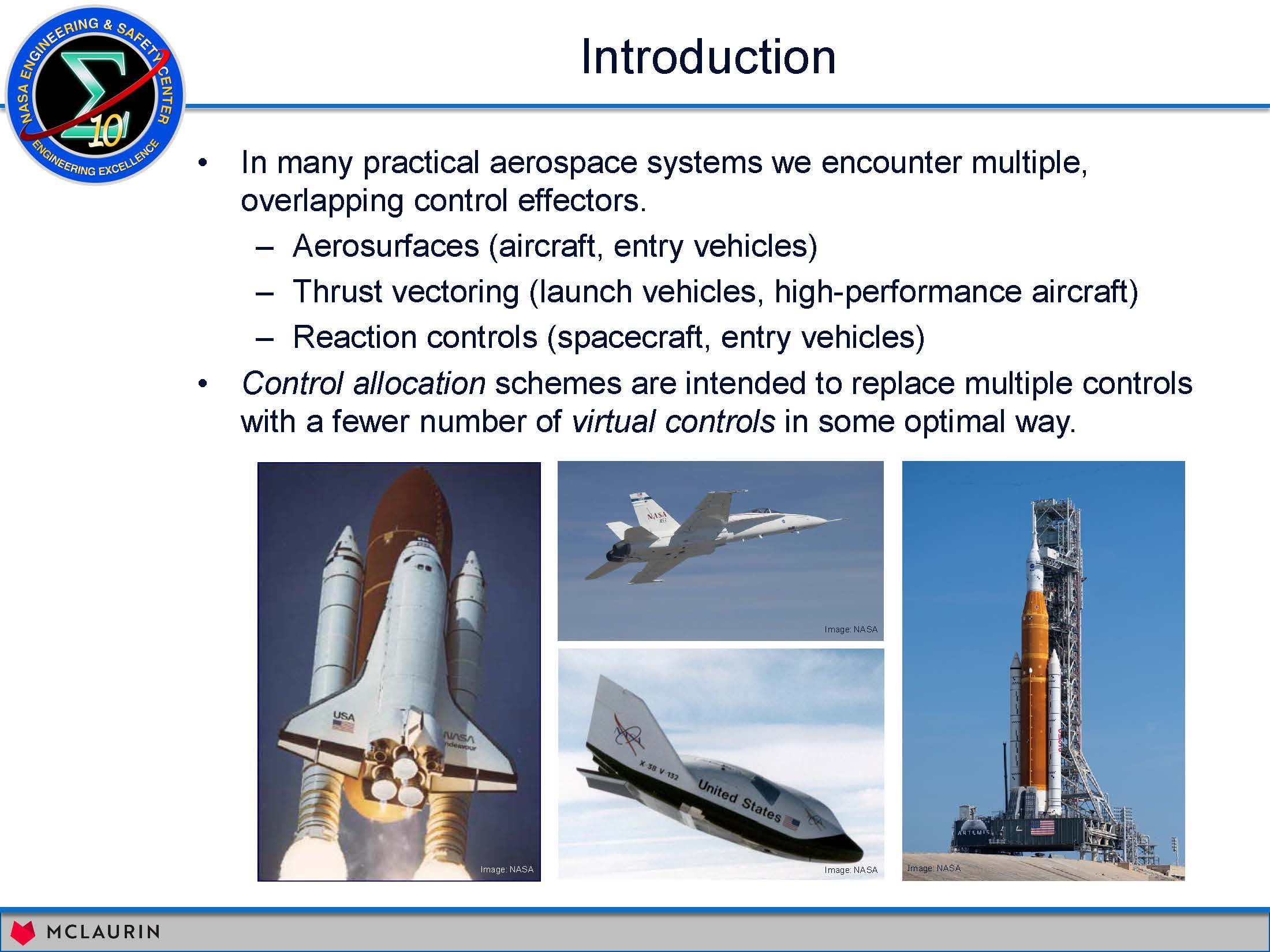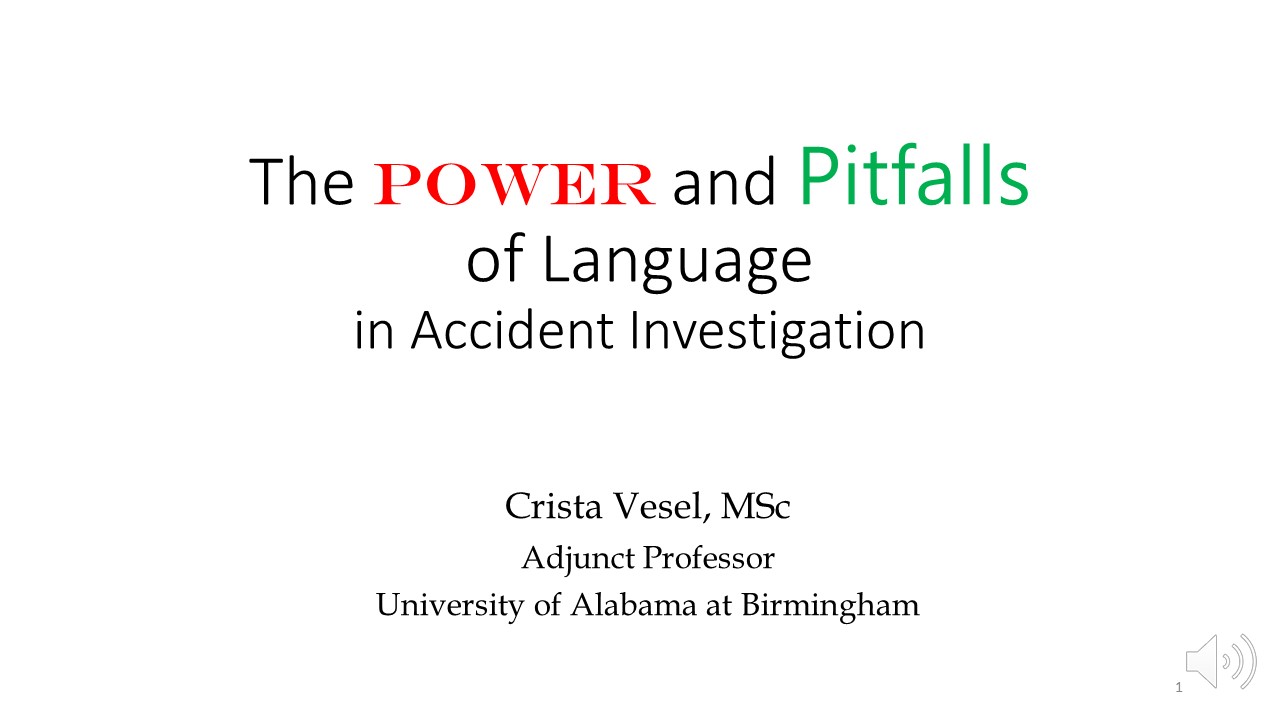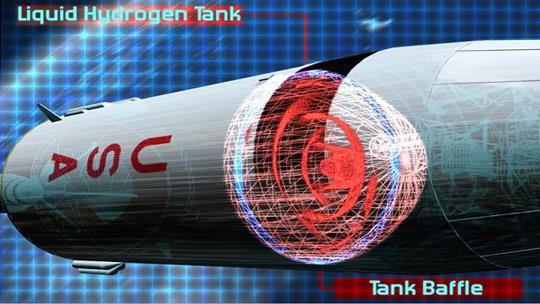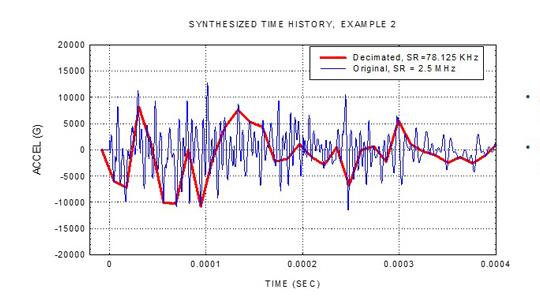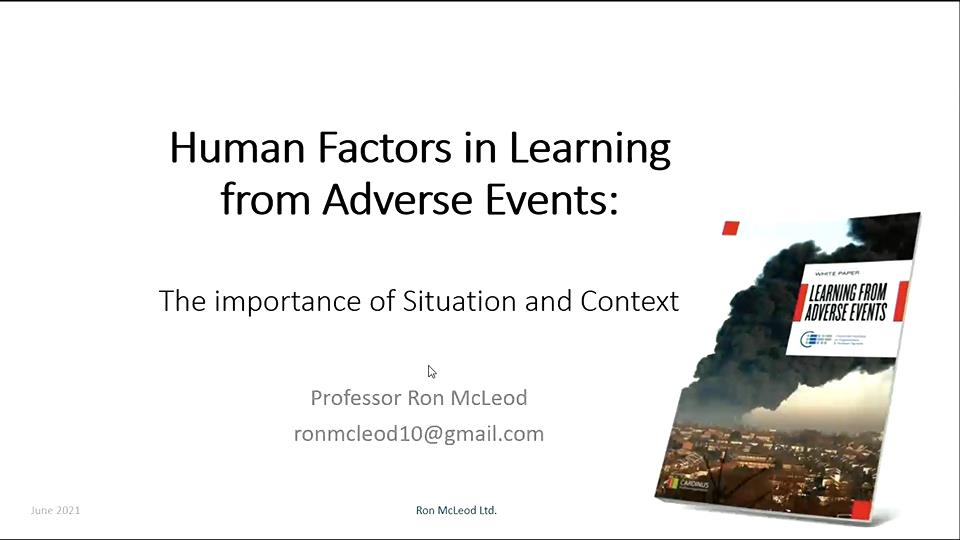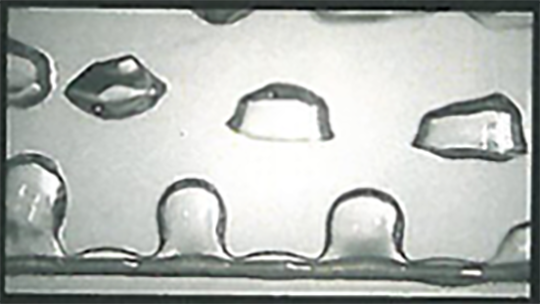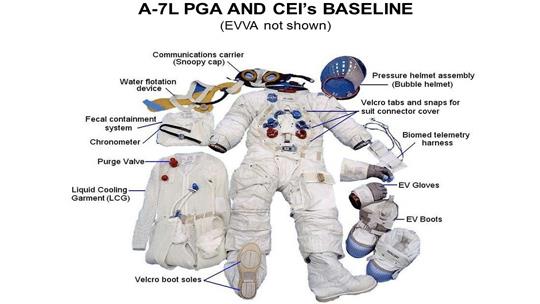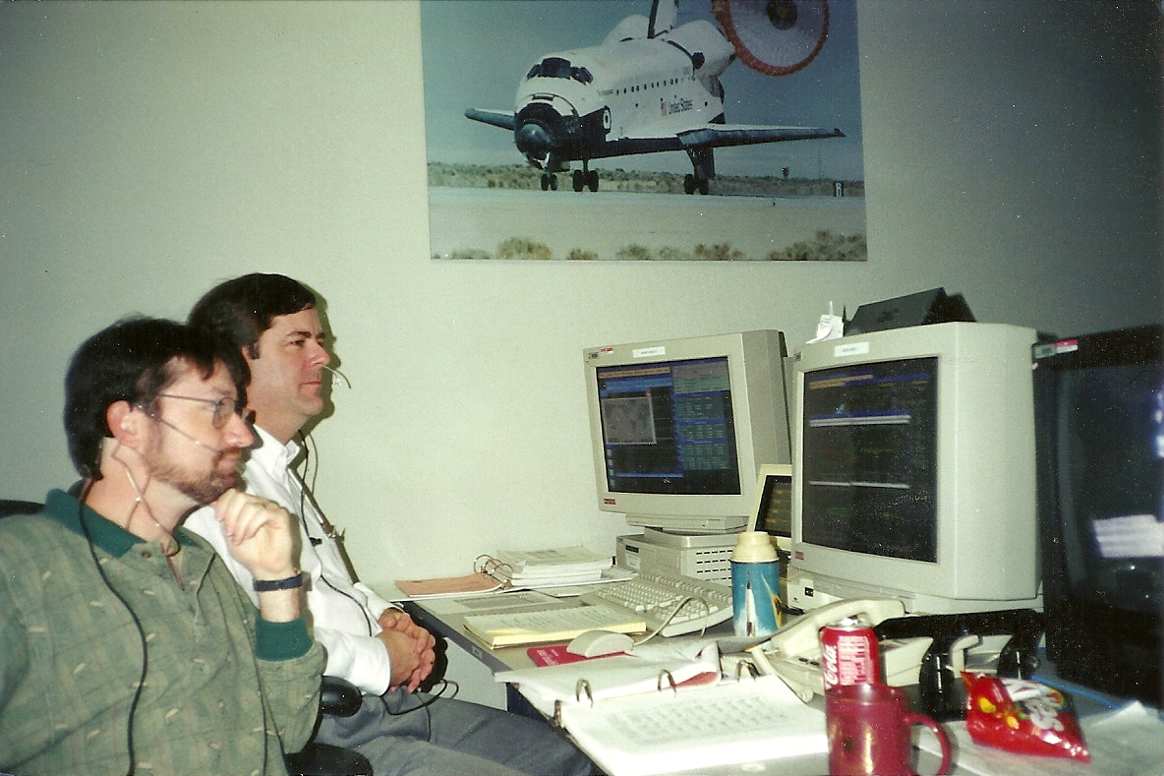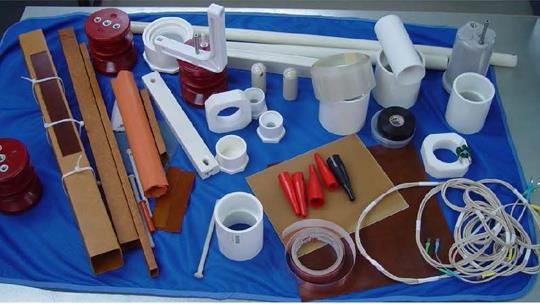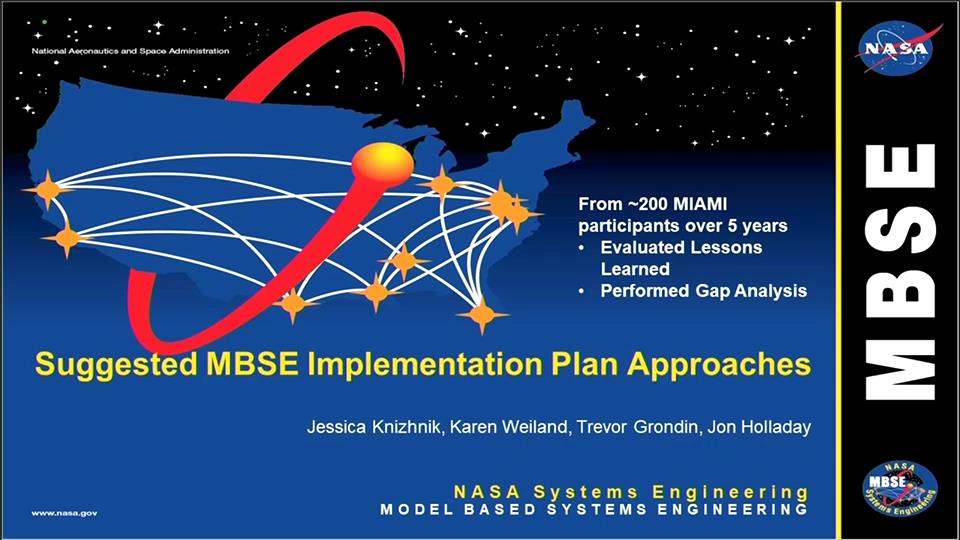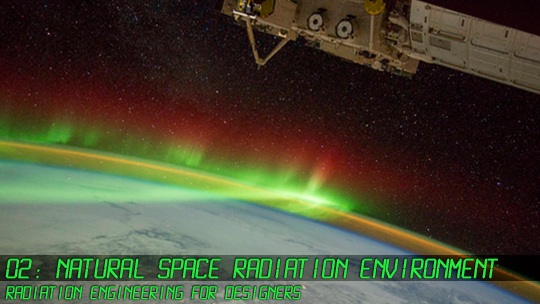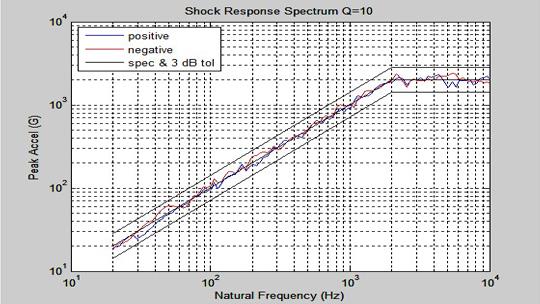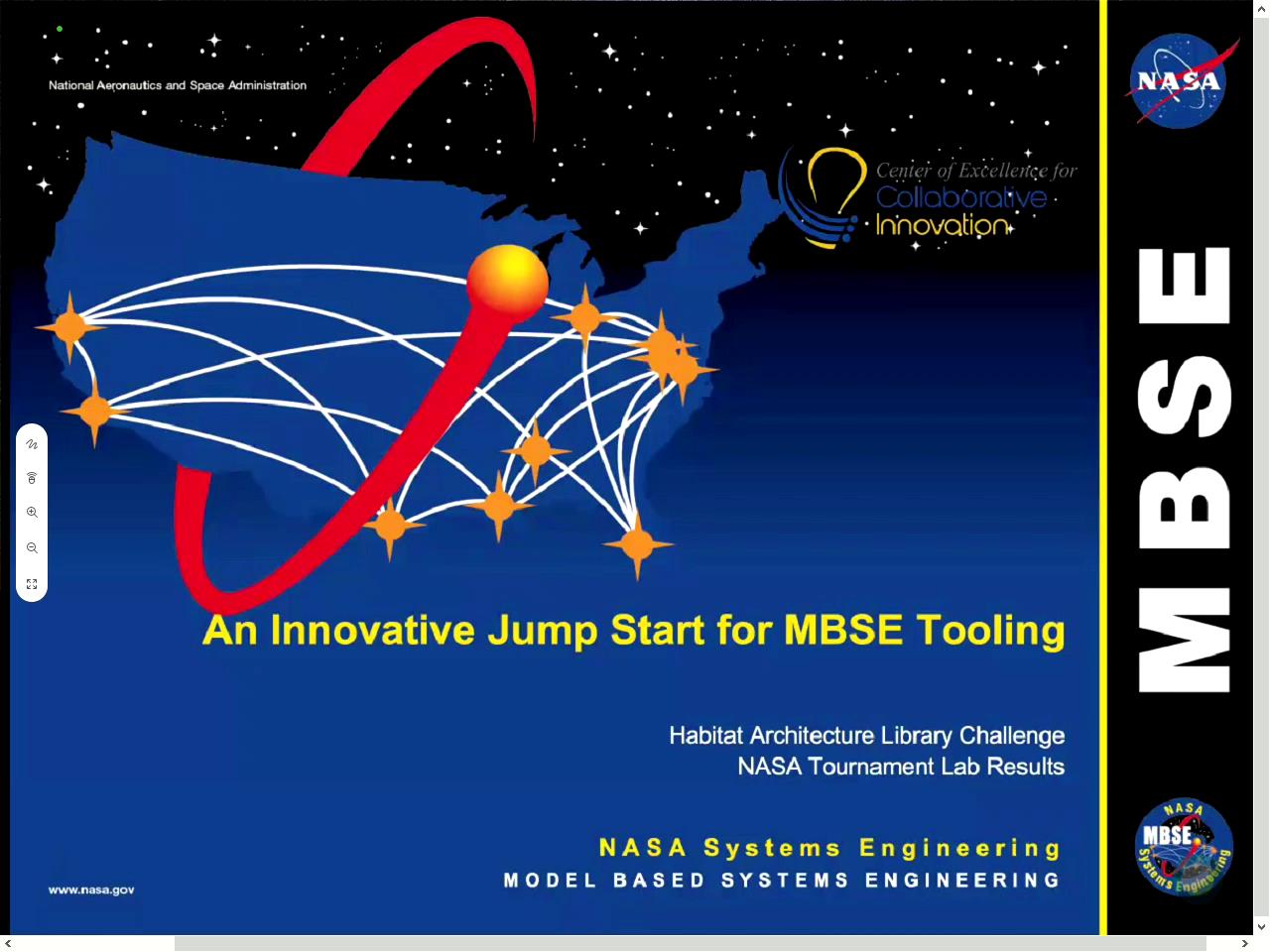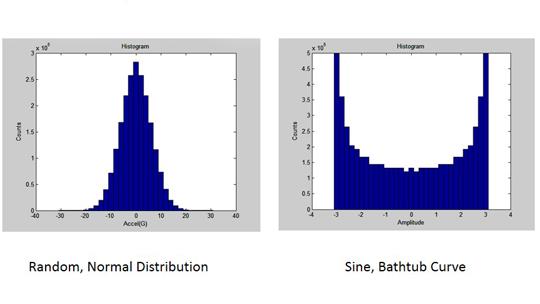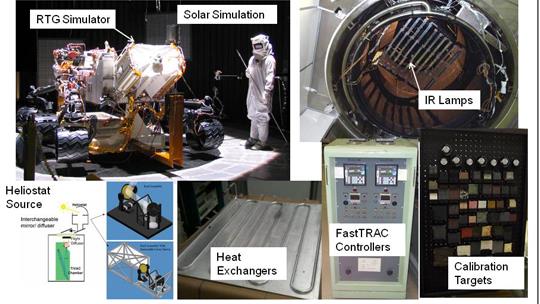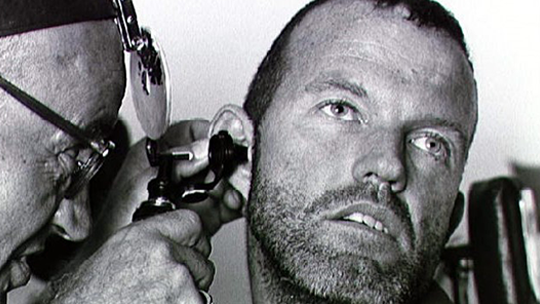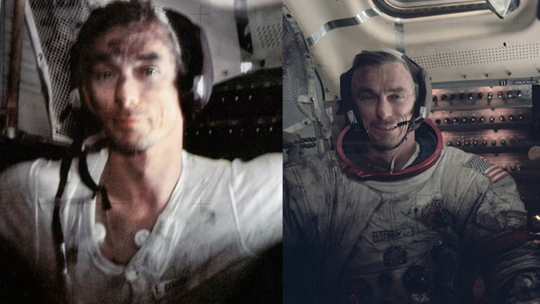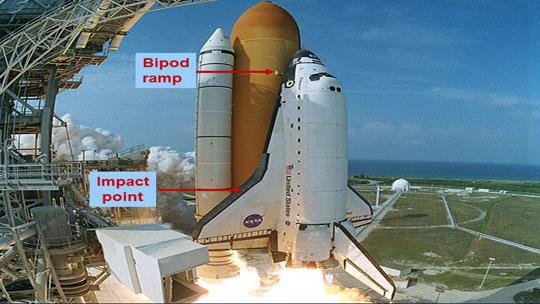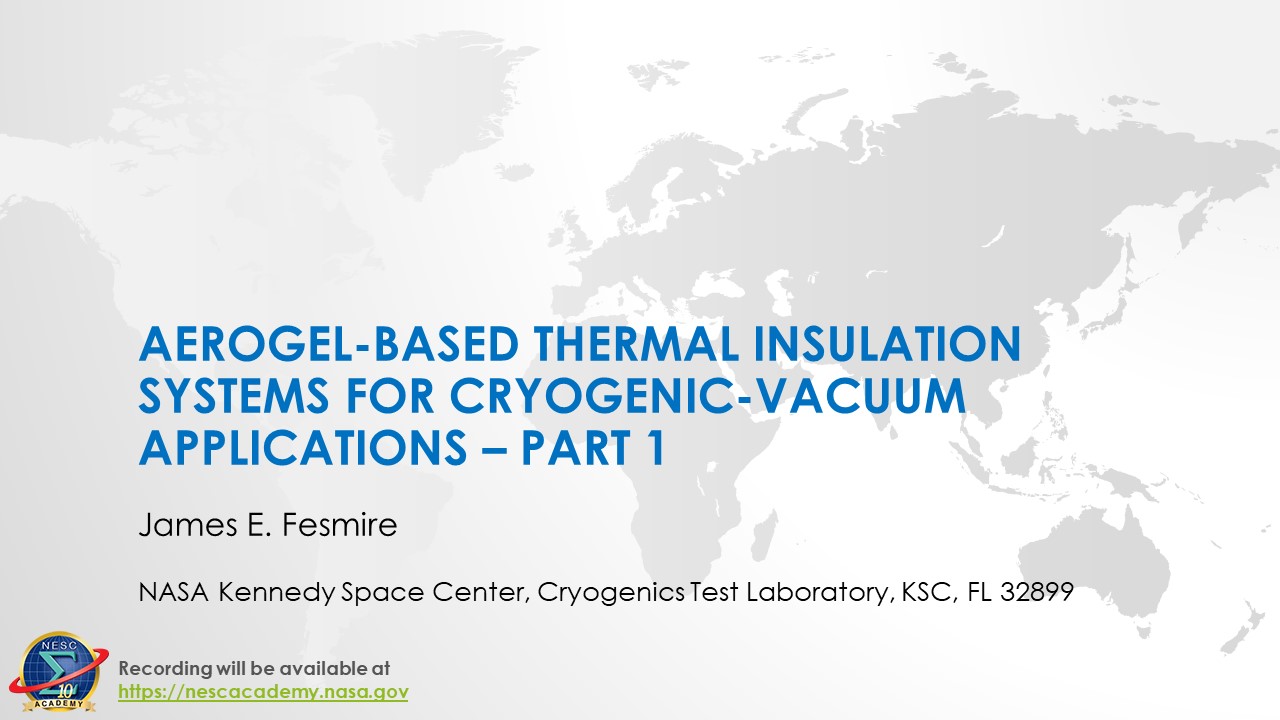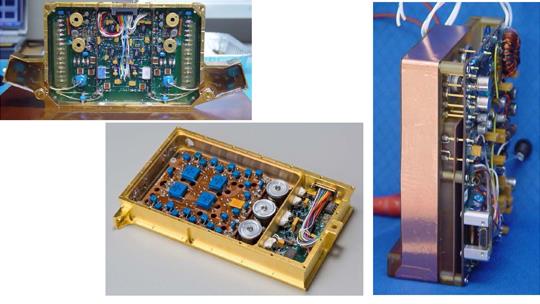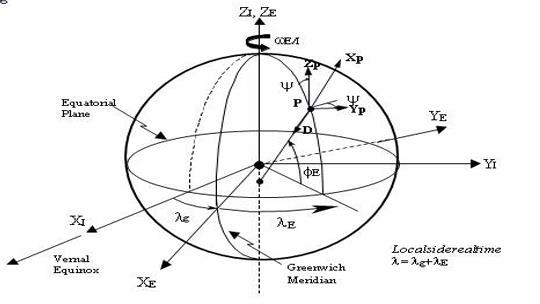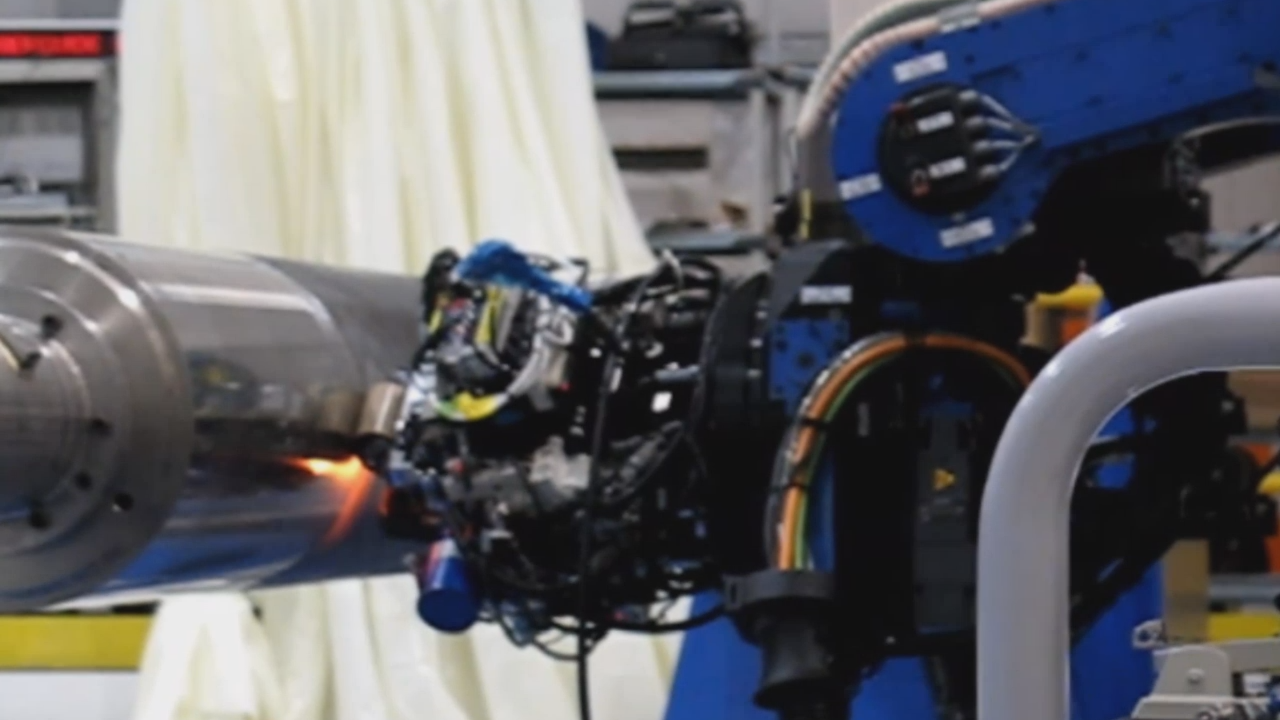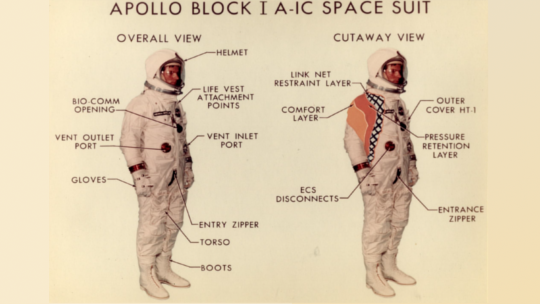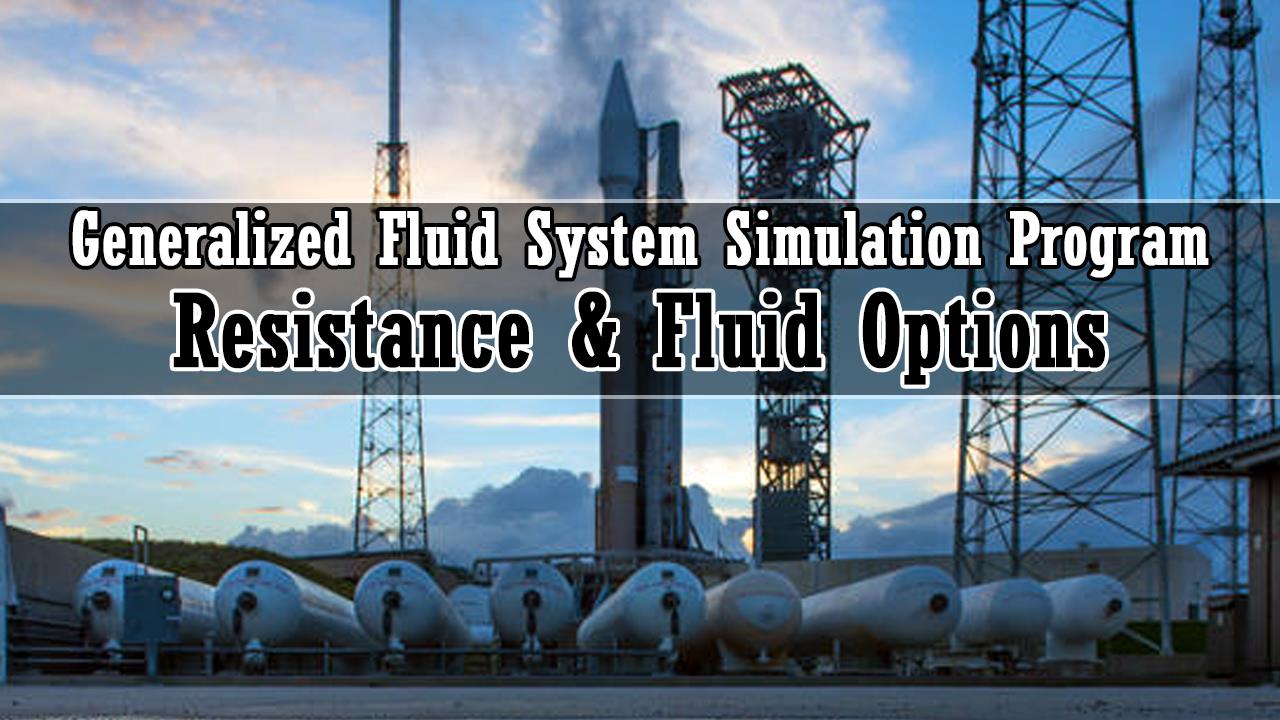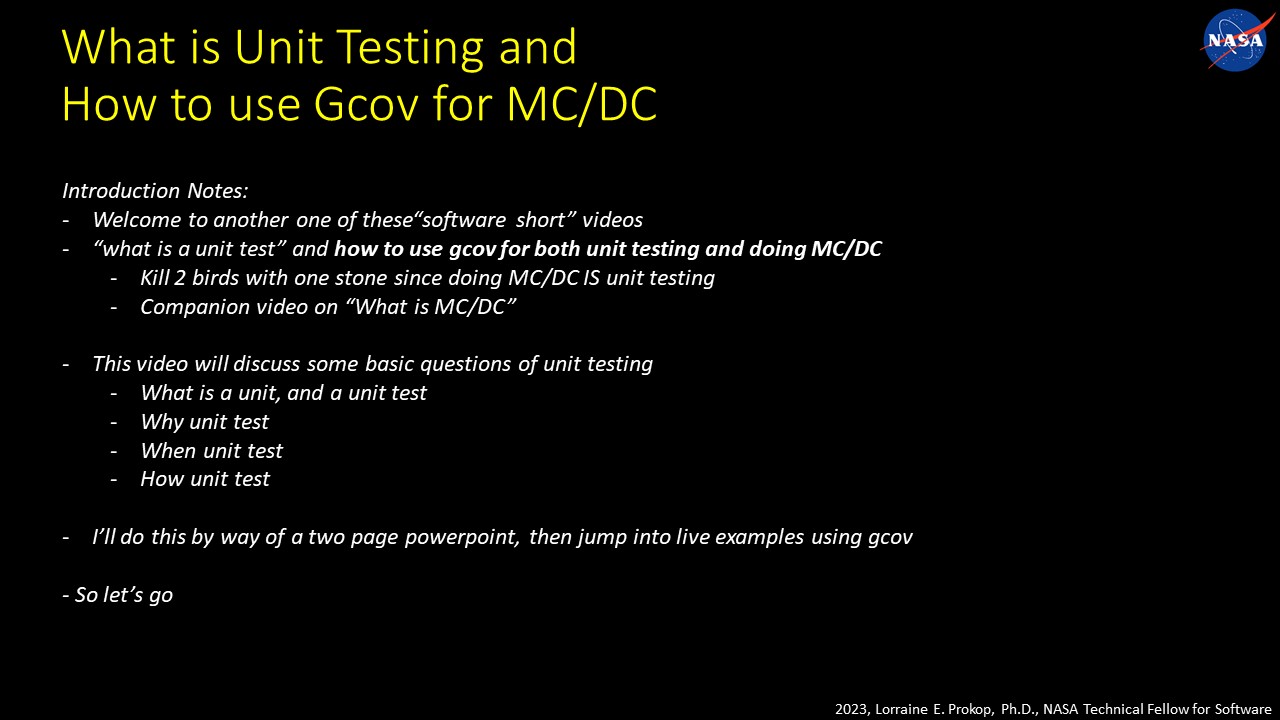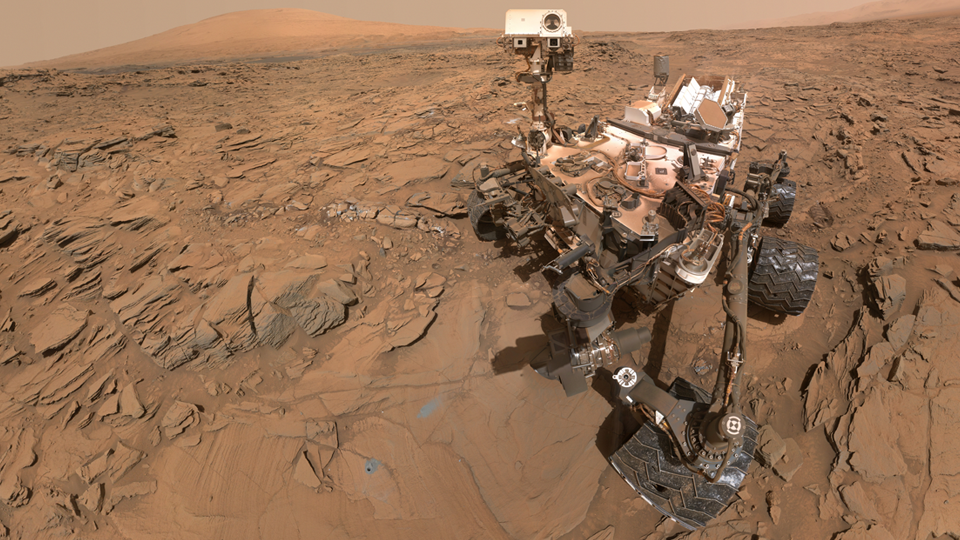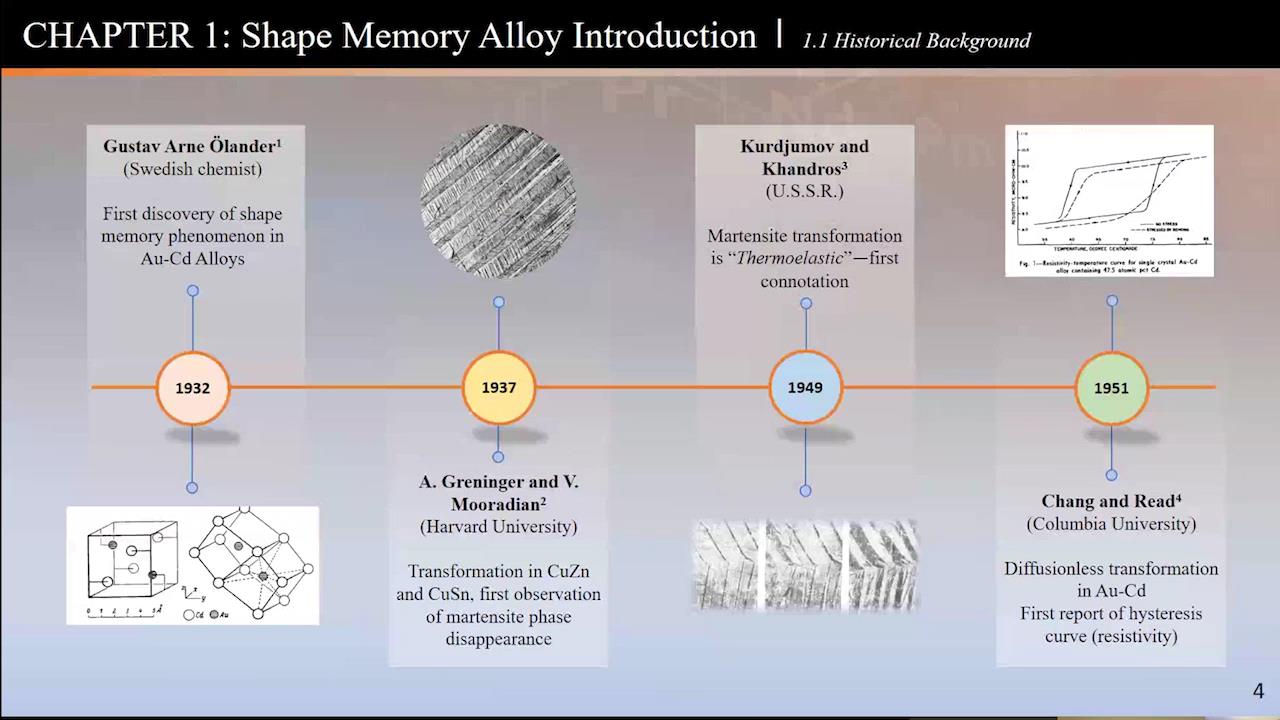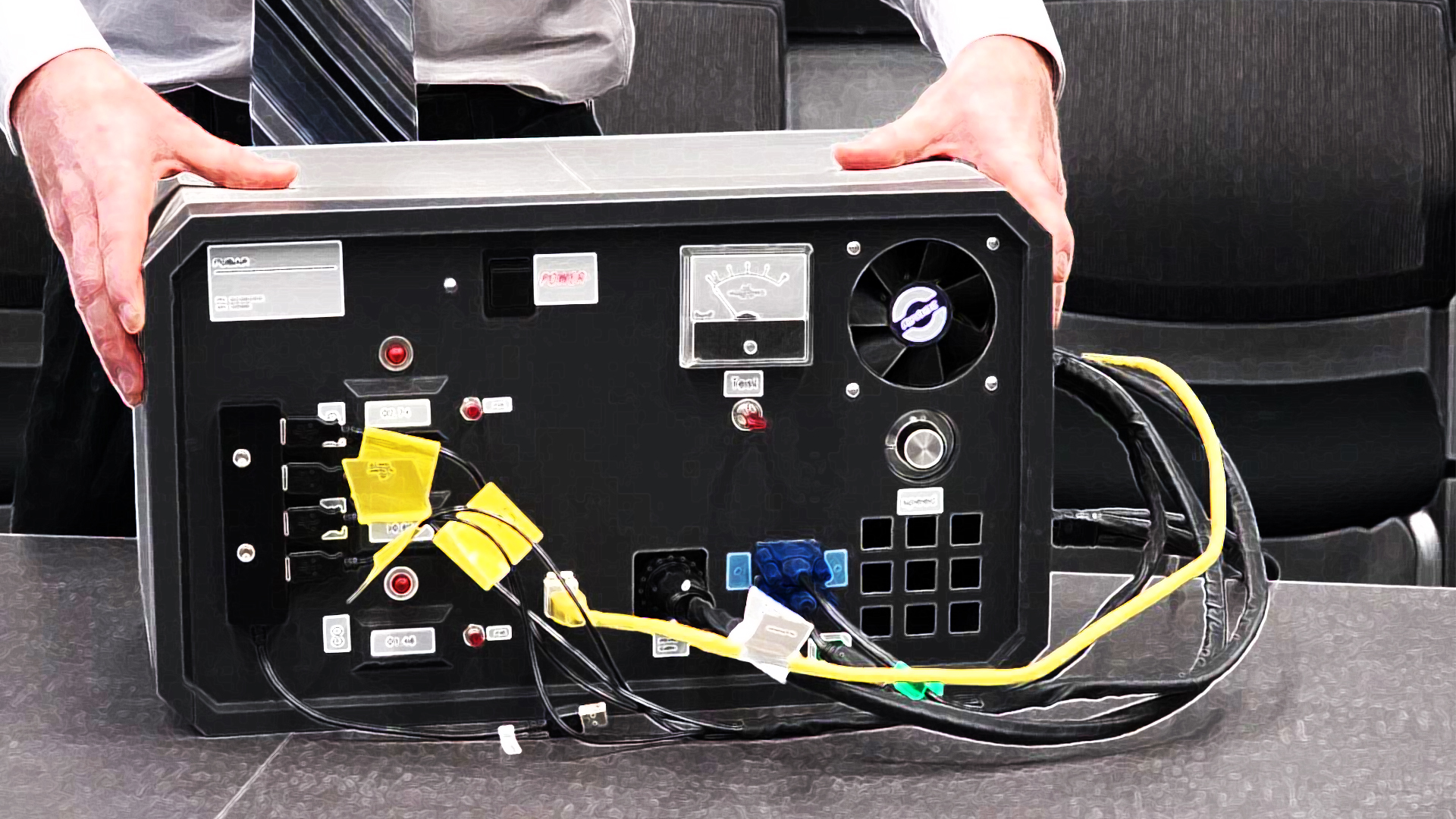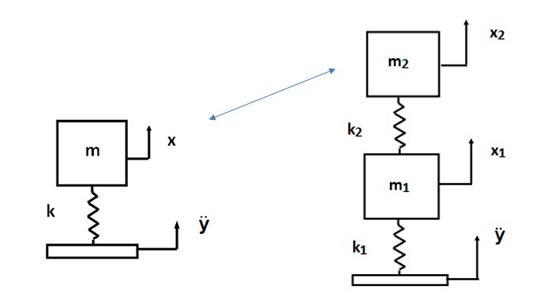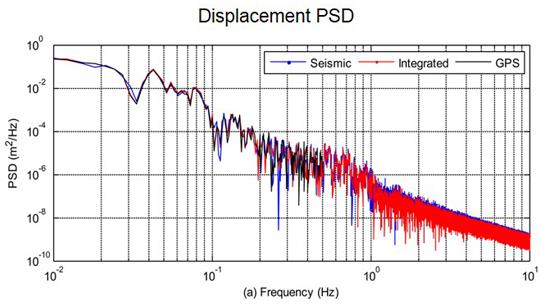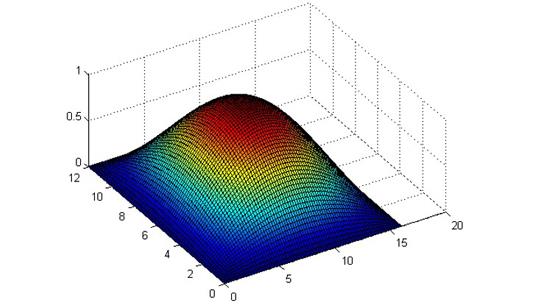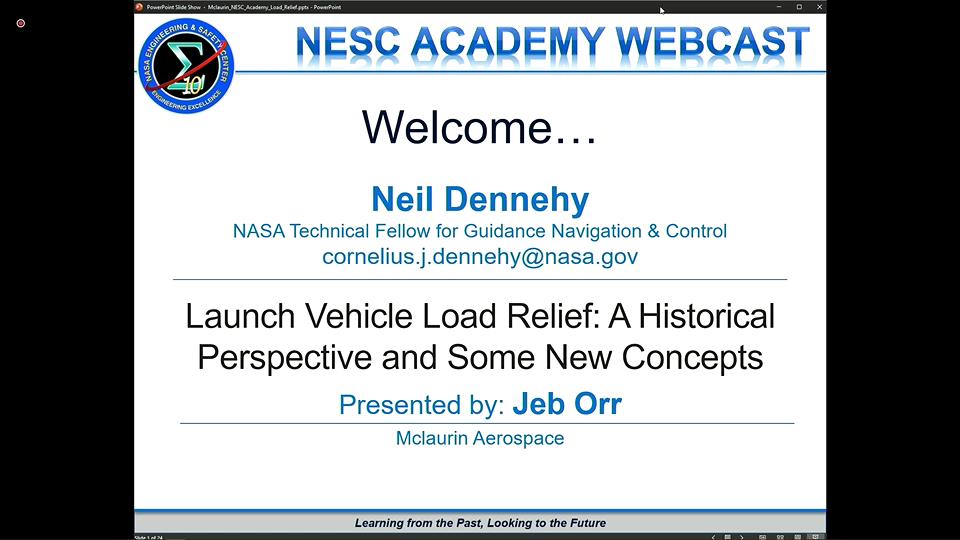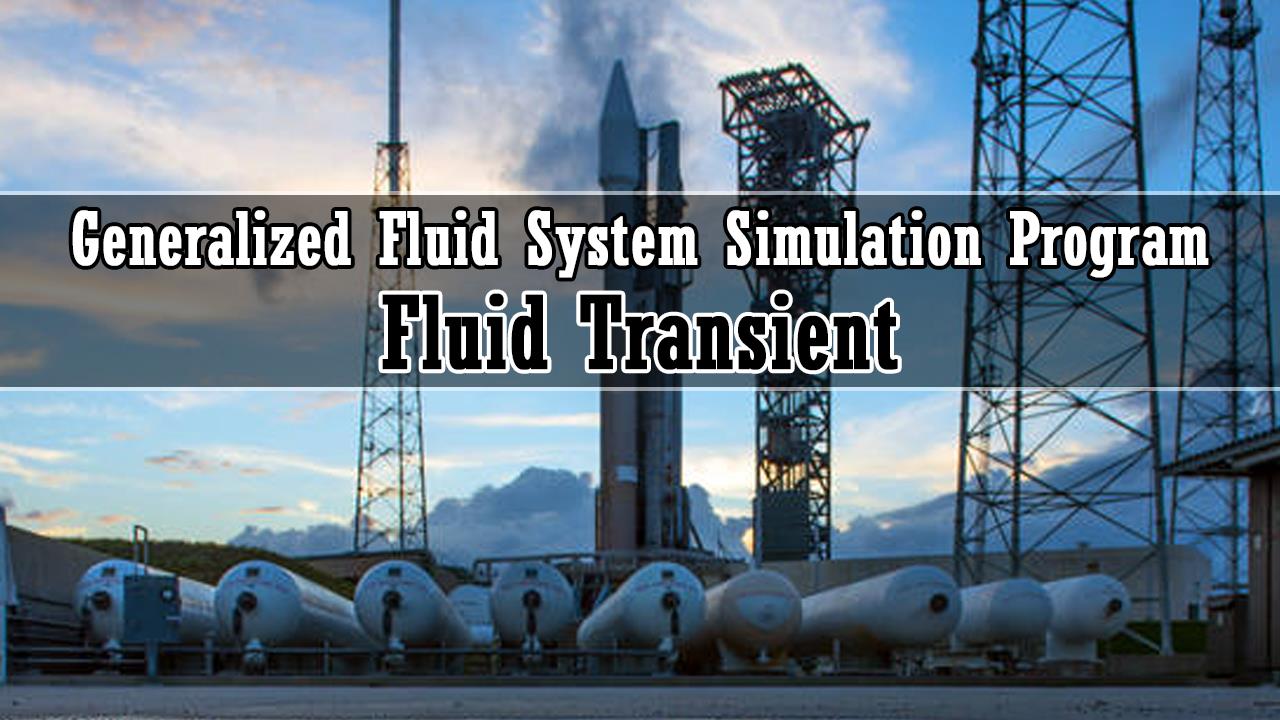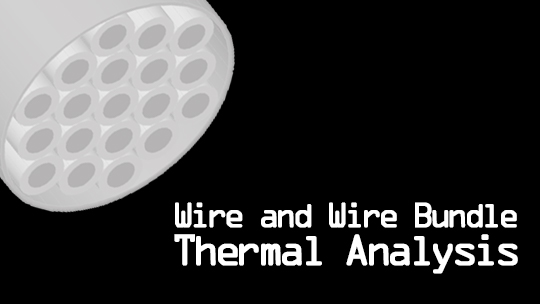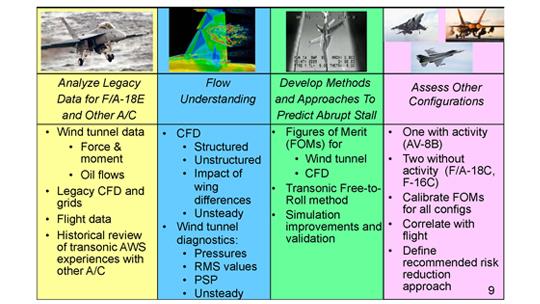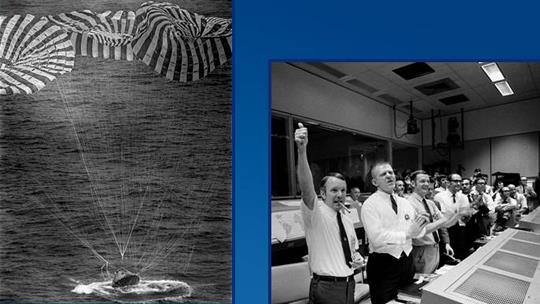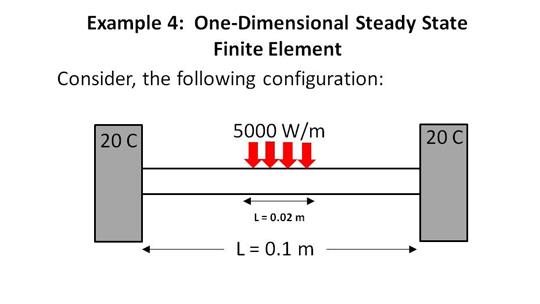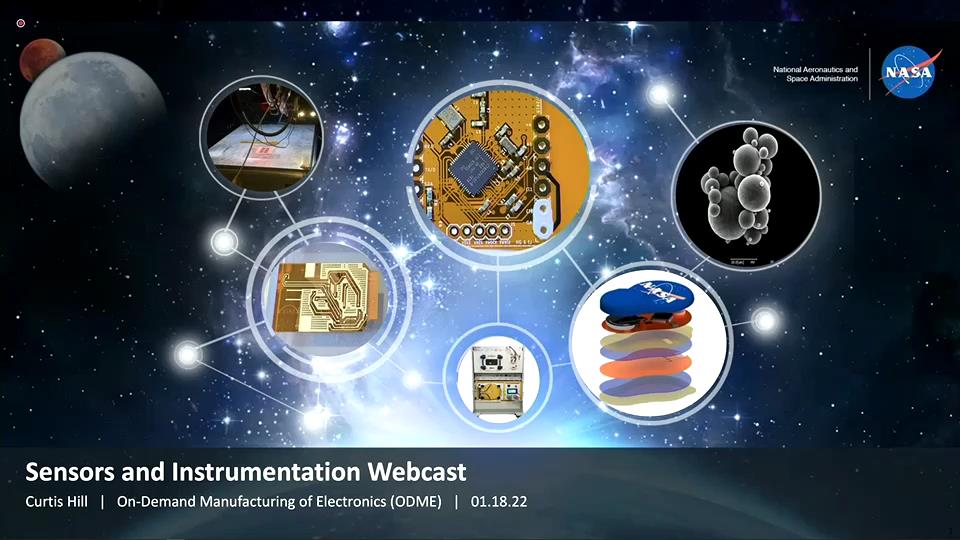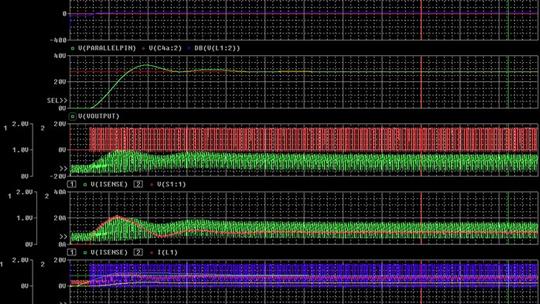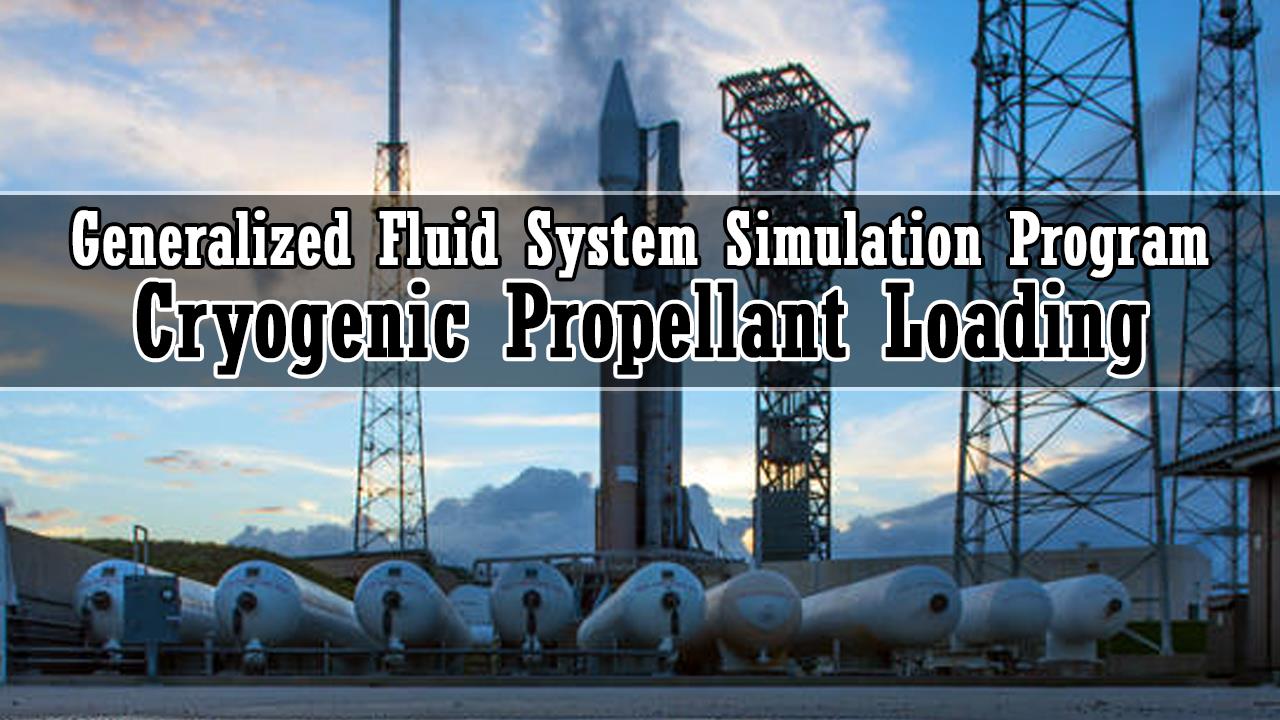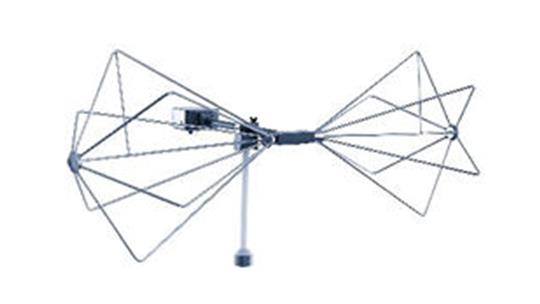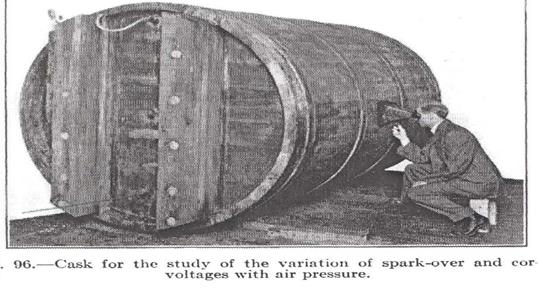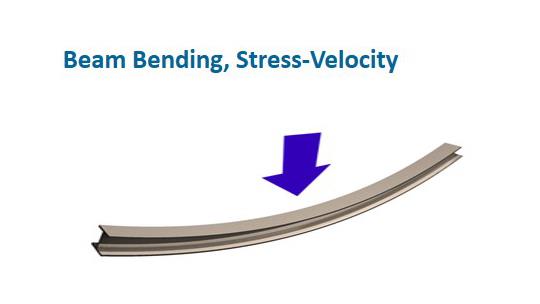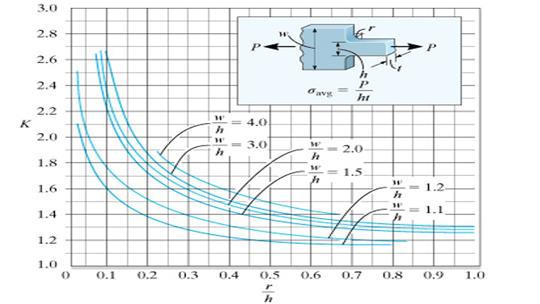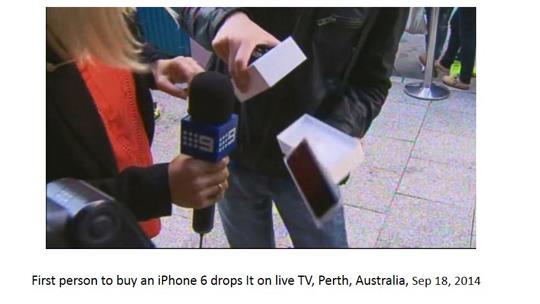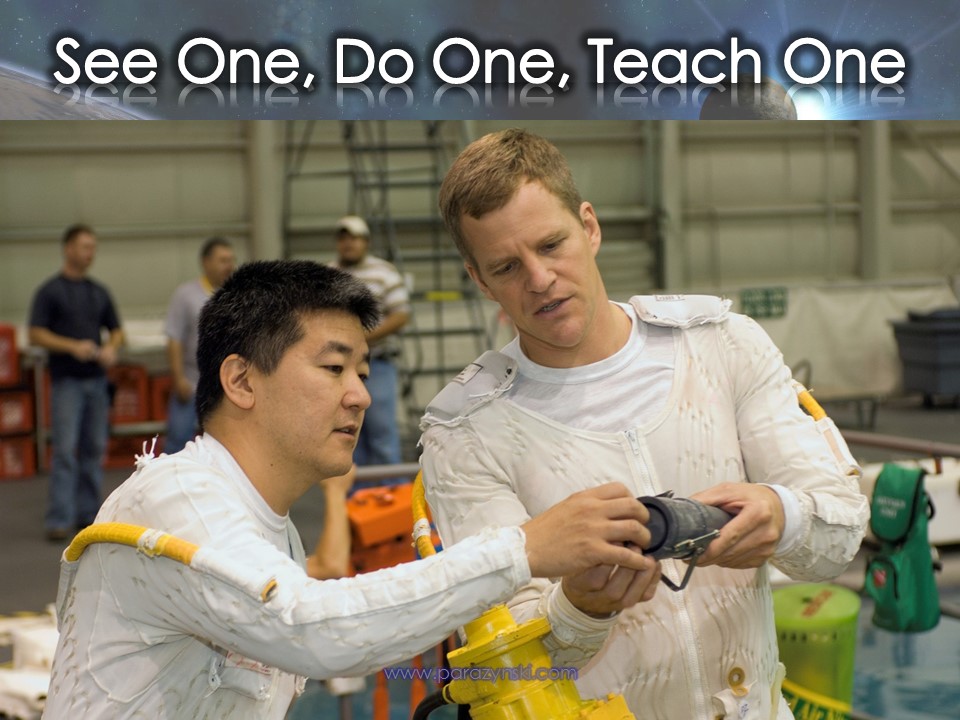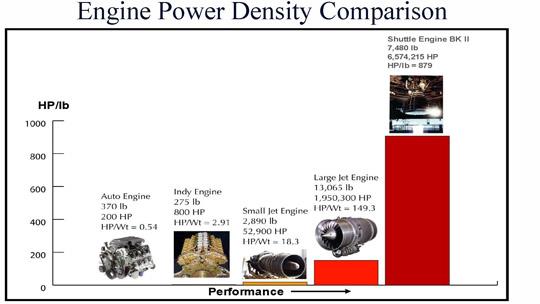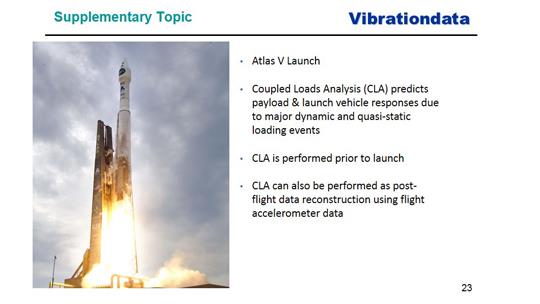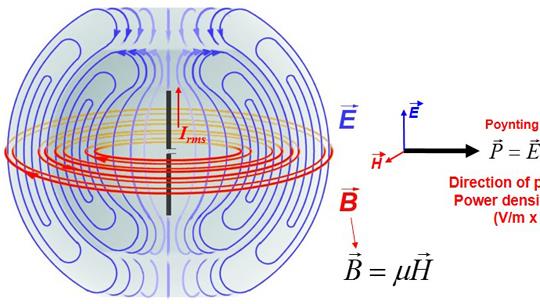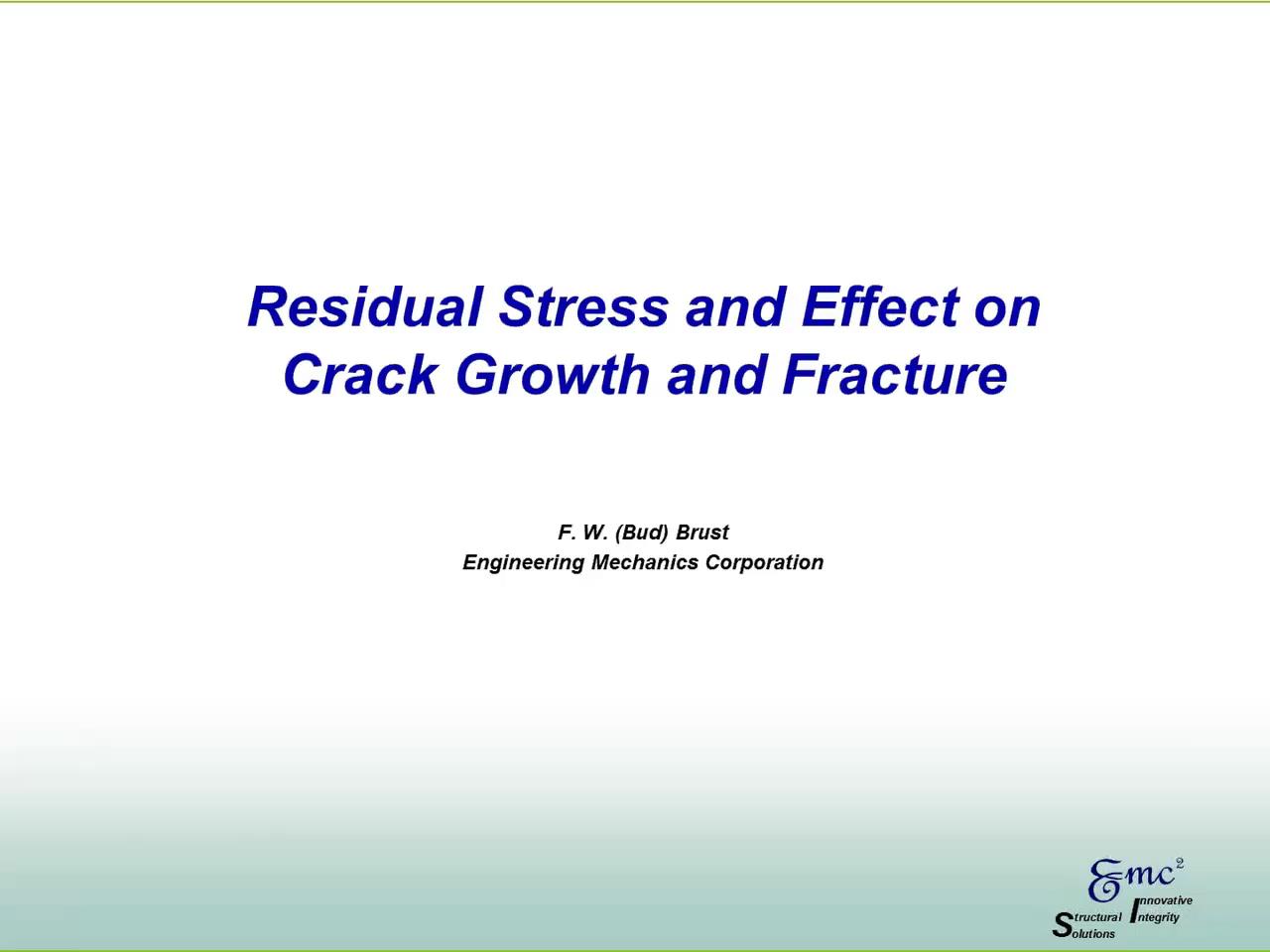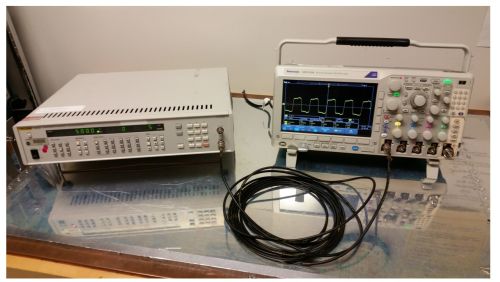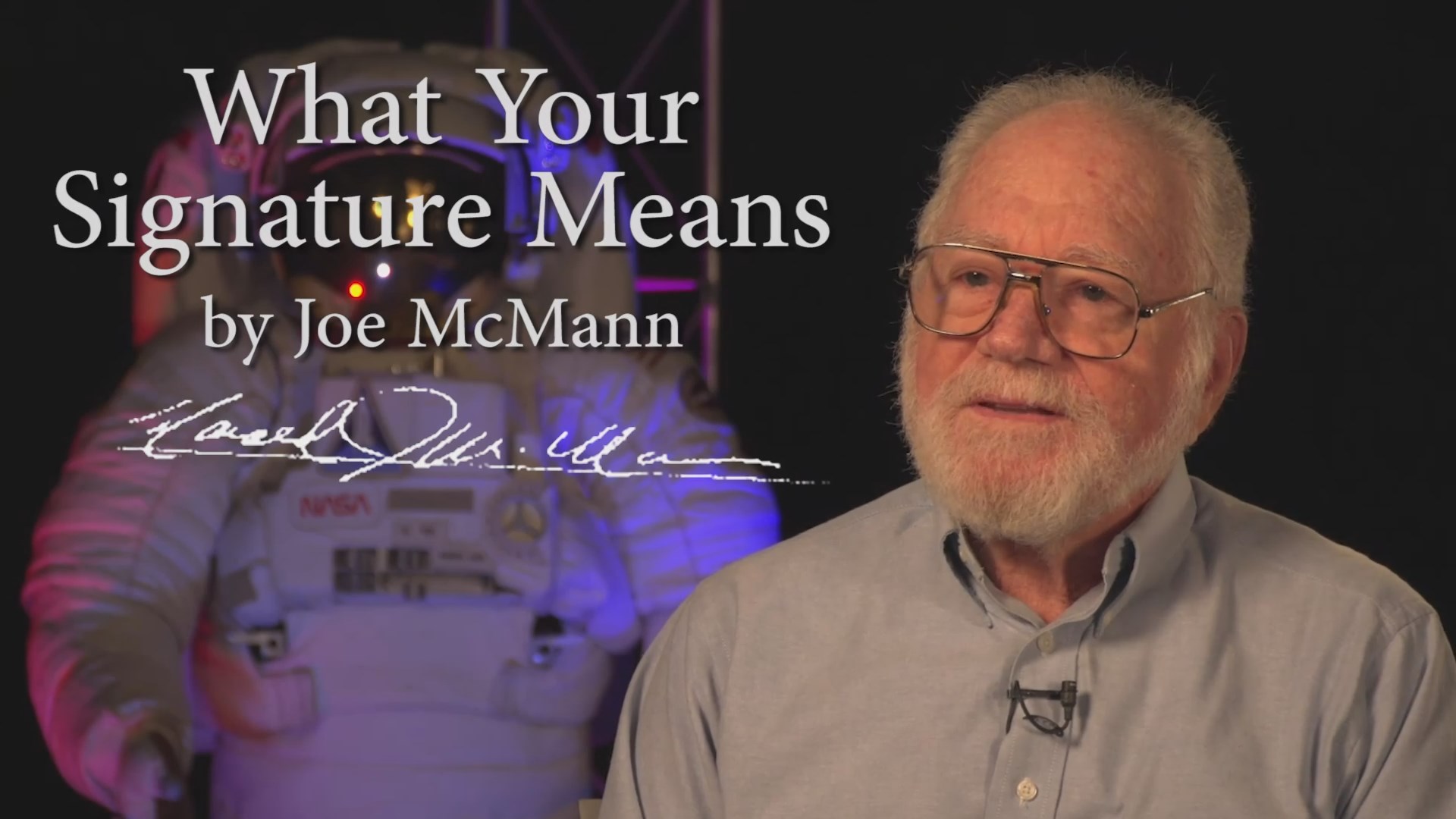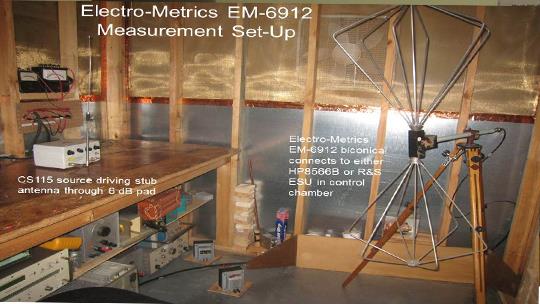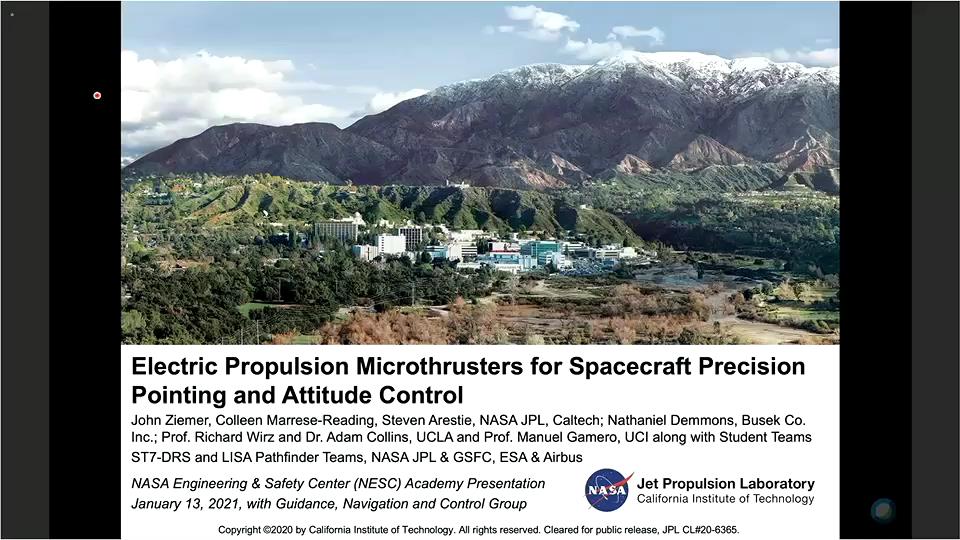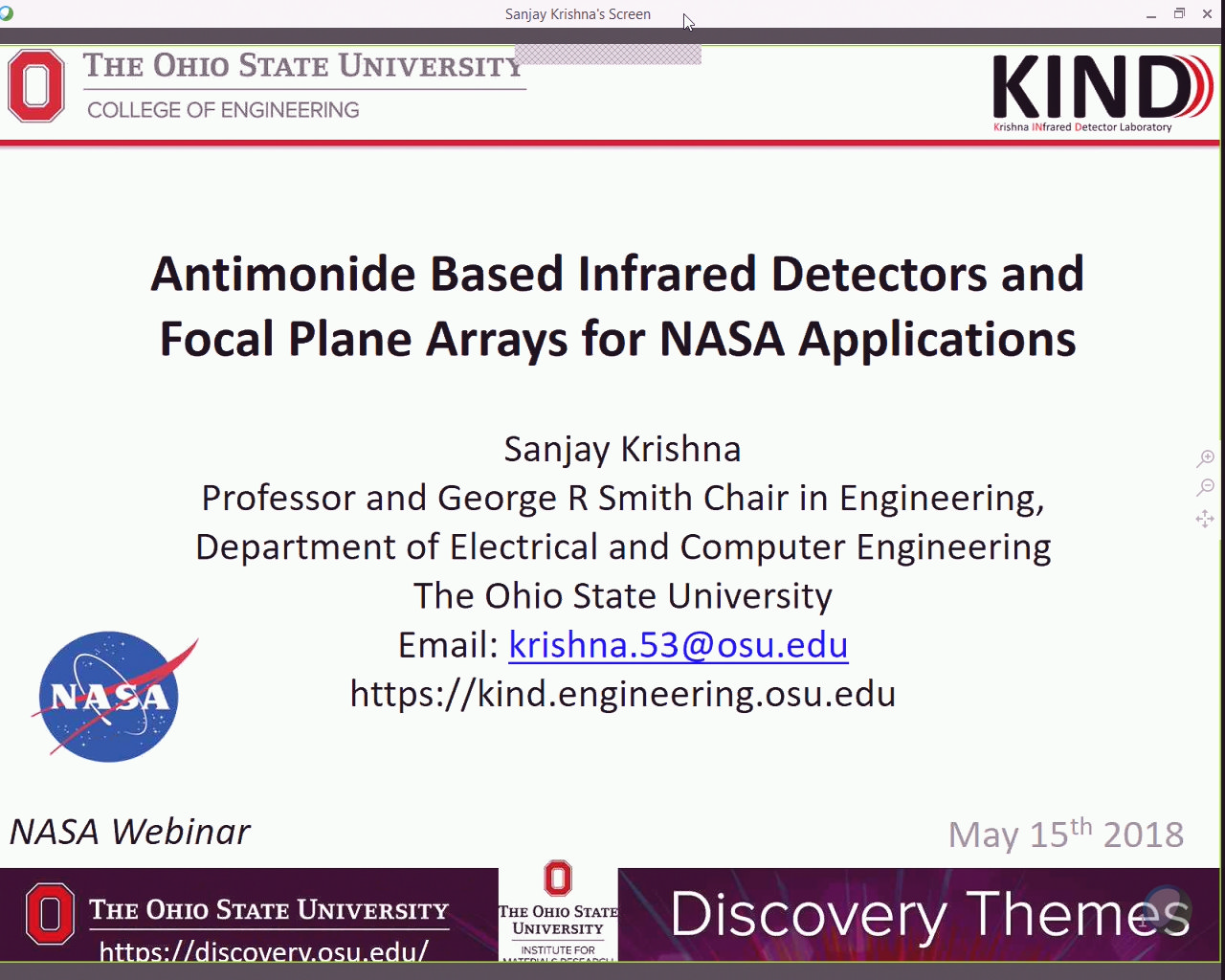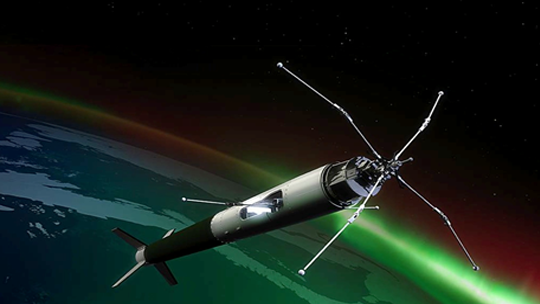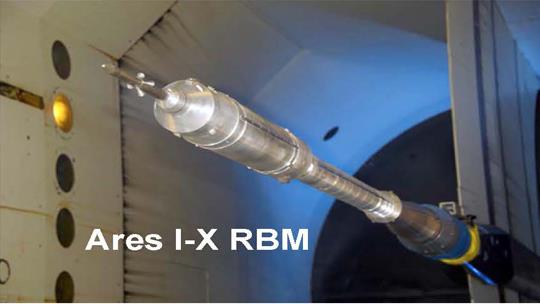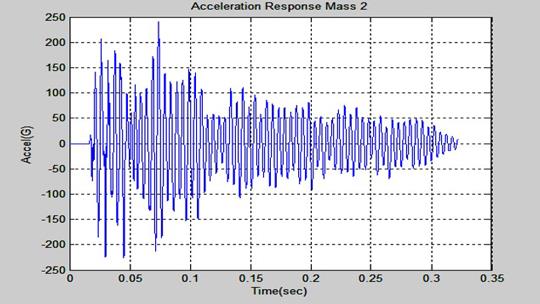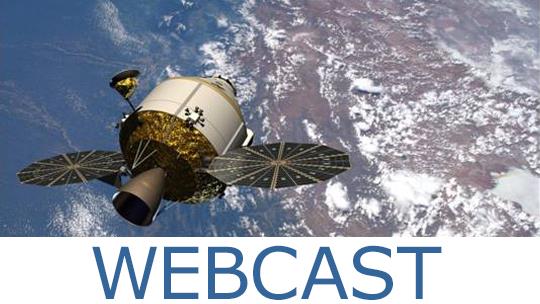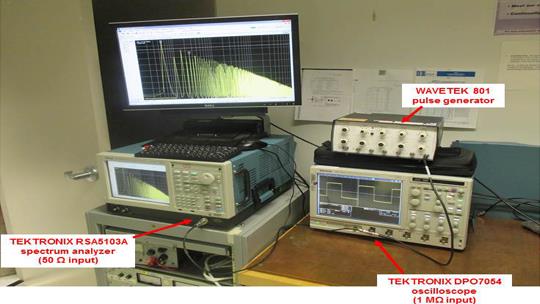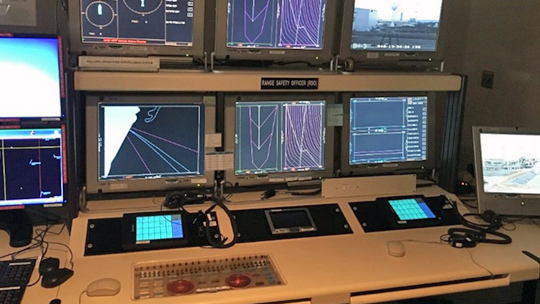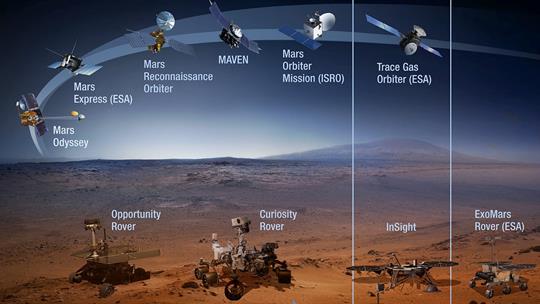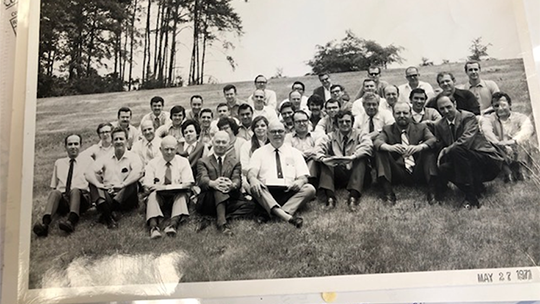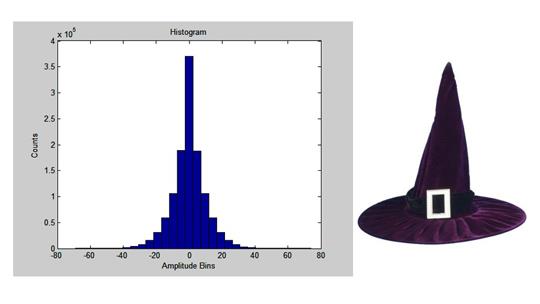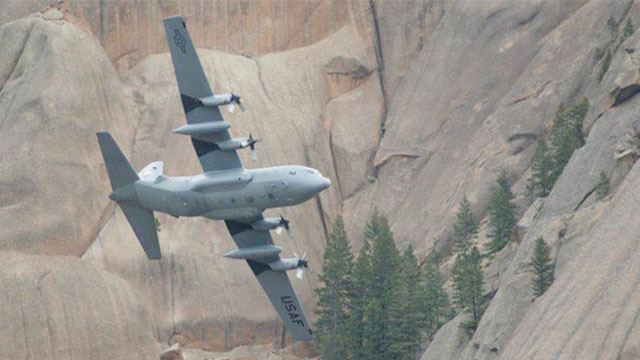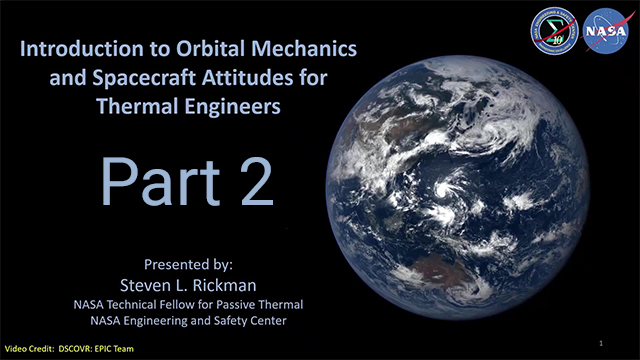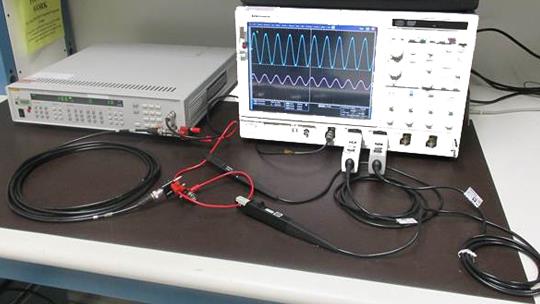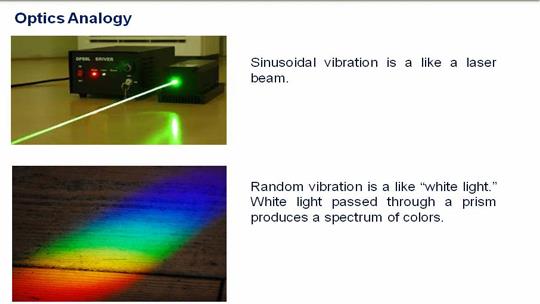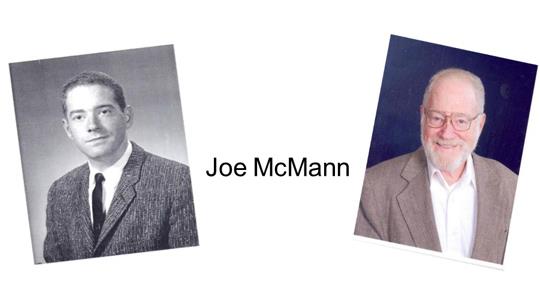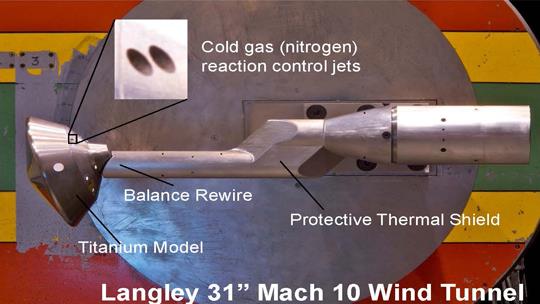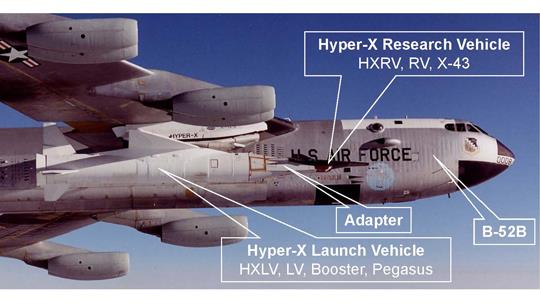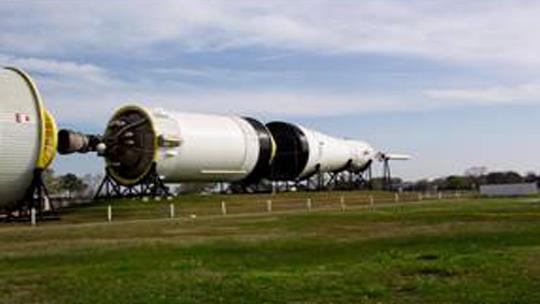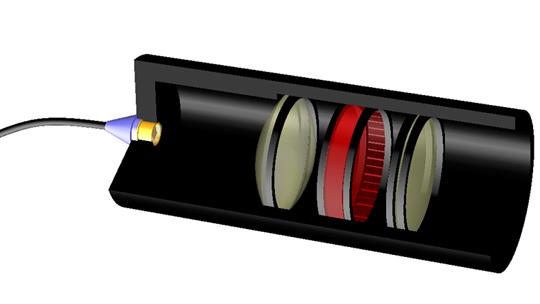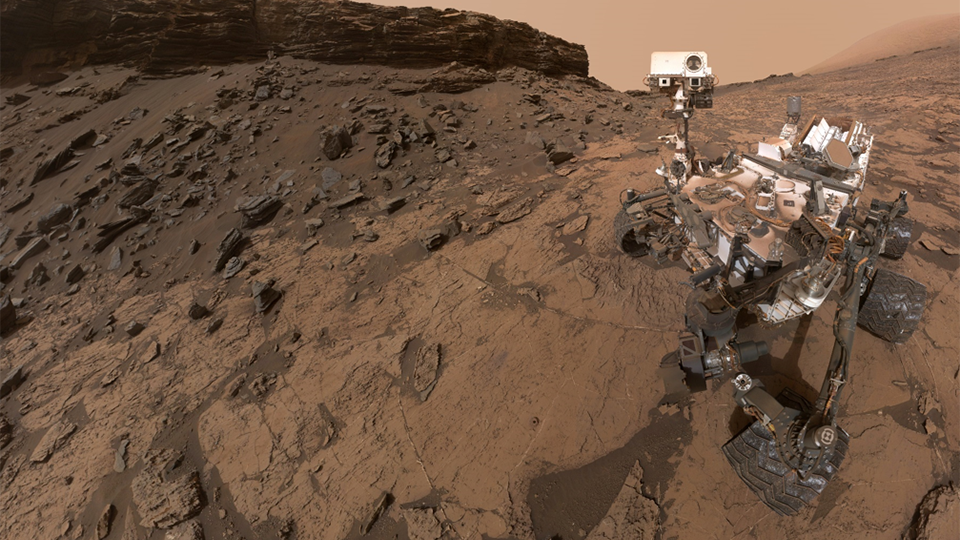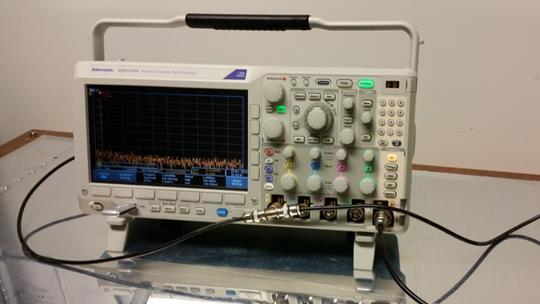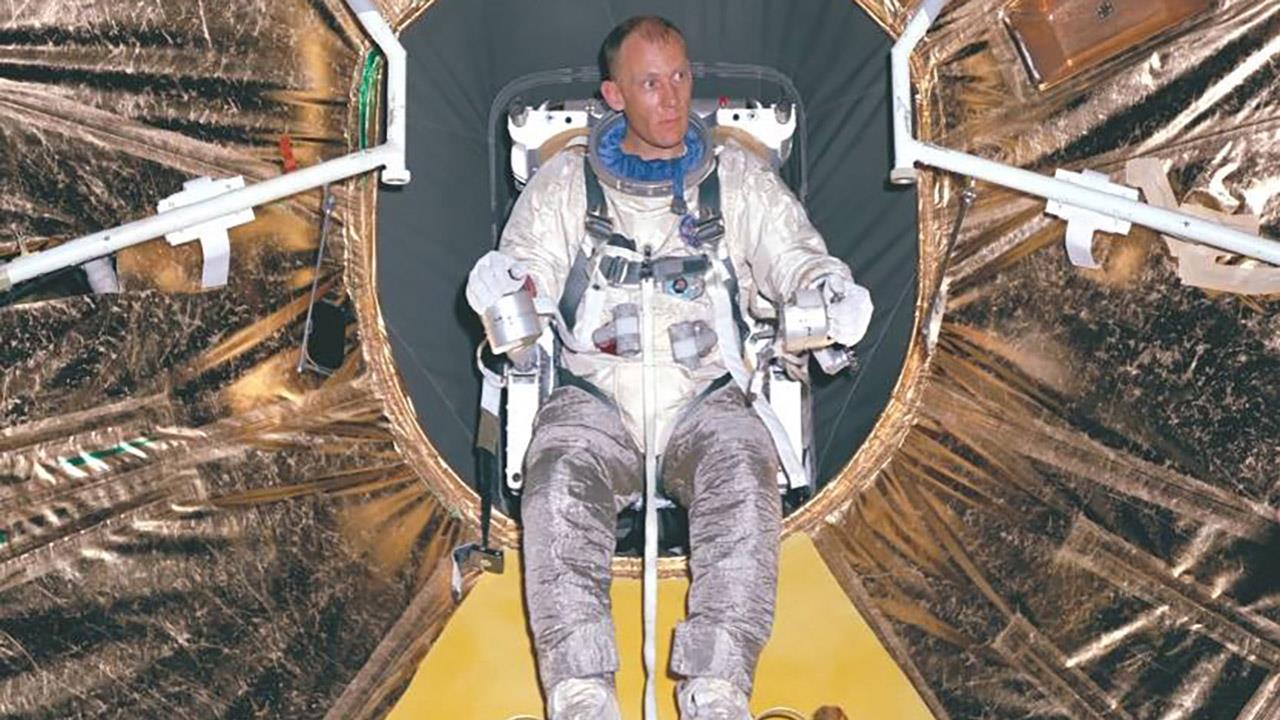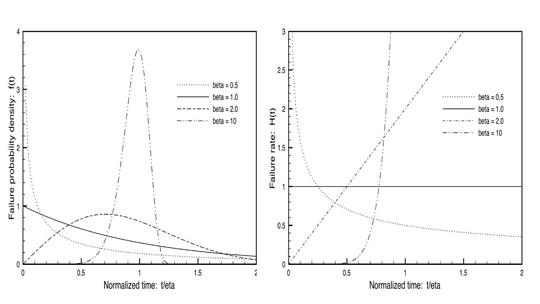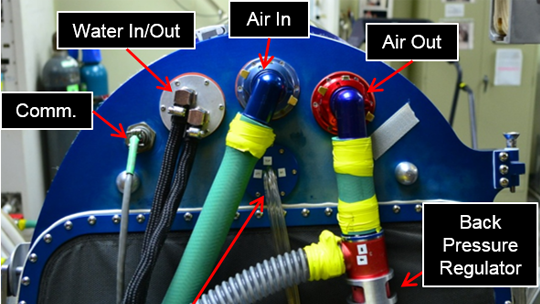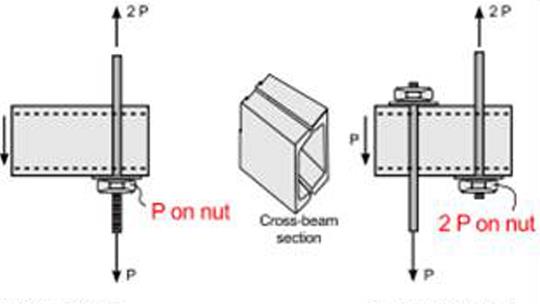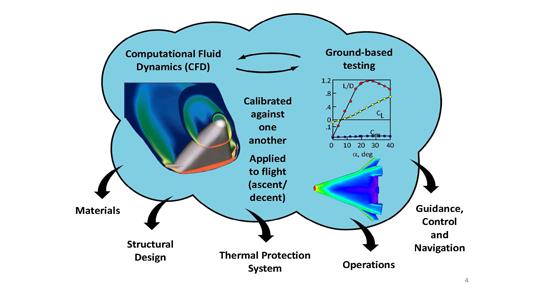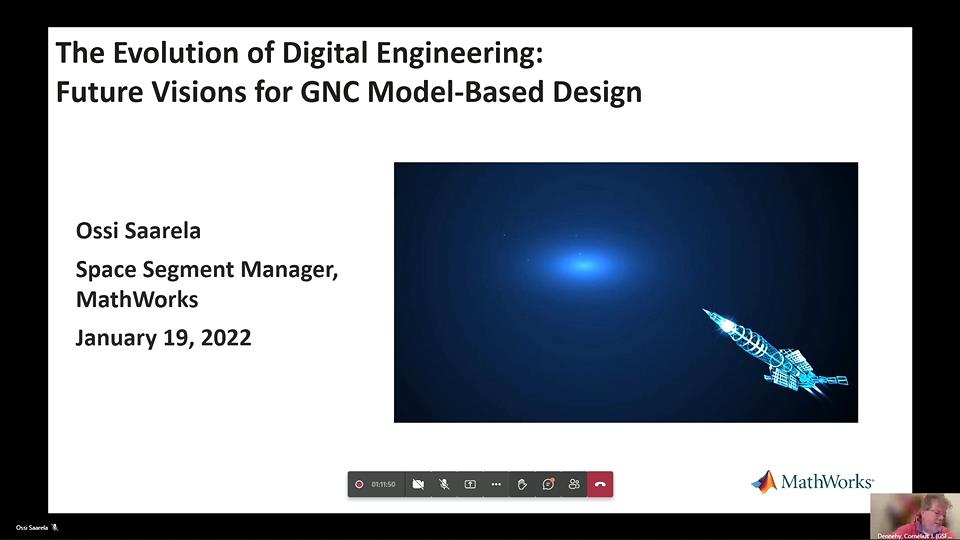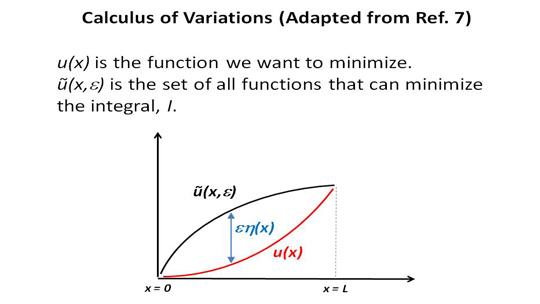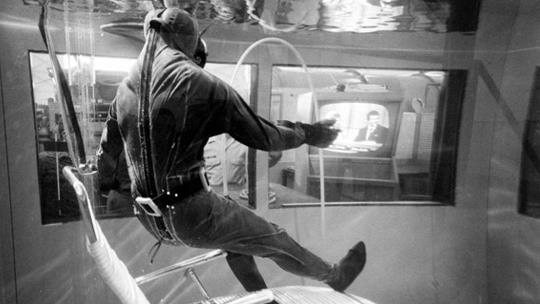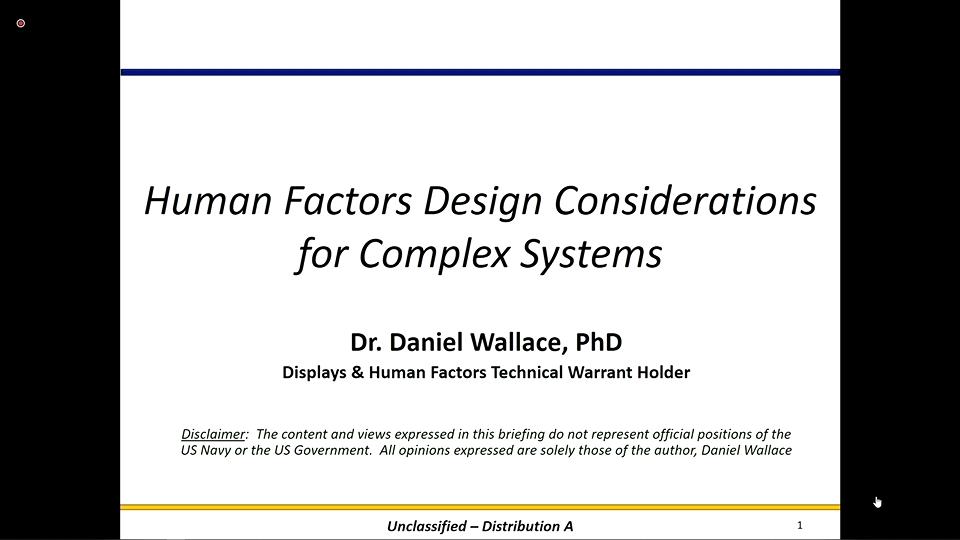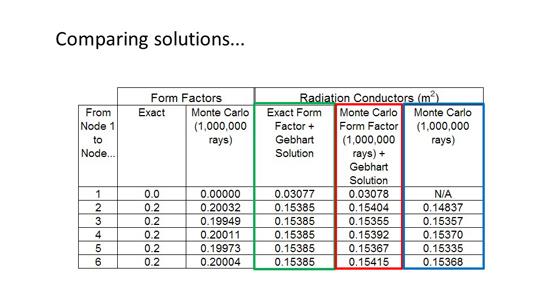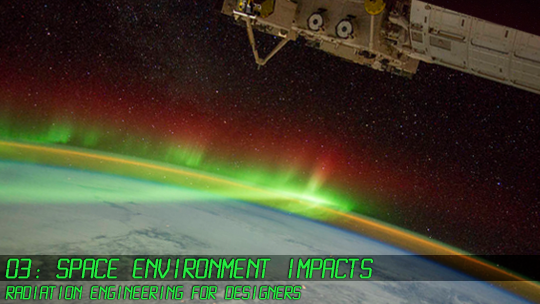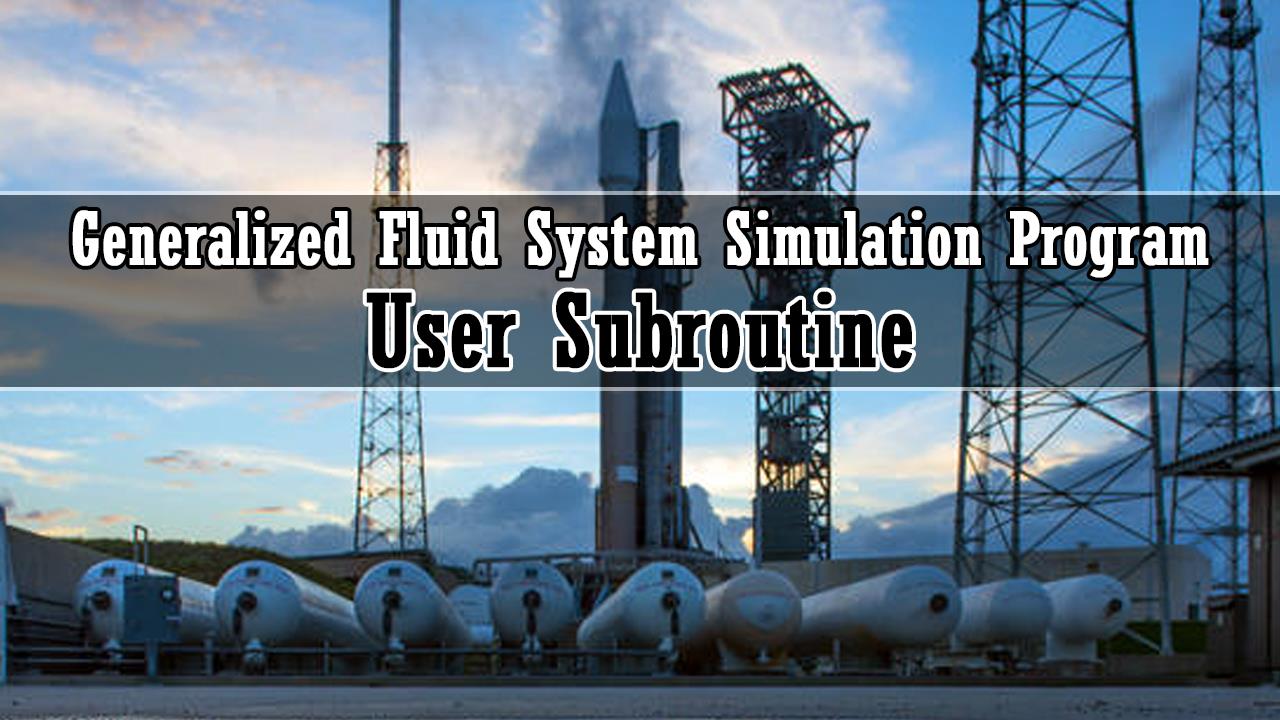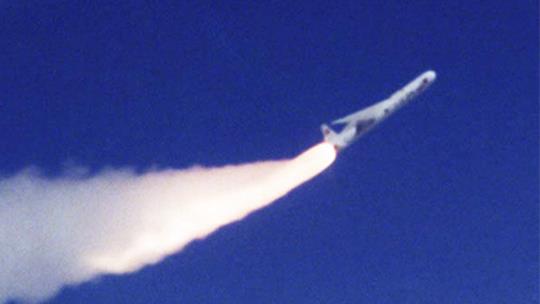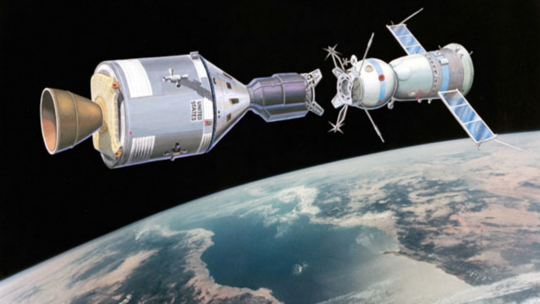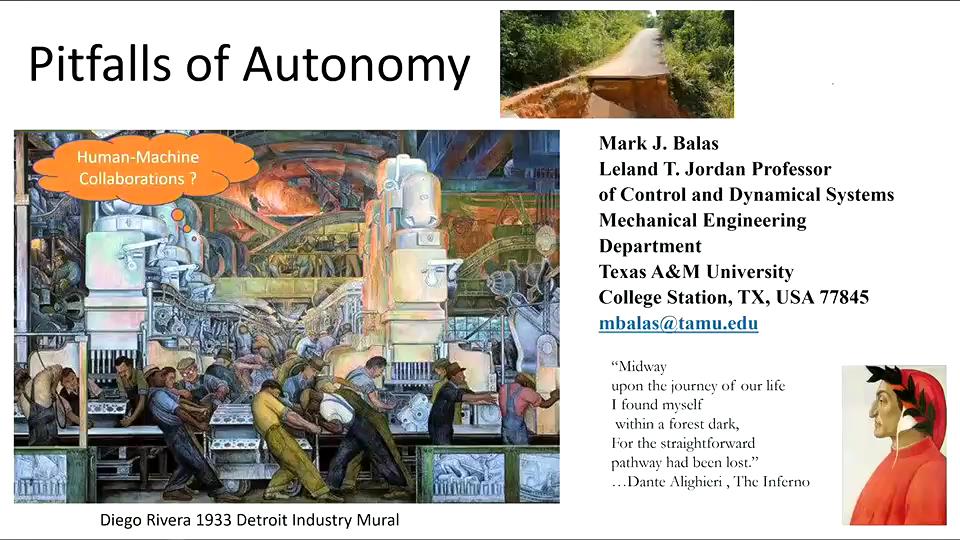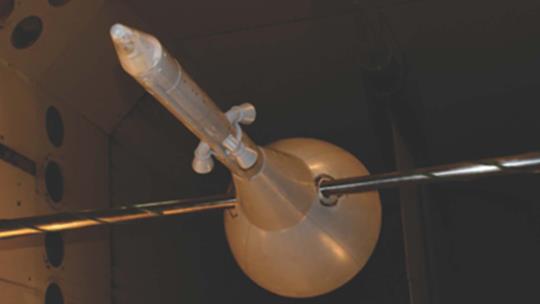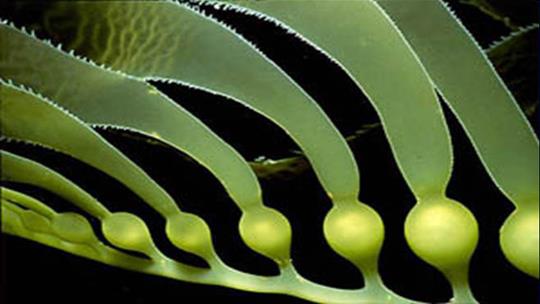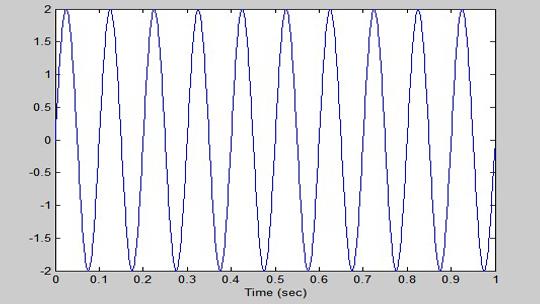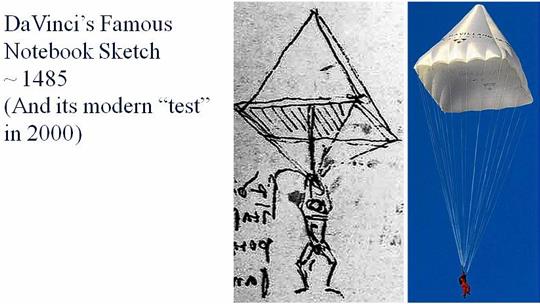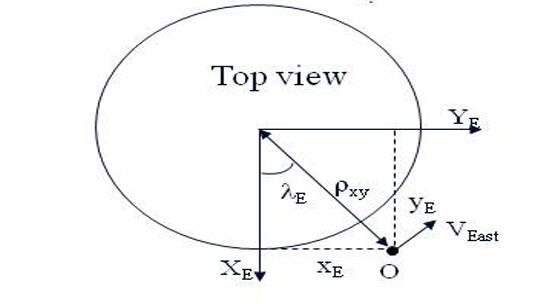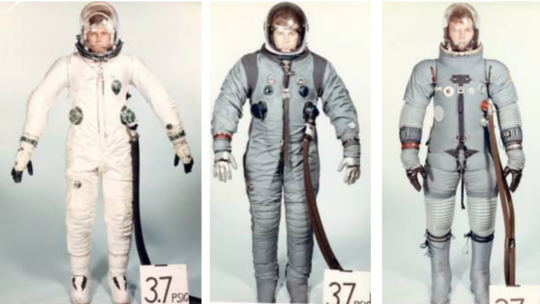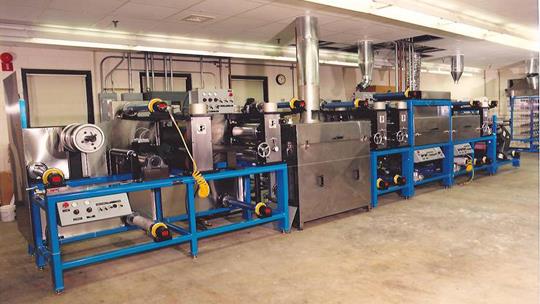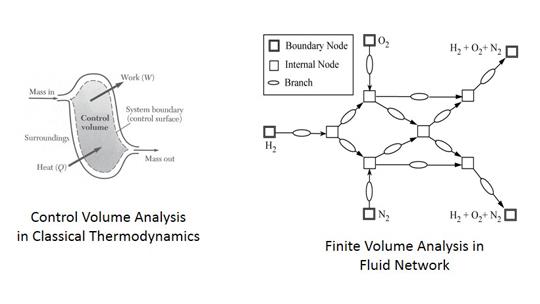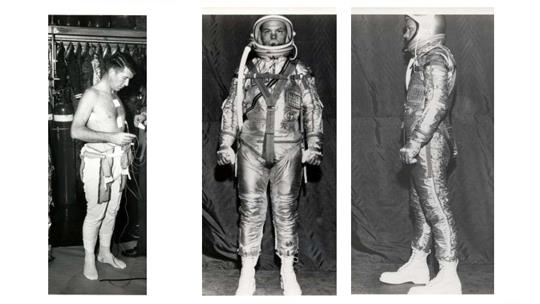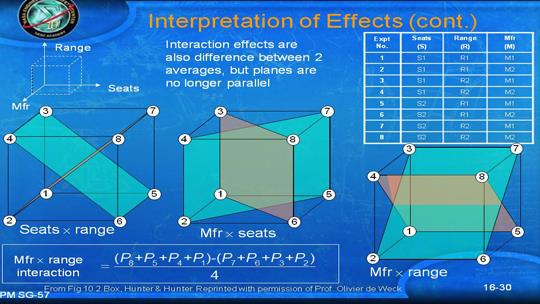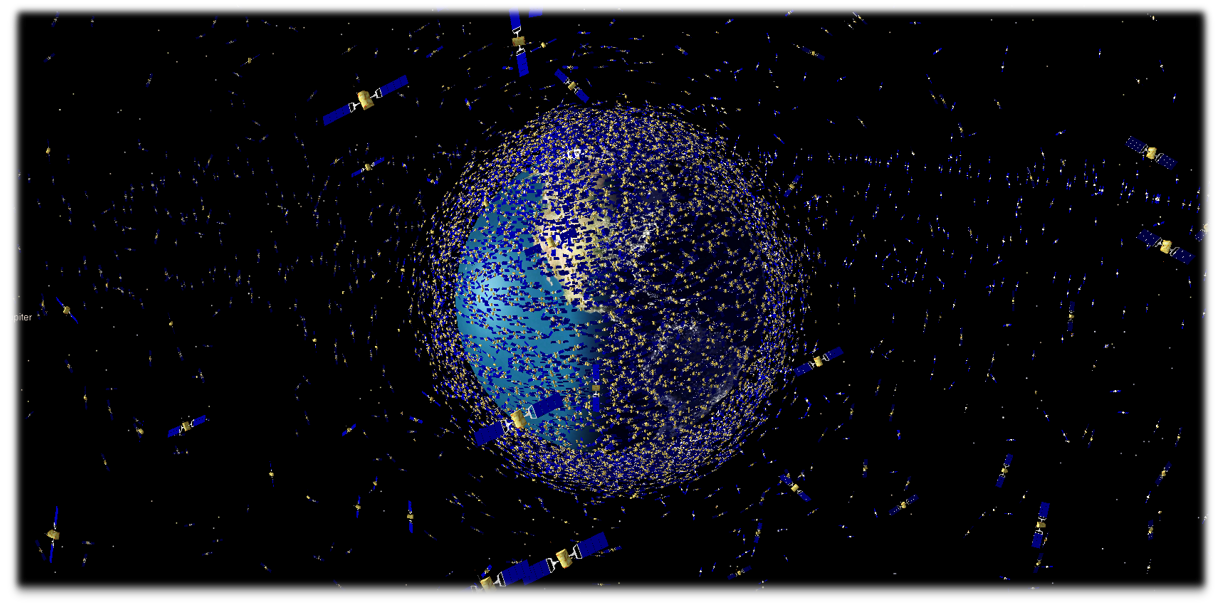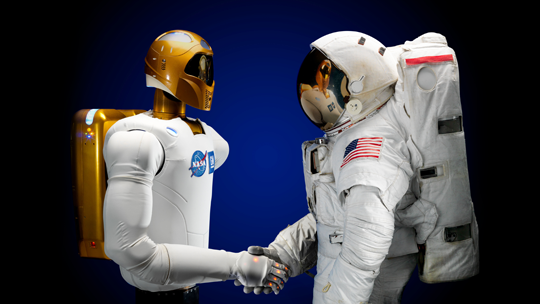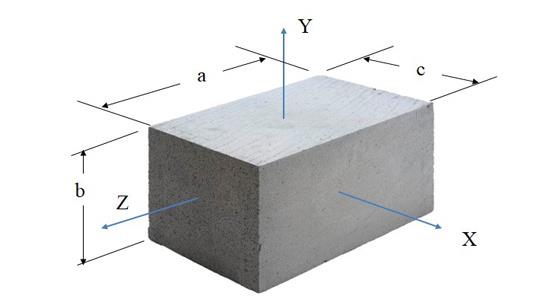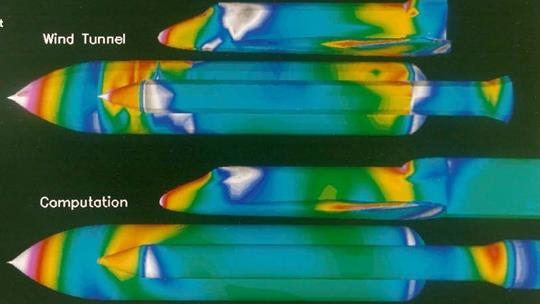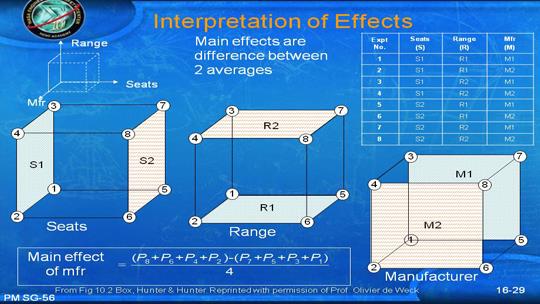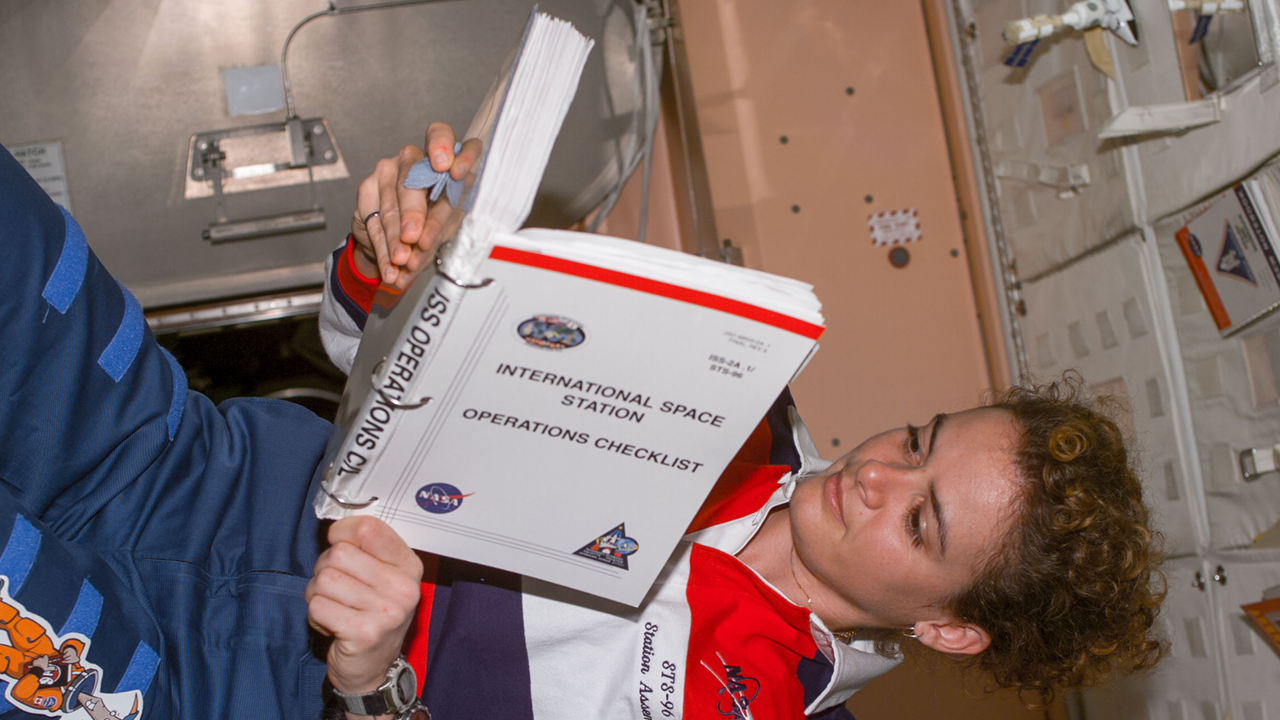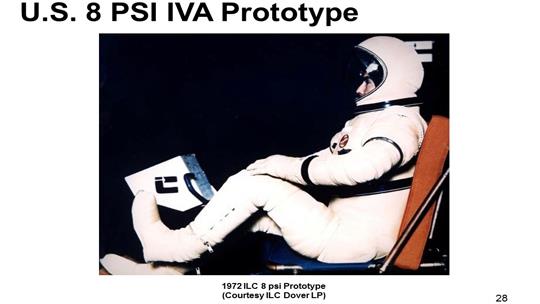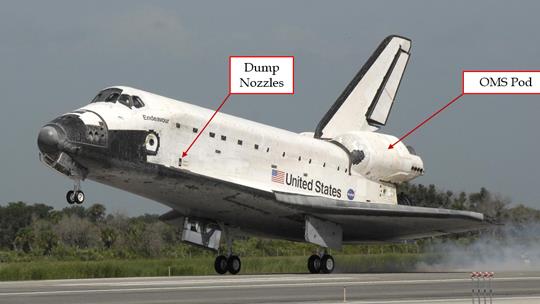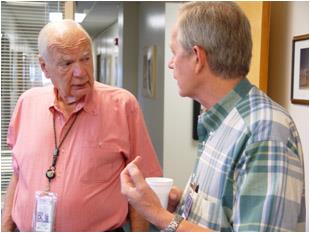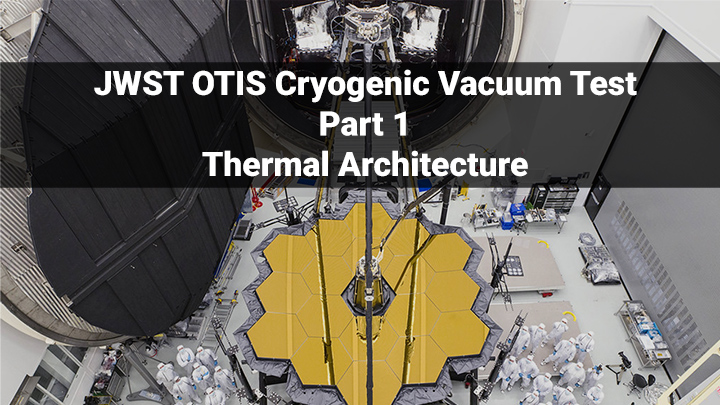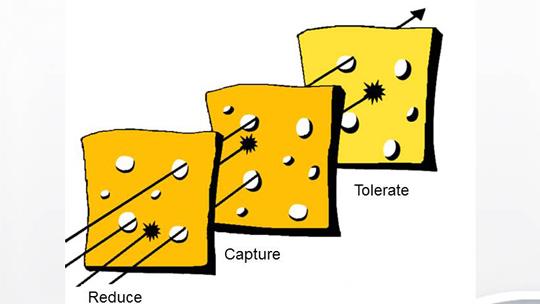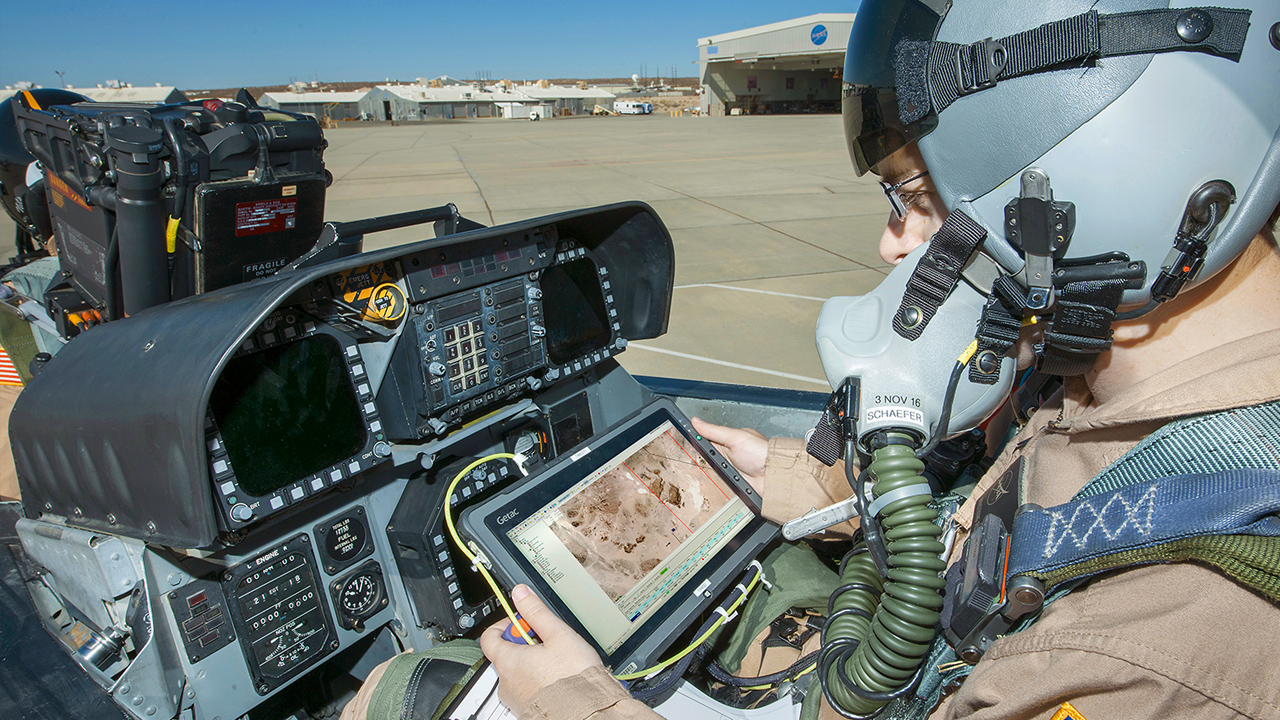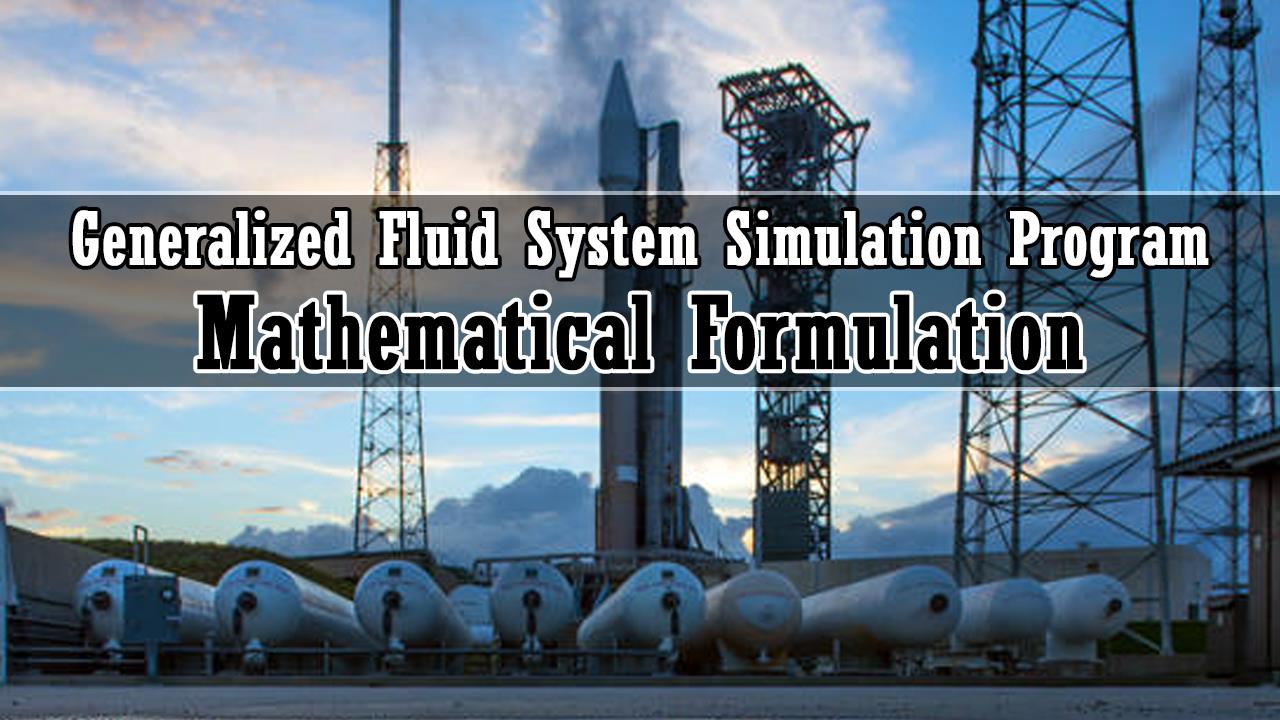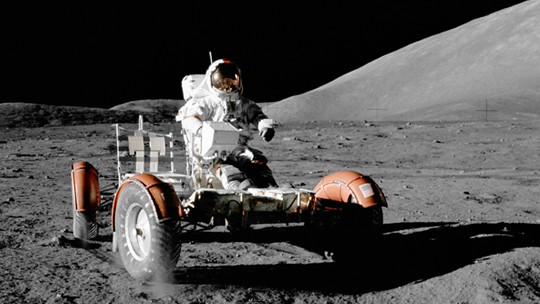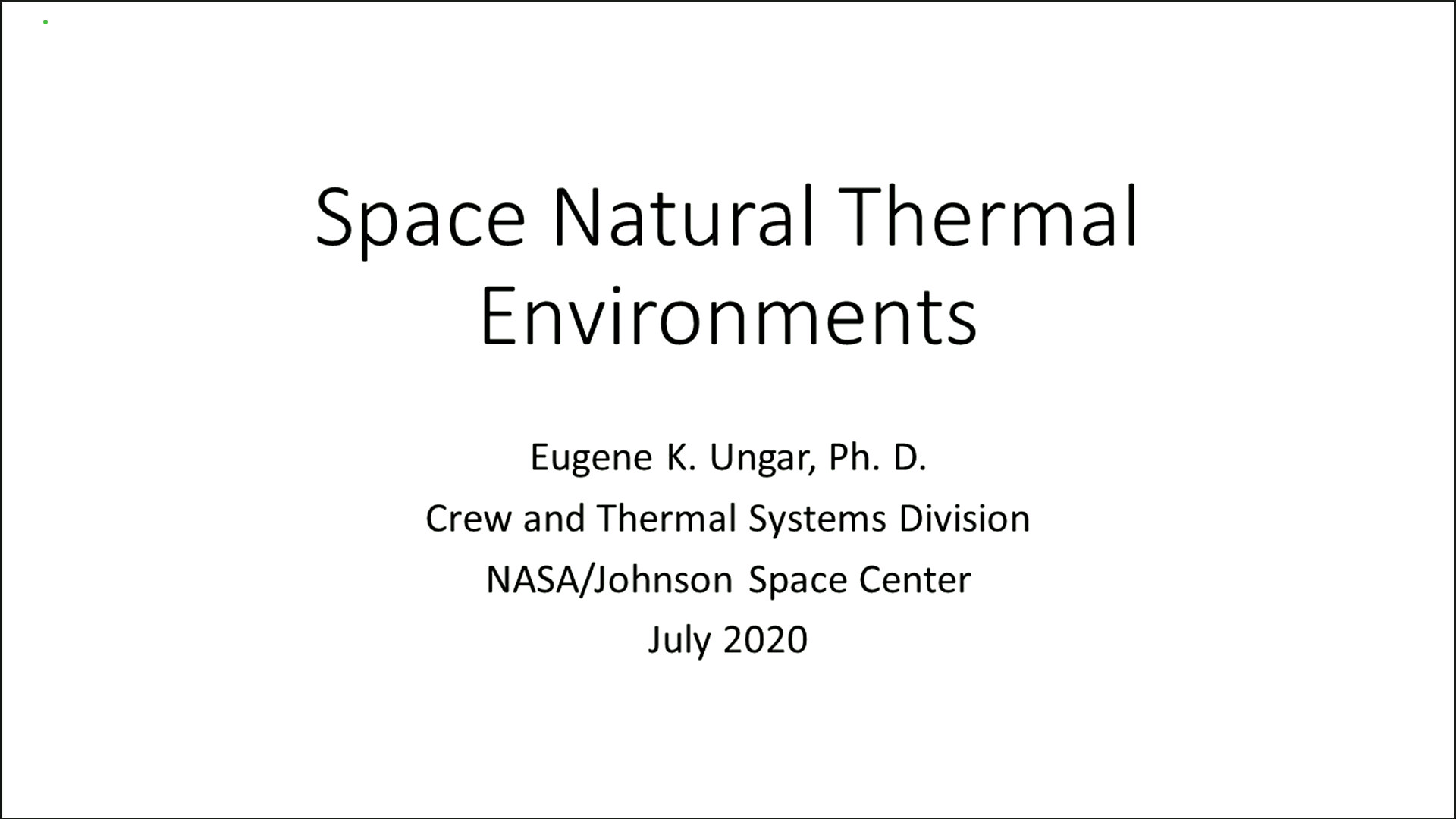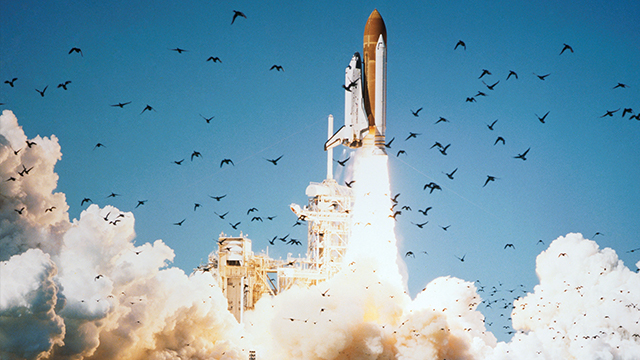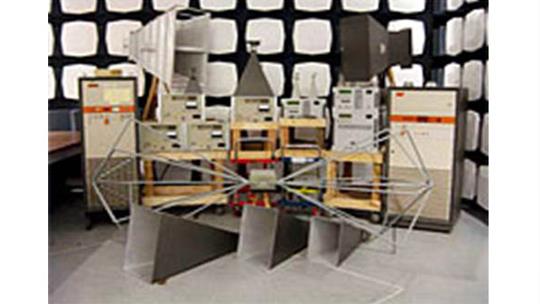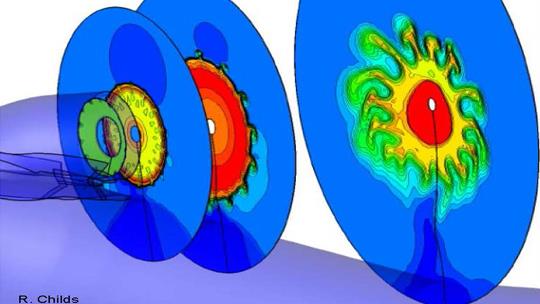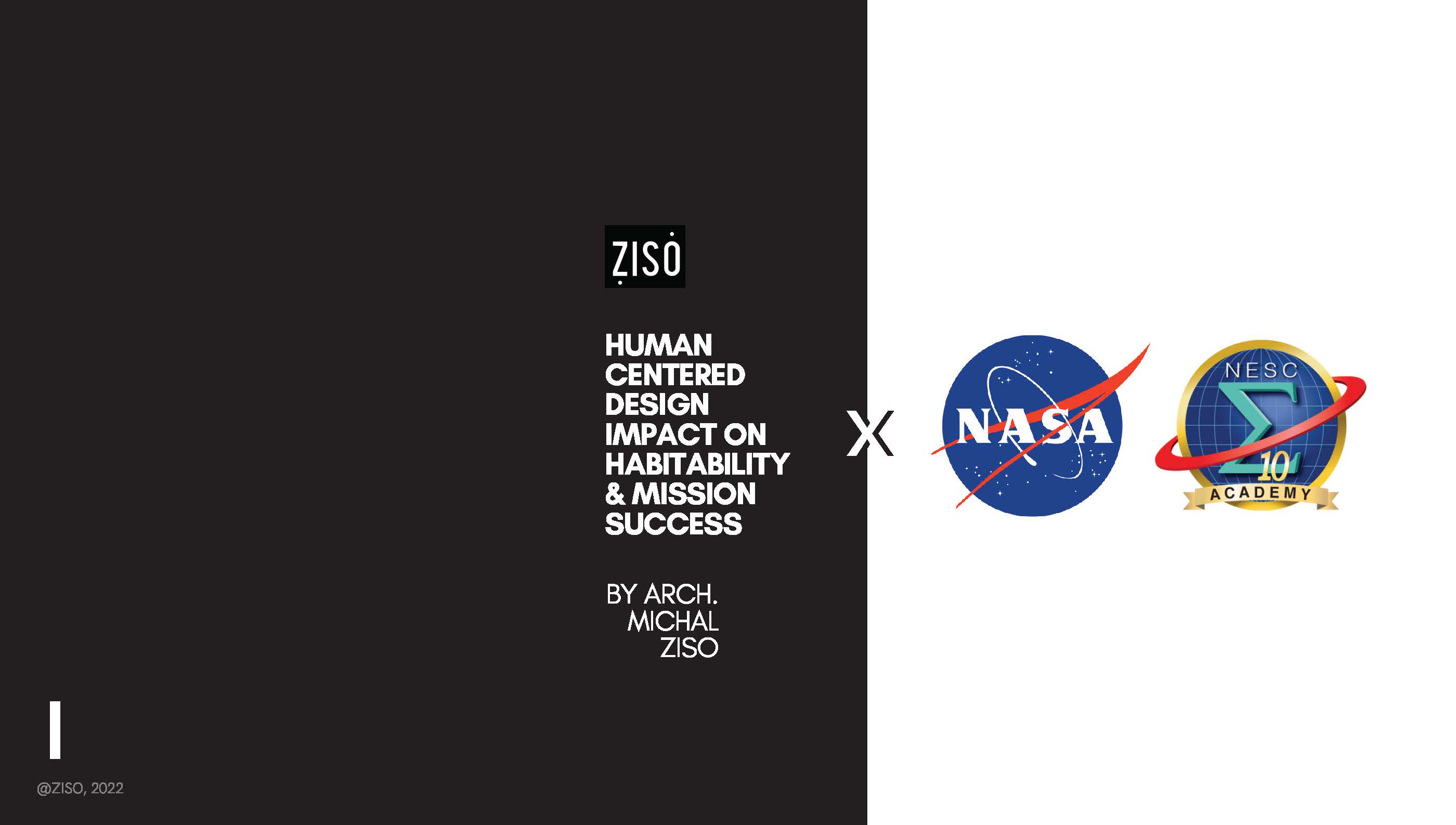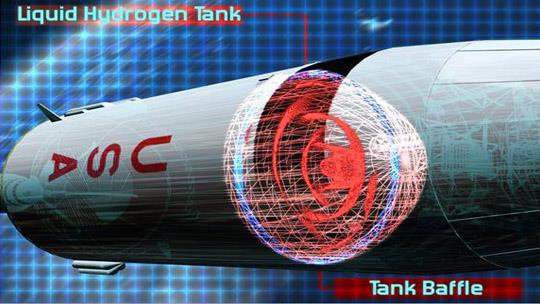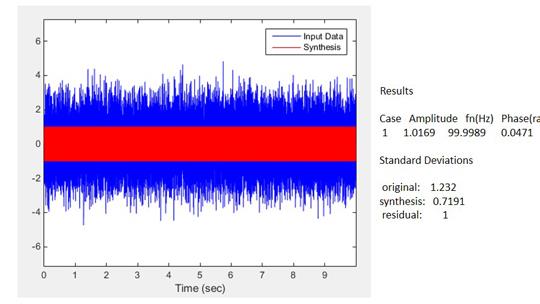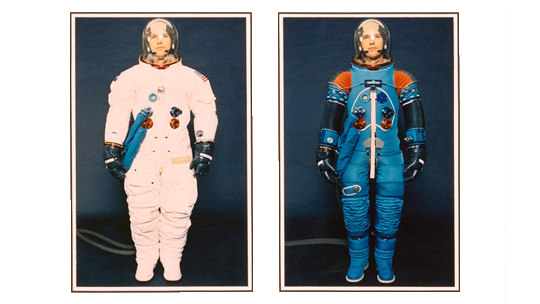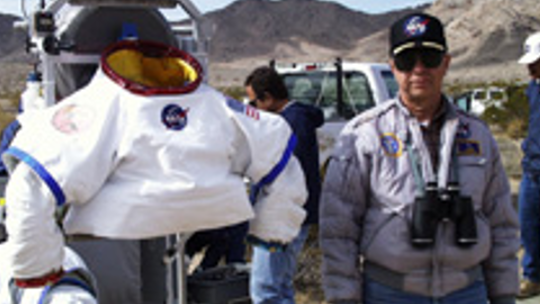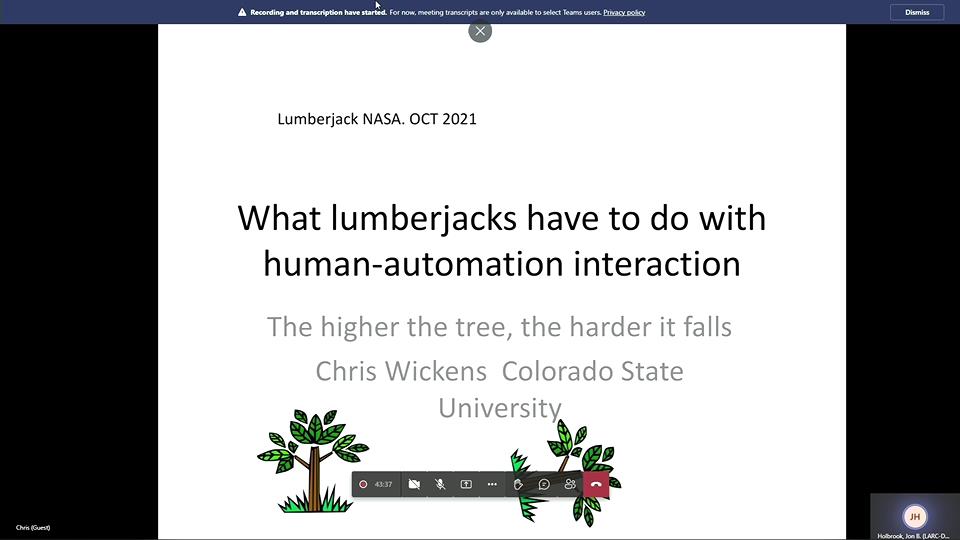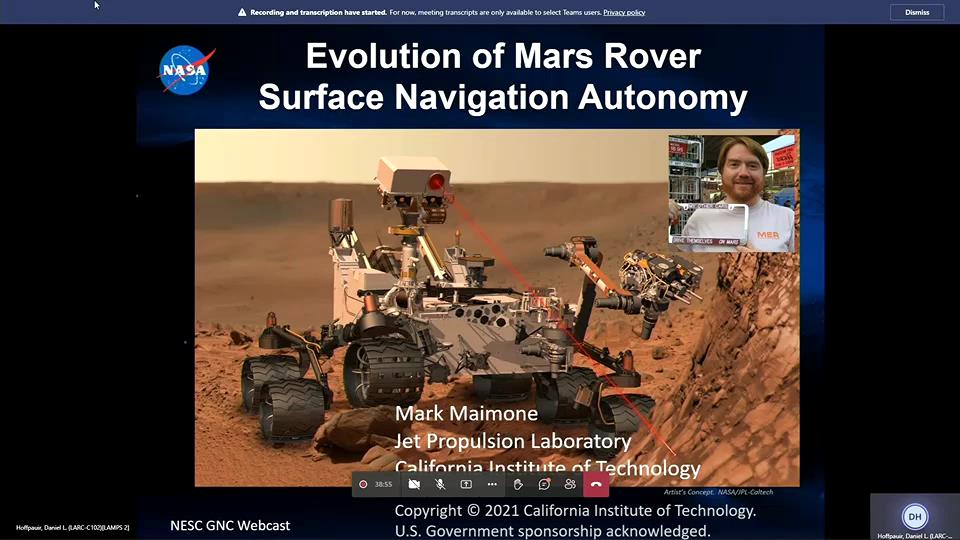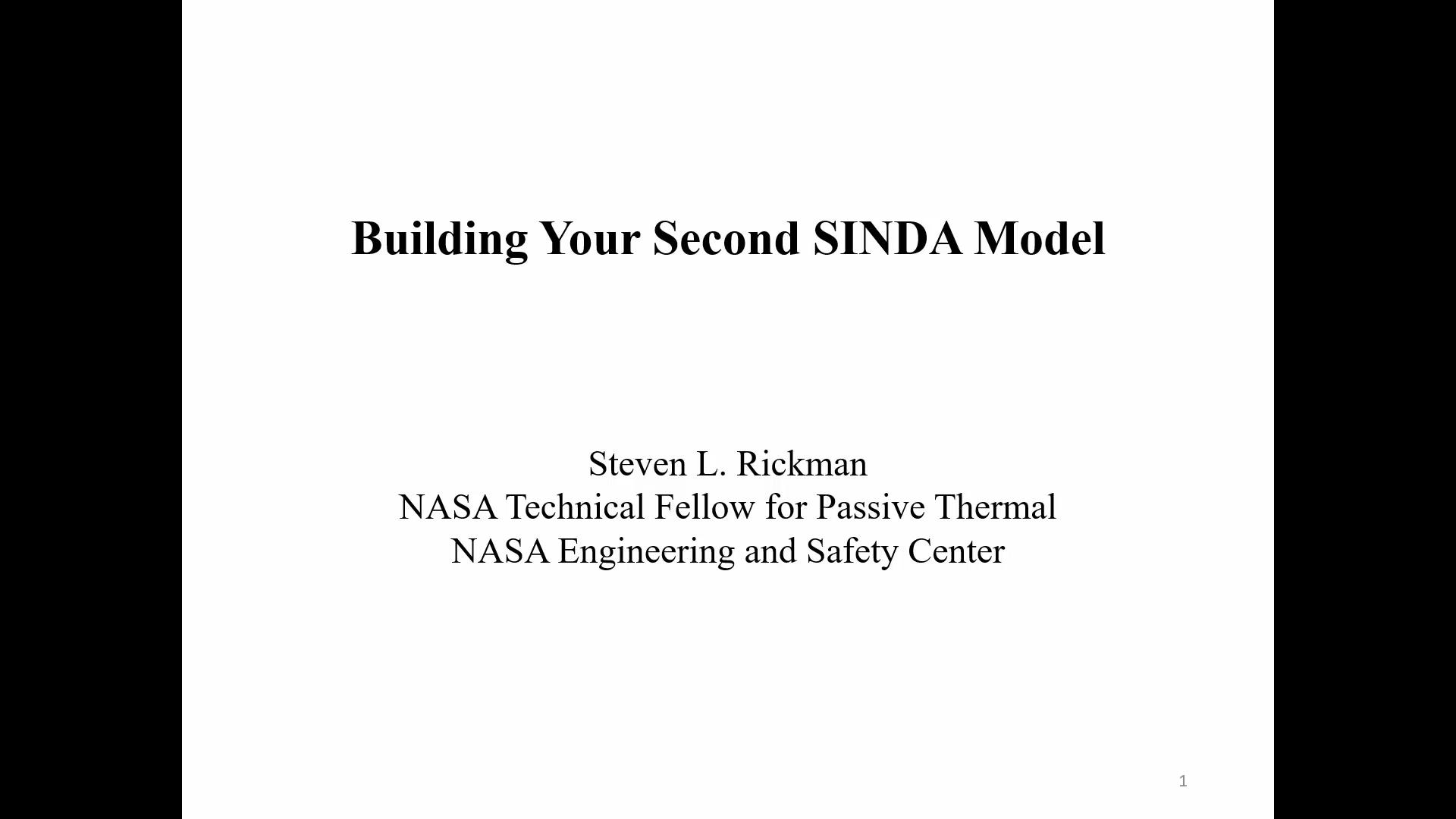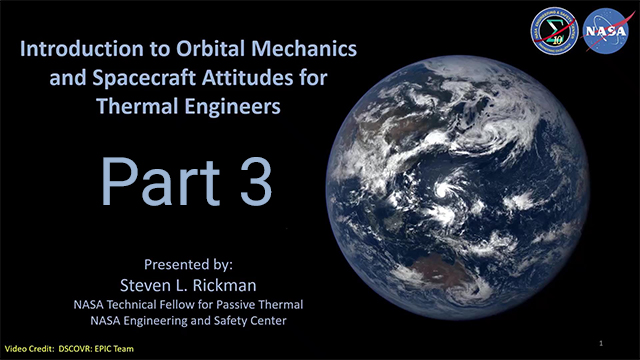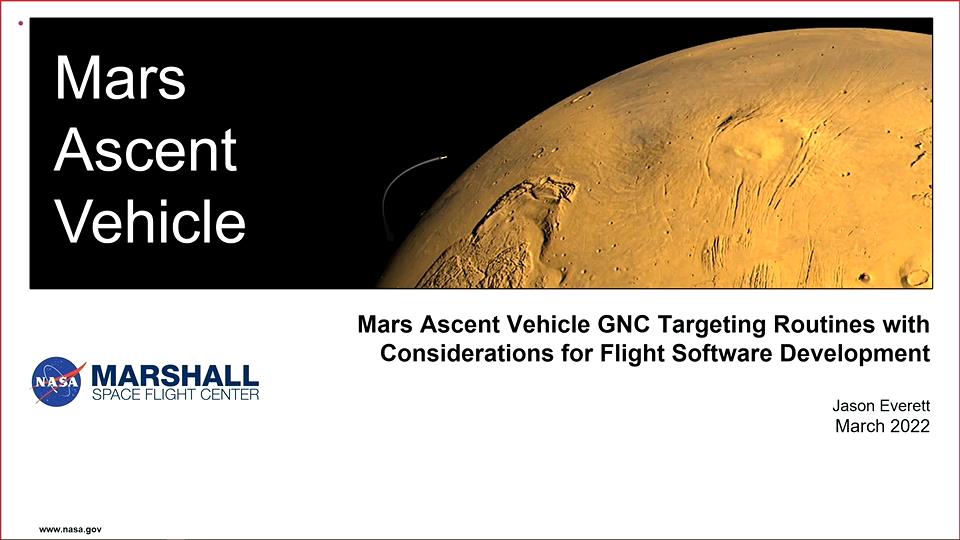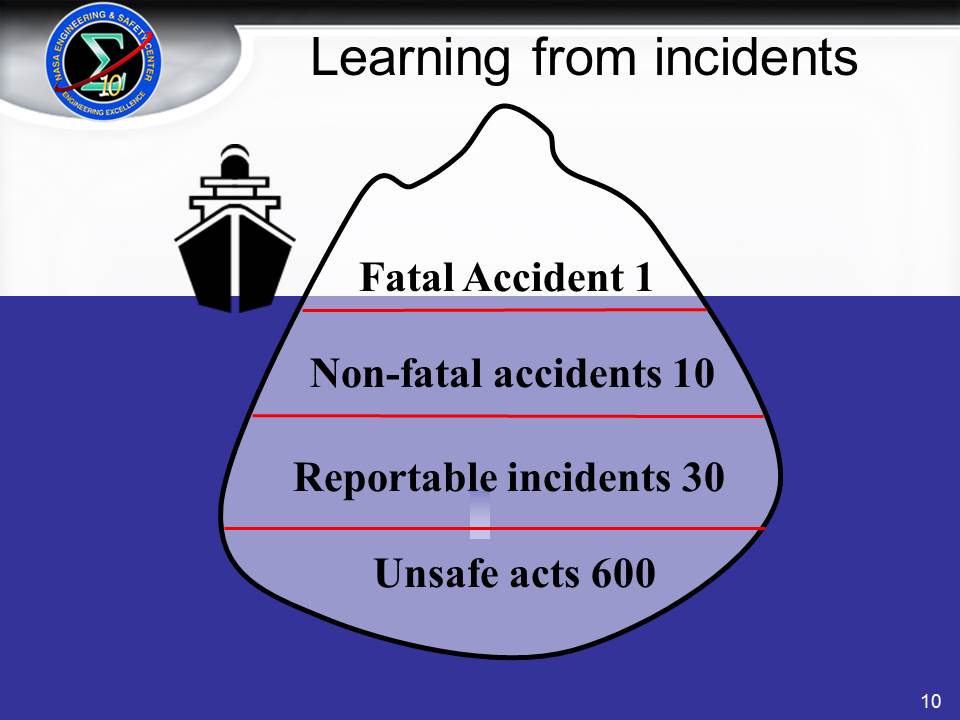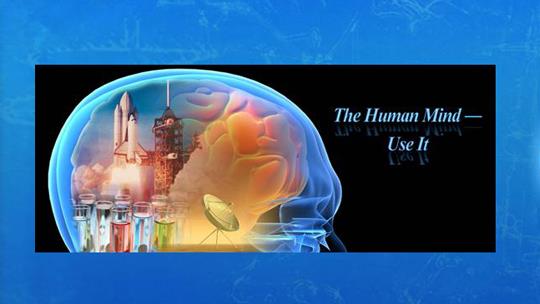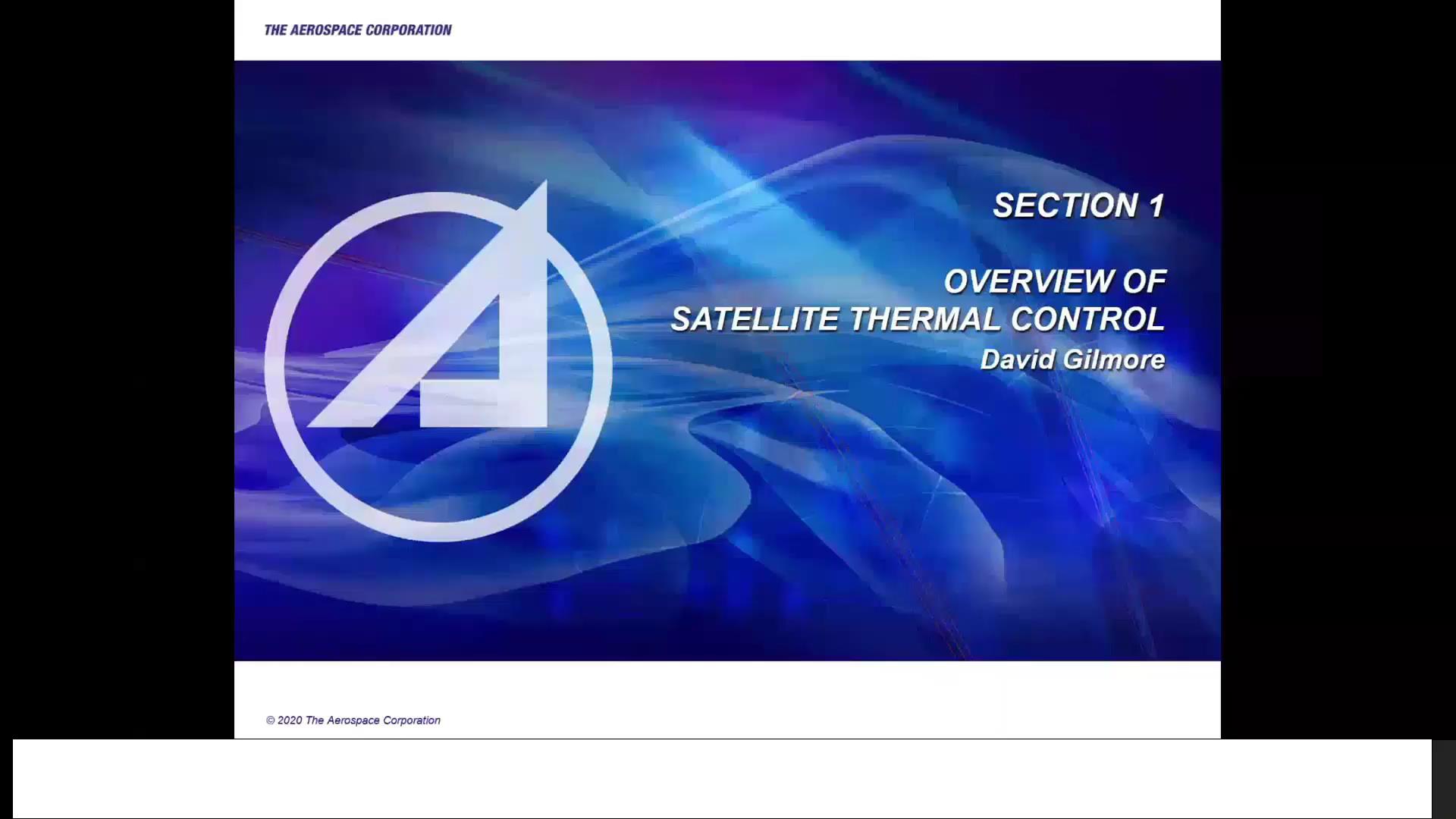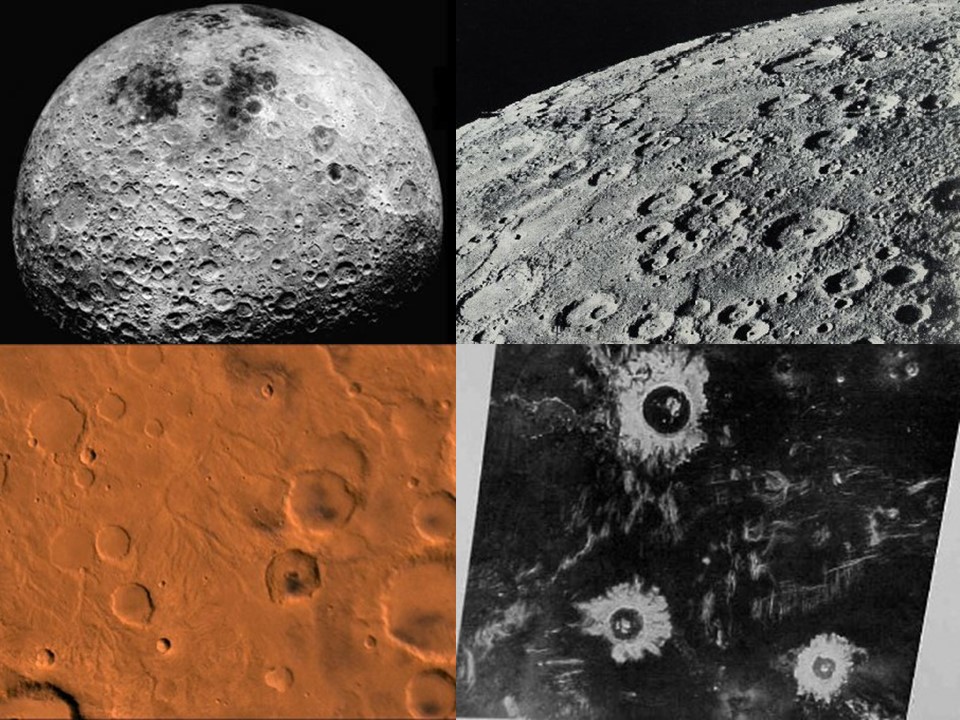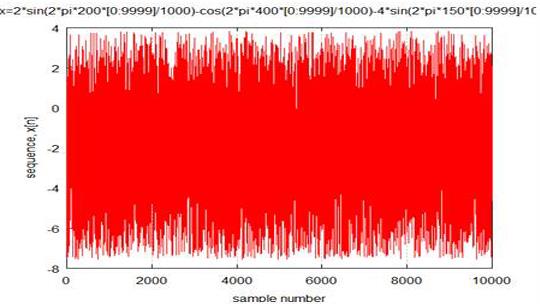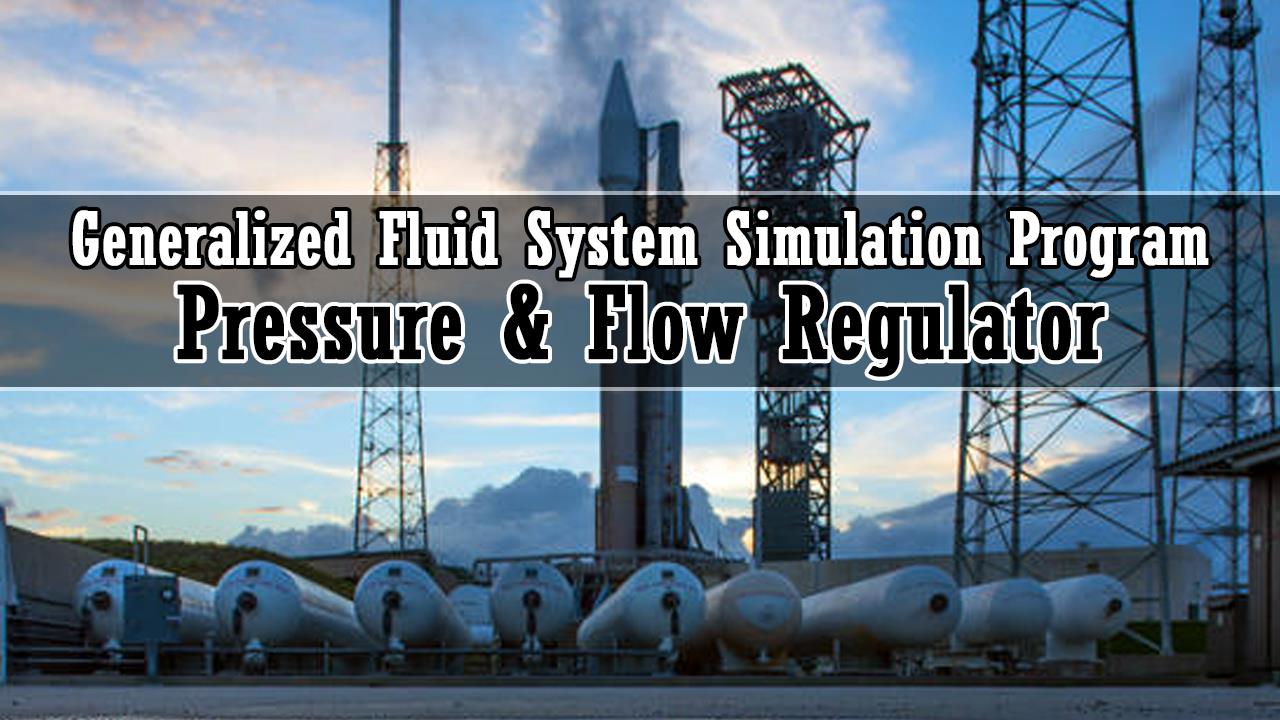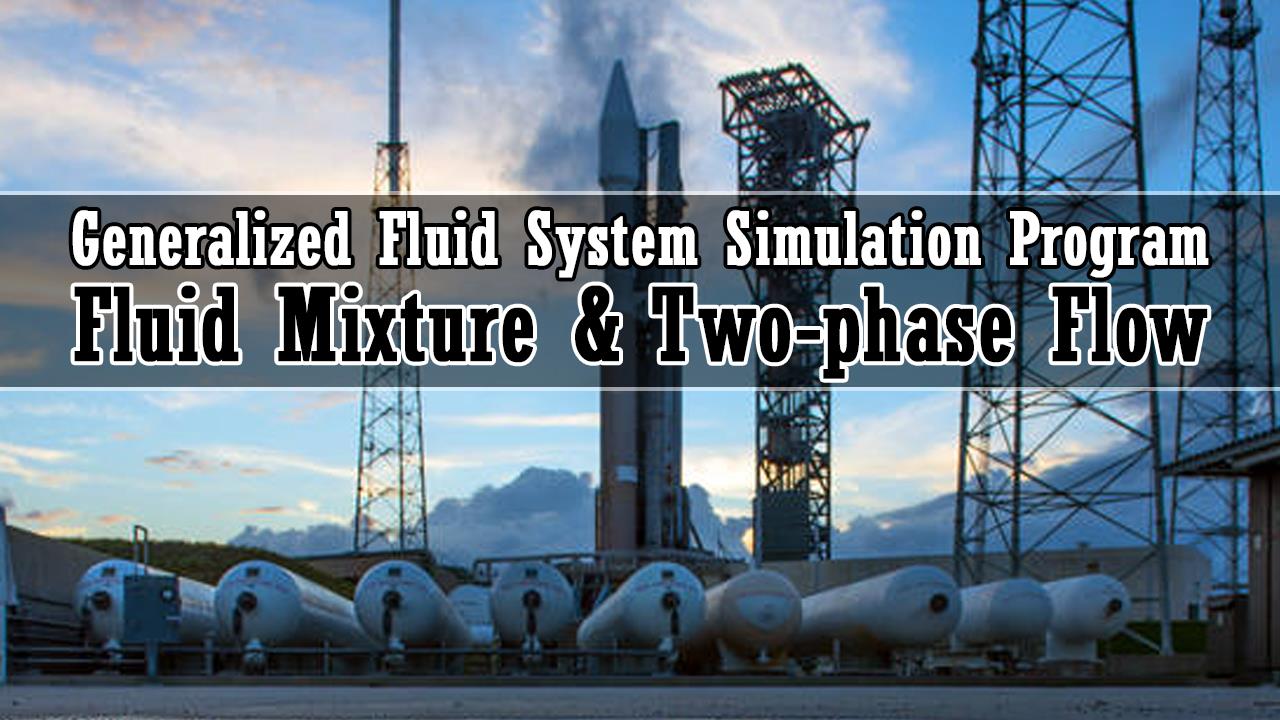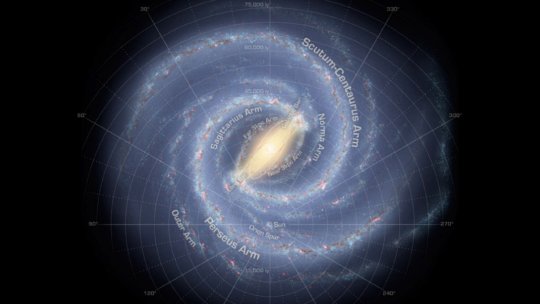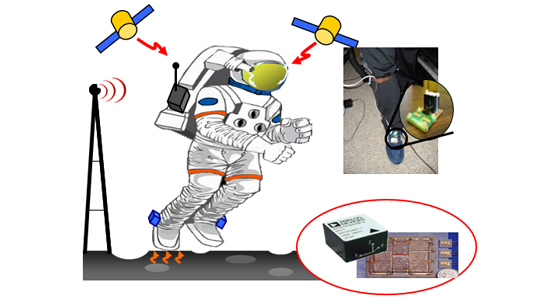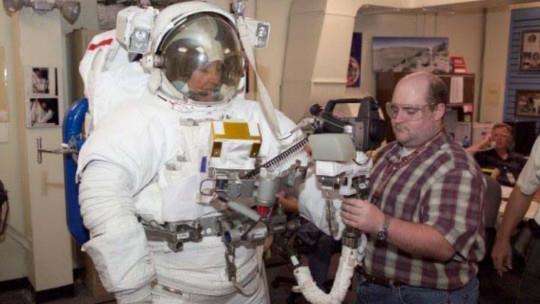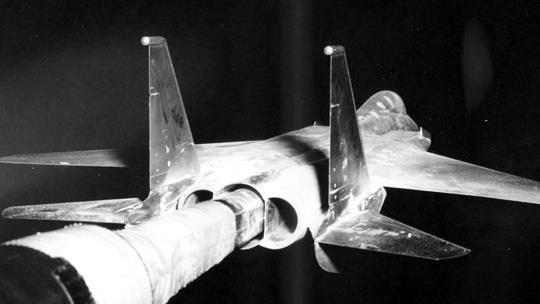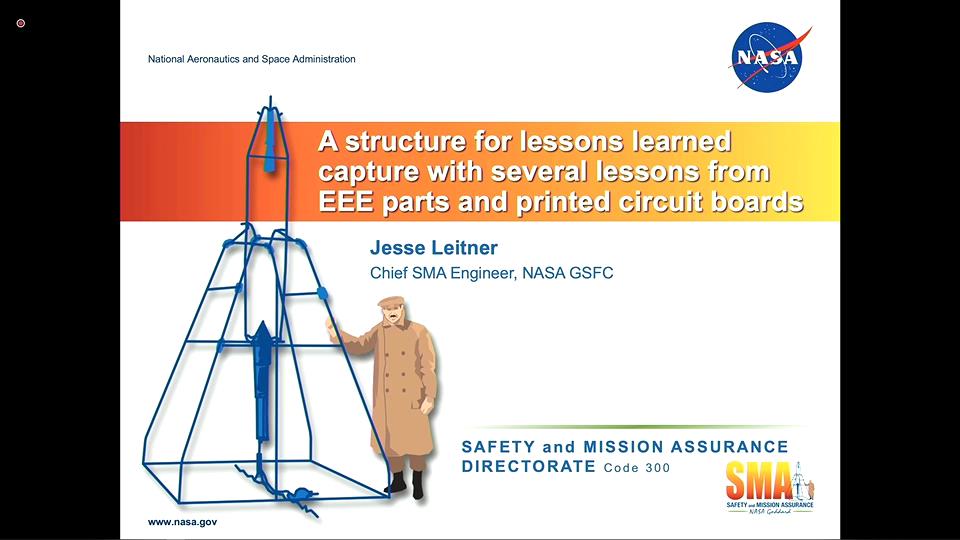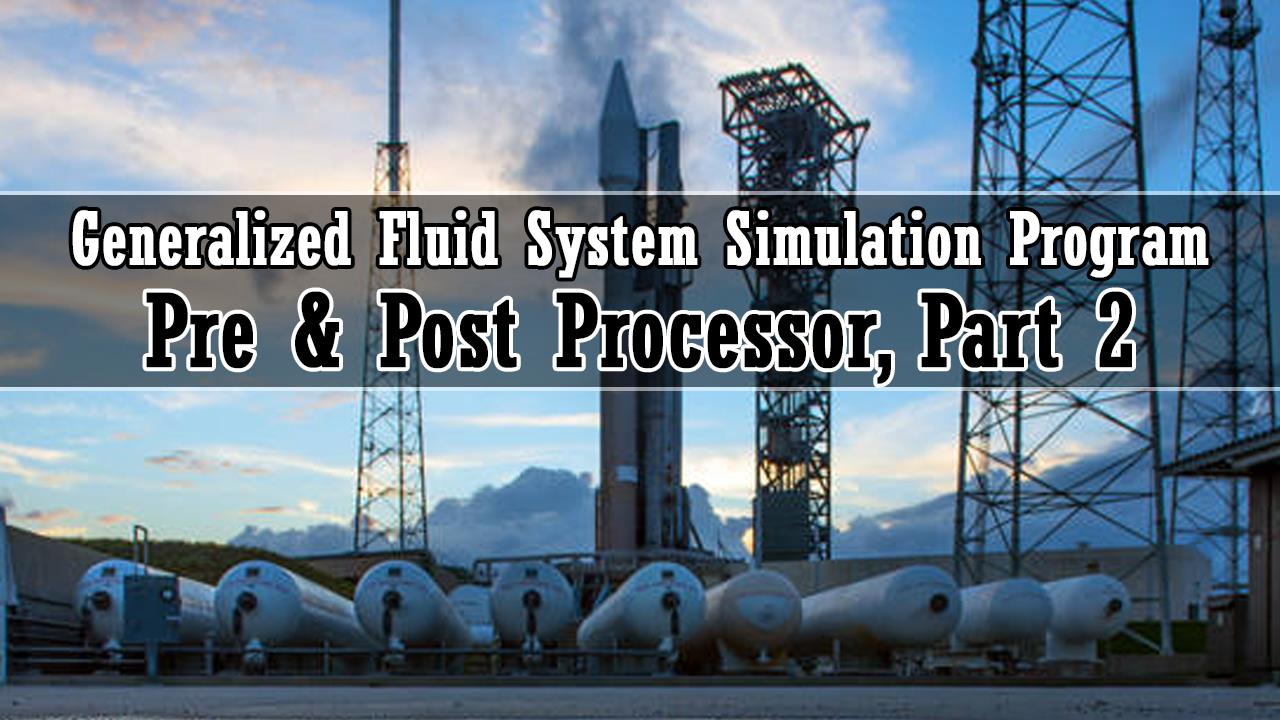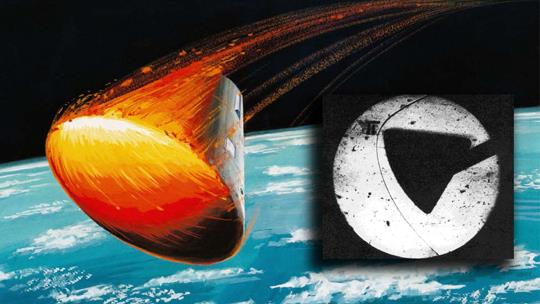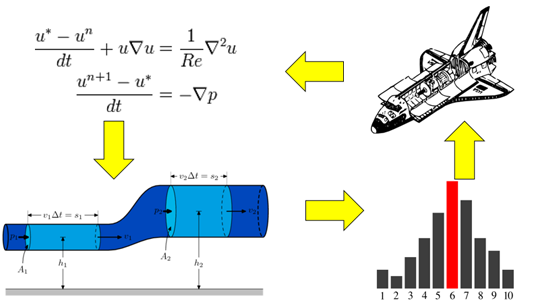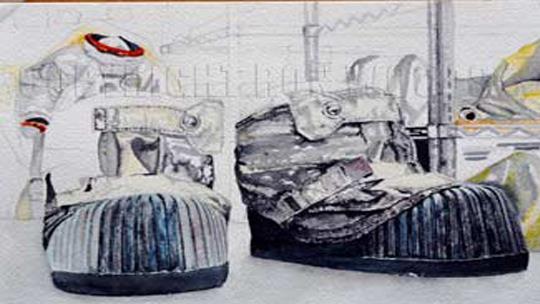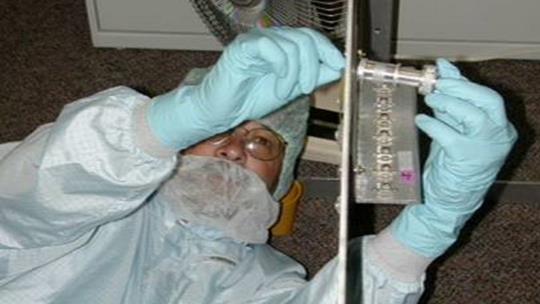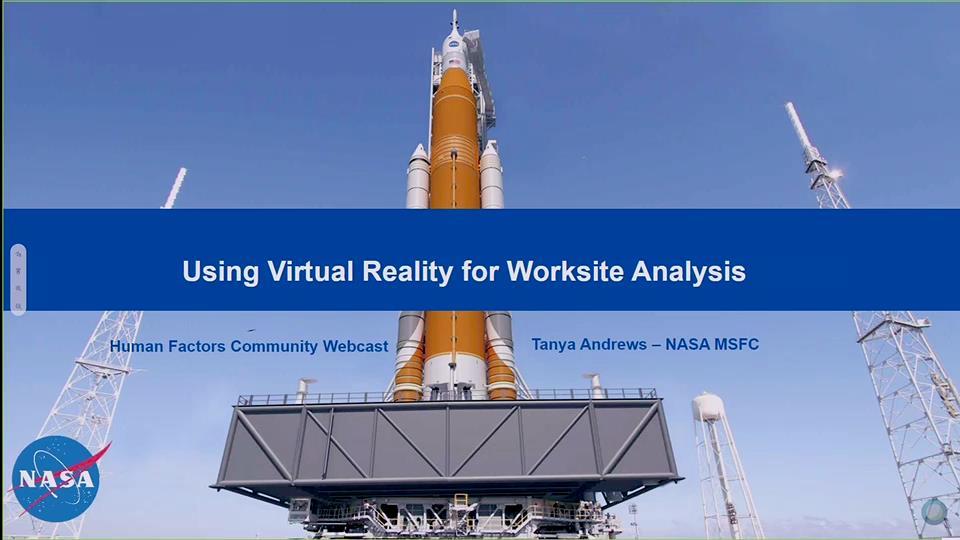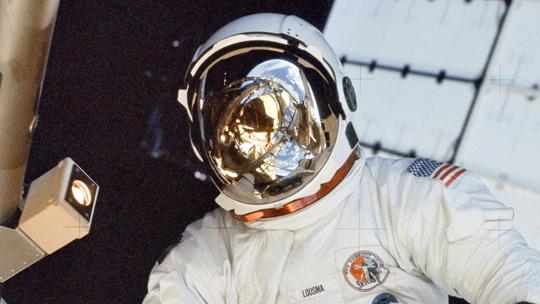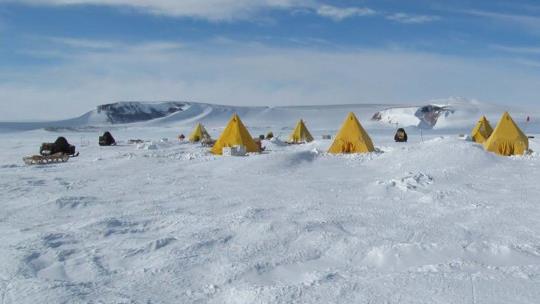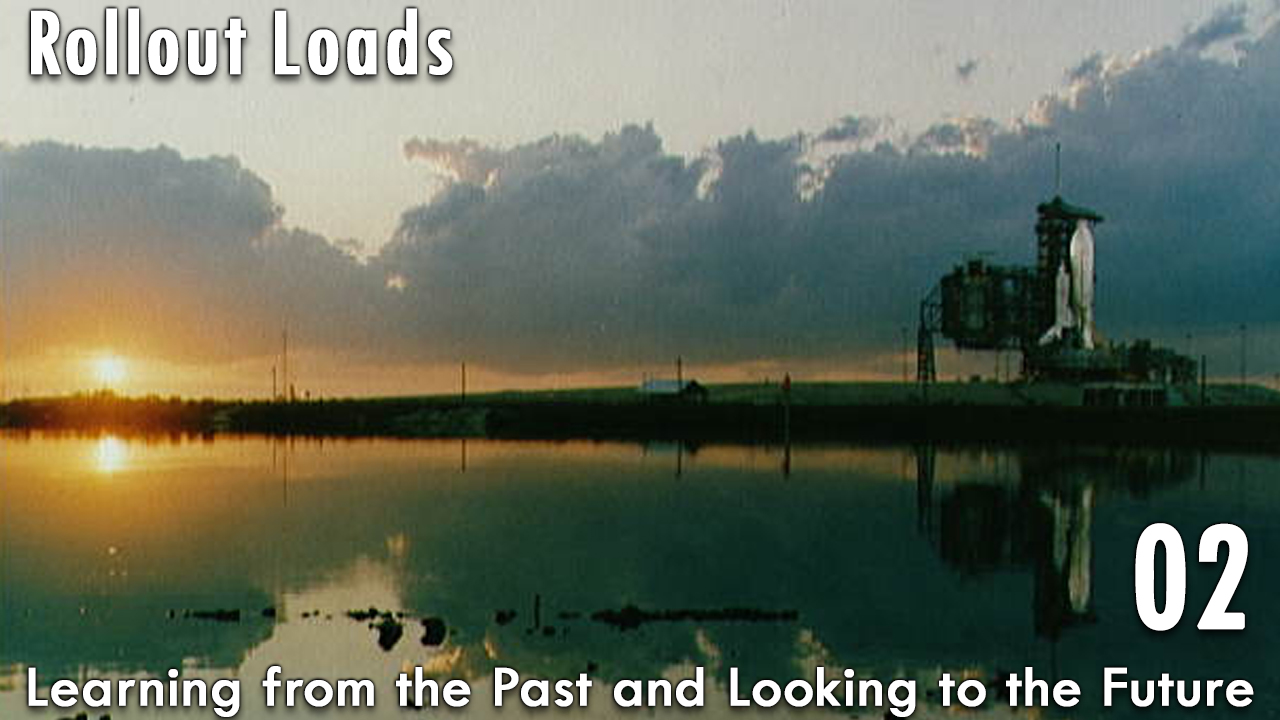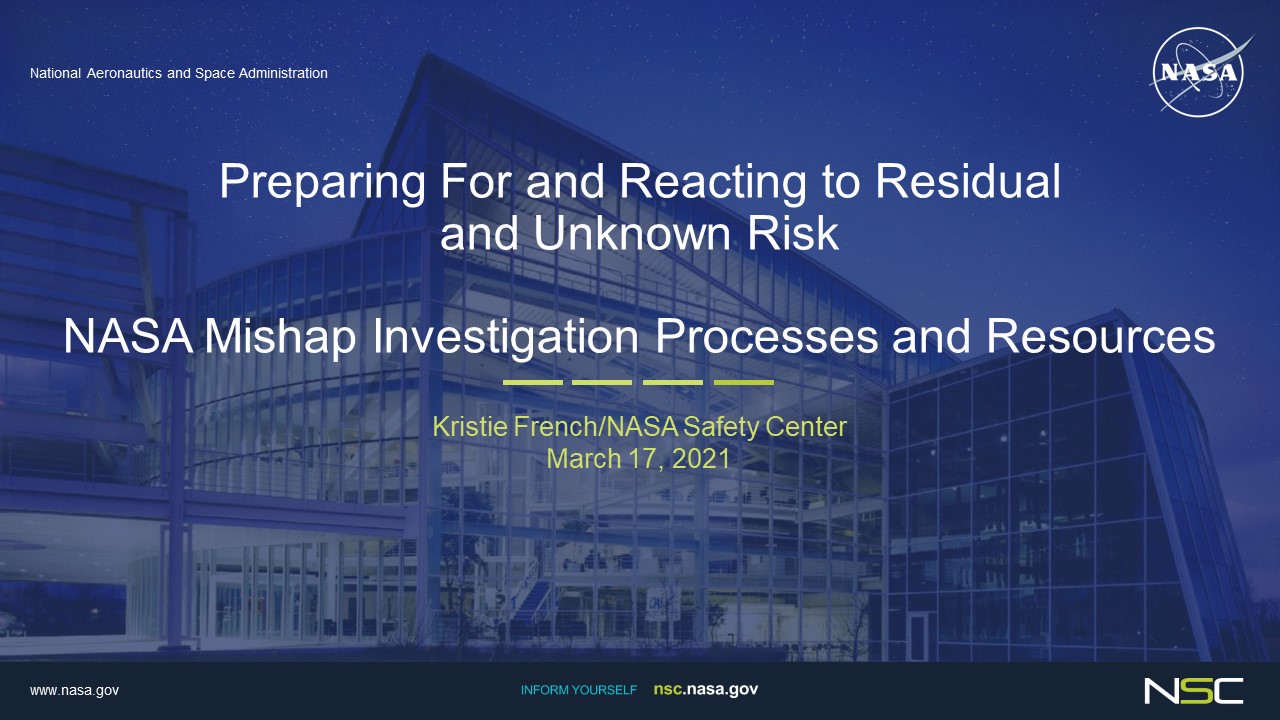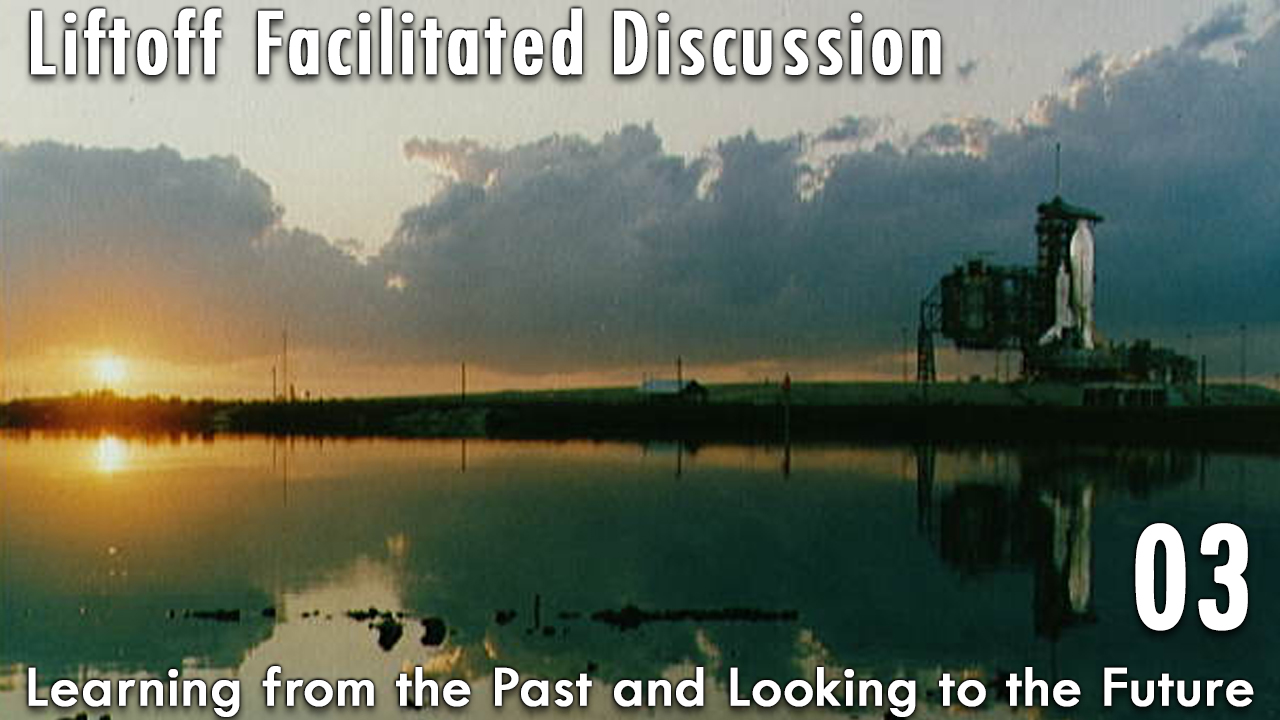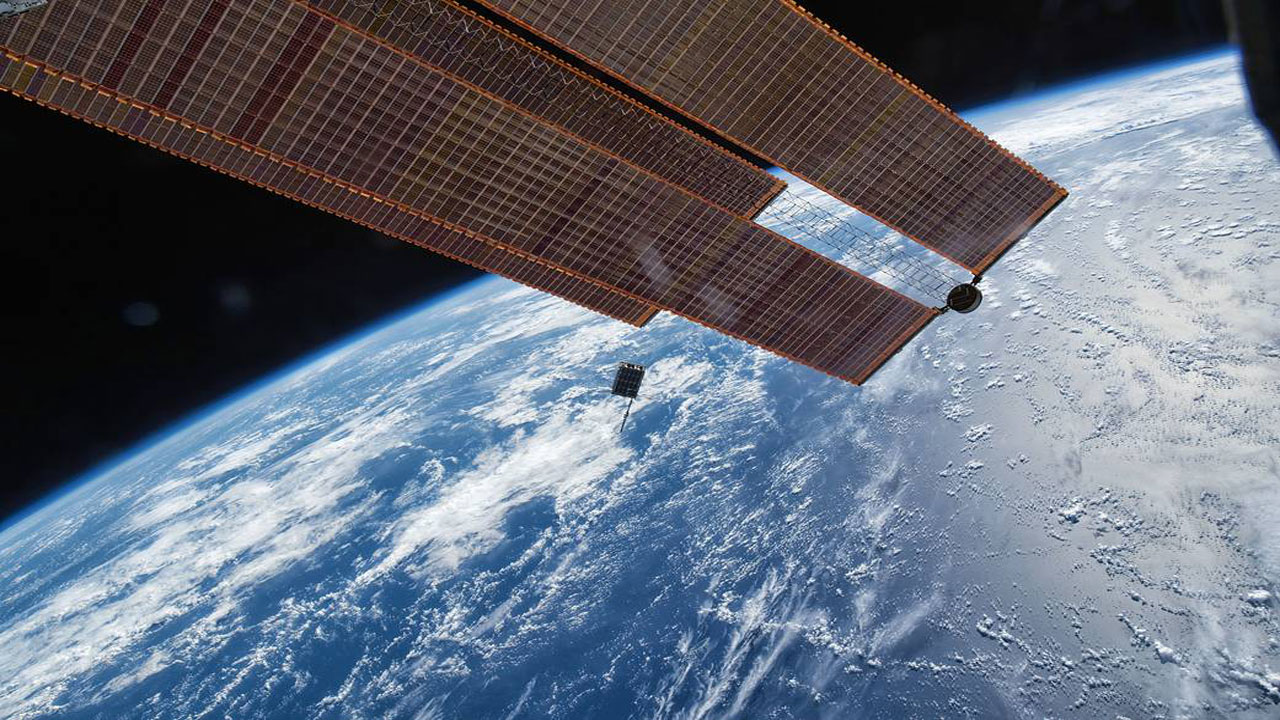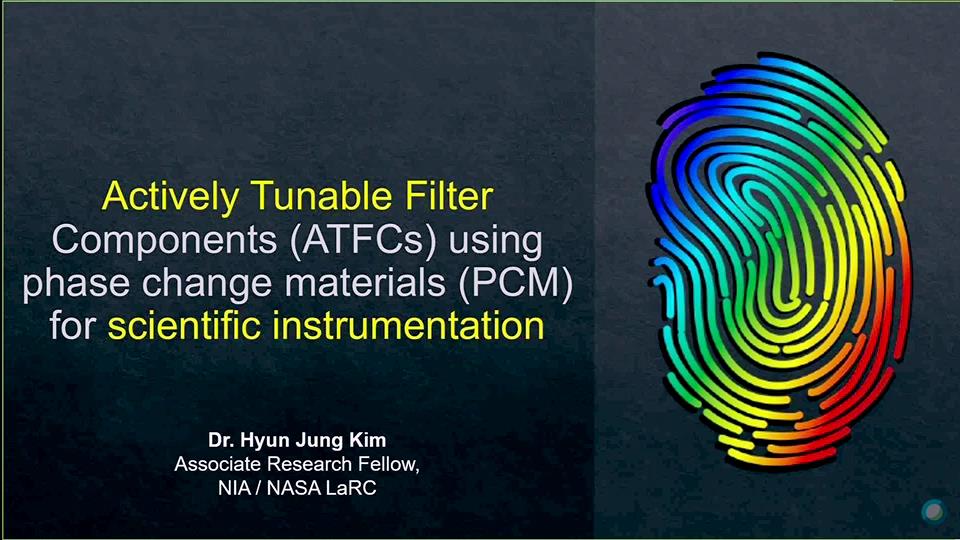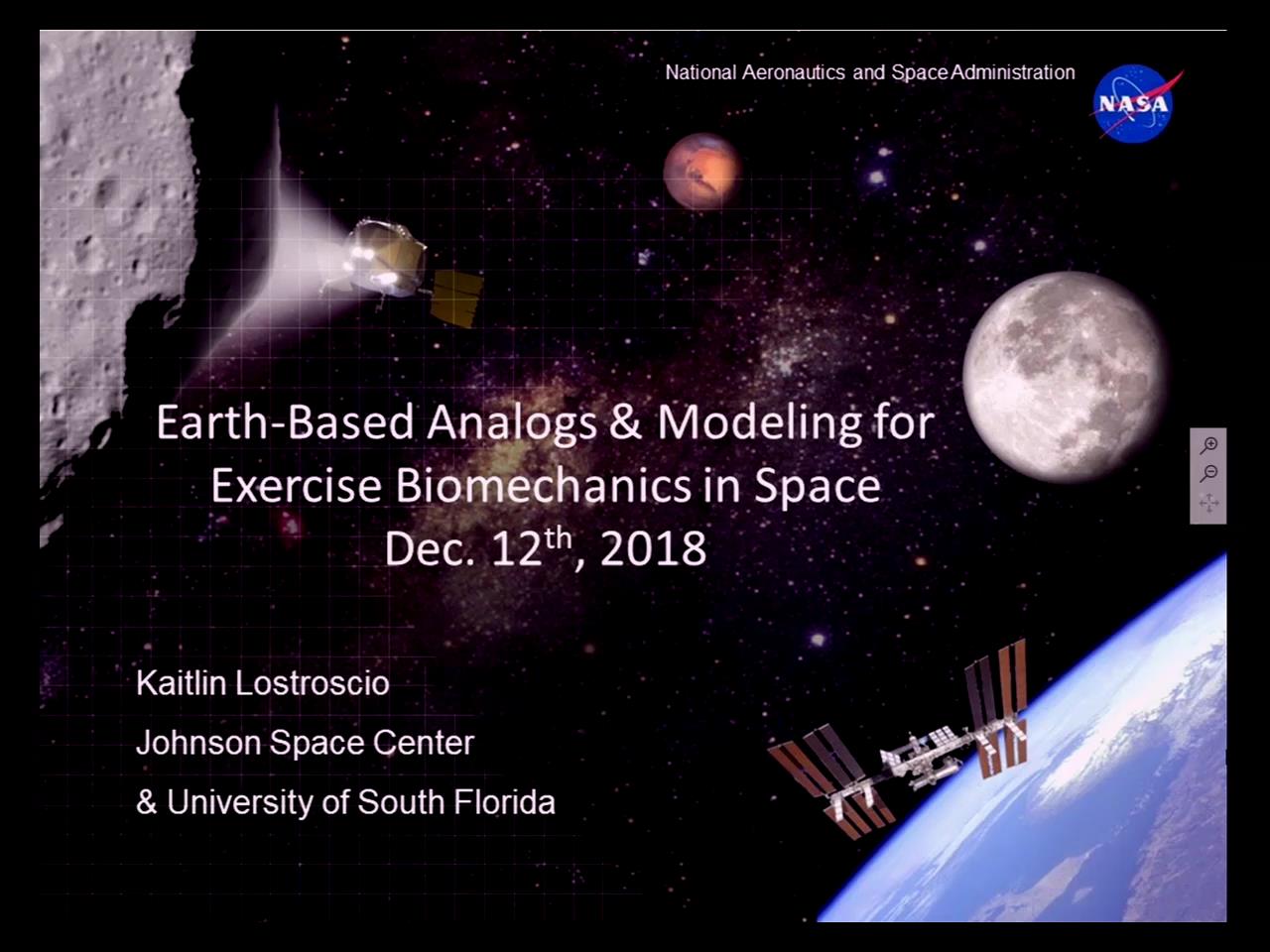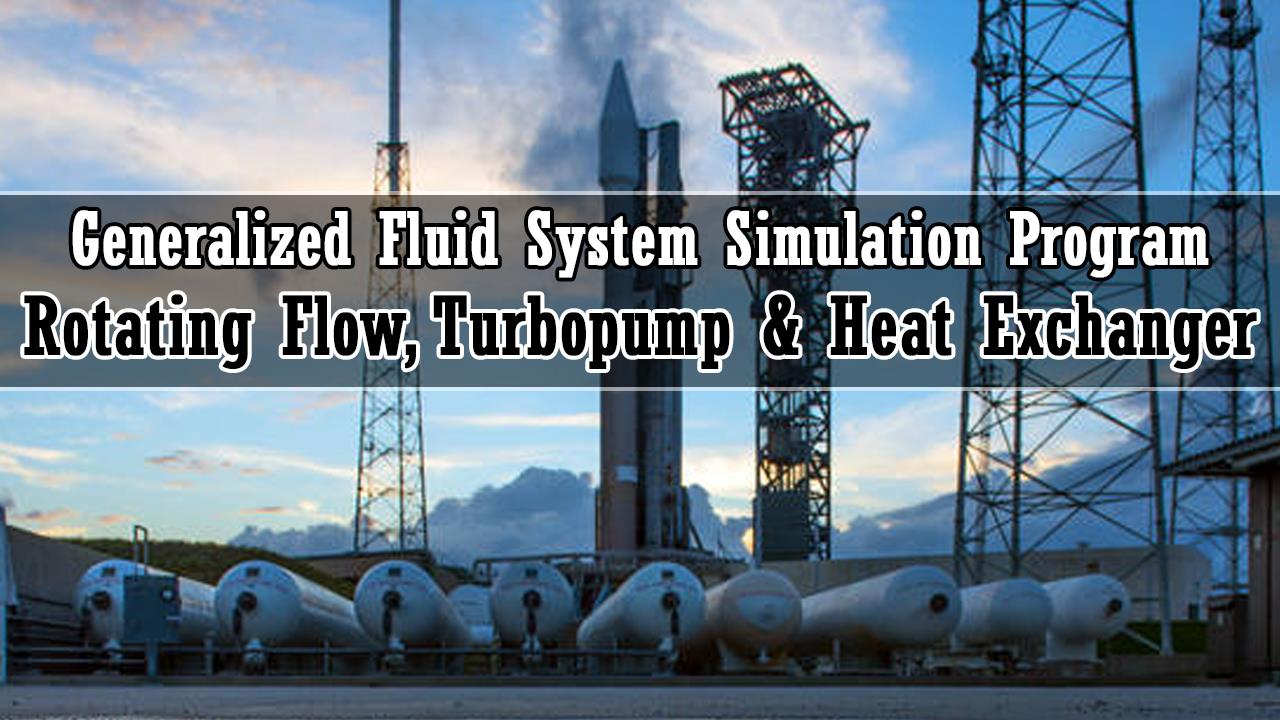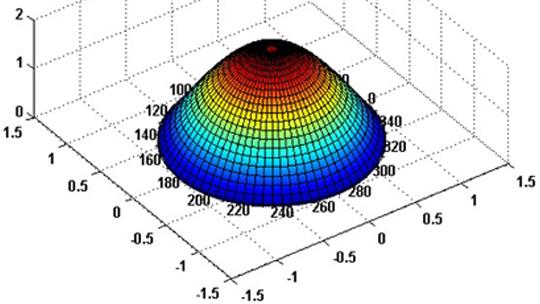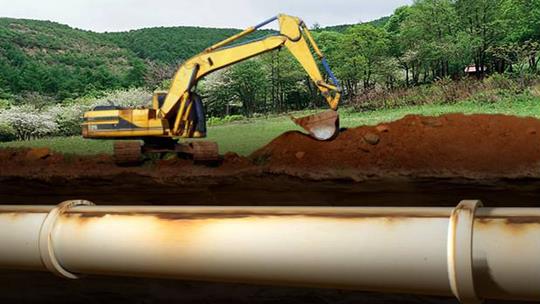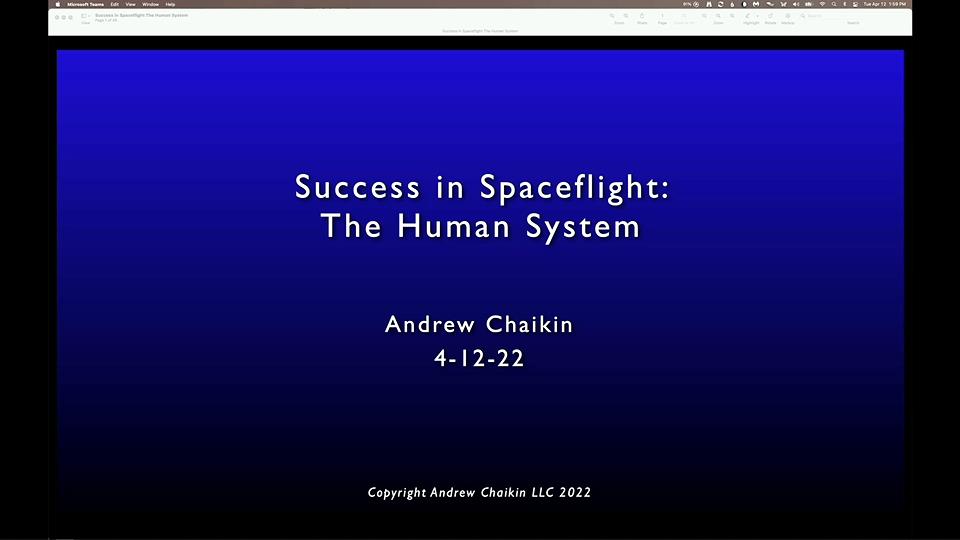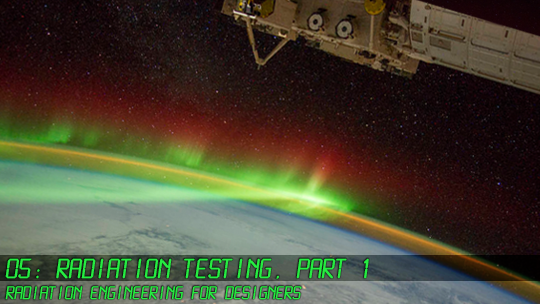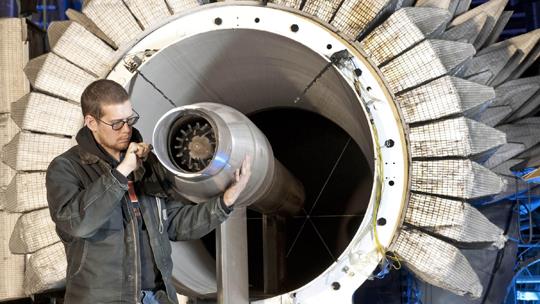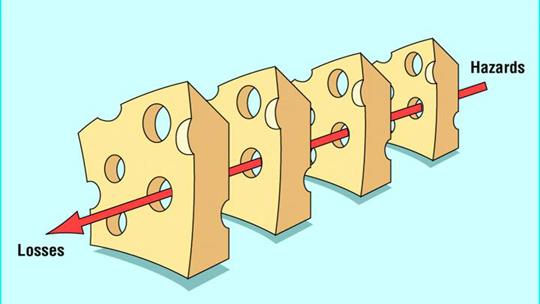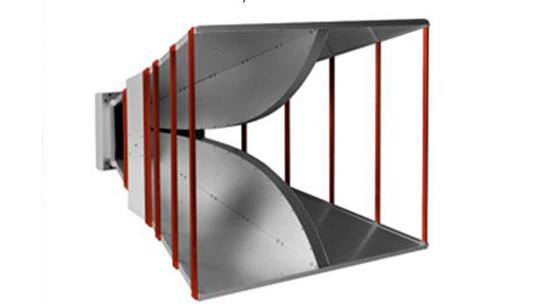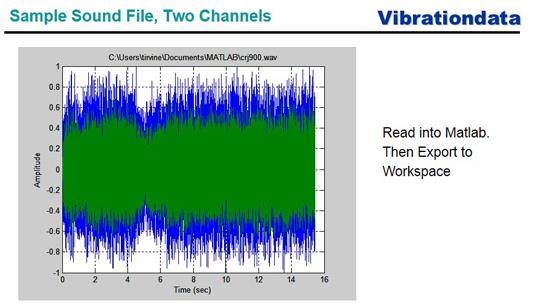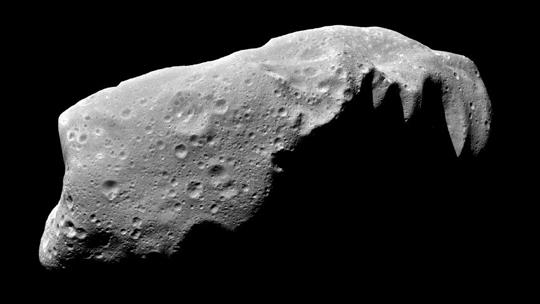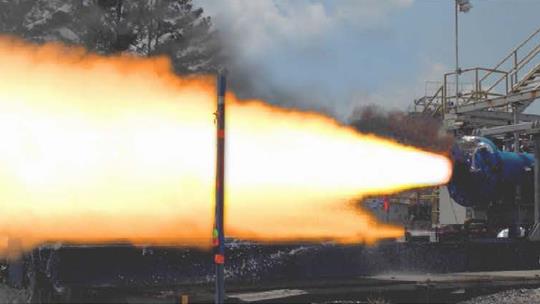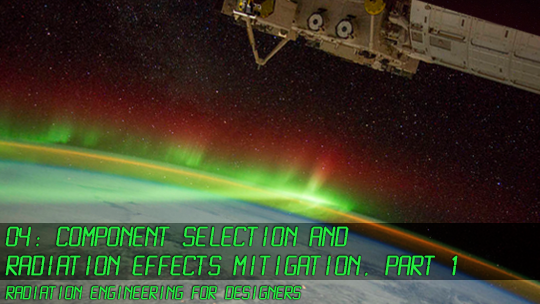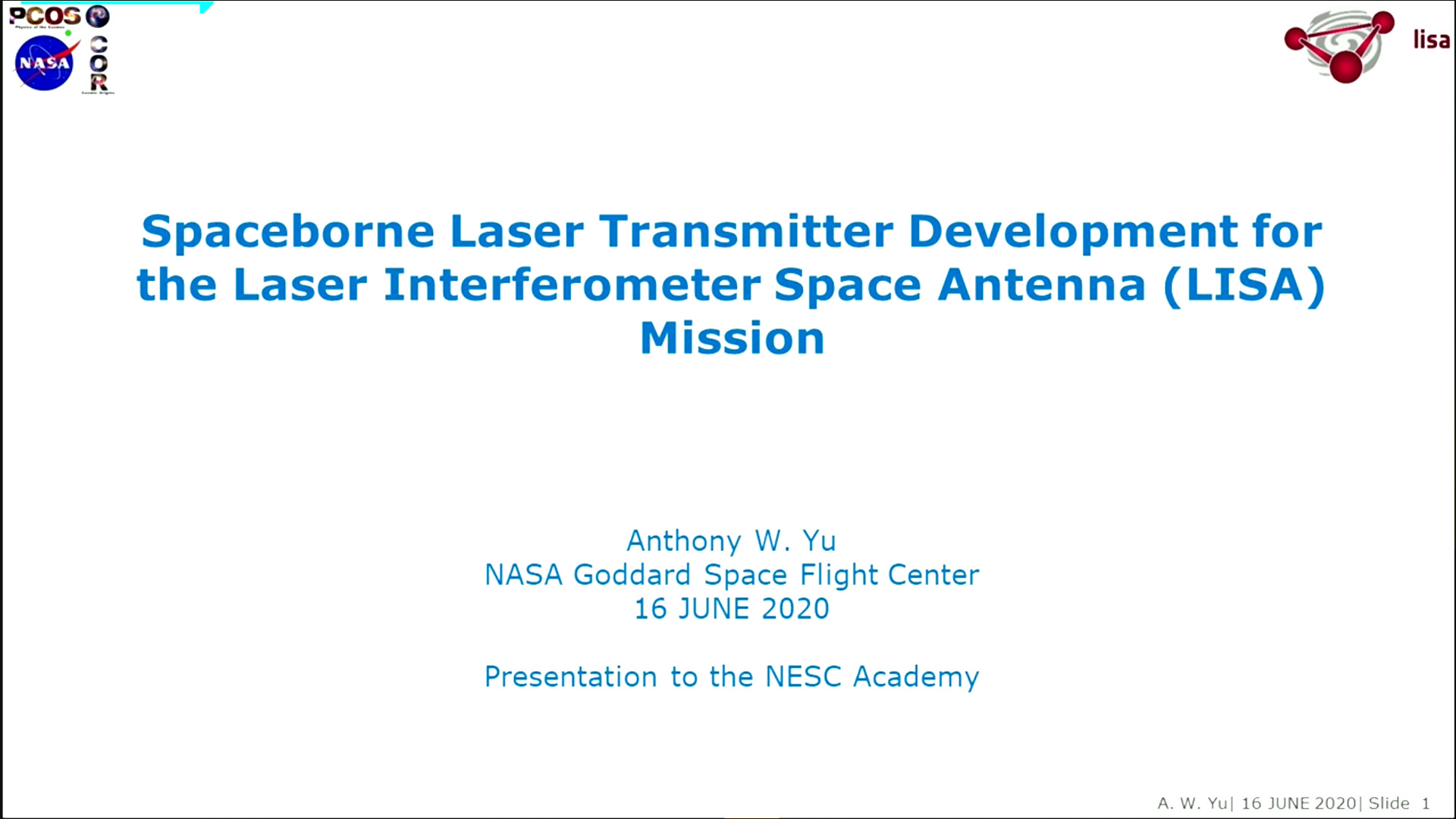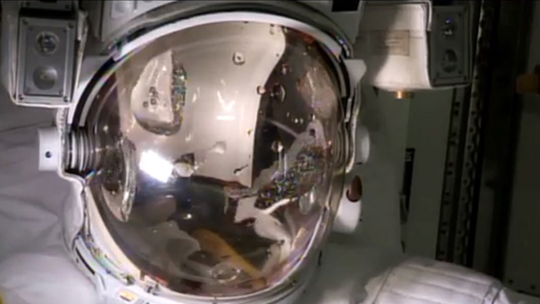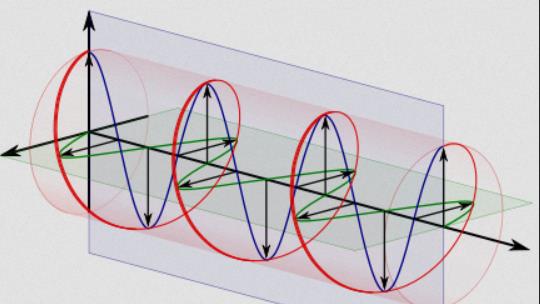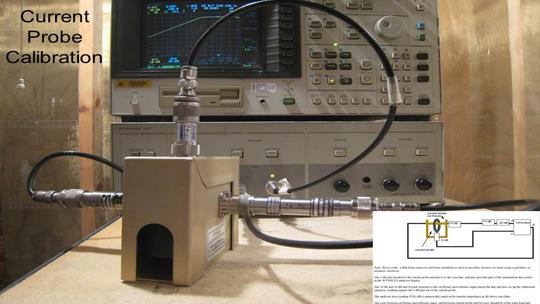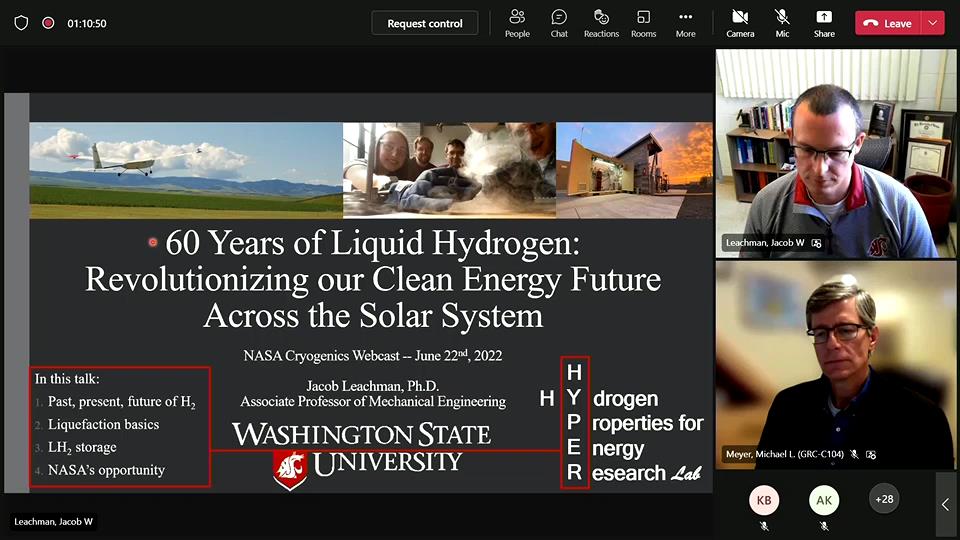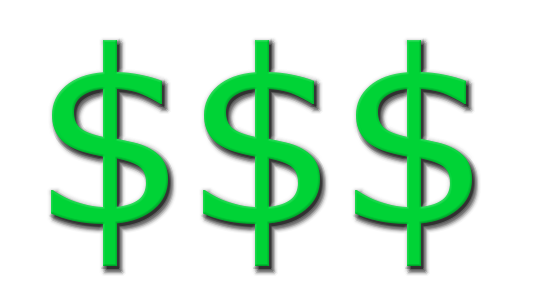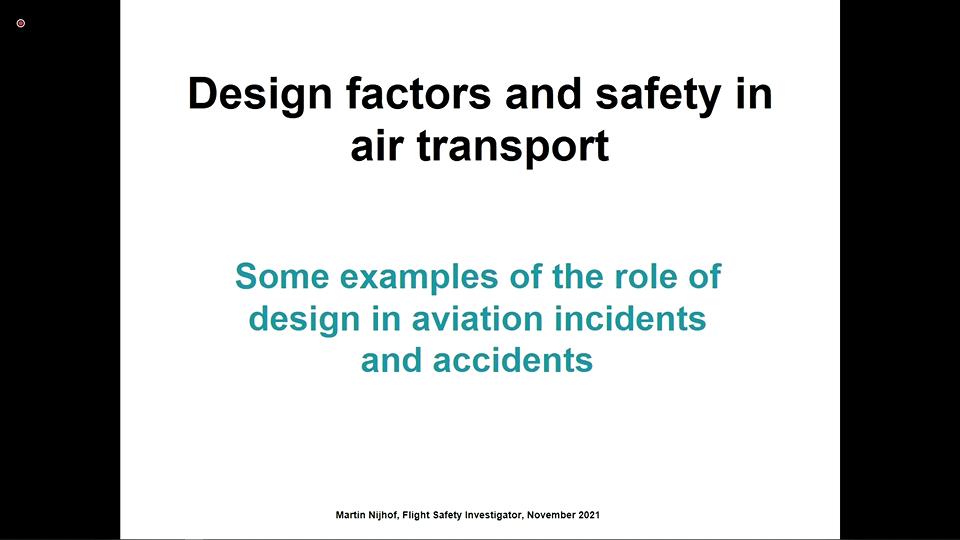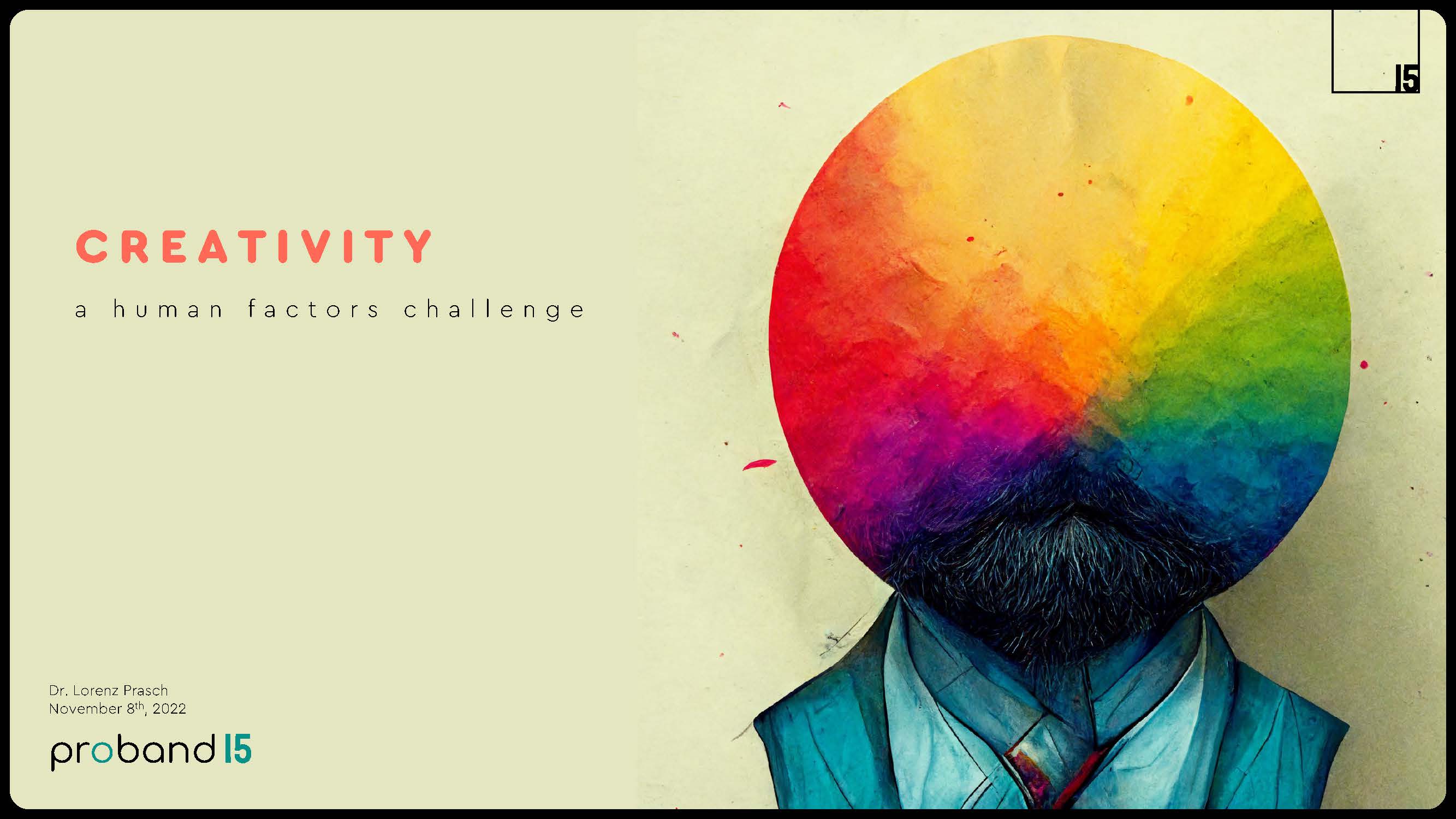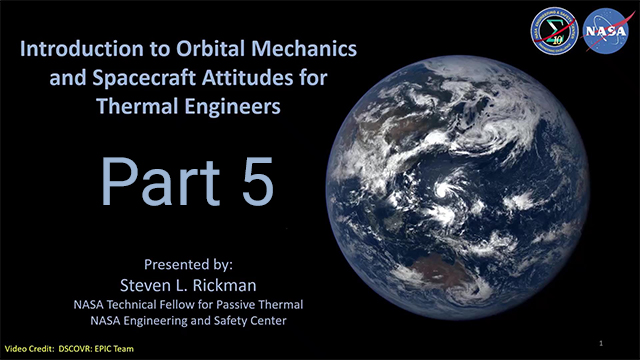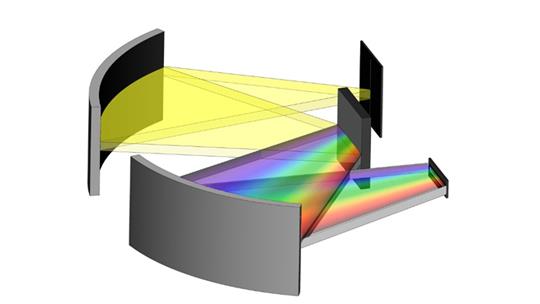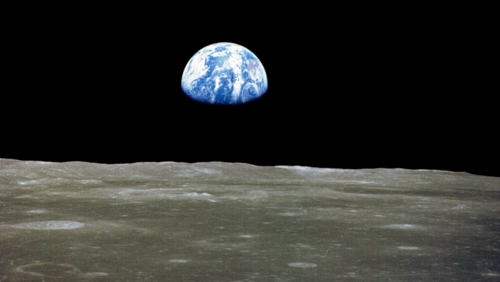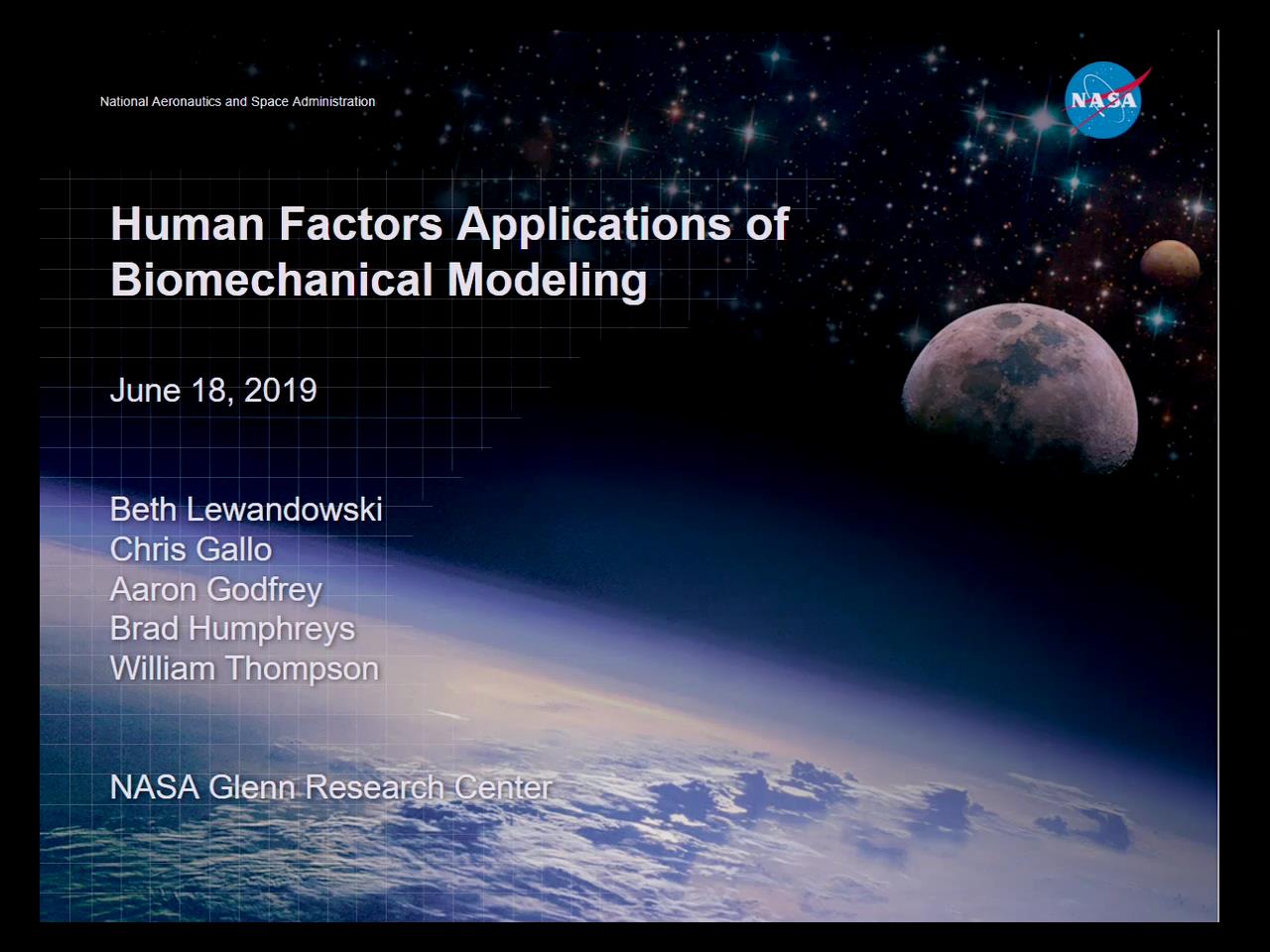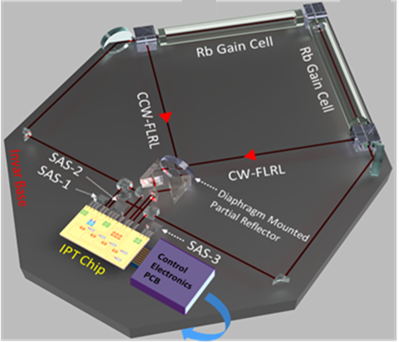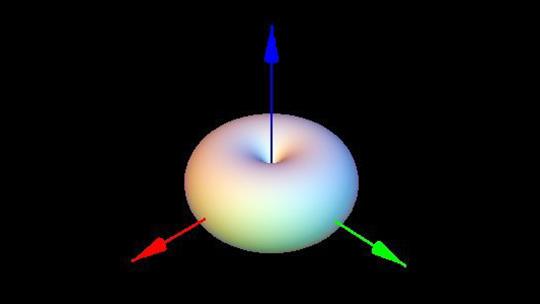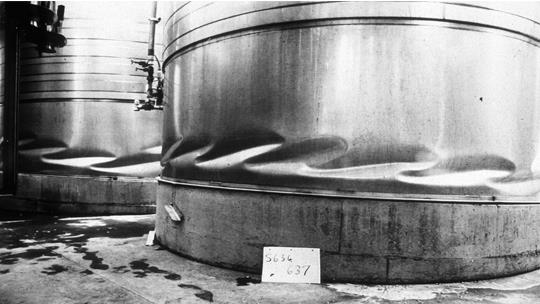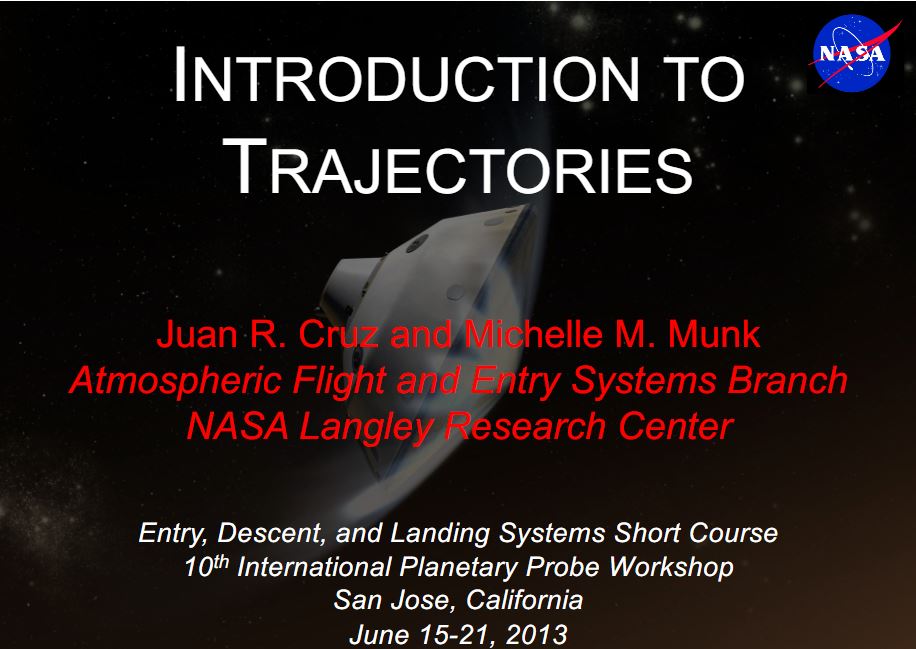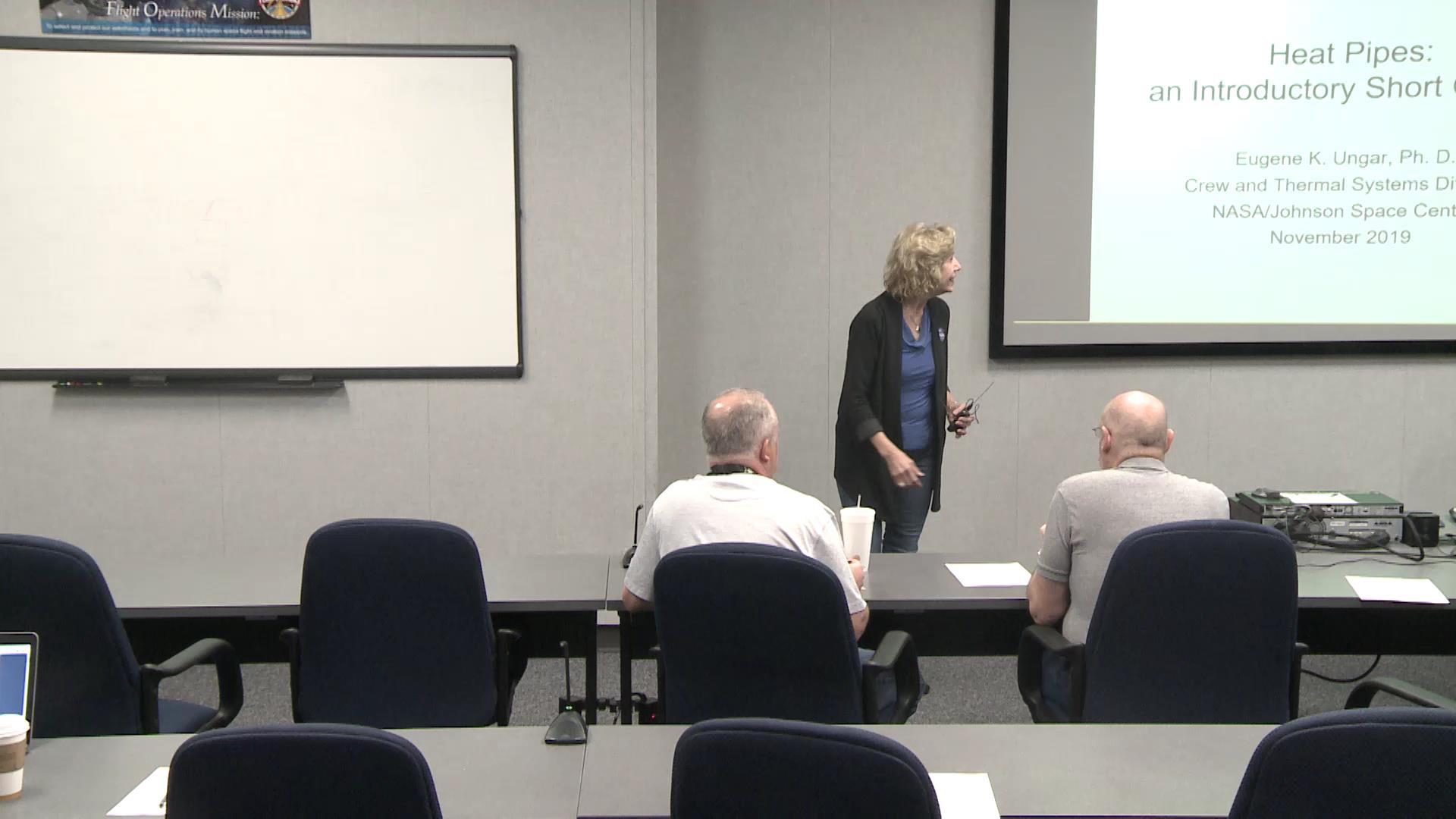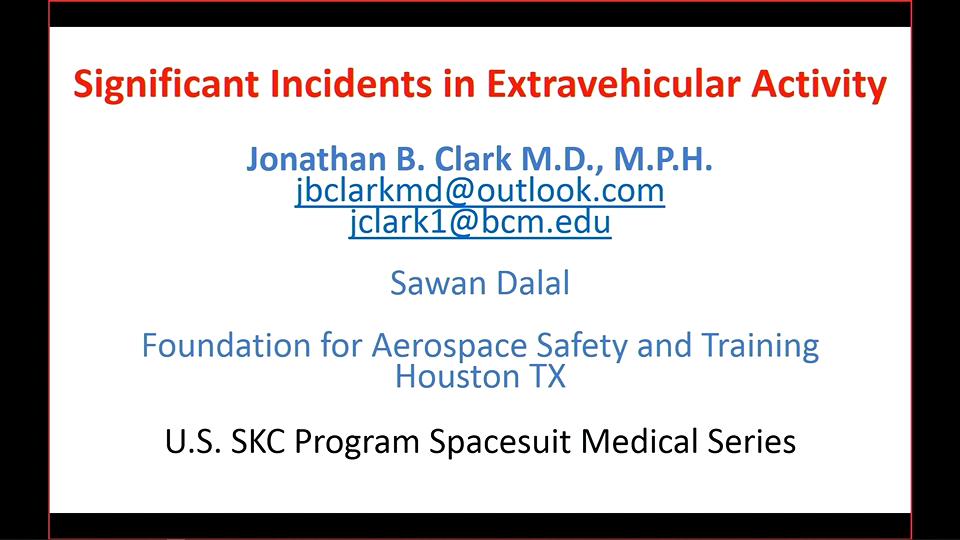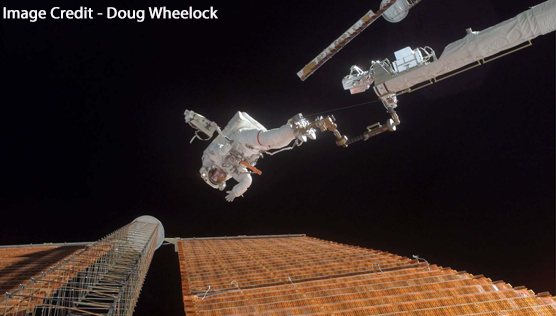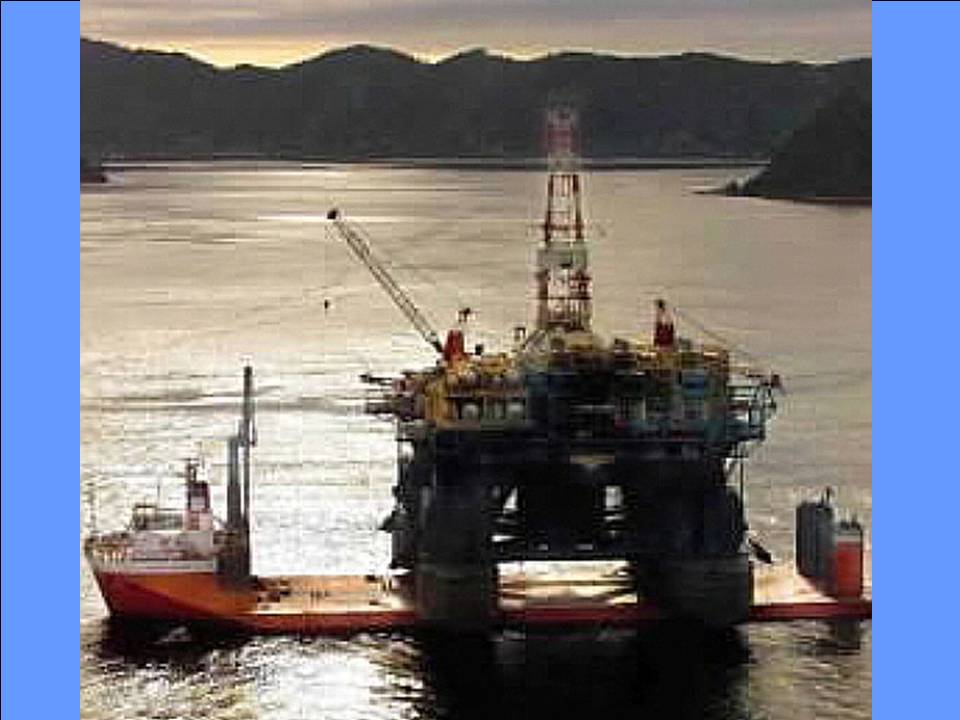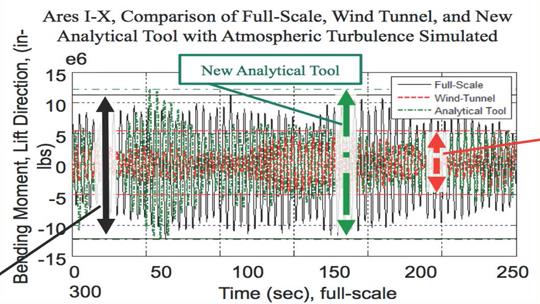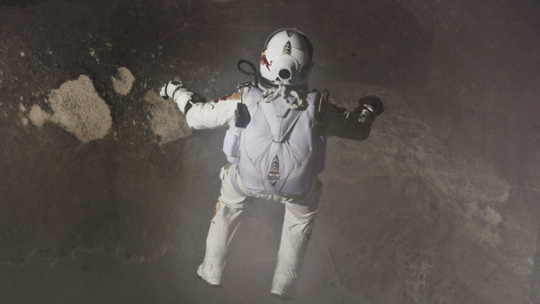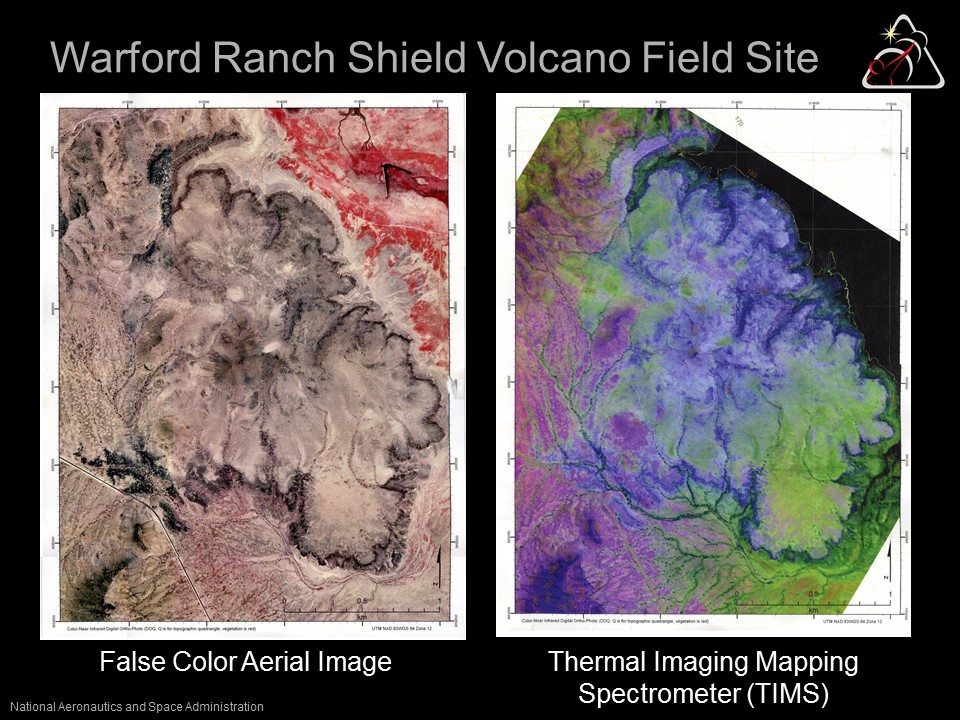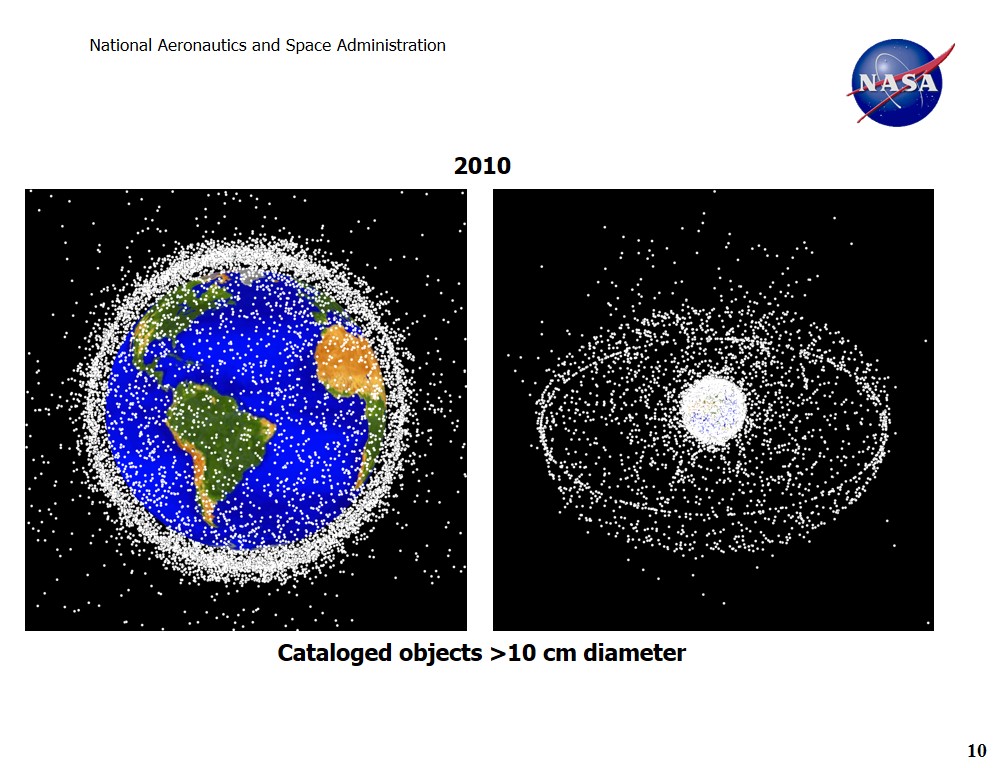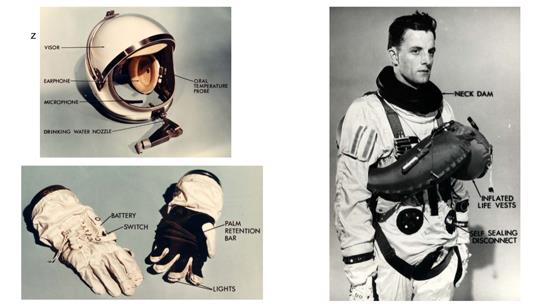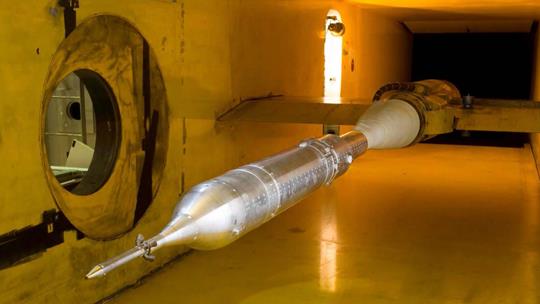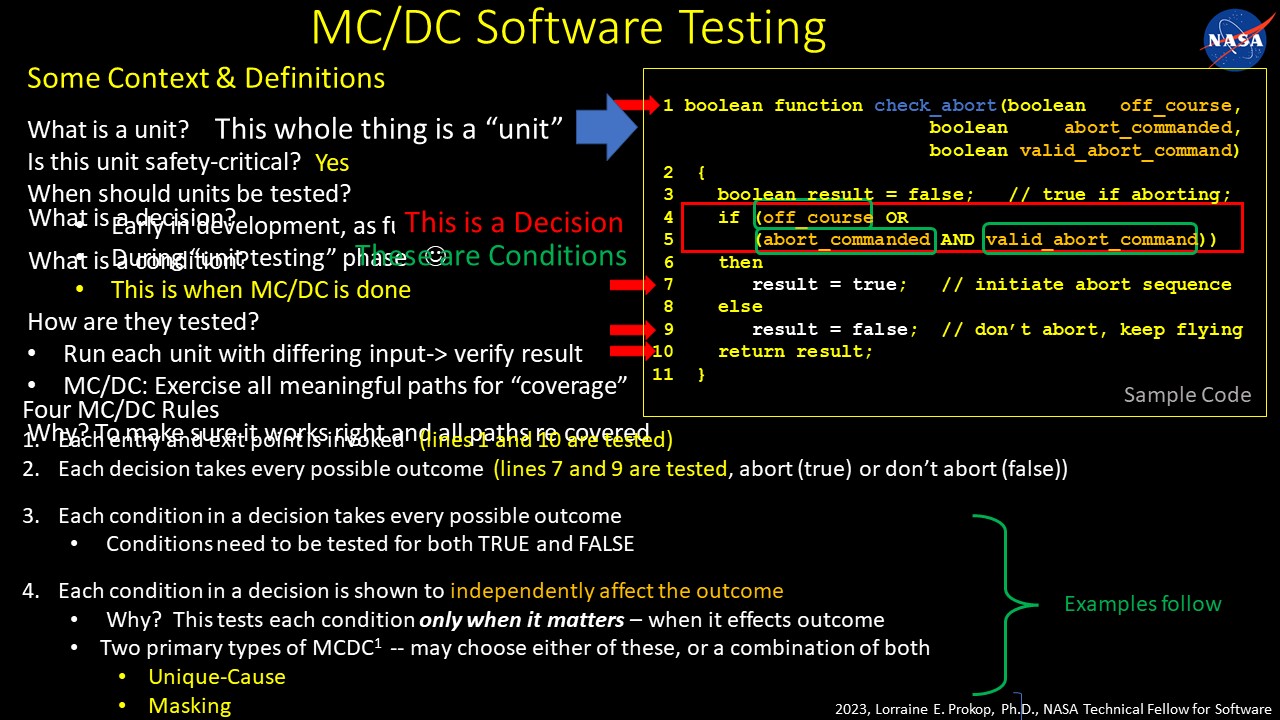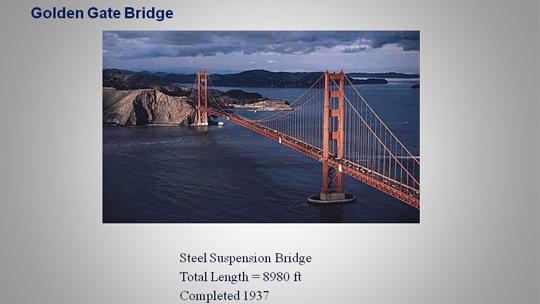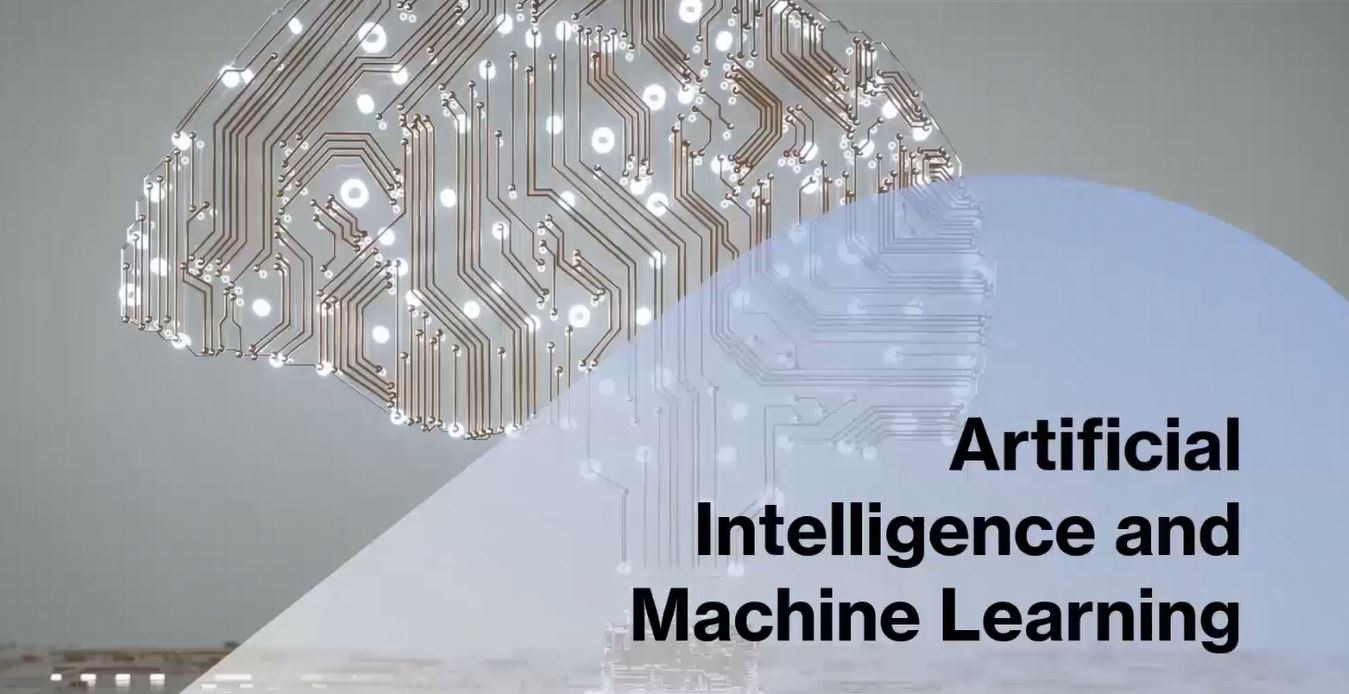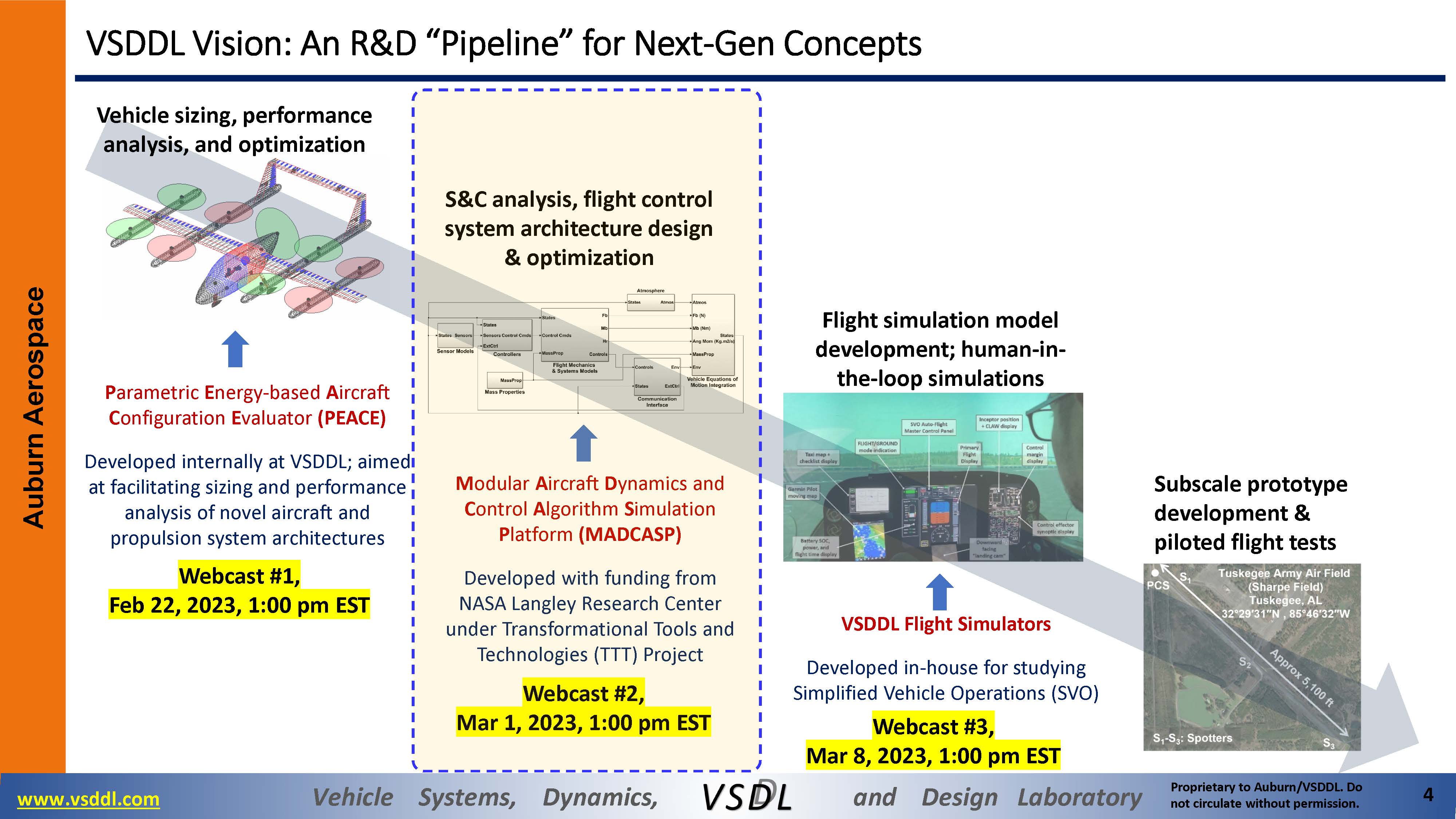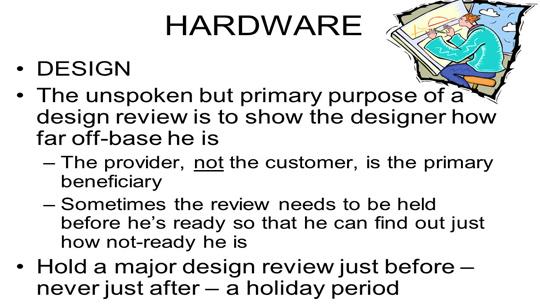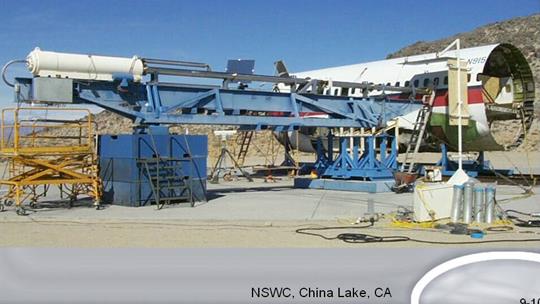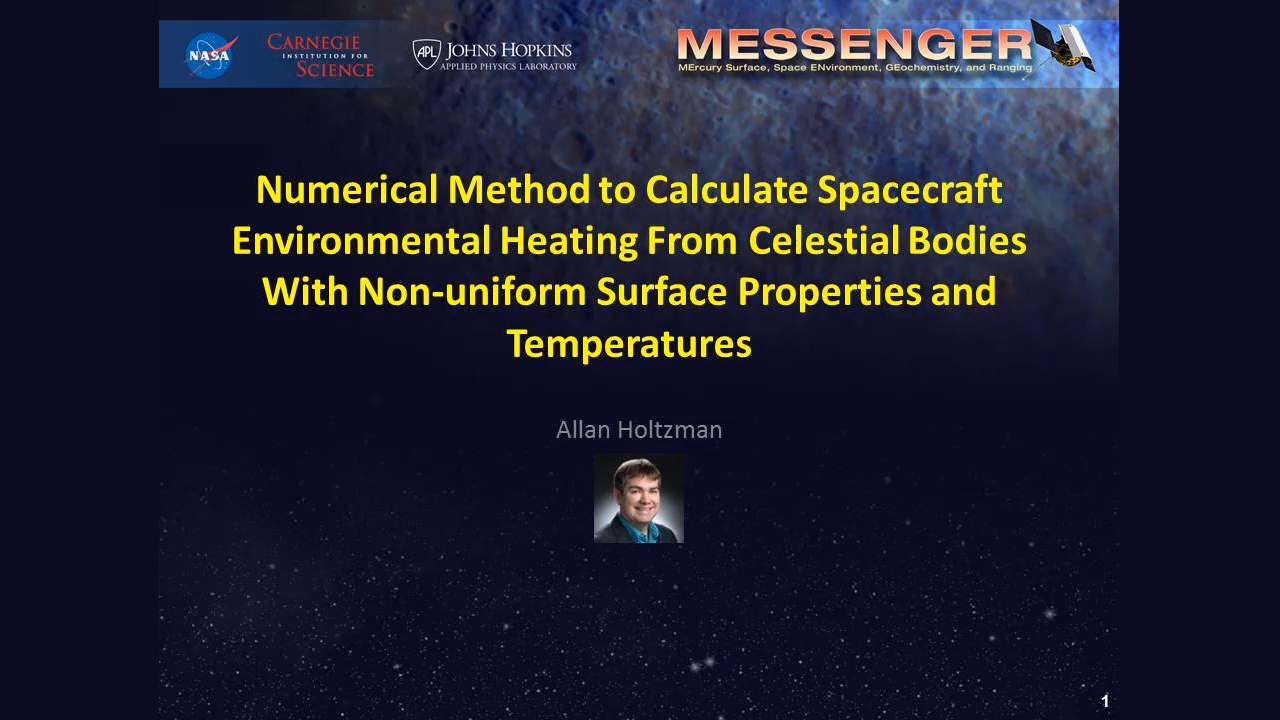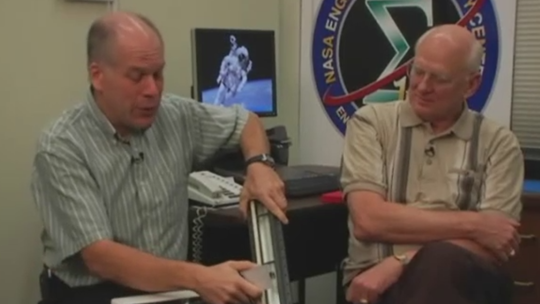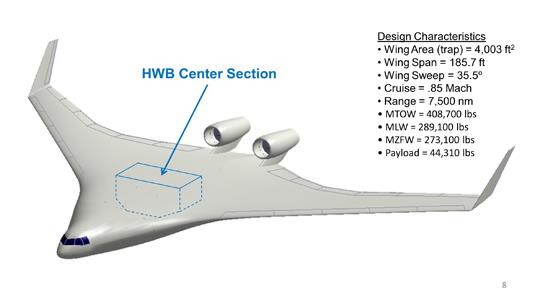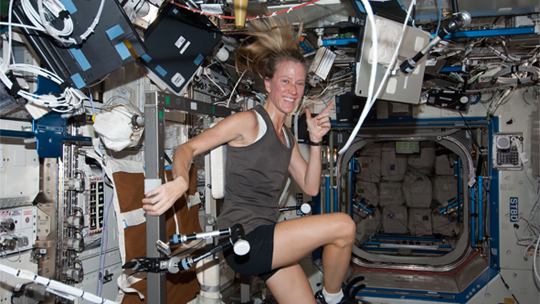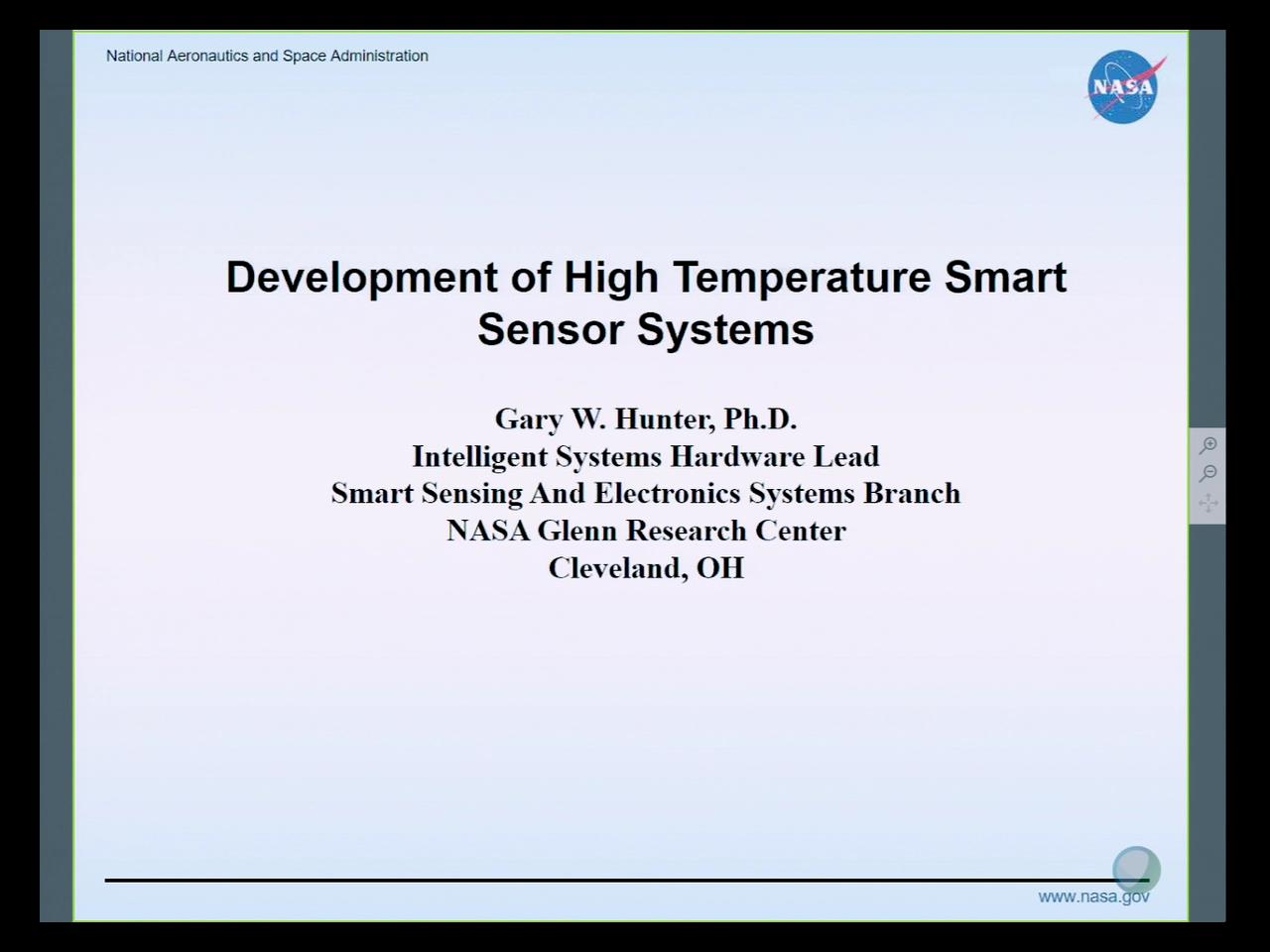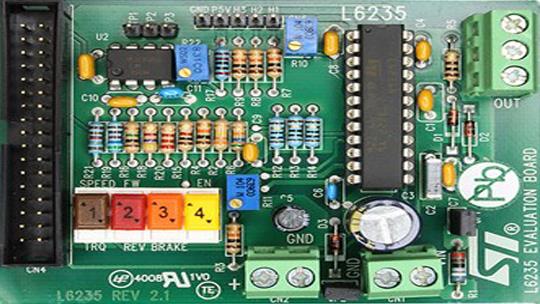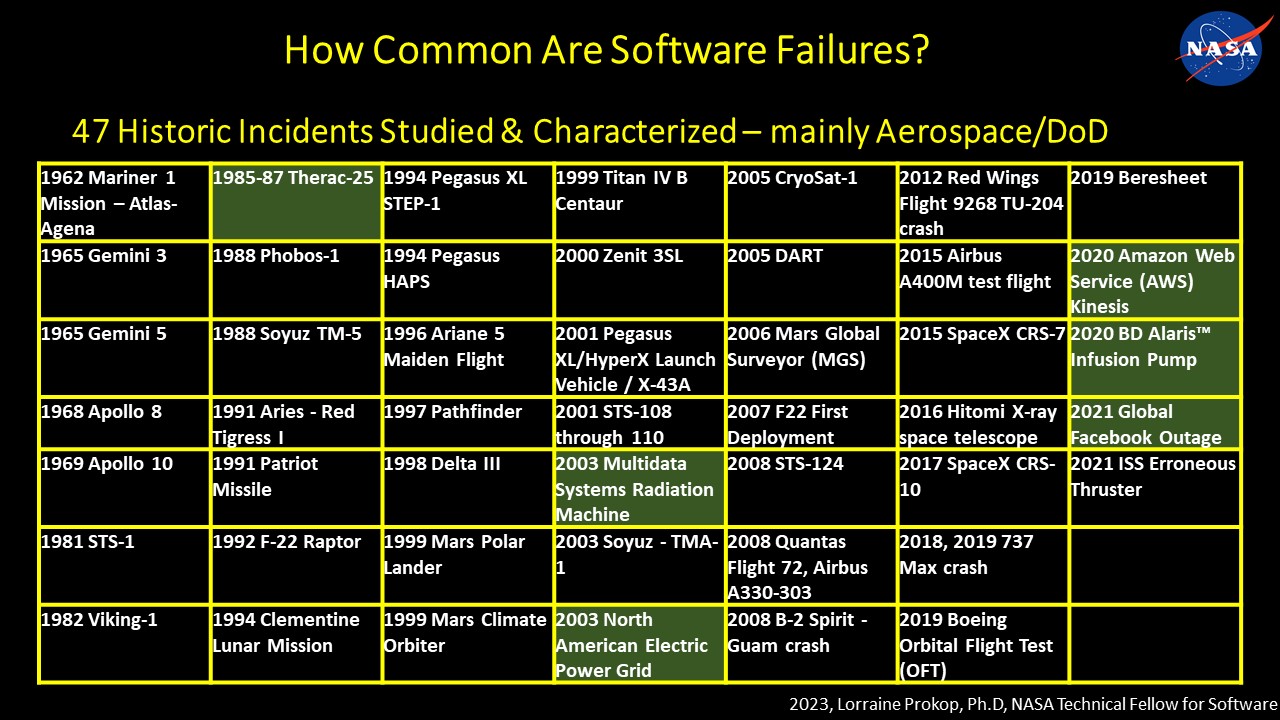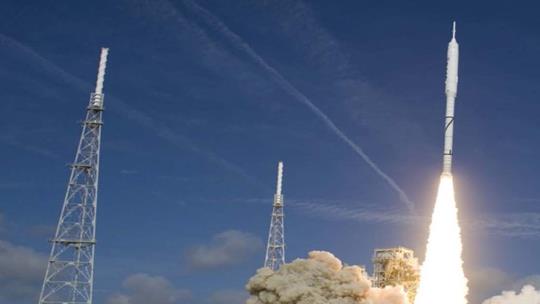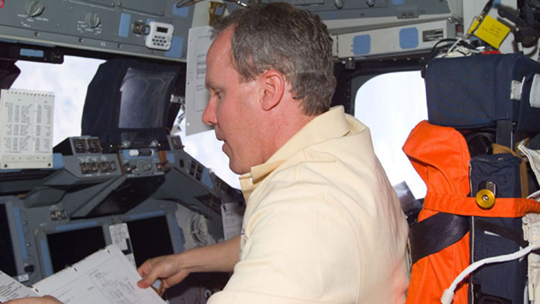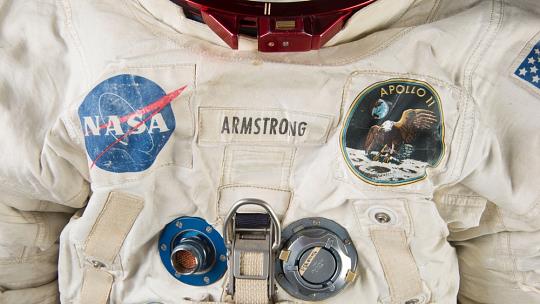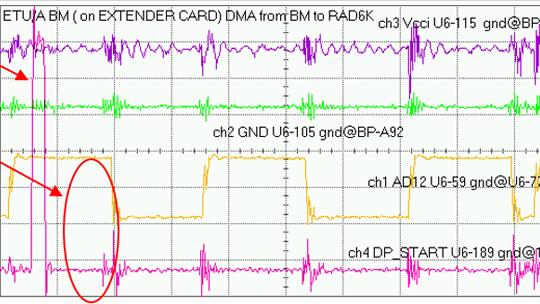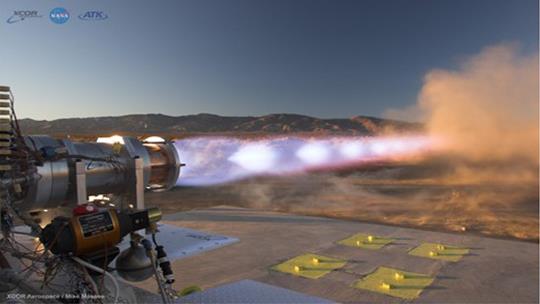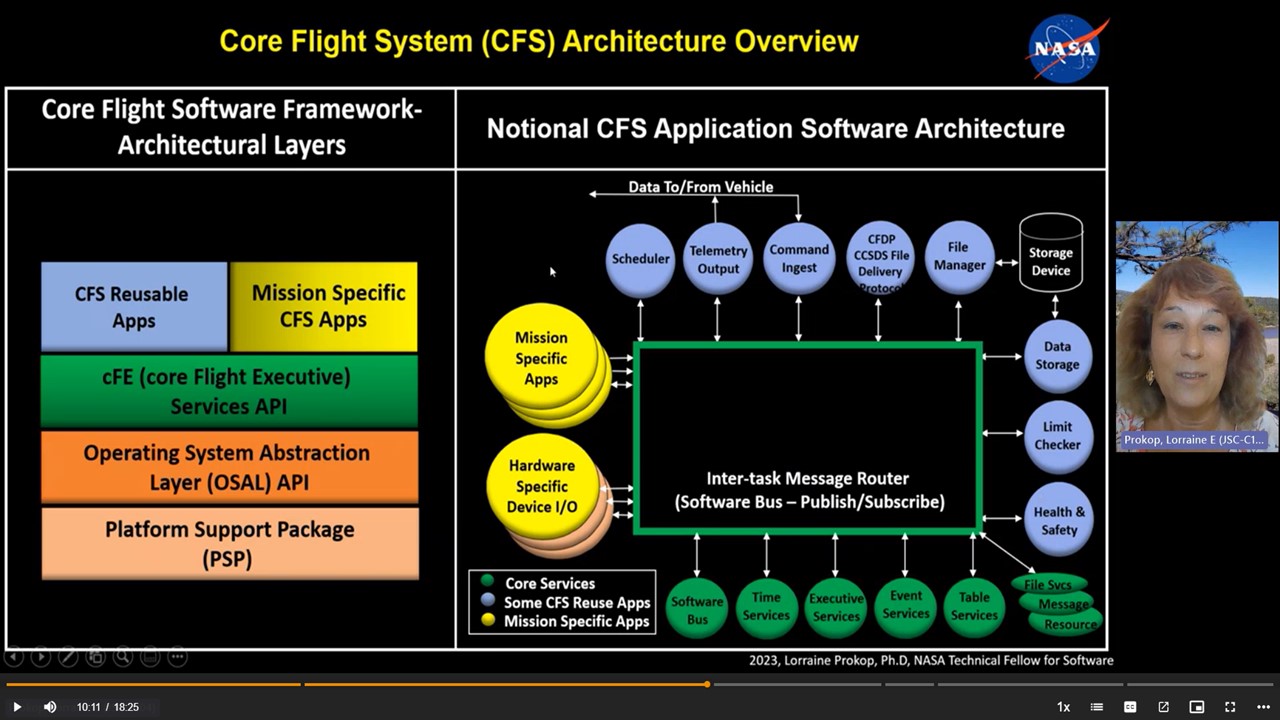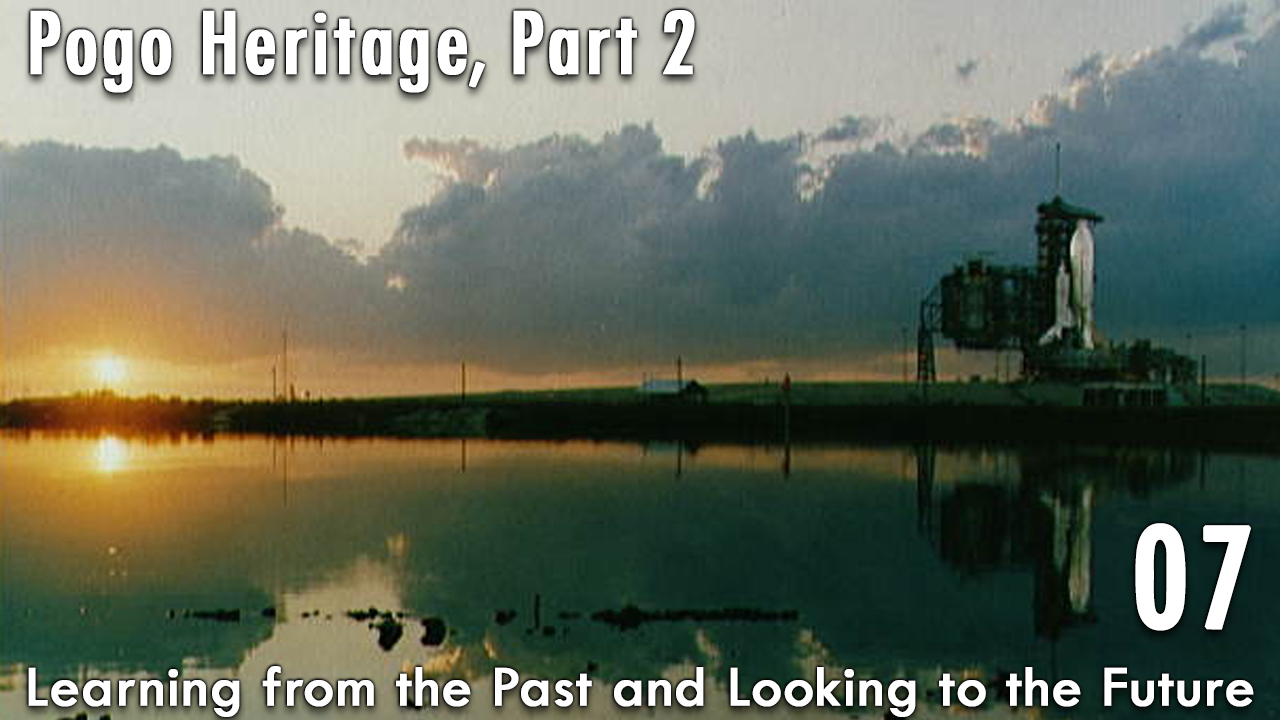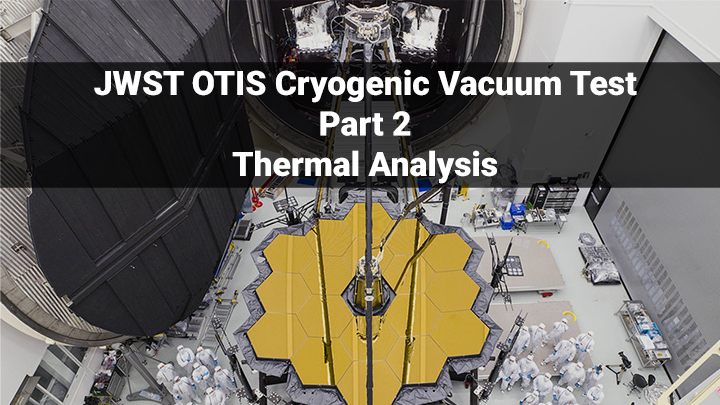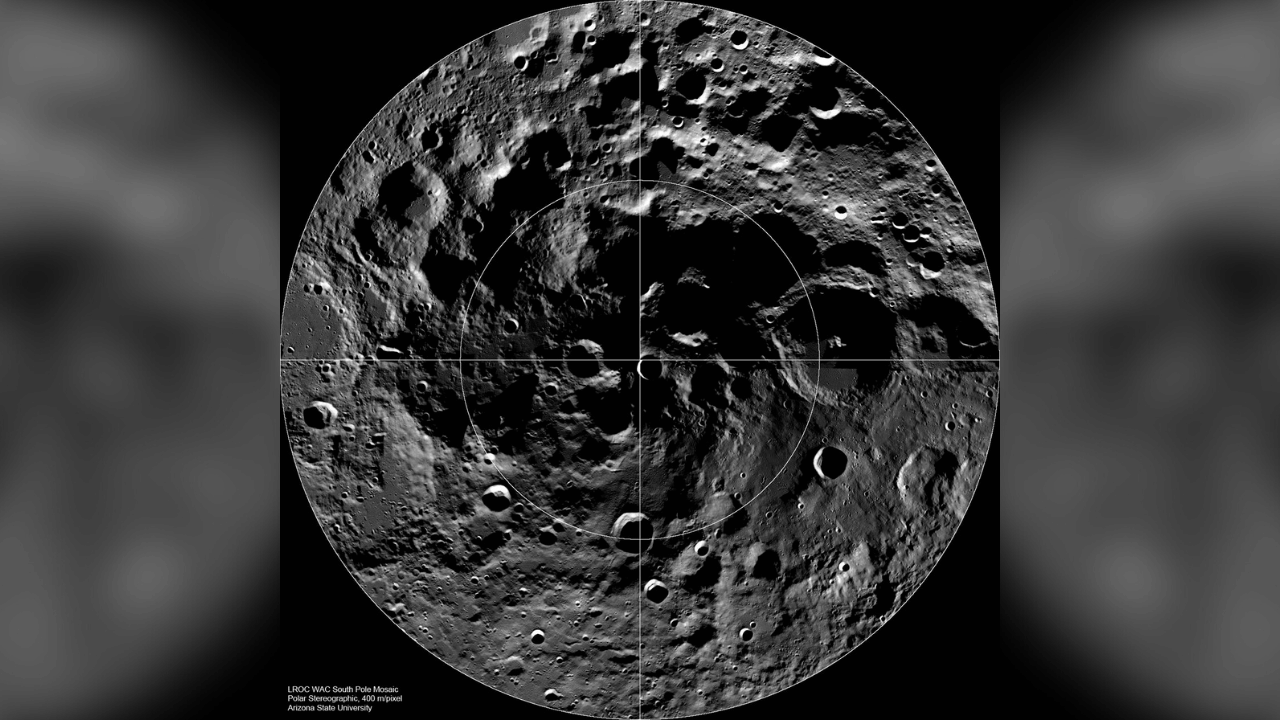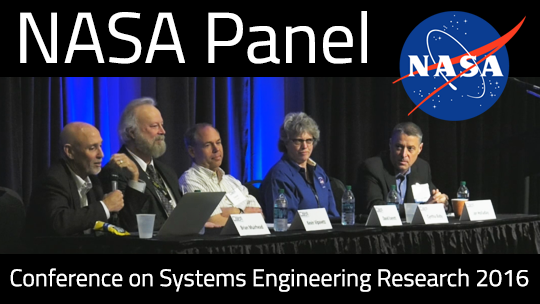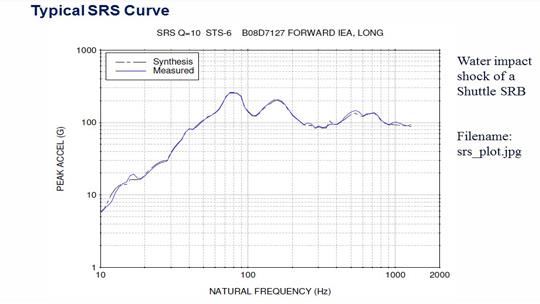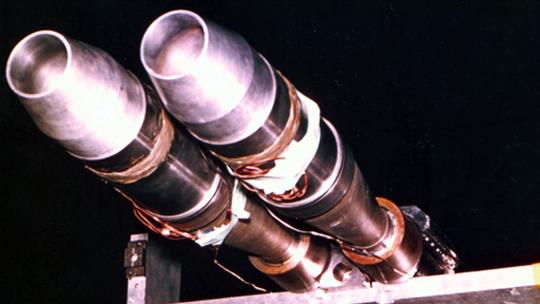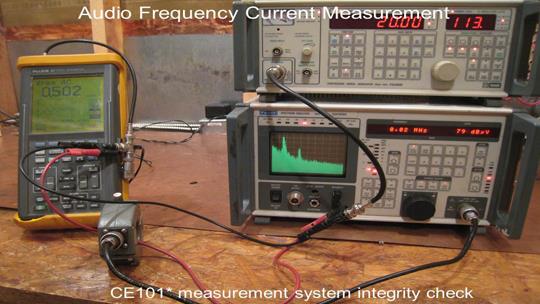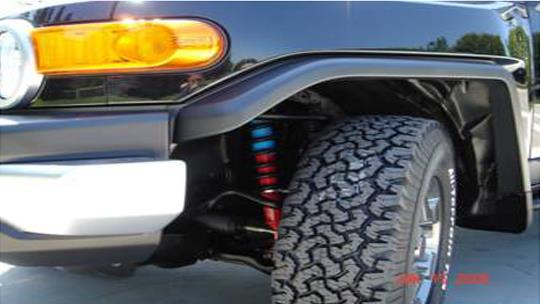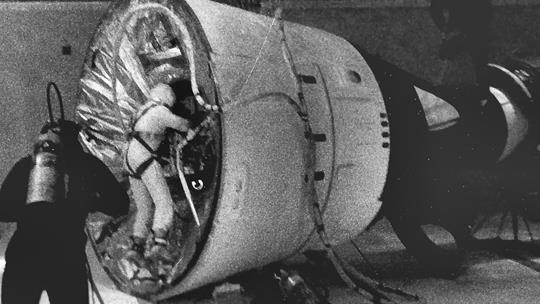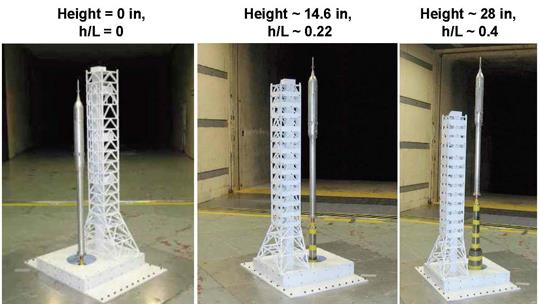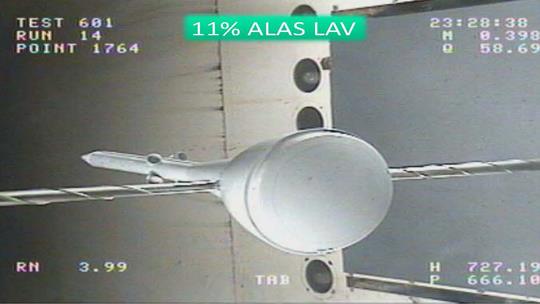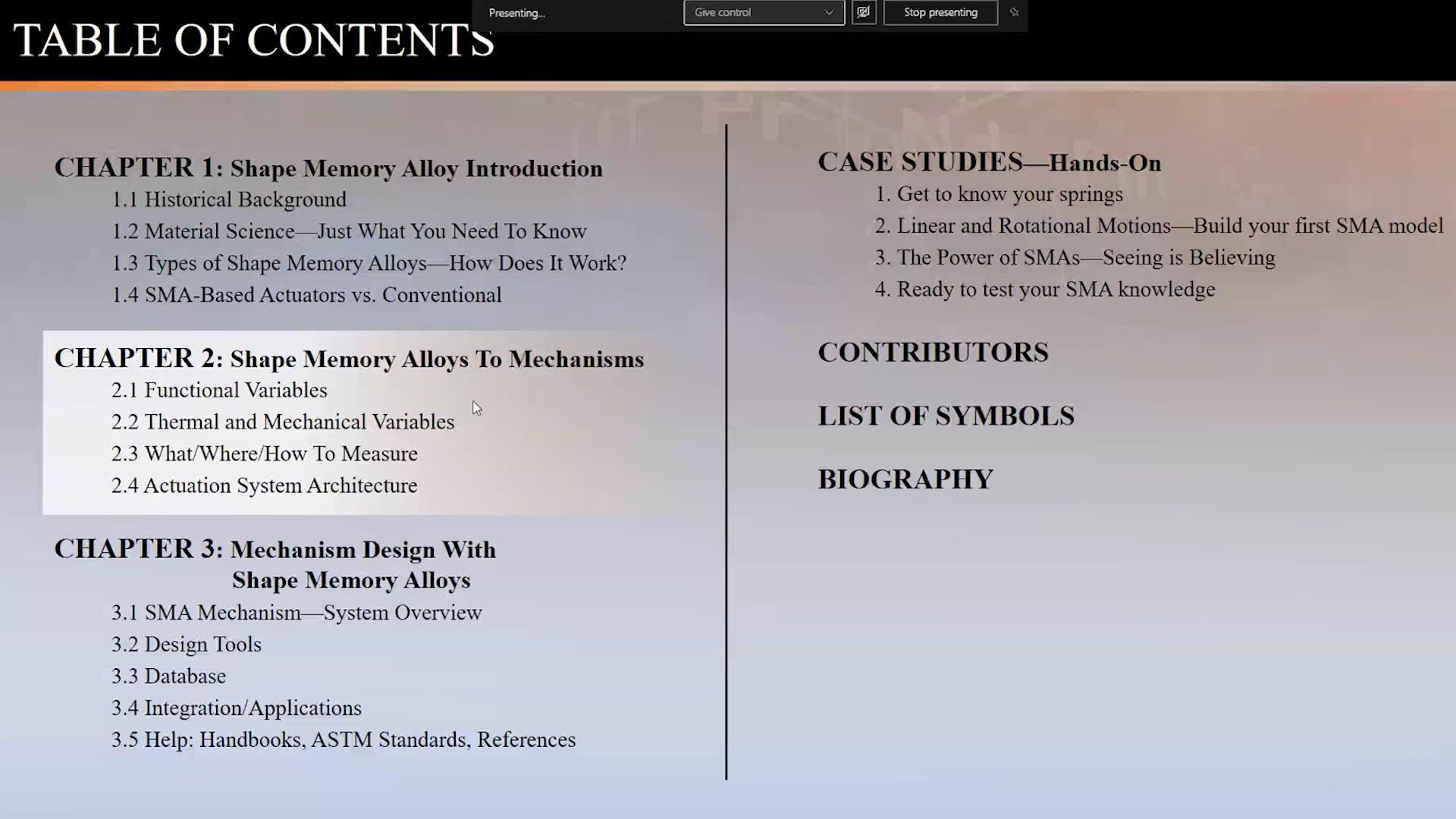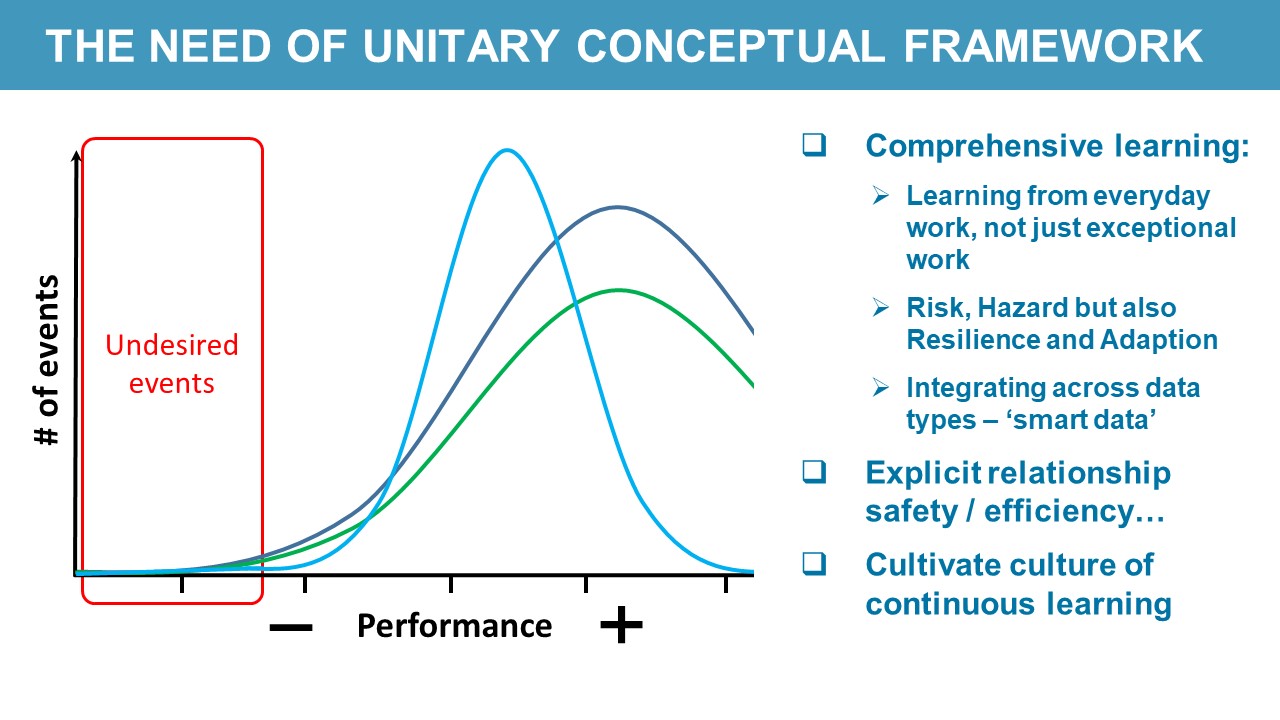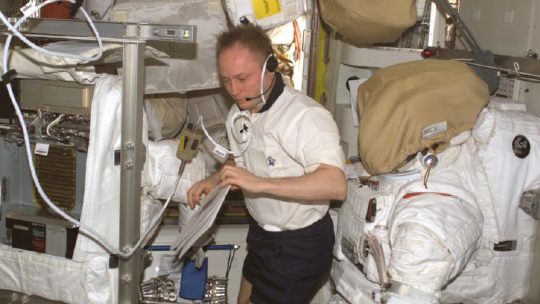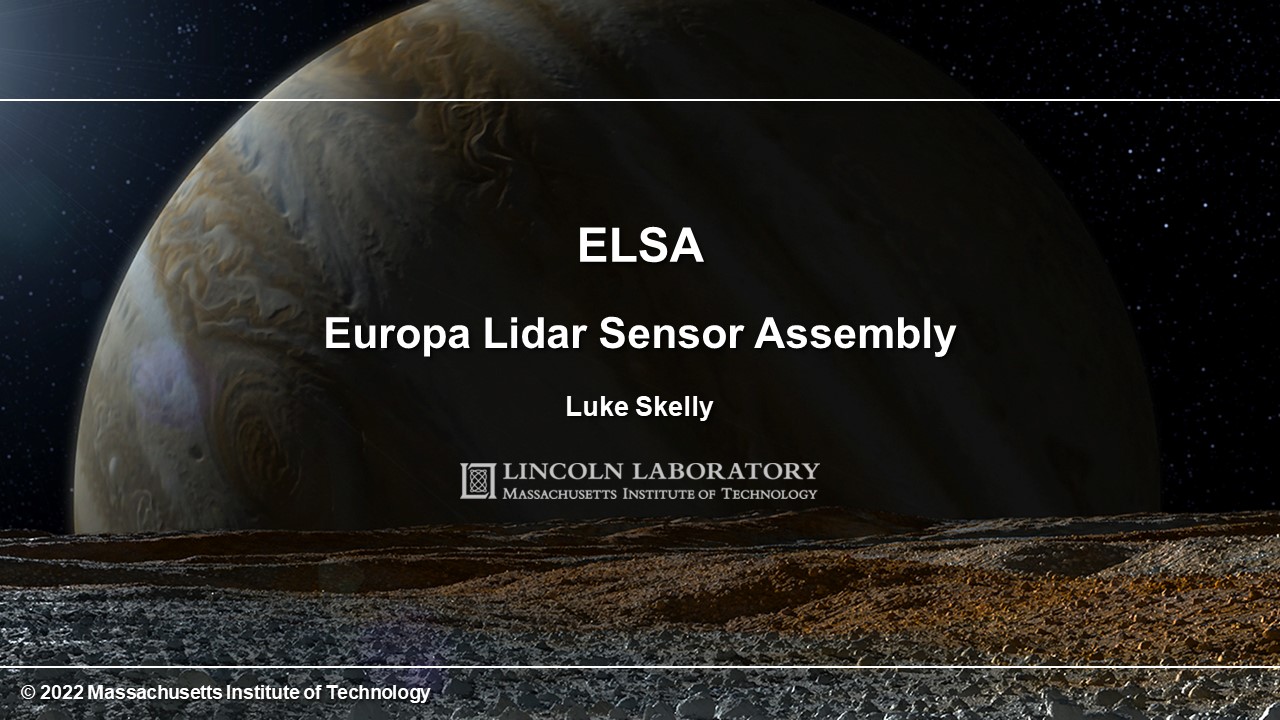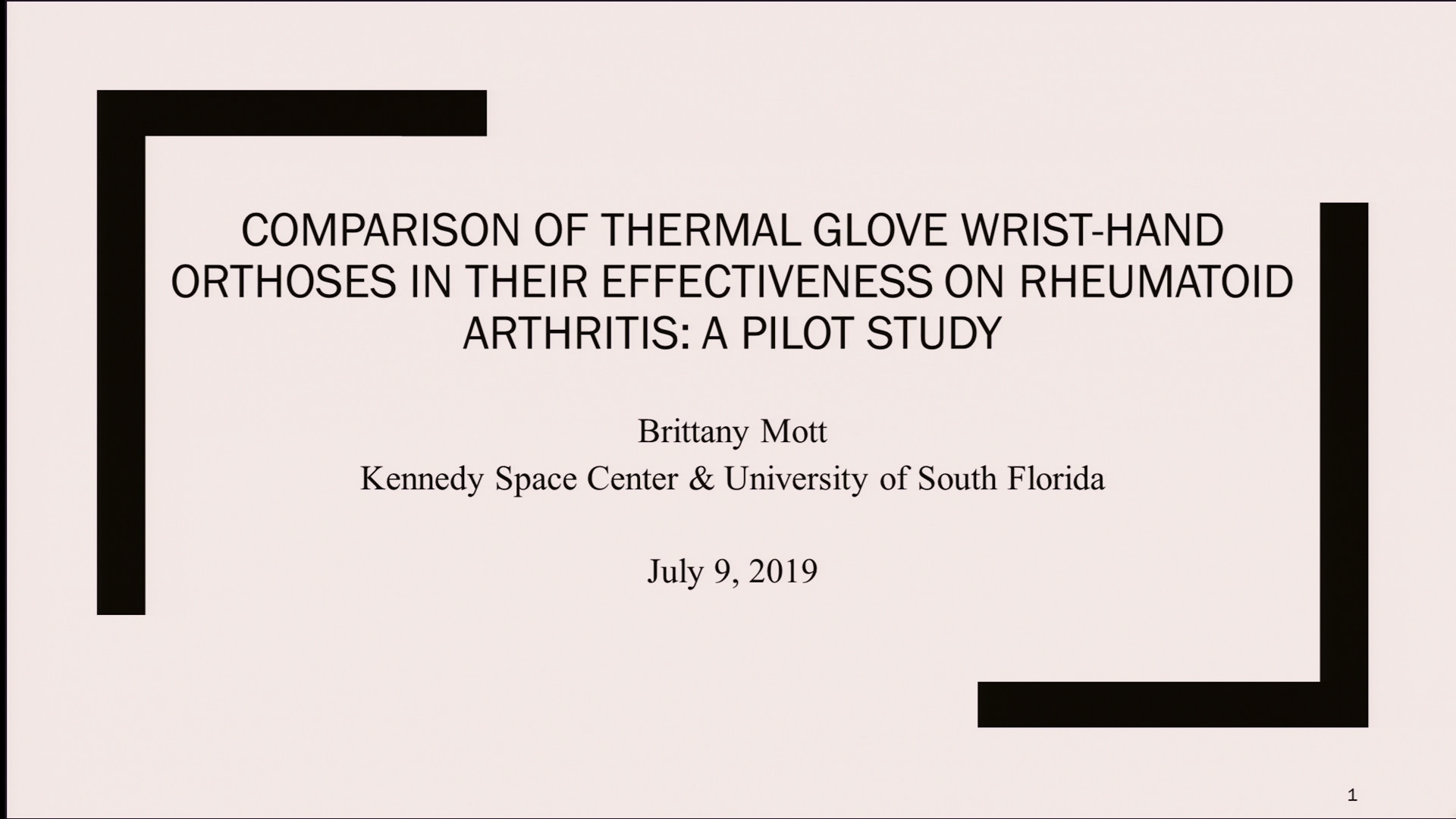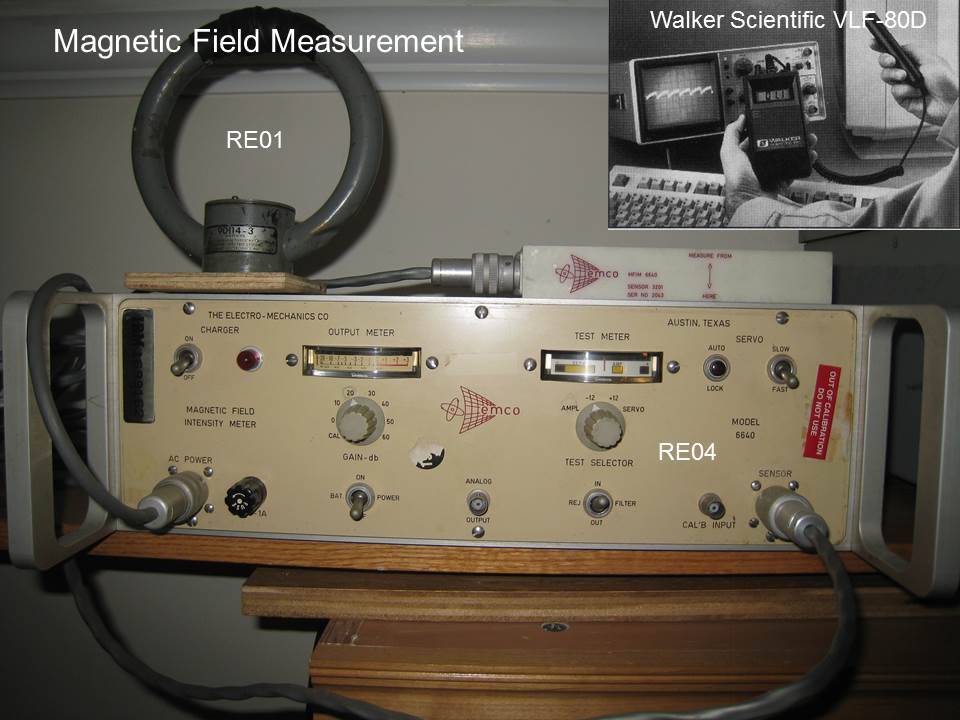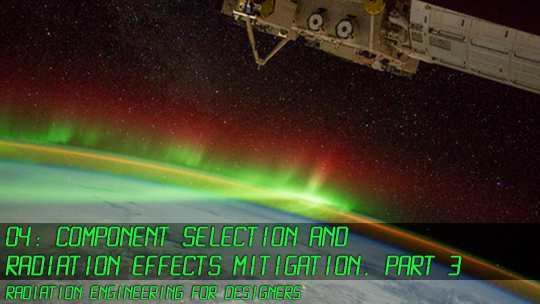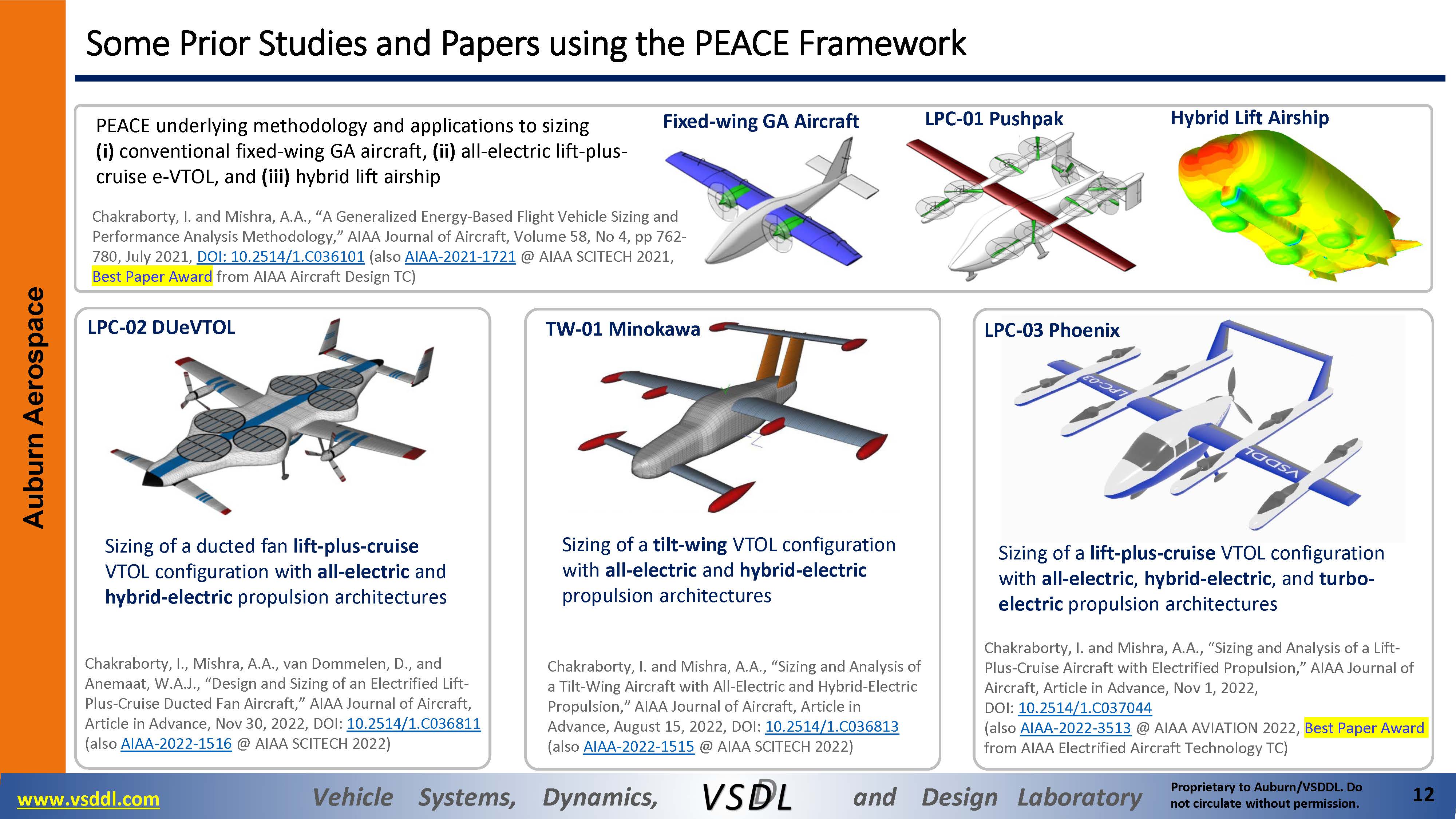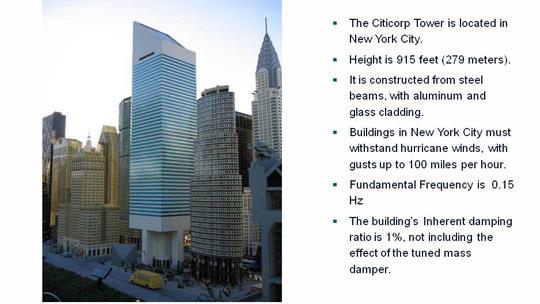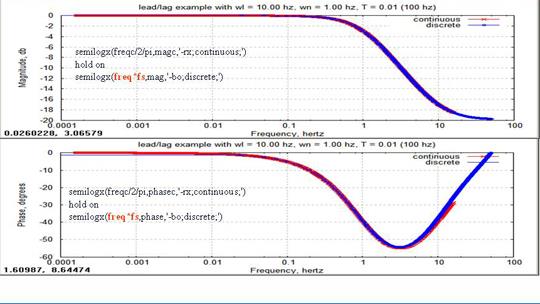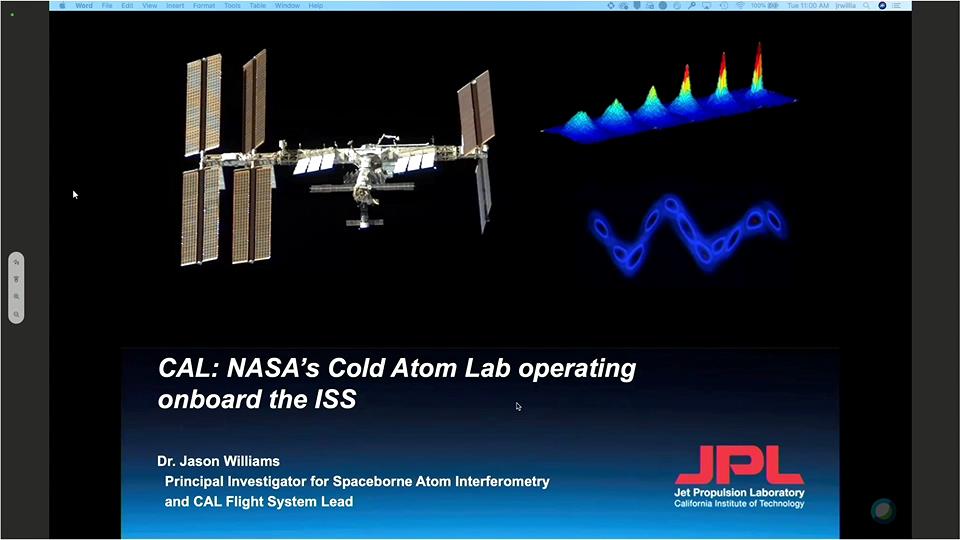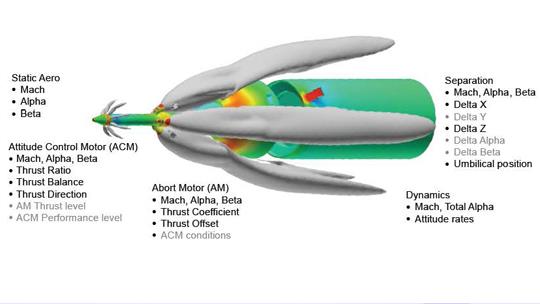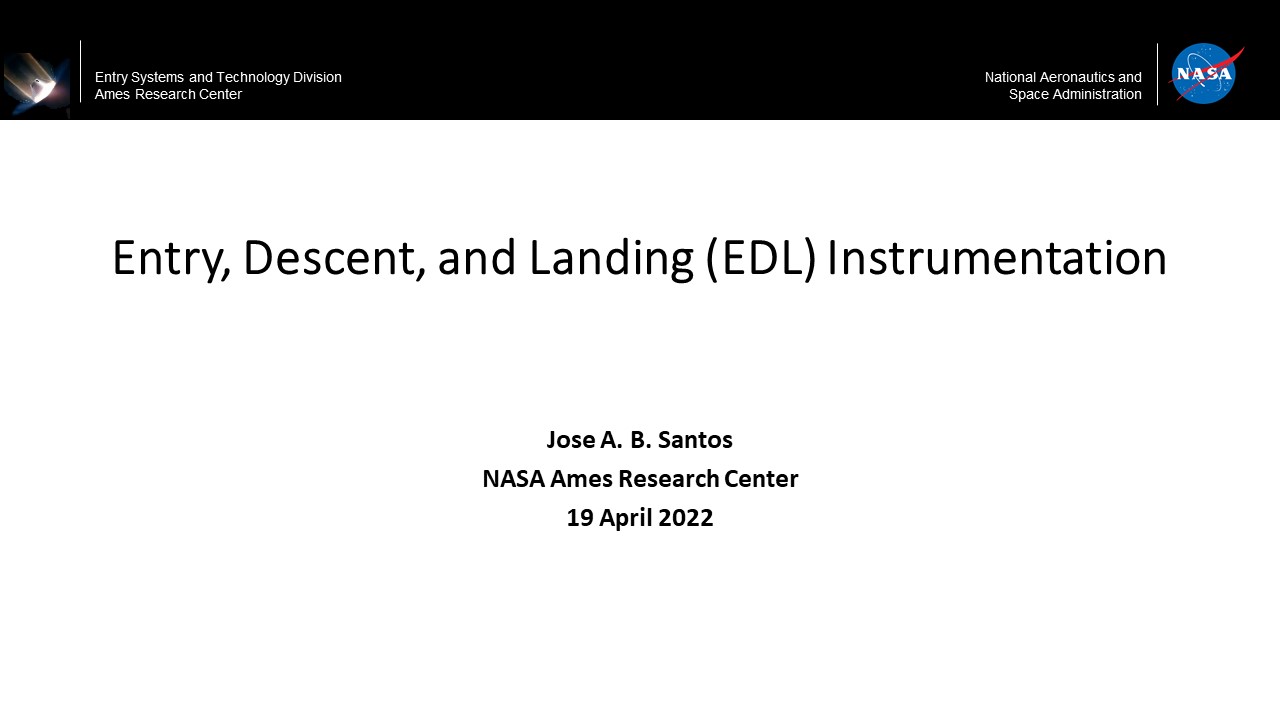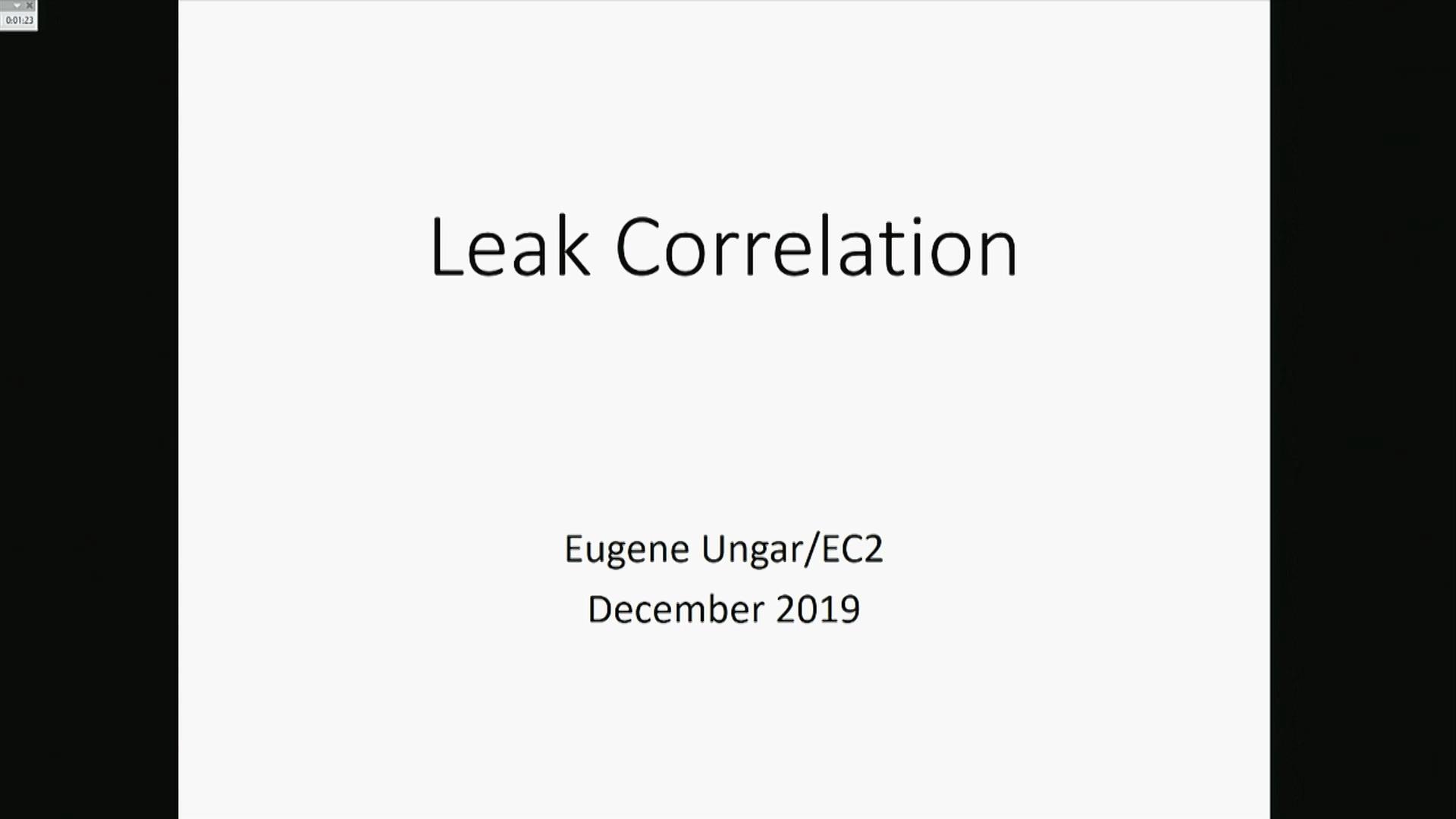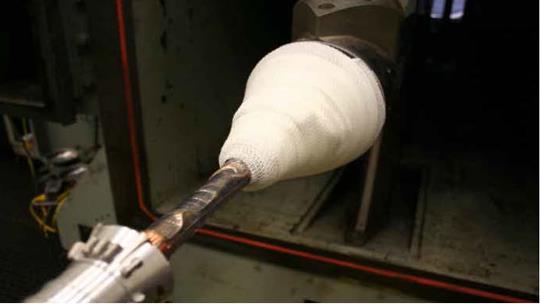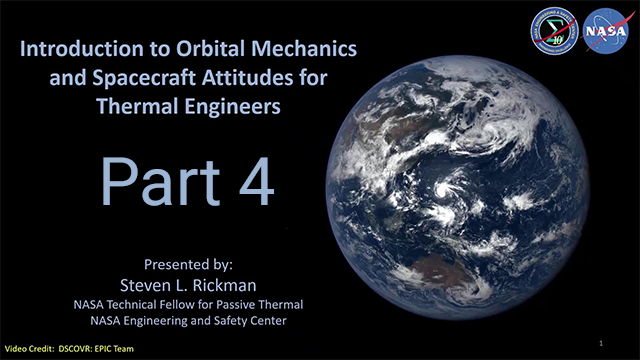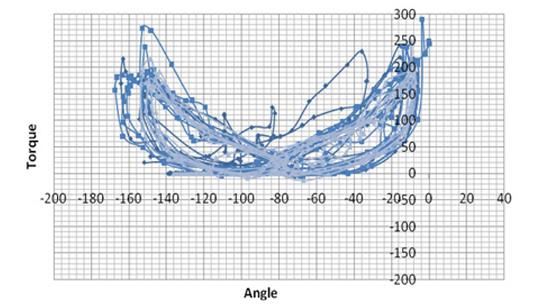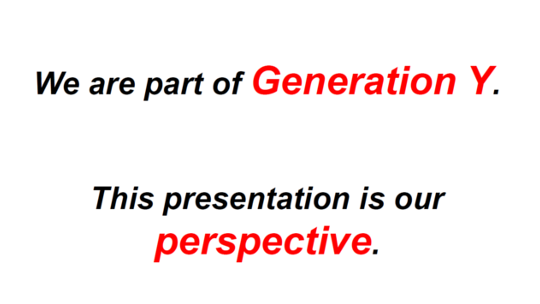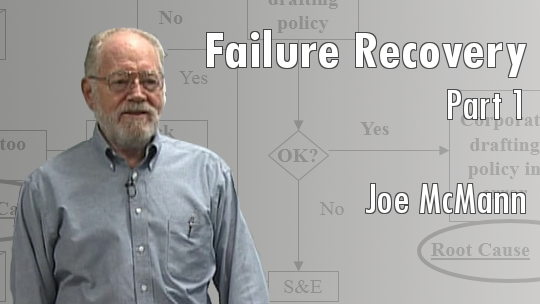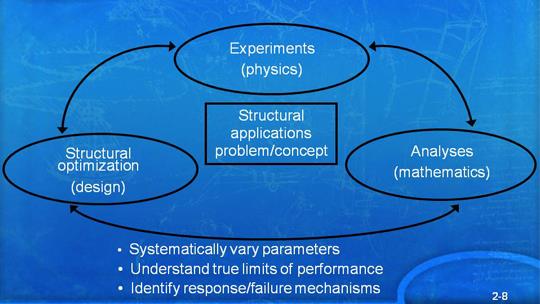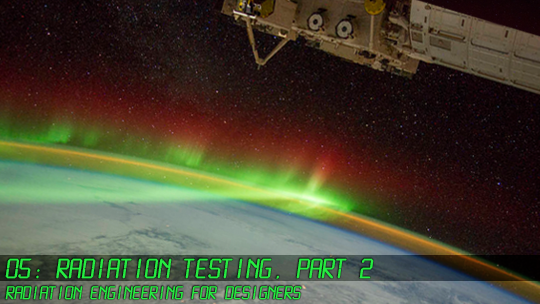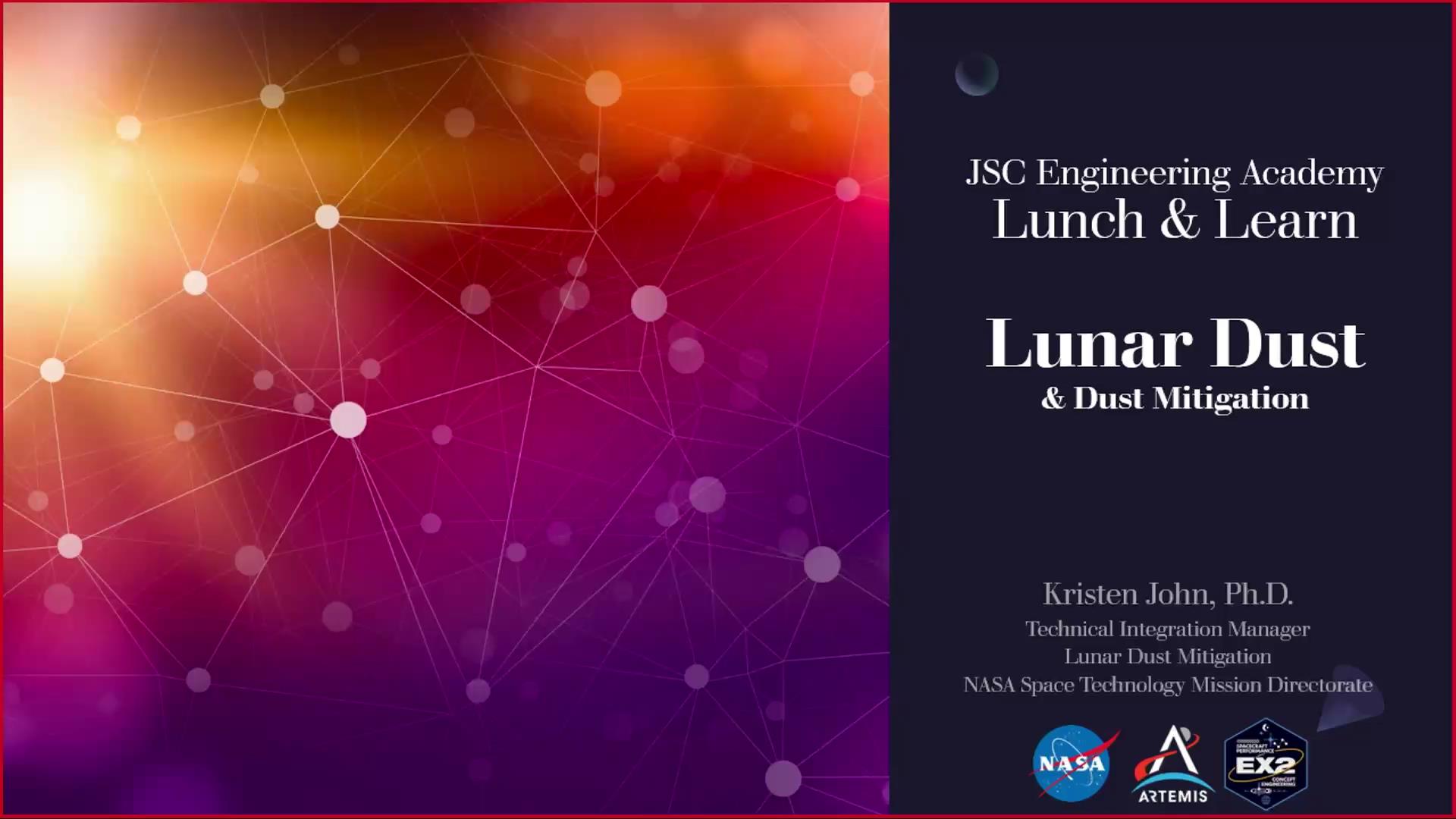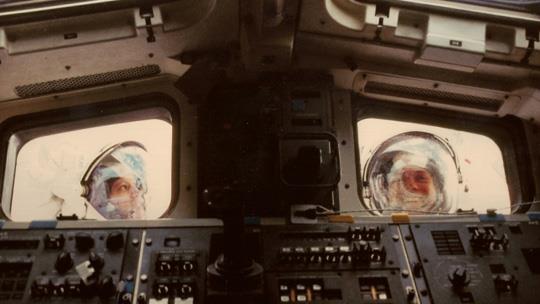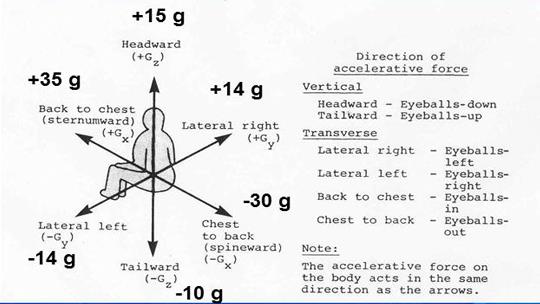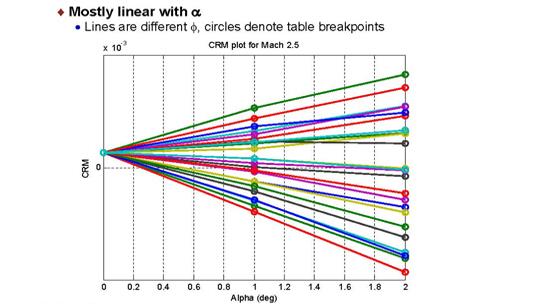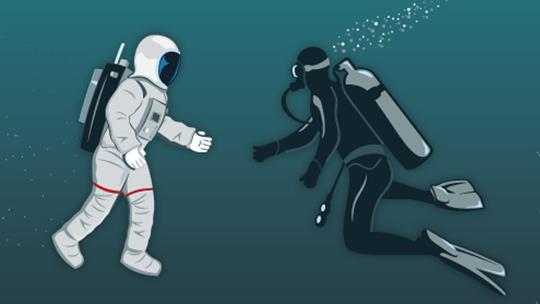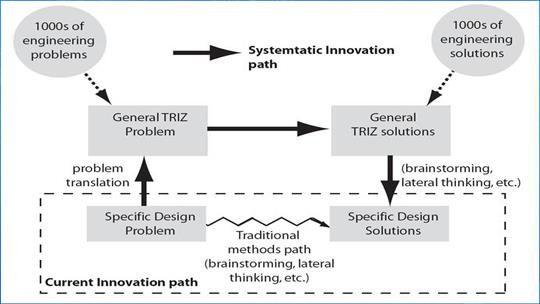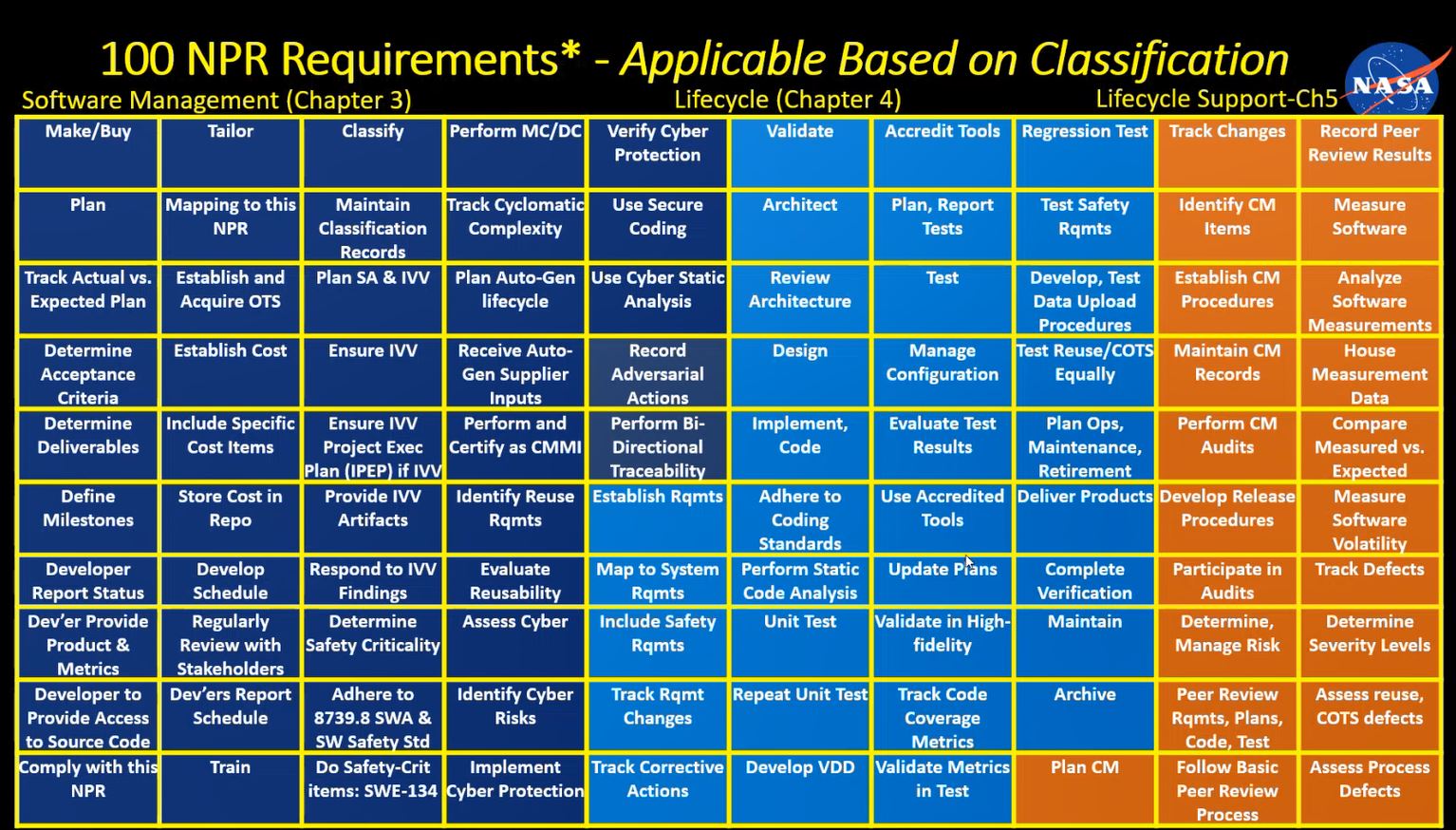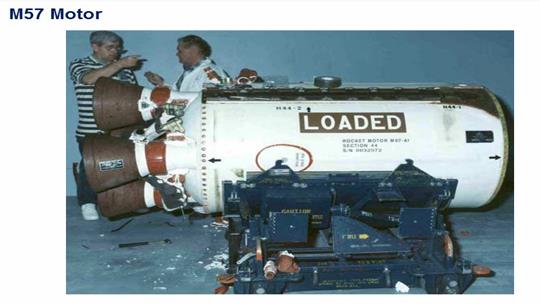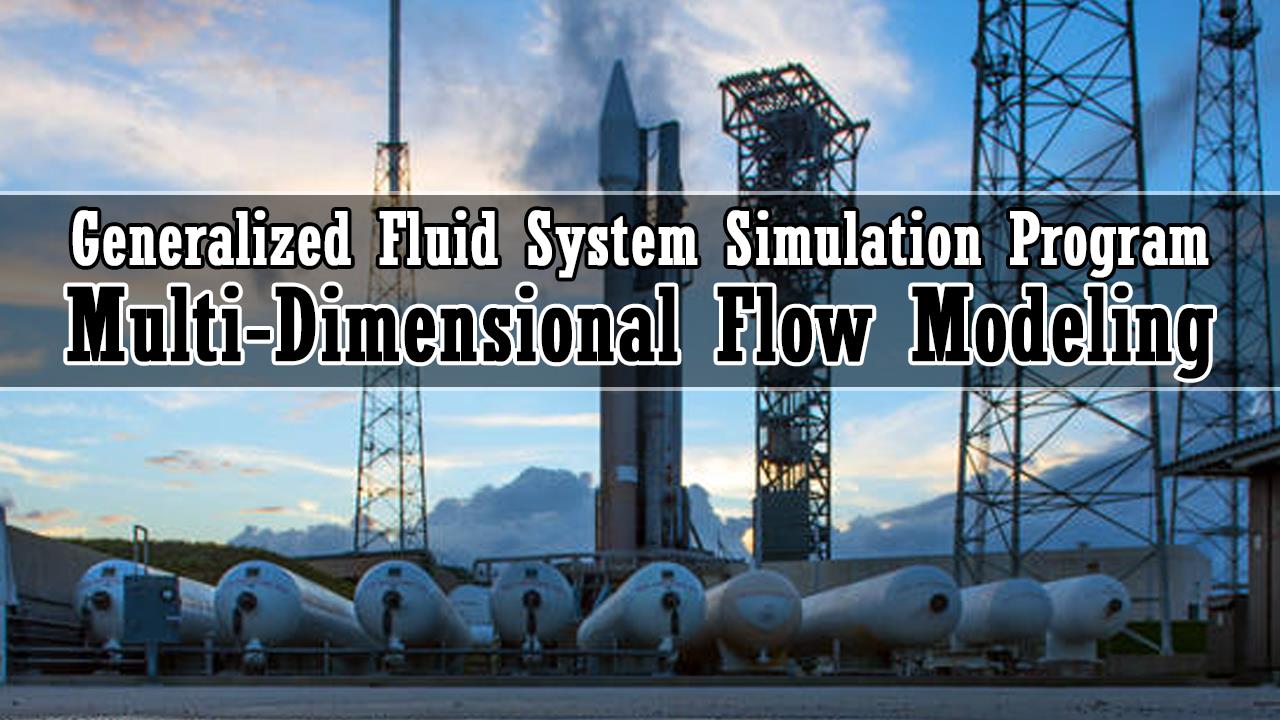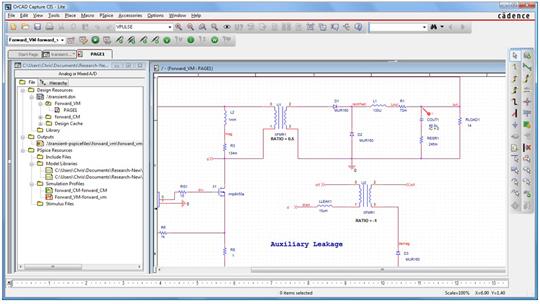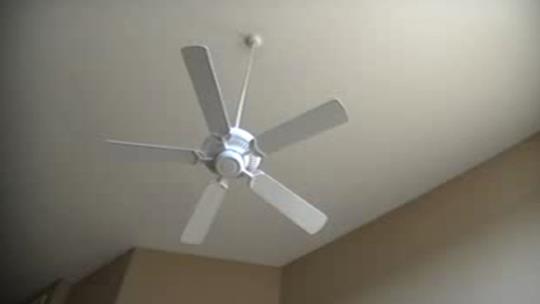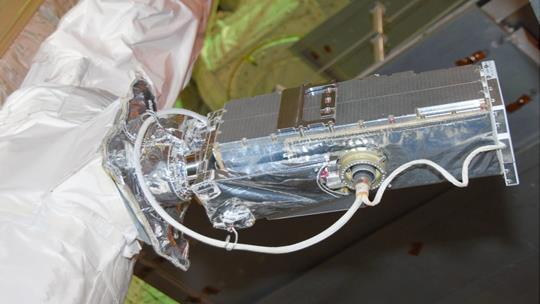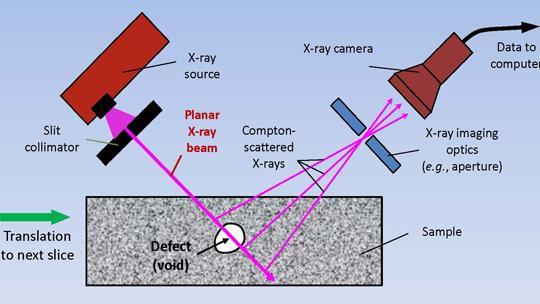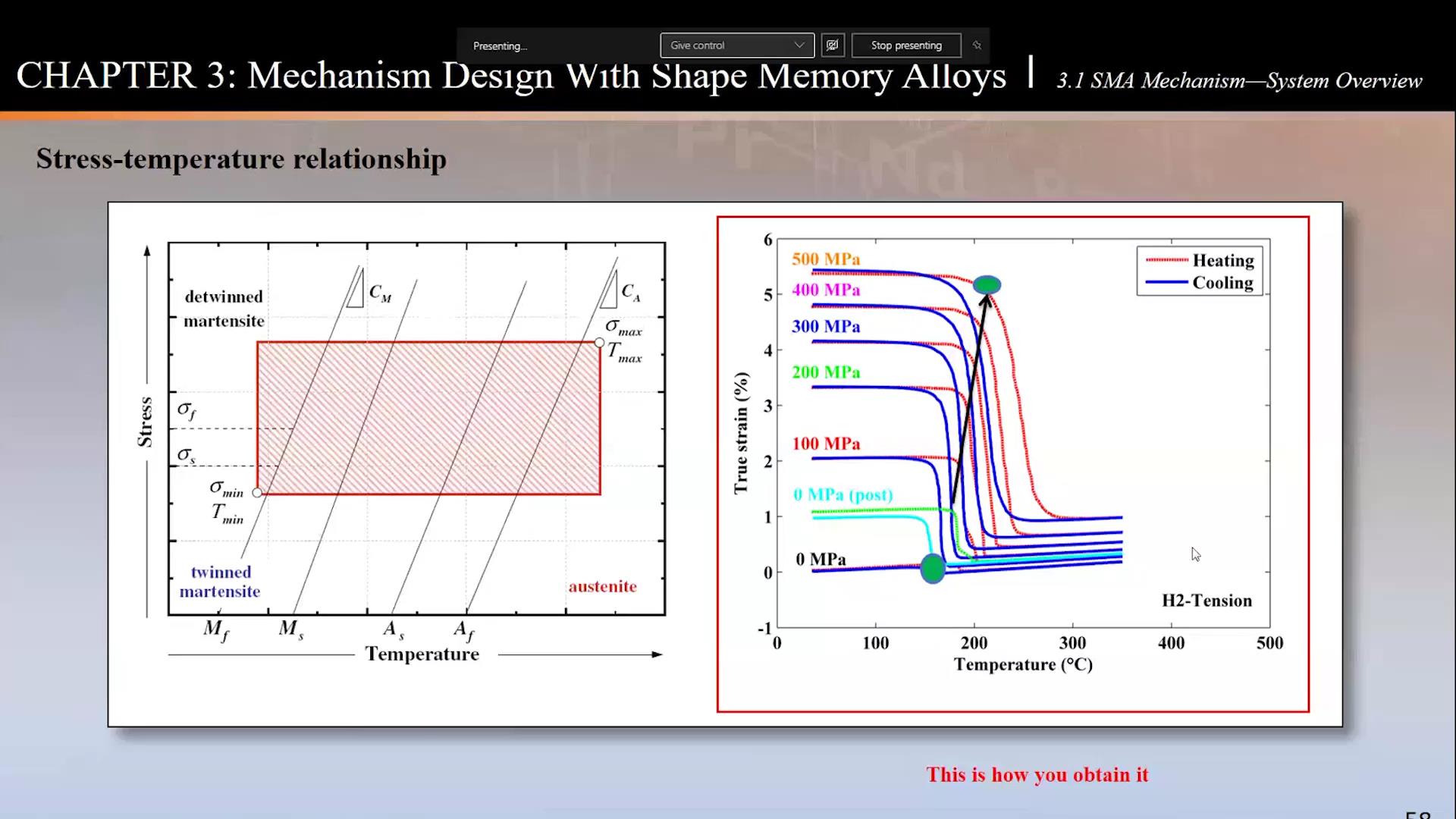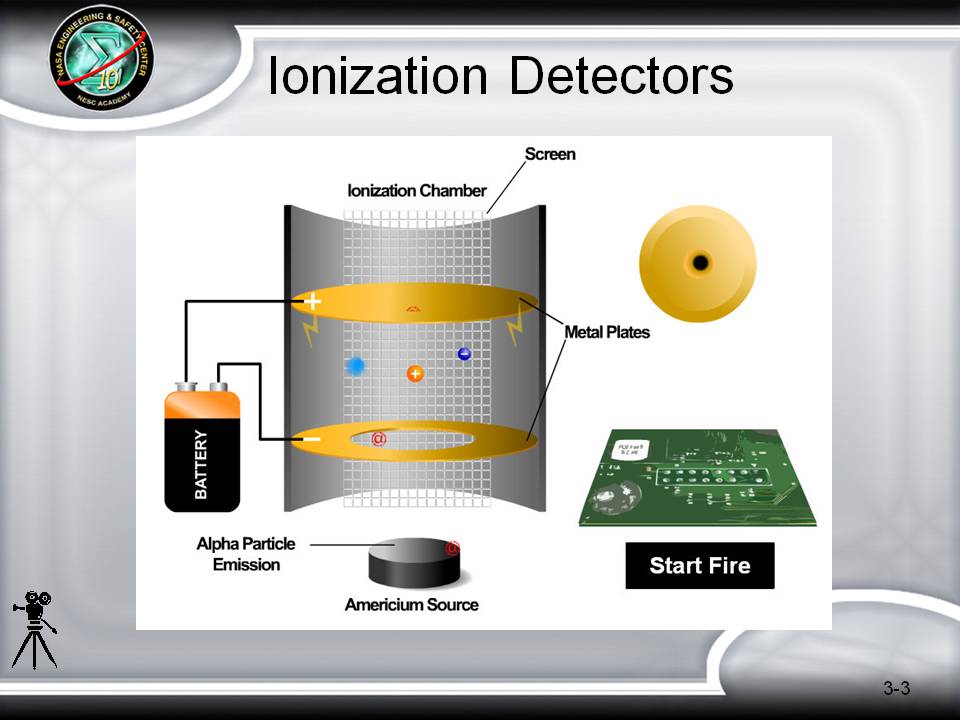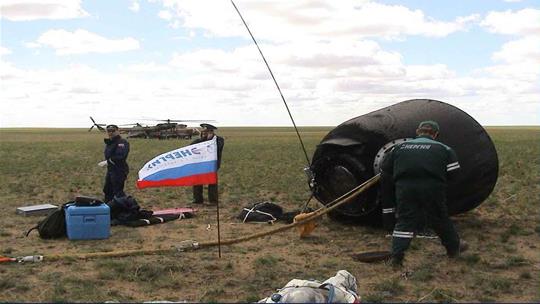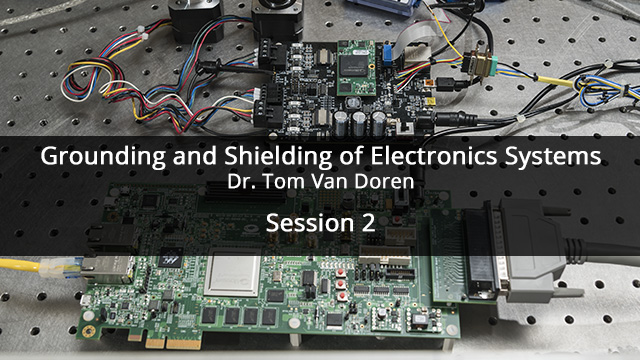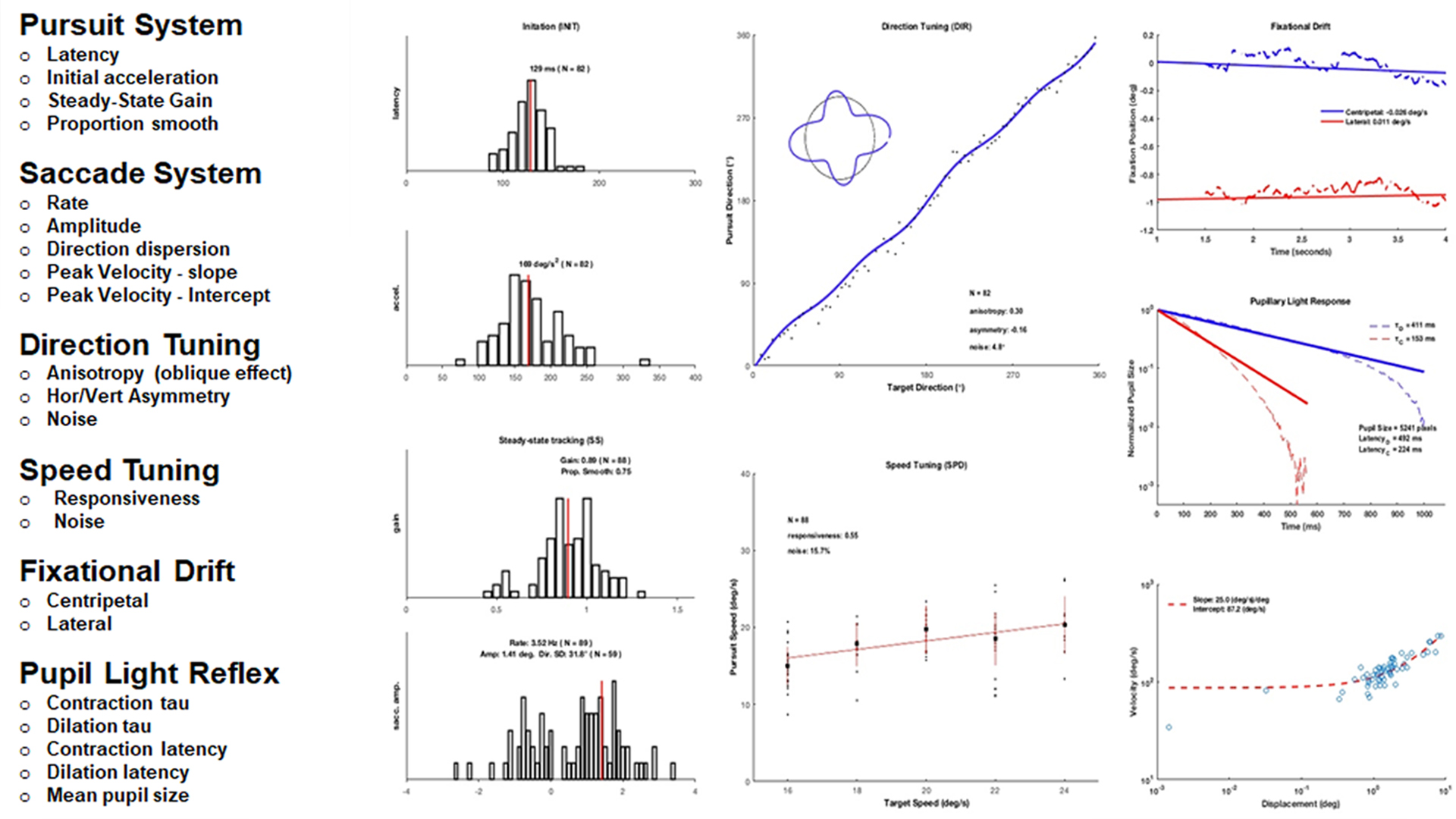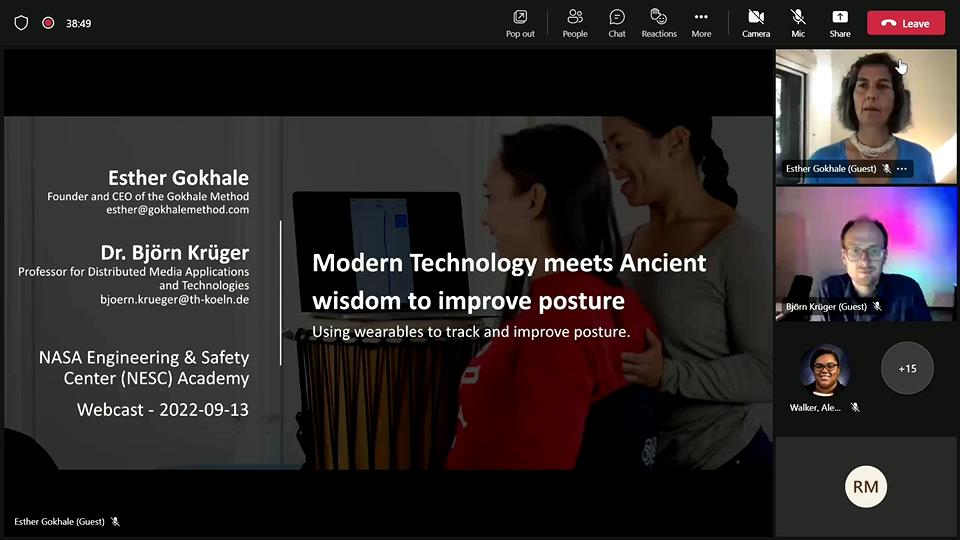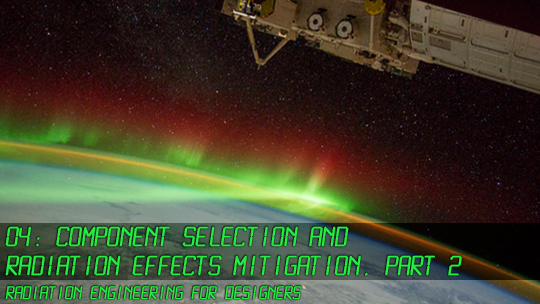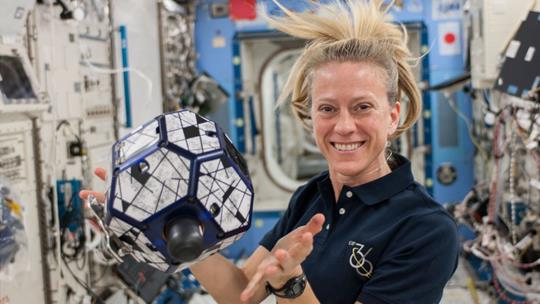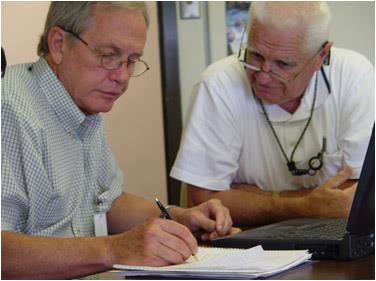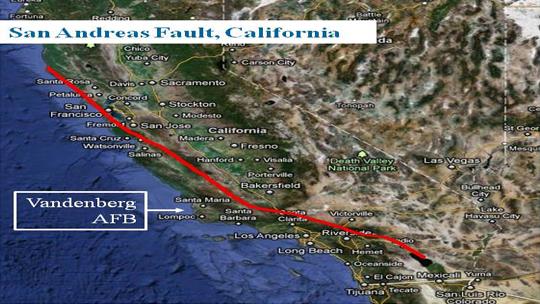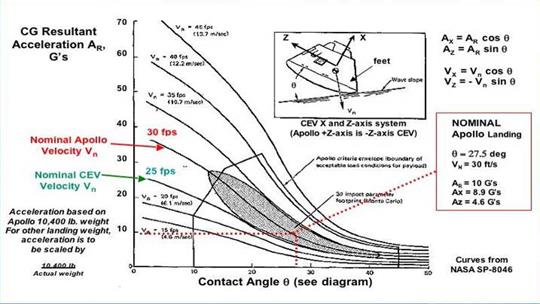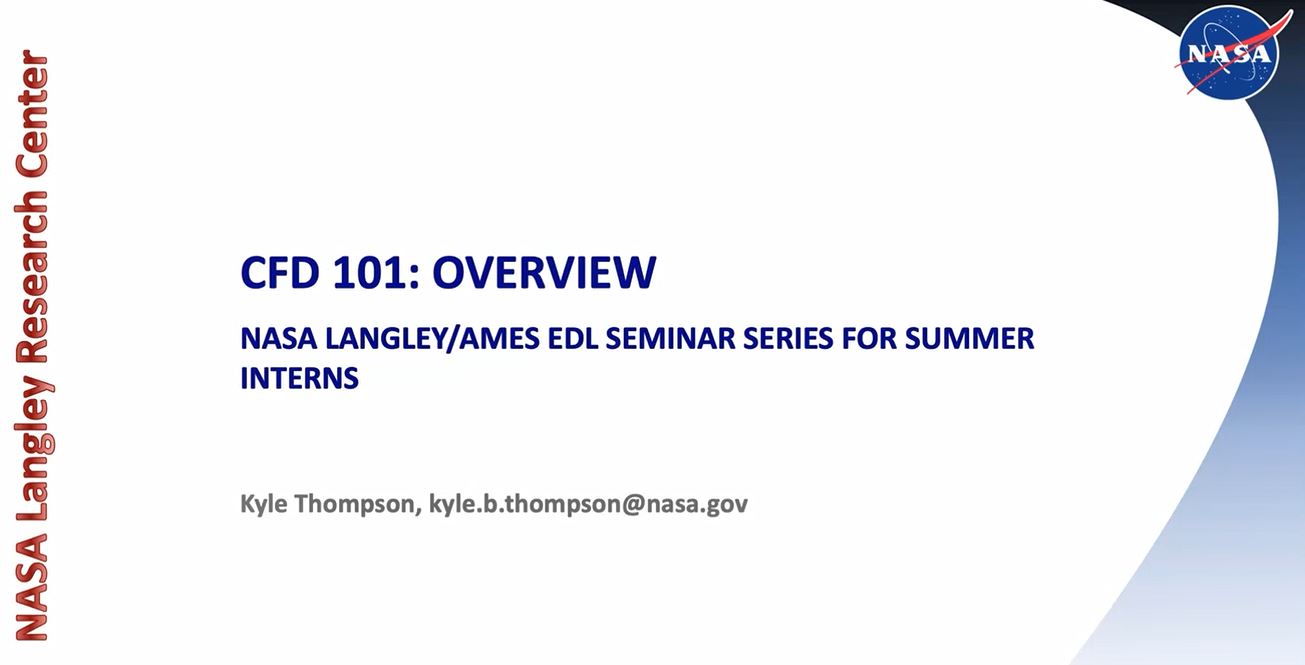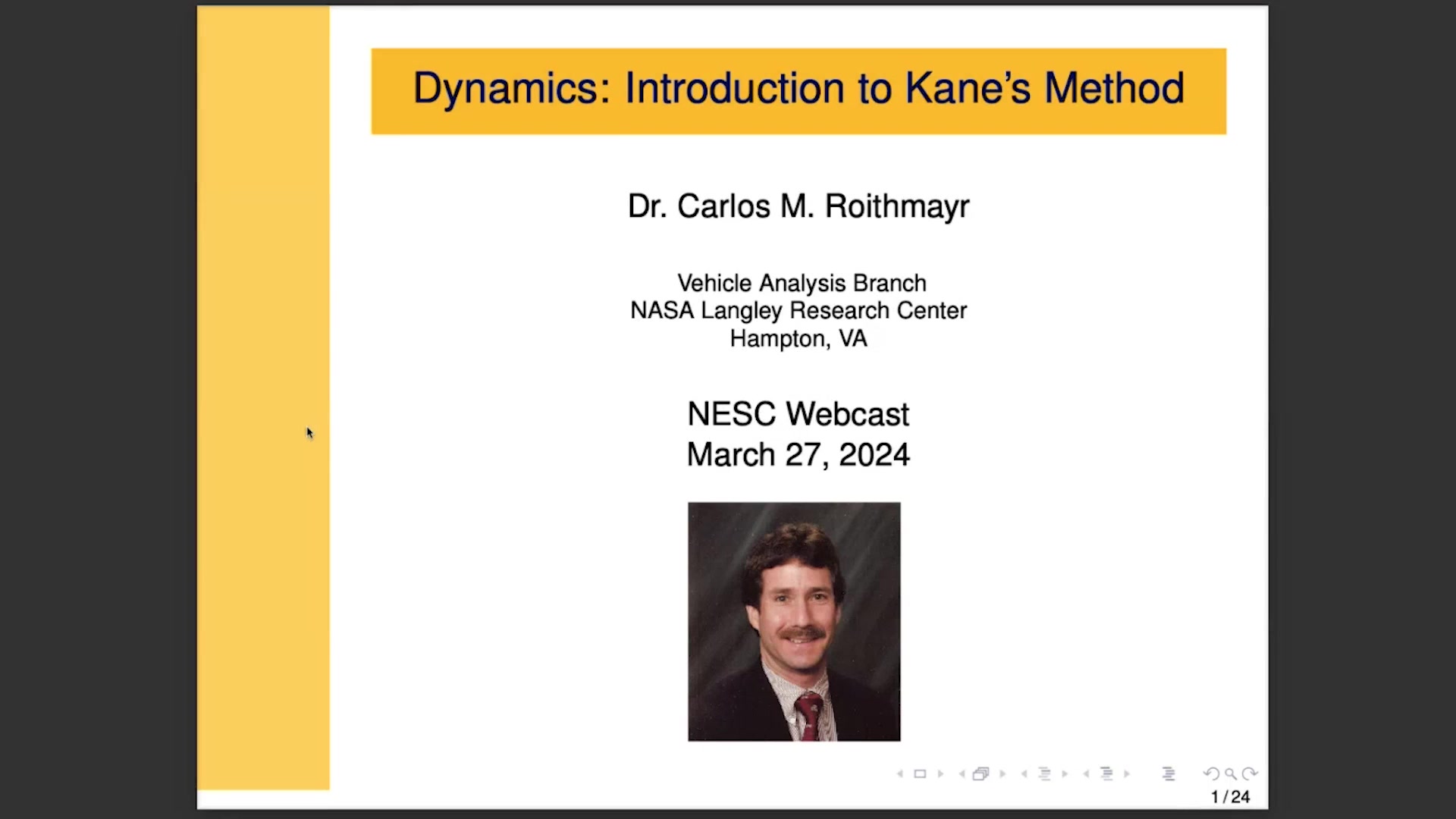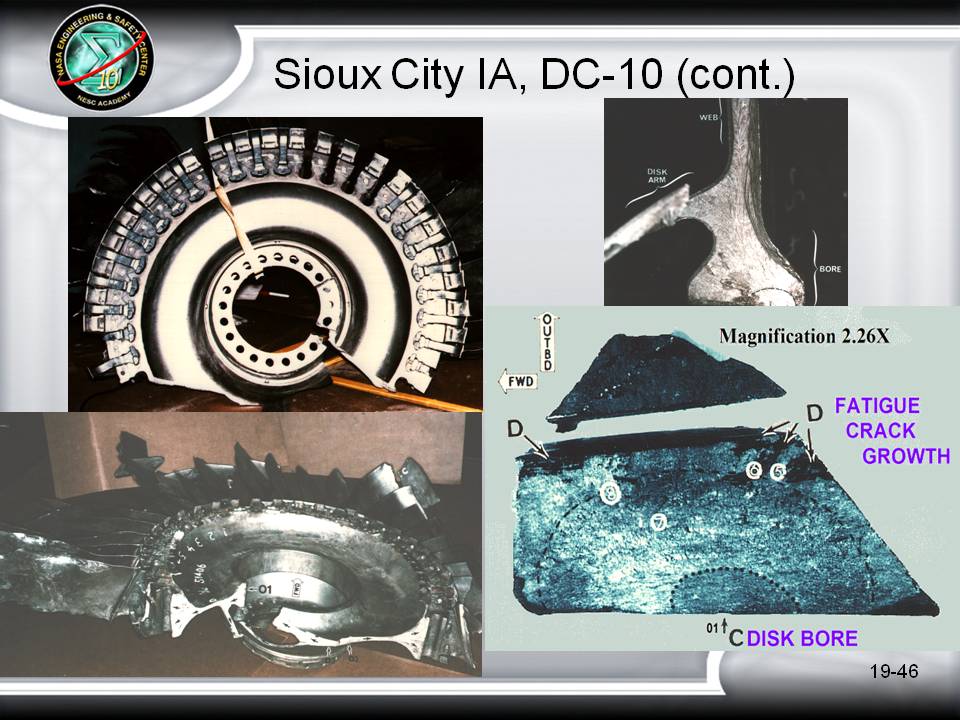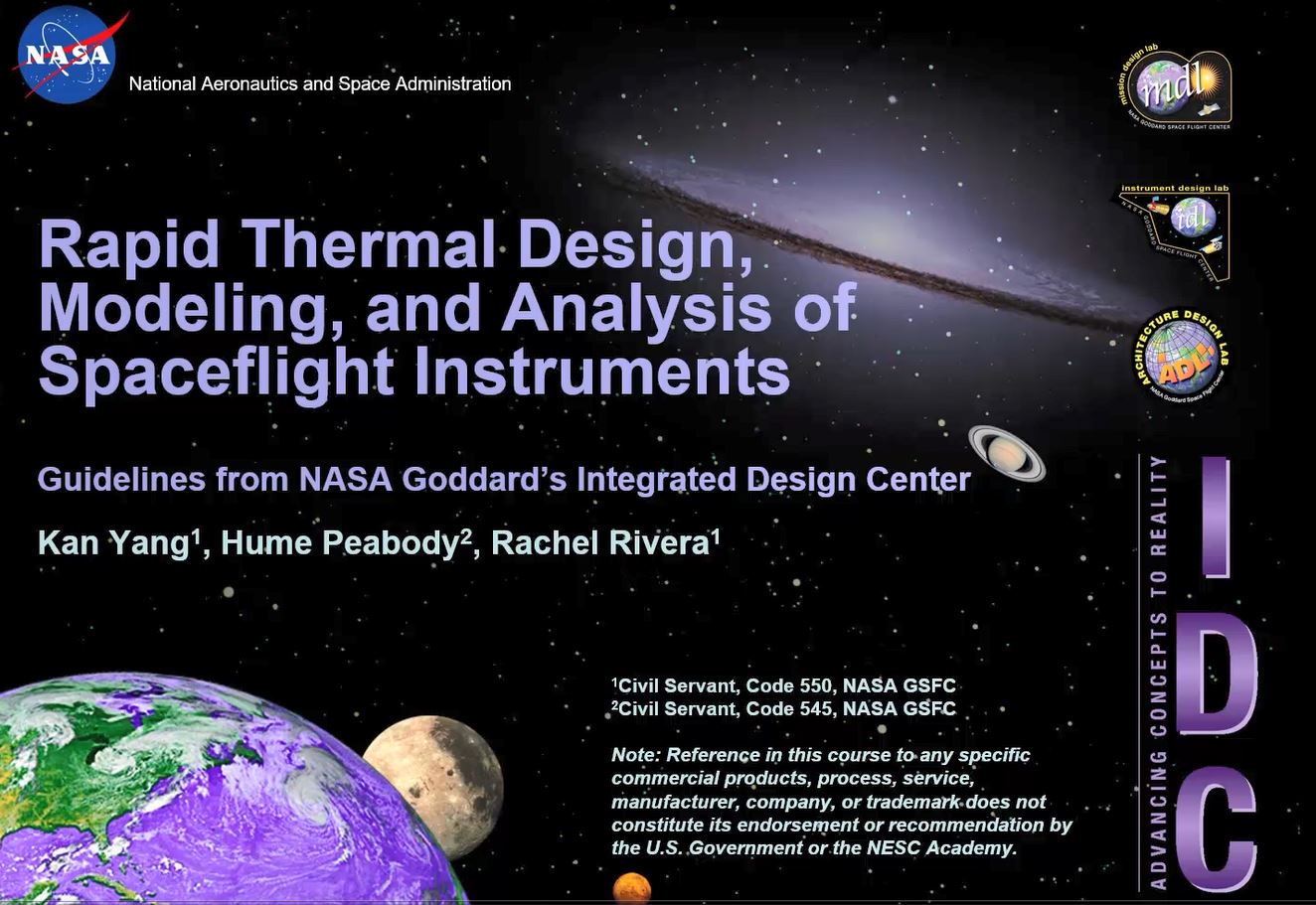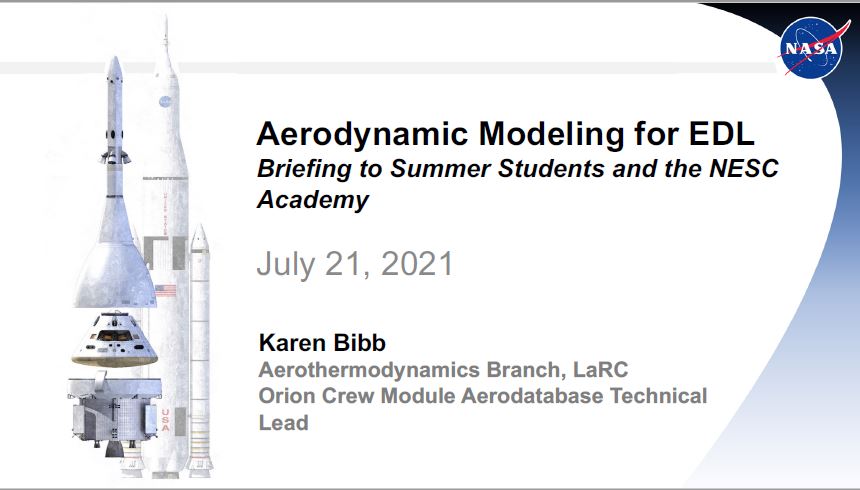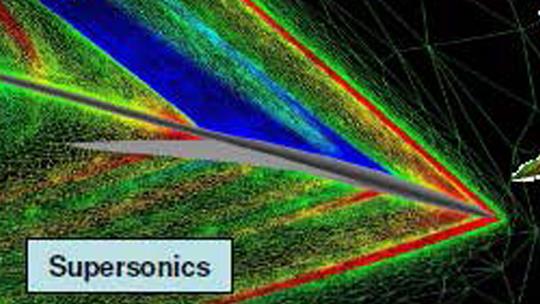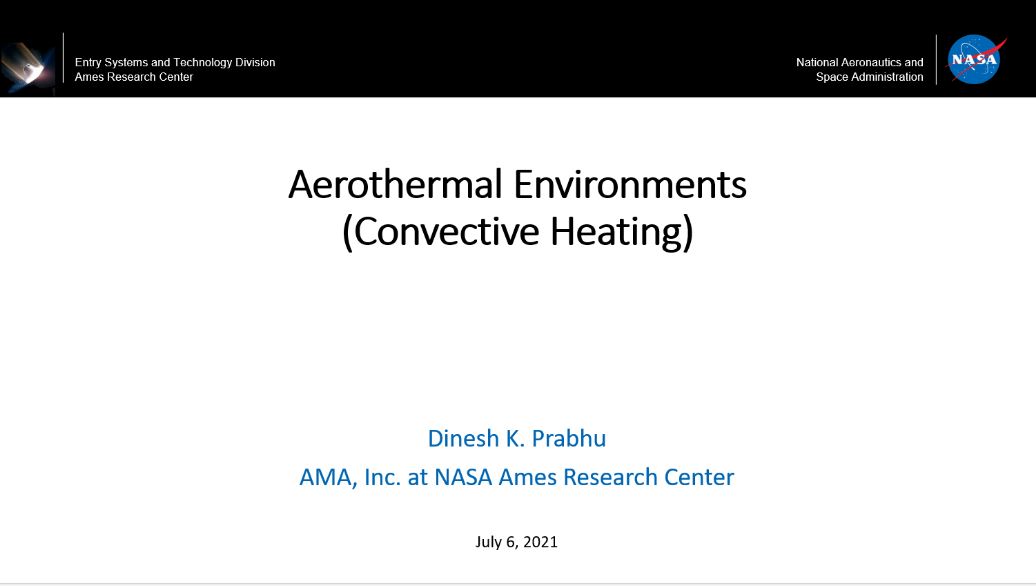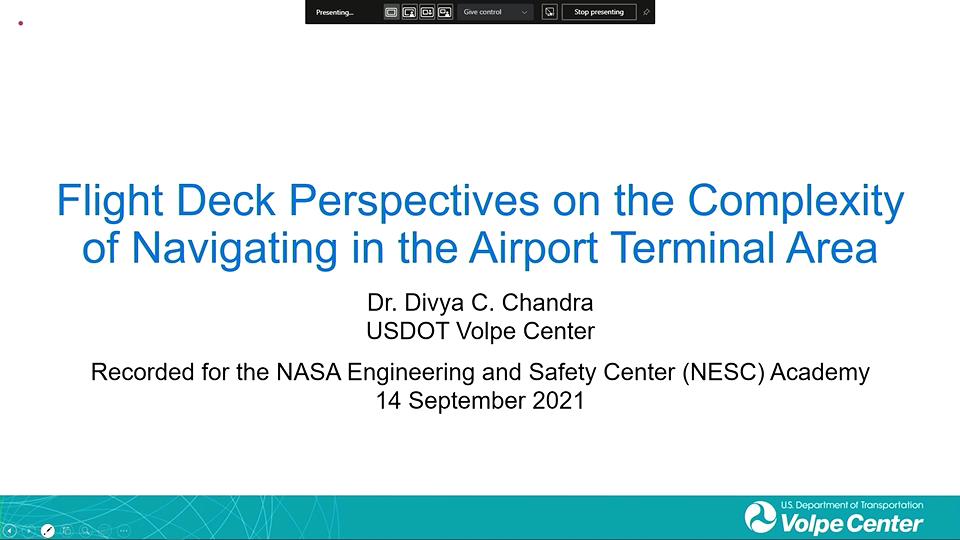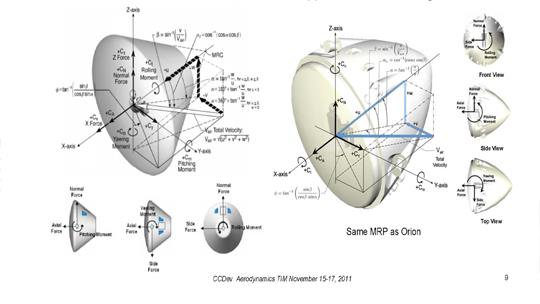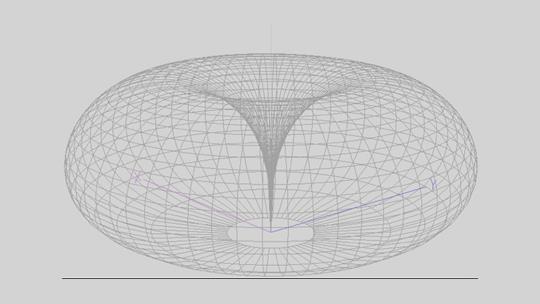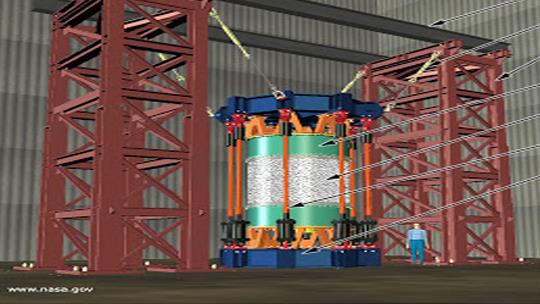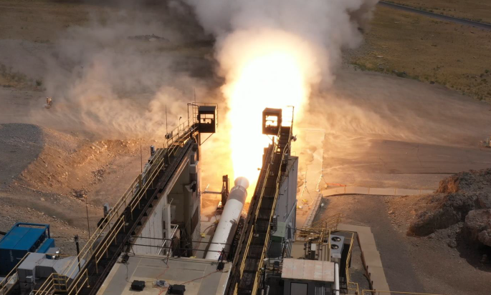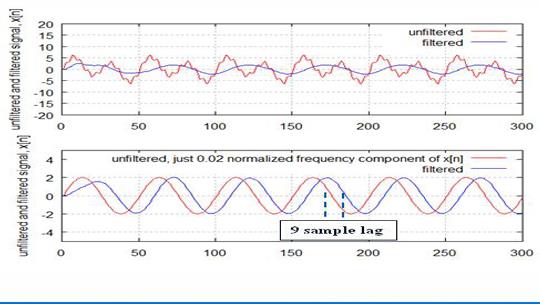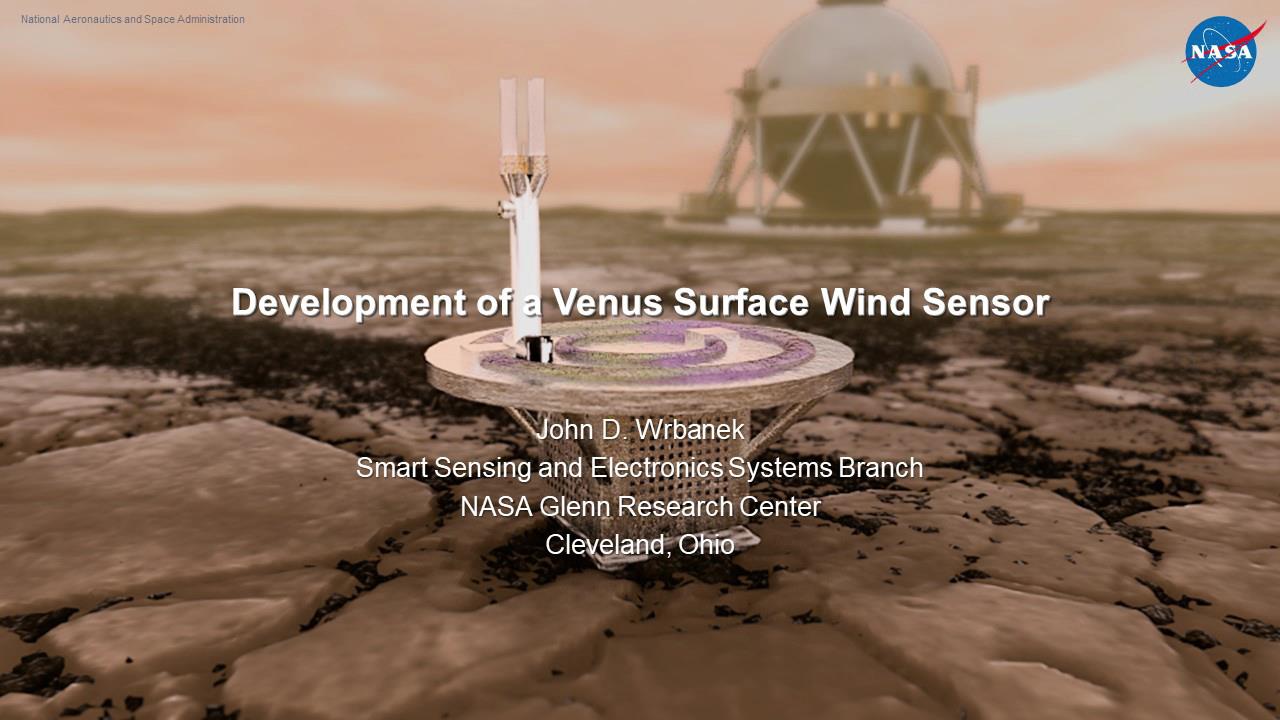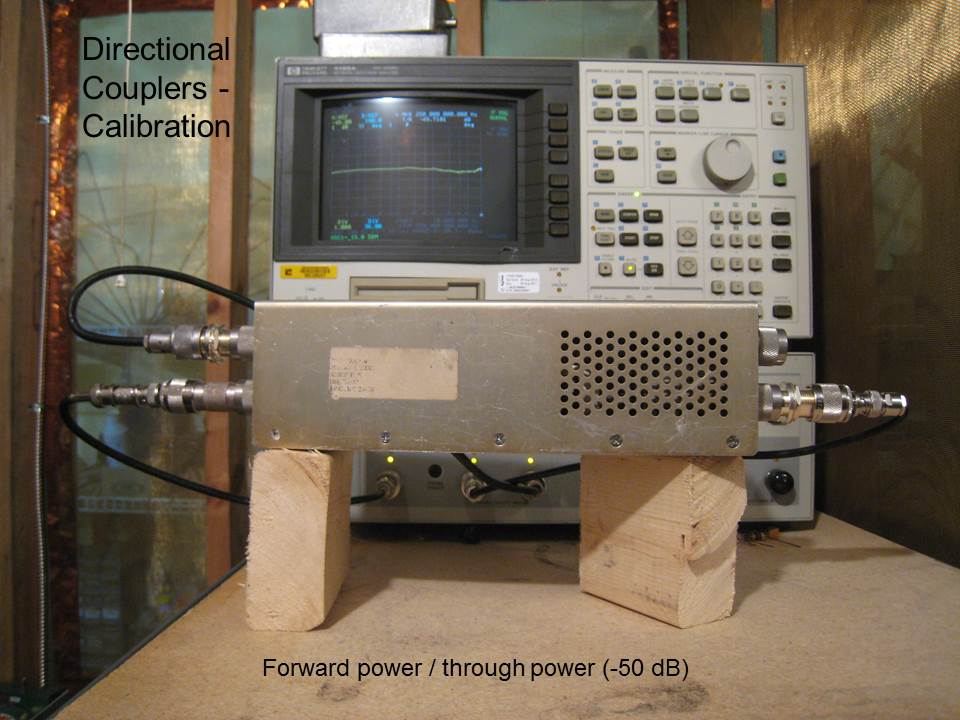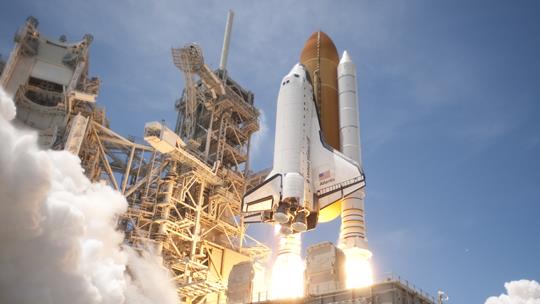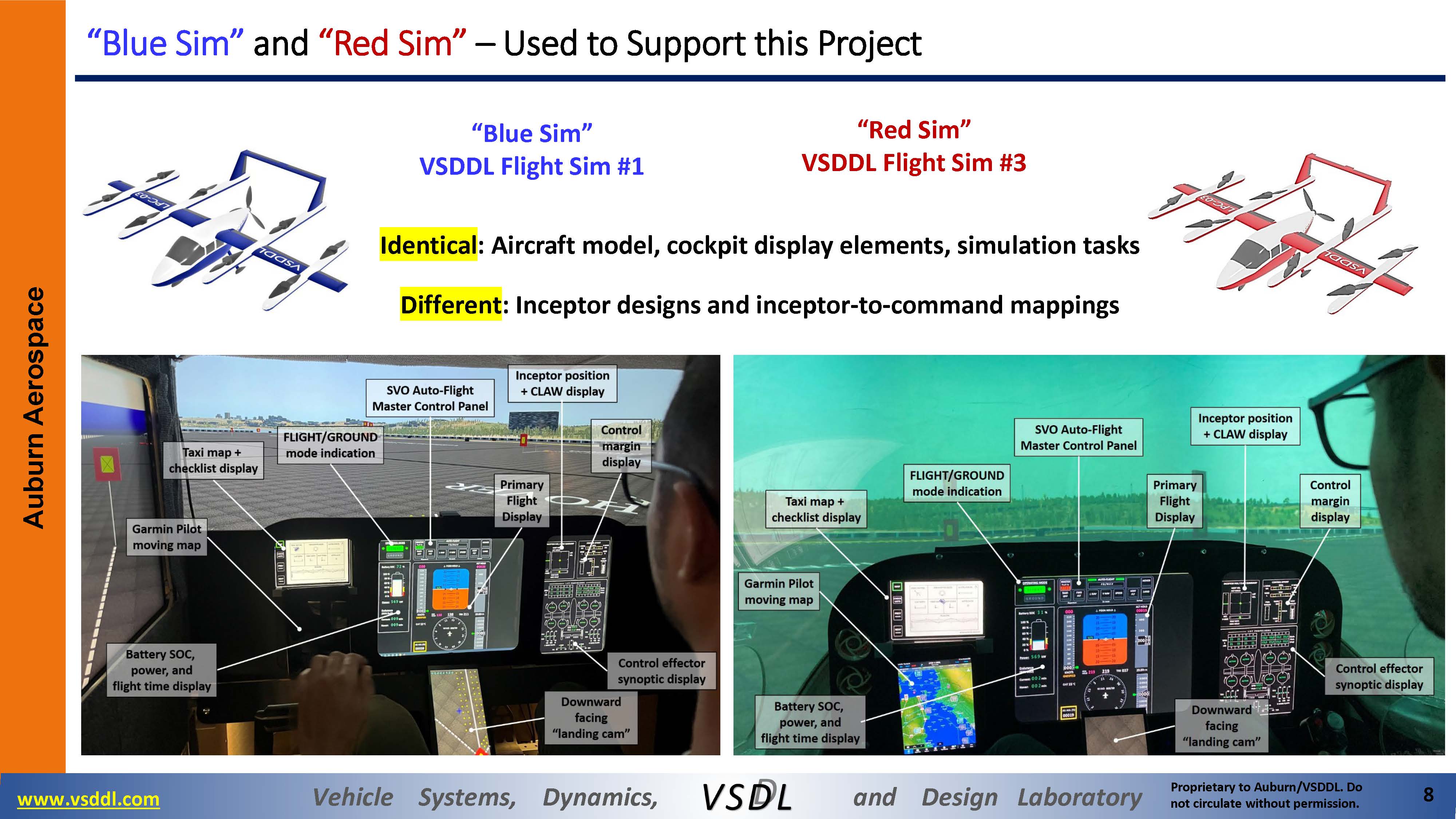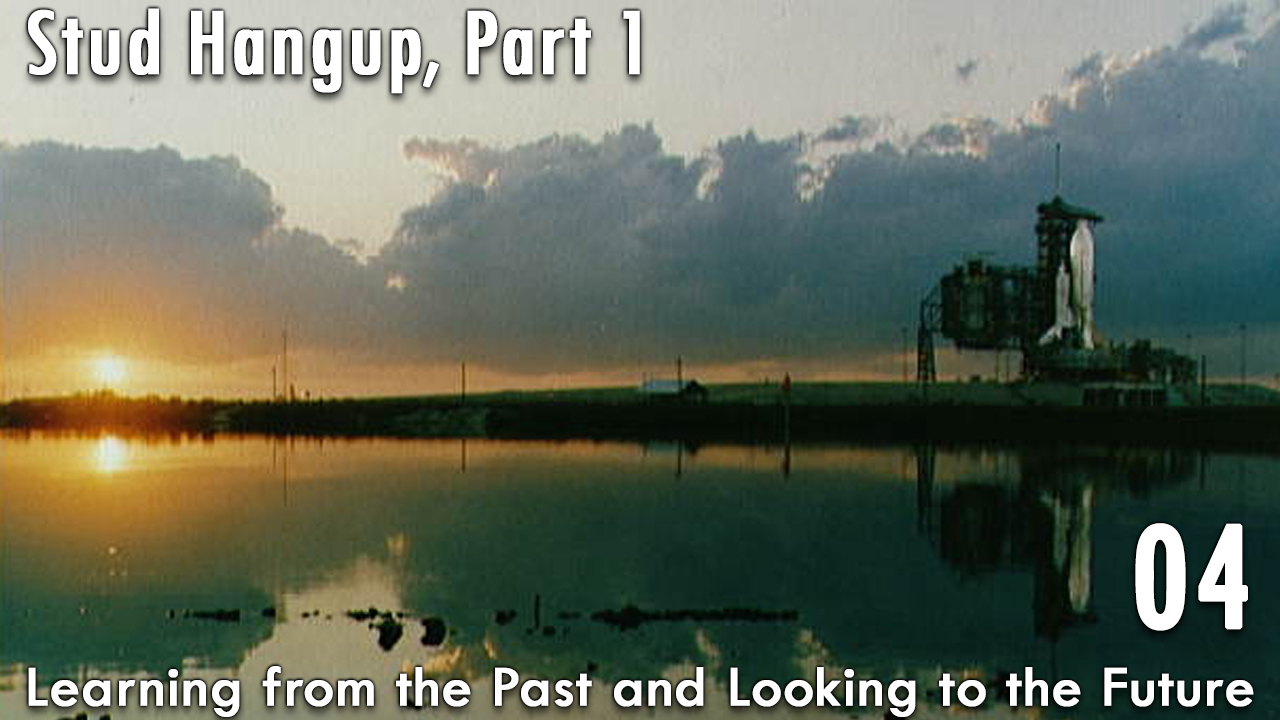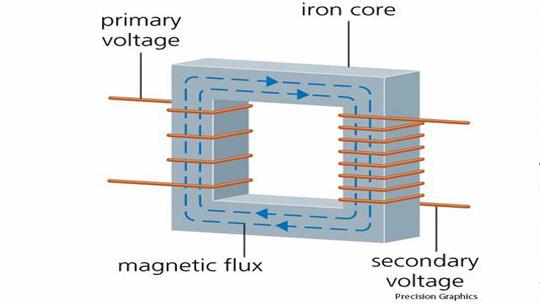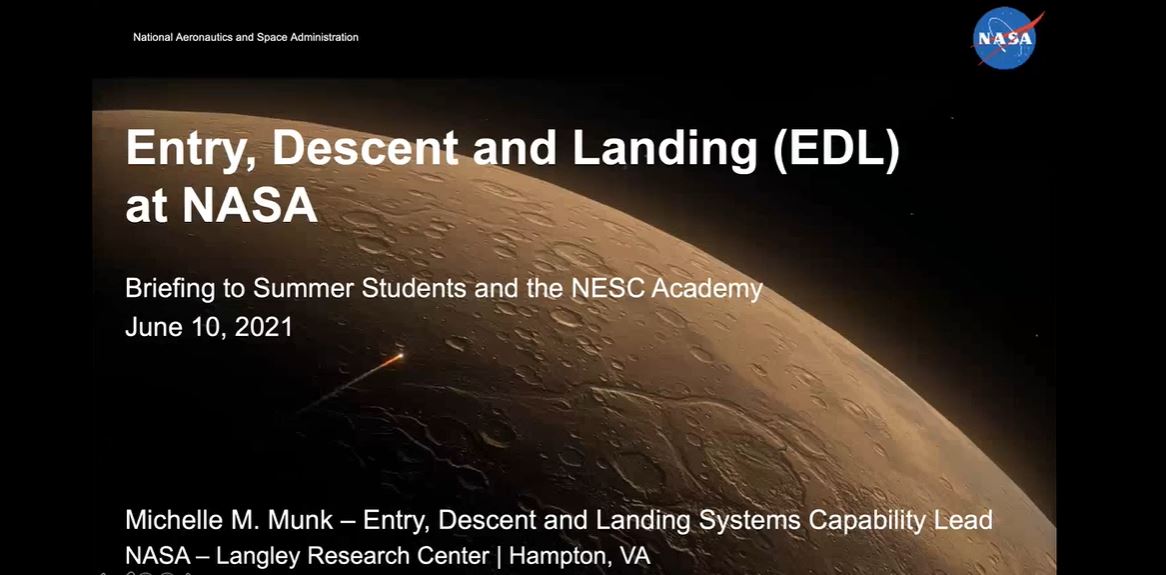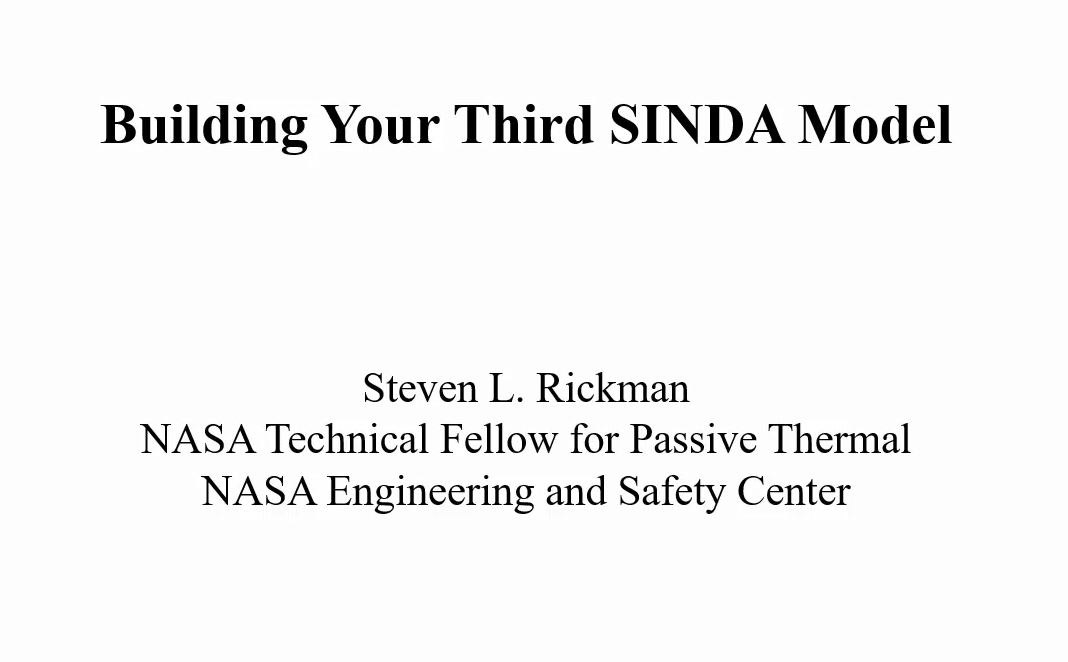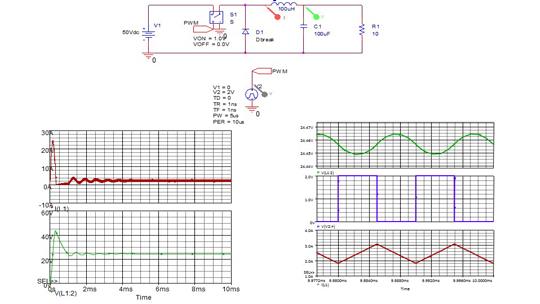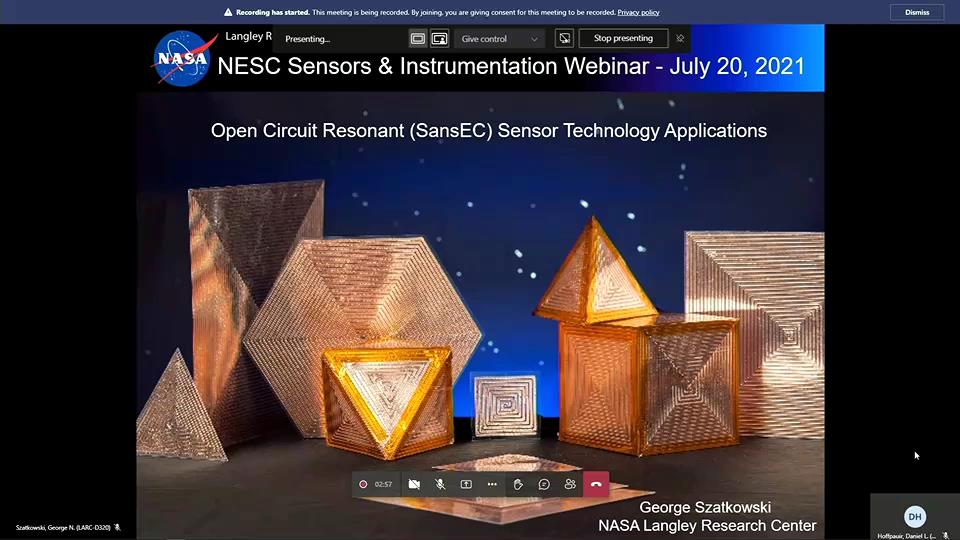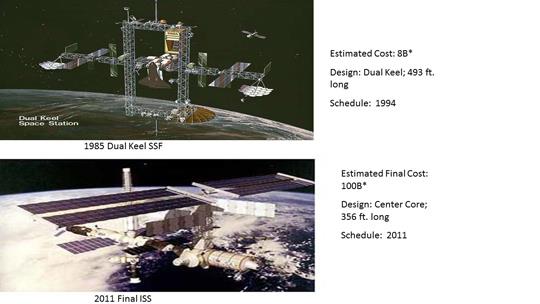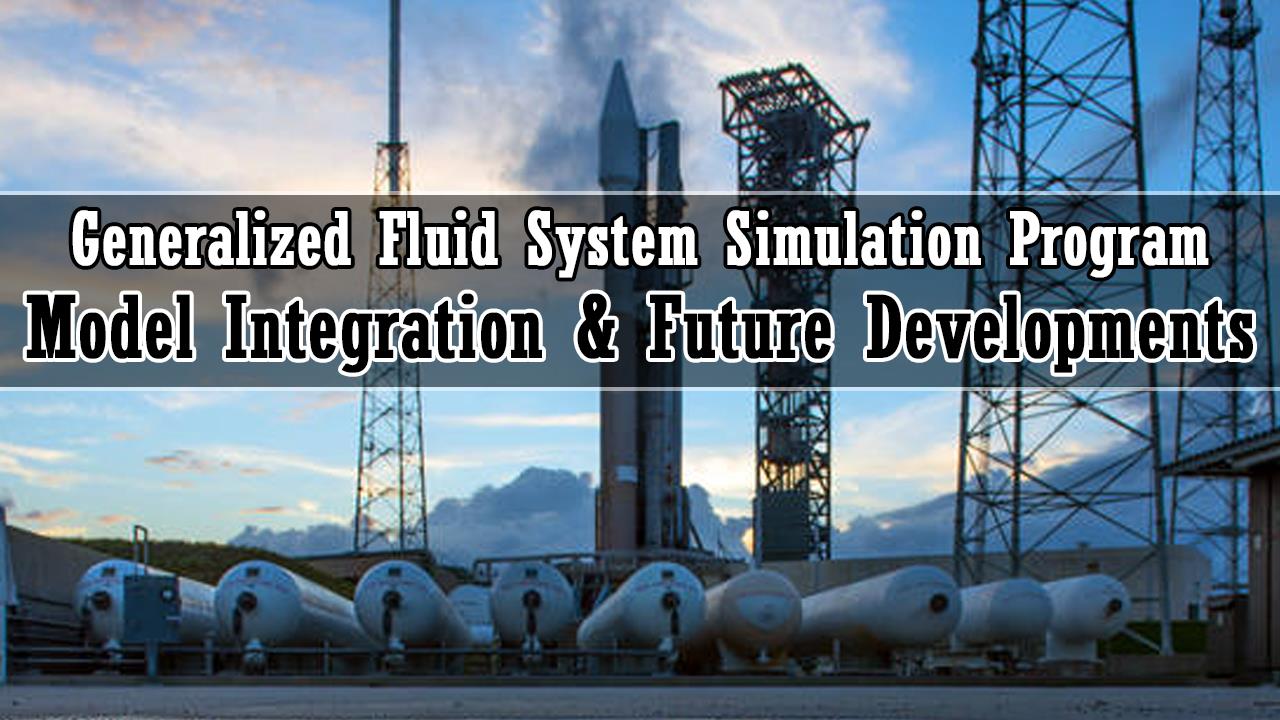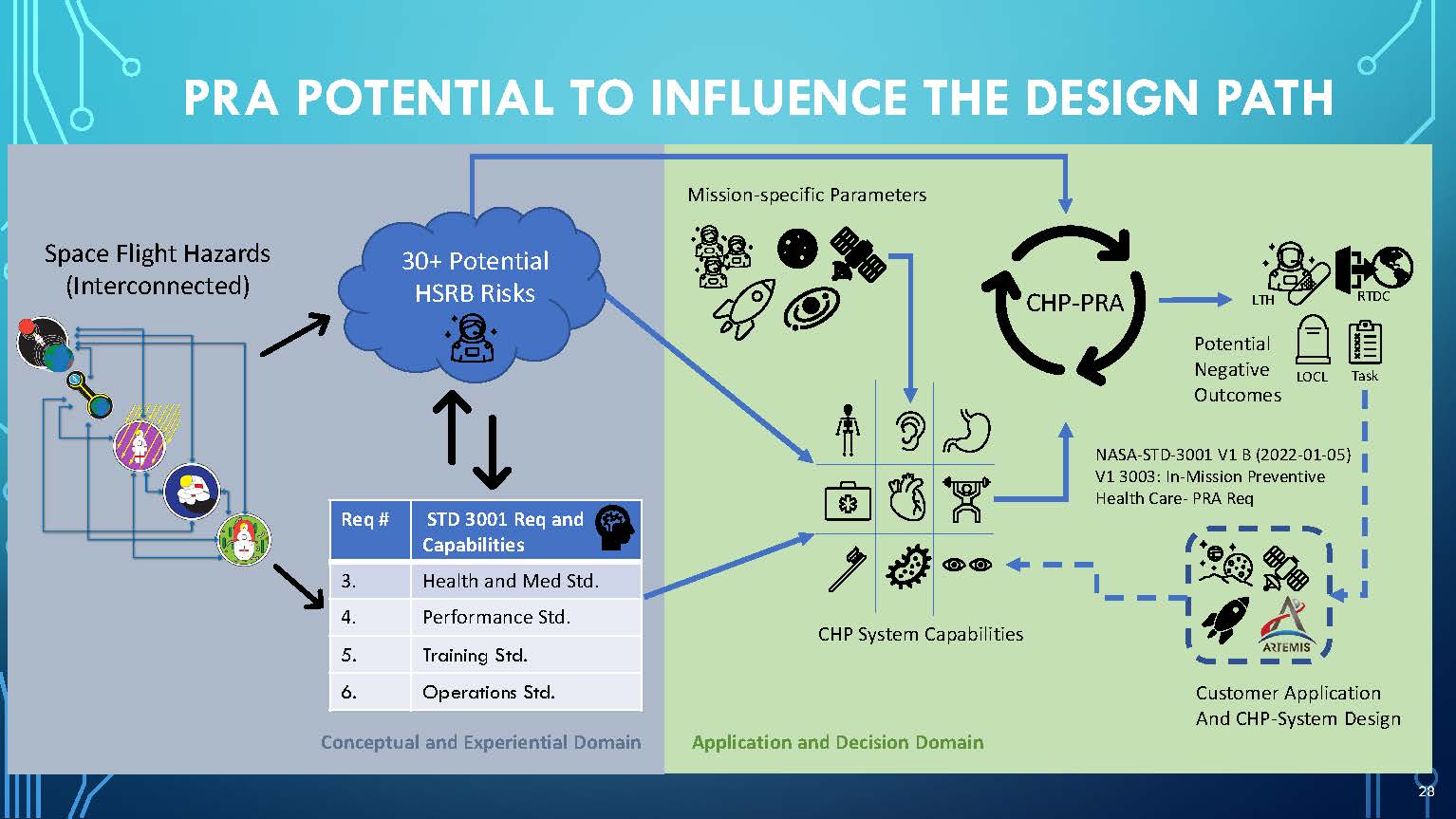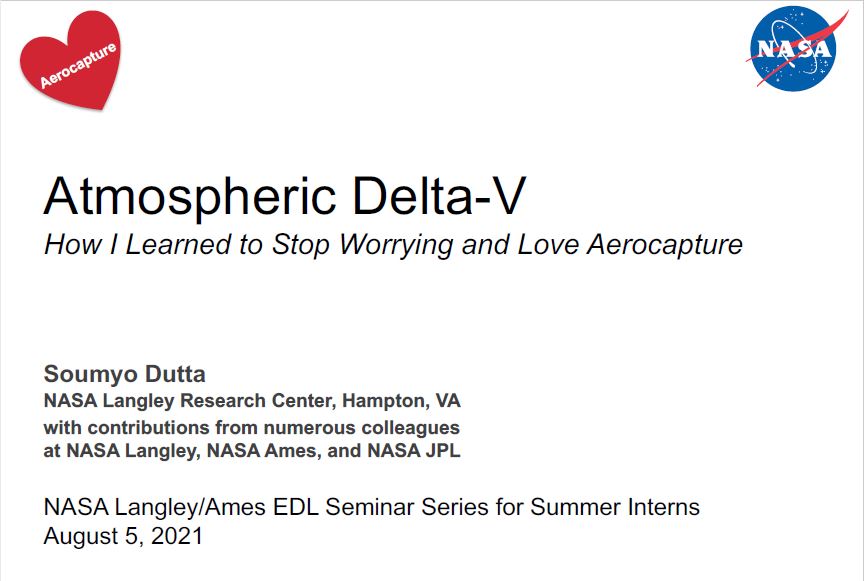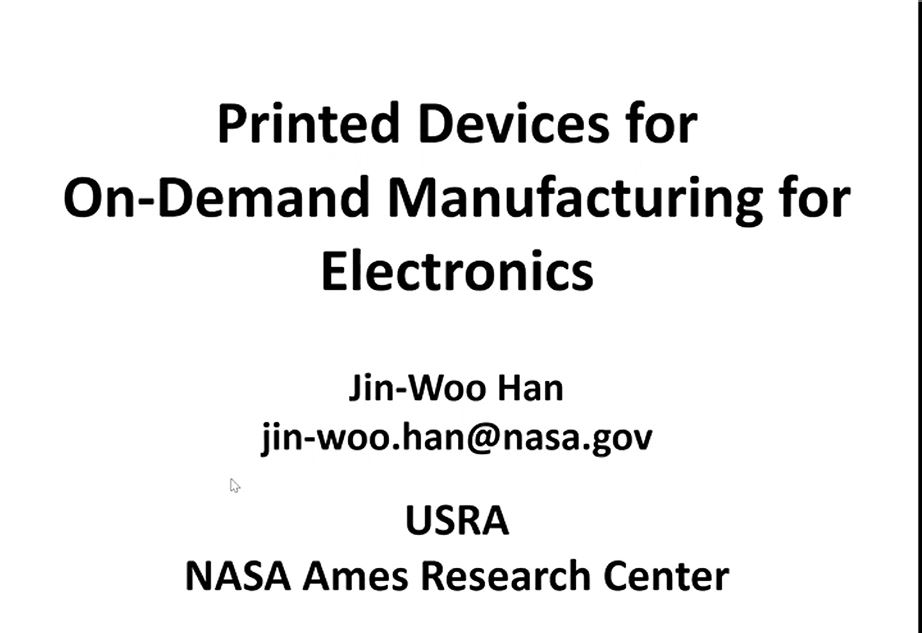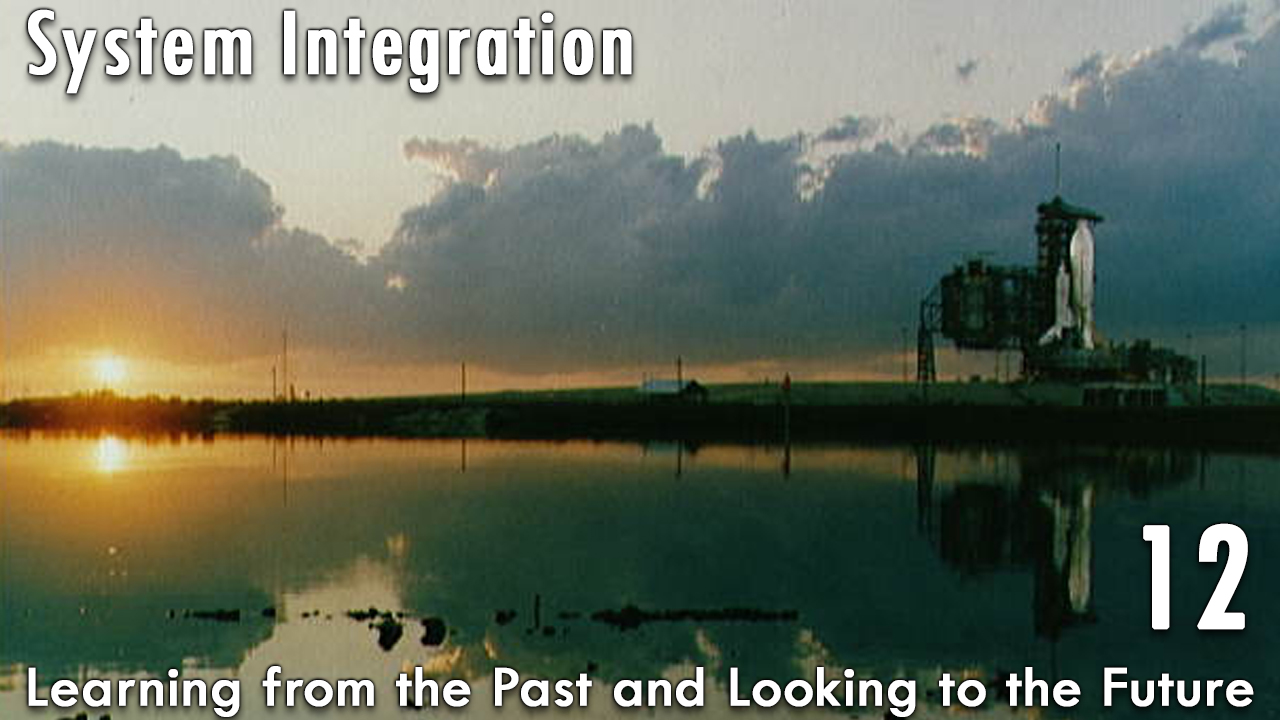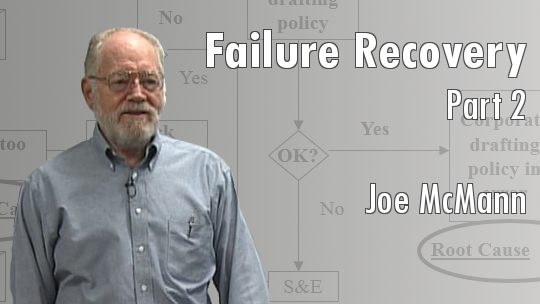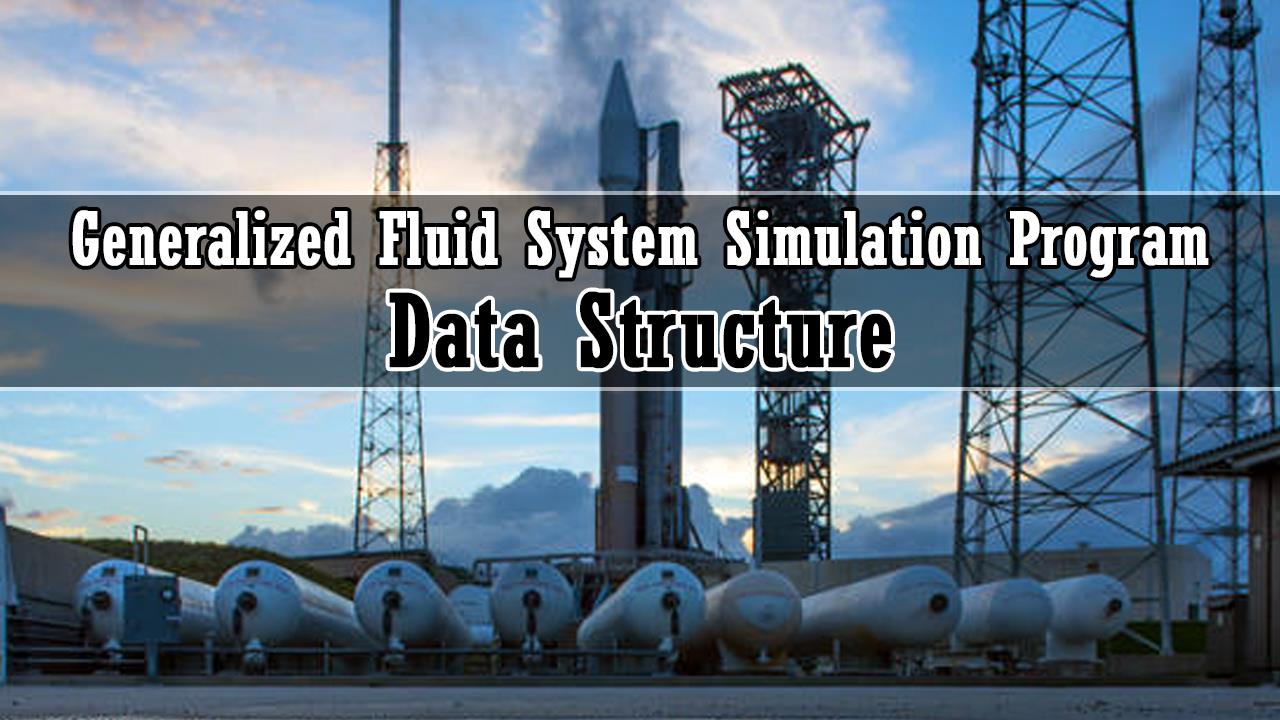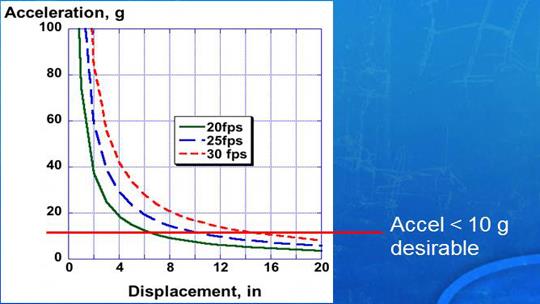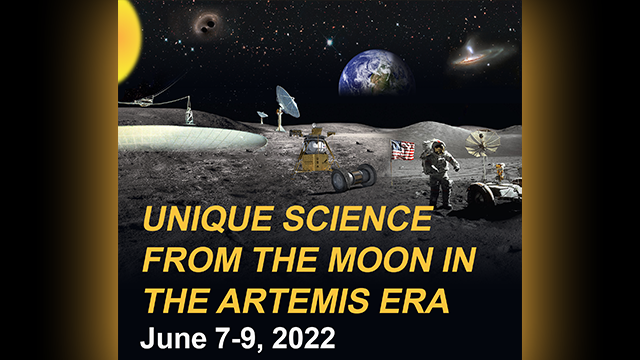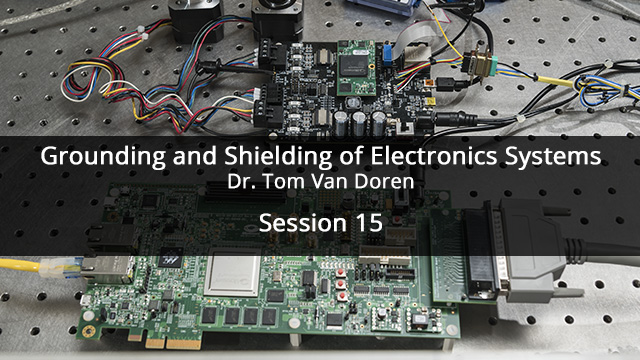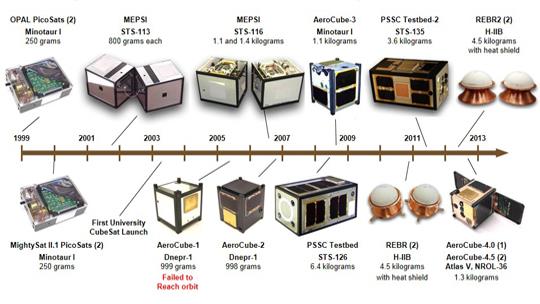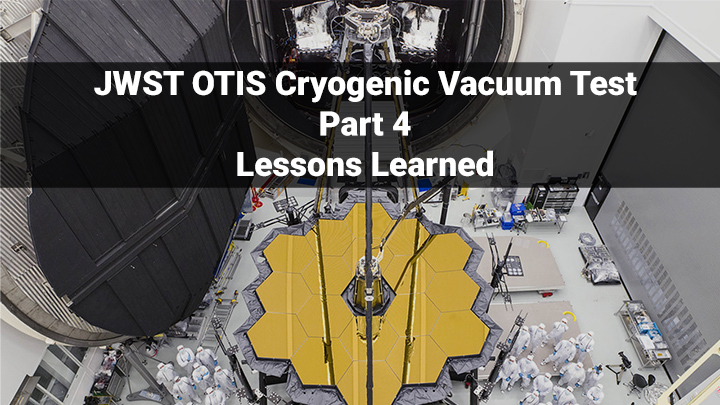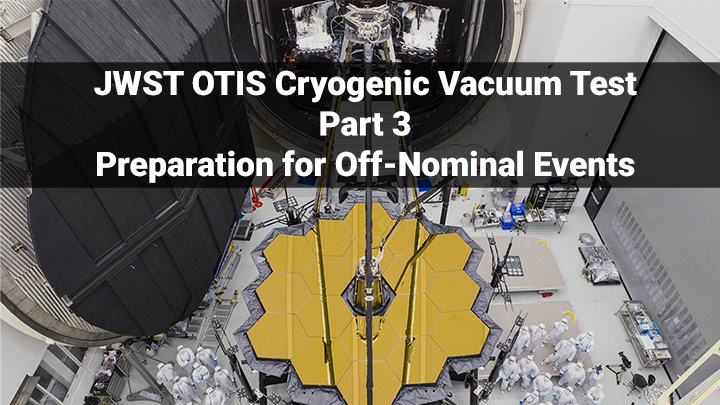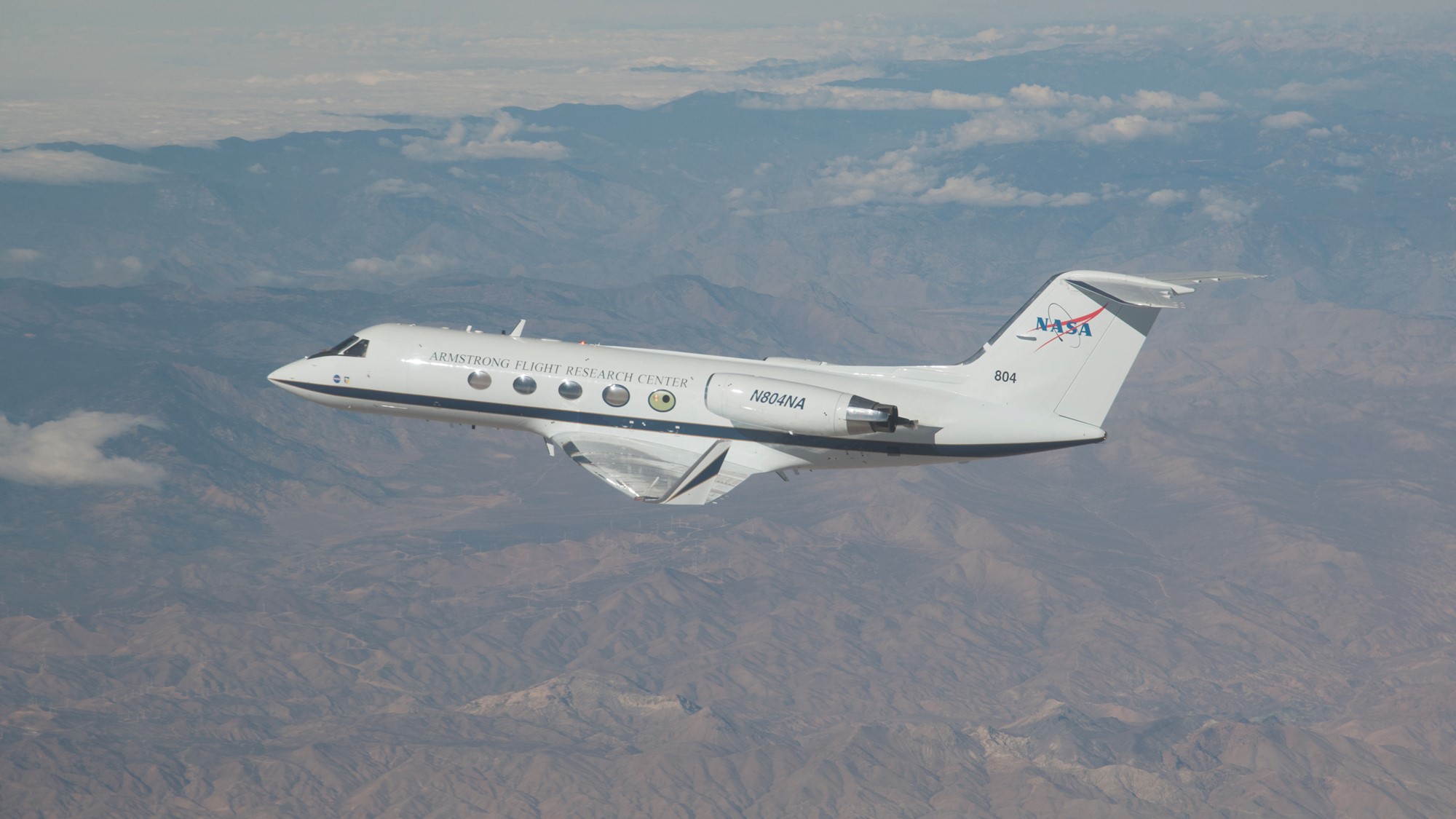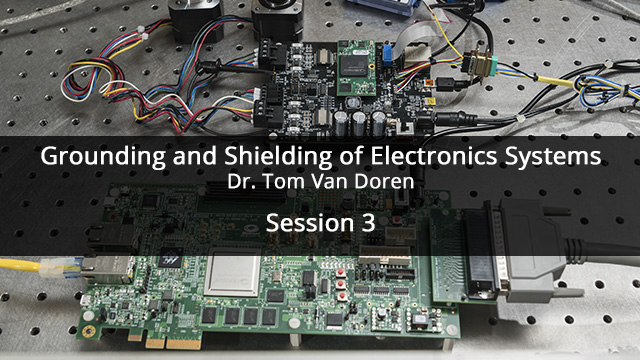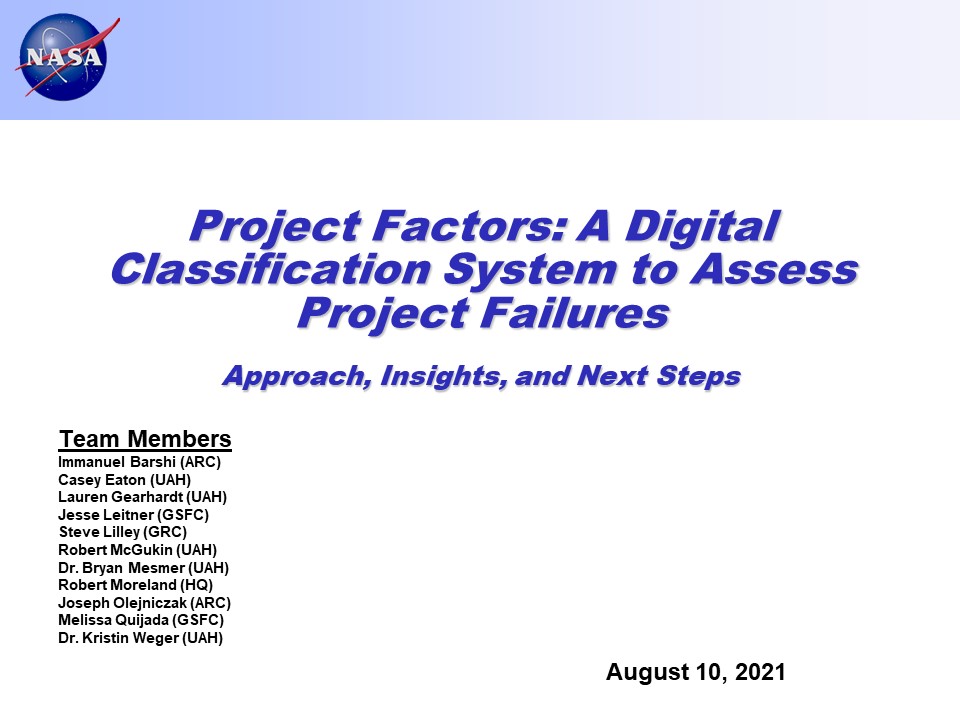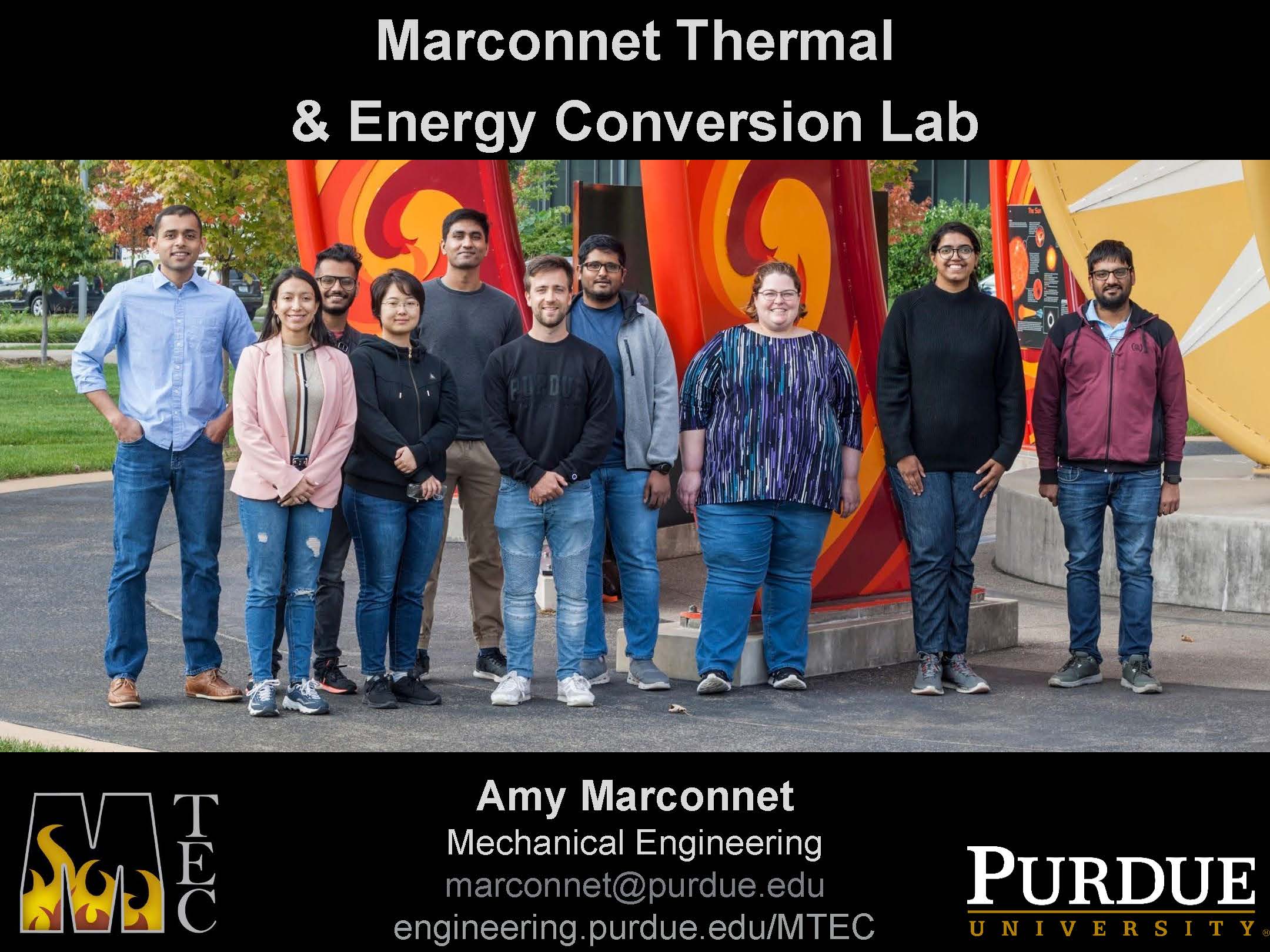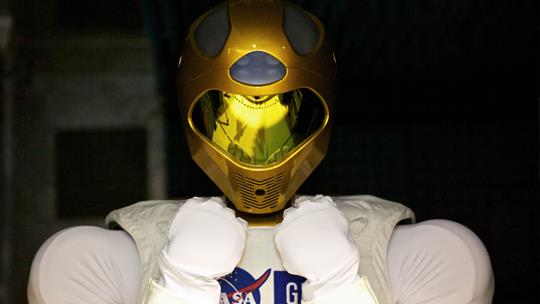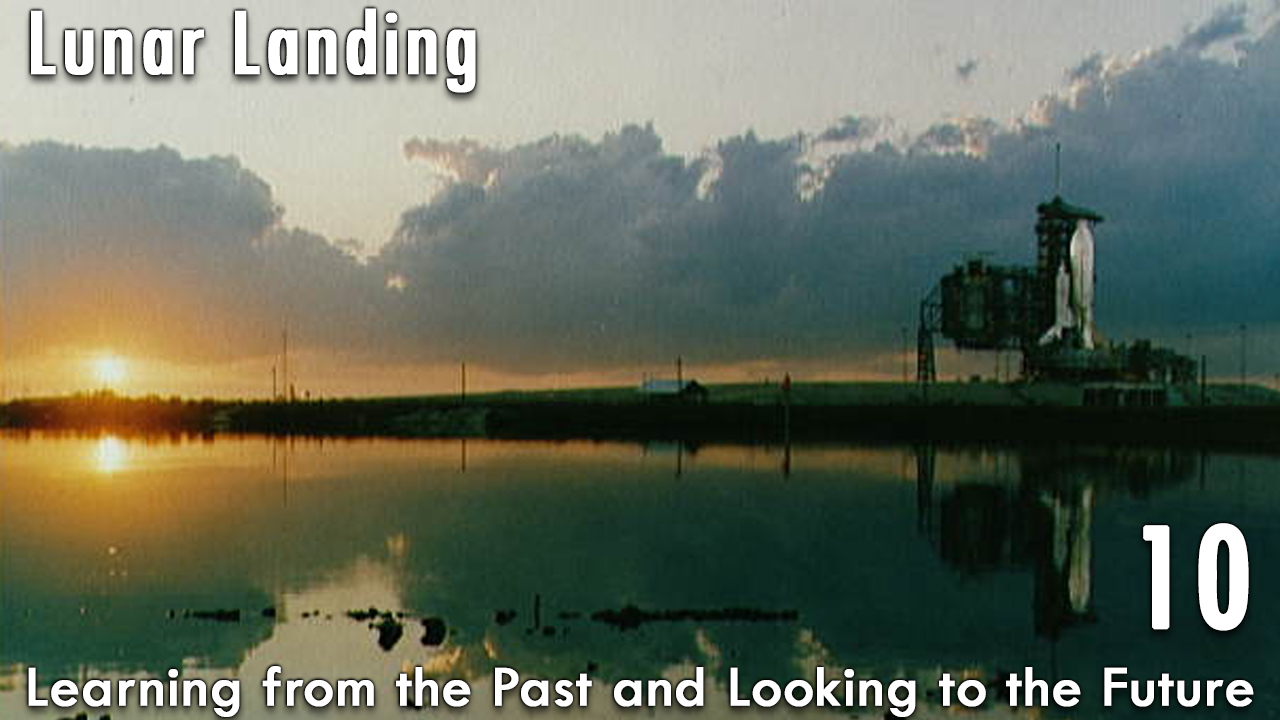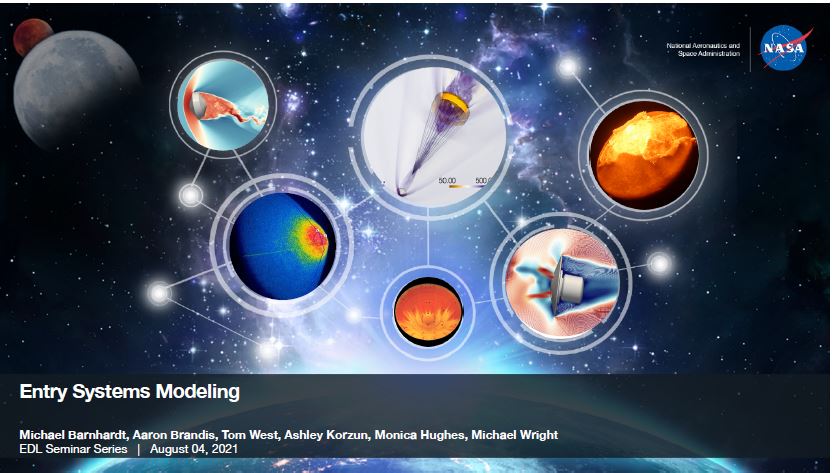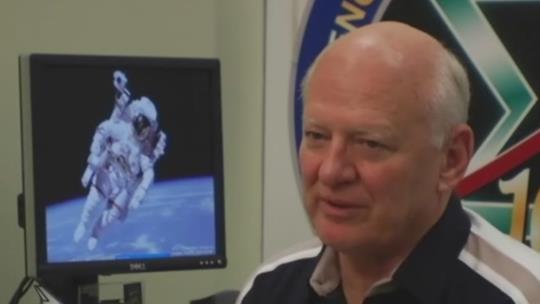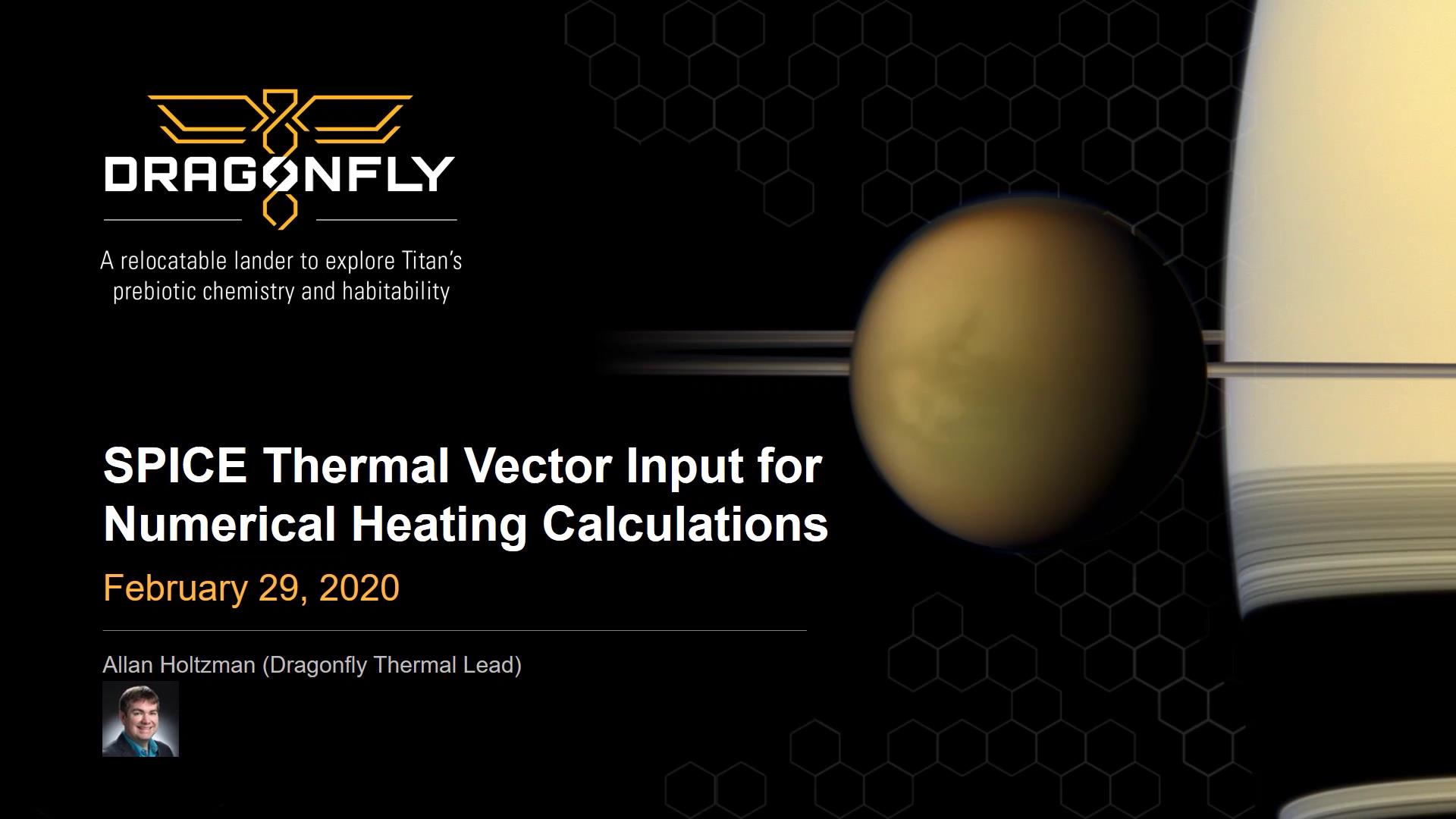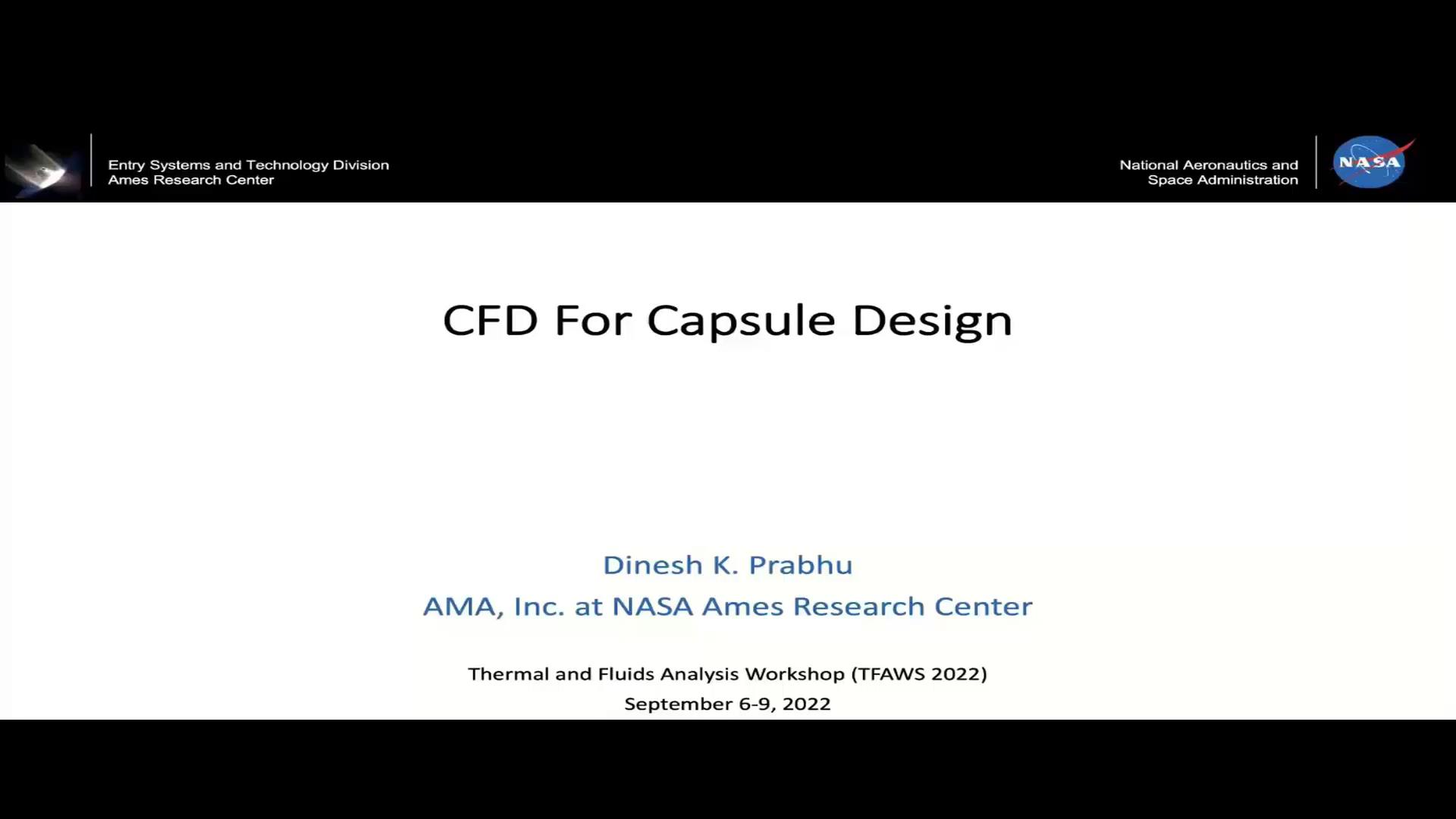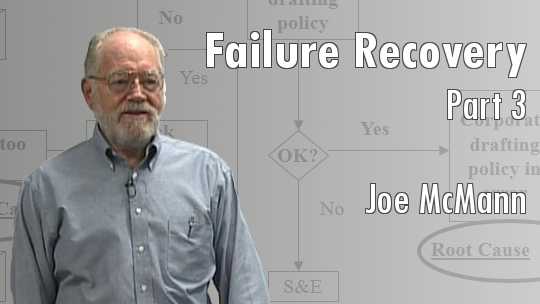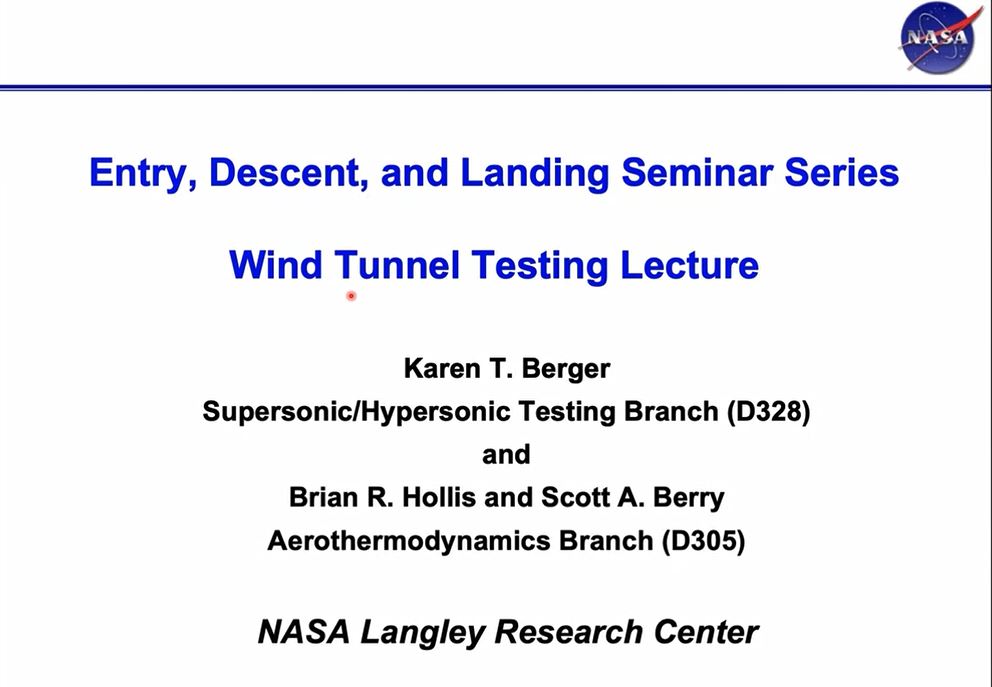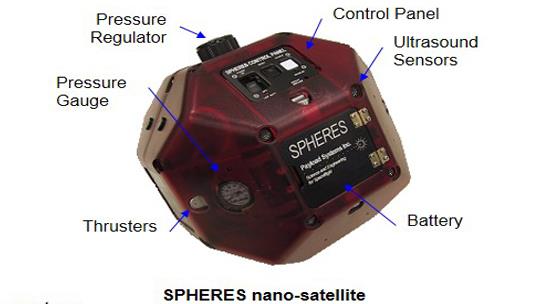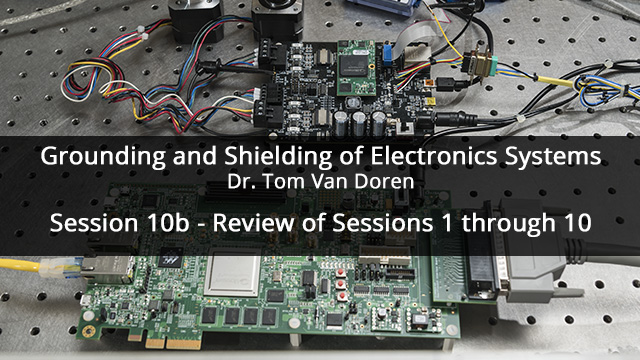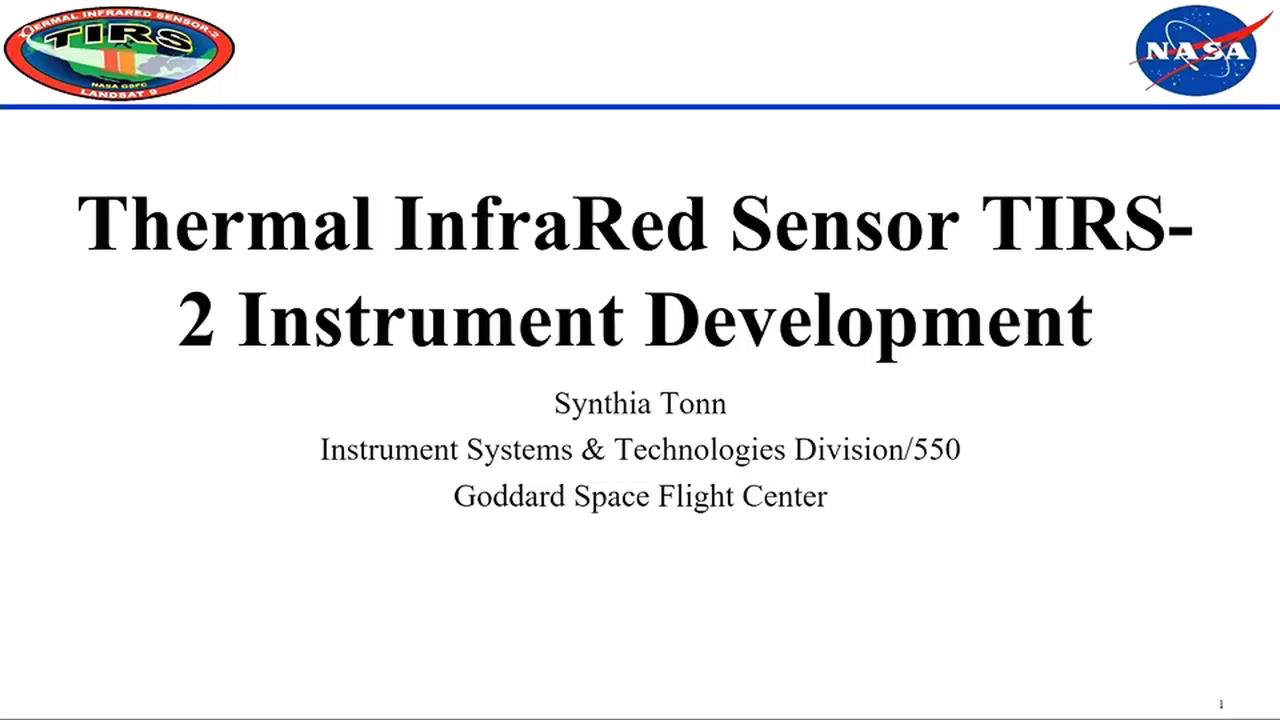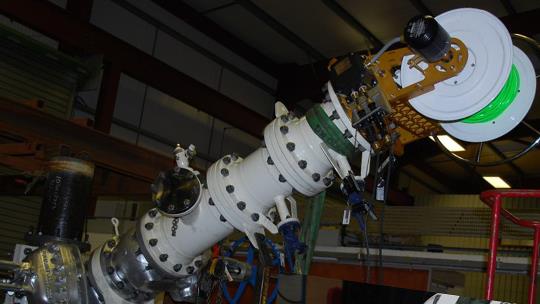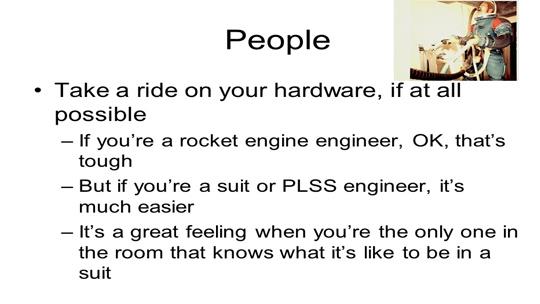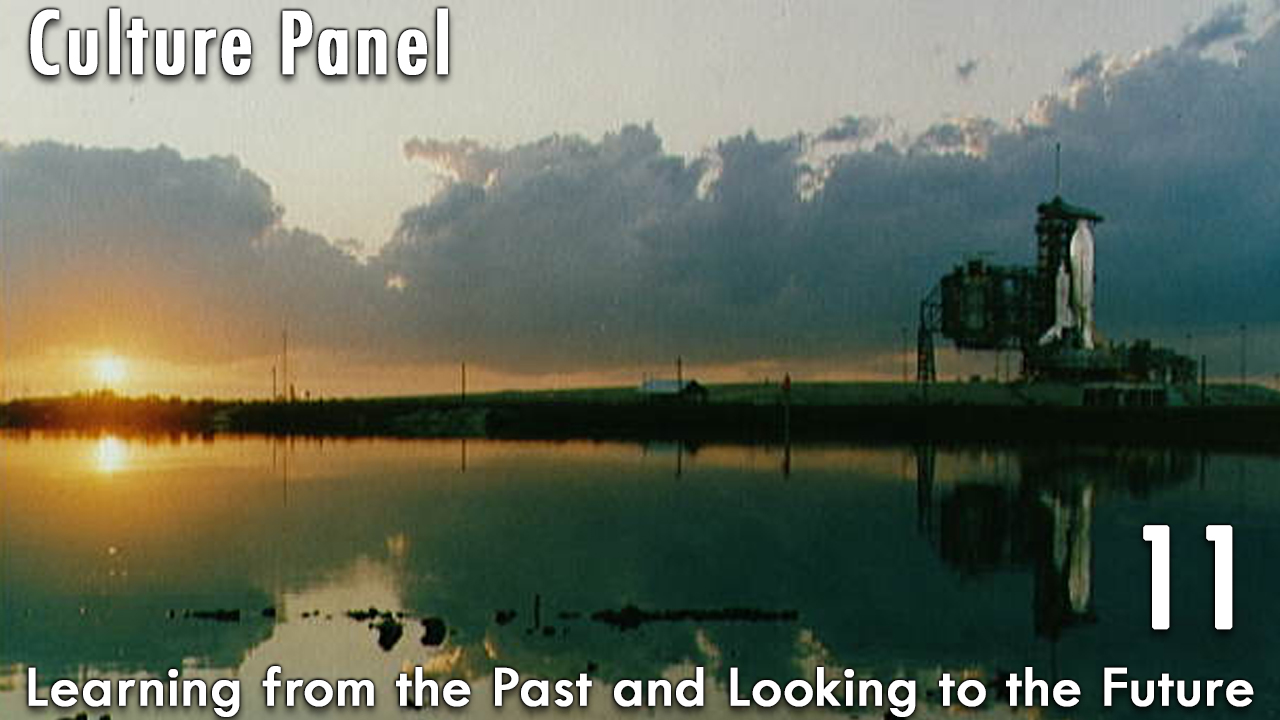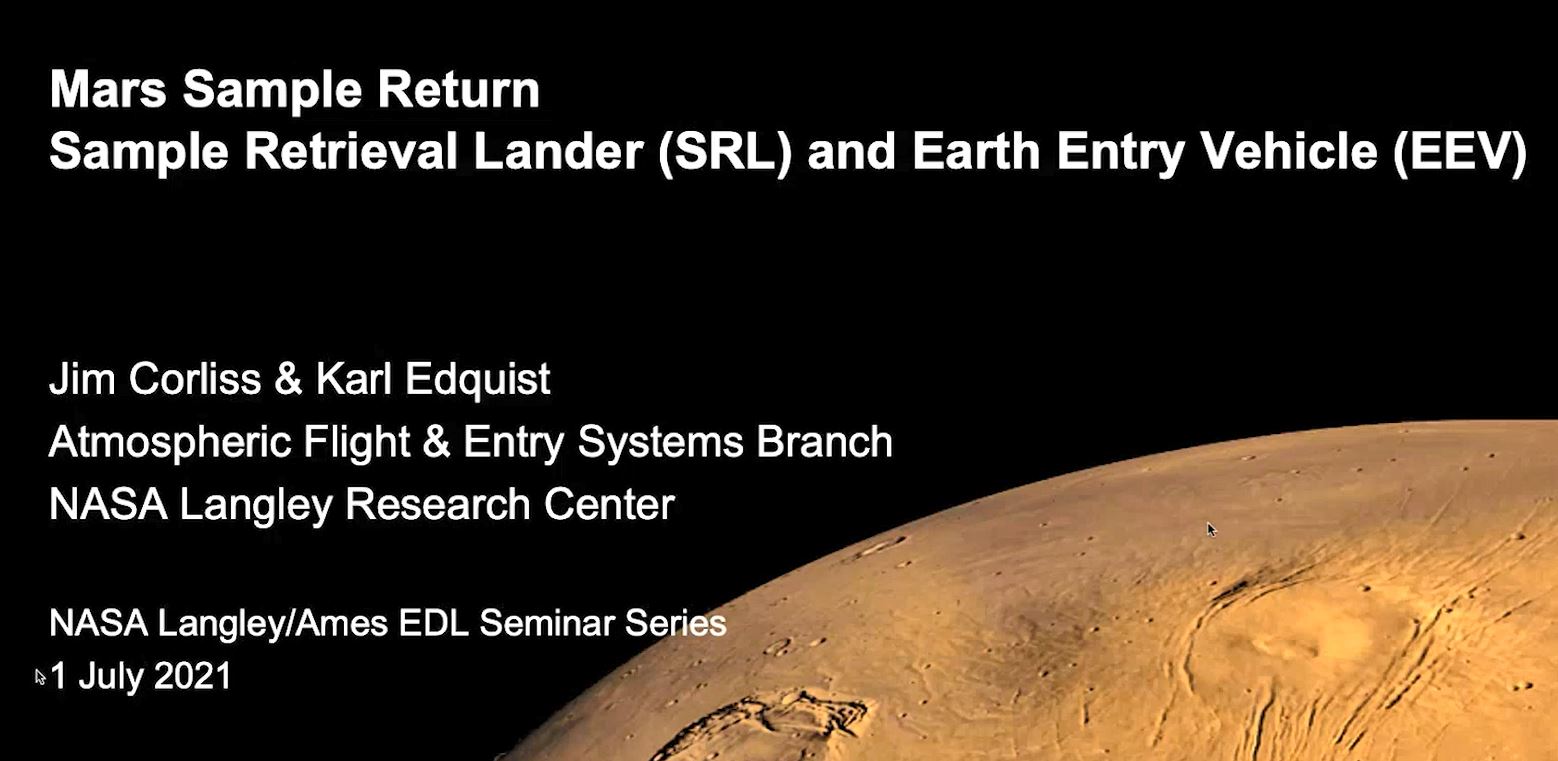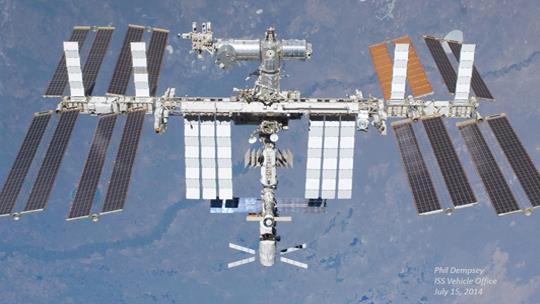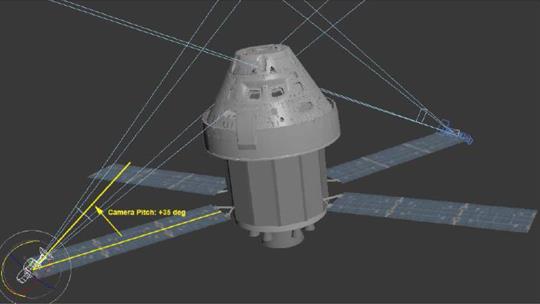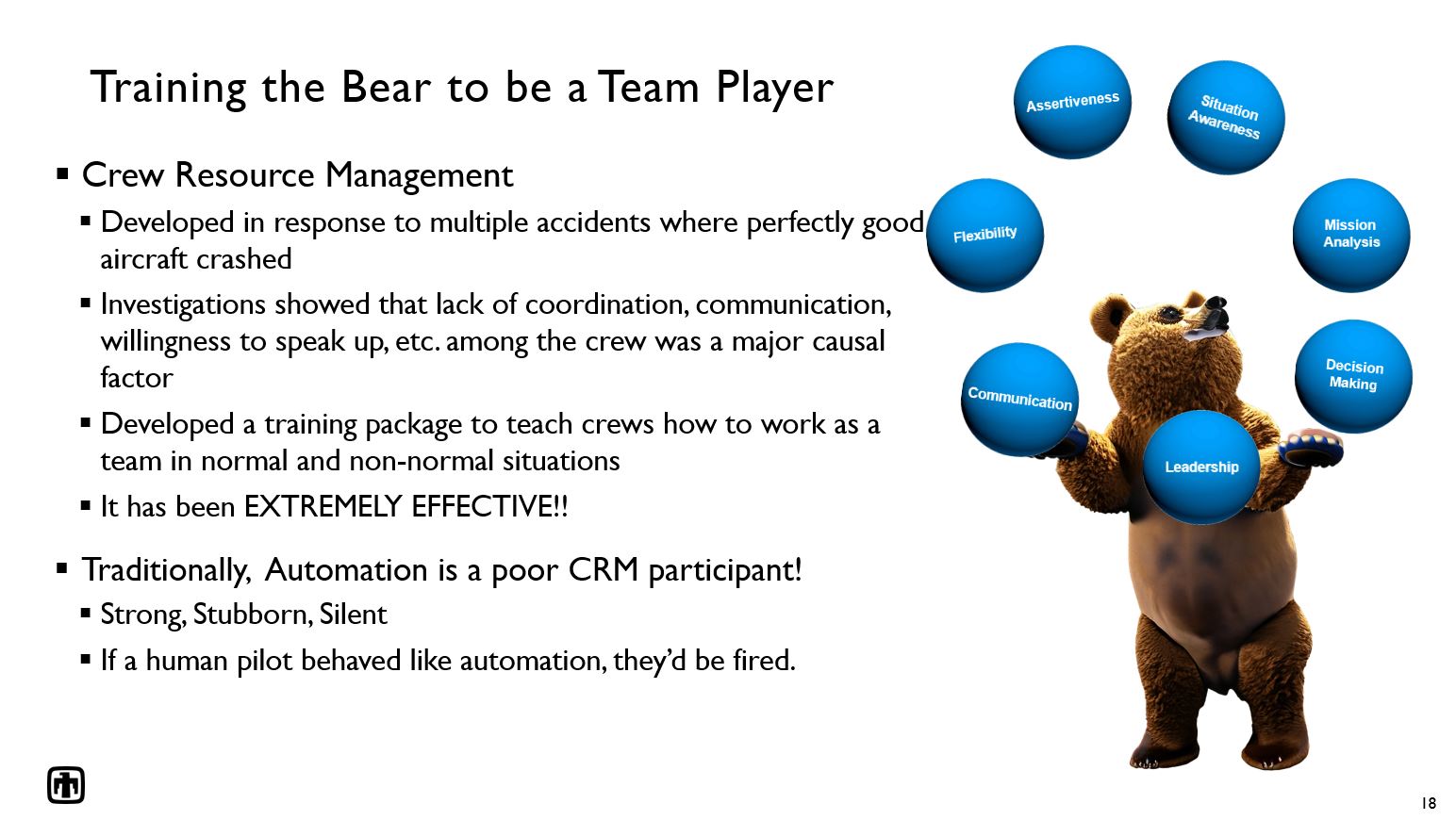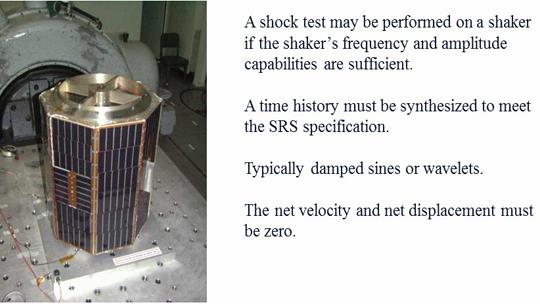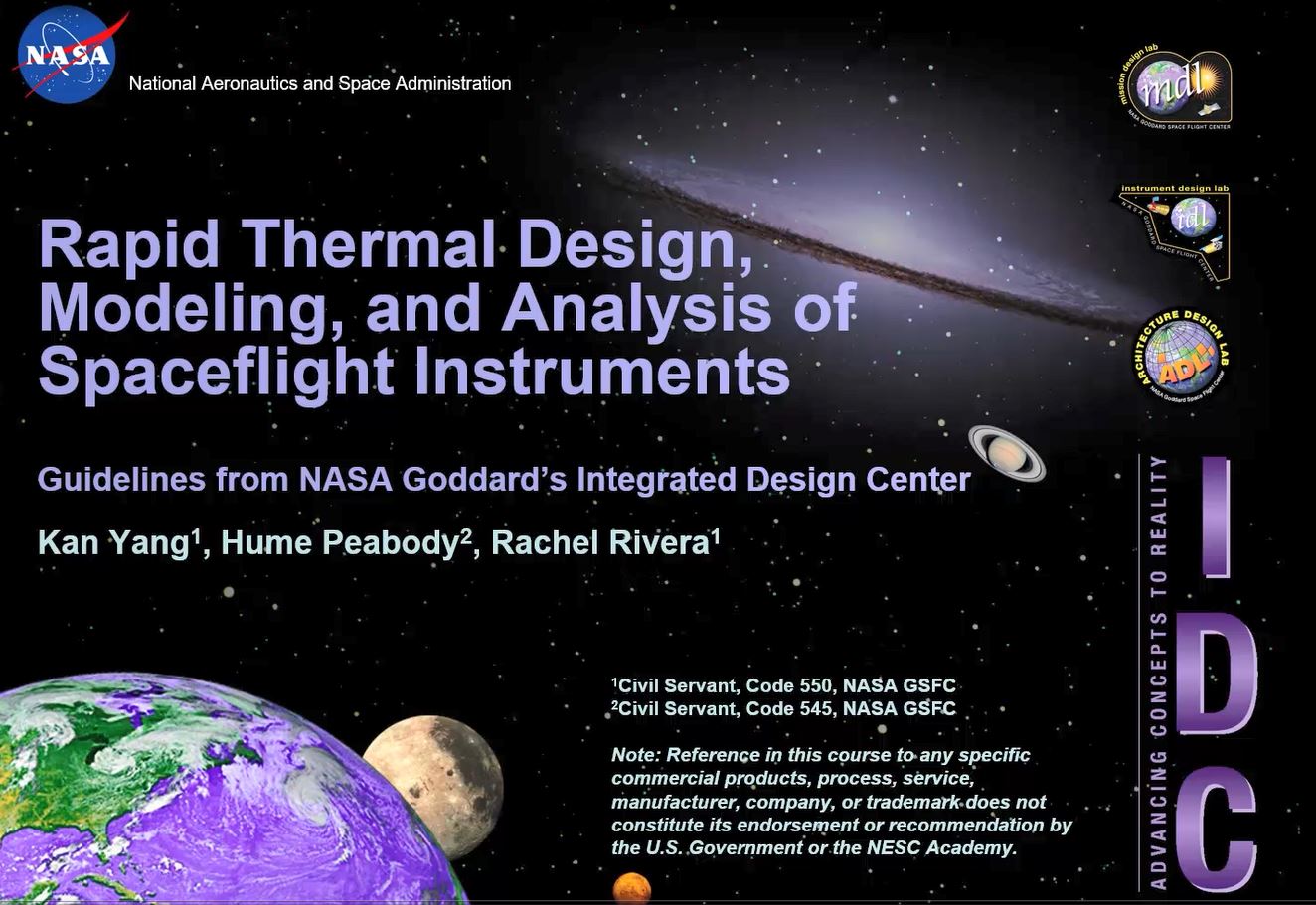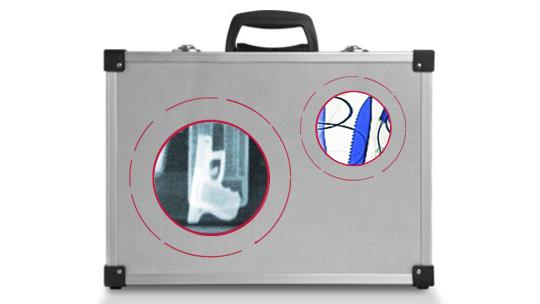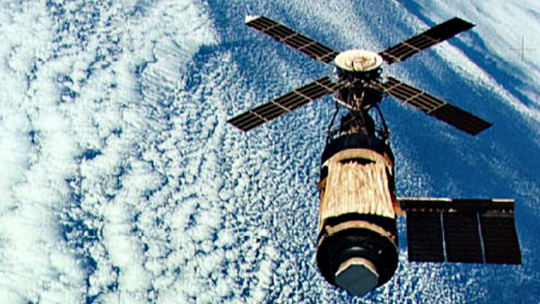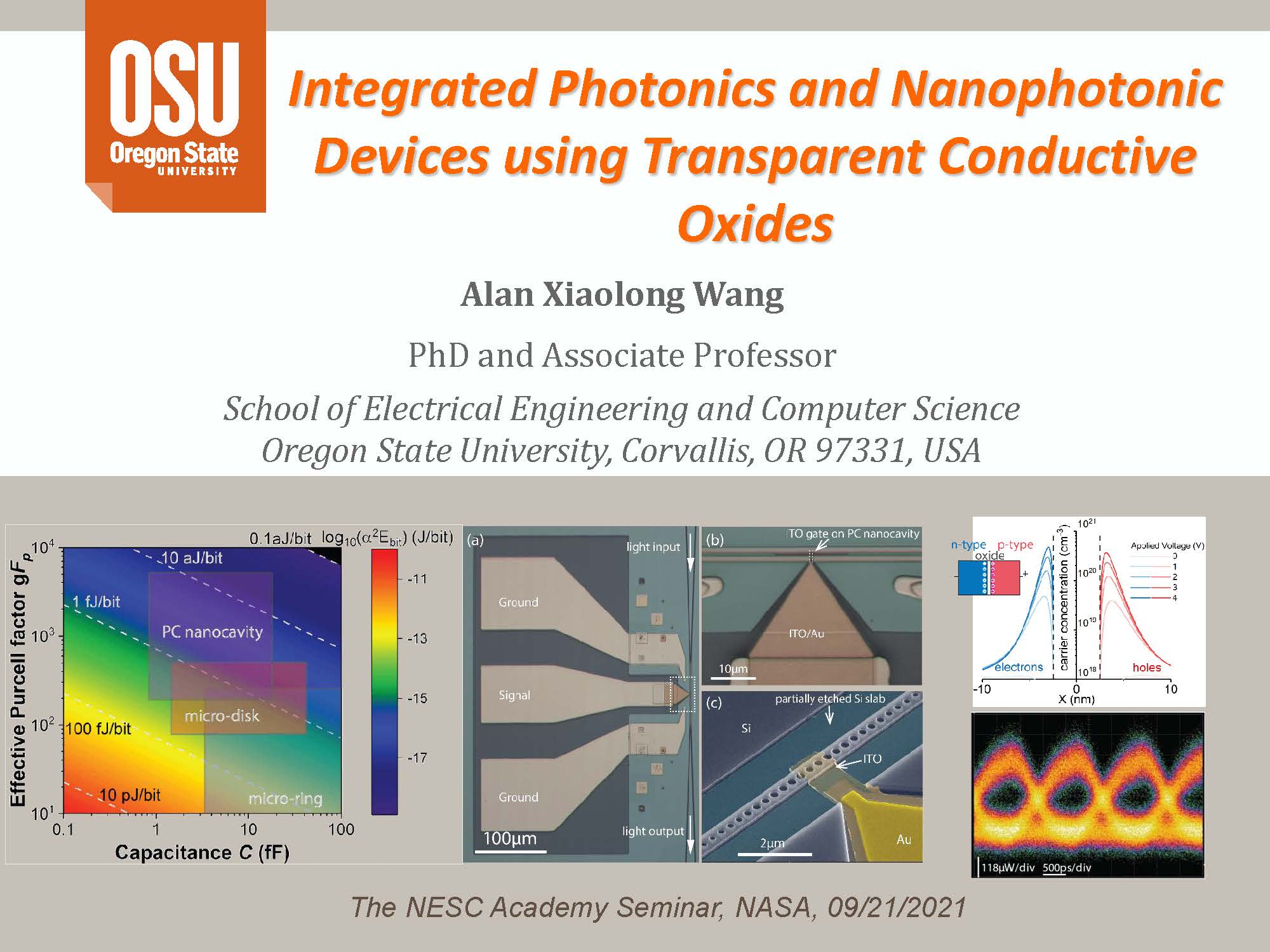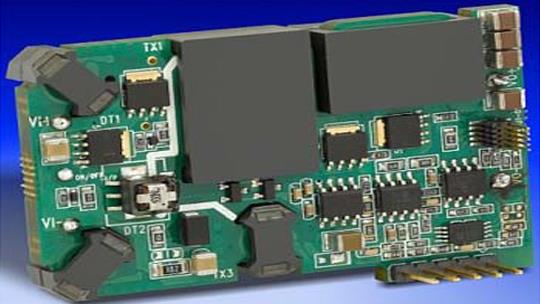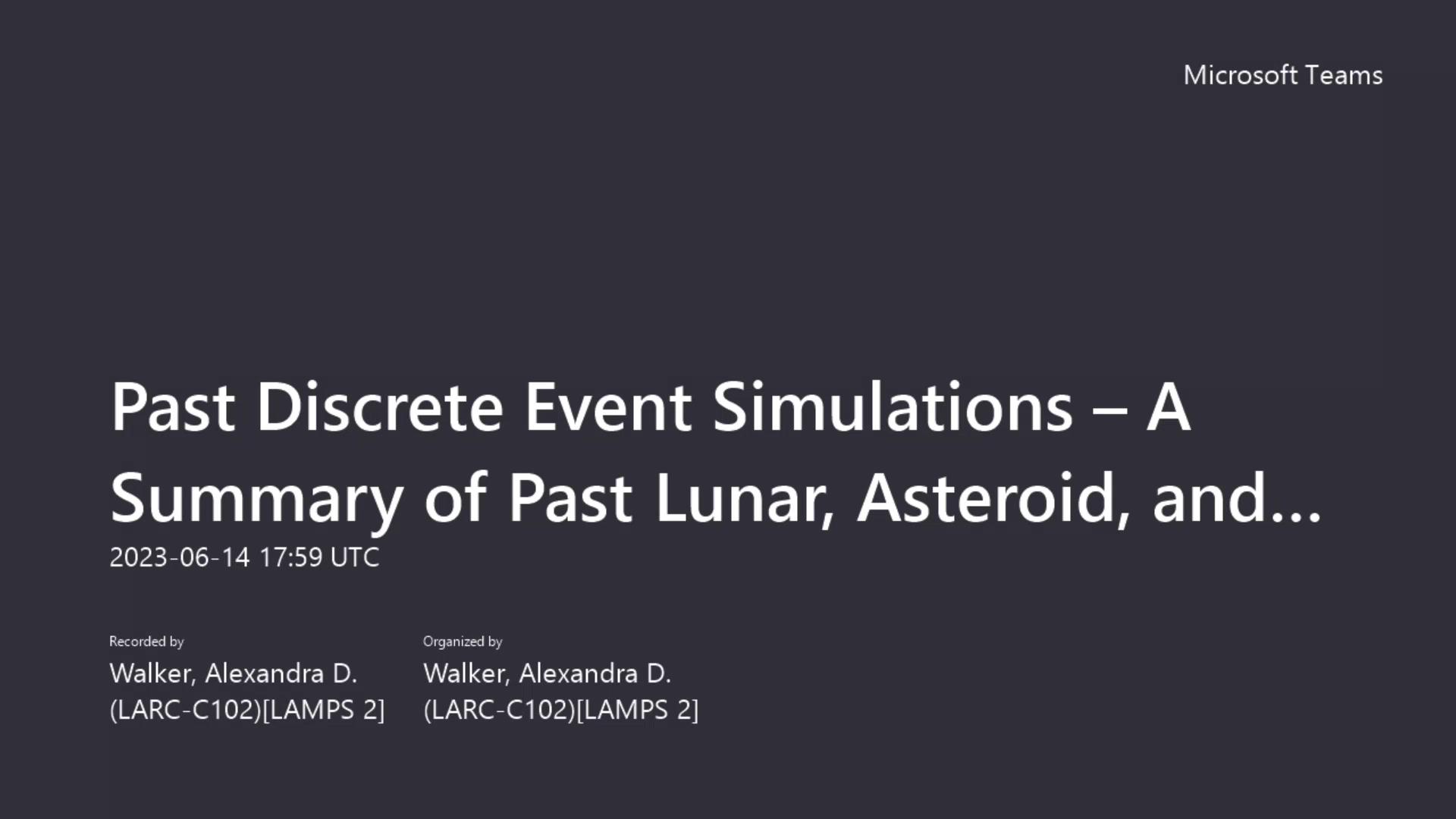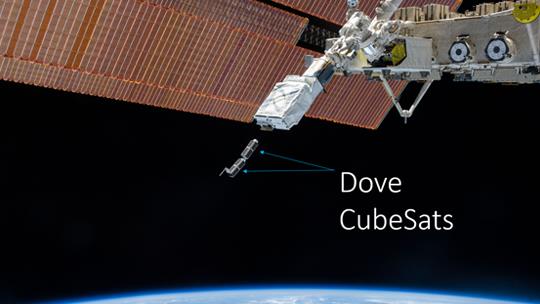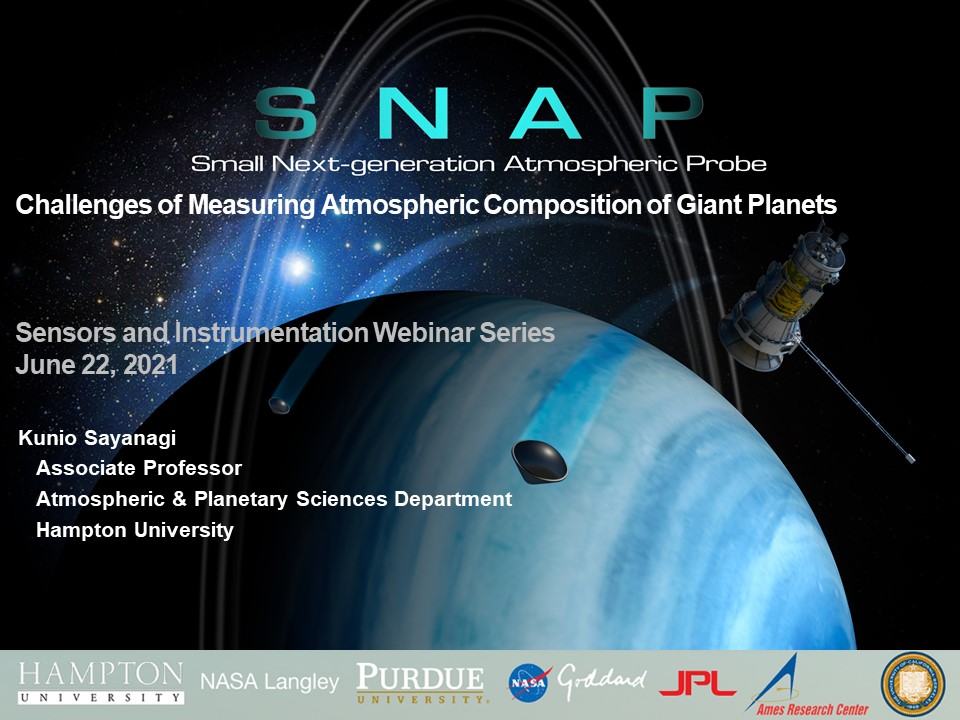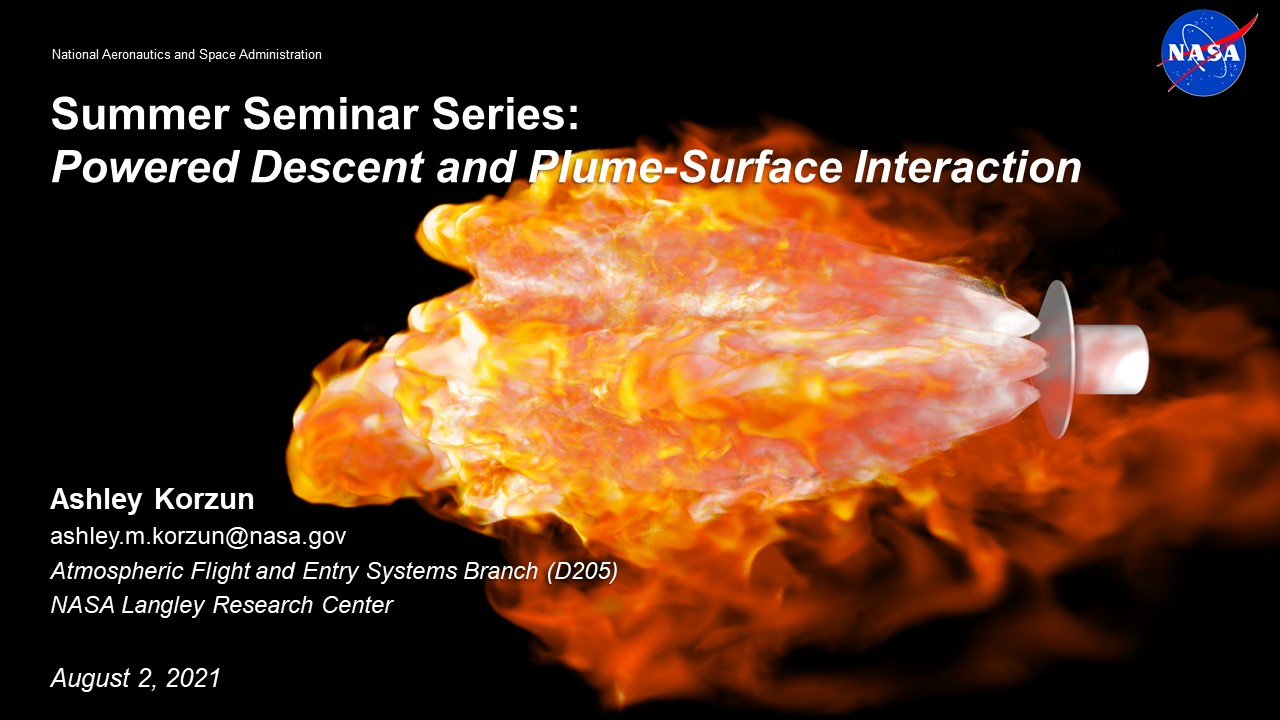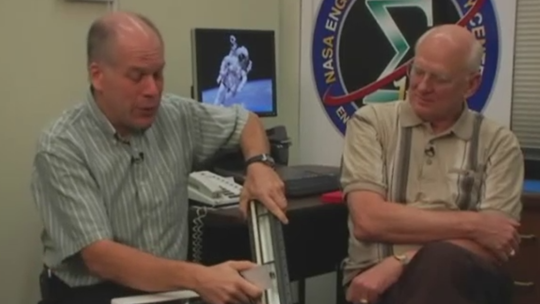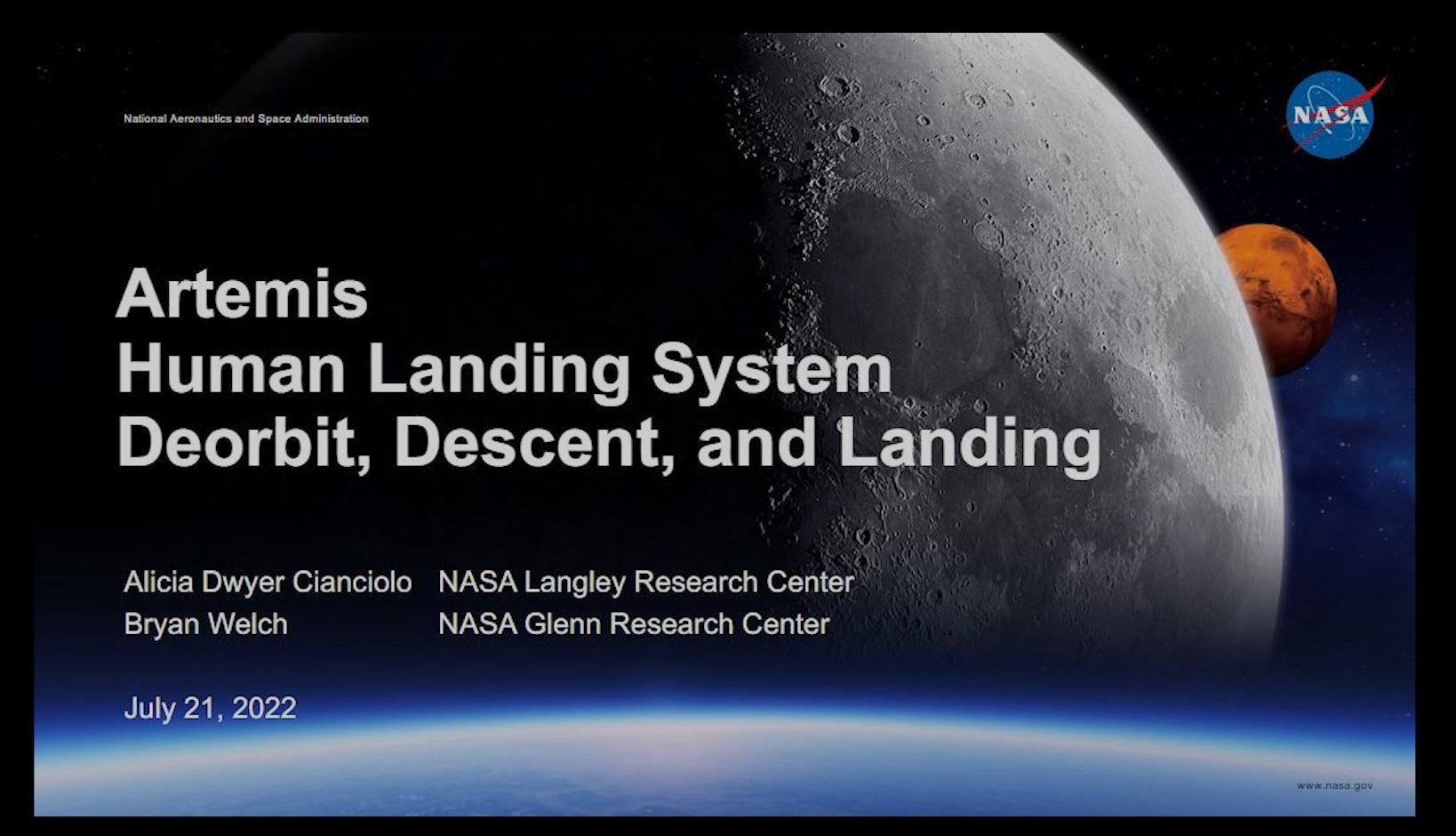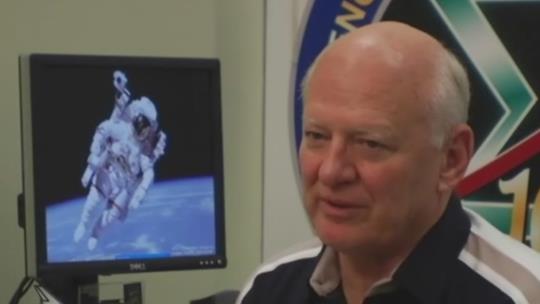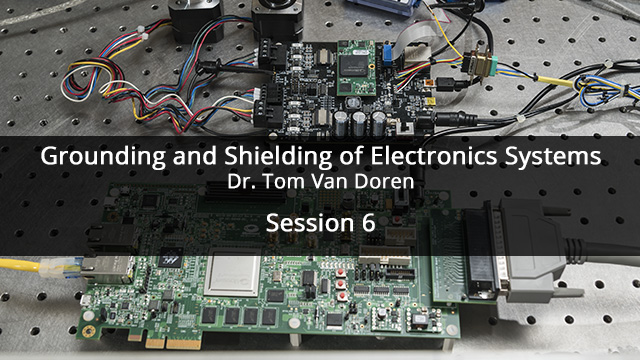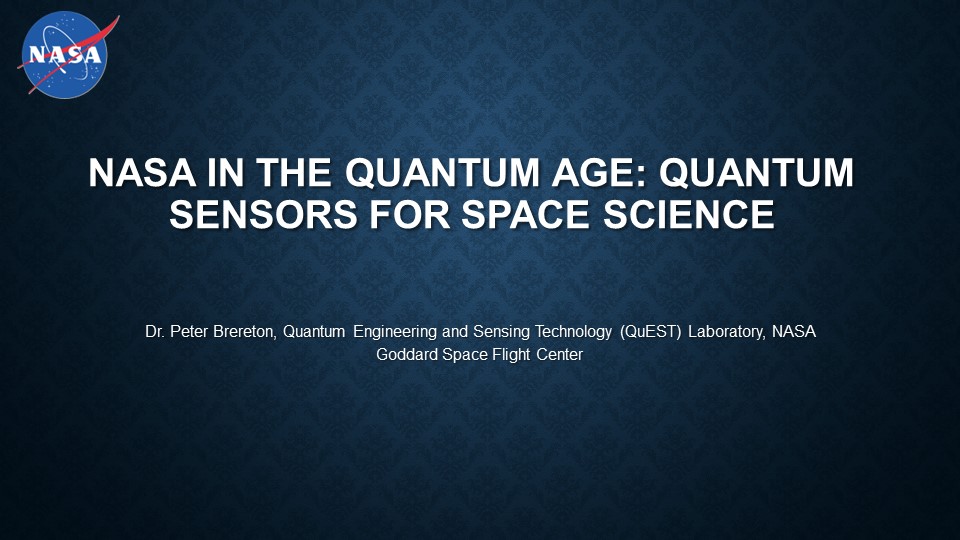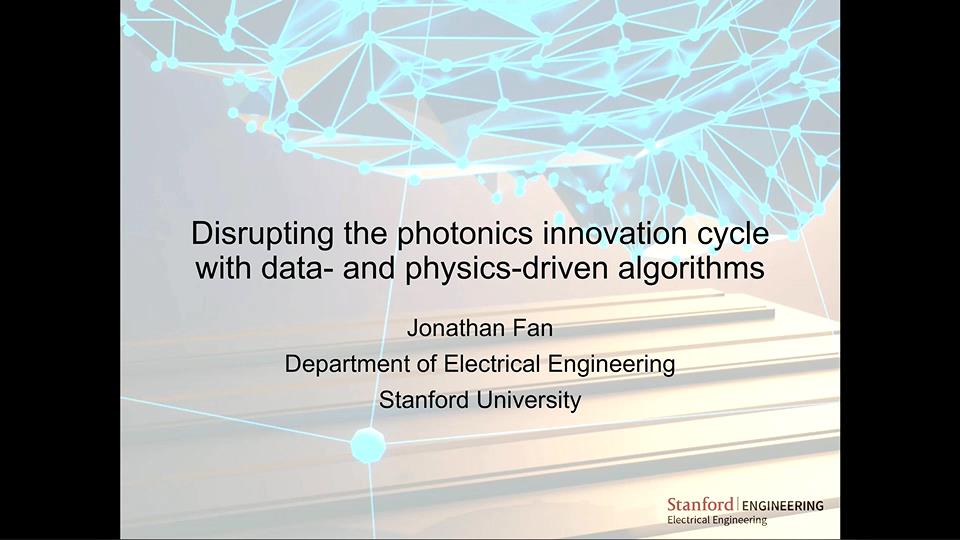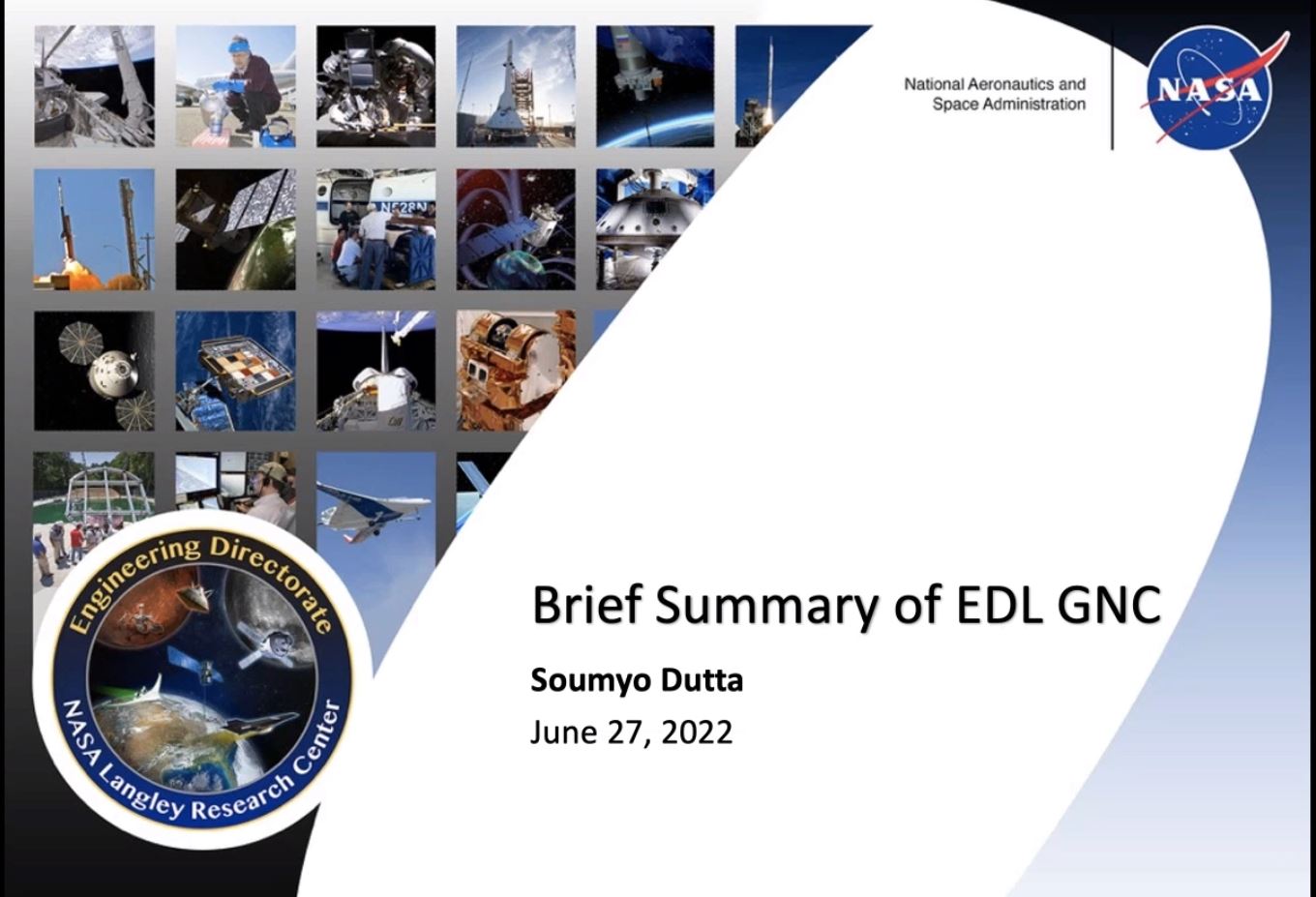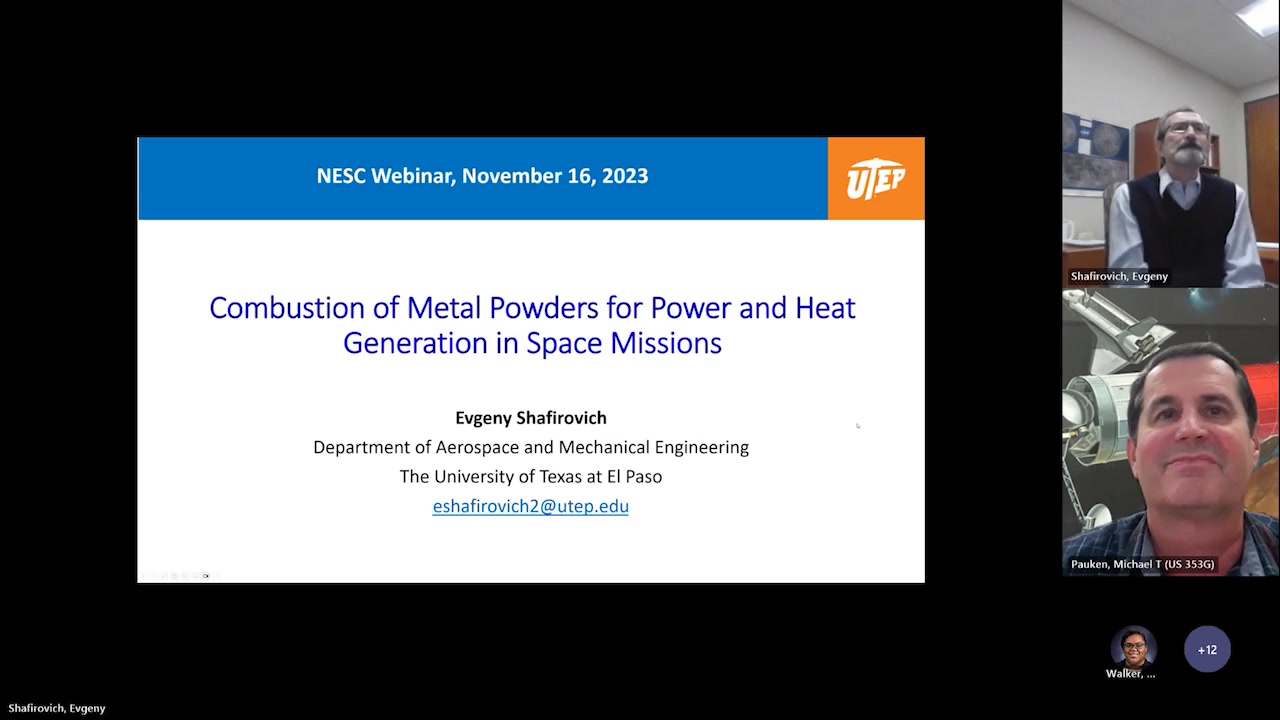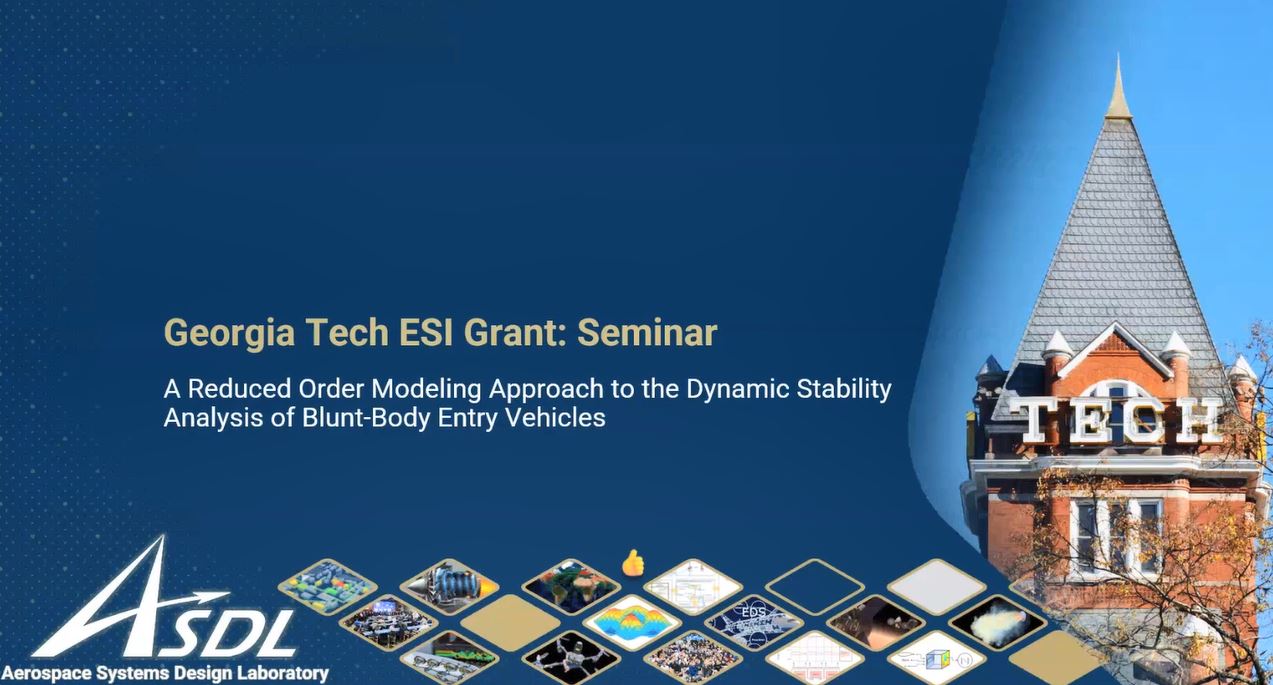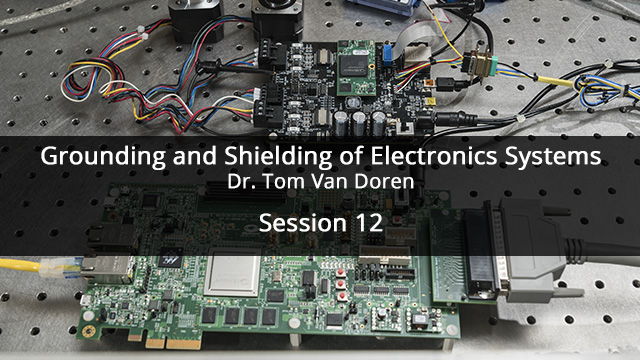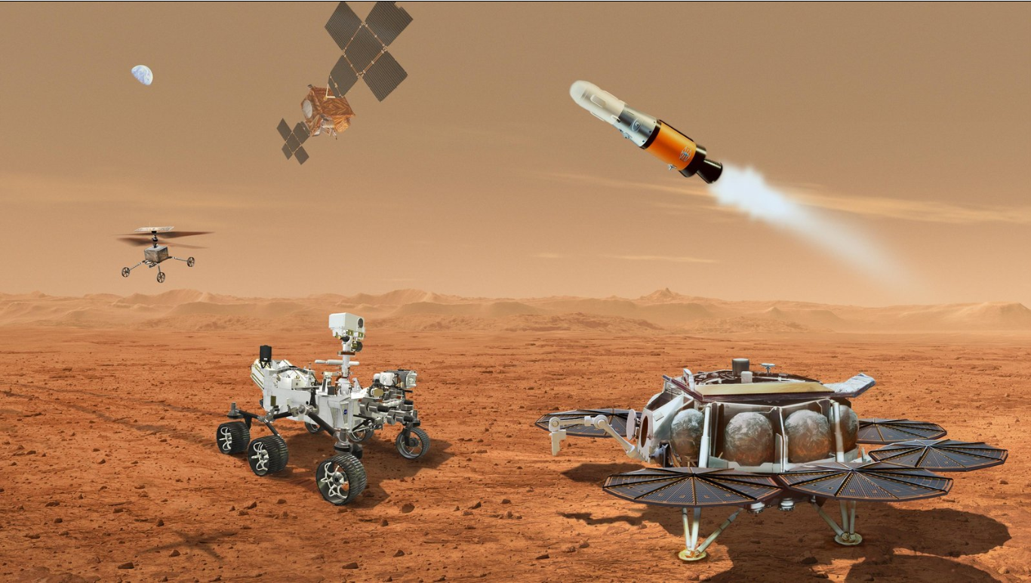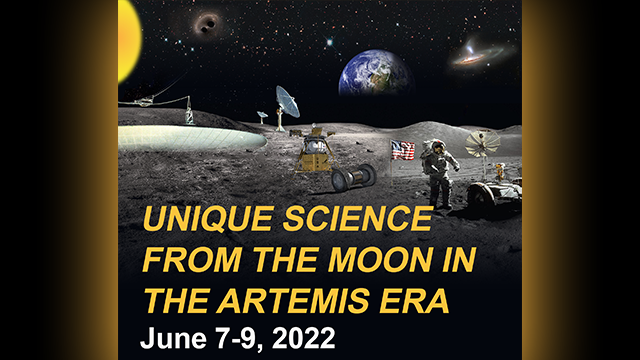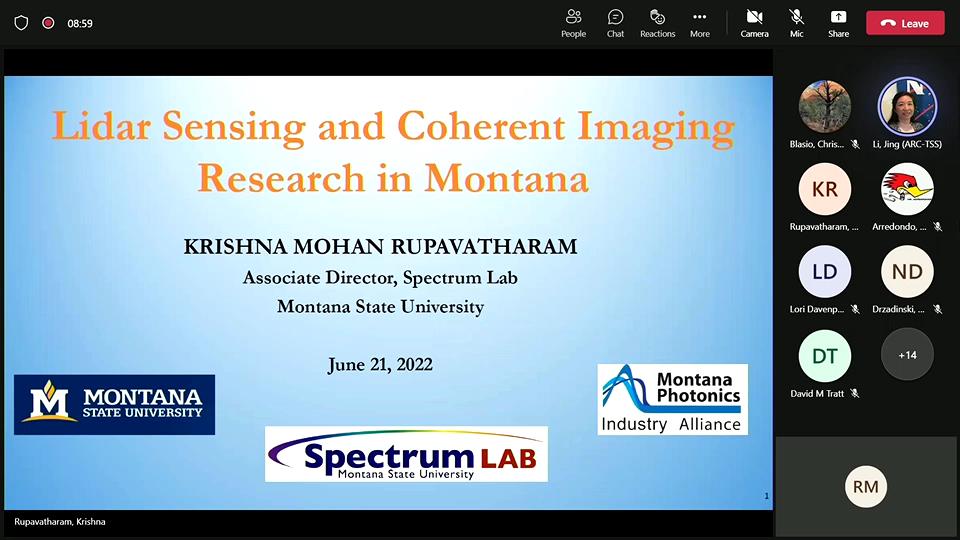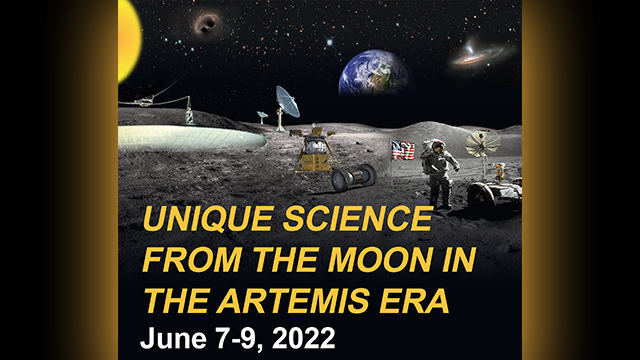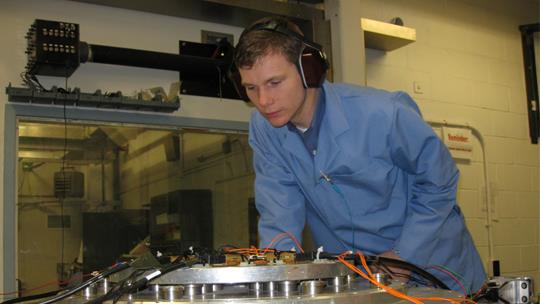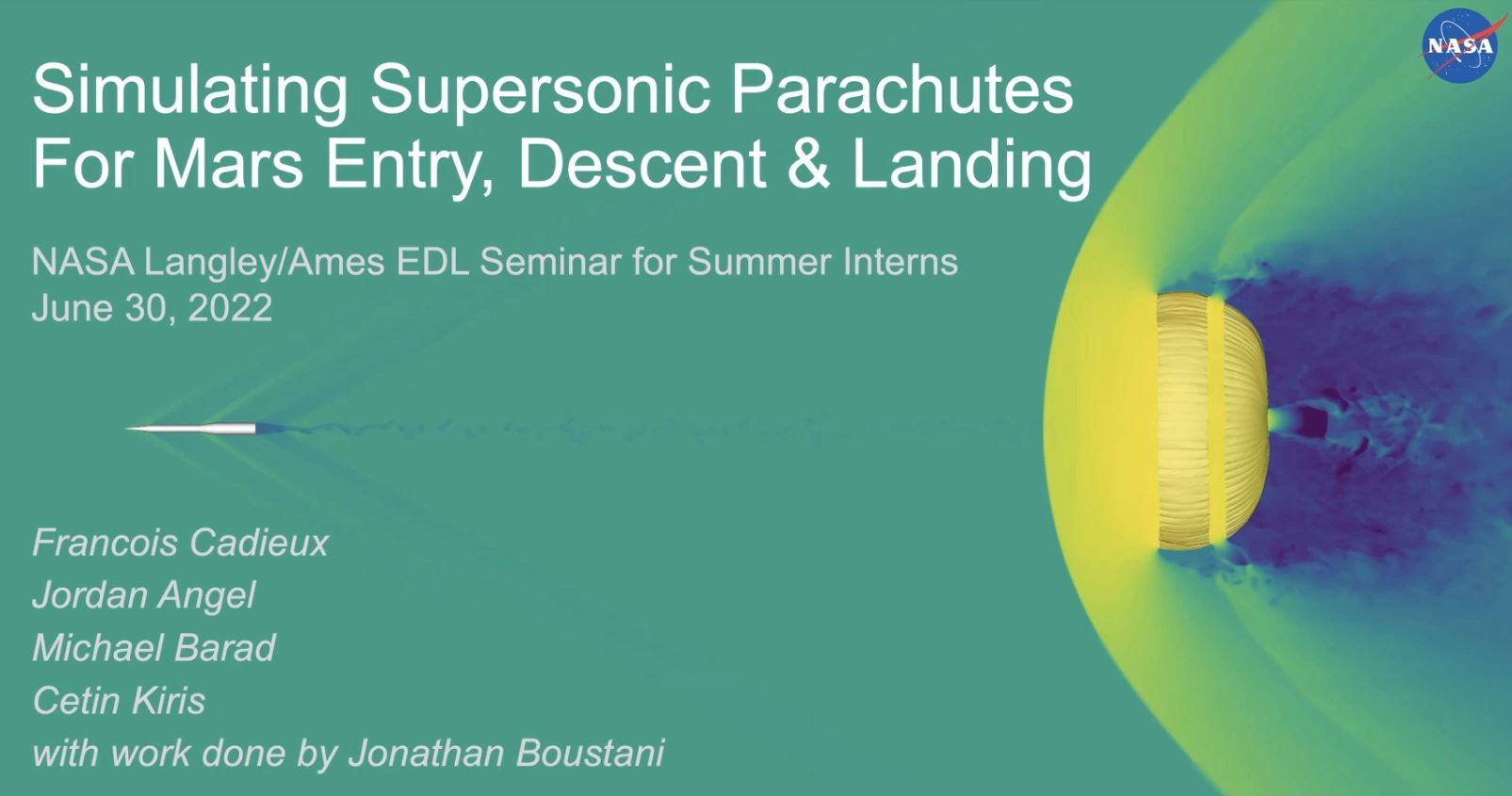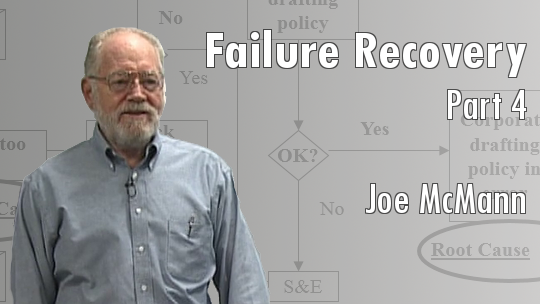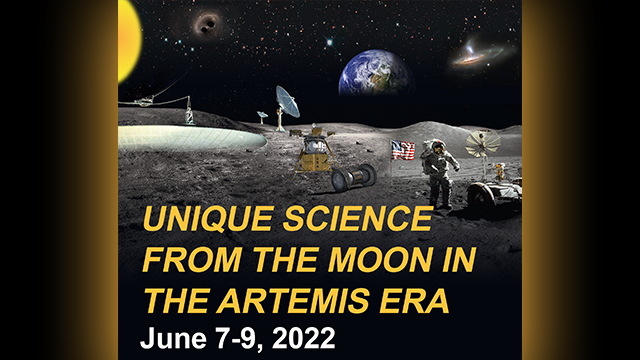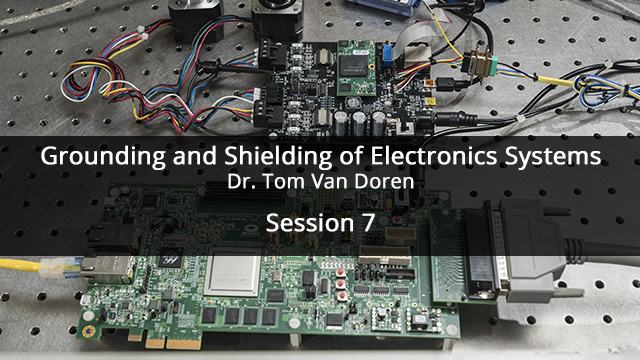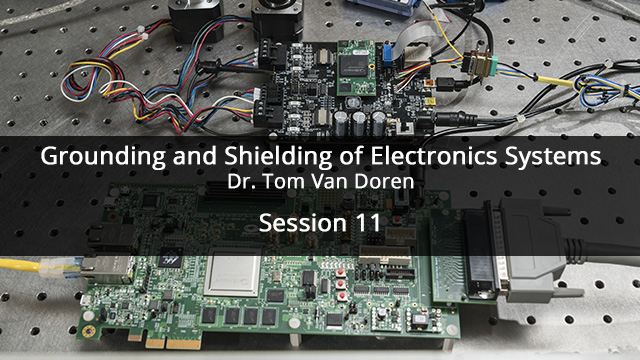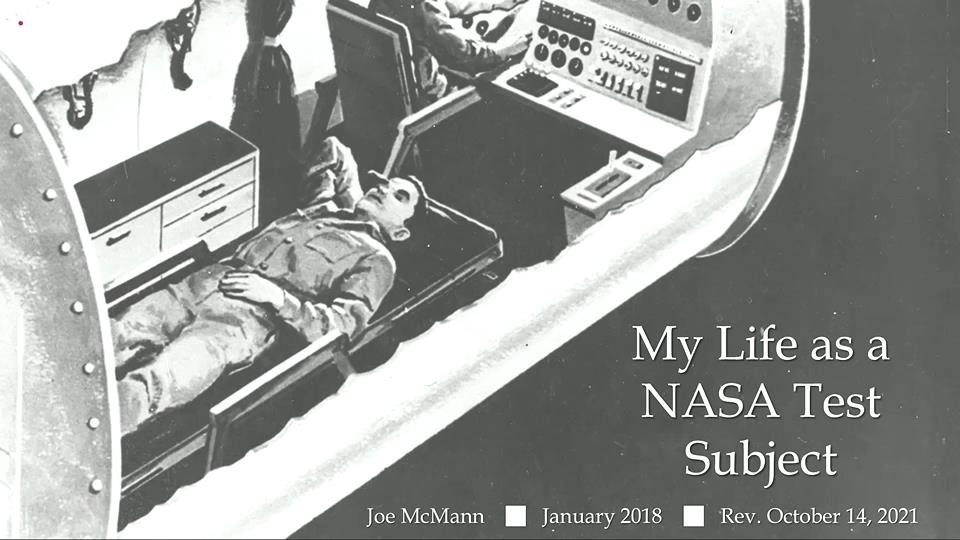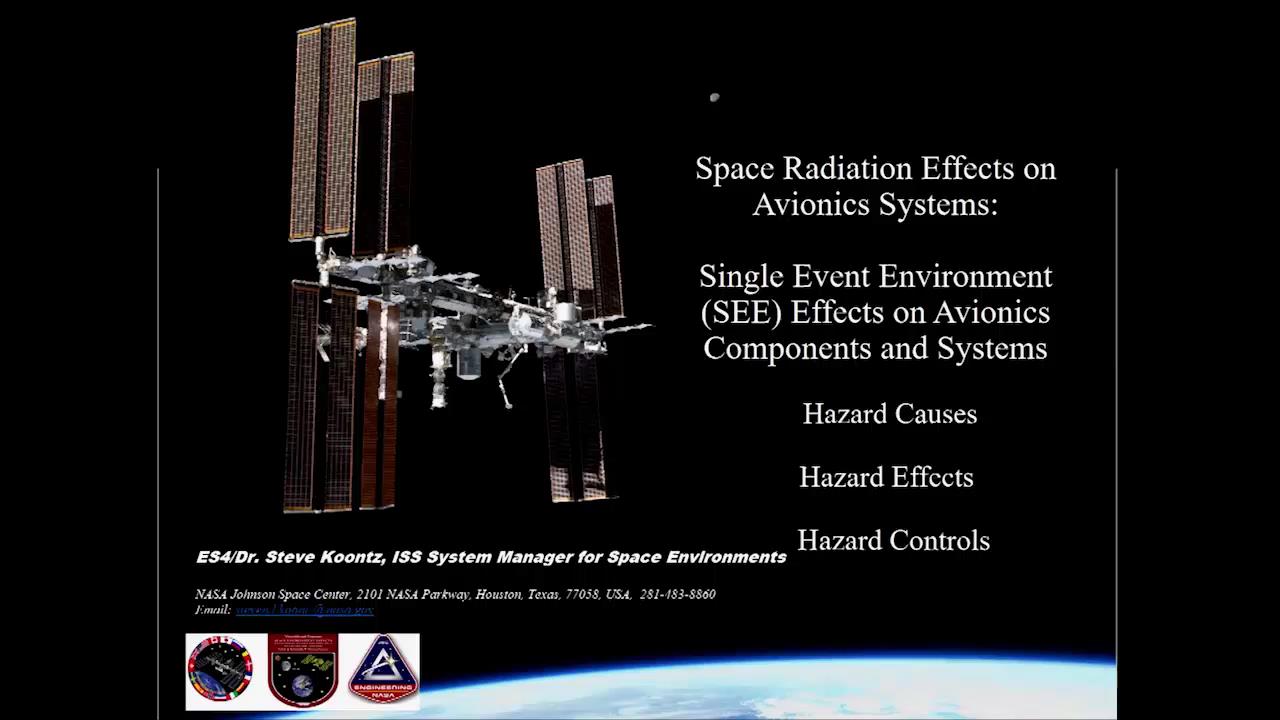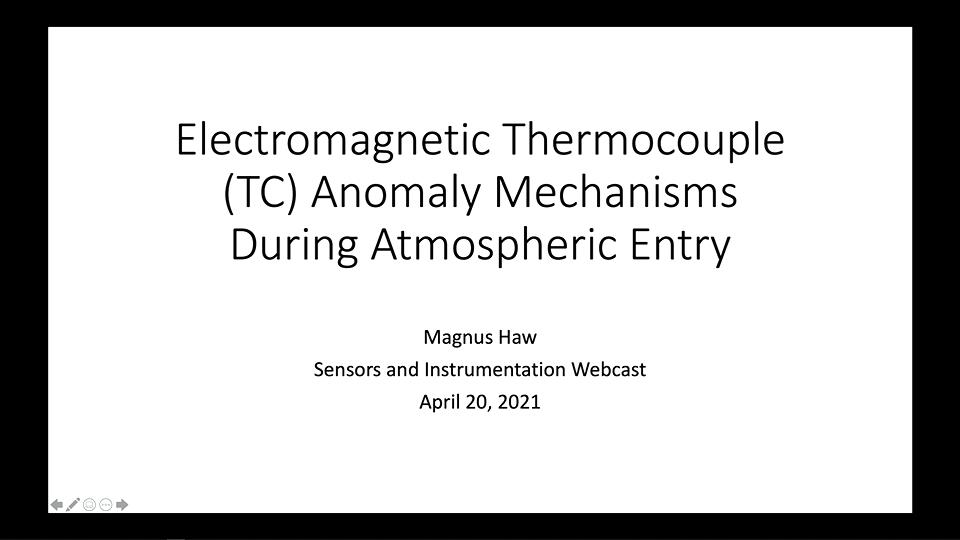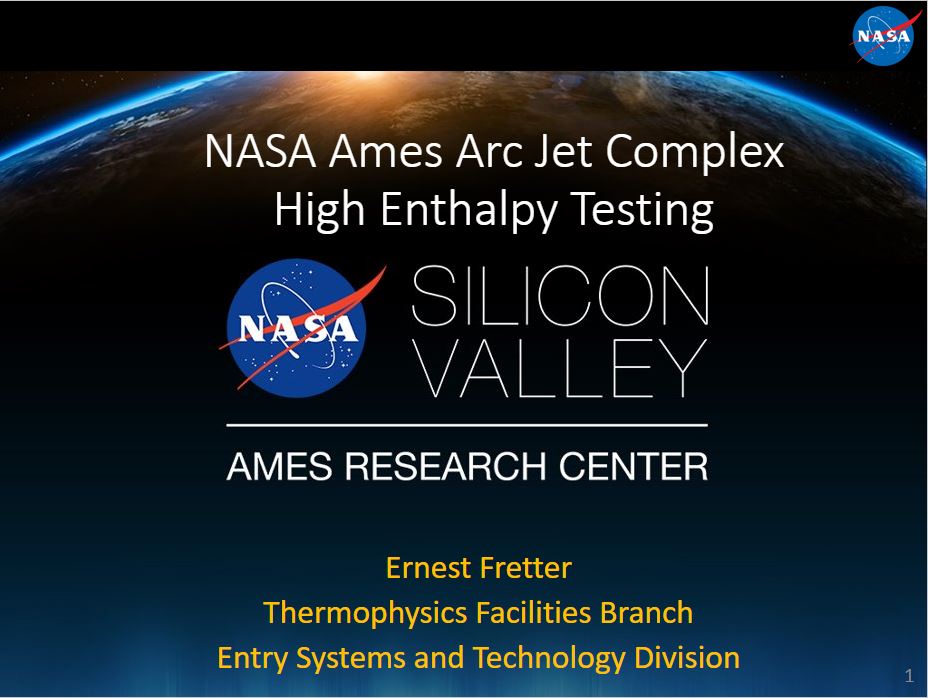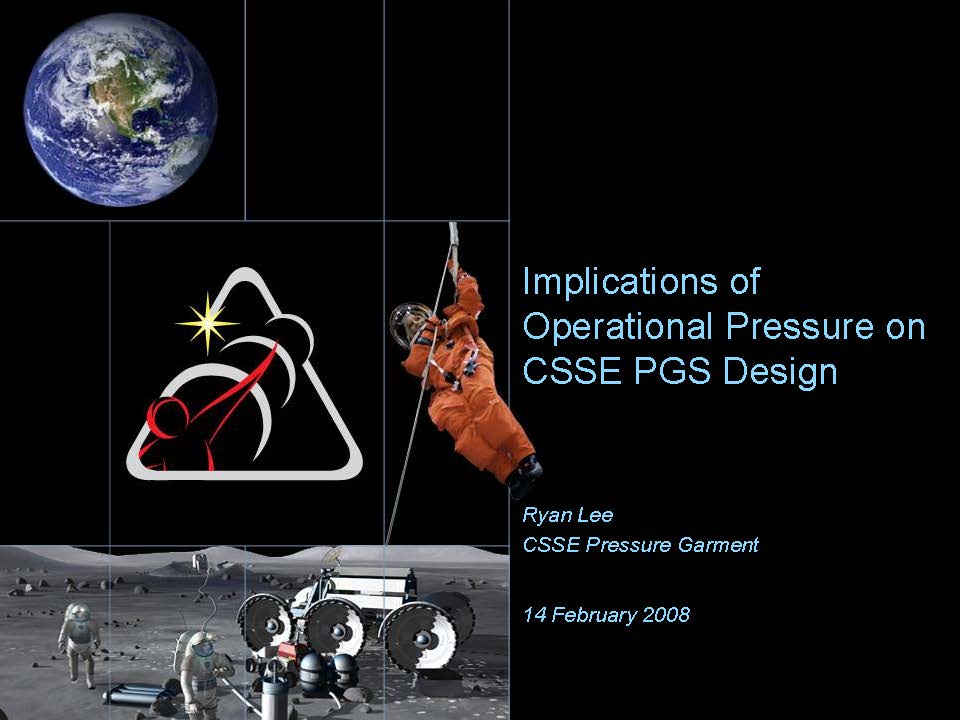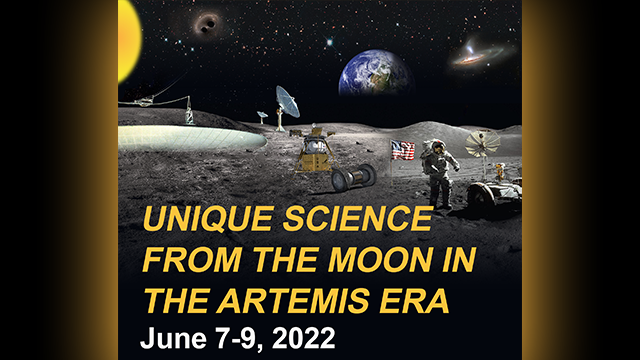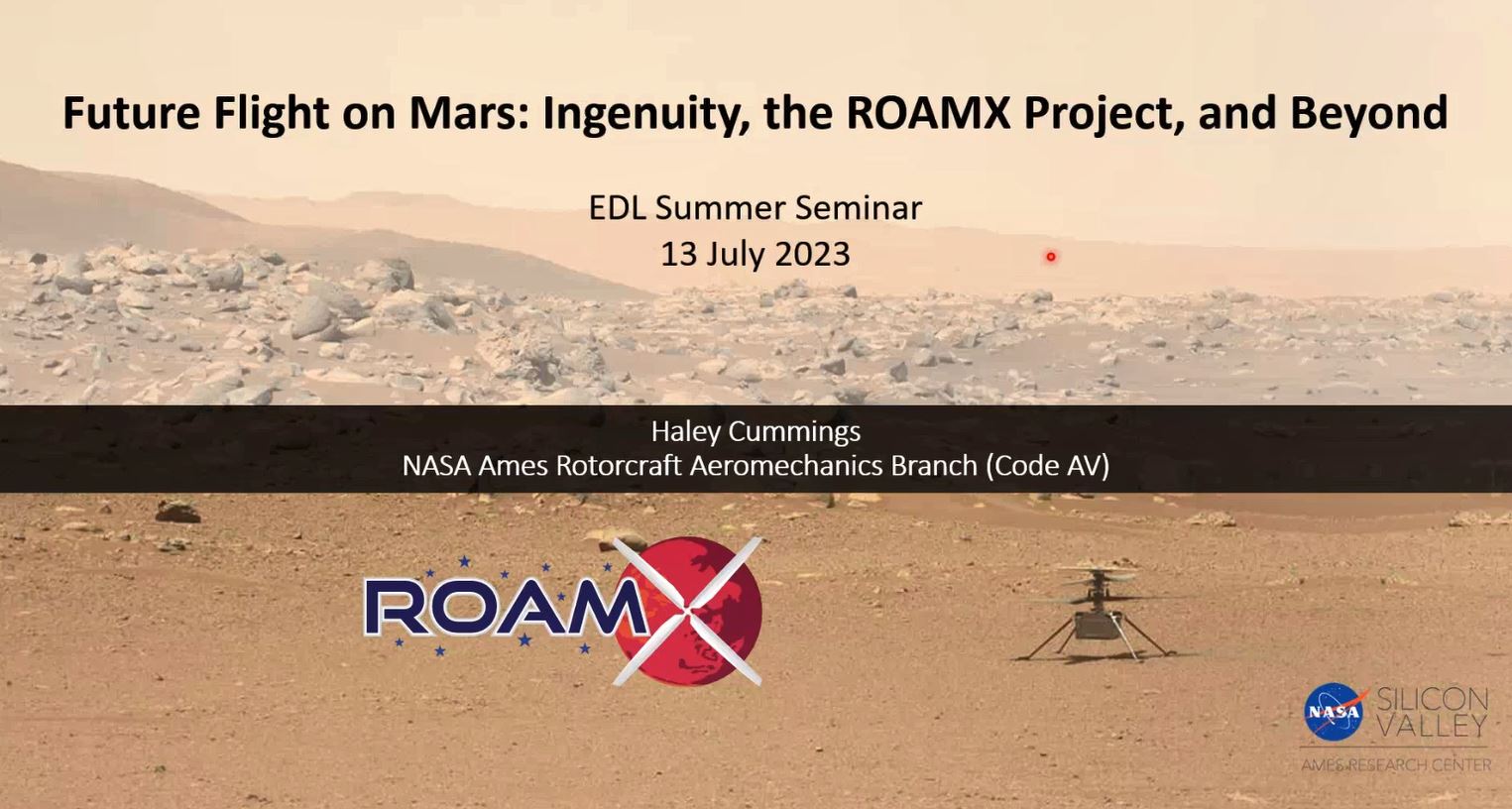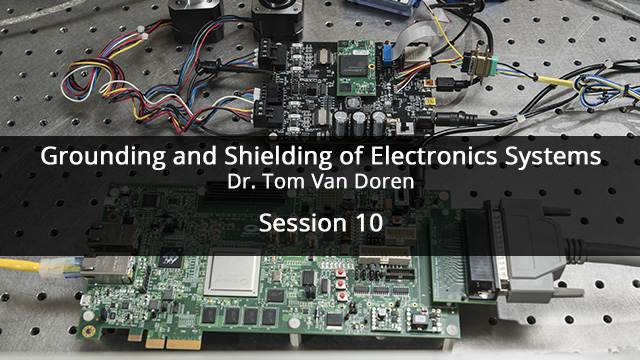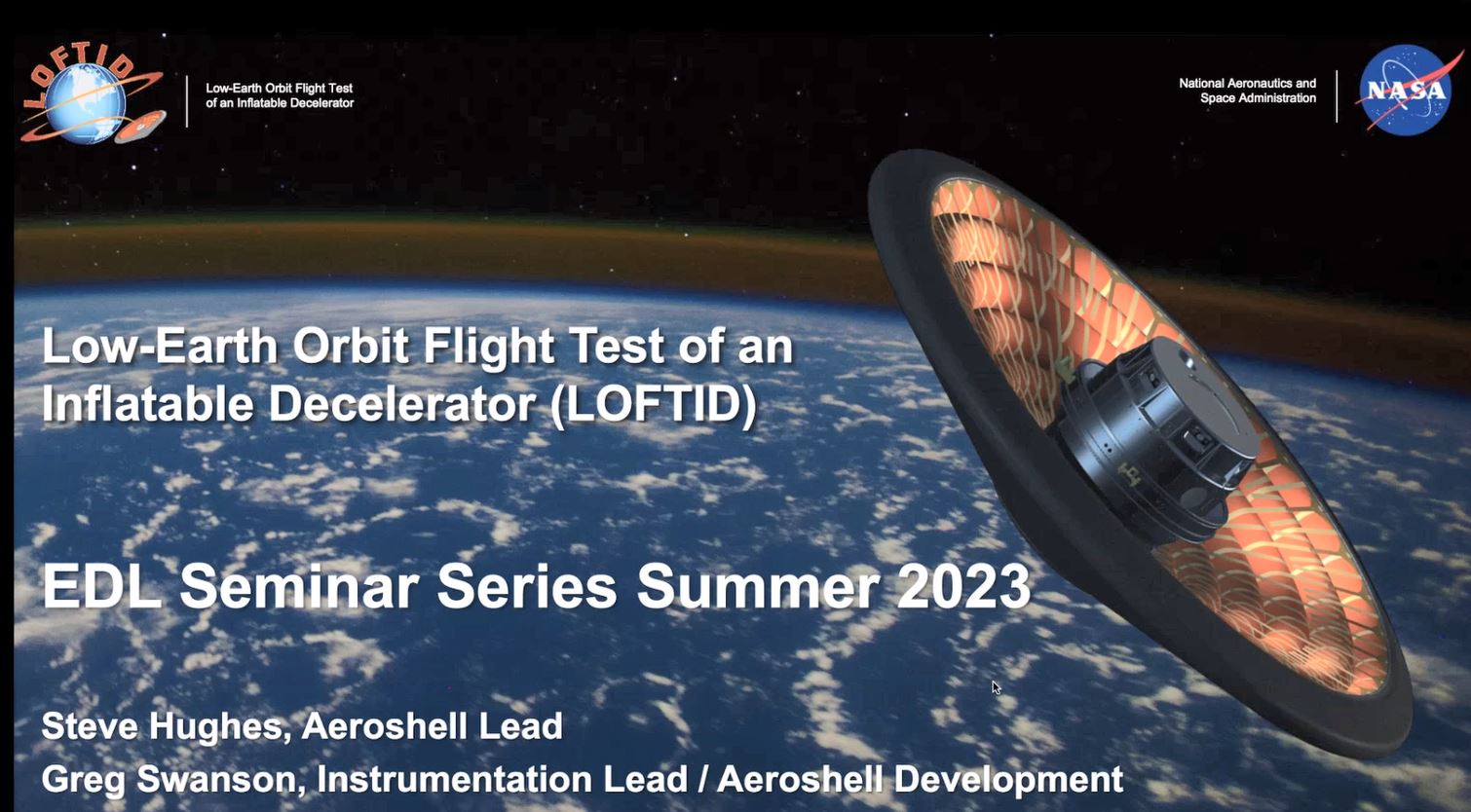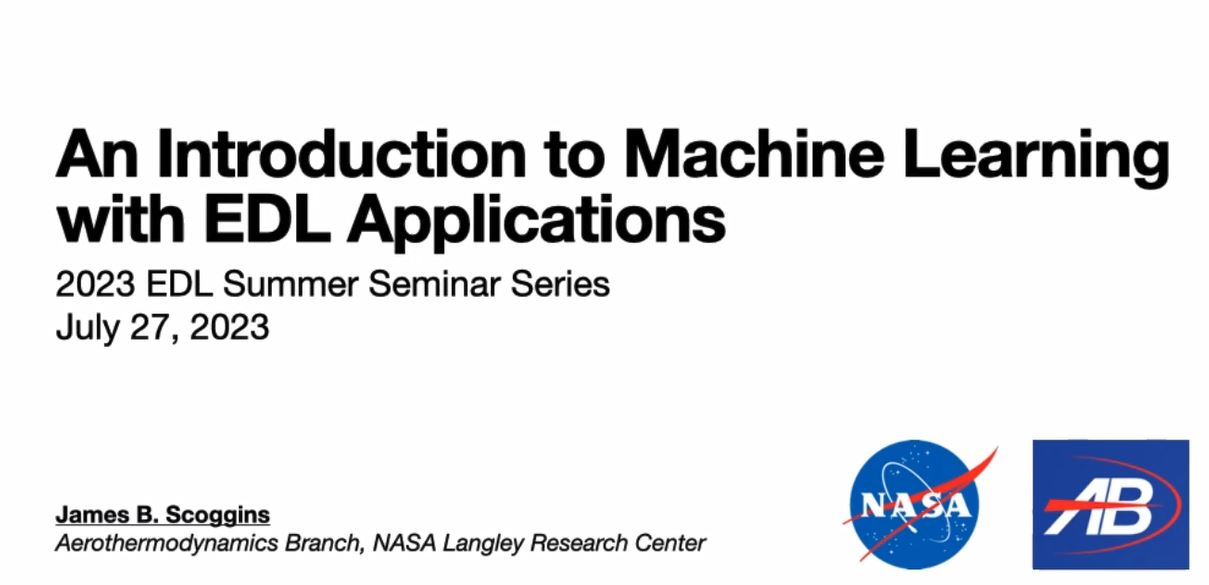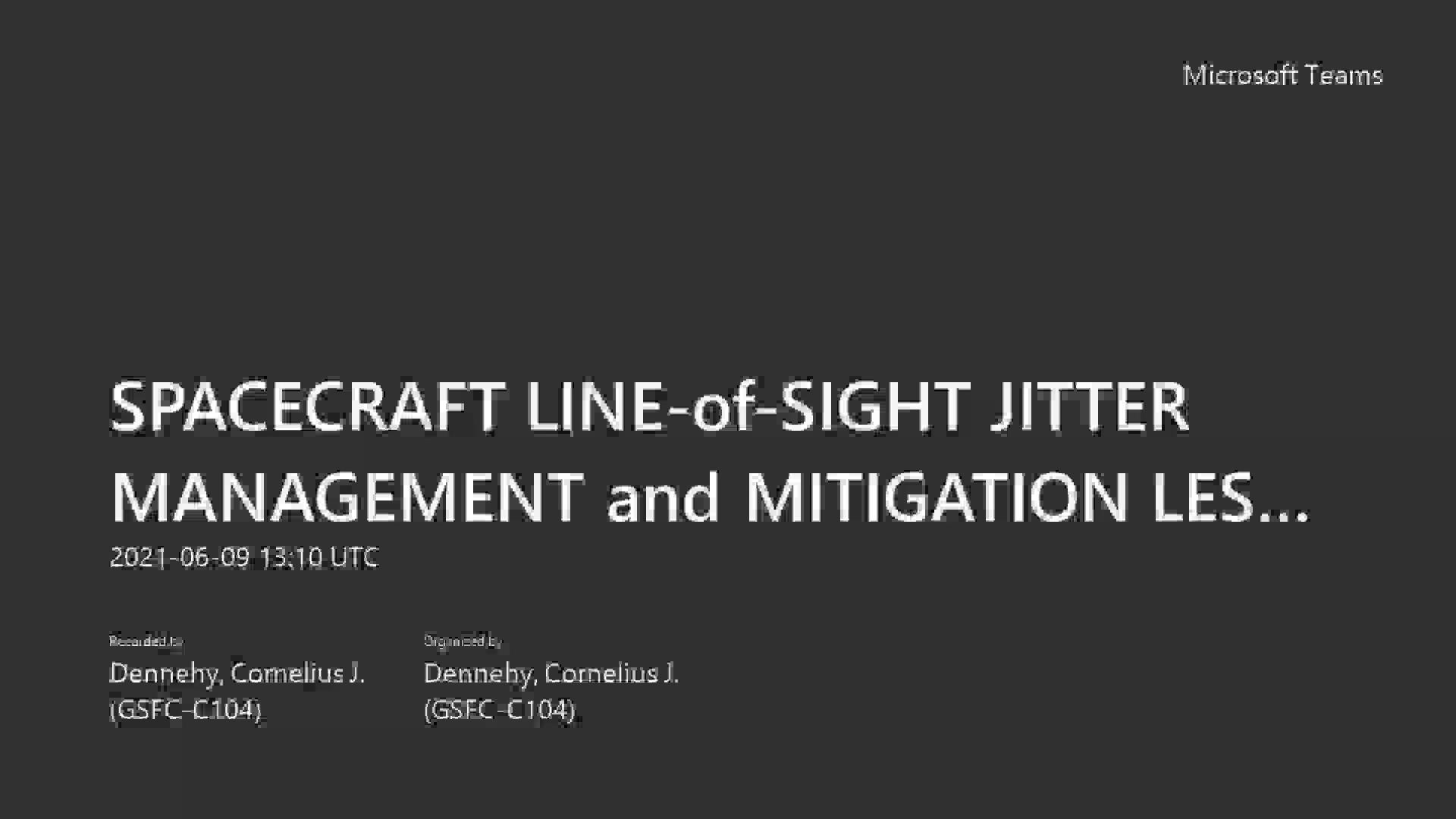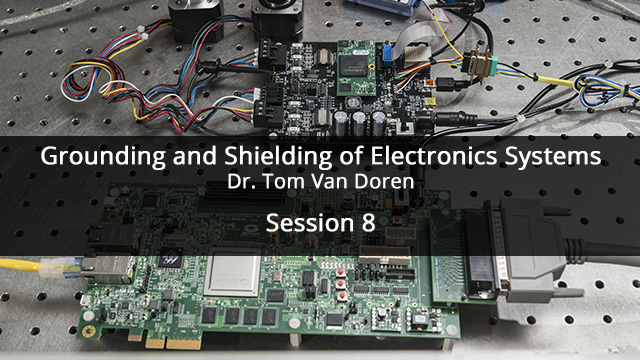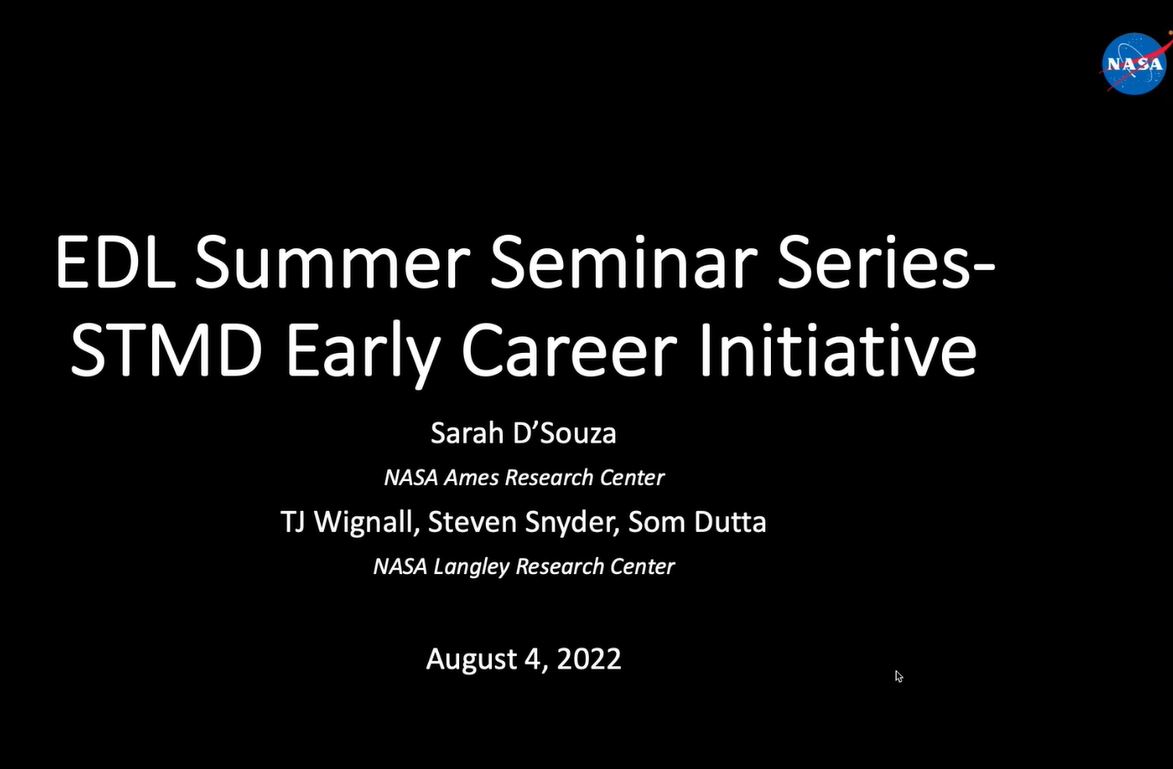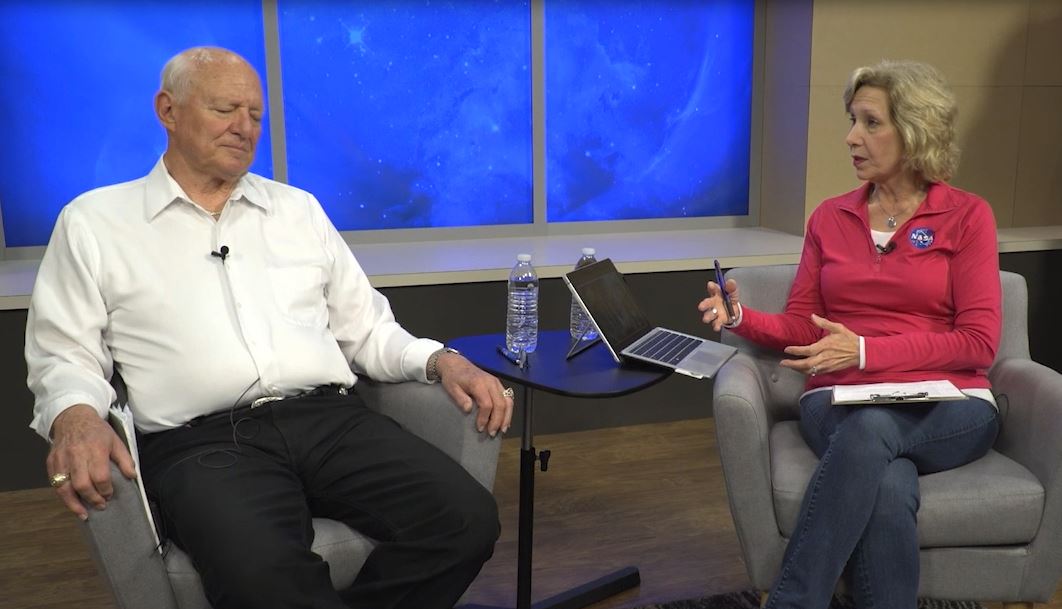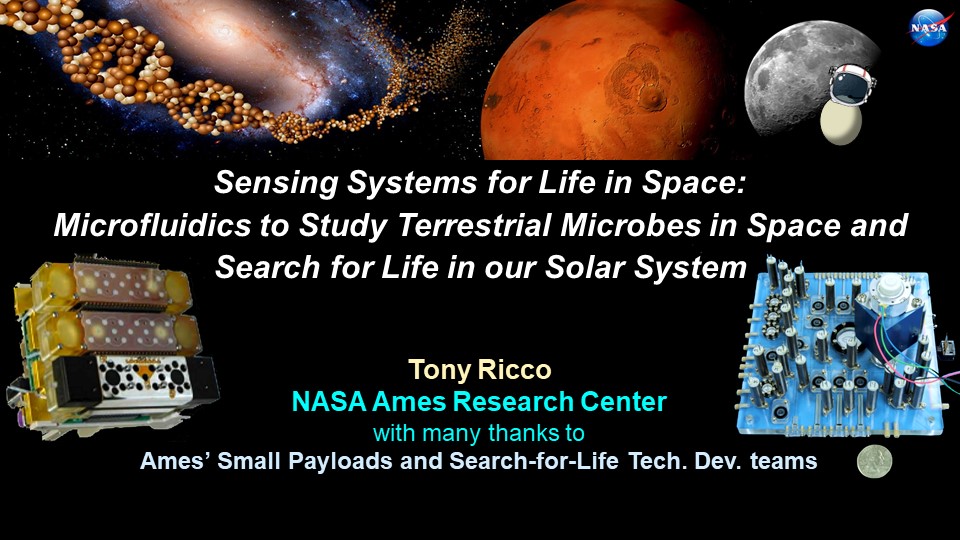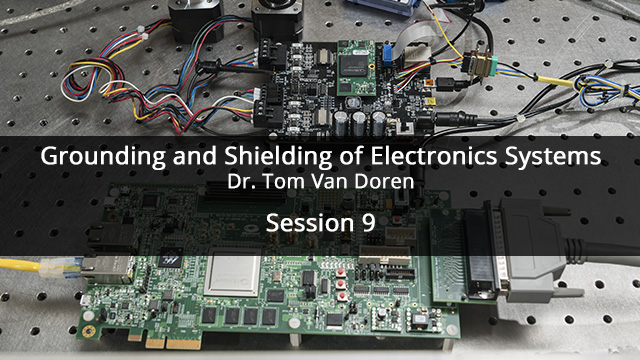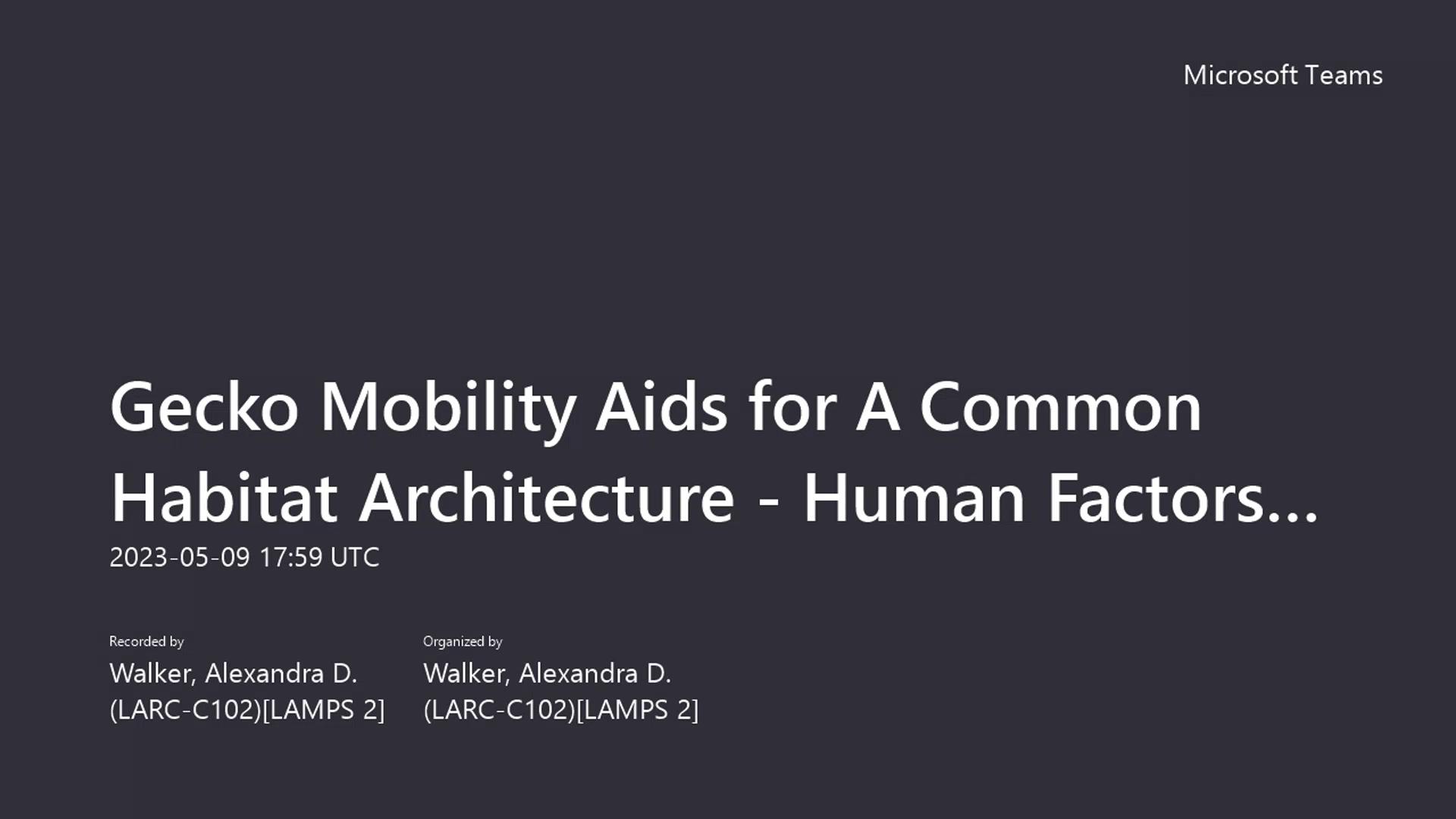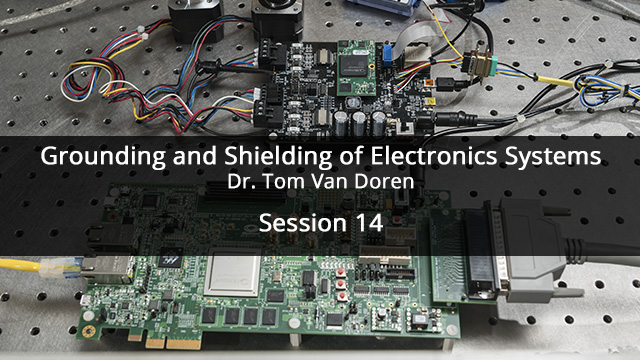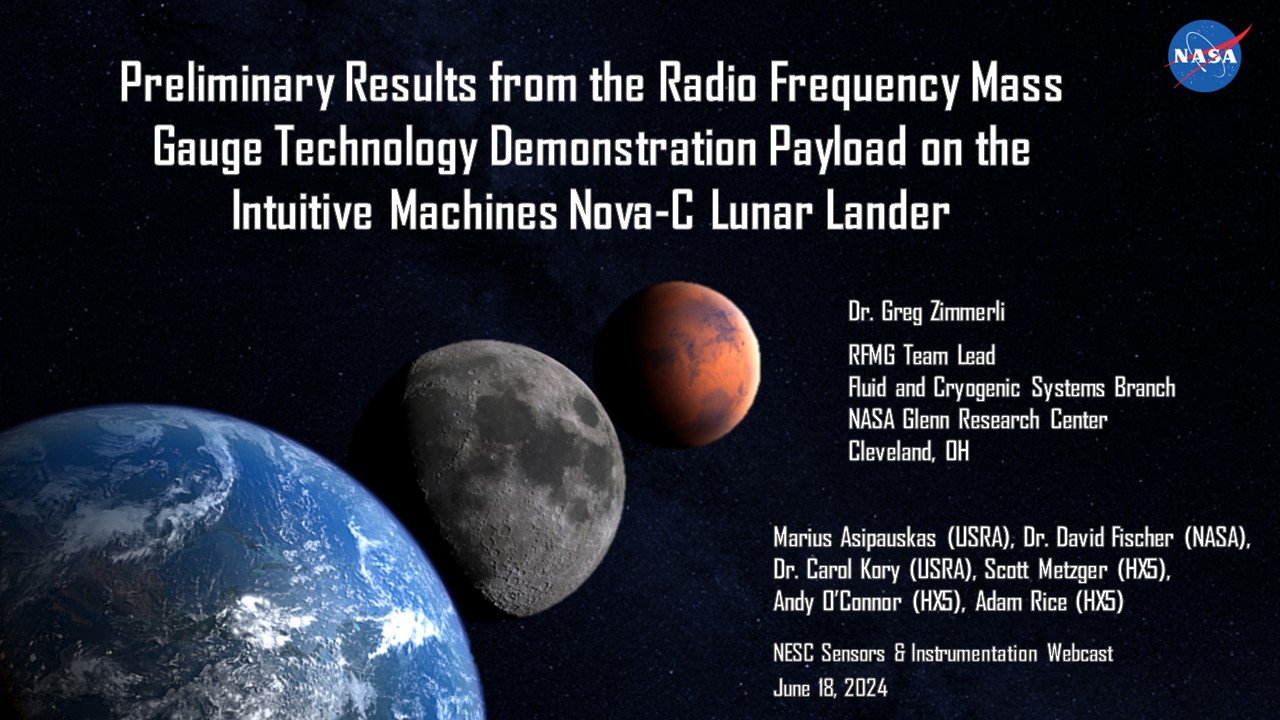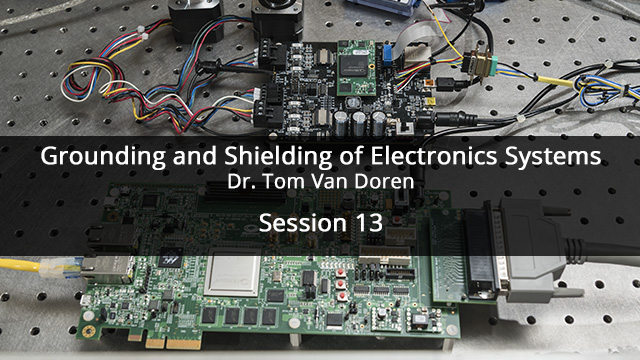Popular Videos
628
Most popular videos watched in NESC Academy
Model-Centric Engineering, Part 1: Introduction to Model-Based Systems Engineering
| Presenter | Dr. Daniel Dvorak |
|---|---|
| Published | December 2013 |
| Recorded | October 2012 |
| Duration | 01:00:47 |
| Tags | #Intermediate, #Advanced, #Fundamental, #State of the Art, ~Model Based Systems Engineering |
Discipline: Systems Engineering<br><br>For examples of how NASA uses model-based systems engineering, use the "Systems Engineering Webcast Series" link.
- Slides
- Confirmation of Attendance
- Dr. Daniel Dvorak's Biography
- Systems Engineering Lesson Catalog
- NESC Academy Online
- Systems Engineering Community of Practice
- Part 2 (Model-Centric Engineering, Part 2: Introduction to System Modeling)
- Part 3 (Model-Centric Engineering, Part 3: Foundational Concepts for Building System Models)
- Systems Engineering Webcast Series
- Feedback
Shock & Vibration: 01. Natural Frequencies, Part 1
| Presenter | Tom Irvine |
|---|---|
| Published | February 2014 |
| Recorded | February 2014 |
| Duration | 56:56 |
| Tags | #Fundamental, ~Natural Frequencies, .Analysis / Modeling and Simulation |
Discipline: Loads & Dynamics
7 Habits of Highly Effective (NASA) Systems Engineers
| Presenter | NASA |
|---|---|
| Published | September 2018 |
| Recorded | September 2018 |
| Duration | 01:22:22 |
| Tags | #Intermediate, #Advanced, #Fundamental, #State of the Art, .Lessons Learned, ~Applied Systems Engineering |
Successful NASA projects are a complex balancing act of meeting scientific and technical requirements, while managing schedule, cost, and risk. In a Virtual Project Management Challenge (VPMC), we learned that highly effective program manager share key habits—habits that anyone can develop to improve their performance. <br><br>In this follow up to that session, we turn our focus to systems engineers. Specifically, "What are the qualities of an effective systems engineer?" In addition to looking at the research, we asked our viewers. Hundreds of VPMC viewers responded, ranking the characteristics of effective systems engineers.<br><br>In this session of the VPMC, we will present the top seven characteristics of effective systems engineers as identified by our viewer poll. For each characteristic, a NASA systems engineer will illustrate how they successfully applied that characteristic to their project work. In addition to describing the characteristic in action, each presenter will provide advice on how others might develop their project management competencies. Please note: presenters for this VPMC will appear via pre-recorded interviews, so there will not be a question and answer session.<br>
Short Course on Lithium-ion Batteries: Fundamental Concepts, Battery Safety, and Modeling Techniques
| Presenter | William Walker |
|---|---|
| Published | February 2019 |
| Recorded | November 2018 |
| Duration | 02:18:28 |
| Tags | #Fundamental, .Hardware |
Originally aired December 4, 2018.<br><br>Disciplines: Passive Thermal, Electrical Power<br><br>This short course provides participants with an in-depth discussion on three aspects of lithium-ion (Li-ion) batteries. First an understanding of Li-ion battery fundamentals is provided through a brief discussion centered on the aerospace industry’s choice to use Li-ion batteries, general performance characteristics, electrochemical reaction basics, and the heat generated during nominal operation. Secondly, Li-ion battery safety is addressed with respect to thermal runaway and battery safety. Lastly, this course will lead the participants through the basic construction process of a thermal model of a Li-ion battery assembly that is capable of simulating nominal heating and thermal runaway heating. The overall goal of the course is to provide participants with an in-depth understanding of both the fundamental and thermal aspects of Li-ion batteries.
Common Thermal Modeling Mistakes, Part 1
| Presenter | Ruth Amundsen |
|---|---|
| Published | October 2016 |
| Recorded | September 2016 |
| Duration | 01:15:04 |
| Tags | #Fundamental, .Analysis / Modeling and Simulation |
Discipline: Passive Thermal<br>This presentation was recorded at the Thermal & Fluids Analysis Workshop (TFAWS) on August 3rd, 2016.<br>This course will cover the some of the common mistakes made in thermal modeling, and how to avoid them. Thermal Desktop will be used as a platform to demonstrate many of the common errors by both new analysts as well as experienced engineers in building a thermal model. Other non-software-associated errors will also be covered. Topics covered will include common errors in assumptions, materials, configurations, radiation, orbital analysis, and common faults in problem setup, analysis case runs and record-keeping. The course should help you as an engineer to watch for these common errors in the future, and help you avoid them.
An Overview of Fastener Requirements in the new NASA-STD-5020
| Presenter | Robert Wingate |
|---|---|
| Published | April 2013 |
| Recorded | April 2013 |
| Duration | 01:13:10 |
| Tags | #Intermediate, .Analysis / Modeling and Simulation, .Testing, .Hardware, ~Fastener, ~Locking Features |
Discipline: Mechanical Systems<br><br>NASA-STD-5020 “Requirements for Threaded Fastening Systems in Spaceflight Hardware” was created to provide an Agency-wide consensus standard to provide uniform requirements for design and analysis of threaded fastening systems in spaceflight hardware across all NASA programs and projects. The development of the standard resulted from a NESC assessment initiated in 2006 following several costly fastener issues on NASA projects and many recent debates over fastener design and analysis criteria. The new standard was also intended replace and improve upon NSTS 08307 “Criteria for Preloaded Joints,” which had become the de facto NASA standard for fastener analysis across multiple programs and projects even though it was a Space Shuttle Program standard and would be withdrawn at the conclusion of the program. This webcast will provide an overview of the contents of the new standard, including rationale for differences from NSTS 08307, and case studies to illustrate application of some of the concepts.
Model-Centric Engineering, Part 2: Introduction to System Modeling
| Presenter | Steve Jenkins |
|---|---|
| Published | March 2014 |
| Recorded | April 2013 |
| Duration | 01:04:04 |
| Tags | #Intermediate, #Advanced, #Fundamental, #State of the Art, ~Model Based Systems Engineering |
Discipline: Systems Engineering<br><br>For examples of how NASA uses model-based systems engineering, use the "Systems Engineering Webcast Series" link.
- Slides
- Confirmation of Attendance
- Steve Jenkins' Biography
- NESC Academy (Systems Engineering Catalog)
- NESC Academy Online
- Systems Engineering Community of Practice
- Part 1 (Model-Centric Engineering, Part 1: Introduction to Model-Based Systems Engineering)
- Part 3 (Model-Centric Engineering, Part 3: Foundational Concepts for Building System Models)
- Systems Engineering Webcast Series
- Feedback
Fundamentals of Aircraft Engine Control
| Presenter | Dr. Sanjay Garg |
|---|---|
| Published | November 2011 |
| Recorded | October 2011 |
| Duration | 55:15 |
| Tags | #Fundamental, .Design, ~Control Design, ~Control Systems |
The fundamental control problem for turbomachinery based aircraft engines is to provide the right amount of fuel needed for the engine to produce a desired power (or thrust), based on the pilot's power request through a throttle (or a power lever), and maintain the engine power at the desired level in the presence of air flow disturbance and changes in flight conditions. In-flight engine thrust measurements are not possible. So some other measurable parameters which are good indicators of thrust, such as engine shaft rotational speed (N) or engine pressure ratio (EPR) are regulated by the engine control. An aircraft engine is designed to operate in a wide operating envelope in terms of altitude and speed variations. To a control engineer, these challenges are represented on a fuel flow (Wf) versus engine shaft speed (N) graph, or a fuel ratio unit (Wf/P3, where P3 is the compressor exit static pressure) versus speed graph. The control design challenge is then to be able to transition from one operating point to another while staying within the safe operational limits represented by the max. and min. fuel flow limits as well as the structural limits of the various engine components. The max. flow limit prevents the engine from over-temperature while the min. flow limit prevents the engine from flame-out. Other operational safety limits that are important are surge/stall avoidance and maximum shaft rotational speed. This lecture will cover the basic principles behind modeling the engine system for control design and how the various safety and operational limits are implemented in the engine control to provide safe and reliable operation over the flight envelope.
Shock & Vibration: 13. Power Spectral Density Function
| Presenter | Tom Irvine |
|---|---|
| Published | November 2014 |
| Recorded | October 2014 |
| Duration | 01:04:38 |
| Tags | #Intermediate, ~Power Spectral Density, .Analysis / Modeling and Simulation |
Discipline: Loads & Dynamics
Fundamentals of Launch Vehicle Flight Control System Design
| Presenter | John Rakoczy |
|---|---|
| Published | May 2012 |
| Recorded | May 2012 |
| Duration | 52:10 |
| Tags | #Fundamental, .Design, ~Control Design, ~Flight Control Systems |
This presentation is intended to be an introductory overview of launch vehicle guidance, navigation and control for ascent. We will look at the big picture of how these three disciplines are interconnected in a launch vehicle design, and we will look at the flow of the design process. We will see how GN&C design relies on and influences many project stakeholders. Then we will look at each of the three disciplines, individually. Some key issues and design implementations will be pointed out in each of the three disciplines. Recent experiences from Ares I design will be used to illustrate some of the concepts.
Rationale for Selected MIL-STD-1540E Thermal Test Requirements
| Presenter | John W Welch |
|---|---|
| Published | December 2012 |
| Recorded | September 2012 |
| Duration | 37:34 |
| Tags | #Intermediate, .Testing |
Discipline: Passive Thermal
Structural Analysis Part 1
| Presenter | Dr. Ivatury Raju |
|---|---|
| Published | July 2013 |
| Recorded | February 2012 |
| Duration | 39:59 |
| Tags | #Fundamental, .Analysis / Modeling and Simulation, .Lessons Learned, ~Structural Analysis, ~Stress Analysis, ~Boundary Conditions, ~Building Blocks Approach |
Discipline - Structures
High Voltage Engineering Techniques for Space Applications: Part 1, Background Engineering Discussion
| Presenter | Steve Battel |
|---|---|
| Published | July 2013 |
| Recorded | June 2012 |
| Duration | 01:08:51 |
| Tags | #Intermediate, ~Voltage System, ~Power Supply, ~Power System, ~Electric Field, .Design, .Materials, .Hardware |
Discipline: Electrical Power<br><br>Presented via Webcast on April 2-3, 2012
- Slides
- Confirmation of Attendance
- Part 2 (High Voltage Engineering Techniques for Space Applications: Part 2, Approach to Reliable High Voltage Engineering Design)
- Part 3 (High Voltage Engineering Techniques for Space Applications: Part 3, Background on High Voltage Components)
- Part 4 (High Voltage Engineering Techniques for Space Applications: Part 4, High Voltage Insulators and Electrical Field Control Methods)
- Part 5 (High Voltage Engineering Techniques for Space Applications: Part 5, Introduction to Weibull Methods plus Examples of Design Failures)
- Steve Battel's Biography
- NESC Academy (EP Catalog)
- NESC Academy Online
- Electrical Power Community of Practice
- Feedback
Fundamentals of Kalman Filtering and Estimation
| Presenter | Chris D'Souza |
|---|---|
| Published | March 2013 |
| Recorded | January 2013 |
| Duration | 59:16 |
| Tags | #Fundamental, .Design, ~Navigation |
Kalman Filtering and Least Squares Estimation have been at the heart of the GNC system design within the US Space Program since it's inception. Yet, there is a great deal of mystique surrounding the subject because it requires a modicum of familiarity with linear analysis, nonlinear analysis, optimization, and statistics. This goal of this seminar is to present a gentle introduction to Kalman Filtering and estimation to those who aren't familiar with the topic, or who have viewed it with fear and trepidation. Beginning with linear systems, the basic concepts will be introduced, and several examples will serve to flesh out the concepts. There will be an emphasis on practical implications and implementations of these concepts, with an eye toward helping develop intuition and demystifying the field.
Shock & Vibration: 06. Random Vibration
| Presenter | Tom Irvine |
|---|---|
| Published | October 2014 |
| Recorded | February 2014 |
| Duration | 56:22 |
| Tags | #Intermediate, #Fundamental, ~Random Vibration, .Analysis / Modeling and Simulation, ~White Noise |
Discipline: Loads & Dynamics
Shock & Vibration: 02. Natural Frequencies, Part 2
| Presenter | Tom Irvine |
|---|---|
| Published | February 2014 |
| Recorded | February 2014 |
| Duration | 50:54 |
| Tags | #Intermediate, #Fundamental, ~Natural Frequencies, .Analysis / Modeling and Simulation |
Discipline: Loads & Dynamics
Fundamentals of Spacecraft Attitude Control
| Presenter | Scott Starin |
|---|---|
| Published | July 2012 |
| Recorded | June 2012 |
| Duration | 58:54 |
| Tags | #Fundamental, .Design, ~Attitude Control, ~Control Design, ~Control Systems |
Spacecraft attitude control systems are onboard systems that autonomously orient a spacecraft relative to a target reference frame. Spacecraft operate in a regime of very little disturbance torque as compared to atmospheric vehicles, and we therefore have greater expectations for their accuracy and stability. An understanding of the disturbance environments in various flight regimes is critical to design choices. Means of attitude stabilization run the gamut from passive to active methods and from spin-stabilized to zero-momentum three-axis stabilized systems. Control methods derive from the same body of control theory as other modern systems, with control bandwidths often in a range of much less than 1 Hz to avoid control-structure interaction. Attitude dynamics are inherently nonlinear but only occasionally require nonlinear control techniques, as the typically slow rate of attitude change usually allows linear design techniques to work well. Related topics that will be briefly addressed include attitude estimation techniques, attitude ground systems, and jitter (attitude motion outside the control bandwidth).
An Overview of Spacecraft Attitude Determination and Estimation
| Presenter | John Crassidis |
|---|---|
| Published | January 2013 |
| Recorded | July 2012 |
| Duration | 01:01:44 |
| Tags | #Fundamental, .Design, ~Navigation, ~Spacecraft Attitude |
This webcast will provide a general overview of attitude determination estimation. First, a review of attitude kinematics, in particular quaternions, is shown. Then, a solution to the point-by-point batch least squares problem, known as Wahba’s problem, is given. The attitude covariance is then derived and its relationship to maximum likelihood is shown. Next, an attitude Kalman filter-based estimator using attitude and gyro measurements coupled with quaternion kinematics is derived. Examples from practical scenarios and real missions are shown.
Standard Check-Cases for Six-Degree-of-Freedom Flight Vehicle Simulations
| Presenter | Daniel Murri |
|---|---|
| Published | June 2015 |
| Recorded | April 2015 |
| Duration | 01:03:03 |
| Tags | #Intermediate, .Analysis / Modeling and Simulation, .Environments, .Systems / Subsystems, .Other, ~Flight Mechanics |
Discipline: Flight Mechanics<br>Original Webcast Air Date: April 21, 2015<br>The rise of innovative unmanned aeronautical systems and the emergence of commercial space activities have resulted in a number of relatively new aerospace organizations that are designing innovative systems and solutions. These organizations use a variety of commercial off-the-shelf and in-house-developed simulation and analysis tools including 6-degree-of-freedom (6-DOF) flight simulation tools. The increased affordability of computing capability has made high-fidelity flight simulation practical for all participants.<br><br>Verification of the tools’ equations-of-motion and environment models (e.g., atmosphere, gravitation, and geodesy) is desirable to assure accuracy of results. However, aside from simple textbook examples, minimal verification data exists in open literature for 6-DOF flight simulation problems.<br><br>The NESC undertook an assessment that compared multiple solution trajectories to a set of verification check-cases that covered atmospheric and exo-atmospheric (i.e., orbital) flight. Each scenario consisted of redefined flight vehicles, initial conditions, and maneuvers. These scenarios were implemented and executed in a variety of analytical and real-time simulation tools. This tool-set included simulation tools in a variety of programming languages based on modified flat-Earth, round-Earth, and rotating oblate spheroidal Earth geodesy and gravitation models, and independently derived equations-of-motion and propagation techniques. The resulting simulated parameter trajectories were compared by over-plotting and difference-plotting to yield a family of solutions. In total, seven simulation tools were exercised.<br><br>The check cases and the generated family of solutions are now available for download from the NESC Academy web-site for use in cross comparison with other simulation tools. This webast will give an overview of the check-cases, the comparison approach, the types of differences remaining in the comparison set, and an introduction to the contents of the “flightsim” website where the check case descriptions and generated results are stored.
Model-Centric Engineering, Part 3: Foundational Concepts for Building System Models
| Presenter | Steve Jenkins |
|---|---|
| Published | April 2015 |
| Recorded | September 2014 |
| Duration | 01:13:22 |
| Tags | #Intermediate, #Advanced, #Fundamental, #State of the Art, ~Model Based Systems Engineering |
Discipline: Systems Engineering<br><br>For examples of how NASA uses model-based systems engineering, use the "Systems Engineering Webcast Series" link.
- Slides
- Confirmation of Attendance
- Steve Jenkins' Biography
- NESC Academy Online
- Systems Engineering Community of Practice
- Part 1 (Model-Centric Engineering, Part 1: Introduction to Model-Based Systems Engineering)
- Part 2 (Model-Centric Engineering, Part 2: Introduction to System Modeling)
- Systems Engineering Webcast Series
- Feedback
Shock & Vibration: 05. Sine Sweep Vibration
| Presenter | Tom Irvine |
|---|---|
| Published | October 2014 |
| Recorded | February 2014 |
| Duration | 45:36 |
| Tags | #Intermediate, ~Natural Frequencies, .Analysis / Modeling and Simulation, ~Thrust Oscillation |
Discipline: Loads & Dynamics
NASA Space Situational Awareness (SSA) Overview
| Presenter | Lauri Kraft Newman |
|---|---|
| Published | July 2012 |
| Recorded | June 2012 |
| Duration | 50:37 |
| Tags | #Fundamental, .Environments |
SSA is defined as "the requisite current and predictive knowledge of the space environment and the operational environment upon which space operations depend". SSA provides knowledge and understanding of threats posed to space systems by adversaries and the environment and is essential in developing and employing space asset protection measures. NASA is both a provider and consumer of SSA data. This talk will describe the Agency's role in SSA, with particular emphasis on the robotic conjunction assessment effort. SSA policy, procedures, interfaces, and goals will be discussed.
Systems Engineering & Model Based Systems Engineering Stakeholder State of the Discipline
| Presenter | Jessica Knizhnik |
|---|---|
| Published | November 2020 |
| Recorded | June 2020 |
| Duration | 01:02:54 |
| Tags | #Intermediate, #Advanced, #Fundamental, #State of the Art, .Lessons Learned, ~Model Based Systems Engineering |
Abstract:<br><br>Join us as we discuss the results of a “comprehensive” study, conducted by the Systems Engineering TDT, in a special webinar. Find out where the SE discipline, in the aerospace industry, has opportunity for improvement and how cultural issues remain the number one challenge to MBSE implementation. We’ll also be discussing opportunities where NASA and its stakeholders can move forward together in SE innovation.<br><br>Anyone interested in SE and its future, from systems engineers, MBSE practitioners, managers, and NASA partners are invited to attend. A full detailed report of study results that goes beyond the overview’s executive conclusions is also available. Both can be found at https://www.nasa.gov/nesc/articles/se-mbse-state-of-the-discipline<br><br>Please join us in this informative discussion.
Shock & Vibration: 04. Sine Vibration
| Presenter | Tom Irvine |
|---|---|
| Published | October 2014 |
| Recorded | February 2014 |
| Duration | 59:02 |
| Tags | #Intermediate, ~Response Acceleration, .Analysis / Modeling and Simulation, ~Pogo, ~Thrust Oscillation |
Discipline: Loads & Dynamics
1. Overview and Introduction to Passive Thermal Control and Thermal Protection
| Presenter | Steven L. Rickman |
|---|---|
| Published | December 2010 |
| Recorded | November 2011 |
| Duration | 30:07 |
| Tags | #Fundamental |
Discipline: Passive Thermal<br><br>Steve Rickman is the Technical Fellow for Passive Thermal discipline. In this overview he gives an introduction Passive Thermal Control and Thermal Protection.<br><br>Keywords: Steve Rickman, Technical Fellow, Passive Thermal, Thermal Protection, Overview and Introduction to Passive Thermal Control and Thermal Protection, Discipline. Heat Transfer<br>Conduction<br>Convection<br>Radiation<br>Passive Thermal Control<br>Thermal Protection<br>Insulation<br>Reusable Thermal Protection<br>Ablative Thermal Protection<br>Hot Structure
How to Get Started Using MBSE on a Project: The Basics of What, How and Who
| Presenter | Trevor Grondin |
|---|---|
| Published | August 2020 |
| Recorded | June 2020 |
| Duration | 57:49 |
| Tags | #Intermediate, #Advanced, #Fundamental, #State of the Art, ~Model Based Systems Engineering |
Model-based Systems Engineering is seeing a lot of attention lately. Many projects at NASA have started using MBSE on some portion of their SE work. The long list of proposed benefits for MBSE is impressive, but can MBSE be used throughout a project life-cycle? Should MBSE be an "all-or-nothing" decision when doing project planning? Answering these questions can be intimidating for individuals who are new to MBSE, or those that have only seen successes in small areas of the SE function, but are not able to visualize how to use MBSE across a whole project. <br><br>This talk helps to define the process of starting Systems Engineering on any project, and how MBSE ties in to it. Through the lens of "modeling with a purpose", Trevor Grondin walks through how to examine the Systems Engineering role for a given project, and how to assess using MBSE to add value to the work being done. From sizing the scope of the work, assessing uses of MBSE, and identifying project constraints, to developing a modeling plan that support the Systems Engineering approach, this talk will help arm modelers and LSEs alike with the framework they need to start using MBSE on a project.<br>
Shock & Vibration: 09. Fast Fourier Transform (FFT)
| Presenter | Tom Irvine |
|---|---|
| Published | October 2014 |
| Recorded | September 2014 |
| Duration | 01:10:02 |
| Tags | #Intermediate, #Fundamental, ~Fourier Transform, .Analysis / Modeling and Simulation |
Discipline: Loads & Dynamics
Introduction to the International Space Station
| Presenter | Dr. Donna Dempsey |
|---|---|
| Published | March 2017 |
| Recorded | February 2017 |
| Duration | 57:02 |
| Tags | #Fundamental, .Operations, ~ISS, ~ISS Modules, ~International Partners |
Discipline: Human Factors<br>Webcast Air Date: March 14, 2017<br><br>This presentation introduces the audience to the International Space Station (ISS) modules. Each of the modules is presented and the function or purpose of the module is briefly described. Time permitting, the presentation will end with a video sequence showing the assembly of the ISS and a separate video showing a tour of the interior of the ISS.
Shock & Vibration: 14. Power Spectral Density Data
| Presenter | Tom Irvine |
|---|---|
| Published | February 2015 |
| Recorded | December 2014 |
| Duration | 42:35 |
| Tags | #Intermediate, ~Power Spectral Density, .Analysis / Modeling and Simulation, ~White Noise |
Discipline: Loads & Dynamics
Shock & Vibration: 07. Fourier Transform
| Presenter | Tom Irvine |
|---|---|
| Published | September 2014 |
| Recorded | September 2014 |
| Duration | 56:57 |
| Tags | #Intermediate, #Fundamental, ~Fourier Transform, .Analysis / Modeling and Simulation |
Discipline: Loads & Dynamics
Shock & Vibration: 03. Natural Frequencies, Part 3
| Presenter | Tom Irvine |
|---|---|
| Published | August 2014 |
| Recorded | February 2014 |
| Duration | 55:33 |
| Tags | #Intermediate, #Fundamental, ~Natural Frequencies, .Analysis / Modeling and Simulation, .Testing, ~Shaker Table |
Discipline: Loads & Dynamics
Lessons Learned on Past Manned Spaceflight Programs That Seem to Have Been Forgotten
| Presenter | Bass Redd |
|---|---|
| Published | July 2011 |
| Recorded | December 2011 |
| Duration | 52:04 |
| Tags | #Fundamental, .Lessons Learned |
Discipline: Aerosciences
How To Make the Most of Your Human: Design Considerations for Single Pilot Operations
| Presenter | Paul Schutte |
|---|---|
| Published | March 2016 |
| Recorded | February 2016 |
| Duration | 59:45 |
| Tags | #Intermediate, .Design, ~Automation, ~Allocation of Tasks, ~Human Capabilities, ~Human Limitations, ~Unanticipated Events, ~Fluid Automation |
Webcast Air Date: 3/17/2016<br>Discipline: Human Factors<br><br>There is no doubt that commercial aviation is one of the safest forms of long distance travel available today. The annual accident rate per million departures has, on average, continued to decrease over time and is now so close to zero that the results are perhaps driven more by chance than any trend in operational factors. Yet for those accidents that do occur, a majority of them are attributed to human error. Unfortunately, this has led to the belief that the flight crew is more of a liability than an asset when it comes to aviation safety. Indeed, many have used this statistic to call for fully automated aircraft; their logic being that if humans are the cause for a significant portion of the accidents, then removing the human from the flight deck will dramatically increase safety. <br>Closer inspection reveals several flaws in this logic. First, while there is significant correlation between the increase in automation and the increase in safety, there does not appear to be much proof of causality. In the nineties as automation became more the norm, but CRM training and practices also became the norm during this period along with improved manufacturing and maintenance operations. Secondly, while human failures may have been the primary causes in accidents, in most cases, there is no evidence that automation would have fared any better. Finally, humans are also involved in other aspects of aviation – design, manufacture, programming, operation, and maintenance. These humans will continue to make errors, but without the pilot, there will be no one to catch these errors during the flight. <br>The first part of this talk will describe how removing pilots will not eliminate human error and that the negative effects of human error might become more problematic and dangerous without pilots. The second part briefly describes how the primary role of the pilot on flight deck is not simply mission monitoring/management but is avoiding and compensating for the complex, unanticipated, and dangerous situations that arise. The third part argues that the current allocation of tasks and functions between the flight crew and automation can significantly hinder the pilot’s ability to perform their primary role. Finally, suggestions are provided for potentially better function allocation schemes, largely applicable to new flight deck designs, but that could also be implemented in current aircraft design.
Fundamentals of Aircraft Flight Control
| Presenter | John Burken |
|---|---|
| Published | October 2012 |
| Recorded | July 2012 |
| Duration | 59:37 |
| Tags | #Fundamental, .Design, ~Control Design, ~Control Systems, ~Flight Control Systems |
Discipline: Guidance, Navigation, and Control<br>Webcast Air Date: 10/17/2012<br>Prerequisites:<br><br> Understands Elementary Laplace Transforms (solutions to differential equations)<br> Understands the root locus classical method. (the starting point of this class)<br> This is a linear methods design class<br><br>This 50 minute "short course" will hit the major control design issues and what to beware of in the "design process". In a linear design world the actuator rates and limits are ignored, along with time delays, and this can bring down an otherwise "good design method". This class will hopefully show you ways to design a robust control design method with some of the "real world" issues involved. The control method will be the Linear Quadratic Tracker design technique, applied to the X-38 vehicle with matlab scripts included. The scripts will be provided for self-study purposes in the appendix.<br><br>Not covered:<br><br> Software and hardware System redundancy<br> Verification and validation testing<br> Digital control design<br>
Shock & Vibration: 47. PSD Special Topics
| Presenter | Tom Irvine |
|---|---|
| Published | June 2015 |
| Recorded | April 2015 |
| Duration | 55:43 |
| Tags | #Intermediate, ~Power Spectral Density, ~Signal Analysis, ~Frequency Response, .Analysis / Modeling and Simulation |
Discipline: Loads & Dynamics<br>
Shock & Vibration: 39. Rainflow Cycle Counting for Random Vibration Fatigue Analysis
| Presenter | Tom Irvine |
|---|---|
| Published | June 2015 |
| Recorded | April 2015 |
| Duration | 01:07:26 |
| Tags | #Intermediate, ~Power Spectral Density, ~Random Vibration, ~Response Acceleration, ~Fatigue, .Analysis / Modeling and Simulation |
Discipline: Loads & Dynamics<br>
Thermal Testing and Verification, Part 1 - Fundamentals of Thermal Testing
| Presenter | David Gilmore |
|---|---|
| Published | December 2013 |
| Recorded | July 2013 |
| Duration | 27:25 |
| Tags | #Fundamental, .Testing |
Discipline: Passive Thermal
- Slides
- Confirmation of Attendance
- David Gilmore's Biography
- Part 2 (Part 2- Unit, Development and Subsystem Level Thermal Testing))
- Part 3 (Part 3 - Spacecraft Level Testing and Verification)
- Part 4 (Part 4 - Space Environment Simulation)
- Part 5 (Part 5 - Test Planning, Lessons Learned and Testing Checklist)
- NESC Academy (PT Catalog)
- NESC Academy Online
- PT Community of Practice
- Feedback
Introduction to On-Orbit Thermal Environments Part I
| Presenter | Steven L. Rickman |
|---|---|
| Published | September 2011 |
| Recorded | October 2011 |
| Duration | 15:34 |
| Tags | #Fundamental, .Environments |
Discipline: Passive Thermal<br><br>Keywords:<br>Thermal Radiation<br>Orbit<br>Solar Flux<br>Albedo<br>Planetary Flux<br>OLR<br>Beta Angle<br>Charged Particle Heating<br>Free Molecular Heating
- Slides
- Confirmation of Attendance
- Part 2 (Introduction to On-Orbit Thermal Environments Part II)
- Part 3 (Introduction to On-Orbit Thermal Environments Part III)
- Part 4 (Introduction to On-Orbit Thermal Environments Part IV)
- Steven Rickman's Biography
- NESC Academy (PT Catalog)
- NESC Academy Online
- PT Community of Practice
- Feedback
Aerodynamic Performance Testing
| Presenter | Fran Capone |
|---|---|
| Published | May 2017 |
| Recorded | April 2017 |
| Duration | 42:31 |
| Tags | #Intermediate, .Analysis / Modeling and Simulation |
Discipline: Aerosciences<br>Fran Capone, Bob Berrier and Larry Leavitt spent a majority of their NASA careers at the LaRC 16-Foot Transonic Tunnel conducting research in propulsion airframe integration (PAI). From WWII through its closure in 2004, the 16 Ft was at the center of PAI testing – practically every military vehicle was tested there. Fran, Bob and Larry have a tremendous amount of experience conducting PAI testing on a wide range of vehicles including DoD, commercial and space. Through the years, they developed several training modules for new employees on conducting wind tunnel tests with an emphasis on powered testing and PAI. They have graciously agreed to dust off some of those training presentations and share their knowledge with the NASA community.
X-15 Flight 3-65-97 Accident Analysis: A Fresh Look at the Role of the MH-96 "Self-Adaptive" Flight Control System
| Presenter | Jeb Orr |
|---|---|
| Published | July 2014 |
| Recorded | April 2014 |
| Duration | 01:01:51 |
| Tags | #Intermediate, .Design, .Testing, .Environments, ~Attitude Control, ~Flight Control Systems |
Discipline: Guidance, Navigation and Control<br>Presented via Webcast on May 28, 2014<br><br>Over its ten year lifespan and 199 flights, the X-15 program was remarkably successful in developing and operating the first manned hypersonic research platform. However, the program suffered a fatal accident in November 1967 when X-15-3, the only aircraft outfitted with advanced pilot displays, an adaptive flight control system, and an advanced reaction control system was lost after entering a spin at an altitude of 230,000 feet and a velocity near Mach 5. The pilot, USAF Maj. Michael J. Adams, was killed when the aircraft broke up at 62,000 feet near Cuddeback Lake, CA.<br><br>In an effort to reduce risk to emerging aerospace vehicle concepts, a comprehensive analysis has been undertaken to fully understand the causes and evolution of the accident in light of fifty years of flight control and human factors experience. Attention is focused on both the technical as well as the programmatic and cultural factors that affected the outcome in this incredibly complex accident. New findings have emerged that change our understanding of the roles of the adaptive control system, the pilot, and ground control in the incident.
Metal Fatigue Part 1
| Presenter | Raymond Patin |
|---|---|
| Published | May 2013 |
| Recorded | March 2013 |
| Duration | 01:44:37 |
| Tags | #Fundamental, .Materials, ~Material Properties, ~Fracture Mechanics, ~Fracture Control, ~Structural Analysis, ~Crack Growth |
Structural integrity is assured via static strength and service life (fracture control) requirements. The mitigation of catastrophic failures in metallic materials resulting from fatigue damage accumulation during the useful life of a structure is one of the primary functions of fracture control. This Webcast provides a cursory overview of metal fatigue which includes the basic elements of stress-life (S-N) fatigue, strain-life, and linear elastic fracture mechanics. Details regarding the micro and macro mechanics associated with metal fatigue crack nucleation, initiation, and propagation are also addressed.
Generalized Fluid System Simulation Program (GFSSP) Training Course 01: Course Introduction
| Presenter | Dr. Alok Majumdar |
|---|---|
| Published | August 2016 |
| Recorded | May 2016 |
| Duration | 47:47 |
| Tags | #Advanced, .Analysis / Modeling and Simulation |
Discipline: Propulsion
Common Thermal Modeling Mistakes, Part 2
| Presenter | Ruth Amundsen |
|---|---|
| Published | October 2016 |
| Recorded | September 2016 |
| Duration | 58:19 |
| Tags | #Fundamental, .Analysis / Modeling and Simulation |
Discipline: Passive Thermal<br>This presentation was recorded at the Thermal & Fluids Analysis Workshop (TFAWS) on August 3rd, 2016.<br>This course will cover the some of the common mistakes made in thermal modeling, and how to avoid them. Thermal Desktop will be used as a platform to demonstrate many of the common errors by both new analysts as well as experienced engineers in building a thermal model. Other non-software-associated errors will also be covered. Topics covered will include common errors in assumptions, materials, configurations, radiation, orbital analysis, and common faults in problem setup, analysis case runs and record-keeping. The course should help you as an engineer to watch for these common errors in the future, and help you avoid them.
Buckling, Shells, Knockdown Factors, and Validation Testing
| Presenter | Dr. Mark Hilburger |
|---|---|
| Published | November 2012 |
| Recorded | November 2012 |
| Duration | 01:46:14 |
| Tags | #Advanced, .Analysis / Modeling and Simulation, .Testing, ~Structural Analysis, ~Stress Analysis, ~Failure Modes, ~Structural Response, ~Buckling, ~Digital Image Correlation |
Discipline: Structures<br>NASA’s Shell Buckling Knockdown Factor Project (SBKF), was established in the spring of 2007 by the NASA Engineering and Safety Center (NESC) in collaboration with NASA’s Constellation Program and Exploration Systems Mission Directorate. The SBKF project has the goal of developing improved (i.e., less-conservative, robust), shell buckling design factors (a.k.a. knockdown factors) and design and analysis technologies for launch vehicle (LV) structures. Preliminary design studies indicate that implementation of these new knockdown factors can enable significant reductions in mass and control mass-growth in these vehicles and can help mitigate some of the typical LV development and performance risks. In particular, the new design technologies are expected to reduce the reliance on testing, provide high-fidelity estimates of structural performance, reliability, robustness, and enable increased payload capability. <br><br>The lecture will provide a brief summary of SBKF objectives and approach towards developing and validating these new technologies and provide a look towards the future of design, analysis and testing of the next generation of buckling-critical launch vehicle structures. In particular, a historical review of the current design recommendations for buckling-critical thin-walled cylindrical shell structures will be presented, and their limitations relative to the design of modern launch vehicle structures will be discussed. Next, the lecture will identify some key technologies that are enabling the development of updated design factors including advancements in computational tools for structural analysis, testing and measurement technologies, and manufacturing and materials, and suggest other areas of R&D investment. Finally, results from a recent (and exciting!) full-scale structural test of a 27.5-ft-diameter orthogrid-stiffened Space Shuttle External Tank barrel section, ETTA1, will be presented.
Fundamentals of Vision Based Navigation
| Presenter | Dr. John Christian |
|---|---|
| Published | February 2014 |
| Recorded | February 2013 |
| Duration | 01:04:17 |
| Tags | #Fundamental, .Design, ~Navigation, ~Relative Navigation |
This webcast will introduce participants to the fundamental ideas behind spacecraft optical navigation. We will begin by discussing camera projection and how pixel coordinates in an image may be related to line-of-sight directions. With this in mind, we will explore some common optical navigation measurement techniques including centroiding, star-limb measurements, and landmark tracking. These techniques have found widespread use in exploration missions to the Moon, other planets, comets, and asteroids. Beyond this, optical navigation methods may also be used for relative navigation in support of rendezvous, proximity operations, and docking (RPOD) activities. We will briefly discuss some techniques used for these applications, such as Natural Feature Image Recognition (NFIR) algorithms.
Shock & Vibration: 16. Power Spectral Density Synthesis
| Presenter | Tom Irvine |
|---|---|
| Published | February 2015 |
| Recorded | December 2014 |
| Duration | 56:18 |
| Tags | #Intermediate, ~Fourier Transform, ~Power Spectral Density, ~Signal Analysis, .Analysis / Modeling and Simulation |
Discipline: Loads & Dynamics
Electromagnetic Compatibility (EMC): Antennas - Lecture, Part 1
| Presenter | Ken Javor |
|---|---|
| Published | September 2014 |
| Recorded | June 2014 |
| Duration | 49:47 |
| Tags | #Intermediate, ~Electromagnetic Waves, ~Magnetic Field, ~Electric Field, ~Measurement, ~Electromagnetic Interference, ~EMI, ~EMC, ~Current, ~Audio Frequency, ~Radio Frequency, ~RF, ~Time Domain, ~Potential, ~Fast Fourier Transform, ~FFT, ~EMI Receiver, ~Spectrum Analyzer, ~Biconical Antenna, ~Antenna, ~Resolution Bandwidth, ~RBW, ~Video Bandwidth, ~VBW, ~Display Range, ~Noise Level, ~Thermal Noise, ~1 DB Gain Compression, ~Peak Detector, ~Crest Factor, ~Average Level, ~Peak Level |
Discipline: Avionics
Shock & Vibration: 18. General Method for Calculating VRS
| Presenter | Tom Irvine |
|---|---|
| Published | March 2015 |
| Recorded | January 2015 |
| Duration | 01:05:12 |
| Tags | #Intermediate, #Fundamental, ~Power Spectral Density, ~Signal Analysis, .Analysis / Modeling and Simulation |
Discipline: Loads & Dynamics
Human Factors of Remotely Piloted Aircraft Systems: Lessons from Incident Reports
| Presenter | Dr. Alan Hobbs |
|---|---|
| Published | September 2016 |
| Recorded | September 2016 |
| Duration | 01:00:27 |
| Tags | #Advanced, .Operations, ~Resillience, ~Remotely Piloted, ~Viigilance, ~Teleoperation, ~Tombstone Safety |
Discipline: Human Factors<br>Webcast Air Date: September 13, 2016<br><br>Before remotely piloted aircraft systems (RPAS) can operate routinely and safely in civilian airspace, we need to understand the unique human factors associated with these aircraft. Minor incidents are a potentially rich source of data, however, the RPAS sector has produced relatively few incident reports that describe events from the perspective of RPAS pilots. An exploratory study was conducted to examine the feasibility of collecting voluntary incident reports from RPAS pilots. Twenty-three experienced RPAS pilots volunteered to participate in focus groups in which they were invited to recall incidents that revealed a system flaw, or that highlighted a case where the human operator contributed to system resilience or mission success. Participants reported a total of 90 incidents. Some of the issues described in the reports have received significant attention in the literature, or are analogous to human factors of manned aircraft. In other cases, incidents involved human factors that have not yet been the subject of extensive study. Human factor issues included control station design considerations, vigilance during monotonous flights, transfer of control between control stations, the management of lost link procedures, and decision-making during emergencies. Although many of the reported incidents involved pilot errors, the participants also provided examples of the positive contribution that humans make to the operation of highly-automated systems.
Autonomous Deep Space Navigation
| Presenter | Neil Dennehy |
|---|---|
| Published | October 2015 |
| Recorded | March 2015 |
| Duration | 01:01:51 |
| Tags | #Advanced, #State of the Art, .Design, ~Navigation |
Discipline: Guidance, Navigation, & Control<br>Webcast Air Date: 09/30/2015<br><br>For over 40 years, nations have sent spacecraft to visit other natural bodies in the Solar System, with mission profiles including high speed flybys, rendezvous and orbit, and landings. For the vast majority of these missions, navigation is performed on the ground using standard radiometric tracking data and, when required, onboard optical data (images taken by the spacecraft camera of nearby target bodies). This combination has worked well and resulted in remarkably accurate navigation over the years. Despite its success, one inherent drawback in ground-based navigation are the delays caused by the round-trip light-time and the time needed to process the data once it gets to the ground. As a result, the latest and best navigation information is not used to execute the current event with a resulting net loss of fuel, science data, or both. To overcome this limitation, an onboard autonomous navigation system, called AutoNav, was developed. Since GPS is not available in deep space, the system uses passive optical data and is thus entirely self-contained. This not only eliminates the light-time delay but also circumvents the human-related delays for performing the navigation functions, thus reducing the turnaround time to minutes, or even seconds, for reacting to late-breaking navigation information. This capability can enable certain classes of missions and greatly enhance science return on others. In this webcast, the details of AutoNav are presented, with a discussion of the basics of passive optical data and descriptions of the functions performed by AutoNav. Past uses of AutoNav on the Deep Space 1, Stardust, and Deep Impact missions are also shown, along with some thoughts about future directions.
Fundamentals of Electromagnetic Compatibility, Part 1 - Introduction
| Presenter | John McCloskey |
|---|---|
| Published | April 2015 |
| Recorded | December 2014 |
| Duration | 25:13 |
| Tags | ~Noise Source, #Fundamental, ~Electromagnetic Compatibility, ~Electromagnetic Interference, ~EMI, ~EMC, ~Crosstalk, ~Coupling Mechanism, ~Culprit, ~Victim, ~Electromagnetic Energy, ~Conducted Coupling, ~Radiated Coupling |
Discipline: Avionics
Fundamentals of Image Processing for Terrain Relative Navigation (TRN)
| Presenter | Andrew Johnson |
|---|---|
| Published | July 2014 |
| Recorded | February 2013 |
| Duration | 01:12:02 |
| Tags | #Fundamental, .Analysis / Modeling and Simulation, ~Relative Navigation |
Discipline: Guidance, Navigation and Control (SLaMS Webcast Series)<br>Presented via Webcast on April 23, 2014<br><br>Current robotic planetary landers do not identify landmarks for navigation or detect landing hazards for safe landing. Typically they just measure altitude and velocity and land in a relatively large landing ellipse that is free from hazards. Since the best science is usually located near terrain relief that exposes material from of different ages, this “blind” landing approach limits science return. For example, the Mars Science Laboratory Curiosity rover landed in with a landing ellipse tens of kilometers wide in a flat region of Gale crater. Curiosity is currently driving to Mount Sharp, which is the primary science destination. <br><br>There are two complimentary technologies being developed to enable access to more extreme terrain during landing: Terrain Relative Navigation (TRN) for accurate position estimation and Hazard Detection for avoiding small, unknown hazards. During TRN the lander automatically recognizes landmarks and computes a map relative position, which can be used in two different ways. First, if there is enough fuel, the lander is guided to a pin-point landing (within 100m of the target). If the vehicle is limited on fuel, then the landing ellipse is populated with safe landing sites and the lander is guided to the safest reachable site. This multi-point safe landing strategy enables selection of landing ellipses with large distributed hazards. Both applications improve science return by placing the lander closer to terrain relief. <br><br>This presentation will describe the image processing building blocks for development of a TRN system for planetary landing including: image warping, feature selection and image correlation. It will then describe the Lander Vision System (LVS) that integrates these components into a real-time image-based terrain relative navigation system and show results from a recent field test of the LVS. The presentation will conclude by showing how the same image processing techniques can be applied to lidar data to enable TRN under any lighting conditions.
Fundamentals of Electromagnetic Compatibility, Part 2 - Building Blocks
| Presenter | John McCloskey |
|---|---|
| Published | May 2015 |
| Recorded | December 2014 |
| Duration | 01:24:09 |
| Tags | ~Capacitive Coupling, ~Magnetic Field, ~Electric Field, #Fundamental, ~Electromagnetic Compatibility, ~Electromagnetic Interference, ~EMI, ~EMC, ~Current, ~Potential, ~Hertzian Dipole, ~Magnetic Loop, ~Magnetic Dipole, ~Inductance, ~Permittivity, ~Permeability, ~Maxwell's Equations, ~Capacitance, ~Inductive Coupling, ~Wave Propagation, ~Wave Equations, ~Decibels, ~dB, ~Differential Mode, ~DM, ~Common Mode, ~CM, ~Electric Dipole |
Discipline: Avionics
Ball Bearings 101
| Presenter | Alan Leveille |
|---|---|
| Published | July 2014 |
| Recorded | April 2014 |
| Duration | 55:04 |
| Tags | ~Mechanical Systems |
Discipline: Mechanical Systems (SLaMS Webcast Series)<br>Presented via Webcast on April 23, 2014<br><br>The subject of ball bearings is presented. The goal is to provide a very basic explanation of ball bearings to those who may need to use bearings but are not familiar with the subject matter.
Shock & Vibration: 15. SDOF Response to PSD Base Input
| Presenter | Tom Irvine |
|---|---|
| Published | February 2015 |
| Recorded | December 2014 |
| Duration | 47:06 |
| Tags | #Intermediate, #Fundamental, ~Power Spectral Density, ~Signal Analysis, ~Random Vibration, .Analysis / Modeling and Simulation, ~White Noise |
Discipline: Loads & Dynamics
Fundamentals of Planetary Tour Design
| Presenter | Aron Wolf |
|---|---|
| Published | September 2015 |
| Recorded | March 2015 |
| Duration | 01:01:02 |
| Tags | #Fundamental, .Design, ~Mission Planning |
Discipline: Loads & Dynamics<br>Original Webcast Air Date: August 26th, 2015.<br><br>The first robotic planetary missions (e.g. Mariners, Voyager) were flybys, with limited time in the vicinity of their targets for scientific observations. Following these were planetary orbiters, including missions to planets with multiple satellites (Galileo to Jupiter, Cassini to Saturn) for which the satellites were themselves targets of scientific investigation along with the planetary environment. Both Jupiter and Saturn have satellites that are large enough so that flybys of these satellites can be used to shape and “steer” the trajectory through the planetary system to wring the most science out of the limited amount of propellant (and money) available for the mission. This webcast will discuss the fundamentals of design of satellite tours and the twists and tricks that are used by designers using the satellites as trajectory design tools.
High Voltage Engineering Techniques for Space Applications: Part 4, High Voltage Insulators and Electrical Field Control Methods
| Presenter | Eric Hertzberg |
|---|---|
| Published | August 2013 |
| Recorded | June 2012 |
| Duration | 01:36:51 |
| Tags | ~Voltage System, ~Power Supply, ~Power System, ~Thermal Analysis, #State of the Art, .Design, .Materials, .Hardware, .Systems / Subsystems |
Discipline: Electrical Power<br><br>Presented via Webcast on April 2-3, 2012
- Slides
- Confirmation of Attendance
- Part 1 (High Voltage Engineering Techniques for Space Applications: Part 1, Background Engineering Discussion)
- Part 2 (High Voltage Engineering Techniques for Space Applications: Part 2, Approach to Reliable High Voltage Engineering Design)
- Part 3 (High Voltage Engineering Techniques for Space Applications: Part 3, Background on High Voltage Components
- Part 5 (High Voltage Engineering Techniques for Space Applications: Part 5, Introduction to Weibull Methods plus Examples of Design Failures)
- Eric Hertzberg's Biography
- NESC Academy (EP Catalog)
- NESC Academy Online
- Electrical Power Community of Practice
- Feedback
Fundamentals of Spacecraft Control-Structure Interaction
| Presenter | Dr. Davin Swanson |
|---|---|
| Published | March 2017 |
| Recorded | January 2017 |
| Duration | 01:03:51 |
| Tags | #Fundamental, .Analysis / Modeling and Simulation, ~Attitude Control, ~Control Design, ~Control Systems |
Discipline: Guidance, Navigation & Control<br>Webcast Air Date: March 15, 2017<br><br>Flexibility and nonlinearities in a spacecraft or launch vehicle’s structure can interact with control loops, potentially impacting pointing performance or creating instabilities or limit cycles. These effects can cause mission degradation or even loss of vehicle. In order to successfully assess the interplay between controls and structures, a cross-discipline design and analysis process must be established and followed throughout the development phase of a program.<br><br>This presentation provides an introduction to the fundamentals of control-structure interaction, providing an overview of the design process, some examples and rules of thumb, and references for further study. Topics addressed include structural model accuracy and validation, structural damping, model reduction, model uncertainty, and common control design and analysis techniques.
Introduction to Numerical Methods in Heat Transfer, Part 1
| Presenter | Steven L. Rickman |
|---|---|
| Published | July 2013 |
| Recorded | May 2013 |
| Duration | 20:26 |
| Tags | #Fundamental, .Analysis / Modeling and Simulation |
Discipline: Passive Thermal<br><br>Keywords:<br>Thermal Radiation<br>Numerical Methods<br>Heat Equation<br>Heat Transfer<br>Finite Difference<br>Euler-Lagrange Equation<br>Variational Formulation<br>Finite Element
- Slides
- Confirmation of Attendance
- Part 2 (Introduction to Numerical Methods in Heat Transfer, Part 2)
- Part 3 (Introduction to Numerical Methods in Heat Transfer, Part 3)
- Part 4 (Introduction to Numerical Methods in Heat Transfer, Part 4)
- Steven Rickman's Biography
- NESC Academy (PT Catalog)
- NESC Academy Online
- PT Community of Practice
- Feedback
Glove 101
| Presenter | Amy Ross |
|---|---|
| Published | August 2015 |
| Recorded | July 2015 |
| Duration | 01:03:03 |
| Tags | None |
Discipline: Environmental Control/Life Support<br><br>This presentation addressed the question “What is a spacesuit glove?” – a highly specialized mobility system. It is an excellent basic tutorial on the design considerations of a spacesuit glove and the many facets of developing a glove that provides good mobility and thermal protection.
Introduction to On-Orbit Thermal Environments Part II
| Presenter | Steven L. Rickman |
|---|---|
| Published | September 2011 |
| Recorded | October 2011 |
| Duration | 24:31 |
| Tags | #Fundamental, .Environments |
Discipline: Passive Thermal<br><br>Keywords:<br>Thermal Radiation<br>Orbit<br>Solar Flux<br>Albedo<br>Planetary Flux<br>OLR<br>Beta Angle<br>Charged Particle Heating<br>Free Molecular Heating
- Slides
- Confirmation of Attendance
- Part 1 (Introduction to On-Orbit Thermal Environments Part I)
- Part 3 (Introduction to On-Orbit Thermal Environments Part III)
- Part 4 (Introduction to On-Orbit Thermal Environments Part IV)
- Steven Rickman's Biography
- NESC Academy (PT Catalog)
- NESC Academy Online
- PT Community of Practice
- Feedback
Sandwich Structures Failure Modes and Their Prevention
| Presenter | Dr. Ronald Krueger |
|---|---|
| Published | October 2016 |
| Recorded | September 2016 |
| Duration | 01:13:14 |
| Tags | #Intermediate, .Analysis / Modeling and Simulation, .Materials, ~Fracture Mechanics, ~Failure Models |
Discipline: Structures<br>Webcast Air Date: September 28, 2016<br><br>Typical damage modes in light honeycomb sandwich structures include face sheet/core disbonding and core fracture, both of which can pose a threat to the structural integrity of a component. These damage modes are of particular interest to aviation certification authorities since several in-service occurrences, such as rudder structural failure and other control surface malfunctions, have been attributed to face sheet/core disbonding. Extensive studies have shown that face sheet/core disbonding and core fracture can lead to damage propagation caused by internal pressure changes in the core. <br><br>In order to identify, describe and address the phenomenon associated with facesheet/core disbonding, a reliable means of characterizing facesheet/core disbonding must be developed. In addition to the characterization tests, analysis tools are required, to help assess the likelihood of a structure exhibiting critical disbonding. These analysis tools need to be verified and validated.<br><br>In this webcast, sandwich structures are introduced and their failure modes are discussed. Actual in-service occurrences are presented and a road map to standardization for facesheet/core disbonding in sandwich composite components is described. An overview is given on the development of test methods that yield a critical strain energy release rate associated with disbonding, with a focus on mode-I dominated loading conditions. Further, an analysis approach is discussed to compute energy release rates along an arbitrarily shaped disbond front. Finally, a brief summary of observations is presented and recommendations for improvements are provided.
Introduction to On-Orbit Thermal Environments Part III
| Presenter | Steven L. Rickman |
|---|---|
| Published | September 2011 |
| Recorded | October 2011 |
| Duration | 27:34 |
| Tags | #Fundamental, .Environments |
Discipline: Passive Thermal<br><br>Keywords:<br>Thermal Radiation<br>Orbit<br>Solar Flux<br>Albedo<br>Planetary Flux<br>OLR<br>Beta Angle<br>Charged Particle Heating<br>Free Molecular Heating
- Slides
- Confirmation of Attendance
- Part 1 (Introduction to On-Orbit Thermal Environments Part I)
- Part 2 (Introduction to On-Orbit Thermal Environments Part II)
- Part 4 (Introduction to On-Orbit Thermal Environments Part IV)
- Steven Rickman's Biography
- NESC Academy (PT Catalog)
- NESC Academy Online
- PT Community of Practice
- Feedback
Shock & Vibration: 10. Waterfall FFT
| Presenter | Tom Irvine |
|---|---|
| Published | October 2014 |
| Recorded | September 2014 |
| Duration | 36:51 |
| Tags | #Fundamental, ~Fourier Transform, .Analysis / Modeling and Simulation |
Discipline: Loads & Dynamics
Aircraft System Identification
| Presenter | Dr. Gene Morelli |
|---|---|
| Published | April 2011 |
| Recorded | October 2011 |
| Duration | 32:07 |
| Tags | #Intermediate, .Analysis / Modeling and Simulation, .Design, .Systems / Subsystems, .Other, ~Flight Mechanics, ~Trajectories |
Discipline: Flight Mechanics<br>Keywords: Aircraft System Identification, SIDPAC, Flight Mechanics, NASA Langley Research Center
Fundamentals of Adaptive Control
| Presenter | Irene Gregory |
|---|---|
| Published | November 2012 |
| Recorded | July 2012 |
| Duration | 01:03:13 |
| Tags | #Fundamental, .Design, ~Control Theory |
Prerequisites:<br>• Basic knowledge of concepts of linear vs. nonlinear systems and their stability.<br>• Conversant with the concepts of uncertainty, model based design (i.e. performance specification within state-space system context), robust optimal control. <br><br>The field of adaptive control is as diverse as the potential applications. There are a myriad of methodologies but only some are appropriate for application to flight control. This short lecture will touch on history of adaptive control in flight, present on overview of methods that have been employed in flight over the past 10 years with illustrative examples, and discuss advantages and limitations of the methodologies. Furthermore, a recent flight test example will be presented briefly. In conclusion, current open problems and future directions will be discussed.
Exploring Human Performance Contributions to Safety in Commercial Aviation
| Presenter | Dr. Jon Holbrook |
|---|---|
| Published | November 2019 |
| Recorded | February 2019 |
| Duration | 36:37 |
| Tags | #Intermediate, .Other, ~Research Study, ~Safety II, ~Decision Making, ~Safety Management, ~Human Operators, ~Pilot Interventions, ~Contingency Table, ~Human Intervention and Outcome, ~Safety I, ~Hollnagel, ~Work As Done, ~Work As Imagined, ~Future Operations, ~Protective Safety, ~Productive Safety, ~Resilience, ~Study Methods, ~FOOQA, ~Pilot And Traffic Controller Interviews, ~Strategies, ~Machine Learning (DT-MIL Algorithm), ~High Speed Exceedance Example, ~Recommendations |
Instructions:<br>- Add this to your calendar using the "Add to Calendar" link for a convenient 15-minute reminder.<br>- Slides are available to download in the "Links."<br>- Please submit questions as they arise rather than waiting until the end.<br>- Enjoy!<br><br>Abstract: <br>Data-driven decisions about safety management and design of safety-critical systems are limited by the available data, which influence, and are influenced by, how decision makers characterize problems and identify solutions. In the commercial aviation domain, data are systematically collected and analyzed on the failures and errors that result in infrequent incidents and accidents, but in the absence of data on behaviors that result in routine successful outcomes, safety management and system design decisions are based on a small sample of non-representative safety data. As a case in point, analysis of aviation accident data suggests that human error is implicated in up to 80% of accidents, which has been used to justify future visions for aviation in which the roles of human operators are greatly diminished or eliminated in the interest of creating a safer aviation system. However, failure to fully consider the human contributions to successful system performance in civil aviation represents a significant and largely unrecognized risk. Without understanding how humans contribute to safety, any estimate of predicted safety of autonomous machine capabilities is incomplete and inherently suspect.
Shock & Vibration: 26. Response to Classical Pulse Excitation
| Presenter | Tom Irvine |
|---|---|
| Published | March 2015 |
| Recorded | March 2015 |
| Duration | 57:06 |
| Tags | #Intermediate, #Fundamental, ~Shock Response Spectrum, ~Response Acceleration, .Analysis / Modeling and Simulation |
Discipline: Loads & Dynamics
A Unified Approach to Modal Reduction Methods
| Presenter | Dr. Arya Majed |
|---|---|
| Published | June 2015 |
| Recorded | January 2015 |
| Duration | 01:49:48 |
| Tags | #Intermediate, ~Coupled Loads Analysis, ~Equation of Motion, ~Model Reduction, .Analysis / Modeling and Simulation |
Discipline: Loads & Dynamics<br>Original Webcast Air Date: April 22, 2015<br><br>A survey of the papers on modal reduction methods exhibits a variety of mathematical techniques and procedures utilized by the developers of each method. For example, Hurty and Craig/Bampton utilized a Rayleigh-Ritz procedure to derive their fixed-boundary methods. MacNeal used electrical circuits analogies for his free-boundary method. Rubin improved MacNeal's method with a non-Rayleigh-Ritz procedure involving a power series expansion. Craig/Chang and Benfield/Hruda offered modal reduction methods which require special modal synthesis procedures. Hintz utilized an adhoc technique with some features of other techniques to derive a mixed-boundary method. The end result of this has been confusion and uncertainty on the part of engineers with the consequence of often opting for the simplest of the methods, Craig/Bampton for all applications. In addition, some methods, such as Hintz mixed-boundary, have gone largely unrecognized due to the complex language/procedures of the paper. Another unfortunate consequence has been some methods being utilized beyond their mathematical limitations, and when not performing, unfairly eliminated as faulty. <br>Part 1 of this two part series on modal synthesis methods presents a unified mathematical approach to the derivation of the modal reduction methods. The presenter provides a single mathematical tool capable of deriving all methods of modal reduction including the more involved mixed-boundary methods. With this, the user gains an immediate level of comfort with all approaches including the more exotic methods. In addition, with the ability to now derive the method, the assumptions, approximations, application and pitfalls of each method automatically become more clear. Another objective of this presentation is to enable the engineers to develop their own NASTRAN/DMAP or other computer programs for implementing any of the modal reduction methods. <br>A quick preview of Part 2: The Part 2 presentation is concerned with the modal synthesis methods themselves. Again, an attempt is made to unify this important subject as much as possible. In addition to modal synthesis methods, methods for recovery of dynamic response including modal acceleration, residual flexibility, and residual vectors are considered. Part 2 also includes special topics including generalized Guyan, Improved Reduced System (IRS), and System Equivalent Reduction Expansion Process (SEREP) utilized in the development of test analytical models (TAMs).
Shock & Vibration: 17. SDOF Response to Base Input in the Frequency Domain
| Presenter | Tom Irvine |
|---|---|
| Published | March 2015 |
| Recorded | January 2015 |
| Duration | 01:05:29 |
| Tags | #Intermediate, #Fundamental, ~Power Spectral Density, ~Signal Analysis, .Analysis / Modeling and Simulation |
Discipline: Loads & Dynamics
PLSS 101
| Presenter | Gretchen Thomas |
|---|---|
| Published | April 2015 |
| Recorded | January 2015 |
| Duration | 55:58 |
| Tags | #Intermediate, .Lessons Learned, ~Space Suits |
Discipline: Environmental Control/Life Support<br>This presentation reviewed basic interfaces and considerations necessary for prototype suit hardware integration from an advanced spacesuit engineer perspective during the early design and test phases. The discussion included such topics such as the human interface, suit pass-throughs, keep-out zones, hardware form factors, subjective feedback from suit tests, and electricity in the suit.
Shock & Vibration: 30. SRS Synthesis - Wavelets
| Presenter | Tom Irvine |
|---|---|
| Published | May 2015 |
| Recorded | March 2015 |
| Duration | 43:56 |
| Tags | #Intermediate, ~Shock Response Spectrum, ~Response Acceleration, ~Frequency Response, .Analysis / Modeling and Simulation |
Discipline: Loads & Dynamics
Shock & Vibration: 12. Sample Rate, Nyquist Frequency & Aliasing
| Presenter | Tom Irvine |
|---|---|
| Published | November 2014 |
| Recorded | October 2014 |
| Duration | 37:15 |
| Tags | #Fundamental, ~Signal Analysis, .Analysis / Modeling and Simulation |
Discipline: Loads & Dynamics
Shock & Vibration: 28. Pyrotechnic Shock Response, Part 1
| Presenter | Tom Irvine |
|---|---|
| Published | May 2015 |
| Recorded | March 2015 |
| Duration | 01:00:42 |
| Tags | #Intermediate, ~Natural Frequencies, ~Shock Response Spectrum, ~Response Acceleration, ~Circuit Boards, .Analysis / Modeling and Simulation |
Discipline: Loads & Dynamics
Fundamentals of Libration Point Mission Design
| Presenter | Dr. Kathleen Howell |
|---|---|
| Published | November 2016 |
| Recorded | October 2016 |
| Duration | 58:36 |
| Tags | #Fundamental, .Design, ~Mission Planning |
Discipline: Guidance, Navigation & Control<br>Webcast Air Date: October 19, 2016<br><br>The vicinity near the Earth-Moon libration points has recently emerged as a potential location to support future crewed and robotic missions as part of a resilient and evolving space infrastructure. Beyond cislunar space, successful missions to the vicinity of the Sun-Earth/Moon libration points have also been accomplished and other Sun-planet and planet-moon options are being explored. Such mission scenarios offer unprecedented opportunities but involve complex and competing requirements. The mathematical foundations and dynamical structures in this multi-body environment are exploited for trajectory design in planning missions of this type and a new generation of strategies and analysis tools are evolving to enable the practical implementation of the complex new concepts. In particular, the existence of periodic orbits throughout a libration point region serves as a framework and the connections between various families allows movement throughout the region. This webcast will include a discussion of the astrodynamics basics to design such trajectories and some techniques to leverage the dynamical structures.
- Slides
- Confirmation of Attendance
- Dr. Kathleen Howell's Biography
- Neil Dennehy's Biography
- Guidance, Navigation & Control Catalog (NESC Academy)
- NESC Academy Online
- Guidance, Navigation & Control Community of Practice (NASA Internal Networks Only)
- Feedback
- Fundamentals of Libration Point Mission Design - Applications
Shock & Vibration: 45. Sine-on-Random Vibration
| Presenter | Tom Irvine |
|---|---|
| Published | June 2015 |
| Recorded | April 2015 |
| Duration | 58:30 |
| Tags | #Intermediate, ~Power Spectral Density, ~Signal Analysis, ~Random Vibration, ~Natural Frequencies, ~Shock Response Spectrum, .Analysis / Modeling and Simulation |
Discipline: Loads & Dynamics<br>
Thermal Blankets
| Presenter | Carol Mosier |
|---|---|
| Published | June 2016 |
| Recorded | April 2016 |
| Duration | 45:59 |
| Tags | #Fundamental, .Materials |
Discipline: Passive Thermal
Thermal Testing and Verification, Part 2 - Unit, Development and Subsystem Level Thermal Testing
| Presenter | David Gilmore |
|---|---|
| Published | December 2013 |
| Recorded | July 2013 |
| Duration | 28:21 |
| Tags | #Intermediate, .Testing |
Discipline: Passive Thermal
- Slides
- Confirmation of Attendance
- David Gilmore's Biography
- Part 1 (Part 1 - Fundamentals of Thermal Testing)
- Part 3 (Part 3 - Spacecraft Level Testing and Verification)
- Part 4 (Part 4 - Space Environment Simulation)
- Part 5 (Part 5 - Test Planning, Lessons Learned and Testing Checklist)
- NESC Academy (PT Catalog)
- NESC Academy Online
- PT Community of Practice
- Feedback
High Voltage Engineering Techniques for Space Applications: Part 2, Approach to Reliable High Voltage Engineering Design
| Presenter | Steve Battel |
|---|---|
| Published | July 2013 |
| Recorded | June 2012 |
| Duration | 01:07:59 |
| Tags | ~Voltage System, ~Power Supply, ~Power System, #Advanced, ~Thermal Analysis, .Design, .Hardware |
Discipline: Electrical Power<br><br>Presented via Webcast on April 2-3, 2012
- Slides
- Confirmation of Attendance
- Part 1 (High Voltage Engineering Techniques for Space Applications: Part 1, Background Engineering Discussion)
- Part 3 (High Voltage Engineering Techniques for Space Applications: Part 3, Background on High Voltage Components)
- Part 4 (High Voltage Engineering Techniques for Space Applications: Part 4, High Voltage Insulators and Electrical Field Control Methods)
- Part 5 (High Voltage Engineering Techniques for Space Applications: Part 5, Introduction to Weibull Methods plus Examples of Design Failures)
- Steve Battel's Biography
- NESC Academy (EP Catalog)
- NESC Academy Online
- Electrical Power Community of Practice
- Feedback
Best Practices for Fatigue Risk Management in Non-traditional Shiftwork
| Presenter | Dr. Erin Flynn-Evans |
|---|---|
| Published | July 2016 |
| Recorded | June 2016 |
| Duration | 58:56 |
| Tags | #Intermediate, .Lessons Learned, ~Caffeine, ~Strategies For Managing Fatigue, ~Astronauts, ~Extended Duty Workshifts, ~Airline Pilots, ~Gemini Missions, ~Physiological Limits To Performance, ~Assessment, ~Mitigations, ~Circadian Pacemaker, ~Shift Schedule Planning, ~ Circadian Nadir, ~Resetting By Light, ~Strategies To Manage Circadian Desynchrony, ~Acute Sleep Loss, ~Real World Example (Phoenix Mars Lander New Horizons Iss, Short Haul Aviation, Solar Impulse), ~Sleep Deprivation, ~Countermeasures, ~Self-Assessment, ~Chronic Sleep Loss, ~Sleep Inertia, ~Screening, ~Actiwatch |
Discipline: Human Factors<br>Webcast Air Date: July 12, 2016<br><br>Fatigue risk management programs provide effective tools to mitigate fatigue among shift workers. Although such programs are effective for typical shiftwork scenarios, where individuals of equal skill level can be divided into shifts to cover 24 hour operations, traditional programs are not sufficient for managing sleep loss among individuals with unique skill sets, in occupations where non-traditional schedules are required. Such operations are prevalent at NASA and in other high stress occupations, including among airline pilots, military personnel, and expeditioners. These types of operations require fatigue risk management programs tailored to the specific requirements of the mission. Without appropriately tailored fatigue risk management, such operations can lead to an elevated risk of operational failure, disintegration of teamwork, and increased risk of accidents and incidents. In order to design schedules for such operations, schedule planners must evaluate the impact of a given operation on circadian misalignment, acute sleep loss, chronic sleep loss and sleep inertia. In addition, individual-level factors such as morningness-eveningness preference and sleep disorders should be considered. After the impact of each of these factors has been identified, scheduling teams can design schedules that meet operational requirements, while also minimizing fatigue.
Shock & Vibration: 08. Leakage & Hanning Windows
| Presenter | Tom Irvine |
|---|---|
| Published | October 2014 |
| Recorded | September 2014 |
| Duration | 23:02 |
| Tags | #Intermediate, ~Fourier Transform, .Analysis / Modeling and Simulation |
Discipline: Loads & Dynamics
Space Radiation Environments
| Presenter | Dr. Steven Koontz |
|---|---|
| Published | February 2018 |
| Recorded | August 2017 |
| Duration | 01:31:56 |
| Tags | #Advanced, .Design, .Environments |
Disciplines: Environmental Control/Life Support, Space Environments<br>US Spacesuit Knowledge Capture - Recorded June 29, 2017<br><br>The spaceflight ionizing radiation (IR) environment is dominated by very high-kinetic energy-charged particles with relatively smaller contributions from X-rays and gamma rays. The Earth’s surface IR environment is not dominated by the natural radioisotope decay processes. Dr. Steven Koontz’s lecture will provide a solid foundation in the basic engineering physics of space radiation environments, beginning with the space radiation environment on the International Space Station and moving outward through the Van Allen belts to cislunar space. The benefits and limitations of radiation shielding materials will also be summarized.
- Slides
- Confirmation of Attendance
- Dr. Steven Koontz's Biography
- ͏
- NASA U.S. Spacesuit Knowledge Capture Website
- U.S. Spacesuit Knowledge Capture Program Catalog
- Environmental Control/Life Support Catalog
- Environmental Control/Life Support Community of Practice (NASA Internal Networks Only)
- Space Environments Catalog
- Space Radiation Environments Community of Practice (NASA Internal Networks Only)
- ͏
- Feedback
The Evolution of Guidance, Navigation, and Control in Mars Entry, Descent, and Landing
| Presenter | Miguel San Martin |
|---|---|
| Published | May 2013 |
| Recorded | February 2013 |
| Duration | 01:04:45 |
| Tags | #Fundamental, .Design, .Lessons Learned, .Systems / Subsystems, ~Flight Control Systems |
From Viking in the 70's to MSL/Curiosity in the present, Guidance, Navigation, and Control for Mars Entry, Descent, and Landing (EDL), has varied dramatically in form and function, as it had to adapt to different types of landing architectures in response to ever changing mission requirements. This presentation will describe the history of EDL GN&C as represented by its functional and performance requirements, and the architectures and implementations needed to satisfy them, starting with the unguided Viking legged-landers, continuing with the Mars Exploration Rover airbag-landers, and concluding with Curiosity's fully guided Entry and SkyCrane-lander.
Creating a World Class Safety Culture, Part I: Lessons Learned from Launch Vehicle Failures
| Presenter | Stan Graves |
|---|---|
| Published | February 2021 |
| Recorded | January 2021 |
| Duration | 01:58:02 |
| Tags | #Intermediate, #Advanced, #Fundamental, #State of the Art, .Lessons Learned, ~Applied Systems Engineering |
Abstract:<br>Stan Graves will provide his personal retrospection on the Space Shuttle Challenger and Columbia disasters, the Elements of Good Flight Rationale as a tool to help prevent future launch vehicle failure, and systemic causes of 5 unmanned launch vehicle failures in the late 1990s.
Thermal Hardware for Thermal Analysts
| Presenter | David Steinfeld |
|---|---|
| Published | August 2017 |
| Recorded | July 2017 |
| Duration | 01:11:03 |
| Tags | #Fundamental, .Hardware |
Discipline: Passive Thermal
Structural Analysis Part 2
| Presenter | Dr. Ivatury Raju |
|---|---|
| Published | July 2013 |
| Recorded | February 2012 |
| Duration | 56:18 |
| Tags | #Fundamental, .Analysis / Modeling and Simulation, .Lessons Learned, ~Structural Analysis, ~Stress Analysis, ~Boundary Conditions, ~Building Blocks Approach |
Discipline - Structures
High Voltage Engineering Techniques for Space Applications: Part 3, Background on High Voltage Components
| Presenter | Steve Battel |
|---|---|
| Published | July 2013 |
| Recorded | June 2012 |
| Duration | 02:06:25 |
| Tags | ~Voltage System, ~Power Supply, ~Power System, #Advanced, .Design, .Materials, .Hardware |
Discipline: Electrical Power<br><br>Presented via Webcast on April 2-3, 2012
- Slides
- Confirmation of Attendance
- Part 1 (High Voltage Engineering Techniques for Space Applications: Part 1, Background Engineering Discussion)
- Part 2 (High Voltage Engineering Techniques for Space Applications: Part 2, Approach to Reliable High Voltage Engineering Design)
- Part 4 (High Voltage Engineering Techniques for Space Applications: Part 4, High Voltage Insulators and Electrical Field Control Methods)
- Part 5 (High Voltage Engineering Techniques for Space Applications: Part 5, Introduction to Weibull Methods plus Examples of Design Failures)
- Steve Battel 's Biography
- NESC Academy (EP Catalog)
- NESC Academy Online
- Electrical Power Community of Practice
- Feedback
Force Limited Vibration Testing: A Review of Existing and New Methods
| Presenter | Dr. Ali Kolaini |
|---|---|
| Published | August 2014 |
| Recorded | March 2014 |
| Duration | 01:31:53 |
| Tags | #State of the Art, ~Random Vibration, ~Response Acceleration, ~Structural Dynamics, ~Modal Testing, ~Forced Response, .Testing |
Discipline: Loads & Dynamics<br>Originally webcast Live on: June 23, 2014<br><br>The force limited vibration test approaches discussed in NASA-7004C were developed to reduce overtesting associated with base shake vibration tests of aerospace hardware, where the interface responses are excited coherently. This handbook outlines several different methods of specifying the force limits. The rationale for force limiting is based on the disparity between the impedances of typical aerospace mounting structures and the large impedances of vibration test shakers. Among these approaches, the semi-empirical method is presently the most widely used method to derive the force limiting specifications. The inclusion of the incoherent excitation of the aerospace structures at mounting interfaces provides the basis for more realistic force limits to qualify the flight hardware using shaker testing. In this presentation the existing methods for defining the force limiting specifications discussed in the NASA handbook are reviewed using data recently obtained from a series of acoustic and vibration tests. New approaches based on considering the incoherent excitation of the structural mounting interfaces using acoustic test data are discussed. It is believed that the new approaches provide much more realistic force limits that may further remove conservatism inherent in shaker vibration testing not accounted for by methods discussed in the NASA handbook. A discussion on using FEM/BEM analysis to obtain force limits for flight hardware is also provided.<br><br>Discipline: Loads & Dynamics
Form Factors, Grey Bodies and Radiation Conductances, Part 1
| Presenter | Steven L. Rickman |
|---|---|
| Published | December 2010 |
| Recorded | May 2012 |
| Duration | 13:39 |
| Tags | #Fundamental, .Analysis / Modeling and Simulation |
Discipline: Passive Thermal<br><br>Steve Rickman is the Technical Fellow for Passive Thermal discipline. <br><br>Keywords: Steve Rickman, Technical Fellow, Passive Thermal<br>Thermal Radiation<br>Stefan-Boltzmann Law<br>Form Factor<br>Grey Body<br>Interchange Factor<br>Radiation Conductance<br>Radk<br>Monte Carlo<br>Nusselt Sphere<br>Double Area Summation<br>Gebhart’s Method
- Slides
- Confirmation of Attendance
- Part 2 (Form Factors, Grey Bodies and Radiation Conductances, Part 2)
- Part 3 (Form Factors, Grey Bodies and Radiation Conductances, Part 3)
- Part 4 (Form Factors, Grey Bodies and Radiation Conductances, Part 4)
- Steven Rickman's Biography
- NESC Academy (PT Catalog)
- NESC Academy Online
- PT Community of Practice
- Feedback
Shock & Vibration: 38. Circuit Board Fatigue Response to Random Vibration, Part 1
| Presenter | Tom Irvine |
|---|---|
| Published | May 2015 |
| Recorded | April 2015 |
| Duration | 40:14 |
| Tags | #Intermediate, ~Random Vibration, ~Circuit Boards, ~Fatigue, .Analysis / Modeling and Simulation |
Discipline: Loads & Dynamics
EVA Development and Verification Testing at NASA's Neutral Buoyancy Laboratory
| Presenter | Juniper Jairala |
|---|---|
| Published | June 2015 |
| Recorded | May 2015 |
| Duration | 52:46 |
| Tags | #Fundamental, .Lessons Learned, ~Hardware Certification, ~Test Philosophy, ~Facility and Test Setup, ~Test Planning, ~Test Hardware and Mockups, ~Daily Operations, ~NBL Successes and Challenges, ~Hardware Design Evaluation, ~Hardware Operability, ~Anthropometrics, ~Validation Operations Steps and Timelines, ~Low, Medium, High Fidelity Mockups, ~Reduced-Gravity Environment |
Discipline: Environmental Control/Life Support<br><br>As an early step in preparing for future EVAs, astronauts perform neutral buoyancy testing to develop and verify EVA hardware and operations. To date, neutral buoyancy demonstrations at NASA JSC’s Sonny Carter Training Facility have primarily evaluated assembly and maintenance tasks associated with several elements of the ISS. With the retirement of the Space Shuttle, completion of ISS assembly, and introduction of commercial participants for human transportation into space, evaluations at the NBL will take on a new focus. In this session, Juniper Jairala briefly discussed the design of the NBL and, in more detail, described the requirements and process for performing a neutral buoyancy test, including typical hardware and support equipment requirements, personnel and administrative resource requirements, examples of ISS systems and operations that are evaluated, and typical operational objectives that are evaluated. Robert Durkin discussed the new and potential types of uses for the NBL, including those by non-NASA external customers.
- Slides
- Confirmation of Attendance
- Juniper Jairala's Biography
- NASA U.S. Spacesuit Knowledge Capture Website
- U.S. Spacesuit Knowledge Capture Program Catalog
- Environmental Control/Life Support Catalog (NESC Academy)
- NESC Academy Online
- Environmental Control/Life Support Community of Practice
- Feedback
- Robert Durkin's Biography
Fundamentals of Linear Stability
| Presenter | Ken Lebsock |
|---|---|
| Published | October 2014 |
| Recorded | February 2014 |
| Duration | 48:00 |
| Tags | #Fundamental, .Analysis / Modeling and Simulation, ~Control Systems |
Webcast Live: 9/17/2014 2:00 PM EDT<br><br>Typically the stability requirements for a control system are given in terms of gain margin and phase margin. These stability margins represent the tolerance of the control loop to perturbations in loop gain and phase delay. This webcast will review the stability analyses of linear continuous time invariant dynamical systems as commonly presented in a first-year college course covering Single Input Single Output (SISO) control systems. A more compact single stability margin will be introduced in this webcast that specifies the stability at all frequencies and in particular in the region between the gain and phase cross-over frequencies. The equivalence between this single stability margin metric and the more commonly used gain and phase margins will be established. The inverse relationship between this single stability margin and the Sensitivity Transfer Function for low frequency disturbance rejection is also highlighted in this webcast. <br><br>Discipline: Guidance Navigation & Control
Introduction to the Theory and Application of Quaternions, Part 1 of 2
| Presenter | Dr. James R. Beaty |
|---|---|
| Published | July 2012 |
| Recorded | November 2011 |
| Duration | 51:26 |
| Tags | #Intermediate, .Analysis / Modeling and Simulation, .Systems / Subsystems, .Other, ~Flight Mechanics, ~Trajectories |
Discipline: Flight Mechanics
Shock & Vibration: 11. White Noise FFT
| Presenter | Tom Irvine |
|---|---|
| Published | October 2014 |
| Recorded | September 2014 |
| Duration | 19:23 |
| Tags | #Intermediate, ~Fourier Transform, ~Random Vibration, .Analysis / Modeling and Simulation, ~White Noise |
Discipline: Loads & Dynamics
Autonomous Spacecraft Navigation Using Above-the-Constellation GPS Signals
| Presenter | Dr. Luke Winternitz |
|---|---|
| Published | December 2015 |
| Recorded | September 2015 |
| Duration | 52:50 |
| Tags | #Advanced, #State of the Art, .Design, ~Navigation |
Discipline: Guidance, Navigation, and Control<br>Webcast Air Date: 12/09/2015<br><br>For more than a decade, engineers at NASA Goddard have been working on multiple fronts to advance high-altitude GPS navigation. This application poses challenges, because receivers operating above the GPS constellation are subject to reduced signal strength and availability. In this webcast, I will give an overview of past and ongoing work in this area including the development of specialized GPS receivers and navigation software, on-orbit demonstrations and operations, including the record-setting Magnetospheric Multiscale mission, a GPS transmit antenna characterization effort, and a policy effort to define and protect the "GPS Space Service Volume".
Apollo Lunar Surface Operations and Extravehicular Activity Suit Issues
| Presenter | Dr. Richard Scheuring |
|---|---|
| Published | February 2017 |
| Recorded | February 2017 |
| Duration | 01:16:04 |
| Tags | #Fundamental, .Lessons Learned, ~In-suit Drinking Water Bag (IWB), ~Mobility, ~Repetitive Gripping, ~Glove Flexibility, ~Mass, ~Center of Gravity, ~Peripheral Vision, ~Lunar Boot, ~Urine Collection Device, ~Helmet Fogging, ~Hatch, ~Airlock, ~Lunar Dust |
Discipline: Environmental Control/Life Support<br><br>The potential risk of injury to crew members is inherent in aggressive surface activities, whether they be Moon-, Mars-, or asteroid-based. In December 2005, the Space Medicine Division at JSC requested a study to identify Apollo mission issues that had an impact to crew health or performance or both. This talk focused on the Apollo EVA suit and lunar surface operations concerning crew health and performance. There were roughly 20 recommendations from this study of Apollo for improving these two areas for future exploration missions, a few of which were incorporated into the Human Systems Integration Requirements (HSIR). Dr. Richard Scheuring covered these topics along with some of the analog work that has been done regarding surface operations and medical contingencies.
- Slides
- Confirmation of Attendance
- Dr. Richard Scheuring's Biography
- ͏͏͏͏͏͏͏͏
- NASA U.S. Spacesuit Knowledge Capture Website
- U.S. Spacesuit Knowledge Capture Program Catalog
- Environmental Control/Life Support Catalog
- Environmental Control/Life Support Community of Practice (NASA Internal Networks Only)
- ͏͏͏͏͏͏
- Feedback
Fundamentals of Deep Space Mission Design
| Presenter | Dennis Byrnes |
|---|---|
| Published | March 2012 |
| Recorded | March 2012 |
| Duration | 59:29 |
| Tags | #Fundamental, .Design, ~Mission Planning |
Guidance, Navigation and Control Webcast Series
Learning from Doing - Model Based Systems Engineering Pathfinder Lessons Harvest and Next Steps
| Presenter | Jon Holladay |
|---|---|
| Published | November 2016 |
| Recorded | October 2016 |
| Duration | 01:03:40 |
| Tags | #Intermediate, #Advanced, #Fundamental, #State of the Art, .Lessons Learned, ~Model Based Systems Engineering |
Webcast Air Date: 10/28/2016<br>Discipline: Systems Engineering<br><br>Are you curious about real NASA challenges and hands-on evaluation of 21st Century tools and technologies, and/or just learning more about what’s easy and what’s hard when it comes to implementing Model Based Systems Engineering (MBSE)?<br><br>Join us for a webcast to hear Adam West discuss the NASA OCE Cloud deployment and Karen Weiland describe accomplishments, findings and observations from NASA’s recently completed MBSE Pathfinder, Phase 1 activities.
Human Error in Maintenance, Part 1 of 3
| Presenter | Dr. Alan Hobbs |
|---|---|
| Published | November 2014 |
| Recorded | December 2013 |
| Duration | 25:55 |
| Tags | #Fundamental, .Operations, ~Complex Systems, ~Human Performance, ~Maintenance Error, ~Human Error, ~Fatigue Crack |
Discipline: Human Factors
Building Your First SINDA Model
| Presenter | Steven L. Rickman |
|---|---|
| Published | April 2019 |
| Recorded | April 2019 |
| Duration | 34:43 |
| Tags | #Intermediate, .Analysis / Modeling and Simulation |
In this lesson, we’ll discuss thermal modeling using the Systems Improved Numerical Differencing Analyzer, or SINDA analysis software. This tool has existed in one form or another for more than 50 years and has undergone major improvements over time. Presently, different versions of SINDA are offered by a number of vendors. For this lesson, we are using a SINDA format offered by Cullimore and Ring Technologies, Incorporated. With minor modification, the models developed during this lesson can be adapted to other versions of SINDA. The use of this particular format during this lesson should not be construed as an endorsement of any product.
Rapid Development Projects
| Presenter | Mike Kirsch |
|---|---|
| Published | April 2015 |
| Recorded | February 2015 |
| Duration | 49:27 |
| Tags | None |
Project Management
10 Years and Counting - The NASA Engineering & Safety Center
| Presenter | Ralph R Roe Jr. |
|---|---|
| Published | June 2013 |
| Recorded | September 2014 |
| Duration | 01:13:16 |
| Tags | None |
Send Technical Issues to:<br>nasa-virtual-pm-challenge@mail.nasa.gov<br><br>The NASA Engineering and Safety Center (NESC) was established in 2003 to address a concern raised by Admiral Gehman, the Columbia Accident Investigation Board Chairman, that NASA lacked a strong program-independent resource to provide programs an alternate perspective on difficult technical issues. The NESC fills this need by bringing together technical experts from across NASA, industry, other government agencies and academia and leveraging their expertise to solve problems. <br><br>Ten years after the Columbia tragedy it is human nature to begin to forget the important lessons learned from such an event. We should periodically remind ourselves of these lessons and continue to be ever vigilant in the pursuit of the Agency’s missions. NASA’s long successful history is grounded in a few fundamental safety tenets that are just as relevant today as they were 50 years ago. This presentation will describe the factors that led to the creation of the NESC and the principles on which the organization was formed. After 10 years of operation, the NESC has established a model and management approach that efficiently capitalizes on the talent and skills across the Agency and has developed the processes that allow the work to be conducted in an open environment that encourages creative, robust technical solutions to problems.
Getting Stuff Done
| Presenter | Stan Graves |
|---|---|
| Published | April 2021 |
| Recorded | April 2021 |
| Duration | 02:19:21 |
| Tags | #Intermediate, #Advanced, #Fundamental, #State of the Art, .Lessons Learned, ~Applied Systems Engineering |
Abstract:<br>Aerospace systems and product development processes continue to get ever more complex, requiring experts and specialists to get the work done. This complexity results in longer development times, higher costs, wasted effort and unhappy workers. What makes workers happy? Easy. Getting stuff done! The author will present methods on how to get more work done with fewer people, and less time. These methods include Rapid Learning Cycles, visual work boards, and Scrum principals and processes.
ISS Operations Overview Part 1: Spacecraft & Launch Vehicles
| Presenter | Michael Jensen |
|---|---|
| Published | June 2017 |
| Recorded | April 2017 |
| Duration | 58:51 |
| Tags | #Fundamental, .Operations, ~ISS, ~Earth-to-Orbit Vehicles, ~Cargo, ~Resupply |
To staff, supply and maintain our outpost in low earth orbit, the ISS requires a steady stream of crew and cargo vehicles. Part 1 of this briefing focuses on a summary of the various spacecraft that get people and cargo up and ‘back’ from the ISS. We will compare and contrast their capabilities and functions they provide to the program.<br><br>
Implementation Challenges for Multivariable Control: What You Did Not Learn in School
| Presenter | Dr. Sanjay Garg |
|---|---|
| Published | July 2014 |
| Recorded | February 2014 |
| Duration | 01:01:46 |
| Tags | #Advanced, .Design, ~Control Design, ~Multivariable Control |
Discipline: Guidance, Navigation and Control<br><br>Presented via Webcast on 6-18-2014<br><br>Multivariable control allows controller designs that can provide decoupled command tracking and robust performance in the presence of modeling uncertainties. Although the last three decades have seen extensive development of multivariable control theory and example applications to complex systems in software/hardware simulations, there are no “production” flying systems – aircraft or spacecraft, that use multivariable control. This is because of the tremendous challenges associated with implementation of such multivariable control designs. Unfortunately, the curriculum in schools does not provide sufficient time to be able to provide an exposure to the students in such implementation challenges. The objective of this presentation is to share the lessons learned by a practitioner of multivariable control in the process of applying some of the modern control theory to the Integrated Flight Propulsion Control (IFPC) design for an Advanced Short Take-Off Vertical Landing (STOVL) aircraft simulation. The presentation focuses on the challenges and barriers of using multivariable control designs in real flight systems, and presents tools and techniques for overcoming some of the barriers with illustrative examples from the STOVL IFPC design study.<br><br>Discipline: Guidance Navigation & Control
Bottle Blow-Down Analysis
| Presenter | Richard Wear |
|---|---|
| Published | March 2013 |
| Recorded | February 2013 |
| Duration | 26:12 |
| Tags | #Intermediate, .Analysis / Modeling and Simulation |
Discipline: Passive Thermal<br><br>Keywords: <br>thermodynamics <br>vessel<br>blow-down<br>gas<br>flow<br>isentropic<br>isothermal<br>bottle
Introduction to Orbital Mechanics and Spacecraft Attitudes for Thermal Engineers, 01: Introduction
| Presenter | Steven L. Rickman |
|---|---|
| Published | January 2021 |
| Recorded | August 2020 |
| Duration | 11:35 |
| Tags | #Fundamental, .Analysis / Modeling and Simulation |
The Zero-Boil-Off Tank (ZBOT) Experiment, Part 1
| Presenter | Dr. Mohammad Kassemi |
|---|---|
| Published | June 2020 |
| Recorded | July 2018 |
| Duration | 01:20:44 |
| Tags | #Advanced, .Analysis / Modeling and Simulation, .Testing |
The Zero-Boil-Off Tank (ZBOT) Experiments are a series of small scale tank pressurization and pressure control experiments aboard the International Space Station (ISS) that use a transparent volatile simulant fluid in a transparent sealed tank to delineate various fundamental fluid flow, heat and mass transport, and phase change phenomena that control storage tank pressurization and pressure control in microgravity. The hardware for ZBOT-1 flew to ISS on the OA-7 flight in April 2017. Operations began in September 2017 and were completed by December 2017, encompassing more than 100 tests. Hand-in-Hand with the experiment a state-of-the-art two-phase CFD model of the storage tank pressurization & pressure control is also developed and validated against the experimental results.
GFSSP Training Course 08: Tank Pressurization, Control & Relief Valve
| Presenter | Dr. Alok Majumdar |
|---|---|
| Published | September 2016 |
| Recorded | May 2016 |
| Duration | 43:10 |
| Tags | #Advanced, .Analysis / Modeling and Simulation |
Discipline: Propulsion
Lidar for NASA Applications
| Presenter | Dr. Tso Yee Fan |
|---|---|
| Published | October 2020 |
| Recorded | July 2020 |
| Duration | 54:20 |
| Tags | #Fundamental, .Hardware, ~Lidar, ~Active Optical Systems, ~ICESat-2, ~Water Vapor Lidar, ~Lasers |
Lidar (light detection and ranging) is a sensing modality that has applications across NASA, such as global terrain mapping, global wind sounding, trace gas mapping, and precision landing. These lidar systems rely on laser transmitters to generate light, and photodetectors to receive the return signal. An example of a recent success, noted in the popular press, is ICESAT-2, which is an instrument used to map Earth’s ice sheets in the polar regions by transmitting short pulses, on the order of a few ns, and measuring the range to the surface by the round-trip time-of-flight of the return photons. The strengths of lidars compared with other sensing modalities are generally high vertical resolution, day and night measurements (as compared with passive optical remote sensing), precision, and specificity (for sensing molecular species). However, lidar systems, particularly for the Earth science applications, have been viewed as risky, immature, and limited – this view primarily driven by the state of laser technology for space missions. This webinar will present an overview of lidars and their NASA applications and then focus on a specific example, global, high-resolution, water-vapor concentration measurements, which has been of interest for over three decades. The main stumbling block for space-based water vapor lidar has been the laser transmitter technology; new developments are bringing hope that this stumbling block can be removed.<br><br><br>
Form Factors, Grey Bodies and Radiation Conductances, Part 2
| Presenter | Steven L. Rickman |
|---|---|
| Published | October 2012 |
| Recorded | May 2012 |
| Duration | 23:39 |
| Tags | #Fundamental, .Analysis / Modeling and Simulation |
Discipline: Passive Thermal<br><br>Steve Rickman is the Technical Fellow for Passive Thermal discipline. <br><br>Keywords: Steve Rickman, Technical Fellow, Passive Thermal<br>Thermal Radiation<br>Stefan-Boltzmann Law<br>Form Factor<br>Grey Body<br>Interchange Factor<br>Radiation Conductance<br>Radk<br>Monte Carlo<br>Nusselt Sphere<br>Double Area Summation<br>Gebhart’s Method
- Slides
- Confirmation of Attendance
- Part 1 (Form Factors, Grey Bodies and Radiation Conductances, Part 1)
- Part 3 (Form Factors, Grey Bodies and Radiation Conductances, Part 3)
- Part 4 (Form Factors, Grey Bodies and Radiation Conductances, Part 4)
- Steven Rickman's Biography
- NESC Academy (PT Catalog)
- NESC Academy Online
- PT Community of Practice
- Feedback
GFSSP Training Course 02: Pre & Post Processor, Part 1 (Updated)
| Presenter | Dr. Andre LeClair |
|---|---|
| Published | August 2016 |
| Recorded | March 2019 |
| Duration | 46:00 |
| Tags | #Advanced, .Analysis / Modeling and Simulation |
Discipline: Propulsion<br><br>Updated version
Unit 13 - Synthesizing a Time History to Satisfy a Power Spectral Density using Random Vibration
| Presenter | Tom Irvine |
|---|---|
| Published | July 2011 |
| Recorded | October 2011 |
| Duration | 32:37 |
| Tags | #Intermediate, ~Fourier Transform, ~Power Spectral Density, ~Random Vibration, ~Frequency Response, .Analysis / Modeling and Simulation, ~White Noise |
Discipline: Loads & Dynamics
Metal Fatigue Part 2
| Presenter | Raymond Patin |
|---|---|
| Published | June 2013 |
| Recorded | March 2013 |
| Duration | 01:46:00 |
| Tags | #Intermediate, .Materials, ~Material Properties, ~Fracture Mechanics, ~Fracture Control, ~Structural Analysis, ~Crack Growth |
Structural integrity is assured via static strength and service life (fracture control) requirements. The mitigation of catastrophic failures in metallic materials resulting from fatigue damage accumulation during the useful life of a structure is one of the primary functions of fracture control. This Webcast provides a cursory overview of metal fatigue which includes the basic elements of stress-life (S-N) fatigue, strain-life, and linear elastic fracture mechanics. Details regarding the micro and macro mechanics associated with metal fatigue crack nucleation, initiation, and propagation are also addressed.
Recurring Causes of Human Spaceflight Mishaps during Flight Tests and Early Operations
| Presenter | Dr. Tim Barth |
|---|---|
| Published | August 2020 |
| Recorded | May 2020 |
| Duration | 01:48:51 |
| Tags | #Intermediate, #Advanced, #Fundamental, #State of the Art, .Lessons Learned, ~Applied Systems Engineering |
**Restricted to NASA CS/Contractor**<br><br>Dr. Tim Barth, NASA Engineering and Safety Center (NESC) systems engineer, and Steve Lilley, NASA Safety Center senior safety engineer, will present the findings and recommendations from a technical study recently published by the NESC. An analysis of recurring causes underlying human spaceflight mishaps that occurred during flight tests and early operations was performed. Eight mishaps from the Apollo, Soyuz, Skylab, Space Shuttle, and Constellation Programs (i.e., the Ares-1X test flight) and early commercial suborbital operations were included in the study. Detailed event analyses were performed for the historical mishaps and aggregate data analyses conducted to identify recurring issues. The nine most frequent issues were inadequate technical controls or risk management practices, incomplete procedures, system design and development issues, inadequate inspection or secondary verification requirements, failures of organizations to learn from previous incidents, inadequate schedule controls, inadequate task analyses or design processes, flaws in the design of organizations, and issues with organizational safety cultures. <br><br>The study’s goal was to use selected flight test/early operations mishap investigations to identify recurring factor patterns and provide results to current human spaceflight programs to inform and stimulate their mishap risk management efforts. Study results can provide current human spaceflight programs with data and examples to seed discussions and questions such as: <br>• What else can be done within my area of responsibility to ensure crew safety? <br>• What are we doing now that needs to be improved? <br>• What could be stopped and replaced with a better approach?<br>• What is working in other subsystems than can be extended to my subsystem?<br>
Introduction to Numerical Methods in Heat Transfer, Part 2
| Presenter | Steven L. Rickman |
|---|---|
| Published | July 2013 |
| Recorded | May 2013 |
| Duration | 19:03 |
| Tags | #Fundamental, .Analysis / Modeling and Simulation |
Discipline: Passive Thermal<br><br>Keywords:<br>Thermal Radiation<br>Numerical Methods<br>Heat Equation<br>Heat Transfer<br>Finite Difference<br>Euler-Lagrange Equation<br>Variational Formulation<br>Finite Element
- Slides
- Confirmation of Attendance
- Part 1 (Introduction to Numerical Methods in Heat Transfer, Part 1)
- Part 3 (Introduction to Numerical Methods in Heat Transfer, Part 3)
- Part 4 (Introduction to Numerical Methods in Heat Transfer, Part 4)
- Steven Rickman's Biography
- NESC Academy (PT Catalog)
- NESC Academy Online
- PT Community of Practice
- Feedback
Learning from the Past and Looking to the Future 01: Introduction to Loads & Dynamics and System Integration
| Presenter | Dr. Curt Larsen |
|---|---|
| Published | November 2016 |
| Recorded | June 2016 |
| Duration | 50:45 |
| Tags | #Fundamental, ~Coupled Loads Analysis, ~Model Reduction, ~Induced Environments, .Analysis / Modeling and Simulation |
Discipline: Loads & Dynamics
Automation Myths and the Virtues of Human-Machine Teaming
| Presenter | Dr. Robert Hoffman |
|---|---|
| Published | July 2020 |
| Recorded | August 2018 |
| Duration | 41:15 |
| Tags | #Intermediate, .Other, ~Teamwork, ~Holistic View, ~Self Sufficiency and Self Direction, ~Allocation Myth, ~Task Allocation, ~Levels Of Automation Myth, ~Automation Myth, ~Compensation Myth, ~Substitution Myth, ~Workload Myth, ~Resilience Myth, ~Drone Case Study Example, ~Flexecution Model, ~Systemic Causes, ~Savings Myth, ~Shiny Objects Myth, ~Promise Of Automation Vs. Reality, ~Un-Fitts List, ~Theory Of Interdependence, ~Observability, ~Predictability, ~Directability |
A number of widely-held beliefs underlie much of the popular discussion about automation, and also many of the government funding programs aimed at developing advanced technology. These include myths about autonomy, function allocation, compensation for human limitations, and automation as a substitution for people. These myths are not only misleading, but can be costly because they engender a host of serious misconceptions for policy makers thinking and for engineers.<br><br>In this presentation we will review these myths and then counter them with the alternative view of human-machine teaming. This focuses design on teamwork, rather than taskwork. Specifically it focuses on interdependent activity, rather than independent work. It focuses on lifetime resilience rather than short-term procurement costs. Successful human-machine teamwork requires more than an engineering solution to the machine capabilities. It also requires a holistic view that takes into account the requirements of the entire human-machine work system in its application context.
Shock & Vibration: 32. Multi-degree-of-freedom System Shock Response Spectrum, Part 1
| Presenter | Tom Irvine |
|---|---|
| Published | April 2015 |
| Recorded | March 2015 |
| Duration | 40:18 |
| Tags | #Intermediate, ~Shock Response Spectrum, ~Modal Analysis, .Analysis / Modeling and Simulation |
Discipline: Loads & Dynamics
Arc Jet Testing Overview
| Presenter | Walt Bruce |
|---|---|
| Published | January 2016 |
| Recorded | October 2015 |
| Duration | 01:05:28 |
| Tags | #Fundamental, .Testing |
Discipline: Passive Thermal
Applying GN&C Solutions to the Problem of Asteroid Interception for Planetary Defense
| Presenter | Nahum Melamed |
|---|---|
| Published | March 2019 |
| Recorded | March 2018 |
| Duration | 51:48 |
| Tags | #Advanced, .Analysis / Modeling and Simulation, ~Control Theory, ~Relative Navigation, ~Mission Planning |
The impact consequences of Near Earth objects (NEO) require proactive measures to eliminate or reduce them when lead times are too short for effective deep space Deflection/destruction. To expand mitigation beyond deep space, ground-based pre-built interceptors launched minutes before atmospheric entry can respond to detection times from minutes to months. The disruption of a small NEO prior to atmospheric entry could potentially eliminate or reduce damage to the ground by dispersing its kinetic energy over a wider area.<br><br>The Guidance and Control Subdivision at The Aerospace Corporation has applied interceptor techniques to engage an incoming NEO at high altitude minutes before atmospheric entry. Objective is to disrupt the object and deposit its kinetic energy at a higher altitude and disperse it over a wider footprint on the ground. Monte Carlo analysis duplicated statistical properties of real NEOs on NASA’s database. Interceptor requirements were linked with flight time and altitude of intercept. Preliminary results show that Exoatmospheric intercept altitudes are attainable even when detection and launch occur minutes before impact. Local, regional or national protection requirements determine the number of systems and response time. Terminal guidance and disruption and debris reentry analysis were identified key areas of future work.
Shock & Vibration: 21. Digital Filtering, Part 1
| Presenter | Tom Irvine |
|---|---|
| Published | March 2015 |
| Recorded | January 2015 |
| Duration | 48:32 |
| Tags | #Intermediate, #Fundamental, ~Signal Analysis, .Analysis / Modeling and Simulation |
Discipline: Loads & Dynamics
Thermal Testing and Verification, Part 3 - Spacecraft Level Testing and Verification
| Presenter | David Gilmore |
|---|---|
| Published | December 2013 |
| Recorded | July 2013 |
| Duration | 24:32 |
| Tags | #Intermediate, .Testing |
Discipline: Passive Thermal
- Slides
- Confirmation of Attendance
- David Gilmore's Biography
- Part 1 (Part 1 - Fundamentals of Thermal Testing)
- Part 2 (Part 2 - Unit, Development and Subsystem Level Thermal Testing)
- Part 4 (Part 4 - Space Environment Simulation)
- Part 5 (Part 5 - Test Planning, Lessons Learned and Testing Checklist)
- NESC Academy (PT Catalog)
- NESC Academy Online
- PT Community of Practice
- Feedback
Creativity through Functional Abstraction
| Presenter | Dr. Olivier de Weck |
|---|---|
| Published | September 2012 |
| Recorded | June 2012 |
| Duration | 34:42 |
| Tags | None |
Discipline: Innovative Engineering
Time and Time Again: Basic Concepts
| Presenter | Dr. William Taber |
|---|---|
| Published | January 2018 |
| Recorded | November 2017 |
| Duration | 01:03:01 |
| Tags | #Fundamental, .Design, .Lessons Learned, ~Flight Control Systems |
Aired November 15, 2017<br><br>"Time can be can be the most confusing aspect of astronomy." — Laurence G. Taft, Computational Spherical Astronomy<br><br>Time is also confusing for those trying to use software from the various software sets in use at JPL if they are pre-SPICE/Monte. The time system in use can be: not known by the users, assumed to be understood, regarded as irrelevant, or use date dependent configurations that are not in sync.<br><br>This talk was first given in January of 2012. However, time marches on and change comes with it. New people are in the section, people change jobs, leap seconds occur. This talk will go over: the various time systems in common use here, how they are used, and which one(s) to use if you have a choice in the matter.
Shiftwork & Managing Fatigue
| Presenter | Irene Gregory |
|---|---|
| Published | January 2021 |
| Recorded | August 2020 |
| Duration | 01:03:08 |
| Tags | #State of the Art, ~Fatigue, .Lessons Learned, ~Assessment, ~Strategies, ~Performance, ~Shift Work |
Abstract:<br>There are physiological limits to human performance, influenced by the internal programming of the sleep homeostat and circadian rhythms. Shiftwork and working at irregular times of day present significant physiological challenges for individuals. This presentation will provide information about the physiology underlying fatigue, and provide some practical strategies for personal fatigue management, for better sleep and in managing alertness on the job.
Shock & Vibration: 19. SDOF Response to Applied Force
| Presenter | Tom Irvine |
|---|---|
| Published | March 2015 |
| Recorded | January 2015 |
| Duration | 01:16:19 |
| Tags | #Intermediate, #Fundamental, ~Signal Analysis, ~Frequency Response, .Analysis / Modeling and Simulation |
Discipline: Loads & Dynamics
Introduction to Digital Signal Processing Part 1 of 4
| Presenter | Dr. James R. Beaty |
|---|---|
| Published | November 2011 |
| Recorded | November 2011 |
| Duration | 01:03:18 |
| Tags | #Intermediate, .Analysis / Modeling and Simulation, .Other, ~Flight Mechanics, ~Trajectories |
Discipline: Flight Mechanics
- Slides
- Confirmation of Attendance
- Part 2 (Introduction to Digital Signal Processing Part 2 of 4)
- Part 3 (Introduction to Digital Signal Processing Part 3 of 4)
- Part 4 (Introduction to Digital Signal Processing Part 4 of 4)
- James Beaty's Biography
- NESC Academy (Flight Mechanics Catalog)
- NESC Academy Online
- Flight Mechanics Community of Practice
- Feedback
Spacecraft Design for Manual Control
| Presenter | Dr. John Osborn-Hoff |
|---|---|
| Published | April 2021 |
| Recorded | March 2021 |
| Duration | 01:00:57 |
| Tags | #Fundamental, .Design, .Hardware, .Lessons Learned, ~Control Design, ~Flight Control Systems, ~Manual Control |
Abstract:<br>The use of the Cooper-Harper rating scale to evaluate spacecraft handling qualities has been standard practice for many years. NASA procedural requirements for human-rating of spacecraft specify manual control capabilities and satisfactory ratings of handling qualities using the Cooper-Harper scale. However, unlike aircraft, little formal guidance exists to aid the spacecraft designer in achieving these satisfactory ratings once the design is sufficiently mature to allow formal handling evaluations. By that time it is often too late in the design process to make significant changes without incurring excessive cost and schedule impacts. Most research into spacecraft handling qualities has tended to focus on evaluation of specific point designs rather than the development of general purpose design guidelines. <br><br>This presentation gives an overview of manual control generally and a newly developed framework for development of specific design requirements to account for satisfactory handling qualities early in the spacecraft design process.
Intra-Extra Vehicular Activity (IEVA) Apollo Spacesuits
| Presenter | Ken Thomas |
|---|---|
| Published | September 2016 |
| Recorded | August 2016 |
| Duration | 01:22:10 |
| Tags | None |
Discipline: Environmental Control/Life Support<br>Webcast Air Date: 08/31/2016<br><br>Kenneth Thomas, the author of the book U.S. Spacesuits, will discuss the Intra-Extra Vehicular Activity (IEVA) Apollo spacesuits, which supported launch, reentry, and EVA. This program was NASA’s first attempt to develop a new suit design from requirements and concepts. Mr. Thomas will chronical the challenges, developments, struggles, and solutions that culminated in the system that allowed the first human exploration of the Moon and deep space (outside low-Earth orbit). Apollo pressure suit designs allowed the heroic repair of Skylab and supported the first U.S. and Russian spacecraft docking during the Apollo Soyuz Test Project. Mr. Thomas will also discuss the IEVA suits’ successes and challenges associated with the developments of the 1960s.
- Slides
- Confirmation of Attendance
- Ken Thomas' Biography
- NASA U.S. Spacesuit Knowledge Capture Website
- U.S. Spacesuit Knowledge Capture Program Catalog
- Environmental Control/Life Support Catalog (NESC Academy)
- Environmental Control/Life Support Community of Practice
- Tenets of U.S. Spacesuit Knowledge Capture
- Feedback
Shock & Vibration: 46. Shock Fatigue
| Presenter | Tom Irvine |
|---|---|
| Published | June 2015 |
| Recorded | April 2015 |
| Duration | 01:17:04 |
| Tags | #Intermediate, ~Power Spectral Density, ~Random Vibration, ~Natural Frequencies, ~Shock Response Spectrum, ~Frequency Response, ~Fatigue, .Analysis / Modeling and Simulation, ~Shaker Table |
Discipline: Loads & Dynamics<br>
Thinking Systemically About Complex Systems and Decision Making
| Presenter | Dr. Patrick Hester |
|---|---|
| Published | September 2014 |
| Recorded | April 2014 |
| Duration | 01:20:15 |
| Tags | #Intermediate, #Advanced, #Fundamental, #State of the Art, .Lessons Learned, ~Applied Systems Engineering |
Discipline: Systems Engineering
Thermal Testing and Verification, Part 4 - Space Environment Simulation
| Presenter | David Gilmore |
|---|---|
| Published | December 2013 |
| Recorded | July 2013 |
| Duration | 30:37 |
| Tags | #Intermediate, .Testing |
Discipline: Passive Thermal
- Slides
- Confirmation of Attendance
- David Gilmore's Biography
- Part 1 (Part 1 - Fundamentals of Thermal Testing)
- Part 2 (Part 2 - Unit, Development and Subsystem Level Thermal Testing)
- Part 3 (Part 3 - Spacecraft Level Testing and Verification)
- Part 5 (Part 5 - Test Planning, Lessons Learned and Testing Checklist)
- NESC Academy (PT Catalog)
- NESC Academy Online
- PT Community of Practice
- Feedback
Shock & Vibration: 23. Integration and Differentiation of Time Histories, Part 1
| Presenter | Tom Irvine |
|---|---|
| Published | March 2015 |
| Recorded | February 2015 |
| Duration | 58:53 |
| Tags | #Intermediate, #Fundamental, ~Fourier Transform, ~Power Spectral Density, .Analysis / Modeling and Simulation |
Discipline: Loads & Dynamics
Apollo A-7L Spacesuit Certification and Mission Operations Details
| Presenter | Jim McBarron |
|---|---|
| Published | October 2015 |
| Recorded | August 2015 |
| Duration | 01:01:15 |
| Tags | #Fundamental, .Lessons Learned, ~A-7L, ~Portable Life Support System (PLSS), ~Liquid Cooling Garment (LCG), ~Torso Limb Suit Assembly (TLSA), ~Helmet, ~IV and EV Gloves, ~Pressure Garment Assembly (PGA), ~Valsalva Device, ~Thermal Micrometeoroid Garment (TMG), ~Lunar Extravehicular Visor Assembly, ~Crewman-Induced Loads, ~Lunar Dust Particles Contamination, ~Materials Age Life, ~Lock-Locks |
Discipline: Environmental Control/Life Support<br><br>As a result of his 50 years of experience and research, Jim McBarron shared his significant knowledge about Apollo A-7L spacesuit certification testing and Apollo 7 through 14 missions’ spacesuit details.
- Download Slides
- Confirmation of Attendance
- Jim McBarron's Biography
- NASA U.S. Spacesuit Knowledge Capture Website
- U.S. Spacesuit Knowledge Capture Program Catalog
- Environmental Control/Life Support Catalog (NESC Academy)
- NESC Academy Online
- Environmental Control/Life Support Community of Practice
- Feedback
Fundamentals of Geodetic Kinematics Part 1 of 2
| Presenter | Dr. James R. Beaty |
|---|---|
| Published | April 2011 |
| Recorded | November 2011 |
| Duration | 44:53 |
| Tags | #Intermediate, .Analysis / Modeling and Simulation, .Other, ~Flight Mechanics, ~Trajectories, ~Traj |
Discipline: Flight Mechanics
Robust Stability: From Disk Margins to Neural Network Analysis
| Presenter | Dr. Peter Seiler |
|---|---|
| Published | August 2020 |
| Recorded | June 2020 |
| Duration | 01:00:28 |
| Tags | #Advanced, .Analysis / Modeling and Simulation, ~Control Theory, ~Control Design |
Recorded June 24, 2020<br><br>This talk will provide a tutorial introduction to disk margins. These are robust stability measures that account for simultaneous gain and phase perturbations in a feedback system. This provides a generalization of classical (gain-only and phase-only) stability margins. The talk will motivate the use of disk margins and provide several examples including applications to multiple-input, multiple-output control systems. The talk will conclude with some recent extensions of this basic robustness analysis framework. It will be shown that typical robust control methods can be used to assess stability and robustness of feedback loops that use neural networks.
Miserable Risk Estimation: "Managing" Low-Probability, High-Consequence Risks"
| Presenter | Dr. Mary Kaiser |
|---|---|
| Published | January 2021 |
| Recorded | October 2020 |
| Duration | 01:02:04 |
| Tags | #Advanced, .Analysis / Modeling and Simulation, ~Risk Management, ~Risk, ~Risk Estimation |
As with all bold endeavors, NASA missions must identify and manage their risks. While estimating the consequences of these risks is typically straightforward, it can be challenging to estimate their likelihood. This is especially true for low-probability risks, due both to the lack of operational data and the cognitive biases humans bring to risk estimation. In this talk, I will present both a tongue-in-cheek and “Management Science” approach to estimating low-probability, high-consequence risks. I then summon my Human Factors colleagues to provide NASA mission managers with the gentle guidance needed to avoid common errors in risk assessment.<br><br>About the Speaker:<br>After 30 years as a research psychologist in the Human Systems Integration Division at NASA Ames Research Center, Mary K. Kaiser now serves as a consultant to the Human Factors Technical Discipline Team of the NASA Engineering & Safety Center. Mary received her Ph.D. in psychology from the University of Virginia, and was a postdoctoral fellow at the University of Michigan in applied experimental psychology before joining Ames in 1985.<br><br>The author of over sixty articles and chapters on perceptual psychology and human factors and a Fellow of the Association for Psychological Science, Mary also served as an associate editor of the Journal of Experimental Psychology: Human Perception and Performance (1998 – 2009) and as Project Scientist for NASA’s Space Human Factors Engineering Project (2009 – 2013). She holds two patents for innovative display technologies.<br><br>Mary lives with her husband, Franz, near Portland, Oregon. Their two sons had the audacity to grow up and move out of the house.
Futuristic Habitat Concepts to Expand Human Capability in Space
| Presenter | Dr. Robert Howard |
|---|---|
| Published | June 2020 |
| Recorded | May 2020 |
| Duration | 59:34 |
| Tags | #State of the Art, .Design, ~Habitats, ~Space Vehicle Design, ~Lunar Lander, ~Mars Lander, ~Docking, ~Resupply Logistics, ~Crew Size, ~Human Spaceflight, ~Deep Space Science Vessel (DSSV) |
Since the dawn of human space flight there have been visions for human space flight programs that send humans to destinations beyond Earth. NASA is currently committed to the lunar surface, Mars surface, and deep space transport. Unfortunately, instabilities in US space policy have caused NASA to change focus repeatedly between these architectures since the 1970s. Further, it can be shown that developing lunar, Martian, and transit habitats in series will require inordinately long periods of time, resulting in exorbitant program expenses. A mitigation to these challenges could be to develop a Common Habitat design for both transit and surface operations. A Common Habitat derived from the Space Launch System core stage’s liquid oxygen tank and manufactured on the same production line as the SLS can be designed to provide functionality required for both microgravity transit and surface operations. Part one of this webcast will describe design considerations and options in addressing open challenges and unknowns as they pertain to horizontal or vertical interior orientation, integration with lunar or Martian landers, docking and resupply logistics, and variations in crew size.<br><br>Part two of this webcast introduces the idea of a transit spacecraft whose primary crew mission is found within the transit as opposed to the destination. This webcast introduces the concept of a Deep Space Science Vessel (DSSV), a large, multi-purpose, multi-disciplinary science spacecraft intended for human spaceflight operations in the inner solar system. This webcast will define the DSSV onboard crew functions and describe target performance levels for each function. It will then discuss the habitable volume of the spacecraft, providing high level workstation descriptions and preliminary layout options for portions of the spacecraft. Attached and typical visiting vehicles will be described, including their functions, heritage, and examples of mission-specific configurations. Mission concepts will be described for key missions possible within the vehicle’s operating range. Sample crew composition for the DSSV will be discussed. Finally, future work will be described, providing context for human development of the inner solar system.<br>
Introduction to Probability of Detection (POD) for Nondestructive Evaluation (NDE)
| Presenter | Dr. William H Prosser |
|---|---|
| Published | July 2011 |
| Recorded | October 2011 |
| Duration | 18:09 |
| Tags | #Fundamental, .Analysis / Modeling and Simulation, ~Probability of Detection |
Discipline: Nondestructive Evaluation
Using MBSE on a Working Project
| Presenter | Jeffrey Cohen |
|---|---|
| Published | November 2020 |
| Recorded | August 2020 |
| Duration | 01:00:47 |
| Tags | #Intermediate, #Advanced, #Fundamental, #State of the Art, .Lessons Learned, ~Model Based Systems Engineering |
Abstract: <br>Our future missions are changing the way in which we will practice medicine. To ensure these challenges are addressed the Human Research Program (HRP) is dedicated to discovering the best methods and technologies to support safe, productive human space travel. Exploration Medical Capability (ExMC) element, one of the five HRP elements, focuses on advancing medical system design and risk-informed decision making for exploration beyond low Earth orbit, to promote human health and performance in space. They are conducting research on how to best design and build a medical system, a sub-system to the Crew Health and Performance (CHP) system, for exploration missions. <br><br>Their research involves the practical application of System Engineering (SE) best practices to generate products typically associated with Phase A activities as defined in NPR 7123.1B, NASA Systems Engineering Processes and Requirements. Historically, CHP systems tend to be designed and integrated into an already designed vehicle, which severely constrains the functionality of CHP system. ExMC seeks to better integrate the medical system within the CHP system into overall mission and vehicle design. <br><br>This talk will discuss the what, why and how the ExMC SE team is creating a foundation for a Level of Care IV and V medical systems using a systems engineering approach with Model Based Systems Engineering (MBSE) tools.
- Register (NASA Internal)
- Add to Calendar
- Download Slides
- Confirmation of Attendance
- Kerry McGuire's Biography
- Jeffrey Cohen Biography
- Systems Engineering Lesson Catalog
- Systems Engineering Community of Practice (NASA Internal)
- Model-Based Systems Engineering Community of Practice (NASA Internal)
- Feedback
High Voltage Engineering Techniques for Space Applications: System Design Choices, Part 1
| Presenter | Steve Battel |
|---|---|
| Published | July 2013 |
| Recorded | July 2012 |
| Duration | 01:08:53 |
| Tags | ~Power Supply, #State of the Art, .Design, .Materials, .Hardware, .Lessons Learned |
Discipline: Electrical Power<br><br>Presented via Webcast on April 2-3, 2012
Shock & Vibration: 34. Stress Velocity, Part 1
| Presenter | Tom Irvine |
|---|---|
| Published | May 2015 |
| Recorded | March 2015 |
| Duration | 34:59 |
| Tags | #Intermediate, #Fundamental, ~Natural Frequencies, ~Structural Dynamics, ~Modal Analysis, .Analysis / Modeling and Simulation |
Discipline: Loads & Dynamics
Introduction to On-Orbit Thermal Environments Part IV
| Presenter | Steven L. Rickman |
|---|---|
| Published | September 2011 |
| Recorded | October 2011 |
| Duration | 15:06 |
| Tags | #Fundamental, .Environments |
Discipline: Passive Thermal<br><br>Keywords:<br>Thermal Radiation<br>Orbit<br>Solar Flux<br>Albedo<br>Planetary Flux<br>OLR<br>Beta Angle<br>Charged Particle Heating<br>Free Molecular Heating
- Slides
- Confirmation of Attendance
- Part 1 (Introduction to On-Orbit Thermal Environments Part I)
- Part 2 (Introduction to On-Orbit Thermal Environments Part II)
- Part 3 (Introduction to On-Orbit Thermal Environments Part III)
- Steven Rickman's Biography
- NESC Academy (PT Catalog)
- NESC Academy Online
- PT Community of Practice
- Feedback
Determination of Thermal Model Error in Correlation
| Presenter | Ruth Amundsen |
|---|---|
| Published | October 2014 |
| Recorded | June 2014 |
| Duration | 24:30 |
| Tags | #Intermediate, .Analysis / Modeling and Simulation |
Discipline: Passive Thermal
Apollo 13 Pressure Vessel Failure
| Presenter | W. L. Castner |
|---|---|
| Published | March 2011 |
| Recorded | October 2011 |
| Duration | 19:47 |
| Tags | #Intermediate, .Hardware, ~Pressure Vessels, ~Qualification Testing |
Discipline: Materials<br><br>Keywords: Apollo 13, Oxygen Tank Failure, Pressure Vessel Failure
Fundamentals of Electromagnetic Compatibility, Part 6 - Grounding
| Presenter | John McCloskey |
|---|---|
| Published | April 2015 |
| Recorded | December 2014 |
| Duration | 43:31 |
| Tags | ~Noise Source, ~Magnetic Coupling, #Fundamental, ~Mitigations, ~Electromagnetic Compatibility, ~Electromagnetic Interference, ~EMI, ~EMC, ~Impedance, ~Ground, ~Return Path, ~Current Return Path, ~Common Mode, ~Common Mode Current, ~Grounding, ~Bonding, ~Equipotential Point, ~Reference Potential, ~Safety Ground, ~Green Wire, ~Fault Current Path, ~Shock Hazzard, ~Lightning Protection, ~Electrostatic Discharge, ~Static Electricity, ~ESD, ~Common Reference Potential, ~Zero Volt Reference, ~Kirchoff's Current Law, ~Structure Return, ~Single Point Ground, ~Isolation, ~Isolated Circuit, ~Current Loop, ~Ground Bounce, ~Digital, ~Differential, ~Differential Signal, ~Class H, ~Class R |
Discipline: Avionics
Thermal Testing and Verification, Part 5 - Test Planning, Lessons Learned and Testing Checklist
| Presenter | David Gilmore |
|---|---|
| Published | December 2013 |
| Recorded | July 2013 |
| Duration | 25:53 |
| Tags | #Intermediate, .Testing |
Discipline: Passive Thermal
- Slides
- Confirmation of Attendance
- David Gilmore's Biography
- Part 1 (Part 1 - Fundamentals of Thermal Testing)
- Part 2 (Part 2 - Unit, Development and Subsystem Level Thermal Testing)
- Part 3 (Part 3 - Spacecraft Level Testing and Verification)
- Part 4 (Part 4 - Space Environment Simulation)
- NESC Academy (PT Catalog)
- NESC Academy Online
- PT Community of Practice
- Feedback
Shock & Vibration: 44. Circuit Board Fatigue Response to Random Vibration, Part 2
| Presenter | Tom Irvine |
|---|---|
| Published | June 2015 |
| Recorded | April 2015 |
| Duration | 01:01:25 |
| Tags | #Intermediate, ~Power Spectral Density, ~Random Vibration, ~Natural Frequencies, ~Shock Response Spectrum, ~Frequency Response, ~Circuit Boards, ~Fatigue, .Analysis / Modeling and Simulation |
Discipline: Loads & Dynamics
High Voltage Engineering Techniques for Space Applications: Elemental Design, Part 1
| Presenter | Steve Battel |
|---|---|
| Published | July 2013 |
| Recorded | July 2012 |
| Duration | 01:25:42 |
| Tags | ~Voltage System, ~Power Supply, #Advanced, .Design, .Materials, .Hardware |
Discipline: Electrical Power<br><br>Presented via Webcast on April 2-3, 2012
- Slides
- Confirmation of Attendance
- Part 2 (High Voltage Engineering Techniques for Space Applications: Elemental Design, Part 2)
- Part 3 (High Voltage Engineering Techniques for Space Applications: Other Important Stuff)
- Steve Battel's Biography
- NESC Academy (EP Catalog)
- NESC Academy Online
- Electrical Power Community of Practice
- Feedback
Human Factors Discovered: Stories from the Front Lines
| Presenter | Dr. Randy Mumaw |
|---|---|
| Published | November 2018 |
| Recorded | April 2018 |
| Duration | 56:16 |
| Tags | #Intermediate, .Lessons Learned, ~Research Studies, ~Nuclear Power, ~Plant Observations, ~Operator Monitoring, ~Model of Monitoring, ~Procedure Use, ~Human in the Loop Simulation, ~Problem Solving, ~Flight Interfaces, ~Pilot Failure Simulations, ~Engine Icing, ~Helios 522 Accident, ~Qantas A380, ~Engine Failure, ~Management of Non-Normals, ~Flight Deck Effects, ~Flight Capabilities, ~Error Detection, ~Identifying Design Weaknesses |
Recorded May 8, 2018<br><br>Randy has spent more than 3 decades thinking about how to improve human performance in complex, socio-technical systems. For most of that time, he was working with a system developer (Westinghouse or Boeing). That experience allowed him to be a witness to how human operators perform—what they do well and what happens that is different from what the system developer expected.<br><br>In this presentation, Randy will offer operational “stories” to illustrate how humans use technology in unanticipated ways and how system designers fail to understand how difficult system operation is. He will also discuss the dilemma of quantifying human performance. Larger Human Factors themes will emerge.
Fundamentals of Libration Point Mission Design - Applications
| Presenter | David Folta |
|---|---|
| Published | January 2017 |
| Recorded | January 2017 |
| Duration | 01:06:26 |
| Tags | #Fundamental, .Design, ~Mission Planning |
Discipline: Guidance, Navigation & Control<br>Webcast Air Date: January 18, 2017<br><br>With the fundamentals of libration point mission design essentially understood, application of these multi-body environment basics is being pursued through research and the incorporation of these techniques into the operational mission design process. The vicinity near and through libration points has been exploited by many missions both as the desired science location as well as gateways to attain unique science orbits. Such mission scenarios offer exceptional opportunities but involve complex and competing requirements. The libration point orbit mathematical foundations and dynamical structures are evolving to enable the real-world applications. For example, the construction of periodic orbits and their stable and unstable manifolds are routinely generated as initial conditions for final trajectory optimization in operational mission design tools. This webcast includes a discussion of the basics of libration point astrodynamics and the application of these mathematical constructs to design such trajectories.
Learning from the Past and Looking to the Future 07: Pogo Heritage, Part 1
| Presenter | Dr. Hal Doiron |
|---|---|
| Published | July 2016 |
| Recorded | May 2016 |
| Duration | 01:03:04 |
| Tags | #Intermediate, ~Coupled Loads Analysis, ~Structural Dynamics, ~Transient Response Loads, .Analysis / Modeling and Simulation |
Discipline: Loads & Dynamics
Lithium Ion Battery Thermal Propagation Modeling: Considerations and Lessons Learned
| Presenter | Dr. Bruce Drolen |
|---|---|
| Published | April 2017 |
| Recorded | March 2017 |
| Duration | 18:38 |
| Tags | #Advanced, .Analysis / Modeling and Simulation |
Discipline: Passive Thermal
GFSSP Training Course 03: Compressible Flow
| Presenter | Dr. Alok Majumdar |
|---|---|
| Published | August 2016 |
| Recorded | May 2016 |
| Duration | 36:59 |
| Tags | #Advanced, .Analysis / Modeling and Simulation |
Discipline: Propulsion
Shock & Vibration: 20. Force Vibration Response Spectrum
| Presenter | Tom Irvine |
|---|---|
| Published | March 2015 |
| Recorded | January 2015 |
| Duration | 57:57 |
| Tags | #Intermediate, ~Power Spectral Density, ~Signal Analysis, .Analysis / Modeling and Simulation |
Discipline: Loads & Dynamics
History of Nuclear Propulsion (air- and space-craft)
| Presenter | George Hopson |
|---|---|
| Published | August 2011 |
| Recorded | October 2011 |
| Duration | 27:06 |
| Tags | None |
Discipline: Propulsion<br><br>Advanced Propulsion<br>Advanced propulsion technologies, including nuclear propulsion, are not new concepts for NASA. Advanced-technology<br>requirements for today’s missions were designed, developed and tested in NASA’s infancy. Nuclear-powered rockets, nuclear powered planes, single-stage-to-orbit vehicles, and ion propulsion systems were all proposed in the 1950s and 1960s. As time passed, and the political environment changed both in the United States and NASA, requirements changed and these programs were deleted.<br><br>In 2004, NASA was presented a new task of sending a crewed mission to Mars. This task will require technologies, such as ion propulsion, that allow long-duration flights to the Moon and Mars. This lesson will address only the implications of nuclear<br>propulsion.
Radiation Engineering for Designers 01: Introduction
| Presenter | Dr. Jonathan Pellish |
|---|---|
| Published | January 2017 |
| Recorded | November 2016 |
| Duration | 16:58 |
| Tags | #Fundamental, .Design |
Discipline: Avionics
- Slides
- Confirmation of Attendance
- Dr. Jonathan Pellish's Biography (Coming Soon)
- ͏
- Avionics Catalog (NESC Academy)
- Avionics Community of Practice
- Space Environments and Radiation Community of Practice
- ͏
- C͏ontinue to Part 2 - Natural Space Radiation Environment
- Course: Radiation Engineering for Designers
- ͏
- Feedback
Form Factors, Grey Bodies and Radiation Conductances, Part 3
| Presenter | Steven L. Rickman |
|---|---|
| Published | October 2012 |
| Recorded | May 2012 |
| Duration | 18:38 |
| Tags | #Fundamental, .Analysis / Modeling and Simulation |
Discipline: Passive Thermal<br><br>Steve Rickman is the Technical Fellow for Passive Thermal discipline. <br><br>Keywords: Steve Rickman, Technical Fellow, Passive Thermal<br>Thermal Radiation<br>Stefan-Boltzmann Law<br>Form Factor<br>Grey Body<br>Interchange Factor<br>Radiation Conductance<br>Radk<br>Monte Carlo<br>Nusselt Sphere<br>Double Area Summation<br>Gebhart’s Method
- Slides
- Confirmation of Attendance
- Part 1 (Form Factors, Grey Bodies and Radiation Conductances, Part 1)
- Part 2 (Form Factors, Grey Bodies and Radiation Conductances, Part 2)
- Part 4 (Form Factors, Grey Bodies and Radiation Conductances, Part4)
- Steven Rickman's Biography
- NESC Academy (PT Catalog)
- NESC Academy Online
- PT Community of Practice
- Feedback
Shock & Vibration: 43. Acoustic Fatigue
| Presenter | Tom Irvine |
|---|---|
| Published | June 2015 |
| Recorded | April 2015 |
| Duration | 59:24 |
| Tags | #Intermediate, #Fundamental, ~Signal Analysis, ~Frequency Response, ~Fatigue, .Analysis / Modeling and Simulation, ~White Noise |
Discipline: Loads & Dynamics
Shock & Vibration: 27. Seismic Shock
| Presenter | Tom Irvine |
|---|---|
| Published | April 2015 |
| Recorded | March 2015 |
| Duration | 53:43 |
| Tags | #Intermediate, #Fundamental, ~Shock Response Spectrum, ~Response Acceleration, .Analysis / Modeling and Simulation |
Discipline: Loads & Dynamics
Chinese Spacesuit Analysis
| Presenter | Lewis Croog |
|---|---|
| Published | August 2015 |
| Recorded | July 2015 |
| Duration | 49:47 |
| Tags | #Intermediate, .Design, ~Chinese Space Suit, ~Russian Space Suit, ~International Design |
Discipline: Environmental Control/Life Support<br><br>This presentation will provide an overview of the Chinese EVA Spacesuits that were used last year as China became only the 3rd nation to perform an EVA from a spacecraft. This talk is a follow on from an AIAA talk given by Chuck Fulcher from Hamilton Sundstrand. An overview of the Chinese spacesuit and life-support system, were assessed from video downlinks during their EVA and from those assessments, spacesuit characteristics were identified and will be provided. The space suits will be compared against the Russian Orlan Spacesuit and the U.S. Extravehicular Mobility Unit (EMU). In addition, China’s plans for future missions will be shown.
Fundamentals of Electromagnetic Compatibility, Part 7 - Mitigation Strategies
| Presenter | John McCloskey |
|---|---|
| Published | May 2015 |
| Recorded | December 2014 |
| Duration | 59:23 |
| Tags | ~Capacitive Coupling, #Fundamental, ~Electromagnetic Compatibility, ~Electromagnetic Interference, ~EMI, ~EMC, ~Radio Frequency, ~RF, ~Crosstalk, ~Current Return Path, ~Inductive Coupling, ~Differential, ~Differential Signal, ~Class R, ~Twisted Pairs, ~Shielding, ~Emissions, ~Susceptibility, ~Cable Shielding, ~Shield Termination, ~Skin Depth, ~Mental-Ro-Metal Contact, ~Enclosure Shielding, ~RF Gasket, ~36 Degree Termination, ~Pigtail, ~Chassis, ~Capacitive Crosstalk, ~Inductive Crosstalk, ~Routing, ~Method of Images, ~Ground Plane, ~Filter, ~Filter Connector, ~Connector |
Discipline: Avionics
Navigation Doppler Lidar: A Velocity and Altitude Sensor for Landing Vehicles
| Presenter | Dr. Farzin Amzajerdian |
|---|---|
| Published | December 2019 |
| Recorded | June 2019 |
| Duration | 52:17 |
| Tags | .Hardware, .Systems / Subsystems, ~Coherent Doppler LIDAR, ~Altitude Sensor, ~Navigation Doppler LIDAR, ~EDL |
Abstract:<br>A coherent Doppler lidar has been developed to address NASA’s need for a high-performance, compact, and cost-effective velocity and altitude sensor for use onboard its landing vehicles. Future robotic and manned missions to solar system bodies require precise ground-relative velocity vectors and altitude data to execute complex descent maneuvers and safe soft landing at the pre-designated site. This lidar sensor, referred to as Navigation Doppler Lidar (NDL), can meet the required performance of landing missions while complying with most vehicle size, mass, and power constraints. Operating from several kilometers altitude, the NDL can provide velocity and range precision with about 2 cm/sec and 2 meters, respectively, dominated by the vehicle motion. The NDL transmits three laser beams at different pointing angles toward the ground and measures range and velocity along each beam using a frequency modulated continuous wave (FMCW) technique. The three line-of-sight measurements are then combined in order to determine the three components of the vehicle velocity vector and its altitude relative to the ground. After a series of flight tests onboard helicopters and rocket-powered free-flyer vehicles, the NDL is now being ruggedized for future missions to various destinations in the solar system.
Control Allocation
| Presenter | Jeb Orr |
|---|---|
| Published | December 2022 |
| Recorded | December 2022 |
| Duration | 01:00:04 |
| Tags | None |
Instructions:<br>- Please register to be kept in the loop should a schedule change occur.<br>- Add this to your calendar for a convenient 15-minute reminder.<br>- Slides and confirmation of attendance will be available to download approximately 30 minutes prior to the event. Refresh this page if not yet visible.<br>- Please submit questions as they arise rather than waiting until the end.<br>- Enjoy!<br><br>Abstract:<br>Redundant controls are ubiquitous in many aerospace domains, including aircraft, spacecraft, and launch vehicles. Multiple control effectors having different capabilities (e.g., reaction controls, aerosurfaces, and vectored engines) must be optimally allocated to achieve high-performance and robust vehicle control, while considering different constraints, cost, or performance metrics associated with various control mixing schemes. These can include force or deflection limits, rate limits, propellant usage or drag penalties, cross-axis coupling, uncertainties, or even servoelastic interactions. <br><br>This presentation introduces the fundamentals of control allocation theory, based on linear algebra and convex sets, using a handful of examples taken from the air and space vehicle domains. It is shown that even simple methods can provide verifiable and quantifiable performance benefits over ad-hoc approaches, and can support enhanced functions like fault tolerance and control reconfiguration.
The Power and Pitfalls of Language in Accident Investigation
| Presenter | Crista Vesel , MSc |
|---|---|
| Published | July 2021 |
| Recorded | June 2021 |
| Duration | 54:27 |
| Tags | #Advanced, .Other, ~Taxonomy, ~Linguistics, ~Attribution Error, ~Agentive Language, ~Forest Service |
Communication plays a powerful role in creating safety in all work environments. Effective language can lead to individual and organizational learning during pre-mission briefings, real-time activities, and post-mission analysis. However, the meaning of language is not constant - it changes based on the experience of the person, the context of the event, and the social construction of the communicators.<br><br>The language we use in accident investigations can impact how we make sense of events and whether we learn from them. Many factors can influence the review team during the collection of information and the writing of the report, such as our need for certainty in our lives, our inclination to assign agency, and our inherent biases. Accident reports often contain language that influences readers to make judgments that lead to simplistic blame, scapegoating, or even moral condemnation. Indeed, 'facts' are nothing without context, yet investigation language often closes the door to this rich world of information through its agentive descriptions, causal attributions, and use of taxonomies that place actions and decisions into pre-determined 'boxes'.<br><br>This presentation will help you become sensitive to the power and pitfalls of language in areas of your life that go far beyond accident investigation!
5. Saturn Launch Vehicles: Engine Restart and Propellant Control in Zero-g
| Presenter | George Hopson |
|---|---|
| Published | August 2011 |
| Recorded | October 2011 |
| Duration | 28:43 |
| Tags | #Intermediate, .Design |
Discipline: Propulsion<br><br>What was S-IVB Zero-g Restart?<br>The lunar trajectory required that the engines of the third stage of Saturn V, the S-IVB, burn twice: once to get into the desired Earth orbit and again for the trans-lunar injection (TLI) to thrust the Apollo CSM and LM out of Earth’s gravitational field and toward the Moon. The S-IVB on-orbit restart was the first restart of a LOX/LH2 propellant engine in zero-g.<br><br>A large quantity of propellant would be left at the engine cut-off after the first burn. Engineers were concerned that the propellant slosh wave at engine cut-off in zero-g could not be settled in the aft end of the tank to be pumped into the engine for the mission critical TLI burn.<br><br>Drop-tower testing showed that the small ullage motors on the SIVB were unlikely to settle the hydrogen propellant. Engineers then added baffles in the S-IVB LH2 tank to reduce the slosh wave prior to the ullage motor burns.
Shock & Vibration: 29. Pyrotechnic Shock Response, Part 2
| Presenter | Tom Irvine |
|---|---|
| Published | May 2015 |
| Recorded | March 2015 |
| Duration | 51:24 |
| Tags | #Intermediate, ~Natural Frequencies, ~Shock Response Spectrum, ~Response Acceleration, .Analysis / Modeling and Simulation |
Discipline: Loads & Dynamics
Human Factors in Learning from Adverse Events: The Importance of Understanding Situation and Context
| Presenter | Professor Ron McLeod |
|---|---|
| Published | June 2021 |
| Recorded | May 2021 |
| Duration | 55:42 |
| Tags | #Advanced, .Lessons Learned, ~Human Behavior, ~Blame, ~Performance, ~Risk, ~System |
The UK’s Chartered Institute of Ergonomics and Human Factors (CIEHF) recently published a White Paper on ‘Learning from Adverse Events’. The paper sets out 9 Principles representing good practice in investigating and learning about the Human Factors contribution to events. Central to those principles are the importance of understanding both the situation and the context in which people made decisions and acted. After briefly summarising the nine principles, the talk will explore in some depth the difference between what is meant by “situation” and “context” in learning from events. Using examples of major incidents for illustration, the talk will demonstrate how psychological insight can help achieve deep learning about the context of human behaviour and performance
Two Phase Flows and Heat Transfer, Part 1
| Presenter | Dr. Henry Nahra |
|---|---|
| Published | December 2016 |
| Recorded | September 2016 |
| Duration | 01:23:02 |
| Tags | #Intermediate, .Analysis / Modeling and Simulation |
Discipline: Passive Thermal
Early Apollo Spacesuit Development, A-7L Suit Requirements, and Design Details
| Presenter | Jim McBarron |
|---|---|
| Published | September 2015 |
| Recorded | June 2015 |
| Duration | 01:25:22 |
| Tags | #Fundamental, ~Test, .Lessons Learned, ~Requirements, ~Spacesuit Program History, ~Hardware Certification, ~Dealing With People, ~Political Realities, ~Certification, ~Living in the Margin, ~Life Extension Program, ~Interchangeable Parts, ~Funding Pathways, ~Cost, ~Integrity, ~Failure Modes and Effect Analysis, ~Program Constraints |
Discipline: Environmental Control/Life Support<br><br>Jim McBarron has over 50 years of experience with NASA spacesuit development and operations as well as the U.S. Air Force pressure suit. As a result of his experience and research, he shared his significant knowledge about early Apollo spacesuit development, A-7L suit requirements, and design details.
STS/ISS On-Orbit Flight Control: A Historical Perspective or Some Funny Things Happened While Assembling the Space Station
| Presenter | Dr. Bob Hall |
|---|---|
| Published | June 2020 |
| Recorded | February 2020 |
| Duration | 01:03:09 |
| Tags | #Fundamental, .Lessons Learned, ~Flight Control Systems |
This aired on February 26th, 2020<br><br>The assembly of the International Space Station was a very complex flight control and integration challenge. This presentation discusses some of those challenges, along with some things that happened along the way that weren't expected.
High Voltage Engineering Techniques for Space Applications: Other Important Stuff
| Presenter | Steve Battel |
|---|---|
| Published | July 2013 |
| Recorded | July 2012 |
| Duration | 49:15 |
| Tags | #Intermediate, ~Voltage System, ~Power Supply, ~Power System, .Design, .Materials, .Lessons Learned, .Systems / Subsystems |
Discipline: Electrical Power<br><br>Presented via Webcast on April 2-3, 2012
- Slides
- Confirmation of Attendance
- Part 1 (High Voltage Engineering Techniques for Space Applications: Elemental Design, Part 1)
- Part 2 (High Voltage Engineering Techniques for Space Applications: Elemental Design, Part 2)
- Steve Battel's Biography
- NESC Academy (EP Catalog)
- NESC Academy Online
- Electrical Power Community of Practice
- Feedback
MBSE to MIAMI to Implementation, an Overview
| Presenter | Jessica Knizhnik |
|---|---|
| Published | November 2020 |
| Recorded | October 2020 |
| Duration | 01:06:03 |
| Tags | #Intermediate, #Advanced, #Fundamental, #State of the Art, .Lessons Learned, ~Model Based Systems Engineering |
Abstract: <br>How can NASA successfully deploy Model Based Systems Engineering (MBSE) to provide value added to its workforce? What must be done now and what should NASA consider for the future? This webcast will propose answers to these questions. The agency’s MBSE Infusion And Modernization Initiative (MIAMI), including its pathfinders, dozen active project partnerships, and initial Community of Practice, ran for five years. <br><br>During this webcast MIAMI Leadership will use its lessons learned and successes to propose a workforce centered approach for advancing the agency’s system modeling capability.<br>
Radiation Engineering for Designers 02: Natural Space Radiation Environment
| Presenter | Dr. Jonathan Pellish |
|---|---|
| Published | January 2017 |
| Recorded | November 2016 |
| Duration | 01:13:36 |
| Tags | #Fundamental, .Environments |
Discipline: Avionics
- Slides
- Confirmation of Attendance
- Dr. Jonathan Pellish's Biography (Coming Soon)
- ͏
- Avionics Catalog (NESC Academy)
- Avionics Community of Practice
- Space Environments and Radiation Community of Practice
- ͏
- C͏ontinue to Part 3 - Space Environment Impacts
- Course: Radiation Engineering for Designers
- ͏
- Feedback
Shock & Vibration: 31. SRS Synthesis - Damped Sines
| Presenter | Tom Irvine |
|---|---|
| Published | May 2015 |
| Recorded | March 2015 |
| Duration | 28:27 |
| Tags | #Intermediate, ~Signal Analysis, ~Shock Response Spectrum, ~Modal Analysis, .Analysis / Modeling and Simulation |
Discipline: Loads & Dynamics
An Innovative Jump Start for MBSE Tooling, NTL Results
| Presenter | Samantha Infeld |
|---|---|
| Published | November 2020 |
| Recorded | August 2020 |
| Duration | 53:40 |
| Tags | #Intermediate, #Advanced, #Fundamental, #State of the Art, .Lessons Learned, ~Model Based Systems Engineering |
Abstract:<br>NASA’s Center of excellence for Collaborative Innovation (CoECI) uses open innovation, or “crowdsourcing”, to access the global public to find ideas, concepts, designs, or solutions that meet a previously unmet need possibly resulting in significant advances in performance. CoECI runs the NASA Tournament Lab (NTL); NTL is the public brand which conducts the challenges. <br> <br>A NTL challenge was sponsored by NASA Engineering and Safety Center Systems Engineering Technical Fellow as part of a program for NASA’s adoption of Model-Based Systems Engineering (MBSE). It was a trial to see if there would be as much participation or quality submissions with this more specialized topic and skill. The challenge sought space architecture representations and decompositions to create a library of modeled parts in a system modeling language (SysML). <br> <br>Solutions came from individuals and teams, students and professional consultants from the United States and Europe. Through this challenge, we learned a few lessons about how to engage with the public and what characteristics of a problem result in good crowdsourcing results. In this webcast, we’ll explore the proposed direct use of entries, with examples from their models, as well as discuss the benefits of running the NTL challenge.<br>
- Register (NASA Internal)
- Add to Calendar
- Download Slides
- Confirmation of Attendance
- Samantha Infeld's Biography
- Systems Engineering Lesson Catalog
- Systems Engineering Community of Practice (NASA Internal)
- Model-Based Systems Engineering Community of Practice (NASA Internal)
- NASA Tournament Lab (NTL)
Shock & Vibration: 41. Using Fatigue to Compare Sine and Random Environments
| Presenter | Tom Irvine |
|---|---|
| Published | May 2015 |
| Recorded | April 2015 |
| Duration | 58:51 |
| Tags | #Intermediate, ~Power Spectral Density, ~Signal Analysis, ~Random Vibration, .Analysis / Modeling and Simulation |
Discipline: Loads & Dynamics<br>
Thermal Vacuum Testing at JPL
| Presenter | Charles J Phillips |
|---|---|
| Published | December 2012 |
| Recorded | September 2012 |
| Duration | 29:47 |
| Tags | #Fundamental, .Testing |
Discipline: Passive Thermal
Assessing the Human for Flight
| Presenter | Dr. Gregg Bendrick |
|---|---|
| Published | June 2017 |
| Recorded | May 2017 |
| Duration | 01:00:04 |
| Tags | #Intermediate, .Operations, ~Medical Risk Factor Identification, ~Aerospace Medicine, ~Medical Screening, ~Flight Surgeon, ~FAA Medical Standards, ~Medical Waivers |
Virtually all regulatory agencies around the world require some type of medical assessment of pilots (and astronauts) to ensure they are medically qualified for flight duties. Medical examination in these cases in distinct from the normal, “clinical” practice of medicine because one is determining medical qualification for a particular series of tasks, and not diagnosing or treating disease.<br><br>Hence, the medical examiner acts on behalf of the regulatory agency to help ensure safety of flight. In this context medical assessment entails:<br>1) The performance of specific examination REQUIREMENTS (which can vary depending on the type and duration of flight), then;<br>2) Identifying whether or not the individual meets specified STANDARDS, and if not;<br>3) Determining the appropriate WAIVER questions or concerns that must be satisfactorily addressed before a safe return to flight can be implemented. <br><br>Specific areas to be covered include the unique concerns of the aviation and space environments, the “1% Rule”, and the shift in focus in recent years from screening tests to risk factor identification as the better way to mitigate medical risk of flight. Likewise, medical examination involves medical SURVEILLANCE, in which the individual is assessed to determine if he or she demonstrates untoward health effects as a result of working in an abnormal environment. Time for questions and answers will be available at the end of the talk.
The Apollo Experience Lessons Learned for Lunar Dust Management
| Presenter | Sandra Wagner |
|---|---|
| Published | March 2017 |
| Recorded | February 2017 |
| Duration | 40:06 |
| Tags | #Fundamental, .Lessons Learned, ~Lunar Surface |
In 2008, NASA was embarking on its Exploration Vision, knowing that many technical challenges would be encountered. For lunar exploration missions, one challenge was to learn to manage lunar dust. References to problems associated with lunar dust during the Apollo Program were found on many of pages of the mission reports and technical debriefs. All engineers designing hardware that would come into contact with lunar dust had to mitigate its effects in the design.
- Slides
- Confirmation of Attendance
- Sandra Wagner's Biography
- ͏͏͏͏͏͏
- NASA U.S. Spacesuit Knowledge Capture Website
- U.S. Spacesuit Knowledge Capture Program Catalog
- Environmental Control/Life Support Catalog
- Environmental Control/Life Support Community of Practice (NASA Internal Networks Only)
- ͏͏͏͏͏͏
- Feedback
ICED Return-to-Flight Example
| Presenter | Dr. Charles Camarda |
|---|---|
| Published | June 2013 |
| Recorded | May 2012 |
| Duration | 43:59 |
| Tags | None |
Discipline: Innovative Engineering
Aerogel-Based Thermal Insulation Systems for Cryogenic-vacuum Applications
| Presenter | James Fesmire |
|---|---|
| Published | June 2020 |
| Recorded | June 2018 |
| Duration | 01:03:34 |
| Tags | #Intermediate, .Materials |
Many different aerogel-based materials are now being used in thermal insulation systems for cryogenic applications. These materials include flexible composite blankets, bulk-fill particles, and polymer composites in both evacuated and non-evacuated environments. In ambient environments, aerogels provide superior thermal performance compared to conventional polymeric foam and cellular glass insulations while offering unique advantages in avoiding problems with weathering, moisture, and mechanical damage. Aerogels are also used in layered insulation systems providing combined structural-thermal capability for cryogenic applications in either vacuum-jacketed or externally-applied insulation designs. Test data (effective thermal conductivity) include a wide range of both commercial and experimental aerogel materials. Testing was performed using laboratory cryostats and standard methods including full range vacuum (from ambient pressure to high vacuum) and boundary temperatures 293 K and 78 K. Examples of aerogel-based insulation systems are given for both evacuated and non-evacuated applications. Technical resources for further data and study are also provided.<br><br>Briefly addressed are the following topics on aerogel insulation systems:<br>• Production & processing methods<br>• Types of aerogels/composites<br>• Properties & phenomena<br>• Thermal testing<br>• Thermal data<br>• Applications & problem-solving
High Voltage Engineering Techniques for Space Applications: System Design Choices, Part 2
| Presenter | Steve Battel |
|---|---|
| Published | July 2013 |
| Recorded | July 2012 |
| Duration | 01:07:05 |
| Tags | ~Voltage System, ~Power Supply, ~Power System, ~Thermal Analysis, #State of the Art, .Design, .Hardware, .Systems / Subsystems |
Discipline: Electrical Power<br><br>Presented via Webcast on April 2-3, 2012
Introduction to the Theory and Application of Quaternions, Part 2 of 2
| Presenter | Dr. James R. Beaty |
|---|---|
| Published | July 2012 |
| Recorded | November 2011 |
| Duration | 43:27 |
| Tags | #Intermediate, .Analysis / Modeling and Simulation, .Systems / Subsystems, .Other, ~Flight Mechanics, ~Trajectories |
Discipline: Flight Mechanics
Testing and Analysis of Advanced Composite Tow-Steered Shells
| Presenter | Dr. Chauncey Wu |
|---|---|
| Published | January 2017 |
| Recorded | December 2016 |
| Duration | 01:14:52 |
| Tags | #Advanced, .Analysis / Modeling and Simulation, .Design, .Testing, .Materials, ~Material Properties, ~Structural Analysis |
The structural performance of two advanced composite tow-steered shells, manufactured using a fiber placement system, is assessed using both experimental and analytical methods. The fiber orientation angles vary continuously around the shell circumference from 10 degrees on the shell crown and keel, to 45 degrees on the shell sides. The two shells differ in that one shell has the full 24-tow course applied during each pass of the fiber placement system, while the second shell uses the fiber placement system s tow drop/add capability to achieve a more uniform shell wall thickness. The shells are tested in axial compression, and estimates of their prebuckling axial stiffnesses and bifurcation buckling loads are generated using linear finite element analyses.<br> <br>Cutouts, scaled to represent commercial aircraft passenger and cargo doors, are then machined into one side of each shell. The prebuckling axial stiffnesses and bifurcation buckling loads of the shells with cutouts are then computed using linear finite element analyses. When retested, large deflections were observed around the cutouts, but the shells carried an average of over 90 percent of the axial stiffness, and 85 percent of the buckling loads, of the shells without cutouts. These relatively small reductions in performance demonstrate the potential for using tow steering to mitigate the adverse effects of typical design features on the overall structural performance.<br><br>Previous studies have typically shown poor correlation between experimental buckling loads and supporting linear bifurcation buckling analyses. The good correlation noted for these tow-steered shells may result from their circumferential axial stiffness variation, which may reduce sensitivity to geometric imperfections. A numerical investigation was performed using measured geometric imperfections from both shells. Finite element models of both shells were analyzed first without, and then, with the measured imperfections, superposed in different orientations around the shell longitudinal axis. Small variations in both the axial prebuckling stiffness and global buckling load of the shells were noted for the range of orientations studied.
Apollo Block I - Spacesuit Development
| Presenter | Jim McBarron |
|---|---|
| Published | September 2015 |
| Recorded | August 2015 |
| Duration | 34:56 |
| Tags | #Fundamental, .Lessons Learned, ~Accidents, ~Oxygen Hazards, ~Mobility, ~Ventilation Inlet and Outlet Redesign, ~Gloves, Wrist and Neck Bearing Disconnect, ~Restraint Layer, ~Flammable Materials, ~Material Usage Agreement, ~Block I Spacesuit, ~Apollo |
Discipline: Environmental Control/Life Support<br><br>Jim McBarron has over 40 years of experience with the U.S. Air Force pressure suit and NASA spacesuit development and operations. As a result of his experience, he shared his significant knowledge about the requirements and modifications made to the Gemini spacesuit, which were necessary to support the Apollo Block I Program. In addition, he provided an overview of the Apollo Block II Spacesuit competition test program conducted by the NASA Manned Spacecraft Center. Topics covered included the program’s chronology; competition test program ground rules, scoring details, and final test results; and the implementation of resulting modifications to the Apollo Spacesuit Program. He concluded his presentation by identifying noteworthy lessons learned.
- Slides
- Confirmation of Attendance
- Jim McBarron's Biography
- NASA U.S. Spacesuit Knowledge Capture Website
- U.S. Spacesuit Knowledge Capture Program Catalog
- Environmental Control/Life Support Catalog (NESC Academy)
- NESC Academy Online
- Environmental Control/Life Support Community of Practice
- Feedback
- Part 2 (Apollo Block II - Spacesuit Competition)
GFSSP Training Course 04: Resistance & Fluid Options
| Presenter | Dr. Alok Majumdar |
|---|---|
| Published | August 2016 |
| Recorded | May 2016 |
| Duration | 59:41 |
| Tags | #Advanced, .Analysis / Modeling and Simulation |
Discipline: Propulsion
How to Unit Test and Use GCOV for MC/DC
| Presenter | Lorraine Prokop |
|---|---|
| Published | April 2023 |
| Recorded | March 2023 |
| Duration | 16:18 |
| Tags | #Fundamental, #State of the Art, .Design, .Testing, .Operations, .Environments, .Systems / Subsystems, ~Software Design, ~Framework, .~Reuse |
Exploring Mars with the NASA Mars Science Laboratory Rover
| Presenter | Dr. Tim Olson |
|---|---|
| Published | April 2017 |
| Recorded | February 2017 |
| Duration | 01:19:06 |
| Tags | None |
Webcast Air Date: March 21, 2017 <br><br>Since August 2012, the NASA Mars Science Laboratory (MSL) rover Curiosity has been operating on the Martian surface. The primary goal of the MSL mission is to assess whether Mars ever had an environment suitable for life. MSL Science Team member Dr. Tim Olson will provide an overview of the rover’s capabilities and the major findings from the mission so far. He will also share some of his experiences of what it is like to operate Curiosity’s science cameras and explore Mars as part of a large team of scientists and engineers.
- Slides
- Confirmation of Attendance
- Dr. Tim Olson's Biography
- NASA U.S. Spacesuit Knowledge Capture Website
- Environmental Control/Life Support Catalog (NESC Academy)
- Environmental Control/Life Support Community of Practice (Internal NASA Networks Only)
- Tenets of U.S. Spacesuit Knowledge Capture
- Feedback
Shape Memory Alloys (SMA) - Chapter 1: Introduction
| Presenter | Dr. Othmane Benafan |
|---|---|
| Published | January 2021 |
| Recorded | May 2020 |
| Duration | 01:05:42 |
| Tags | #Fundamental, .Materials, ~Shape Memory Alloy, ~Plastic Deformation, ~Shape Memory |
Sixty years after the discovery of shape memory alloys (SMAs), many actuation and structural applications using these materials have been conceived and developed. SMAs are a unique class of multifunctional materials that have the ability to recover large deformations and generate high stresses in response to thermal, mechanical and/or electromagnetic stimuli. These abilities have made them a viable option for actuation/structural systems in aerospace applications, amongst others. However, designing with SMAs is a paradigm shift from the conventional way we look at metals and mechanisms. <br><br>In this course, you will learn how the unique properties of SMAs can be applied to designing mechanisms and the associated benefits. Basic primer will be provided on what they are and why they work with examples of the most successful applications that have been imagined. Common design tool and properties-database will be discussed. <br>
Practical Application of Human Factors in Flight Hardware Design
| Presenter | Sean Schimelpfening |
|---|---|
| Published | March 2020 |
| Recorded | January 2020 |
| Duration | 51:19 |
| Tags | #Intermediate, .Design, ~Hardware Design, ~Payload Design, ~ISS Payload, ~Human Factors Implementation Team (HFIT) |
Abstract:<br>The following presentation and corresponding hardware demonstration were developed as training for U.S. ISS Payload Developers (PDs), to instruct them how to design hardware to meet ISS Payload Human Factors requirements and guidelines, and to brief them about the services the ISS Human Factors Implementation Team (HFIT) offers to them. Applying Human Factors requirements and guidelines to flight hardware design is not as simple as one would think. This presentation and hands-on demonstration have proven valuable to get hardware developers to think about designing crew interfaces that are safe and easy to operate.<br>
Shock & Vibration: 49. Two Degree of Freedom Systems
| Presenter | Tom Irvine |
|---|---|
| Published | June 2015 |
| Recorded | April 2015 |
| Duration | 44:41 |
| Tags | #Fundamental, ~Shock Response Spectrum, ~Structural Dynamics, ~Frequency Response, .Analysis / Modeling and Simulation, ~Acceleration |
Discipline: Loads & Dynamics<br>
Shock & Vibration: 24. Integration and Differentiation of Time Histories, Part 2
| Presenter | Tom Irvine |
|---|---|
| Published | March 2015 |
| Recorded | February 2015 |
| Duration | 47:13 |
| Tags | #Intermediate, ~Fourier Transform, ~Power Spectral Density, .Analysis / Modeling and Simulation |
Discipline: Loads & Dynamics
Shock & Vibration: 36. Rectangular Plate Shock and Vibration
| Presenter | Tom Irvine |
|---|---|
| Published | May 2015 |
| Recorded | April 2015 |
| Duration | 55:27 |
| Tags | #Intermediate, ~Response Acceleration, ~Structural Dynamics, ~Frequency Response, ~Modal Testing, .Analysis / Modeling and Simulation |
Discipline: Loads & Dynamics
Launch Vehicle Load Relief: A Historical Perspective and Some New Concepts
| Presenter | Jeb Orr |
|---|---|
| Published | November 2021 |
| Recorded | October 2021 |
| Duration | 56:49 |
| Tags | #Advanced, .Design, ~Control Design, ~Control Systems, ~Flight Control Systems |
A review of historical flight control approaches to launch vehicle load relief is presented, with an emphasis on the capabilities and limitations of acceleration and angle-of-attack feedback schemes. The basic dynamics and control principles of a rigid rocket are used to illustrate trade-offs and design considerations. The control laws used for NASA vehicles such as Saturn I/I-B, Space Shuttle, and Ares I-X are reviewed. It is shown that modern, low-cost strapdown GPS/INS systems, combined with preflight measured winds data, can be used to provide quality estimates of the angle of attack for use in modern load relief schemes.
GFSSP Training Course 06: Fluid Transient
| Presenter | Dr. Alok Majumdar |
|---|---|
| Published | September 2016 |
| Recorded | May 2016 |
| Duration | 29:40 |
| Tags | #Advanced, .Analysis / Modeling and Simulation |
Discipline: Propulsion
Wire and Wire Bundle Thermal Analysis
| Presenter | Steven L. Rickman |
|---|---|
| Published | February 2018 |
| Recorded | December 2017 |
| Duration | 19:27 |
| Tags | #Intermediate, .Analysis / Modeling and Simulation |
Abrupt Wing Stall and Delta II Heavy
| Presenter | Dr. Bob Hall |
|---|---|
| Published | October 2012 |
| Recorded | December 2011 |
| Duration | 01:01:02 |
| Tags | #Intermediate, .Analysis / Modeling and Simulation |
Discipline - Aerosciences
Selected Apollo & Shuttle Lessons Learned (Part 1)
| Presenter | W. L. Castner |
|---|---|
| Published | August 2013 |
| Recorded | March 2012 |
| Duration | 58:18 |
| Tags | #Fundamental, .Lessons Learned, ~Thermal Protection System, ~Stress Corrosion, ~Fracture Mechanics |
Discipline - Materials
Introduction to Numerical Methods in Heat Transfer, Part 4
| Presenter | Steven L. Rickman |
|---|---|
| Published | July 2013 |
| Recorded | May 2013 |
| Duration | 24:07 |
| Tags | #Fundamental, .Analysis / Modeling and Simulation |
Discipline: Passive Thermal<br><br>Keywords:<br>Thermal Radiation<br>Numerical Methods<br>Heat Equation<br>Heat Transfer<br>Finite Difference<br>Euler-Lagrange Equation<br>Variational Formulation<br>Finite Element
- Slides
- Confirmation of Attendance
- Part 1 (Introduction to Numerical Methods in Heat Transfer, Part 1)
- Part 2 (Introduction to Numerical Methods in Heat Transfer, Part 2)
- Part 3 (Introduction to Numerical Methods in Heat Transfer, Part 3)
- Steven Rickman's Biography
- NESC Academy (PT Catalog)
- NESC Academy Online
- PT Community of Practice
- Feedback
Overview of On Demand Manufacturing of Electronics on the ISS
| Presenter | Curtis Hill |
|---|---|
| Published | January 2022 |
| Recorded | December 2021 |
| Duration | 55:33 |
| Tags | #Fundamental, .Materials, ~In-Space Manufacturing, .Other, ~On-Demand Manufacturing of Electronics, ~Long-Term Habitation, ~3D Printers |
On Demand Manufacturing of Electronics (ODME) is a project that is part of NASA’s In Space Manufacturing suite of projects that is developing on-demand manufacturing capability for the International Space Station and beyond. These capabilities will include on demand manufacturing of metals, electronics, sensors, and the ability to reclaim and recycle for long-term sustainment. ODME is developing new materials and processes for additively manufacturing electronics and sensors in a microgravity environment. The new capabilities will allow NASA to replace and upgrade existing electronic components, and also upgrade systems and sensor networks with on-demand printing capabilities. This is an enabling capability for long-term habitation as well as long-range space missions.<br><br>
PSPICE Circuit Simulation Overview: Part 1
| Presenter | Dr. Chris Iannello |
|---|---|
| Published | August 2012 |
| Recorded | February 2012 |
| Duration | 18:59 |
| Tags | ~Voltage System, #Fundamental, .Analysis / Modeling and Simulation |
Discipline - Electrical Power
GFSSP Training Course 10: Cryogenic Propellant Loading
| Presenter | Dr. Alok Majumdar |
|---|---|
| Published | September 2016 |
| Recorded | May 2016 |
| Duration | 41:15 |
| Tags | #Advanced, .Analysis / Modeling and Simulation |
Discipline: Propulsion
Electromagnetic Compatibility (EMC): Antenna Demo 1: Near Field vs. Far Field
| Presenter | Ken Javor |
|---|---|
| Published | September 2014 |
| Recorded | June 2014 |
| Duration | 08:00 |
| Tags | #Intermediate, ~Measurement, ~Electromagnetic Compatibility, ~Electromagnetic Interference, ~EMI, ~EMC, ~Power Density, ~Power Transmitted, ~Gain, ~Antenna Gain, ~Transmit Antenna, ~Power Received, ~Power, ~Wavelength, ~Near-Field, ~Far-Field, ~Tuned Dipole, ~Demonstration |
Discipline: Avionics
EVA Physiology & Medical Considerations Working in a Spacesuit
| Presenter | Dr. Scott Parazynski |
|---|---|
| Published | July 2015 |
| Recorded | June 2015 |
| Duration | 01:33:56 |
| Tags | None |
Discipline: Environmental Control/Life Support<br><br>This “EVA Physiology & Medical Considerations Working in a Suit” presentation covers several topics related to the medical implications and physiological effects of suited operations in space from the perspective of a physician with considerable first-hand Extravehicular Activity (EVA) experience. Key themes include EVA physiology – working in a pressure suit in the vacuum of space, basic EVA life support and work support, Thermal Protection System (TPS) inspections and repairs, and discussions of the physical challenges of an EVA. Parazynski covers the common injuries and significant risks during EVAs, as well as physical training required to prepare for EVAs. He also shares overall suit physiological and medical knowledge with the next generation of Extravehicular Mobility Unit (EMU) system designers.
- Slides
- Confirmation of Attendance
- Scott Parazynski's Biography
- NASA U.S. Spacesuit Knowledge Capture Website
- U.S. Spacesuit Knowledge Capture Program Catalog
- Environmental Control/Life Support Catalog (NESC Academy)
- NESC Academy Online
- Environmental Control/Life Support Community of Practice
- Feedback
High Voltage Engineering Techniques for Space Applications: Elemental Design, Part 2
| Presenter | Steve Battel |
|---|---|
| Published | July 2013 |
| Recorded | July 2012 |
| Duration | 02:01:07 |
| Tags | ~Voltage System, ~Power Supply, #Advanced, .Design, .Materials, .Hardware, .Lessons Learned, .Systems / Subsystems |
Discipline: Electrical Power<br><br>Presented via Webcast on April 2-3, 2012
- Slides
- Confirmation of Attendance
- Part 1 (High Voltage Engineering Techniques for Space Applications: Elemental Design, Part 1)
- Part 3 (High Voltage Engineering Techniques for Space Applications: Other Important Stuff)
- Steve Battel's Biography
- NESC Academy (EP Catalog)
- NESC Academy Online
- Electrical Power Community of Practice
- Feedback
Shock & Vibration: 35. Stress Velocity, Part 2
| Presenter | Tom Irvine |
|---|---|
| Published | May 2015 |
| Recorded | March 2015 |
| Duration | 47:47 |
| Tags | #Intermediate, ~Natural Frequencies, ~Structural Dynamics, ~Modal Analysis, .Analysis / Modeling and Simulation |
Discipline: Loads & Dynamics
Shock & Vibration: 40. Rainflow Cycle Counting for Continuous Beams
| Presenter | Tom Irvine |
|---|---|
| Published | June 2015 |
| Recorded | April 2015 |
| Duration | 48:06 |
| Tags | #Intermediate, ~Power Spectral Density, ~Natural Frequencies, ~Fatigue, .Analysis / Modeling and Simulation |
Discipline: Loads & Dynamics
Shock & Vibration: 48. Shock Special Topics
| Presenter | Tom Irvine |
|---|---|
| Published | June 2015 |
| Recorded | April 2015 |
| Duration | 01:15:34 |
| Tags | #Intermediate, ~Signal Analysis, ~Shock Response Spectrum, ~Frequency Response, .Analysis / Modeling and Simulation, ~Shaker Table |
Discipline: Loads & Dynamics<br>
EVA Skills Training
| Presenter | Dr. Scott Parazynski |
|---|---|
| Published | August 2015 |
| Recorded | June 2015 |
| Duration | 01:21:59 |
| Tags | None |
Discipline: Environmental Control/Life Support<br><br>Dr. Parazynski and a colleague from Extravehicular Activity (EVA), Robotics, & Crew Systems Operations (DX) worked closely to build the EVA Skills Training Program, and for the first time, defined the gold standards of EVA performance, allowing crewmembers to increase their performance significantly. As part of the program, individuals had the opportunity to learn at their own rate, taking additional water time as required, to achieve that level of performance. This focus on training to one's strengths and weaknesses to bolster them enabled the Crew Office and DX to field a much larger group of spacewalkers for the daunting “wall of EVA” required for the building and maintenance of the ISS. Parazynski also stressed the need for designers to understand the capabilities and the limitations of a human in a spacesuit, as well as opportunities to improve future generations of space. He shared lessons learned (how the Crew Office engaged in these endeavors) and illustrated the need to work as a team to develop these complex systems.
- Slides
- Confirmation of Attendance
- Scott Parazynski's Biography
- NASA U.S. Spacesuit Knowledge Capture Website
- U.S. Spacesuit Knowledge Capture Program Catalog
- Environmental Control/Life Support Catalog (NESC Academy)
- NESC Academy Online
- Environmental Control/Life Support Community of Practice
- Feedback
Engineering of Space Systems (Lessons Learned)
| Presenter | Robert "Bob" Ryan |
|---|---|
| Published | September 2011 |
| Recorded | October 2011 |
| Duration | 35:22 |
| Tags | #Intermediate, .Lessons Learned, .Systems / Subsystems, ~Designing for Systems Engineering |
Discipline: Structures
Shock & Vibration: 22. Digital Filtering, Part 2
| Presenter | Tom Irvine |
|---|---|
| Published | March 2015 |
| Recorded | February 2015 |
| Duration | 45:58 |
| Tags | #Intermediate, ~Power Spectral Density, ~Signal Analysis, ~Coupled Loads Analysis, .Analysis / Modeling and Simulation |
Discipline: Loads & Dynamics
Fundamentals of Electromagnetic Compatibility, Part 5 - Dipole Antenna Basics
| Presenter | John McCloskey |
|---|---|
| Published | April 2015 |
| Recorded | December 2014 |
| Duration | 37:23 |
| Tags | ~Electromagnetic Waves, #Fundamental, ~Electromagnetic Compatibility, ~Electromagnetic Interference, ~EMI, ~EMC, ~Near-Field, ~Far-Field, ~Impedance, ~Dipole, ~Monopole, ~Radio Frequency, ~RF, ~Antenna, ~Linear Dipole, ~Hertzian Dipole, ~Magnetic Loop, ~Magnetic Dipole, ~Inductance, ~Crosstalk, ~Capacitance, ~Transmission Line, ~Radiated Emissions, ~Intentional Antenna, ~Intentional Radiator, ~Unintentional Antenna, ~Unintentional Radiator, ~Transducer, ~Conducted Energy, ~Radiated Energy, ~Conductor, ~Radiation Resistance, ~Transmitted Power, ~Poynting Vector, ~Wave Impedance, ~Elemental Dipole, ~Quarter-Wave, ~Quarter Wave Monopole, ~Dipole Length, ~Conducted Emissions, ~Common Mode Current |
Discipline: Avionics
Residual Stress and Effect on Crack Growth and Fracture
| Presenter | Dr. Frederick W. (Bud) Brust |
|---|---|
| Published | February 2019 |
| Recorded | October 2018 |
| Duration | 01:33:15 |
| Tags | #Advanced, .Materials, ~Pressure Vessels, ~Material Properties, ~Fracture Mechanics, ~Fracture Control, ~Structural Analysis, ~Crack Growth |
Fundamentals of Electromagnetic Compatibility, Part 4 - Transmission Lines
| Presenter | John McCloskey |
|---|---|
| Published | May 2015 |
| Recorded | December 2014 |
| Duration | 57:12 |
| Tags | ~Electromagnetic Waves, #Fundamental, ~Electromagnetic Compatibility, ~Electromagnetic Interference, ~EMI, ~EMC, ~Wavelength, ~Impedance, ~Inductance, ~Voltage Standing Wave Ratio, ~VSWR, ~Permittivity, ~Permeability, ~Capacitance, ~Transmission Line, ~Relative Permeability, ~Relative Permittivity, ~Velocity of Propagation, ~Propagation Constant, ~Characteristic Impedance, ~2-Wire Transmission Line, ~Inductance Per Unit Length, ~Capacitance Per Unit Length, ~Per Unit Length, ~Input Impedance, ~Source Impedance, ~Load Impedance, ~Termination Impedance, ~Electrically Short, ~Electrically Long, ~Reflection Coefficient, ~Termination, ~Signal Integrity, ~Radiated Emissions, ~Matched Termination, ~Unmatched Termination |
Discipline: Avionics
What Your Signature Means
| Presenter | Joe McMann |
|---|---|
| Published | February 2018 |
| Recorded | December 2016 |
| Duration | 10:17 |
| Tags | #Intermediate, #Advanced, #Fundamental, ~John Hancock, ~Everybody Signs Something, ~What Does it Mean, ~Meaning of Signature, ~Certification of Accuracy, ~Buying a House, ~Car Warranties, ~Read Before Signing, ~Government Regulations, ~Taking a Risk, ~Signing Time Cards, ~Approving Documents, ~Assuming Risk, ~My Legacy |
Joe McMann discussed valuable lessons about the importance of a person’s signature, the cost of signing false documents, and the possible consequences of signing without reviewing the content of what you are attesting to be valid.
Electromagnetic Compatibility (EMC): EMI Instrumentation, Part 1
| Presenter | Ken Javor |
|---|---|
| Published | September 2014 |
| Recorded | June 2014 |
| Duration | 41:31 |
| Tags | #Intermediate, ~Magnetic Field, ~Electric Field, ~Measurement, ~Electromagnetic Compatibility, ~Electromagnetic Interference, ~EMI, ~EMC, ~Current, ~Audio Frequency, ~Radio Frequency, ~RF, ~Time Domain, ~Potential, ~Fast Fourier Transform, ~FFT, ~EMI Receiver, ~Spectrum Analyzer, ~Thermal Noise, ~1 DB Gain Compression, ~Crest Factor, ~Average Level, ~Peak Level, ~Current Probe, ~Frequency Domain Measurement, ~Time Domain Measurement, ~Oscilloscope, ~Correlation, ~Sensitivity, ~Dynamic Range, ~Range, ~Bandwidth, ~BW, ~Thermal Noise Floor, ~Root Means Square, ~RMS |
Discipline: Avionics
- Slides
- Confirmation of Attendance
- Part 2 (Electromagnetic Compatibility (EMC): EMI Instrumentation, Part 2)
- Part 3 (Electromagnetic Compatibility (EMC): EMI Instrumentation, Part 3)
- Part 4 (Electromagnetic Compatibility (EMC): EMI Instrumentation, Part 4)
- Part 5 (Electromagnetic Compatibility (EMC): EMI Instrumentation, Part 5)
- Part 6 (Electromagnetic Compatibility (EMC): EMI Instrumentation, Part 6)
- Ken Javor's Biography
- NESC Academy (Avionics Catalog)
- NESC Academy Online
- Avionics Community of Practice
- Feedback
Electric Propulsion Microthrusters for Spacecraft Precision Pointing and Attitude Control
| Presenter | Dr. John Ziemer |
|---|---|
| Published | February 2021 |
| Recorded | November 2020 |
| Duration | 01:05:56 |
| Tags | #Intermediate, .Hardware, ~Actuators |
Abstract: <br>This talk will focus on the different applications for precision microthrusters on spacecraft position and attitude control, including the flight experience of ST7 and some recent results of performance studies looking large-scale observatories.<br><br>Precision microthrusters have been operated successfully in flight, providing drag-free and precision control for spacecraft that can be used for future applications such as gravity wave and exoplanet observatories. The Space Technology 7 Disturbance Reduction System (ST7-DRS) technology demonstration payload included eight Busek Colloid Micro-Newton Thrusters (CMNTs) as part of the Laser Interferometer Space Antenna (LISA) Pathfinder mission that launched in December of 2015, which also included European cold gas microthrusters. The CMNTs provided full attitude and precision drag-free control of the spacecraft with 10 nm/√Hz stability along the most sensitive axis during commissioning, nominal, and extended mission phases through April of 2017.<br><br> Performance requirements (≤0.1 µN/√Hz) were met and models were validated based on on-orbit measurements of test mass motion and actuation during the 60-day nominal and 30-day extended missions. In 2018, the European Space Agency (ESA) selected LISA to be the agency’s next “large-class” mission, currently in Phase A, with a launch scheduled for 2034 and a 12.5-year duration. NASA is considering a significant contribution of hardware to the ESA-led mission, potentially including colloid microthrusters. In preparation, NASA is developing five technologies to TRL 5 and 6, including the colloid microthrusters, to be ready for infusion into LISA. <br><br>The Habitable Exoplanet (HabEx) observatory mission concept also might require precision microthrusters for attitude control, replacing reaction wheels with worse pointing performance. In this case, using colloid microthrusters have been shown to meet the tight pointing requirements necessary to image Earth-like exoplanets around nearby stars. Future Earth-orbiting gravity-measurement missions, similar to GRACE, are also considering atmospheric drag-free operation to improve resolution. <br>
Antimonide Based Infrared Detectors and Focal Plane Arrays for NASA Applications
| Presenter | Dr. Sanjay Krishna |
|---|---|
| Published | September 2018 |
| Recorded | May 2018 |
| Duration | 51:07 |
| Tags | #Fundamental, .Materials, .Hardware, ~Mid-Infrared Imaging and Sensing, ~Antimonide Semiconductors, ~Superlattices, ~Focal Plane Array Detector, ~III-V Semiconductors, ~Bandgap Engineering |
Mid infrared imaging (3-25 micrometers) has been an important technological tool for the past 60 years since the first report of infrared detectors in 1950s. There has been a dramatic progress in the development of antimonide based detectors and low power electronic devices in the past decade with new materials like InAsSb, InAs/GaSb superlattices and InAs/InAsSb superlattices demonstrating very good performance. One of the unique aspects of the 6.1A family of semiconductors (InAs, GaSb and AlSb) is the ability to engineer the bandstructure to obtain designer band-offsets. Their group recently moved to The Ohio State University where they are setting up new capability for investigation of the antimonide based materials for infrared detectors and focal plane arrays. Their two areas of focus include developing a “materials to manufacturing” capability for realization of these sensors and exploration of novel application for the infrared sensors and imagers. (https://kind.engineering.osu.edu/)<br><br>In this talk, Dr. Krishna will describe some of the material science and device physics of the antimonide systems. The use of “unipolar barrier engineering” to realize high performance infrared detectors and focal plane arrays will be discussed. He will define the current status of the technology and what are the current scientific and technical challenges. He will discuss some new ideas such as use of superlattices for single carrier impact ionization to realize low noise avalanche photodiodes and (b) using dielectric resonators to increase the signal to noise ratio of infrared detectors. He will also explore the possibility of realizing next generation infrared imaging systems. Using the concept of a bio-inspired infrared retina, I will make a case for an enhanced functionality in the pixel. The key idea is to engineer the pixel such that it not only has the ability to sense multimodal data such as color, polarization, dynamic range and phase but also the intelligence to transmit a reduced data set to the central processing unit.
Moving Cross Town or Cross the Solar System, Putting the Pieces Together - Launch Vehicle Mission Flow and Model Based Systems Engineering (MBSE)
| Presenter | Jon Holladay |
|---|---|
| Published | October 2016 |
| Recorded | September 2016 |
| Duration | 01:14:19 |
| Tags | #Intermediate, #Advanced, #Fundamental, #State of the Art, ~Model Based Systems Engineering, ~Entry Descent and Landing |
Disciplines: Guidance, Navigation & Control, Systems Engineering<br>Webcast Air Date: October 7, 2016<br><br>Are you curious about how we would assemble a complex exploration class mission architecture in space or what it takes just to get a lot pieces integrated onto a LV and flown in the first place?<br><br>Join us for a webcast to hear Neil Dennehy describe and discuss the challenges of Rendezvous and Capture and Jessica Knizhnik describe on-going work to digitally capture sounding rocket mission flows using Model Based Systems Engineering.
Ares Launch Vehicle Transonic Buffet
| Presenter | David Piatak |
|---|---|
| Published | August 2013 |
| Recorded | February 2012 |
| Duration | 33:20 |
| Tags | #Fundamental, .Design, .Lessons Learned |
Discipline - Aerosciences
PLSS Lessons Learned
| Presenter | Joe McMann |
|---|---|
| Published | May 2015 |
| Recorded | November 2014 |
| Duration | 01:49:42 |
| Tags | #Advanced, .Hardware, ~JSC Version 2.0 of Advanced Primary Life Support System, ~Manage Risk, ~Early Integration of EVA System Elements, ~Impressive Team Depth, ~Importance of Knowing Configuration of Hardware, ~Every Test Important, ~Suit Port is Big Impact, ~Manufacturing Engineering, ~Glenn Remoteness Problem, ~Crew Early and with Various CM, ~Need One Final Crew Voice, ~Performance Squatcheloid, ~Manual Backup, ~Preliminary Info for ICD, ~CRE Evaluation of Controls and Displays, ~Dry Loop, ~Effect of Water if it Occurs, ~Rapid Cycle Amine Challenges, ~Time for FMEA and CIL |
Discipline: Environmental Control/Life Support<br>Joe McMann provided his feedback of the current status of PLSS 2.0 presented at the May 31, 2012 PLSS 2.0 Design/Manufacturing Readiness Review.
Shock & Vibration: 33. Multi-degree-of-freedom System Shock Response Spectrum, Part 2
| Presenter | Tom Irvine |
|---|---|
| Published | May 2015 |
| Recorded | March 2015 |
| Duration | 31:38 |
| Tags | #Intermediate, ~Shock Response Spectrum, ~Modal Analysis, .Analysis / Modeling and Simulation |
Discipline: Loads & Dynamics
Fundamentals of Piloted Spacecraft Handling Qualities
| Presenter | Dr. Karl Bilimoria |
|---|---|
| Published | January 2012 |
| Recorded | January 2012 |
| Duration | 55:21 |
| Tags | #Fundamental, .Testing, ~Flight Control Systems, ~Manual Control |
Discipline: Guidance, Navigation, and Control<br><br>Handling qualities are those characteristics of a flight vehicle that govern the ease and precision with which a pilot can perform a flying task. NASA requirements for human-rated spacecraft include a capability for manual control of attitude and flight path, as well as satisfactory handling qualities during manual piloting. This seminar presents an introduction to handling qualities and covers highlights of some recent spacecraft handling qualities experiments conducted in the world's largest motion-travel flight simulator located at NASA Ames Research Center. The goal of these research studies was to initiate the development of a knowledge base to guide the design of flight control systems and cockpit displays for the next generation of piloted spacecraft. Six experiments were conducted over a time span of three years, covering a diverse set of piloting tasks: powered-descent lunar landing, docking with the International Space Station, and atmospheric entry of a capsule spacecraft. Four Apollo astronauts, 29 Space Shuttle astronauts, and five NASA test pilots participated in these experiments and provided evaluations of spacecraft handling qualities.
Electromagnetic Compatibility (EMC): Effects of Rise/Fall Times on Signal Spectra
| Presenter | John McCloskey |
|---|---|
| Published | September 2014 |
| Recorded | June 2014 |
| Duration | 50:29 |
| Tags | #Intermediate, ~Electromagnetic Compatibility, ~Electromagnetic Interference, ~EMI, ~EMC, ~Demonstration, ~Time Domain, ~Frequency, ~Frequency Domain, ~Rise Time, ~Fall Time, ~Pulse Width, ~Pulse Repetition Frequency, ~Duty Cycle, ~Spectrum, ~Harmonics, ~Fourier Series, ~Fourier Series Expansion, ~Pulse Train, ~Spectrum Envelope, ~Trapezoidal Waveform, ~Square Wave, ~Rectangular Pulse Train |
Discipline: Avionics
“ABORT! ABORT!” - Applied Human Factors for Time-sensitive, Safety Critical Systems
| Presenter | Ronald Daiker |
|---|---|
| Published | December 2017 |
| Recorded | September 2017 |
| Duration | 56:58 |
| Tags | #Intermediate, .Design, ~Wallops Flight Facility (WFF), ~Safety Critical Range Data Display System (RDDS), ~Time-Sensitive, ~Safety Critical Systems, ~Launch Facilities, ~Launch Operations, ~Arm/Destruct Decisions, ~Cognitive Task Analysis, ~System Satisfactory Survey, ~User Interface Design, ~Human Systems Integration (HSI), ~Applied Human Factors, ~Human Factors Techniques, HSI Lessons Learned |
Air date: November 14, 2017<br><br>A team of human factors researchers from NASA Langley Research Center have completed a four-month study aimed at improving the user interface of the Wallops Flight Facility (WFF) Safety Critical Range Data Display System (RDDS) used to support arm/destruct decisions during launch operations. WFF representatives reached out to Langley's Crew Systems and Aviation Operations Branch (CSAOB) for assistance in the area of user interface design, and the resulting study was funded by the NASA Engineering and Safety Center (NESC). Lisa Rippy (D2), Ron Daiker (D318), Rania Ghatas (D318), and Michael Vincent (D318) have been collaborating with WFF personnel to develop data driven, user-centered software requirements in support of the WFF software re-design effort. The LaRC research team was invited to brief their findings to WFF Range and Safety leadership on August 9, 2017. Representatives from WFF commended the LaRC research team for their efforts and expressed interest in an on-going partnership between LaRC and WFF throughout the design, development, and fielding of the new Launch Termination System Software.<br><br>This presentation will focus on the applied human factors methods and techniques employed to respond to this request for assistance within the agency, and the lessons learned from this study. As ambassadors for the human factors discipline, practitioners should always be prepared to answer the call for assistance from others both within and outside of the agency. The ability of HF practitioners to effectively represent the discipline and add value to a project is critical for the future growth and sustainment of the discipline. The role of applied human factors within the agency will also be discussed, along with recommendations which would benefit similar efforts in the future.
Mars Robotics and Things I Wish I’d Learned in College
| Presenter | John Baker |
|---|---|
| Published | May 2016 |
| Recorded | April 2016 |
| Duration | 50:29 |
| Tags | None |
Discipline: Environmental Control/Life Support<br><br>John D. Baker explored how Mars robotic missions are designed and operated. He also discussed a few basic concepts that will help future engineers and scientists develop key skills to use in aerospace projects.
History of Thermal at Goddard
| Presenter | Ed Powers |
|---|---|
| Published | July 2020 |
| Recorded | May 2020 |
| Duration | 01:03:46 |
| Tags | #Intermediate |
Shock & Vibration: 42. Non-Gaussian Random Fatigue and Peak Response
| Presenter | Tom Irvine |
|---|---|
| Published | May 2015 |
| Recorded | April 2015 |
| Duration | 01:00:38 |
| Tags | #Intermediate, ~Signal Analysis, ~Random Vibration, ~Frequency Response, ~Fatigue, .Analysis / Modeling and Simulation, ~White Noise |
Discipline: Loads & Dynamics
Moving Gracefully from Compliance to Learning, the Beginning of Forest Service's Learning Journey
| Presenter | Dr. Ivan Pupulidy |
|---|---|
| Published | May 2021 |
| Recorded | April 2021 |
| Duration | 59:04 |
| Tags | #State of the Art, .Lessons Learned, ~Workplace Incidents, ~Accident Investigation, ~Culture Change, ~Behavior, ~Learning, ~Coordinated Response Protocol (CRP) |
The US Forest Service faced a crisis of trust that was undermining communications and information flow. The result was an abysmal accident rate. This talk will explore field initiatives and leadership actions that began to change the organization's approach to learning. Three key pillars will be introduced: The leadership safety journey, field initiatives to change the way the organization responded to accidents and incidents, and some of the research that underpinned the changes that took place.
Introduction to Orbital Mechanics and Spacecraft Attitudes for Thermal Engineers, 02: The Two Body Problem
| Presenter | Steven L. Rickman |
|---|---|
| Published | January 2021 |
| Recorded | August 2020 |
| Duration | 21:57 |
| Tags | #Fundamental, .Analysis / Modeling and Simulation |
Electromagnetic Compatibility (EMC): Current Return: The Path of Least IMPEDANCE
| Presenter | John McCloskey |
|---|---|
| Published | September 2014 |
| Recorded | June 2014 |
| Duration | 01:01:41 |
| Tags | #Intermediate, ~Magnetic Coupling, ~Electromagnetic Compatibility, ~Electromagnetic Interference, ~EMC, ~Demonstration, ~Impedance, ~Ground, ~Current Path, ~Kirtchoffs Current Law, ~Inductance, ~Crosstalk, ~Return Path, ~Current Return Path |
Discipline: Avionics
Unit 04 - Random Vibration
| Presenter | Tom Irvine |
|---|---|
| Published | July 2011 |
| Recorded | October 2011 |
| Duration | 43:07 |
| Tags | #Intermediate, ~Signal Analysis, ~Random Vibration, .Analysis / Modeling and Simulation, ~White Noise |
Discipline: Loads & Dynamics
An Interview with Joe McMann: Lessons Learned in Human and Hardware Behavior
| Presenter | Joe McMann |
|---|---|
| Published | September 2015 |
| Recorded | July 2015 |
| Duration | 01:41:59 |
| Tags | #Intermediate, #Advanced, #Fundamental, .Lessons Learned, ~Experience, ~Failure Recovery, ~Gloves, ~Think Out of the Box, ~Phase In of New System, ~Driver for Commercial Space, ~Meaningful Metrics, ~Have Fun, ~Take Risks, ~Award Fee, ~Negotiation |
Discipline: Environmental Control/Life Support<br><br>Pica Kahn conducted “An Interview with Joe McMann: Lessons Learned in Human and Hardware Behavior” on August 16, 2011. With more than 40 years of experience in the aerospace industry, McMann has gained a wealth of knowledge. This presentation focused on lessons learned in human and hardware behavior. During his many years in the industry, McMann observed that the hardware development process was intertwined with human influences, which impacted the outcome of the product.
- Download Slides
- Confirmation of Attendance
- Joe McMann's Biography
- NASA U.S. Spacesuit Knowledge Capture Website
- U.S. Spacesuit Knowledge Capture Program Catalog
- Environmental Control/Life Support Catalog (NESC Academy)
- NESC Academy Online
- Environmental Control/Life Support Community of Practice
- Feedback
Supersonic and Hypersonic Entry Vehicle Aerodynamics
| Presenter | Mark Schoenberger |
|---|---|
| Published | July 2013 |
| Recorded | February 2012 |
| Duration | 51:05 |
| Tags | #Intermediate, #Fundamental, .Design |
Discipline - Aerosciences
Flying the World's Fastest Airplane: The Hyper-X / X43A Story
| Presenter | Walt Engelund |
|---|---|
| Published | December 2012 |
| Recorded | February 2012 |
| Duration | 01:07:01 |
| Tags | #Intermediate, .Lessons Learned |
Discipline - Aerosciences
Damage Tolerance (legacy of the Apollo Pressure Vessel Failures)
| Presenter | W. L. Castner |
|---|---|
| Published | April 2011 |
| Recorded | October 2011 |
| Duration | 22:57 |
| Tags | #Intermediate, .Systems / Subsystems, ~Pressure Vessels, ~Stress Corrosion, ~Fracture Control, ~Failure Analysis |
Discipline: Materials<br><br>Keywords: Damage Tolerance, Fracture Control, Proof Test Logic, Fracture Mechanics, Apollo Pressure Vessels, Pressure Vessel Failure, NASGRO
Understanding Radiative Thermometry, Part 1
| Presenter | Tim Risch |
|---|---|
| Published | February 2016 |
| Recorded | October 2015 |
| Duration | 29:38 |
| Tags | #Fundamental, .Hardware |
Discipline: Passive Thermal
Exploration of Mars with the ChemCam LIBS Instrument and the Curiosity Rover
| Presenter | Dr. Horton Newsom |
|---|---|
| Published | November 2016 |
| Recorded | October 2016 |
| Duration | 01:02:49 |
| Tags | None |
Discipline: Environmental Control/Life Support<br>Webcast Air Date: October 25, 2016<br><br>The Mars Science Laboratory (MSL) Curiosity rover landed on Mars in August 2012, and has been exploring the planet ever since. Dr. Horton E. Newsom will discuss the MSL’s design and main goal, which is to characterize past environments that may have been conducive to the evolution and sustainability of life. He will also discuss Curiosity’s science payload, distance imaging, and spectroscopy, along with analytical capabilities and direct discoveries of the Chemistry & Camera (ChemCam) instrument. ChemCam is the first Laser Induced Breakdown Spectrometer (LIBS) to operate on another planetary surface and determine the chemistry of the rocks and soils.
- Slides
- Confirmation of Attendance
- Dr. Horton Newsom's Biography
- NASA U.S. Spacesuit Knowledge Capture Website
- U.S. Spacesuit Knowledge Capture Program Catalog
- Environmental Control/Life Support Catalog (NESC Academy)
- Environmental Control/Life Support Community of Practice
- Tenets of U.S. Spacesuit Knowledge Capture
- Feedback
Fundamentals of Electromagnetic Compatibility, Part 3 - Time Domain vs. Frequency Domain
| Presenter | John McCloskey |
|---|---|
| Published | April 2015 |
| Recorded | December 2014 |
| Duration | 22:12 |
| Tags | #Fundamental, ~Electromagnetic Compatibility, ~Electromagnetic Interference, ~EMI, ~EMC, ~Time Domain, ~Frequency, ~Frequency Domain, ~Rise Time, ~Fall Time, ~Pulse Width, ~Pulse Repetition Frequency, ~Duty Cycle, ~Spectrum, ~Harmonics, ~Fourier Series, ~Fourier Series Expansion, ~Pulse Train, ~Spectrum Envelope, ~Trapezoidal Waveform |
Discipline: Avionics
Intra-Extra Vehicular Activity (IEVA) Russian & Gemini Spacesuits
| Presenter | Ken Thomas |
|---|---|
| Published | August 2016 |
| Recorded | July 2016 |
| Duration | 01:04:12 |
| Tags | None |
Discipline: Environmental Control/Life Support<br>Webcast Air Date: 8/3/2016<br><br>Kenneth Thomas will discuss the Intra-Extra Vehicular Activity (IEVA) Russian & Gemini spacesuits, which were multi-purpose vehicle crew escape, survival, and extra-vehicular activity systems worn during launch and reentry. While the United States and Russia adapted to existing launch- and reentry-type suits to allow the first human ventures into the vacuum of space, there were differences in execution and capabilities. Mr. Thomas will discuss the advantages and disadvantages of these approaches compared to exclusively intra-vehicular or extra-vehicular suit systems.
- Slides
- Ken Thomas' Biography
- NASA U.S. Spacesuit Knowledge Capture Website
- U.S. Spacesuit Knowledge Capture Program Catalog
- Environmental Control/Life Support Catalog (NESC Academy)
- NESC Academy Online
- Environmental Control/Life Support Community of Practice
- Feedback
- Tenets of U.S. Spacesuit Knowledge Capture
High Voltage Engineering Techniques for Space Applications: Part 5, Introduction to Weibull Methods plus Examples of Design Failures
| Presenter | Dr H. Leidecker |
|---|---|
| Published | July 2013 |
| Recorded | July 2012 |
| Duration | 01:00:32 |
| Tags | ~Power Supply, #State of the Art, .Analysis / Modeling and Simulation |
Discipline: Electrical Power<br><br>Presented via Webcast on April 2-3, 2012
- Slides
- Confirmation of Attendance
- Part 1 (High Voltage Engineering Techniques for Space Applications: Part 1, Background Engineering Discussion)
- Part 2 (High Voltage Engineering Techniques for Space Applications: Part 2, Approach to Reliable High Voltage Engineering Design)
- Part 3 (High Voltage Engineering Techniques for Space Applications: Part 3, Background on High Voltage Components)
- Part 4 (High Voltage Engineering Techniques for Space Applications: Part 4, High Voltage Insulators and Electrical Field Control Methods)
- Dr. H. Leidecker's Biography
- NESC Academy (EP Catalog)
- NESC Academy Online
- Electrical Power Community of Practice
- Feedback
CO2 Washout Testing of NASA Spacesuits
| Presenter | Jason Norcross |
|---|---|
| Published | February 2017 |
| Recorded | January 2017 |
| Duration | 01:10:49 |
| Tags | None |
Discipline: Environmental Control/Life Support<br><br>During the presentation “CO2 Washout Testing of NASA Spacesuits,” Jason Norcross discussed the results of recent carbon dioxide CO2 washout testing of NASA spacesuits including the Rear Entry I-suit (REI), Enhanced Mobility Advanced Crew Escape Suit (EM-ACES), and possibly the ACES and Z-1 EVA prototype. When a spacesuit is used during ground testing, adequate CO2 washout must be provided for the suited subject. Symptoms of acute CO2 exposure depend on the partial pressure of CO2 (ppCO2) available to enter the lungs during respiration. The primary factors during ground-based testing that influence the ppCO2 level in the oronasal area include the metabolic rate of the subject and air flow through the suit. These tests were done to characterize inspired oronasal ppCO2 for a range of workloads and flow rates for which ground testing is nominally performed. During this presentation, Norcross provided descriptions of the spacesuits, test hardware, methodology, and results, as well as implications for future ground testing and verification of flight requirements.
Ensuring Durability, Part 1: Fracture Control Process & Proof Testing Concept
| Presenter | Douglas N. Wells |
|---|---|
| Published | February 2014 |
| Recorded | March 2012 |
| Duration | 49:53 |
| Tags | #Fundamental, .Testing, ~Pressure Vessels, ~Fracture Mechanics, ~Fracture Control, ~Proof Testing |
Discipline - Materials
Aerodynamic Prediction Best Practices and Lessons Learned
| Presenter | John W Paulson Jr. |
|---|---|
| Published | July 2013 |
| Recorded | February 2012 |
| Duration | 40:52 |
| Tags | #Fundamental, .Lessons Learned |
Discipline - Aerosciences
The Evolution of Digital Engineering: Future Visions for GNC Model-Based Design
| Presenter | Ossi Saarela |
|---|---|
| Published | January 2022 |
| Recorded | December 2021 |
| Duration | 56:55 |
| Tags | #Intermediate, .Analysis / Modeling and Simulation, .Design, ~Flight Control Systems |
This presentation offers a vision how digital engineering, including the careful use of AI, can meet the increased future expectations of higher autonomy, capability and complexity in space systems, including Guidance, Navigation and Control (GNC). We discuss how digital engineering, incorporating a model-centric design approach, has the potential to increase both engineering efficiency and mission performance, and present the current state of digital engineering adoption and common limitations. <br><br>A roadmap for the future which addresses these limitations is explored. Within the digital engineering landscape, the presentation also tackles the role of adaptive systems and AI, which are slowly but surely creeping into our industry, and explores which applications are best suited for their adoption in the immediate future and beyond.
Damage Arresting Composites, Part 1: Building Blocks
| Presenter | Dawn Jegley |
|---|---|
| Published | October 2016 |
| Recorded | September 2016 |
| Duration | 01:56:00 |
| Tags | #Advanced, .Design, .Testing, .Materials, .Lessons Learned, ~Pressure Vessels, ~Material Properties, ~Failure Models, ~Damage Tolerance |
Discipline: Structures<br>Webcast Air Date: October 5, 2016<br><br>NASA conducted the Environmentally Responsible Aviation Project to explore and document the feasibility, benefits, and technical risk of advanced vehicle configurations and enabling technologies that will reduce the impact of aviation on the environment. A critical aspect of this pursuit is the development of a lighter, more robust airframe that will enable the introduction of unconventional aircraft configurations that have higher lift to drag ratios, reduced drag, and lower community noise. Although such novel configurations like the Hybrid Wing Body (HWB) offer better aerodynamic performance as compared to traditional tube-and-wing aircraft, the blended wing shape with its almost-flat sided pressure vessel poses significant design challenges.<br><br>Developing an improved structural concept for a non circular pressurized cabin is the primary obstacle in implementing large lifting body designs. To address this challenge, researchers at NASA and The Boeing Company worked together to advance new structural concepts like the Pultruded Rod Stitched Efficient Unitized Structure (PRSEUS), which is an integrally stiffened panel design that is stitched together and designed to maintain residual load carrying capabilities under a variety of damage scenarios. A building block approach was used in this technology development effort.<br><br>This topic will be addressed in two parts. Part one will focus on the structural building blocks from small elements through large panels designed to demonstrate that the concept of out-of-autoclave cured, stitched composite structure with no mechanical fasteners in the acreage of flat and curved panels would efficiently support the axial, bending internal cabin pressure loads representative of the passenger compartment of a HWB vehicle. Part two, to be covered in a separate webcast, will focus on the design, analysis and testing of the complex pressurized structures of a PRSEUS “cube” and a 30-foot-long, 80%-scale, multi-bay box. All building blocks and the built-up structures were analyzed and tested and the results documented to demonstrate the feasibility of the concept for application to commercial transport aircraft.
Introduction to Numerical Methods in Heat Transfer, Part 3
| Presenter | Steven L. Rickman |
|---|---|
| Published | July 2013 |
| Recorded | May 2013 |
| Duration | 08:32 |
| Tags | #Fundamental, .Analysis / Modeling and Simulation |
Discipline: Passive Thermal<br><br>Keywords:<br>Thermal Radiation<br>Numerical Methods<br>Heat Equation<br>Heat Transfer<br>Finite Difference<br>Euler-Lagrange Equation<br>Variational Formulation<br>Finite Element
- Slides
- Confirmation of Attendance
- Part 1 (Introduction to Numerical Methods in Heat Transfer, Part 1)
- Part 2 (Introduction to Numerical Methods in Heat Transfer, Part 2)
- Part 4 (Introduction to Numerical Methods in Heat Transfer, Part 4)
- Steven Rickman's Biography
- NESC Academy (PT Catalog)
- NESC Academy Online
- PT Community of Practice
- Feedback
History of Underwater Simulation of Weightlessness for Extravehicular Activity (EVA) Training, Part 1
| Presenter | Dr. John Charles |
|---|---|
| Published | December 2016 |
| Recorded | August 2016 |
| Duration | 01:02:36 |
| Tags | None |
Discipline: Environmental Control/Life Support<br>An attempt to clarify some vague memories of underwater studies of astronaut capabilities in space led Dr. John Charles to become acquainted with Sam Mattingly, one of the pioneers in the field, and to greater insights into Mattingly’s work simulating Gemini EVAs in the mid-1960s. Charles recounted major accomplishments by Environmental Research Associates (ERA), Mattingly’s company for contracting with NASA Langley on several early studies. ERA’s work was considered within the context of contemporary efforts to simulate weightlessness and the widespread development of neutral buoyancy facilities after ERA’s successful demonstration for Gemini 12.
- Slides
- Confirmation of Attendance
- Dr. John Charles' Biography
- NASA U.S. Spacesuit Knowledge Capture Website
- U.S. Spacesuit Knowledge Capture Program Catalog
- Environmental Control/Life Support Catalog (NESC Academy)
- NESC Academy Online
- Environmental Control/Life Support Community of Practice
- Feedback
Human Factors Design Considerations for Complex Systems
| Presenter | Dr. Daniel Wallace |
|---|---|
| Published | December 2021 |
| Recorded | November 2021 |
| Duration | 58:13 |
| Tags | #Intermediate, .Design, ~Automation, ~Complex Systems, ~Human Error, ~System Design, ~Workload, ~Manpower, ~System Failure, ~Human Behavior, ~Off-Nominal |
Many automated/complex systems are ostensibly created to provide simplifying automation and reduce operator workload and manpower requirements. However, in doing so, designers introduce an increased likelihood of human error and overall system failure when off-nominal conditions arise. When automation is added to a system design the implications of those changes on human performance and human reliability (error potential) are often not understood or assessed. This talk will address human performance considerations when developing complex systems, especially with respect to non-deterministic human behavior under off-nominal conditions. We will also discuss methods for addressing human performance factors in reliability predictions for system modernization and automation.<br><br>
Form Factors, Grey Bodies and Radiation Conductances, Part 4
| Presenter | Steven L. Rickman |
|---|---|
| Published | October 2012 |
| Recorded | May 2012 |
| Duration | 06:39 |
| Tags | #Fundamental, .Analysis / Modeling and Simulation |
Discipline: Passive Thermal<br><br>Steve Rickman is the Technical Fellow for Passive Thermal discipline. <br><br>Keywords: Steve Rickman, Technical Fellow, Passive Thermal<br>Thermal Radiation<br>Stefan-Boltzmann Law<br>Form Factor<br>Grey Body<br>Interchange Factor<br>Radiation Conductance<br>Radk<br>Monte Carlo<br>Nusselt Sphere<br>Double Area Summation<br>Gebhart’s Method
- Slides
- Confirmation of Attendance
- Part 1 (Form Factors, Grey Bodies and Radiation Conductances, Part 1)
- Part 2 (Form Factors, Grey Bodies and Radiation Conductances, Part 2)
- Part 3 (Form Factors, Grey Bodies and Radiation Conductances, Part 3)
- Steven Rickman's Biography
- NESC Academy Online
- NESC Academy (PT Catalog)
- PT Community of Practice
- Feedback
Radiation Engineering for Designers 03: Space Environment Impacts
| Presenter | Dr. Jonathan Pellish |
|---|---|
| Published | January 2017 |
| Recorded | November 2016 |
| Duration | 01:25:02 |
| Tags | #Fundamental, .Environments |
Discipline: Avionics
- Slides
- Confirmation of Attendance
- Dr. Jonathan Pellish's Biography (Coming Soon)
- ͏
- Avionics Catalog (NESC Academy)
- Avionics Community of Practice
- Space Environments and Radiation Community of Practice
- ͏
- C͏ontinue to Component Selection & Radiation Part 1
- Course: Radiation Engineering for Designers
- ͏
- Feedback
GFSSP Training Course 12: User Subroutine (Updated)
| Presenter | Dr. Andre LeClair |
|---|---|
| Published | September 2016 |
| Recorded | March 2019 |
| Duration | 18:00 |
| Tags | #Advanced, .Analysis / Modeling and Simulation |
Updated Version
Unit 02 - Sine Vibration
| Presenter | Tom Irvine |
|---|---|
| Published | February 2011 |
| Recorded | October 2011 |
| Duration | 48:11 |
| Tags | #Intermediate, ~Signal Analysis, ~Natural Frequencies, ~Frequency Response, .Analysis / Modeling and Simulation, .Testing, ~Shaker Table, ~Pogo |
Discipline: Loads & Dynamics<br><br>Keywords: Sine Vibration, Oscillation, Loads, Dynamics, Irvine, Pogo, Damping
Apollo Spacesuit Modifications for the Apollo-Soyuz Project
| Presenter | Jim McBarron |
|---|---|
| Published | October 2015 |
| Recorded | October 2015 |
| Duration | 01:04:00 |
| Tags | #Fundamental, .Lessons Learned, ~Portable Life Support System (PLSS), ~Liquid Cooling Garment (LCG), ~Pressure Garment Assembly (PGA), ~Crewman-Induced Loads, ~Boots, ~Intravehicular Cover Layer (IVL), ~Spacesuit Pressure Sealing Closure, ~Pressure Bladder, ~Pressure Integrity Connections, ~Body Growth |
Discipline: Environmental Control/Life Support<br><br>With over 50 years of experience with NASA spacesuit development and operations, as well as for early U.S. Air Force pressure suits, Jim McBarron shared his significant knowledge about modifications to the Apollo spacesuit for use in the Apollo-Soyuz Test Project (ASTP). This included requirements and design changes implemented to establish the ASTP spacesuit design baseline. Additionally, he identified Apollo spacesuit contact details including quantity of spacesuits delivered to support the Apollo and Skylab Programs, and the ASTP. He concluded by identifying a summary of noteworthy lessons learned with recommendations for future spacesuit development.
- Download Slides
- Confirmation of Attendance
- Jim McBarron's Biography
- NASA U.S. Spacesuit Knowledge Capture Website
- U.S. Spacesuit Knowledge Capture Program Catalog
- Environmental Control/Life Support Catalog (NESC Academy)
- NESC Academy Online
- Environmental Control/Life Support Community of Practice
- Feedback
Pitfalls of Autonomy
| Presenter | Mark Balas |
|---|---|
| Published | June 2021 |
| Recorded | May 2021 |
| Duration | 01:04:04 |
| Tags | #Advanced, .Design, ~Navigation, ~Control Theory, ~Control Design, ~Control Systems |
Autonomy for Engineering Systems has become a highly controversial topic within the very parts of engineering systems theory and design where it was first gestated. In this talk I want examine the “myths of autonomy” and look carefully at some of the pitfall issues surrounding autonomy. <br><br>Achieving full autonomy in cyber-systems is an extremely complex and difficult enterprise, and very unlikely to be acceptable for reasons that are related to human endeavor as well as safety. Humans must continue to interact with computer-controlled systems. The only viable system autonomy systems will be one that support collaboration on a careful foundation of research on human–cyber system interaction. In this presentation, insight into how this last might be developed will be discussed.<br>
Aerodynamic and Aeroacoustic Wind Tunnel Testing of the Orion Spacecraft
| Presenter | James C Ross |
|---|---|
| Published | July 2013 |
| Recorded | February 2012 |
| Duration | 33:17 |
| Tags | #Fundamental, .Analysis / Modeling and Simulation |
Discipline - Aerosciences
Pointing Error Metrics Workshop Part 1: Traditional Pointing Error Definitions and Metrics
| Presenter | Dr. Mark Pittelkau |
|---|---|
| Published | January 2023 |
| Recorded | September 2021 |
| Duration | 59:41 |
| Tags | None |
Abstract:<br>The purpose of this Workshop is to inform practicing GN&C engineers, system engineers, and payload instrument engineers of advanced methodologies for analyzing the pointing performance of spacecraft and writing unambiguous pointing requirements that are relevant to performance of optical payloads, especially payloads with stringent pointing stability and jitter requirements. Another purpose of this Workshop is to provide techniques that can help attitude control and spacecraft system engineers understand the relationship between the Optical Transfer Function (OTF) and pointing errors. In this Workshop, rigorous mathematical definitions of displacement, smear, and jitter will be presented, and smear and jitter metrics incorporating key elements of optical engineering will be derived.
Nature as Innovator, Biologically Inspired Design
| Presenter | Dr. Jeanette Yen |
|---|---|
| Published | September 2012 |
| Recorded | May 2012 |
| Duration | 01:15:08 |
| Tags | None |
Discipline: Innovative Engineering
Introduction & Data Conversion Utilities
| Presenter | Tom Irvine |
|---|---|
| Published | July 2011 |
| Recorded | October 2011 |
| Duration | 25:58 |
| Tags | #Fundamental, ~Structural Dynamics, .Analysis / Modeling and Simulation |
Discipline: Loads & Dynamics
Aerodynamic Decelerator Systems
| Presenter | Al Witkowski |
|---|---|
| Published | November 2011 |
| Recorded | November 2011 |
| Duration | 13:14 |
| Tags | #Intermediate, .Analysis / Modeling and Simulation, .Design, .Systems / Subsystems, ~Flight Mechanics, ~Trajectories |
Discipline: Flight Mechanics
Fundamentals of Geodetic Kinematics Part 2 of 2
| Presenter | Dr. James R. Beaty |
|---|---|
| Published | April 2011 |
| Recorded | November 2011 |
| Duration | 43:02 |
| Tags | #Intermediate, .Analysis / Modeling and Simulation, .Other, ~Flight Mechanics, ~Trajectories |
Discipline: Flight Mechanics
Apollo Block II - Spacesuit Competition
| Presenter | Jim McBarron |
|---|---|
| Published | September 2015 |
| Recorded | August 2015 |
| Duration | 41:58 |
| Tags | #Fundamental, .Lessons Learned, ~Apollo, ~Analysis Tools, ~Block II Spacesuit Competition, ~Physical and Functional ICDs, ~Government-Furnished Equipment, ~Model Ship Set, ~Development Model GFE Hardware, ~Interface Design, ~Test Plan Procedures and Processes, ~Future Competitive Evaluations, ~Management Decision-Making |
Discipline: Environmental Control/Life Support<br><br>Jim McBarron has over 40 years of experience with the U.S. Air Force pressure suit and NASA spacesuit development and operations. As a result of his experience, he shared his significant knowledge about the requirements and modifications made to the Gemini spacesuit, which were necessary to support the Apollo Block I Program. In addition, he provided an overview of the Apollo Block II Spacesuit competition test program conducted by the NASA Manned Spacecraft Center. Topics covered included the program’s chronology; competition test program ground rules, scoring details, and final test results; and the implementation of resulting modifications to the Apollo Spacesuit Program. He concluded his presentation by identifying noteworthy lessons learned.
- Slides
- Confirmation of Attendance
- Jim McBarron's Biography
- NASA U.S. Spacesuit Knowledge Capture Website
- U.S. Spacesuit Knowledge Capture Program Catalog
- Environmental Control/Life Support Catalog (NESC Academy)
- NESC Academy Online
- Environmental Control/Life Support Community of Practice
- Feedback
- Part 1 (Apollo Block I - Spacesuit Development)
Polymer Matrix Composites, Matrix Resins and Composite Fabrication
| Presenter | Dr. Brian Jensen |
|---|---|
| Published | April 2011 |
| Recorded | October 2011 |
| Duration | 21:09 |
| Tags | None |
Discipline: Materials
Numerical Modeling of Cryogenic Fluid Management
| Presenter | Dr. Alok Majumdar |
|---|---|
| Published | June 2015 |
| Recorded | April 2015 |
| Duration | 56:09 |
| Tags | #Intermediate, .Analysis / Modeling and Simulation |
Discipline: Passive Thermal<br><br>This lesson describes the basics of finite volume procedure in a fluid network and several applications of Cryogenic Fluid Management (CFM) using NASA’s Generalized Fluid System Simulation Program (GFSSP). GFSSP uses finite volume procedure to solve mass, momentum and energy conservation equations of fluid in conjunction with thermodynamic equation of state and energy conservation equation of solid. Four CFM applications considered in this lesson are: 1. Chilldown of a cryogenic transfer line, 2. No vent chill and fill of a cryogenic propellant tank, 3) Boil-off in a cryogenic propellant tank, 4) Self-pressurization of cryogenic propellant tank. Modeling of two phase flow, phase change and conjugate heat transfer are the highlights of these application problems.This lesson discusses recent progresses on numerical modeling of these applications and need for further research.
Spacesuit Development and Qualification for Project Mercury
| Presenter | Jim McBarron |
|---|---|
| Published | May 2015 |
| Recorded | November 2014 |
| Duration | 01:10:07 |
| Tags | #Fundamental, \~Noise, .Lessons Learned, ~Gloves, ~Helmet, ~Pressure Suit, ~Suit Assembly, ~Torso Bladder, ~Pressure Sealing Slide Closure, ~Post Landing Water Survival Flotation, ~Visor, ~Anti-Fog |
Discipline: Environmental Control/Life Support<br>Jim McBarron has over 40 years of experience with U.S. Air Force pressure suit and NASA spacesuit development and operations. With the information he has collected as a result of his experience, he shared significant knowledge about Mercury’s full-pressure suit development and qualification program. Topics included suit selection, specification, system qualification, and production acceptance test requirements. McBarron also identified Mercury spacesuit modifications made for each mission and noteworthy lessons learned. He concluded the presentation by discussing an advanced spacesuit design proposed for the cancelled One-Day Mercury Program.
- Slides
- Confirmation of Attendance
- James McBarron Biography
- U.S. Spacesuit Knowledge Capture Website
- NASA U.S. Spacesuit Knowledge Capture
- Environmental Control/Life Support Catalog (NESC Academy)
- NESC Academy Online
- Environmental Control/Life Support Community of Practice
- Feedback
- U.S. Spacesuit Knowledge Capture Program Catalog
Design Processes
| Presenter | Dr. Olivier de Weck |
|---|---|
| Published | September 2012 |
| Recorded | May 2012 |
| Duration | 01:20:06 |
| Tags | None |
Discipline: Innovative Engineering
(MOWG) NASA Robotic CARA Satellite State Estimate Covariance
| Presenter | Megan Johnson |
|---|---|
| Published | July 2019 |
| Recorded | February 2019 |
| Duration | 41:40 |
| Tags | #Intermediate, .Operations |
The First Humanoid Robot in Space Robonaut 2 (R2)
| Presenter | Scott Askew |
|---|---|
| Published | September 2015 |
| Recorded | July 2015 |
| Duration | 01:18:07 |
| Tags | None |
Discipline: Environmental Control/Life Support<br>Robonaut’s development began at the NASA Johnson Space Center in 1997. Funded as a technology program to push the envelope of space robotics, its journey to space has been circuitous and required perseverance from many engineers over its lifespan. Today onboard the International Space Station (ISS), Robonaut 2 has spanned six crew expeditions and has been recently upgraded with walking legs. These legs will soon allow it to move inside the ISS to prepare for future robotic extravehicular activity outside the habitation modules. Scott Askew will discuss Robonaut technology and the ways engineers have germinated multiple new projects that are enabling future capabilities for humans in space and on Earth.
Shock & Vibration: 51. Two Degree of Freedom Systems with Translation & Rotation
| Presenter | Tom Irvine |
|---|---|
| Published | June 2015 |
| Recorded | April 2015 |
| Duration | 01:00:20 |
| Tags | #Fundamental, ~Natural Frequencies, ~Structural Dynamics, ~Modal Analysis, ~Forced Response, .Analysis / Modeling and Simulation |
Discipline: Loads & Dynamics<br>
Space Shuttle Ascent Aerodynamics
| Presenter | Reynaldo J. Gomez III |
|---|---|
| Published | July 2013 |
| Recorded | February 2012 |
| Duration | 47:15 |
| Tags | #Fundamental, .Analysis / Modeling and Simulation |
Discipline - Aerosciences
Design of Experiments
| Presenter | Dr. Olivier de Weck |
|---|---|
| Published | September 2012 |
| Recorded | July 2012 |
| Duration | 01:01:50 |
| Tags | None |
Discipline: Innovative Engineering
ISS Operations Overview Part 2: Mission Activities vs. Science Goals
| Presenter | Michael Jensen |
|---|---|
| Published | September 2017 |
| Recorded | June 2017 |
| Duration | 01:01:21 |
| Tags | #Fundamental, .Operations, ~ISS, ~Operations, ~Research, ~Maintenance |
Recorded July 18, 2017<br><br>ISS is a research platform and as an Agency we want to maximize its value to the nation and our partners. It is also an outpost in a hazardous environment that requires maintenance, cargo and crew transfers and various tasks that can interfere with maximizing science time on the platform. We will discuss the four assets typically required for science activities, and then review the various mission activities that we must accomplish to maintain and operate the vehicle, understanding how they challenge us to maximize science time. We wrap the section up with a summary of changes both accomplished and in-work to improve our science availability.
Launch, Entry & Abort, Intra-Vehicular Spacesuits
| Presenter | Ken Thomas |
|---|---|
| Published | August 2015 |
| Recorded | June 2015 |
| Duration | 01:04:17 |
| Tags | None |
Discipline: Environmental Control/Life Support<br>Kenneth Thomas, senior spacesuit expert, presented information about Launch, Entry & Abort (LEA) spacesuits–part of an overall vehicle crew escape and survival system. These LEA spacesuits are worn during the launch and reentry to enhance crew survival. The U.S. has traditionally called these spacesuits Intravehicular Activity (IVA) spacesuits. The Russians refer to this type of spacesuit as “Rescue Suits.” Thomas discussed the success of the LEA suits and the consequences of eliminating their use or providing inadequate systems.
Orbiter Water Dump Nozzle Redesign Lessons Learned
| Presenter | Henry A Rotter Jr. |
|---|---|
| Published | May 2017 |
| Recorded | March 2017 |
| Duration | 58:22 |
| Tags | #Fundamental, .Lessons Learned, ~Lessons Learned |
Hank Rotter, NASA Technical Fellow for the Environmental Control and Life Support System, will provide the causes and lessons learned for the two Space Shuttle Orbiter water dump icicles that formed on the side of the Orbiter. He will present the root causes and the criticality of these icicles, along with the redesign of the water dump nozzles and lessons learned during the redesign phase.
- Slides
- Confirmation of Attendance
- Hank Rotter's Biography
- NASA U.S. Spacesuit Knowledge Capture Website
- Environmental Control/Life Support Catalog (NESC Academy)
- Environmental Control/Life Support Community of Practice (Internal NASA Networks Only)
- Tenets of U.S. Spacesuit Knowledge Capture
- Feedback
Culture at NASA, Lessons Learned Part 1
| Presenter | George Hopson |
|---|---|
| Published | August 2011 |
| Recorded | October 2011 |
| Duration | 22:16 |
| Tags | #Fundamental, .Lessons Learned |
Discipline: Propulsion<br><br>Introduction<br>Although NASA is a government agency with strong links to the military, research, and academic communities, in many ways, it stands alone. No other organization can compare to NASA, with its history of leaving the Earth’s surface and its future of exploring the worlds around us. To meet the challenges of exploration and innovation, NASA has developed a unique internal culture. The following are several lessons learned by propulsion expert George Hopson, passed on to help guide newer members of the NASA community through its complex twists and turns.
JWST OTIS Cryogenic Vacuum Test, Part 1: Thermal Architecture
| Presenter | Kan Yang |
|---|---|
| Published | October 2019 |
| Recorded | September 2019 |
| Duration | 30:59 |
| Tags | #Fundamental, .Testing |
This series discusses the cryogenic vacuum testing of the James Webb Space Telescope’s Optical Telescope Element and Integrated Science Instrument Module, or OTIS. This test required multiple years of planning and was executed from July-October of 2017 at NASA’s Johnson Space Center in Houston. There are four parts to this series: Part I will introduce the major components of James Webb and specifically the thermal architecture of the OTIS cryogenic vacuum or CV test. Part II will encompass the extensive thermal analysis performed to prepare for the test. Part III will talk about the preparations for off-nominal events: what analysis was done, and how steps were taken pre-test to anticipate unexpected circumstances and mitigate their impacts to hardware and test timeline. Part IV is a recap of the lessons learned from the thermal test conductor perspective for both the payload team and the ground support equipment or GSE team.
Human Error in Maintenance, Part 2 of 3
| Presenter | Dr. Alan Hobbs |
|---|---|
| Published | November 2014 |
| Recorded | February 2014 |
| Duration | 15:34 |
| Tags | None |
Discipline: Human Factors
FAA Overview: Software Certification for Avionics
| Presenter | Mark Roesch |
|---|---|
| Published | October 2018 |
| Recorded | April 2019 |
| Duration | 01:23:00 |
| Tags | #Intermediate, .Design, ~Software Design, ~Systems Integration |
Project: NASA Small Business Innovation Research (SBIR): Intelligent Information Processing System for Enhanced Safety in the NAS<br>Project Acronym: IIPS<br><br>Technical Abstract: IIPS is an information-centric, decision support, action-monitoring tool that focuses on information disconnects between actors or systems in a well-defined context and resolves those disconnects through progressively adaptive notifications. IIPS can also adapt to situations where information overload can saturate communications channels and overload the decision maker by providing the most relevant information at the most opportune time. The system goals include to improve safety performance for high-reliability flight systems, to permit scalable application from the flight deck to the systems operating at the level of the National Airspace System, and to permit easy integration of multiple disparate information sources using an open system architecture by using techniques which permit delaying unnecessary system constraints throughout the development process.<br><br>One of the Technical Objectives (TO) for IIPS namely, TO #4 is to Identify and formalize the software development requirements for eventual deployment to an environment requiring FAA certification. <br><br>The presentation provided here is the outcome of research associated with this TO #4. Some of the information provided here is common to any FAA certification specifically associated with software design assurance and hence is provided in this forum for information sharing.<br>
GFSSP Training Course 07: Mathematical Formulation
| Presenter | Dr. Alok Majumdar |
|---|---|
| Published | September 2016 |
| Recorded | May 2016 |
| Duration | 01:27:51 |
| Tags | #Advanced, .Analysis / Modeling and Simulation |
Discipline: Propulsion
Interviews with Apollo Astronauts
| Presenter | Dr. Dean Eppler |
|---|---|
| Published | December 2016 |
| Recorded | July 2016 |
| Duration | 59:12 |
| Tags | None |
Discipline: Environmental Control/Life Support<br><br>A 3-person team interviewed 8 of the 11 surviving Apollo crewmembers in a series of focused interviews to discuss their experiences on the lunar surface. Eppler presented the results of these interviews, along with recommendations for the design of future lunar surface systems.
- Slides
- Confirmation of Attendance
- Dean Eppler's Biography
- NASA U.S. Spacesuit Knowledge Capture Website
- U.S. Spacesuit Knowledge Capture Program Catalog
- Environmental Control/Life Support Catalog (NESC Academy)
- NESC Academy Online
- Environmental Control/Life Support Community of Practice (NASA Internal Networks Only)
- Feedback
- Apollo Lunar Surface Journal
Spacecraft Natural Thermal Environments
| Presenter | Eugene Ungar |
|---|---|
| Published | July 2020 |
| Recorded | September 2020 |
| Duration | 01:28:31 |
| Tags | None |
During this event, Dr. Eugene K. Ungar will present the background on the Earth and Moon solar, albedo, and outgoing longwave radiation (OLR) natural thermal environment parameters. He will review the interrelationship of the parameters and explore the physically correct method of combining them. Dr. Ungar will also present a sample analysis of a representative case.
System ID Methods for Aero Modeling and Validation
| Presenter | Dr. Gene Morelli |
|---|---|
| Published | July 2013 |
| Recorded | February 2012 |
| Duration | 43:46 |
| Tags | #Intermediate, .Analysis / Modeling and Simulation, .Lessons Learned |
Discipline - Aerosciences
Creating a World Class Safety Culture, Part II: Lessons Learned from Industrial Accidents
| Presenter | Stan Graves |
|---|---|
| Published | February 2021 |
| Recorded | January 2021 |
| Duration | 02:03:15 |
| Tags | #Intermediate, #Advanced, #Fundamental, #State of the Art, .Lessons Learned, ~Applied Systems Engineering |
We will explore causes of industrial accidents, and provide several proactive best practices that will help prevent accidents.
Electromagnetic Compatibility (EMC): Antennas - Lecture, Part 2
| Presenter | Ken Javor |
|---|---|
| Published | September 2014 |
| Recorded | June 2014 |
| Duration | 51:22 |
| Tags | #Intermediate, ~Electric Field, ~Measurement, ~Electromagnetic Compatibility, ~Electromagnetic Interference, ~EMI, ~EMC, ~Power Density, ~Power Transmitted, ~Gain, ~Antenna Gain, ~Transmit Antenna, ~Power Received, ~Power, ~Wavelength, ~Antenna, ~Reciprocity, ~Horn Antenna, ~Yagi Antenna, ~Effective Height, ~Antenna Factor, ~Voltage, ~Free Space Impedance, ~Effective Area, ~Dipole Impedance, ~Frequency, ~Friis Equation |
Discipline: Avionics
Orion CFD Analysis
| Presenter | Darby Vicker |
|---|---|
| Published | July 2013 |
| Recorded | February 2012 |
| Duration | 46:08 |
| Tags | #Intermediate, .Analysis / Modeling and Simulation |
Discipline - Aerosciences
Human Centered Design Impact on Habitability and Mission Success
| Presenter | Michal Ziso |
|---|---|
| Published | March 2022 |
| Recorded | March 2022 |
| Duration | 59:58 |
| Tags | #Intermediate, .Design, ~Human Centered Design, ~Habitability, ~Human Performance, ~Space Environments, ~Habitat Design, ~Space Vehicles |
Architecture and the built environment have the power to influence and shape the way humans think, feel and ultimately perform. Those creating these environments have the power to ensure that the human impact is not only positive, but also one that contributes to habitability and mission success. Despite living in a fast-changing world - whether it be technology, social structures, climate, or human-centric factors - our built environment changes very slowly. This statement is valid on earth, and holds further significance in space. An interdisciplinary human centered design approach, offered by a diverse team of experts, could potentially aid in creating environments that meet the different goals, risks, challenges and astronaut personas for a specific mission. This talk will explore the potential influence of human centered design solutions on habitability and mission success from the perspective of both earth and space. From the efficiency of a standardized common solution to a tailored approach, the talk explores how human factors are incorporated into each
5.1 Saturn Launch Vehicles: Engine Restart and Propellant Control in Zero-g (Lessons Learned)
| Presenter | George Hopson |
|---|---|
| Published | August 2011 |
| Recorded | October 2011 |
| Duration | 32:58 |
| Tags | #Intermediate, .Design |
Discipline: Propulsion<br><br>What was S-IVB Zero-g Restart?<br>The lunar trajectory required that the engines of the third stage of Saturn V, the S-IVB, burn twice: once to get into the desired Earth orbit and again for the trans-lunar injection (TLI) to thrust the Apollo CSM and LM out of Earth’s gravitational field and toward the Moon. The S-IVB on-orbit restart was the first restart of a LOX/LH2 propellant engine in zero-g.<br><br>A large quantity of propellant would be left at the engine cut-off after the first burn. Engineers were concerned that the propellant slosh wave at engine cut-off in zero-g could not be settled in the aft end of the tank to be pumped into the engine for the mission critical TLI burn.<br><br>Drop-tower testing showed that the small ullage motors on the SIVB were unlikely to settle the hydrogen propellant. Engineers then added baffles in the S-IVB LH2 tank to reduce the slosh wave prior to the ullage motor burns.
Shock & Vibration: 50. Sine Filtering
| Presenter | Tom Irvine |
|---|---|
| Published | June 2015 |
| Recorded | April 2015 |
| Duration | 36:43 |
| Tags | #Fundamental, ~Signal Analysis, ~Frequency Response, .Analysis / Modeling and Simulation |
Discipline: Loads & Dynamics<br>
(MOWG) NASA Robotic CARA Probability of Collision
| Presenter | Megan Johnson |
|---|---|
| Published | July 2019 |
| Recorded | February 2019 |
| Duration | 42:46 |
| Tags | #Intermediate, .Operations |
Apollo A-7LB Spacesuit Development for Apollo 15 through 17 Missions - Abridged Version
| Presenter | Jim McBarron |
|---|---|
| Published | April 2016 |
| Recorded | June 2016 |
| Duration | 54:53 |
| Tags | None |
Discipline: Environmental Control/Life Support<br><br>With over 50 years of experience with NASA spacesuit development and operations, as well as the U.S. Air Force pressure suit, Jim McBarron shared his significant knowledge about Apollo A-7LB spacesuit development. This included A-7L suit requirements and design changes implemented to establish the Apollo A-7LB extravehicular and A-7LB Command Module Pilot suit design baselines. Additionally, he identified tests performed for certification, and significant spacesuit configuration changes implemented to support the Apollo 15 through 17 missions, and he concluded by identifying noteworthy lessons learned.
Kosmo's Farewell Advice
| Presenter | Joe Kosmo |
|---|---|
| Published | September 2015 |
| Recorded | July 2015 |
| Duration | 01:25:54 |
| Tags | None |
Discipline: Environmental Control/Life Support<br>Joe Kosmo shared some final words and advice for his teammates in the Spacesuit and Crew Survival Systems Branch (EC5) and the Crew and Thermal Systems Division (CTSD (EC)) upon his retirement. He knew nothing about spacesuits when he started working for NASA in 1961, but neither did anyone else. He summed up the best lessons learned during his 50 years of developing U.S. spacesuits and encouraged the next generation’s space industry workers to challenge what they hear and decide what is right.<br>
- Course Materials
- Confirmation of Attendance
- Joe Kosmo's Biography
- NASA U.S. Spacesuit Knowledge Capture Website
- U.S. Spacesuit Knowledge Capture Program Catalog
- Environmental Control/Life Support Catalog (NESC Academy)
- NESC Academy Online
- Environmental Control/Life Support Community of Practice
- Feedback
Lumberjack Tradeoff Model: The Degree of Imperfect Automation
| Presenter | Dr. Chris Wickens |
|---|---|
| Published | October 2021 |
| Recorded | September 2021 |
| Duration | 59:00 |
| Tags | #Intermediate, .Design, ~Complex Systems, ~Nuclear Power, ~Meta-Analysis, ~Experiments, ~Automation Transparency, ~Degree of Automation, ~Taxonomy, ~Traffic Control, ~Failure Response, ~Collision Avoidance, ~Vertical Flight, ~Higher Level, ~Situation Awareness |
A taxonomy of automation support for human performance is presented that describes support at each of four stages of human information processing at different levels of automation authority. These two dimensions (stages and levels) combining to define the degree of automation. The effect of degree of automation is modeled to show that, mediated by loss of situation awareness, the higher degree of automation, the better performance of the human-AI team when all goes well, but the more problematic is the human response when automation fails. Hence the Lumberjack model: the higher the tree, the harder it falls. Data from a meta-analysis, and from an air traffic control and a NASA robotic arm simulation are presented to support the model, and to show how automation transparency can mitigate the fall of the higher tree.
Evolution of Mars Rover Surface Navigation Autonomy
| Presenter | Mark Maimone |
|---|---|
| Published | September 2021 |
| Recorded | September 2021 |
| Duration | 01:00:55 |
| Tags | #Advanced, .Design, .Operations, .Lessons Learned, ~Navigation |
NASA has launched four generations of Mars Rovers, each more capable than the last of driving autonomously on Mars. Autonomous behaviors like Hazard Detection and Avoidance, Visual Odometry, and Visual Terrain Tracking all have been used to help rovers drive more safely, more precisely, and into unknown areas never before seen by humans.<br><br>This talk will discuss the evolution and benefits of vision-based Surface Navigational Autonomy across all four rover missions: what technologies were available, which were selected and at what mission phase, how they were used on Mars, and what mission benefits have resulted from their use. We'll review lessons learned from developing multiple generations of rovers, some of the new mobility capabilities of Perseverance, and the trials and tribulations of mission operations: rovers getting stuck, discovering unexpected terrains, and the implications for mission planning of letting a rover choose its own way.
Building Your Second SINDA Model
| Presenter | Steven L. Rickman |
|---|---|
| Published | November 2021 |
| Recorded | February 2021 |
| Duration | 42:32 |
| Tags | #Intermediate, .Analysis / Modeling and Simulation |
The Systems Improved Numerical Differencing Analyzer, or SINDA, computer program in one form or another has been a mainstay of thermal analysis for more than 50 years. SINDA is offered by a number of different vendors. While syntax and features may vary from product to product, many of the concepts discussed in this lesson are applicable across numerous versions of SINDA. For this lesson, SINDA/FLUINT by Cullimore and Ring Technologies (C&R Technologies®), Inc. is used. The use of this product in this lesson should not be construed as an endorsement. Finally, data used in this lesson are for demonstration purposes and should not be used for design purposes or to replace use of any project-directed data.<br><br>It is assumed that you, either, have some familiarity with thermal network modeling and the SINDA input format, or you have already viewed the NESC Academy lesson entitled “Building Your First SINDA Model.” Concepts and syntax discussed in the aforementioned lesson will not be discussed and viewers are assumed to be familiar with this material.
Introduction to Orbital Mechanics and Spacecraft Attitudes for Thermal Engineers, 03: Perturbed Orbits
| Presenter | Steven L. Rickman |
|---|---|
| Published | January 2021 |
| Recorded | August 2020 |
| Duration | 23:53 |
| Tags | #Fundamental, .Analysis / Modeling and Simulation |
Mars Ascent Vehicle GNC Targeting Routines with Considerations for Flight Software Development
| Presenter | Jason Everett |
|---|---|
| Published | March 2022 |
| Recorded | January 2022 |
| Duration | 01:00:55 |
| Tags | #Advanced, .Design, ~Flight Software |
The Mars Ascent Vehicle (MAV) will be the first vehicle to perform an ascent from the surface of another atmospheric planetary body outside of the Earth‐Moon system. Significant light‐time delay requires complete autonomy of flight throughout ascent, and naturally a high level of reliability is desired in both MAV’s hardware and software subsystems. The MAV Guidance, Navigation and Controls (GNC) team and the MAV Flight Software (FSW) team have partnered together to improve the efficiency of algorithm integration onto the MAV flight processor, and to increase confidence that said integration is successful and without human error. An interface architecture is proposed for the GNC suite that allows both the guidance and navigation subsystems to provide code algorithms directly in C++, and the controls subsystem to provide MATLAB Simulink auto‐coded algorithms. <br><br>Several continuous integration/deployment (CI/CD) methodologies have been considered for ease of transition of algorithm code from the GNC team to the FSW team. The GNC/FSW teams also worked together to develop a cFS‐friendly wrapper which abstracts the integration of the GNC algorithm code into an interface‐level API that is compatible with cFS. Several iterations of vehicle GNC code have been produced between the GNC/FSW team’s partnership, and this strong interface between these two teams have allowed the GNC/FSW teams to greatly increase confidence of efficient and error‐free implementation of the GNC code onto MAV for a successful flight.<br>
Human Error in Maintenance, Part 3 of 3
| Presenter | Dr. Alan Hobbs |
|---|---|
| Published | November 2014 |
| Recorded | April 2014 |
| Duration | 17:32 |
| Tags | None |
Discipline: Human Factors
ICED Themes
| Presenter | Dr. Charles Camarda |
|---|---|
| Published | July 2012 |
| Recorded | February 2012 |
| Duration | 14:05 |
| Tags | None |
Discipline: Innovative Engineering
Overview of Spacecraft Thermal Control, Part 1: Introduction
| Presenter | David Gilmore |
|---|---|
| Published | May 2023 |
| Recorded | July 2022 |
| Duration | 28:32 |
| Tags | #Fundamental, .Systems / Subsystems |
About the speaker:<br>David G. Gilmore is a Senior Engineering Specialist in the Spacecraft Thermal Department at The Aerospace Corporation in El Segundo, California. Mr. Gilmore has acquired over 40 years of experience in the design, analysis, test, and flight operations of spacecraft thermal control systems. He has provided support to a wide range of scientific, commercial, and military spacecraft programs. In addition to his activities at The Aerospace Corporation, he is also the editor and a contributing author of the Spacecraft Thermal Control Handbook.
- None
Near-Earth Asteroids: Threats and Opportunities
| Presenter | Dr. Stan Love |
|---|---|
| Published | July 2015 |
| Recorded | June 2015 |
| Duration | 01:17:40 |
| Tags | None |
Discipline: Environmental Control/Life Support<br><br>Dr. Stan Love’s presentation reviewed the basics of NEAs: how many there are, how likely they are to hit the Earth, ways to prevent a threatening asteroid from hitting us, and some thoughts on human exploration of these interesting objects.
Introduction to Digital Signal Processing Part 2 of 4
| Presenter | Dr. James R. Beaty |
|---|---|
| Published | April 2011 |
| Recorded | November 2011 |
| Duration | 01:00:27 |
| Tags | #Intermediate, .Analysis / Modeling and Simulation, .Other, ~Flight Mechanics, ~Trajectories |
Discipline: Flight Mechanics
- Slides
- Confirmation of Attendance
- Part 1 (Introduction to Digital Signal Processing Part 1 of 4)
- Part 3 (Introduction to Digital Signal Processing Part 3 of 4)
- Part 4 (Introduction to Digital Signal Processing Part 4 of 4)
- James Beaty's Biography
- NESC Academy (Flight Mechanics Catalog)
- NESC Academy Online
- Flight Mechanics Community of Practice
- Feedback
GFSSP Training Course 09: Pressure & Flow Regulator
| Presenter | Dr. Alok Majumdar |
|---|---|
| Published | September 2016 |
| Recorded | May 2016 |
| Duration | 25:32 |
| Tags | #Advanced, .Analysis / Modeling and Simulation |
Discipline: Propulsion
GFSSP Training Course 13: Fluid Mixture & Two-phase Flow
| Presenter | Dr. Alok Majumdar |
|---|---|
| Published | September 2016 |
| Recorded | May 2016 |
| Duration | 37:06 |
| Tags | #Advanced, .Analysis / Modeling and Simulation |
Discipline: Propulsion
The Size of the Universe and Where Will We Go?
| Presenter | Mike Lawson |
|---|---|
| Published | August 2015 |
| Recorded | July 2015 |
| Duration | 55:56 |
| Tags | None |
Discipline: Environmental Control/Life Support<br>As an avid engineer and amateur astronomer, Mike Lawson presented a perspective on the size of the universe and asked the question, “Where will we go?” This was an entry-level overview for the average space worker who really wanted to understand the size of stars and the distance between objects in space. Mike provided information about familiar orbital objects and elaborated more on galaxies during the discussion. He also explored where humans could go in space and the physical limitations of going there.
Extravehicular Activity Power, Avionics and Software 101
| Presenter | Dr. David Irimies |
|---|---|
| Published | February 2017 |
| Recorded | December 2016 |
| Duration | 44:39 |
| Tags | None |
Discipline: Environmental Control/Life Support<br>Originally recorded May 6, 2011<br><br>EVA (extravehicular activity) systems consist of a spacesuit or garment, a PLSS (portable life support system), a PAS (power, avionics, and software) system, and spacesuit interface hardware. The PAS system is responsible for providing power for the suit, communication of several types of data between the suit and other mission assets, avionics hardware to perform numerous data display and processing functions, and information systems that provide crewmembers data to perform their tasks with more autonomy and efficiency. Irimies discussed how technology development efforts have advanced the state-of-the-art in these areas and shared technology development challenges.
- Confirmation of Attendance
- Dr. David Irimies' Biography
- ͏
- NASA U.S. Spacesuit Knowledge Capture Website
- U.S. Spacesuit Knowledge Capture Program Catalog
- Environmental Control/Life Support Catalog (NESC Academy)
- Environmental Control/Life Support Community of Practice (NASA Internal Networks Only)
- ͏
- Feedback
Thermal Protection System (TPS) Inspection and Repair
| Presenter | Dr. Scott Parazynski |
|---|---|
| Published | July 2015 |
| Recorded | June 2015 |
| Duration | 01:26:04 |
| Tags | None |
Discipline: Environmental Control/Life Support<br><br>Where necessity drives out-of-the-box thinking, Parazynski discussed a retrospective on the EVA tools and procedures efforts NASA went through in the aftermath of Columbia for the Space Shuttle TPS inspection and repair. He was the lead astronaut on this effort and participated in all the NBL, KC- 135, PABF activities, and in vacuum chamber and 1-G testing. He led the crew consensus reporting and helped develop the tools and techniques that were flown. Parazynski described how the EVA community worked together to resolve a huge safety issue (how to conduct EVA repairs on the Space Shuttle) and how work in the spacesuit was critical in overcoming a design limitation of the Space Shuttle.
- Slides
- Confirmation of Attendance
- Scott Parazynski's Biography
- NASA U.S. Spacesuit Knowledge Capture Website
- U.S. Spacesuit Knowledge Capture Program Catalog
- NESC Academy (Environmental Control/Life Support Catalog)
- NESC Academy Online
- Environmental Control/Life Support Community of Practice
- Feedback
Why Do We Need Propulsion Testing? Thoughts on Bookkeeping
| Presenter | Bob Berrier |
|---|---|
| Published | June 2017 |
| Recorded | April 2017 |
| Duration | 16:56 |
| Tags | #Fundamental, .Design |
Discipline: Aerosciences<br>Fran Capone, Bob Berrier and Larry Leavitt spent a majority of their NASA careers at the LaRC 16-Foot Transonic Tunnel conducting research in propulsion airframe integration (PAI). From WWII through its closure in 2004, the 16 Ft was at the center of PAI testing – practically every military vehicle was tested there. Fran, Bob and Larry have a tremendous amount of experience conducting PAI testing on a wide range of vehicles including DoD, commercial and space. Through the years, they developed several training modules for new employees on conducting wind tunnel tests with an emphasis on powered testing and PAI. They have graciously agreed to dust off some of those training presentations and share their knowledge with the NASA community.
A Structure (and Examples) for Capturing Lessons Learned
| Presenter | Dr. Jesse Leitner |
|---|---|
| Published | January 2022 |
| Recorded | December 2021 |
| Duration | 57:04 |
| Tags | #Intermediate, .Lessons Learned, ~Lessons Learned, ~Root Cause, ~Local Lesson, ~Scenario, ~Fault Tree, ~Causal Factor |
In this talk, we will recommend a structure to be followed for lessons learned, to ensure that they are complete, valid, and based on the root cause(s) of the events, if understood. This structure will be followed up with several examples of lessons that come from electronic part and printed circuit board failures, anomalies, and acceptance challenges.<br><br>
GFSSP Training Course 05: Pre & Post Processor, Part 2 (Updated)
| Presenter | Dr. Andre LeClair |
|---|---|
| Published | September 2016 |
| Recorded | March 2019 |
| Duration | 33:00 |
| Tags | #Advanced, .Analysis / Modeling and Simulation |
Discipline: Propulsion<br><br>Updated Version
Overview of the Space Shuttle Aerothermodynamic Design
| Presenter | Fred Martin |
|---|---|
| Published | July 2013 |
| Recorded | February 2012 |
| Duration | 30:43 |
| Tags | #Fundamental, .Design |
Discipline - Aerosciences
The Representations and Practices of the Discipline of Systems Engineering
| Presenter | Dr. Stephen Johnson |
|---|---|
| Published | April 2016 |
| Recorded | March 2016 |
| Duration | 18:36 |
| Tags | #Intermediate, #Advanced, #Fundamental, #State of the Art |
Discipline: Systems Engineering<br><br>
Apollo, Paintbrushes, and Packaging - An Interview with 40-year Spacesuit Veteran Ron Woods
| Presenter | Ron Woods |
|---|---|
| Published | August 2015 |
| Recorded | July 2015 |
| Duration | 01:23:08 |
| Tags | None |
Discipline: Life Support/Active Thermal<br>Ron Woods exhibits a wealth of knowledge gathered in more than 40 years of experience with NASA and spacesuits. Many people are interested in his biography, progression of work at NASA, impact on the U.S. Spacesuit, and career accomplishments. Wright, from the JSC History Office, conducted this personal background interview with Woods. The interview highlighted the influences and decision-making methods that impacted his technical and management contributions to the space program.
Human Factors Engineering Considerations in Launch Vehicle Design
| Presenter | Dr. Cynthia Null |
|---|---|
| Published | March 2016 |
| Recorded | January 2016 |
| Duration | 20:43 |
| Tags | #Intermediate, .Design, ~Human Performance, ~Human Factors Design Principles, ~Human Capabilities and Limitations, ~Human Factors Considerations, ~Common Misperceptions of Human Performance, ~Human Adaptability, ~Design for Maintainability |
Discipline: Human Factors
Virtual Reality for Worksite Analysis Methods
| Presenter | Tanya Andrews |
|---|---|
| Published | October 2019 |
| Recorded | August 2019 |
| Duration | 32:03 |
| Tags | #Intermediate, .Testing, ~Design, ~Verification, ~Human Factors Engineering (HEF), ~Virtual Reality (VR), ~HFE Analyses, ~Space Launch System (SLS), ~Deep Space Habitat (DSH), ~Analysis, ~Analysis Tools |
Open to the Public<br>Recorded September 10, 2019<br><br>NASA Marshall Space Flight Center (MSFC) Human Factors Engineering (HFE) Team is implementing Virtual Reality (VR) into HFE analyses of various projects. MSFC HFE is responsible for the worksite analyses of the integration efforts of the Space Launch System (SLS) that will be performed at Kennedy Space center (KSC), as well as the HFE analyses of Deep Space Habitat (DSH) Concepts. There is a wide variety of tasks, and it is important to verify that the vehicle can be integrated at KSC early in the design process. If the ground support crew cannot complete the task, access the parts of the elements that require integration, or if other hardware may be damaged during such access, redesign efforts have to be implemented. MSFC HFE is responsible for this verification and has used methods such as drawing inspection, observation of tasks performed on test articles, and building physical mockups that are sometimes used with Motion Capture (MoCap). In addition, VR analyses are now being utilized for a faster analysis early in the process that can impact design before drawings are finalized and funds are allocated for physical mockups. This technology does not replace the need for physical mockups in most cases, but rather improves the design maturity of the physical mockup. All of these methods are used in tandem to perform HFE assessments at NASA MSFC.
An Interview with Joe McMann: His Life Lessons
| Presenter | Joe McMann |
|---|---|
| Published | January 2017 |
| Recorded | November 2016 |
| Duration | 01:10:16 |
| Tags | #Intermediate, #Advanced, #Fundamental, .Lessons Learned, ~Root Cause, ~Space Task Group, ~Travel Value, ~User Viewpoint, ~Oxygen Hazards, ~Gemini Project, ~Testing Hazards, ~Skylab, ~Margin, ~Focus |
Discipline: Environmental Control/Life Support<br><br>Pica Kahn conducted “An Interview with Joe McMann: His Life Lessons” on May 23, 2011. With over 40 years of experience in the aerospace industry, McMann has gained a wealth of knowledge. Many have been interested in his biography, progression of work at NASA, impact on the U.S. spacesuit, and career accomplishments. This interview highlighted the influences and decision-making methods that impacted his technical and management contributions to the space program. McMann shared information about the accomplishments and technical advances that committed individuals can make.
- Confirmation of Attendance
- Joe McMann's Biography
- NASA U.S. Spacesuit Knowledge Capture Website
- U.S. Spacesuit Knowledge Capture Program Catalog
- Environmental Control/Life Support Catalog
- Environmental Control/Life Support Community of Practice (NASA Internal Networks Only)
- NESC Academy Online
- Feedback
Two Phase Flows and Heat Transfer, Part 2
| Presenter | Dr. Henry Nahra |
|---|---|
| Published | December 2016 |
| Recorded | September 2016 |
| Duration | 01:26:45 |
| Tags | #Intermediate, .Analysis / Modeling and Simulation |
Discipline: Passive Thermal
The Antarctic Search for Meteorites: The Future of Space, on Earth Today
| Presenter | Dr. Stan Love |
|---|---|
| Published | June 2015 |
| Recorded | March 2015 |
| Duration | 01:24:02 |
| Tags | None |
Discipline: Environmental Control/Life Support<br>NASA astronaut Stan Love shared his experiences with the Antarctic Search for Meteorites (ANSMET), an annual expedition to the southern continent to collect valuable samples for research in planetary science. ANSMET teams operate from isolated, remote field camps on the polar plateau, where windchill factors often reach -40◦ F. Several astronaut participants have noted ANSMET's similarity to a space mission. Some of the operational concepts, tools, and equipment employed by ANSMET teams may offer valuable insights to designers of future planetary surface exploration hardware.
Learning from the Past and Looking to the Future 02: Rollout Loads
| Presenter | Dr. Curt Larsen |
|---|---|
| Published | December 2016 |
| Recorded | June 2016 |
| Duration | 01:21:23 |
| Tags | #Intermediate, ~Coupled Loads Analysis, ~Structural Dynamics, ~Transient Response Loads, .Analysis / Modeling and Simulation |
Discipline: Loads & Dynamics
NASA Mishap Investigations & Resources
| Presenter | Kristie French |
|---|---|
| Published | March 2021 |
| Recorded | February 2021 |
| Duration | 01:53:36 |
| Tags | #Intermediate, #Advanced, #Fundamental, #State of the Art, .Lessons Learned, ~Applied Systems Engineering |
Abstract: <br>NASA does everything possible to reach success. But we must also prepare for failure in an effort to limit the impact of our bad days. To continue our mission, we must plan the moves ahead after loss. Kristie French, NASA Mishap Investigator will present the preparations, analysis and resources of the NASA mishap investigation process to ensure we understand and learn from our history. <br>
Learning from the Past and Looking to the Future 03: Liftoff Facilitated Discussion
| Presenter | Dr. Curt Larsen |
|---|---|
| Published | January 2017 |
| Recorded | June 2016 |
| Duration | 01:31:03 |
| Tags | #Intermediate, ~Coupled Loads Analysis, ~Structural Dynamics, ~Transient Response Loads, .Analysis / Modeling and Simulation |
Discipline: Loads & Dynamics
- Course Materials
- Confirmation of Attendance
- Dr. Curt Larsen's Biography
- Bob Ryan's Biography
- Tom Modlin's Biography
- Alden Mackey's Biography
- NESC Academy (Loads & Dynamics Catalog)
- NESC Academy Online
- Loads & Dynamics Community of Practice
- Feedback
- ͏
- Course Catalog: Learning from the Past and Looking to the Future
Microwave Technology Development for Future Earth Science and Applications from Space
| Presenter | Dr. David Kunkee |
|---|---|
| Published | June 2019 |
| Recorded | November 2018 |
| Duration | 01:02:46 |
| Tags | #Fundamental, .Analysis / Modeling and Simulation, .Design, .Hardware, ~Active and Passive Microwave Instruments, ~Earth Science |
**Slides available via the "Download Slides" button under "Links."<br><br>The National Academies released the pre-publication of its consensus study report entitled Thriving on Our Changing Planet: A Decadal Strategy for Earth Observation from Space in 2017 (ESAS 2017). This is the second such decadal survey with the primary objective which “recommendations for the environmental monitoring and Earth science and applications communities for an integrated and sustainable approach to the conduct of the U.S. government’s civilian space-based Earth-system science programs.” In the previous year, NASA’s Earth Science Technology Office (ESTO) commissioned a study to support formulation of recommendations for microwave-based measurements from space that were in formulation within ESAS 2017. The report entitled “2016 NASA ESTO Microwave Technologies Review and Strategy,” contains recommendations for advancement of microwave technologies to enable or to reduce the cost and risk of candidate high-value microwave measurements for Earth Observation from space. This NASA Engineering Network Webinar will provide a brief overview of the ESTO microwave strategy and its application to ESAS 2017. This will be followed by several examples of current technology developments for active and passive microwave instruments. <br><br>This presentation will be given in three sections by David Kunkee (The Aerospace Corp.), Jeff Piepmeier (Goddard Space Flight Center), and Greg Sadowy (Jet Propulsion Laboratory)
Actively Tunable Filter Components (ATFCs) Using Phase Change Materials (PCM) for Scientific Instrumentation
| Presenter | Dr. Hyun Jung Kim |
|---|---|
| Published | January 2020 |
| Recorded | December 2019 |
| Duration | 53:16 |
| Tags | #Intermediate, .Materials, .Hardware, .Systems / Subsystems, ~Active Tuning Filter Components, ~Phase-Change Materials, ~Optical Filters, ~Switchable Wavelength Filters |
Abstract:<br><br>The presentation addresses the challenge in improving the key scientific component metrics of Size, Weight, and Power (SWaP) associated with active tuning filter components (ATFCs). The team at NASA LaRC, working with collaborators, developed an ATFC, an all-solid-state tunable filter, based on a Phase Change Material (PCM) which can operate across the visible and infrared spectrum. Optical filters are critical components in a plethora of NASA Earth and Space science missions. <br><br>The challenge: The optical filter wheel, when combined with multiple Fabry-Perot filters are used for many NASA missions including SAGE-IV and SCIFLI (Scientifically Calibrated In-Flight Imagery). Conventional Fabry-Perot filters offer discrete, static passbands, thus requiring laser filter wheels to accommodate many individual filters. The filter wheel has moving parts, has slow response times and/or provides limited spectral resolution. <br><br>Our solution: The ATFC is a single-component tunable filter which has the advantage of a robust and continuous tuning bandwidth, allowing for a single component to replace the multiple filters required by the filter wheel. Our major advances include: <br>• A new design concept marrying two distinct physical phenomena: PCM and extraordinary optical transmission are independently well-known. However, by combining their specific benefits in a single novel design, unexplored capabilities have been demonstrated.<br>• Continuously tunable, reversible, operation across the spectral band of interest: The utilization of optically switched, partially crystalline phases of PCM allows for a near continuum of states over the MWIR waveband.<br>• Spectrally agnostic, robust design: A straightforward design modification permits operation from the visible to the MWIR spectral bands, with no major design modifications required; the design is spectrally agnostic.<br>• High transmission efficiency and narrowband performance: Our devices have unrivalled optical performance characteristics. <br>• Real-time thermal imaging using our filters: Using a conventional IR-camera, real-world applicability is shown through tunable multispectral thermal imaging. <br><br>Future direction: The reduction in volume and weight of the ATFC will enable an instrument to fit within a SmallSat configuration, freeing up available space for other components and reducing the overall cost of the payload. Therefore, the ATFC would become a central component for future Earth science measurement instrumentation. Additionally, the ATFC is applicable to wider multi-and hyper-spectral imaging; from applications in chemical sensing, astronomy, radiometry, and biomedical diagnosis. In the presentation, customizable wavelength filters and their applications will be discussed as well as the future direction of the technology. <br><br>The team: Mr. Scott Bartram, Mr. Stephen Borg, Dr. Matthew Julian, and Dr. Calum Williams comprise the team. The team acknowledges support from the NASA LaRC FY19 and FY20 CIF/IRAD Program.<br>
Earth-Based Analogs & Modeling for Exercise Biomechanics in Space
| Presenter | Kaitlin Lostroscio |
|---|---|
| Published | February 2021 |
| Recorded | November 2018 |
| Duration | 36:33 |
| Tags | #Advanced, .Analysis / Modeling and Simulation, ~Exercise Performance, ~Biomechanics, ~Space Exercise, ~Vibration, ~Human Modeling, ~Computational Modeling, ~Kinetics |
Recorded December 12, 2018<br><br>The biomechanics of exercise in space is difficult to study and there are unknowns surrounding exercise performance on future space exploration countermeasures systems. These issues are beginning to be addressed through enhanced modeling techniques fueled initially by human-in-the-loop data collections in ground-based environments. The presentation will focus on an effort completed at the University of South Florida to apply the Computer Assisted Rehabilitation Environment (CAREN) system to address a human spaceflight need. The research explored the interaction between a human and a moving platform while exercise was completed. This enabled study of the effects a vibration isolation system may have on exercise form and loading in these future exploration exercise suites. The combination of motion and force data collected in various environments, paired with computational models, allows our understanding of the system to grow. These methods provide design requirements and allow device designs to be supported by analysis.
GFSSP Training Course 15: Rotating Flow, Turbopump & Heat Exchanger
| Presenter | Dr. Alok Majumdar |
|---|---|
| Published | September 2016 |
| Recorded | May 2016 |
| Duration | 21:53 |
| Tags | #Advanced, .Analysis / Modeling and Simulation |
Discipline: Propulsion
Shock & Vibration: 37. Rectangular & Circular Plate Shock & Vibration
| Presenter | Tom Irvine |
|---|---|
| Published | June 2015 |
| Recorded | April 2015 |
| Duration | 01:03:47 |
| Tags | #Intermediate, ~Random Vibration, ~Natural Frequencies, ~Response Acceleration, ~Structural Dynamics, ~Modal Analysis, .Analysis / Modeling and Simulation |
Discipline: Loads & Dynamics
Dynamic Fracture 1 (Failure Under Impact Load)
| Presenter | Dr. Don Shockey |
|---|---|
| Published | September 2011 |
| Recorded | October 2011 |
| Duration | 18:25 |
| Tags | None |
Discipline: Materials
Success in Spaceflight: The Human System
| Presenter | Andrew Chaikin |
|---|---|
| Published | April 2022 |
| Recorded | March 2022 |
| Duration | 01:02:35 |
| Tags | #Intermediate, .Lessons Learned, ~Human Behavior, ~Failure, ~Group Think, ~False Perceptions, ~Leaders, ~Success Culture |
Instructions:<br>- Please register to be kept in the loop should a schedule change occur.<br>- Add this to your calendar for a convenient 15-minute reminder.<br>- Slides and confirmation of attendance will be available to download approximately 30 minutes prior to the event. Refresh this page if not yet visible.<br>- Please submit questions as they arise rather than waiting until the end.<br>- Enjoy!<br><br>Abstract:<br>What are the keys to success in spaceflight projects? What are the causes of failure? In this most unforgiving of human endeavors, the surprising answer is that the “rocket science” isn’t the hardest part. Ultimately, it comes down to how we think about the work, and the human behaviors that shape how we do the work. Success is critically dependent on such variables as whether or not we maintain a balance between ego and humility, and whether we remain open to new information that conflicts with our world view. It hinges on whether we indulge—even unconsciously—in all-too-common human behaviors like false perception of risk, hubris, groupthink, and that bane of technical organizations called the Not Invented Here syndrome. In spaceflight, we cannot afford those indulgences: They can be fatal. Fortunately, there are time-tested modes of thinking and behaviors that enhance our chances for success, when we choose to rigorously employ them.
Radiation Engineering for Designers 05: Radiation Testing, Part 1
| Presenter | Dr. Jonathan Pellish |
|---|---|
| Published | March 2017 |
| Recorded | November 2016 |
| Duration | 54:17 |
| Tags | #Fundamental, .Testing |
Discipline: Avionics
Exhaust Simulation Methods
| Presenter | Bob Berrier |
|---|---|
| Published | June 2017 |
| Recorded | April 2017 |
| Duration | 59:46 |
| Tags | #Fundamental, .Analysis / Modeling and Simulation |
Discipline: Aerosciences<br>Fran Capone, Bob Berrier and Larry Leavitt spent a majority of their NASA careers at the LaRC 16-Foot Transonic Tunnel conducting research in propulsion airframe integration (PAI). From WWII through its closure in 2004, the 16 Ft was at the center of PAI testing – practically every military vehicle was tested there. Fran, Bob and Larry have a tremendous amount of experience conducting PAI testing on a wide range of vehicles including DoD, commercial and space. Through the years, they developed several training modules for new employees on conducting wind tunnel tests with an emphasis on powered testing and PAI. They have graciously agreed to dust off some of those training presentations and share their knowledge with the NASA community.
Spacesuit Development and Qualification for Project Gemini
| Presenter | Jim McBarron |
|---|---|
| Published | August 2015 |
| Recorded | June 2015 |
| Duration | 01:37:04 |
| Tags | #Fundamental, .Lessons Learned, ~Gloves, ~Gas Cooling, ~Metabolic Loads, ~Crewmember Overheating, ~Helmet Visor Fogging, ~Anti-Fog Solution, ~Neutral Buoyancy Procedures, ~Contractor Participation, ~Technology Development |
Discipline: Environmental Control/Life Support<br>With the information Jim McBarron has collected as a result of his experience with the U.S. Air Force pressure suit and NASA spacesuit development and operations, he shared significant knowledge about the Advanced Spacesuit Technology Development program that provided early prototype Gemini spacesuits for NASA evaluation and testing. In addition, he provided Gemini spacesuit development, qualification, and flight missions configuration changes. Topics included the various advanced suit configurations developed; suit configuration and contractor selection; and Gemini spacesuit design, performance, and environmental test requirements. McBarron also identified Gemini spacesuit modifications made for each mission. He ended the presentation by identifying noteworthy lessons learned.
Root Cause, Proximate Cause, Causal Networks
| Presenter | Michael J Kelly |
|---|---|
| Published | December 2010 |
| Recorded | October 2011 |
| Duration | 15:33 |
| Tags | None |
Assessment<br><br>In this lecture, Mike Kelly discusses Root Cause, Proximate Cause and Causal Networks.<br><br>Keywords: Mike Kelly, Principal Engineer back-up, Root Cause, Proximate Cause and Causal Networks, NESC operations
X-38 First Flight
| Presenter | Steve Labbe |
|---|---|
| Published | April 2013 |
| Recorded | February 2012 |
| Duration | 57:14 |
| Tags | #Intermediate, .Lessons Learned |
Discipline - Aerosciences
Electromagnetic Compatibility (EMC): Antennas - Lecture, Part 3
| Presenter | Ken Javor |
|---|---|
| Published | September 2014 |
| Recorded | June 2014 |
| Duration | 01:17:17 |
| Tags | #Intermediate, ~Electric Field, ~Measurement, ~Electromagnetic Compatibility, ~Electromagnetic Interference, ~EMI, ~EMC, ~Power Density, ~Power Transmitted, ~Gain, ~Antenna Gain, ~Transmit Antenna, ~Power Received, ~Power, ~Near-Field, ~Far-Field, ~Tuned Dipole, ~Biconical Antenna, ~Antenna, ~Dipole Impedance, ~Frequency, ~Friis Equation, ~Space Loss, ~Linear Dipole, ~Hertzian Dipole, ~Magnetic Loop, ~Magnetic Dipole, ~Antenna Dimension, ~Conical Log Spiral Antenna, ~Double Ridge Waveguide |
Discipline: Avionics
Shock & Vibration: 25. Sound File Processing
| Presenter | Tom Irvine |
|---|---|
| Published | March 2015 |
| Recorded | March 2015 |
| Duration | 23:29 |
| Tags | #Intermediate, #Fundamental, ~Fourier Transform, ~Signal Analysis, .Analysis / Modeling and Simulation |
Discipline: Loads & Dynamics
Human Exploration of Near-Earth Asteroids
| Presenter | Dr. Paul Abell |
|---|---|
| Published | June 2015 |
| Recorded | April 2015 |
| Duration | 01:22:36 |
| Tags | None |
Discipline: Environmental Control/Life Support<br>A major goal for NASA's human spaceflight program is to send astronauts to near-Earth asteroids (NEA) in the coming decades. Missions to NEAs would undoubtedly provide a great deal of technical and engineering data on spacecraft operations for future human space exploration while conducting in-depth scientific examinations of these primitive objects. However, before sending human explorers to NEAs, robotic investigations of these bodies would be required to maximize operational efficiency and reduce mission risk. These precursor missions to NEAs would fill crucial strategic knowledge gaps concerning their physical characteristics that are relevant for human exploration of these relatively unknown destinations. Dr. Paul Abell discussed some of the physical characteristics of NEOs that will be relevant for EVA considerations, reviewed the current data from previous NEA missions (e.g., Near-Earth Asteroid Rendezvous (NEAR) Shoemaker and Hayabusa), and discussed why future robotic and human missions to NEAs are important from space exploration and planetary defense perspectives.
- Slides
- Confirmation of Attendance
- NASA U.S. Spacesuit Knowledge Capture Website
- U.S. Spacesuit Knowledge Capture Program Catalog
- Environmental Control/Life Support Catalog (NESC Academy)
- NESC Academy Online
- Environmental Control/Life Support Community of Practice
- NASA Near-Earth Object Website
- Feedback
- Paul Abell's Biography
CFD-Guided Prediction of Launch-Vehicle Aeroacoustics
| Presenter | Craig Streett |
|---|---|
| Published | April 2013 |
| Recorded | February 2012 |
| Duration | 58:16 |
| Tags | #Advanced, .Analysis / Modeling and Simulation |
Discipline - Aerosciences
Radiation Engineering for Designers 04: Component Selection & Radiation Effects Mitigation, Part 1
| Presenter | Dr. Jonathan Pellish |
|---|---|
| Published | January 2017 |
| Recorded | November 2016 |
| Duration | 44:15 |
| Tags | #Fundamental, .Hardware |
Discipline: Avionics
- Slides
- Confirmation of Attendance
- Dr. Jonathan Pellish's Biography (Coming Soon)
- ͏
- Avionics Catalog (NESC Academy)
- Avionics Community of Practice
- Space Environments and Radiation Community of Practice
- ͏
- C͏ontinue to Component Selection & Radiation Part 2
- Course: Radiation Engineering for Designers
- ͏
- Feedback
Spaceborne Laser Transmitter Development for the Laser Interferometer Space Antenna (LISA) Mission
| Presenter | Anthony Yu |
|---|---|
| Published | January 2021 |
| Recorded | May 2020 |
| Duration | 56:04 |
| Tags | #Intermediate, .Analysis / Modeling and Simulation, .Hardware, ~Gravitational Wave Observatory, ~LISA, ~Interferometer, ~Master Oscillator Power, ~Space-Based Lasers |
The Laser Interferometer Space Antenna (LISA) is a partnership between the European Space Agency (ESA) and NASA to build a Gravitational Wave (GW) observatory. The observatory, which consists of a three-spacecraft constellation with a nominal separation of 2.5 million km between each spacecraft, provides a tool for scientists to directly detect gravitational waves generated from various astronomical phenomena in a waveband that is not accessible from Earth. NASA is developing laser transmitters as one of the potential US contributions to LISA. The NASA laser design leverages lessons learned from previous flight missions, and includes the latest technologies in photonics packaging and reliability engineering to ensure a laser lifetime of 16 years covering integration and test through a possible extended mission phase. <br><br>The laser system is one of the most important components of the LISA measurement system, since it will provide the light used to make the sensitive interferometric distance measurement between the spacecraft. We at the NASA GSFC have been developing a highly stable and robust master oscillator power amplifier (MOPA) laser system for LISA since 2018. The MOPA architecture entails two major subsystems – (i) the master oscillator (MO), a lower power laser that meets majority of the laser requirements except power; and (ii) the power amplifier (PA), which boosts the low output power of the MO to the required power without imparting additional noise. Our laser design philosophy is driven by LISA’s unique requirements arising from its role in the extremely long-baseline interferometric measurement system. It must have exquisite stability in both wavelength (which requires active stabilization using a high finesse optical cavity) and intensity (which requires active stabilization for long-term drifts and quantum-limited performance over short time scales). In addition the laser must be robust enough to survive the 16 years of operation from early ground testing through the extended mission phase. <br><br>The unique LISA requirements make evaluation of the laser performance challenging. To enable testing of these lasers, we built a unique laser characterization infrastructure that does not exist in industry, other Government labs, or academia. These in situ test capabilities provide important advantages including: time savings, cost savings, and improved ability to meet compliance requirements. <br><br>In this talk we will discuss the NASA GSFC laser development effort for LISA with emphasis on: (1) the design and packaging of the MOPA laser, (2) reliability and risk mitigation plan to show compliance with the 16-year LISA lifetime requirement, and (3) test facilities for the demonstration of laser performance. We are targeting a delivery of a form, fit, and functional laser to ESA in 2020 and a fully space-qualified TRL6 MOPA laser by mid-2021.<br>
Training for Generalization in Technical Domains
| Presenter | Dr. Dorrit Billman |
|---|---|
| Published | September 2017 |
| Recorded | July 2017 |
| Duration | 53:02 |
| Tags | #State of the Art, .Lessons Learned, ~Operations, ~Research, ~Training, ~Skills, ~Mission |
Recorded August 8, 2017<br><br>Applying what you know in new situations, for new goals, or with different resources is a hallmark of successful learning. Generalizing what you know and transferring your skills and knowledge to new settings will be a key success factor in future long-distance exploration missions. In work domains relying on use of complex technology, we propose that these three types of skills and knowledge enable generalization: a) a mental model of a device, b) procedures for carrying out work using the device, and particularly, c) an integrated understanding of relationships between the device and procedures for using it. Our research investigates this proposal. Here we report results from an exploratory study of how training for integration affects performance on generalizing to tasks varying in similarity to the training tasks.
Electromagnetic Compatibility (EMC): Antenna Demo 4: Circular vs. Linear Polarization
| Presenter | Ken Javor |
|---|---|
| Published | September 2014 |
| Recorded | June 2014 |
| Duration | 08:14 |
| Tags | ~Measurement, ~Electromagnetic Compatibility, ~Electromagnetic Interference, ~EMI, ~EMC, ~Demonstration, ~Polarization, ~Linear Polarization, ~Circular Polarization |
Discipline: Avionics
Electromagnetic Compatibility (EMC): EMI Instrumentation, Part 2
| Presenter | Ken Javor |
|---|---|
| Published | September 2014 |
| Recorded | June 2014 |
| Duration | 38:53 |
| Tags | #Intermediate, ~Measurement, ~Electromagnetic Compatibility, ~Electromagnetic Interference, ~EMI, ~EMC, ~Current, ~Audio Frequency, ~Time Domain, ~Spectrum Analyzer, ~Current Probe, ~Time Domain Measurement, ~Oscilloscope, ~Transient, ~Single Event Transient, ~Trigger, ~Trigger Type, ~Edge, ~Positive Going, ~Negative-Going, ~Time Base, ~Audio Frequency Potential, ~Audio Ripple, ~Powerline, ~Calibration, ~Network Analyzer, ~Calibration Fixture, ~Transfer Impedance |
Discipline: Avionics
- Slides
- Confirmation of Attendance
- Part 1 (Electromagnetic Compatibility (EMC): EMI Instrumentation, Part 1)
- Part 3 (Electromagnetic Compatibility (EMC): EMI Instrumentation, Part 3)
- Part 4 (Electromagnetic Compatibility (EMC): EMI Instrumentation, Part 4)
- Part 5 (Electromagnetic Compatibility (EMC): EMI Instrumentation, Part 5)
- Part 6 (Electromagnetic Compatibility (EMC): EMI Instrumentation, Part 6)
- Ken Javor's Biography
- NESC Academy (Avionics Catalog)
- NESC Academy Online
- Avionics Community of Practice
- Feedback
60 Years of Liquid Hydrogen: Revolutionizing our Clean Energy Future Across the Solar System
| Presenter | Dr. Jacob Leachman |
|---|---|
| Published | June 2022 |
| Recorded | June 2022 |
| Duration | 57:26 |
| Tags | #Fundamental, .Design, .Lessons Learned |
Abstract:<br>Hydrogen has the highest specific energy of any fuel, is 74% of known mass in the universe, and reacts with oxygen to form water. As such, Humanity’s continued progress necessitates mastering hydrogen. 60 years ago, NASA’s Manned Spaceflight Management Council chose to develop the Saturn S-II and S-IVB LH2/LOx stages for the coming Apollo Missions to the Moon. Choosing liquid hydrogen may have been the deciding factor in mission success due to overlapping system synergies from faster transit to lighter-weight power from Bacon Cells and drinking water for the crew. Developing liquid hydrogen infrastructure sustained commerce for many decades beyond the Apollo Missions. Today, 30% of groceries in the US are moved via forklifts operating from this infrastructure. <br><br>Hydrogen will remain key in our clean energy future; whether mission architectures utilize chemical, fission, or fusion power, or we move goods via plane, train, truck, or boat. Fundamental technology advancements will be pivotal to this future. Hydrogen liquefier efficiencies remain only 30% of theoretically achievable and liquid hydrogen storage losses range between 7-40%, all but precluding missions to Mars. In this talk, I invite you to address these challenges via synergistic solutions enabled by modern manufacturing. For example, small, modular, efficient hydrogen liquefiers can be rapidly produced while fitting down the interstate, the column of an off-shore wind turbine, or an upper stage rocket fairing. Novel liquid hydrogen storage technologies can work with these cooler concepts to achieve Zero-Boil-Off in a variety of ways. The culmination of these developments has the potential to realize a sustainable energy future both on Earth and across the Solar System
Rules of Thumb for Cost Estimating
| Presenter | Gretchen Thomas |
|---|---|
| Published | August 2015 |
| Recorded | July 2015 |
| Duration | 52:49 |
| Tags | #Intermediate, .Lessons Learned |
Discipline: Environmental Control/Life Support<br><br>Gretchen A. Thomas presented "Rules of Thumb for Cost Estimating" on April 18, 2008. Thomas discussed best practices for estimating project costs.
Design Factors & Safety in Air Transport
| Presenter | Martin Nijhof |
|---|---|
| Published | November 2021 |
| Recorded | October 2021 |
| Duration | 01:00:30 |
| Tags | #Intermediate, .Design, ~Aviation Design, ~Flight Safety, ~Incidents, ~Accidents, ~Human Centered Design, ~Mapping, ~Intuitive Design, ~Design For Error |
Design is omnipresent, and includes both good design and suboptimal, or even poor design. In the aviation domain, suboptimal design can affect the safety of flight. In this presentation a few examples of suboptimal design will be discussed using some case studies. In addition, a few design principles with some example of excellent designs will be presented.
Creativity - A Human Factors Challenge
| Presenter | Dr. Lorenz Prasch |
|---|---|
| Published | November 2022 |
| Recorded | October 2022 |
| Duration | 01:02:33 |
| Tags | #Intermediate, .Other, ~Creativity, ~Ideas, ~Automation, ~Cognition |
Our world is changing rapidly, and work follows suit. Considering the traditional division of work in physical and mental labor, it is primarily physical labor that has been systematically analyzed and optimized over the last century. This made it possible to break down many manual tasks into small entities that could eventually be automated. This widespread automation is one of the main drivers of a changing world of work. While non-routine tasks have been considered fairly safe from automation in the past, recent advances in cognitive computing and artificial intelligence suggest that mental work might be next in line. In fact, some basic cognitive tasks have already been automated. A final frontier on the road towards ubiquitous automation, however, seems to be the generation of creative ideas. This suggests that the human capability to create will become increasingly important. <br><br>The present talk therefore aims to characterize creativity and its role in the modern workplace. Starting form a shared understanding of what creativity is, we examine the different areas in which human factors/ergonomics can support creative work. More specifically, we take stock in how creativity can be measured, analyze the pitfalls these types of measurement entail, and show how creativity support systems are now a staple in HMI Design. Concluding, human factors/ergonomics is recognized as particularly suited discipline to tackle creativity measurement and amplification in a human-centered way.
Introduction to Orbital Mechanics and Spacecraft Attitudes for Thermal Engineers, 05: Spacecraft Attitudes
| Presenter | Steven L. Rickman |
|---|---|
| Published | January 2021 |
| Recorded | August 2020 |
| Duration | 16:09 |
| Tags | #Fundamental, .Analysis / Modeling and Simulation |
Fundamentals of Electromagnetic Compatibility (EMC)
| Presenter | Dr. Robert Scully |
|---|---|
| Published | March 2023 |
| Recorded | April 2023 |
| Duration | 05:21:37 |
| Tags | None |
Understanding Radiative Thermometry, Part 2
| Presenter | Tim Risch |
|---|---|
| Published | February 2016 |
| Recorded | October 2015 |
| Duration | 44:44 |
| Tags | #Intermediate, .Hardware |
Discipline: Passive Thermal
Conduct of Geologic Field Work During Planetary Exploration: Why Geology Matters
| Presenter | Dr. Dean Eppler |
|---|---|
| Published | August 2015 |
| Recorded | July 2015 |
| Duration | 01:08:26 |
| Tags | None |
Discipline: Environmental Control/Life Support<br><br>The science of field geology is the investigative process of determining the distribution of rock units and structures on a planet’s surface, and it is the first‐order data set that informs all subsequent studies of a planet, such as geochemistry, geochronology, geophysics, or remote sensing. For future missions to the Moon and Mars, the surface systems deployed must support the conduct of field geology if these endeavors are to be scientifically useful. This lecture discussed what field geology is all about—why it is important, how it is done, how conducting field geology informs many other sciences, and how it affects the design of surface systems and the implementation of operations in the future.
Human Factors Applications of Biomechanical Modeling
| Presenter | Dr. Beth Lewandowski |
|---|---|
| Published | June 2020 |
| Recorded | June 2019 |
| Duration | 38:55 |
| Tags | #Advanced, .Analysis / Modeling and Simulation, ~Computational Modeling, ~Biomechanical Modeling, ~Injury Thresholds, ~Injury Risk, ~Task Performance, ~Operational Volume, ~Internal Loading |
Recorded June 18, 2019<br><br>Biomechanical data collection and modeling has applications to the field of human factors. Specifically, motion data can be used to determine the operational volume necessary for performing a task. The operational volume assessment can be performed in order to determine how much volume is needed to perform the task or if task performance can be contained and adequately performed within an allocated volume. Motion and external force data, along with computational modeling techniques, can be used to estimate the internal loading produced during performance of a task. Internal loading estimates can be used to determine if an adequate stimulus is generated for maintenance of musculoskeletal health and also for comparison to injury thresholds to determine injury risk during task performance.
Fast-Light Inertial Sensors
| Presenter | Dr. David D. Smith |
|---|---|
| Published | October 2019 |
| Recorded | June 2019 |
| Duration | 54:32 |
| Tags | #Advanced, .Design, .Materials, .Hardware, .Systems / Subsystems, ~Optical Systems, ~Inertial Sensors, ~Autonomous Navigation, ~Gyroscopes, ~Accelerometers |
Abstract:<br>Fundamental improvements in the precision of inertial sensors are critical for onboard autonomous navigation technologies that can meet the complexities of next generation space missions. A solution to this challenge might involve one of the hottest topics in optical physics to emerge in the last decade: the use of exceptional points or fast light to dramatically increase the sensitivity of optical cavities to changes in optical path length. These effects were directly observed for the first time in experiments at MSFC, which obtained enhancements in sensitivity as large as 360 and led to the first demonstration of the enhancement in a closed-loop device. The boost in sensitivity could enable more rapid and precise inertial measurements, with smaller gyros, translating to greater spacecraft autonomy. I will discuss the challenges and prospects for the improvement of gyroscopes and accelerometers based on these concepts.
Electromagnetic Compatibility (EMC): Antenna Demo 2: Dipole Impedance
| Presenter | Ken Javor |
|---|---|
| Published | September 2014 |
| Recorded | June 2014 |
| Duration | 07:13 |
| Tags | #Intermediate, ~Measurement, ~Electromagnetic Compatibility, ~Electromagnetic Interference, ~EMI, ~EMC, ~Wavelength, ~Tuned Dipole, ~Demonstration, ~Impedance, ~Dipole |
Discipline: Avionics
Focusing on the Factor, Shell Buckling Knockdown Factor Past to Present
| Presenter | NESC Academy |
|---|---|
| Published | March 2011 |
| Recorded | October 2011 |
| Duration | 16:56 |
| Tags | None |
Assessment
2021 NASA Langley/Ames EDL Seminar for Summer Interns: Trajectories
| Presenter | Juan Cruz |
|---|---|
| Published | March 2022 |
| Recorded | August 2021 |
| Duration | 01:20:53 |
| Tags | #Fundamental, .Analysis / Modeling and Simulation, .Other, ~Entry Descent and Landing, ~Flight Mechanics, ~Trajectories |
Originally recorded June 21, 2021
Introduction to Heat Pipes
| Presenter | Eugene Ungar |
|---|---|
| Published | September 2023 |
| Recorded | June 2022 |
| Duration | 01:22:39 |
| Tags | None |
Heat pipes provide capillary driven heat transport. Simple constant conductance heat pipes are totally passive. More complex heat pipes, such as variable capacitance heat pipes and loop heat pipes, use heaters to maintain a constant heat acquisition temperature. Dr. Eugene Ungar presented the theory of operation for the different types of heat pipes and explored their design parameters and operational limits.
Spacewalk Incidents and Close Calls
| Presenter | Dr. Jonathan B. Clark |
|---|---|
| Published | September 2021 |
| Recorded | September 2021 |
| Duration | 01:01:39 |
| Tags | None |
ABOUT THE SPEAKER:<br>Dr. Jonathan B. Clark is an adjunct associate professor of Neurology and Space Medicine at Baylor College of Medicine. Dr. Clark served 26 years on active duty with the U.S. Navy, and qualified as a naval flight officer, naval flight surgeon, U.S. Navy diver, U.S. Army parachutist, and special forces military freefall parachutist. His assignments included heading a research centrifuge facility, an aeromedical department at a Marine aviation squadron, and the Neurology and Hyperbaric Medicine divisions at the Naval Aerospace Medical Institute. He flew combat medical evacuation missions in Operation Desert Storm with the U.S. Marine Corps.<br><br>Dr. Clark worked at NASA Johnson Space Center from 1997 to 2005, was a Space Shuttle Crew surgeon on six shuttle missions, chief of the Medical Operations Branch, and a senior Federal Aviation Administration (FAA) aeromedical examiner (AME). He was a member of the NASA Spacecraft Survival Integrated Investigation Team from 2004 to 2007 and a member of the NASA Constellation Program EVA Systems Project Office Standing Review Board from 2007 to 2010. He was a Space Medicine Advisor for the National Space Biomedical Research Institute from 2005 to 2017.<br><br>In 2008, Dr. Clark was an expedition physician supporting the Haughton Mars Project on Devon Island in the high Canadian Arctic. He was chief medical officer for orbital commercial space company Excalibur Almaz from 2007 to 2012, and chief medical officer for the Inspiration Mars Foundation since 2013. Dr. Clark was medical director of the Red Bull Stratos project, a manned stratospheric balloon freefall parachute flight test program, which on October 14, 2012, successfully accomplished the highest stratospheric freefall parachute jump (highest exit altitude) from 127,852 feet, achieving human supersonic flight (Mach 1.25) without a drogue chute at 843 miles per hour. In 2012, Dr. Clark joined the StratEx Space Dive project as the lead flight surgeon and medical advisor, and this project culminated in the new high altitude exit freefall record of 135,890 feet, reaching Mach 1.22 at 822 miles per hour in 2014. He is a space medicine consultant for commercial space companies, including Virgin Galactic, SpaceX, and Space Perspective. Dr. Clark is board certified in neurology and aerospace medicine and is a fellow of the Aerospace Medical Association. His professional interests focus on the neurologic effects of extreme environments, crew resilience, and crew survival in space.
Real-Time Extravehicular Activity Troubleshooting
| Presenter | Dr. Scott Parazynski |
|---|---|
| Published | March 2017 |
| Recorded | January 2017 |
| Duration | 01:20:13 |
| Tags | None |
Discipline: Environmental Control/Life Support<br><br>Originally recorded February 16, 2012<br><br>Dr. Parazynski focused on the Shuttle Transportation System (STS)-120 Solar Array Repair Extravehicular Activity (EVA) with personal anecdotes and then spoke about what it takes to have a successful EVA during the event, what types of problems can occur during an EVA, particularly with the spacesuit and the safety of the crew, and how to resolve these quickly, safely, and efficiently. He also described the participants and the types of decisions and actions each had to take to ensure success. He described “Team 4,” in Houston and on-orbit, as well as anecdotes from his STS-86 and STS-100 missions. Parazynski provided a retrospective on the EVA tools and procedures NASA used in the aftermath of Columbia for shuttle Thermal Protection System (TPS) inspection and repair. He described his role as the lead astronaut during this effort, and covered all the Neutral Buoyancy Laboratory (NBL), KC-135, precision air-bearing floor (PABF), vacuum chamber, and 1-G testing performed to develop the tools and techniques that were flown. Parazynski discussed how the EVA community worked together to resolve a huge safety issue, and how his work in the spacesuit was critical to overcoming a design limitation of the Space Shuttle.
- Slides
- Confirmation of Attendance
- Dr. Scott Parazynski's Biography
- ͏͏͏͏͏͏
- NASA U.S. Spacesuit Knowledge Capture Website
- U.S. Spacesuit Knowledge Capture Program Catalog
- Environmental Control/Life Support Catalog
- Environmental Control/Life Support Community of Practice (NASA Internal Networks Only)
- ͏͏͏͏͏͏͏͏
- Feedback
Materials Durability (Reliability of NDE) Part 1 of 3
| Presenter | Ward Rummel |
|---|---|
| Published | November 2011 |
| Recorded | November 2011 |
| Duration | 35:31 |
| Tags | #Fundamental, .Lessons Learned |
Discipline: Nondestructive Evaluation
Ground Wind Loads and Analysis
| Presenter | Donald F. Keller |
|---|---|
| Published | August 2013 |
| Recorded | February 2012 |
| Duration | 41:21 |
| Tags | #Intermediate, .Analysis / Modeling and Simulation |
Discipline - Aerosciences
Overview of Spacesuits for Survival and Escape
| Presenter | Dr. Jonathan B. Clark |
|---|---|
| Published | November 2015 |
| Recorded | August 2015 |
| Duration | 01:23:16 |
| Tags | None |
Discipline: Environmental Control/Life Support<br><br>Dr. Jonathan Clark reviewed the pressure suit used for high altitude and space programs. Learning objectives included understanding the role that spacesuits play in crew survival and crew escape and recognizing the design tradeoffs (capabilities and limitations) and concerns that rescue and escape spacesuits have in a survivability situation.
- Slides
- Confirmation of Attendance
- Dr. Jonathan Clark's Biography
- NASA U.S. Spacesuit Knowledge Capture Website
- U.S. Spacesuit Knowledge Capture Program Catalog
- Environmental Control/Life Support Catalog (NESC Academy)
- NESC Academy Online
- Environmental Control/Life Support Community of Practice
- Feedback
Arizona Geology Field Trip
| Presenter | Gretchen Thomas |
|---|---|
| Published | June 2015 |
| Recorded | May 2015 |
| Duration | 30:16 |
| Tags | #Intermediate, .Design, .Operations, .Environments, ~Mission Design, ~Mission Planning, ~Lunar Terrain, ~Lunar Surface Analog, ~Surface Exploration, ~Surface Geology, ~Geology, ~Surface Science, ~Surface Terrain, ~Surface Analog, ~Astronaut Training, ~Field Planning, ~EVA Tools, ~Suit Development, ~Suit Mobility, ~Stability, ~Science Tools |
Discipline: Environmental Control/Life Support<br><br>A variety of hardware developers, crew, mission planners, and headquarters personnel traveled to Gila Bend, Arizona, in February 2008 for a CxP Lunar Surface Systems Team geology experience. Participating in this field trip were the CxP Space Suit System (EC5) leads: Thomas (PLSS) and Ross (PGS), who presented the activities and findings learned from being in the field during this KC. As for the design of a new spacesuit system, this allowed the engineers to understand the demands this type of activity will have on NASA’s hardware, systems, and planning efforts. The engineers also experienced the methods and tools required for lunar surface activity.
Micrometeoroid and Orbital Debris (MMOD) Risk Overview
| Presenter | Dr. Eric Christiansen |
|---|---|
| Published | December 2014 |
| Recorded | October 2014 |
| Duration | 21:41 |
| Tags | #Intermediate, .Analysis / Modeling and Simulation, ~Orbital Debris |
Discipline: Nondestructive Evaluation
Personal Background Interview of Jim McBarron
| Presenter | Jim McBarron |
|---|---|
| Published | May 2015 |
| Recorded | April 2015 |
| Duration | 01:18:26 |
| Tags | None |
Discipline: Environmental Control/Life Support<br>Jim McBarron exhibits a wealth of knowledge gathered from more than 40 years of experience with NASA, EVA, and spacesuits. His biography, progression of work at NASA, impact on EVA and the U.S. spacesuit, and career accomplishments are of interest to many. Rebecca Wright, from the JSC History Office, conducted a personal background interview with McBarron. This interview highlighted the influences and decision-making methods that impacted McBarron’s technical and management contributions to the space program. Attendees gained insight on the external and internal NASA influences on career progression within the EVA and spacesuit, and the type of accomplishments and technical advances that committed individuals can make. He concluded the presentation with a question and answer period that included a brief discussion about close calls and Russian spacesuits.
- Confirmation of Attendance
- Jim McBarron's Biography
- Rebecca Wright's Biography
- NASA U.S. Spacesuit Knowledge Capture Website
- U.S. Spacesuit Knowledge Capture Program Catalog
- Environmental Control/Life Support Catalog (NESC Academy)
- NESC Academy Online
- Environmental Control/Life Support Community of Practice
- Feedback
General Aeroacoustic Environment Basics and Wind Tunnel Testing and Analysis Topics
| Presenter | Darren Reed |
|---|---|
| Published | July 2013 |
| Recorded | February 2012 |
| Duration | 33:25 |
| Tags | #Fundamental, .Analysis / Modeling and Simulation |
Discipline - Aerosciences
What is MC/DC
| Presenter | Lorraine Prokop |
|---|---|
| Published | April 2023 |
| Recorded | March 2023 |
| Duration | 14:38 |
| Tags | #Fundamental, .Design, .Testing, ~Software Design, ~Safety Critical Systems, ~Testing, ~Unit Test, ~Code Coverage |
Unit 01c - Bridge Natural Frequencies
| Presenter | Tom Irvine |
|---|---|
| Published | February 2011 |
| Recorded | October 2011 |
| Duration | 25:35 |
| Tags | #Fundamental, ~Natural Frequencies, ~Structural Dynamics, ~Fatigue, .Design, .Materials, .Environments, ~Vibration Damping |
Discipline: Loads & Dynamics
Artificial Intelligence and Machine Learning
| Presenter | Scott B. Tashakkor |
|---|---|
| Published | December 2023 |
| Recorded | September 2023 |
| Duration | 57:41 |
| Tags | #Fundamental, .Analysis / Modeling and Simulation, ~Machine Learning, ~Software Design, ~Software Assurance, ~Artificial Intelligence, ~NASA Policy |
About the Speaker:<br>Mr. Tashakkor is currently serving as a Deputy to the NESC Software Technical Fellow. He joined NASA in 2008 after working on his first masters degree on higher order computational fluid dynamics for acoustics, which was funded through a NASA SBIR and being used at Marshall Space Flight Center. In his career he has focused on flight and ground software development, security, verification, and validation. He started out working computational models for launch vehicles and the associated system components. From there he moved into writing the embedded flight software for Space Launch System (SLS) and other systems. He became the lead of Guidance, Navigation, and Control software for SLS. After winning several awards for this work (including a NASA Early Career achievement award), he switched to working ground system software and operations for several years. He then rejoined flight software and expanded working more with the NESC. Mr. Tashakkor has an undergraduate degree in Aerospace Engineering from the University of Illinois Urbana-Champaign, and has two master’s degrees, Aerospace and Computer Engineering. He was born in Decatur, Illinois and resides in Huntsville, Alabama.
Total Energy based Flight Control System Architecture for a Lift-Plus-Cruise Urban Air Mobility Aircraft
| Presenter | Dr. Imon Chakraborty |
|---|---|
| Published | March 2023 |
| Recorded | February 2023 |
| Duration | 01:01:47 |
| Tags | None |
Abstract:<br>This talk deals with the development and optimization of a flight control system for a lift-plus-cruise urban air mobility aircraft that is based on the Total Energy Control System algorithm. The Modular Aircraft Dynamics and Control Algorithm Simulation Platform (MADCASP) framework is used to implement the aircraft simulation model and the flight control laws, whose parameters are then optimized. Maneuver simulations are analyzed to assess the behavior of the flight control system in preparation for subsequent piloted simulations.<br><br>Part two of a three part series.<br>
Topology Optimization for Thermo-Mechanical Structures
| Presenter | Dr. H Alicia Kim |
|---|---|
| Published | September 2022 |
| Recorded | September 2022 |
| Duration | 01:03:46 |
| Tags | #State of the Art, .Design |
Topology optimization is able to provide unintuitive and innovative design solutions and a performance improvement (e.g. weight savings): In excess of 50% is not uncommonly demonstrated in a range of engineering problems. With the advances in materials and additive manufacturing, topology optimization is attracting much attention in the recent years. This presentation will introduce some of the latest developments in topology optimization in the context of design problems that experience a wide temperature range during its operation. In addition to the conflicting nature of thermal and mechanical effects on a structure, the heat transfer characteristics themselves are a function of the design.<br><br>They present a unique set of challenges to the optimization algorithm and the topology optimization formulation can have a critical impact on the final design and the achievable performance. The seminar will review the latest developments in studying the optimal thermomechanical structures by multi-scale and large-scale topology optimization where novel and unintuitive designs are obtained from the largest design space.<br>
Lessons Learned from Fifty Years of Observing Hardware and Human Behavior, Part 1
| Presenter | Joe McMann |
|---|---|
| Published | October 2015 |
| Recorded | July 2015 |
| Duration | 58:24 |
| Tags | None |
Discipline: Environmental Control/Life Support<br>With more than 40 years of experience in the aerospace industry, McMann has gained a wealth of knowledge. This presentation focused on lessons learned in human and hardware behavior. During his many years in the industry, McMann observed that the hardware development process was intertwined with human influences, which impacted the outcome of the product.
- Slides
- Confirmation of Attendance
- Joe McMann's Biography
- NASA U.S. Spacesuit Knowledge Capture Website
- U.S. Spacesuit Knowledge Capture Program Catalog
- Environmental Control/Life Support Catalog (NESC Academy)
- NESC Academy Online
- Environmental Control/Life Support Community of Practice
- Feedback
- Part 2 (Lessons Learned from Fifty Years of Observing Hardware and Human Behavior, Part 2)
- Part 3 (Lessons Learned from Fifty Years of Observing Hardware and Human Behavior, Part 3)
Dynamic Fracture (High-Rate Deformation & Fracture)
| Presenter | Dr. Don Shockey |
|---|---|
| Published | March 2012 |
| Recorded | March 2012 |
| Duration | 44:04 |
| Tags | #Intermediate, .Design, ~Dynamic Fracture, ~Tensile Strength, ~Stress Intensity |
Discipline: Materials
Overview of Spacecraft Thermal Control, Part 2: Subsystem Design
| Presenter | David Gilmore |
|---|---|
| Published | December 2023 |
| Recorded | November 2023 |
| Duration | 01:13:22 |
| Tags | #Fundamental, .Systems / Subsystems |
About the speaker:<br>David G. Gilmore is a Senior Engineering Specialist in the Spacecraft Thermal Department at The Aerospace Corporation in El Segundo, California. Mr. Gilmore has acquired over 40 years of experience in the design, analysis, test, and flight operations of spacecraft thermal control systems. He has provided support to a wide range of scientific, commercial, and military spacecraft programs. In addition to his activities at The Aerospace Corporation, he is also the editor and a contributing author of the Spacecraft Thermal Control Handbook.
Numerical Method to Calculate Spacecraft Environmental Heating From Celestial Bodies
| Presenter | Allan Holtzman |
|---|---|
| Published | July 2019 |
| Recorded | June 2019 |
| Duration | 10:15 |
| Tags | #Intermediate, .Analysis / Modeling and Simulation |
This talk is about a numerical method to calculate the environmental heating of a spacecraft near a celestial body. This method was applied on MESSENGER, the first spacecraft to orbit Mercury, and helped to protect the spacecraft throughout its life and increase the amount of science data returned for the mission. The technique would be useful also for lunar missions, and for spacecraft that come in close proximity to comets and asteroids, and other scenarios besides those.
Interview with Hank Rotter and Eugene Ungar, Part 1
| Presenter | Henry A Rotter Jr. |
|---|---|
| Published | July 2013 |
| Recorded | October 2012 |
| Duration | 51:50 |
| Tags | #Intermediate, .Design, ~Heat Pipes, ~2-Phase Flow, ~Flex Hoses, ~Cooling Fluids, ~Thermal Cooling, ~Capillary Flow, ~Shuttle Flash Evaporator |
Discipline: Environmental Control/Life Support<br><br>Discussion of flex hose issues
Damage Arresting Composites, Part 2: Large-Scale Multi-Bay Box
| Presenter | Dr. Adam Przekop |
|---|---|
| Published | December 2016 |
| Recorded | October 2016 |
| Duration | 01:19:40 |
| Tags | #Advanced, .Analysis / Modeling and Simulation, .Materials, .Lessons Learned, ~Impact Damage, ~Structural Analysis |
Webcast Air Date: 12/09/2016<br>Discipline: Structures<br>NASA conducted the Environmentally Responsible Aviation Project to explore and document the feasibility, benefits, and technical risk of advanced vehicle configurations and enabling technologies that will reduce the impact of aviation on the environment. A critical aspect of this pursuit is the development of a lighter, more robust airframe that will enable the introduction of unconventional aircraft configurations that have higher lift to drag ratios, reduced drag, and lower community noise. Although such novel configurations like the Hybrid Wing Body (HWB) offer better aerodynamic performance as compared to traditional tube-and-wing aircraft, the blended wing shape with its almost-flat sided pressure vessel poses significant design challenges.<br><br>Developing an improved structural concept for a non circular pressurized cabin is the primary obstacle in implementing large lifting body designs. To address this challenge, researchers at NASA and The Boeing Company worked together to advance new structural concepts like the Pultruded Rod Stitched Efficient Unitized Structure (PRSEUS), which is an integrally stiffened panel design that is stitched together and designed to maintain residual load carrying capabilities under a variety of damage scenarios. A building block approach was used in this technology development effort.<br><br>This topic is being addressed in two parts. Part one, presented by Dawn Jegley on 10/05/2016, was focused on the structural building blocks from small elements through large panels designed to demonstrate that the concept of out-of-autoclave cured, stitched composite structure with no mechanical fasteners in the acreage of flat and curved panels would efficiently support the axial, bending internal cabin pressure loads representative of the passenger compartment of a HWB vehicle. In part two, Adam Przekop will focus on the design, analysis and testing of the complex pressurized structures of a PRSEUS “cube” and a 30-foot-long, 80%-scale, multi-bay box. All building blocks and the built-up structures were analyzed and tested and the results documented to demonstrate the feasibility of the concept for application to commercial transport aircraft.
Crew Health/Performance Improvements & Resource Impacts with Reduced CO2 Levels
| Presenter | Dr. John James |
|---|---|
| Published | March 2017 |
| Recorded | February 2017 |
| Duration | 34:48 |
| Tags | None |
There have been a cluster of anecdotal reports that ISS crews are experiencing adverse health effects from on orbit exposure to CO2 levels well below the current Spacecraft Maximum Allowable Concentration (SMAC), which is 5.3 mmHg for 180 days of exposure. Developing evidence that this standard should be reduced to protect crew health is not a simple process. Dr. John James’ team looked at the reports of headaches by the crew during private medical conferences and matched these with CO2 levels around the time of these reports. They then compared these to CO2 levels when there were no reports of headache. Using benchmark dose modeling, they found that the risk of headache could be predicted in concentration ranges from 2 to 5 mmHg. However, the data are incomplete because there were insufficient data when crews were exposed to concentrations below 2 mmHg. James’ team also asked whether neuro-cognitive effects could be identified with CO2 exposure levels and found that these could not be associated with CO2 levels. Finally, they addressed the question of resource use to meet various levels of CO2 control if the SMACs were lowered. They estimated that CO2 restrictions approaching 2 mmHg would require substantial increases in power use and up-mass resources. They are refining their data on CO2 and headaches, and are looking at potential interactions of intracranial pressure and CO2 levels in eliciting ocular effects.
- Slides
- Confirmation of Attendance
- Dr. John James' Biography
- ͏͏͏͏͏͏͏͏
- NASA U.S. Spacesuit Knowledge Capture Website
- U.S. Spacesuit Knowledge Capture Program Catalog
- Environmental Control/Life Support Catalog
- Environmental Control/Life Support Community of Practice (NASA Internal Networks Only)
- ͏͏͏͏͏͏
- Feedback
Development of High Temperature Smart Sensor Systems
| Presenter | Dr. Gary W. Hunter |
|---|---|
| Published | July 2020 |
| Recorded | October 2018 |
| Duration | 57:05 |
| Tags | #Fundamental, .Design, .Hardware, .Systems / Subsystems, ~Thermal Sensors, ~High-Temperature Thermal Smart Sensors, ~Venus, ~Harsh Environment Sensors, ~On-Board |
Dr. Gary W. Hunter, NASA Glenn Research Center will present the Sensors and Instrumentation Webcast, “Development of High Temperature Smart Sensor Systems,” on Tuesday, October 16 at 2 pm Eastern.<br><br>Sensors and sensor systems are central to providing improved system operations and situational awareness for a range of aerospace applications. A Smart Sensor System as described here implies at a minimum the use of sensors combined with electronic processing capabilities. A more expansive view of a Smart Sensor System is a complete self-contained sensor system that includes the capabilities for data logging and processing, self-contained power, and an ability to transmit or display informative data to an outside user. One aerospace challenge for the Smart Sensor System approach is application in extreme environments where both the core sensor technology and supporting hardware approach their operational limits. This presentation describes efforts to develop Smart Sensor Systems to enable Intelligent Systems, with an emphasis on high temperature sensors and electronics with the potential for wireless capabilities. Recent work has notably expanded high temperature electronics capabilities and produced the world’s first microcircuits of moderate complexity that have the potential for sustained operation at 500˚C. These circuits are at a level to enable a wide range of on-board data processing, including signal amplification, local processing, and wireless transmission of data. An overview will be given of development of sensors and electronics for a Venus lander, the Long-Lived In-Situ Solar System Explorer, with targeted operational lifetime of at least 60 days on the Venus surface. In summary, it is suggested that small, smart sensor system technologies are an enabling first step towards more intelligent vehicle systems and expanded capabilities across a range of aerospace and planetary applications.
Unit 10b - Electronic Component Fatigue
| Presenter | Tom Irvine |
|---|---|
| Published | June 2011 |
| Recorded | October 2011 |
| Duration | 17:13 |
| Tags | #Intermediate, ~Random Vibration, ~Circuit Boards, ~Fatigue, .Analysis / Modeling and Simulation, .Hardware, .Systems / Subsystems |
Discipline: Loads & Dynamics
How Software Fails
| Presenter | Lorraine Prokop |
|---|---|
| Published | April 2023 |
| Recorded | March 2023 |
| Duration | 14:02 |
| Tags | #Fundamental, #State of the Art, .Design, .Testing, .Operations, .Environments, .Systems / Subsystems, ~Software Design, ~Framework, ~Reuse |
Ares Aerodynamic Database Development
| Presenter | Steve Bauer |
|---|---|
| Published | February 2012 |
| Recorded | February 2012 |
| Duration | 41:34 |
| Tags | #Intermediate, .Analysis / Modeling and Simulation |
Discipline - Aerosciences
Method for Simulation of Procedure Performance
| Presenter | Dr. Lance Sherry |
|---|---|
| Published | December 2017 |
| Recorded | October 2017 |
| Duration | 51:16 |
| Tags | #Advanced, .Analysis / Modeling and Simulation, ~Standard Operating Procedures, ~Procedure Analysis, ~Data Analytics, ~Procedure Simulation, ~Allowable Operational Time Window (AOTW), ~Time-on-Procedure(ToP), ~Procedure Buffer Time (PBT) |
Recorded October 24, 2017<br><br>Airline Standard Operating Procedures (SOP) define the sequence of flight crew actions to handle the set of mission situations that can emerge in the execution of a commercial airline flight. Each SOP must be completed within an Allowable Operational Time Window (AOTW) to avoid a hazardous outcome. For dynamic plants (e.g. airliner) the Time on Procedure (ToP) and the AOTW are distributions that vary with the interactions between environment, plant, and operator actions. <br><br>Making sure that new, or modified procedures, can be completed in a timely manner (i.e. ToP AOTW) is a critical step in verification of SOPs. This presentation describes a method to simulate the time distributions for SOPs. A case study analysis of the Take-off procedure is demonstrated resulting in a simulated ToP within 5% of the actual. The implications of these results for testing procedure design and limitations of this method are discussed.
Interview with Smithsonian National Air & Space Museum Curator Cathleen Lewis
| Presenter | Rebecca Wright |
|---|---|
| Published | September 2015 |
| Recorded | June 2015 |
| Duration | 54:49 |
| Tags | None |
Discipline: Environmental Control/Life Support<br><br>Dr. Cathleen Lewis was interviewed by Rebecca Wright during the presentation of an “Interview with Smithsonian NASM Spacesuit Curator Dr. Cathleen Lewis” on May 14, 2012. Topics included the care, size, and history of the spacesuit collection at the Smithsonian and the recent move to the state-of-the-art permanent storage facility at the Udvar-Hazy facility in Virginia
- Confirmation of Attendance
- Cathleen Lewis' Biography
- Rebecca Wright's Biography
- NASA U.S. Spacesuit Knowledge Capture Website
- U.S. Spacesuit Knowledge Capture Program Catalog
- Environmental Control/Life Support Catalog (NESC Academy)
- NESC Academy Online
- Environmental Control/Life Support Community of Practice
- Feedback
Fundamentals of Electromagnetic Compatibility, Part 8 - Wrap-Up
| Presenter | John McCloskey |
|---|---|
| Published | April 2015 |
| Recorded | December 2014 |
| Duration | 09:20 |
| Tags | #Fundamental, ~Electromagnetic Compatibility, ~Electromagnetic Interference, ~EMI, ~EMC, ~Frequency, ~Current Return Path, ~Transmission Line, ~Electrically Long, ~Termination, ~Radiated Emissions, ~Conducted Emissions, ~Shielding, ~Electromagnetic Effects, ~Dipole Antenna, ~Monopole Antenna, ~Testing, ~Diagnostic Testing, ~Common Mode Conducted Emissions, ~Common Mode Conducted Susceptibility, ~Conducted Susceptibility |
Discipline: Avionics
Unit 16 - Sample Rate & Nyquist Frequency for Data Acquisition & Telemetry Systems
| Presenter | Tom Irvine |
|---|---|
| Published | June 2011 |
| Recorded | October 2011 |
| Duration | 24:18 |
| Tags | #Intermediate, ~Signal Analysis, ~Shock Response Spectrum, ~Frequency Response, .Analysis / Modeling and Simulation |
Discipline: Loads & Dynamics
What is cFS?
| Presenter | Lorraine Prokop |
|---|---|
| Published | October 2023 |
| Recorded | October 2023 |
| Duration | 18:25 |
| Tags | #Fundamental, #State of the Art, .Design, .Testing, .Operations, ~Software Design, ~Flight Software, ~Framework, ~Reuse, ,Systems/Subsystems, ,Environments, ~CFS |
Learning from the Past and Looking to the Future 07: Pogo Heritage, Part 2
| Presenter | Dr. Hal Doiron |
|---|---|
| Published | July 2016 |
| Recorded | May 2016 |
| Duration | 01:02:01 |
| Tags | #Intermediate, ~Coupled Loads Analysis, ~Structural Dynamics, ~Transient Response Loads, .Analysis / Modeling and Simulation |
Discipline: Loads & Dynamics
JWST OTIS Cryogenic Vacuum Test, Part 2: Thermal Analysis
| Presenter | Kan Yang |
|---|---|
| Published | July 2020 |
| Recorded | May 2020 |
| Duration | 01:19:25 |
| Tags | #Intermediate, .Testing |
In Part II, we will provide an overview of the OTIS CV test thermal model development. A description of some of the driving limits and constraints will be provided, as well as how these influenced our test planning and eventual execution. One significant aspect of our pre-test planning is the method by which we optimized the OTIS CV test cooldown and warmup profiles using the thermal model by incorporating a feedback loop for driving helium shroud temperature. We will spend some time introducing the logic for this feedback loop, which traded test time versus model safety to determine the most efficient way to cool and warm the payload. Finally, we will take a look at how our pre-test predictions compared with our actual performance in the OTIS CV test.
The Visual Experience at the Lunar South Pole
| Presenter | Charles Dischinger |
|---|---|
| Published | December 2023 |
| Recorded | December 2023 |
| Duration | 01:10:35 |
| Tags | #Fundamental, .Analysis / Modeling and Simulation, .Design, .Operations, .Lessons Learned, .Environments, .Systems / Subsystems, ~Lunar South Pole, ~Visual Experience, ~Human Vision, ~Lighting, ~Natural Environments, ~Spacesuit Design |
NASA’s Artemis Campaign intends to return humans to the moon in the coming years, with the intent to explore and establish permanent human presence there. The targeted landing and habitation sites are at the Lunar South Pole (LSP). These sites experience very different lighting conditions from those in the Lunar middle latitudes, where the Apollo landings occurred, which typically are in full sun for half the lunar day (approximately twenty-nine earth days). At the poles, the sun is never high in the sky. It never gets above seven degrees in elevation, at the sites being considered, and it is more often only one or two degrees above the horizon. As a result, the visual experience for the astronauts who explore and live there will be very different from that which the Apollo astronauts encountered. Those earlier missions were planned such that the sun was far above the astronauts, for most or all of their time on the surface. In contrast, at the LSP, the sun will often be in their field of view, and the shadows will be extremely long, when they face away from the sun. Their visual systems will be stressed by high intensity and glare and then often need to adjust to extreme darkness. Since the human eye does not make such shifts rapidly, highly capable lighting systems must be carefully designed. The NASA Engineering & Safety Center (NESC) is studying the problem, to characterize the extremes that astronauts will encounter and help programs characterize the lighting systems and glare protection that will be needed for safe surface operations. This presentation will describe the natural environments and the attempts to simulate the visual experience. It will also explain the risks derived from the lighting environment, for the mission goals currently planned and the kinds of new capabilities in simulation and surface equipment that will support those mission goals.<br><br>Speaker Biographies:<br><br>Charles Dischinger - Charlie joined the NASA Marshall Space Flight Center in 1994, as his third career. He was fortunate enough to be married to someone NASA needed. He has worked on human factors design for the International Space Station, for EVA and IVA systems. He was a systems engineer for Gravity Probe B. He worked on requirements development for the Constellation Program and at Headquarters, in the Office of Safety and Mission Assurance. On his return to MSFC, he became the team lead for the Human Engineering Assessment Team, and then the deputy to the Technical Fellow for Human Factors. Throughout his NASA tenure, he has worked on some of the most interesting efforts imaginable, in which he has been propped up and made to look presentable by many of the smartest people in the world; don’t think he doesn’t know it and appreciate it.<br><br>Mary K. Kaiser - After 30 years as a research psychologist in the Human Systems Integration Division at NASA Ames Research Center, Mary K. Kaiser now serves as a consultant to the Human Factors Technical Discipline Team of the NASA Engineering & Safety Center. Mary received her Ph.D. in psychology from the University of Virginia, and was a postdoctoral fellow at the University of Michigan in applied experimental psychology before joining Ames in 1985. The author of over sixty articles and chapters on perceptual psychology and human factors and a Fellow of the Association for Psychological Science, Mary also served as an associate editor of the Journal of Experimental Psychology: Human Perception and Performance (1998 – 2009) and as Project Scientist for NASA’s Space Human Factors Engineering Project (2009 – 2013). She holds two patents for innovative display technologies. Mary lives with her husband, Franz, near Portland, Oregon. Their two sons had the audacity to grow up and move out of the house. <br><br>
Conference on Systems Engineering Research - NASA Panel
| Presenter | Jon Holladay |
|---|---|
| Published | April 2016 |
| Recorded | March 2016 |
| Duration | 43:08 |
| Tags | None |
Discipline: Systems Engineering<br><br>
- Confirmation of Attendance
- Jon Holladay's Biography
- Cynthia Grigsby's Biography (Coming Soon)
- David Everett's Biography (Coming Soon)
- Kevin Vipavetz' Biography (Coming Soon)
- Brian Muirhead's Biography
- NESC Academy (Systems Engineering Catalog)
- NESC Academy Online
- Systems Engineering Community of Practice
- Feedback
Unit 33 - Digitizing Plots
| Presenter | Tom Irvine |
|---|---|
| Published | July 2011 |
| Recorded | October 2011 |
| Duration | 13:09 |
| Tags | #Intermediate, #Fundamental, ~Power Spectral Density, ~Signal Analysis, ~Shock Response Spectrum, .Analysis / Modeling and Simulation |
Discipline: Loads & Dynamics
Propulsion Tares - Where Do They Come From and How Do You Find Them?
| Presenter | Larry Leavitt |
|---|---|
| Published | June 2017 |
| Recorded | April 2017 |
| Duration | 43:37 |
| Tags | #Fundamental, .Design |
Discipline: Aerosciences<br>Fran Capone, Bob Berrier and Larry Leavitt spent a majority of their NASA careers at the LaRC 16-Foot Transonic Tunnel conducting research in propulsion airframe integration (PAI). From WWII through its closure in 2004, the 16 Ft was at the center of PAI testing – practically every military vehicle was tested there. Fran, Bob and Larry have a tremendous amount of experience conducting PAI testing on a wide range of vehicles including DoD, commercial and space. Through the years, they developed several training modules for new employees on conducting wind tunnel tests with an emphasis on powered testing and PAI. They have graciously agreed to dust off some of those training presentations and share their knowledge with the NASA community.
Electromagnetic Compatibility (EMC): EMI Instrumentation, Part 3
| Presenter | Ken Javor |
|---|---|
| Published | September 2014 |
| Recorded | June 2014 |
| Duration | 01:00:28 |
| Tags | #Intermediate, ~Measurement, ~Electromagnetic Compatibility, ~Electromagnetic Interference, ~EMI, ~EMC, ~Impedance, ~Current, ~Audio Frequency, ~Radio Frequency, ~EMI Receiver, ~Spectrum Analyzer, ~Current Probe, ~Powerline, ~Calibration, ~Calibration Fixture, ~Radio Frequency Potential, ~Audio Frequency Current, ~Line Impedance Stabilization Network, ~LISN, ~CE11, ~CE12, ~CE16, ~CS115, ~Inrush, ~Inrush Current, ~Monitor Probe, ~Monitor Coil Current, ~RS1 |
Discipline: Avionics
- Slides
- Confirmation of Attendance
- Part 1 (Electromagnetic Compatibility (EMC): EMI Instrumentation, Part 1)
- Part 2 (Electromagnetic Compatibility (EMC): EMI Instrumentation, Part 2)
- Part 4 (Electromagnetic Compatibility (EMC): EMI Instrumentation, Part 4)
- Part 5 (Electromagnetic Compatibility (EMC): EMI Instrumentation, Part 5)
- Part 6 (Electromagnetic Compatibility (EMC): EMI Instrumentation, Part 6)
- Ken Javor's Biography
- NESC Academy (Avionics Catalog)
- NESC Academy Online
- Avionics Community of Practice
- Feedback
Unit 21 - Shock Response Spectra of Classical Pulses
| Presenter | Tom Irvine |
|---|---|
| Published | February 2011 |
| Recorded | October 2011 |
| Duration | 25:44 |
| Tags | #Intermediate, #Fundamental, ~Natural Frequencies, ~Shock Response Spectrum, ~Equation of Motion, .Analysis / Modeling and Simulation |
Discipline - Loads & Dynamics
History of Underwater Simulation of Weightlessness for Extravehicular Activity (EVA) Training, Part 2
| Presenter | Dr. John Charles |
|---|---|
| Published | December 2016 |
| Recorded | August 2016 |
| Duration | 01:07:51 |
| Tags | None |
Discipline: Environmental Control/Life Support<br>The technique of neutral buoyancy during water immersion was applied to a variety of questions pertaining to human performance factors in the early years of the space age. It was independently initiated by numerous aerospace contractors at nearly the same time, but specific applications depended on the problems that the developers were trying to solve. Those problems dealt primarily with human restraint and maneuverability and were often generic across extravehicular activity (EVA) and intravehicular activity (IVA) worksites. The same groups often also considered fractional gravity as well as weightless settings and experimented with ballasting to achieve lunar and Mars-equivalent loads as part of their on-going research and development. Dr. John Charles reviewed the association of those tasks with contemporary perceptions of the direction of NASA’s future space exploration activities and with Air Force assessments of the military value of man in space.
- Slides
- Confirmation of Attendance
- Dr. John Charles' Biography
- NASA U.S. Spacesuit Knowledge Capture Website
- U.S. Spacesuit Knowledge Capture Program Catalog
- Environmental Control/Life Support Catalog (NESC Academy)
- NESC Academy Online
- Environmental Control/Life Support Community of Practice
- Feedback
Ares Aerodynamic Testing and Lessons Learned
| Presenter | Bill Othon |
|---|---|
| Published | April 2013 |
| Recorded | February 2012 |
| Duration | 24:09 |
| Tags | #Fundamental, .Lessons Learned |
Discipline - Aerosciences
Pointing Error Metrics Workshop Part 4: Pointing Performance Analysis
| Presenter | Dr. Mark Pittelkau |
|---|---|
| Published | January 2023 |
| Recorded | September 2021 |
| Duration | 03:29:01 |
| Tags | None |
Abstract:<br>The purpose of this Workshop is to inform practicing GN&C engineers, system engineers, and payload instrument engineers of advanced methodologies for analyzing the pointing performance of spacecraft and writing unambiguous pointing requirements that are relevant to performance of optical payloads, especially payloads with stringent pointing stability and jitter requirements. Another purpose of this Workshop is to provide techniques that can help attitude control and spacecraft system engineers understand the relationship between the Optical Transfer Function (OTF) and pointing errors. In this Workshop, rigorous mathematical definitions of displacement, smear, and jitter will be presented, and smear and jitter metrics incorporating key elements of optical engineering will be derived.
Lessons Learned in Characterizing the Dynamic Stability of the Orion Crew Module and Launch Abort Vehicle
| Presenter | Dr. Bruce Owens |
|---|---|
| Published | July 2013 |
| Recorded | February 2012 |
| Duration | 53:50 |
| Tags | #Fundamental, .Lessons Learned |
Discipline - Aerosciences
Shape Memory Alloys (SMA) - Chapter 2: SMAs to Mechanisms
| Presenter | Dr. Othmane Benafan |
|---|---|
| Published | January 2021 |
| Recorded | May 2020 |
| Duration | 01:19:27 |
| Tags | #Advanced |
Sixty years after the discovery of shape memory alloys (SMAs), many actuation and structural applications using these materials have been conceived and developed. SMAs are a unique class of multifunctional materials that have the ability to recover large deformations and generate high stresses in response to thermal, mechanical and/or electromagnetic stimuli. These abilities have made them a viable option for actuation/structural systems in aerospace applications, amongst others. However, designing with SMAs is a paradigm shift from the conventional way we look at metals and mechanisms. <br><br>In this course, you will learn how the unique properties of SMAs can be applied to designing mechanisms and the associated benefits. Basic primer will be provided on what they are and why they work with examples of the most successful applications that have been imagined. Common design tool and properties-database will be discussed. <br>
Learning From All Operations: Conceptual Framework
| Presenter | Tzvetomir Blajev |
|---|---|
| Published | June 2022 |
| Recorded | June 2022 |
| Duration | 55:49 |
| Tags | #State of the Art, .Lessons Learned, ~Systems Integration, ~Operations, ~Safety, ~Framework |
This webcast discusses the Flight Safety Foundation conceptual framework and common language for safety learning. The new framework is needed because the existing language of safety is predominantly built around learning from failures and cannot express learning from success. However, the new framework is unitary - it is not just a new framework to learn from success but it is an integral framework to learn from all that happens. The integral nature of the framework has also another dimension - it allows the relationship between safety and system objectives like efficiency to be made explicit. This lays the foundation of an approach that can best balance safety and system objectives like efficiency and sustainability.
Post-Shuttle EVA Operations on ISS
| Presenter | Cinda Chullen |
|---|---|
| Published | August 2015 |
| Recorded | July 2015 |
| Duration | 53:54 |
| Tags | #Fundamental, .Lessons Learned, ~EVA Tools, ~Extravehicular Mobility Unit (EMU), ~Extravehicular Activity (EVA) Hardware, ~US Airlock Systems, ~Life Extension, ~On-Orbit Troubleshooting and Repair, ~EMU Cooling Loop Feed Water, ~EVA Logistics and Stowage, ~Oxygen Resupply System, ~On-Orbit Replacement and Testing |
Discipline: Environmental Control/Life Support<br><br>The EVA hardware used to assemble and maintain the ISS was designed with the assumption that it would be returned to Earth on the Space Shuttle for ground processing, refurbishment, or failure investigation (if necessary). With the retirement of the Space Shuttle, a new concept of operations was developed to enable EVA hardware (EMU, Airlock Systems, EVA tools, and associated support equipment and consumables) to perform ISS EVAs until 2016 and possibly beyond to 2020. Shortly after the decision to retire the Space Shuttle was announced, NASA and the One EVA contractor team jointly initiated the EVA 2010 Project. Challenges were addressed to extend the operating life and certification of EVA hardware, secure the capability to launch EVA hardware safely on alternate launch vehicles, and protect EMU hardware operability on orbit for long durations.
- Slides
- Confirmation of Attendance
- Cinda Chullen's Biography
- Bill West's Biography
- NASA U.S. Spacesuit Knowledge Capture Website
- U.S. Spacesuit Knowledge Capture Program Catalog
- Environmental Control/Life Support Catalog (NESC Academy)
- NESC Academy Online
- Feedback
- Environmental Control/Life Support Community of Practice
The Europa Lidar Sensor Assembly
| Presenter | Luke Skelly |
|---|---|
| Published | November 2022 |
| Recorded | November 2022 |
| Duration | 53:30 |
| Tags | #Fundamental, .Analysis / Modeling and Simulation, .Hardware, ~Europa Lidar Sensor Assembly, ~Multi-Function Lidar, ~Europa, ~Entry, Descent, and Landing, ~Single-Photon |
Abstract:<br>The Europa Lidar Sensor Assembly (ELSA) is a multi-function lidar for landing on objects in our solar system of which we have limited topographic knowledge. Europa is an example object of high interest due to the hypothesis that a water ocean hides beneath its icy surface and possibly containing evidence of life; however, existing images of its surface we have are low-resolution, making it difficult or impossible to plan a safe landing. The ELSA system being presented is designed to provide altimetry from 10 kilometers to 10 meters, a coarse Digital Elevation Model (DEM) generated at a 5-kilometer elevation for site selection, and fine DEM generated at a 500-meter elevation for hazard avoidance. ELSA utilizes a radiation hardened single photon sensitive Geiger-mode Avalanche Photodiode (GmAPD) array of detectors, dual green lasers with sub-nanosecond pulsewidth, and real-time Field-programmable Gate Array (FPGA) processing. Progress on the brassboard design and build, scheduled for field testing next year, will be presented.
Thermal Glove Wrist-Hand Orthoses and Rheumatoid Arthritis
| Presenter | Brittany Mott |
|---|---|
| Published | July 2019 |
| Recorded | June 2019 |
| Duration | 51:49 |
| Tags | None |
Rheumatoid arthritis (RA) is an autoimmune disease affecting nearly 1% of the world’s population with symptoms such as inflammation, pain, and reduced strength. Physicians and scientists work to develop pharmaceuticals and medical devices aimed at decreasing the symptoms associated with RA to better the lives of those affected. One of the most recent developments is the addition of thermal therapy gloves to the array of upper limb orthoses available to patients with RA. It was hypothesized that this study will show that orthoses in the form of thermal therapy gloves are beneficial to the patients by reducing symptoms such as pain and allowing them an increased range of motion and overall hand functionality. Patients in stage 2 were recruited and asked to first complete a personal history survey including the Health Assessment Questionnaire (HAQ) and Pain Catastrophizing Scale (PCS). Range of motion tasks and the Arthritis Hand Function Test (AHFT) were completed to determine the effect of two thermal therapy gloves on the range of motion and activities of daily living. This webcast will give an overview of the pilot study, results, and suggestions for future studies.
Demonstrating a Galactic Positioning System Using X-ray Emitting Millisecond Pulsars
| Presenter | Jason Mitchell |
|---|---|
| Published | March 2020 |
| Recorded | October 2019 |
| Duration | 01:01:05 |
| Tags | #Fundamental, .Hardware, ~X-Ray Pulsar Navigation, ~Station Explorer for X-Ray Timing and Navigation Technology (SEXTANT), ~NICER |
Abstract:<br>Accurate reference clocks are critical to navigation. Global Navigation Satellite Systems (GNSS), principally the Global Positioning System (GPS), provide the precise space-based clocks that have revolutionized navigation and timekeeping terrestrially and within the Interoperable Space Service Volume (SSV), i.e., near Earth including above the GNSS constellations. Unfortunately, for spacecraft navigation beyond Earth into deep space, GNSS is not available.<br><br>While GNSS constellations are unavailable to spacecraft in deep space, observing X-ray emissions from rapidly spinning neutron stars, called millisecond pulsars (MSPs), has been shown to fill that gap; a process often referred to as X-ray Navigation (XNAV). MSPs are distributed throughout our galaxy and many pulsate at intervals so regular that they rival terrestrial atomic clocks on long time scales, similar to those clocks contained in GNSS satellites. By carefully timing these pulsations, an XNAV equipped spacecraft can use these celestial lighthouses to autonomously determine its absolute position, with uniform accuracy, anywhere within our Solar System and even beyond. This is in contrast to conventional position determination using Earth-based tracking, in which a communication link back to Earth is required and accuracy degrades as the distance from Earth grows.<br><br>In this webcast, results will be presented of the Station Explorer for X-ray Timing and Navigation Technology (SEXTANT) demonstration, which successfully executed the first on-orbit use of XNAV to perform autonomous onboard and real-time space navigation. SEXTANT was a NASA Space Technology Mission Directorate (STMD) Game Changing Development (GCD) program funded technology enhancement to the Neutron-star Interior Composition Explorer (NICER) mission, which is currently operating on the International Space Station (ISS).<br>
CubeSat Proximity Operations Demonstration (CPOD) Overview
| Presenter | Austin Williams |
|---|---|
| Published | December 2014 |
| Recorded | October 2014 |
| Duration | 21:42 |
| Tags | #Intermediate, .Hardware |
Discipline: Nondestructive Evaluation
Radiation Engineering for Designers 04: Component Selection & Radiation Effects Mitigation, Part 3
| Presenter | Dr. Jonathan Pellish |
|---|---|
| Published | March 2017 |
| Recorded | November 2016 |
| Duration | 35:25 |
| Tags | #Fundamental, .Hardware |
Discipline: Avionics
Sizing and Optimization of a Lift-Plus-Cruise Urban Air Mobility Concept with Electrified Propulsion
| Presenter | Dr. Imon Chakraborty |
|---|---|
| Published | February 2023 |
| Recorded | February 2023 |
| Duration | 57:35 |
| Tags | None |
This talk describes sizing of a lift-plus-cruise urban air mobility aircraft with all-electric, hybrid-electric, and turbo-electric propulsion systems using the Parametric Energy-based Aircraft Configuration Evaluator (PEACE) framework. The PEACE framework was developed at the Vehicle Systems, Dynamics and Design Laboratory (VSDDL) to allow sizing and performance analysis of novel configurations and propulsion system architectures. After assessing the sensitivities of the sized design to mission range and technology state-of-the-art, multi-objective optimization is performed using a genetic algorithm for a set of sizing scenarios.
Unit 01d - Building Natural Frequencies
| Presenter | Tom Irvine |
|---|---|
| Published | April 2011 |
| Recorded | October 2011 |
| Duration | 22:36 |
| Tags | #Fundamental, ~Natural Frequencies, ~Structural Dynamics, .Design, .Materials, .Environments, ~Vibration Damping |
Discipline: Loads & Dynamics
Introduction to Digital Signal Processing Part 3 of 4
| Presenter | Dr. James R. Beaty |
|---|---|
| Published | April 2011 |
| Recorded | November 2011 |
| Duration | 43:56 |
| Tags | #Intermediate, .Analysis / Modeling and Simulation, .Other, ~Flight Mechanics, ~Trajectories |
Discipline: Flight Mechanics
- Slides
- Confirmation of Attendance
- Part 1 (Introduction to Digital Signal Processing Part 1 of 4)
- Part 2 (Introduction to Digital Signal Processing Part 2 of 4)
- Part 4 (Introduction to Digital Signal Processing Part 4 of 4)
- James Beaty's Biography
- NESC Academy (Flight Mechanics Catalog)
- NESC Academy Online
- Flight Mechanics Community of Practice
- Feedback
CAL: NASA’s Cold Atom Lab Operating Onboard the ISS
| Presenter | Dr. Jason Williams |
|---|---|
| Published | March 2021 |
| Recorded | February 2021 |
| Duration | 43:58 |
| Tags | #Fundamental, .Analysis / Modeling and Simulation, .Operations, ~Cold Atomic Lab (CAL), ~ISS, ~Atom Interferometry, ~Weak Equivalence Principle, ~Gravity Waves, ~Dark Matter, ~Dark Energy |
Abstract:<br>The Cold Atom Lab (CAL) launched to the International Space Station in May 2018, and has been operating since then as the world’s first multi-user facility for the study of ultra-cold atoms in space. The unique microgravity environment of the ISS allows researchers to achieve exceptionally low temperature gases, to study and utilize their quantum properties in an environment free from the perturbing force of gravity, and to observe and interact with these gases in the essentially limitless free-fall of orbit. A recent upgrade to CAL has also enabled the study of atom interferometry (AI) in space. Precision spaceborne AIs are expected to become an enabling quantum technology for a variety of fundamental and applied physics research areas which range from novel tests of the validity of the weak equivalence principle, measurements of the fine structure and gravitational constants, and detection of gravity waves and dark matter/dark energy, to next-generation accelerometers and rotation sensors for advanced PNT capabilities. We will discuss our efforts at JPL to provide pioneering, microgravity enabled quantum gas research capabilities with CAL, to demonstrate AI for the first time in space, and to mature this technology for future mission opportunities. The impact from this work, and potential for follow-on studies, will also be reviewed in the context of future space-based fundamental physics missions. This research was carried out at the Jet Propulsion Laboratory, California Institute of Technology, under a contract with the National Aeronautics and Space Administration.
2021 NASA Langley/Ames EDL Seminar for Summer Interns: LOFTID
| Presenter | Dr. Neil Cheatwood |
|---|---|
| Published | March 2022 |
| Recorded | July 2021 |
| Duration | 01:11:54 |
| Tags | #Fundamental, .Analysis / Modeling and Simulation, .Other, ~Entry Descent and Landing, ~Flight Mechanics, ~Trajectories |
Recorded July 15, 2021
Orion Database Development Process and Lessons Learned
| Presenter | Joseph Olejniczak |
|---|---|
| Published | April 2013 |
| Recorded | February 2012 |
| Duration | 01:17:13 |
| Tags | #Fundamental, .Lessons Learned |
Discipline - Aerosciences
ISS Inspection Capabilities and Challenges
| Presenter | Randy Moore |
|---|---|
| Published | December 2014 |
| Recorded | September 2014 |
| Duration | 33:56 |
| Tags | #Intermediate, .Operations |
Discipline: Nondestructive Evaluation<br><br>The rationale and strategy for inspection of the International Space Station (ISS) is based largely on lessons learned during the Shuttle/Mir, ISS Phase 1 Program. Experience gained through the survey of Mir established the basis for conducting similar surveys of ISS. Imagery is used today, as it was then, as a means for monitoring the condition of the spacecraft, support problem solving and anomaly investigations, and to provide early detection of changes affecting the long-term health of the aging station. The engineering data derived from imagery validates environment and dynamic models, contributes to spacecraft design measures and supports risk reduction. During the assembly and early utilization phase of ISS, the Space Shuttle provided an excellent platform for the acquisition of ISS surface imagery while docked and during proximity maneuvers, providing 100% coverage. Now, the ISS relies upon its own suite of inspection assets. ISS inspection coverage is constrained by the limits of the procured technology, installation locations, and operational priorities. This presentation will provide an overview of the available ISS inspection assets (primarily regarding external imagery) and summarize the challenges in acquiring a comprehensive survey of the ISS.
Entry, Descent, and Landing Instrumentation
| Presenter | Jose Santos |
|---|---|
| Published | April 2022 |
| Recorded | April 2022 |
| Duration | 01:07:10 |
| Tags | #Fundamental, .Analysis / Modeling and Simulation, .Hardware, .Systems / Subsystems, ~Thermal Protection System, ~Vibration Testing, ~Instrumentation Suit, ~Entry, ~Descent, ~Landing Instrument Suite |
The Entry, Descent, and Landing (EDL) phase of a scientific mission to a planetary body involving atmospheric flight is critical because the spacecraft must survive the extreme environment it encounters as it traverses the atmosphere. Mission designers must ensure the spacecraft's Thermal Protection System (TPS) can adequately protect the spacecraft, and the scientific payloads it carries. The EDL sequence is often regarded to be among the riskiest parts of the mission because there is little to no opportunity to take corrective action if a problem or anomaly is encountered. The Thermal Protection System is a single point of failure, and its design involves a robust sizing and margins process. Engineering instrumentation embedded within the Thermal Protection System provides valuable flight data to support verification and validation of analysis and simulation tools that are used for TPS design. <br><br>This presentation will give an overview of in-situ EDL instrumentation used in atmospheric entry vehicles. Examples of different sensor types and recent instrumentation flown on NASA missions within the past decade will be presented, including the instrumentation suites flown on the Mars Science Laboratory, Mars 2020, and Orion Exploration Flight Test-1 missions. In addition, instrumentation that will fly on the Artemis 1 and 2, and Dragonfly missions will be described. Furthermore, sensor measurement accuracy and/or resolution for the current state-of-the-art, along with future needs, will also be discussed.
Leakage Correlation from Helium to Working Fluid
| Presenter | Eugene Ungar |
|---|---|
| Published | September 2023 |
| Recorded | December 2021 |
| Duration | 01:03:08 |
| Tags | None |
The allowable leakage rate for space hardware is typically specified as standard cubic centimeters/second (scc/sec) of helium. It is important to be able to use the measured helium leakage rate to calculate the expected leakage rate of the working fluid. In this seminar, Dr. Eugene Ungar explored the physical configuration of typical leak paths, discussed the physics of molecular, transition, and continuum flow, and presented the accepted method of conservatively calculating the expected leakage rate of the working fluid.
Experiences and Lessons-Learned in Development and Implementation of Aerodynamic Uncertainty: Ares/MLAS/Orion
| Presenter | Eric Walker |
|---|---|
| Published | April 2013 |
| Recorded | February 2012 |
| Duration | 01:52:10 |
| Tags | #Intermediate, .Lessons Learned |
Discipline - Aerosciences
Introduction to Orbital Mechanics and Spacecraft Attitudes for Thermal Engineers, 04: Advanced Orbit Concepts
| Presenter | Steven L. Rickman |
|---|---|
| Published | January 2021 |
| Recorded | August 2020 |
| Duration | 08:03 |
| Tags | #Fundamental, .Analysis / Modeling and Simulation |
U.S. Spacesuit Joint Mobility
| Presenter | Jennifer Matty |
|---|---|
| Published | June 2015 |
| Recorded | May 2015 |
| Duration | 01:06:41 |
| Tags | None |
Discipline: Environmental Control/Life Support<br><br>This joint mobility KC lecture included information from two papers, “A Method for and Issues Associated with the Determination of Space Suit Joint Requirements” and “Results and Analysis from Space Suit Joint Torque Testing,” as presented for the International Conference on Environmental Systems in 2009 and 2010, respectively. The first paper discusses historical joint torque testing methodologies and approaches that were tested in 2008 and 2009. The second paper discusses the testing that was completed in 2009 and 2010.
Generation Y Perspectives
| Presenter | Garret Fitzpatrick |
|---|---|
| Published | August 2015 |
| Recorded | July 2015 |
| Duration | 51:40 |
| Tags | #Fundamental, .Other |
Discipline: Environmental Control/Life Support<br><br>Are you familiar with the famed Generation Y, or “Gen Yers?” Generation Y is projected to be 47 percent of the workforce by 2014. They were born roughly between 1977 and 2000, but that is definitely not their only defining factor. But who is this group, and what do they have to do with the future of the space program and the Johnson Space Center (JSC)? During 2007, a group of Gen Yers at JSC participated on a committee to address the NASA Headquarters strategic communications plan. Garret Fitzpatrick, along with his co-authors, created a presentation to share the Gen Yers’ perspective on their generation in conjunction with the strategic communications strategy released. This knowledge capture (KC) event is that presentation.
- Slides
- Confirmation of Attendance
- Garret Fitzpatrick's Biography
- NASA U.S. Spacesuit Knowledge Capture Website
- U.S. Spacesuit Knowledge Capture Program Catalog
- Environmental Control/Life Support Catalog (NESC Academy)
- NESC Academy Online
- Environmental Control/Life Support Community of Practice
- Feedback
Failure Recovery, Part 1
| Presenter | Joe McMann |
|---|---|
| Published | February 2016 |
| Recorded | January 2016 |
| Duration | 01:01:42 |
| Tags | #Intermediate, #Advanced, ~Margin, ~Integrity, ~Failures, ~Non-Conformances, ~Discipline, ~Change of Requirements, ~Early Warning, ~Recovery Plan, ~Knowledge vs Realization, ~Uneanted Participation |
Discipline: Environmental Control/Life Support<br><br>This two-part course was geared for engineers. The first part of the course dealt with a description of the tools and processes involved in failure recovery, and the second part was an exercise in which teams prepared and critiqued recovery plans based on sample problems. The course covered the techniques for identifying and taking necessary actions during hardware failure. Information included generating a problem resolution team, preparing fault trees, constructing an investigation plan, identifying root causes and corrective actions, and preparing a back-up plan. This class essentially covered everything that needs to be done when a failure occurs.
Starnes Approach
| Presenter | Dr. Charles Camarda |
|---|---|
| Published | July 2012 |
| Recorded | March 2012 |
| Duration | 07:49 |
| Tags | None |
Discipline: Innovative Engineering
Radiation Engineering for Designers 05: Radiation Testing, Part 2
| Presenter | Dr. Jonathan Pellish |
|---|---|
| Published | March 2017 |
| Recorded | November 2016 |
| Duration | 40:10 |
| Tags | #Fundamental, .Testing |
Discipline: Avionics
Lunar Dust & Dust Mitigation
| Presenter | Kristen John |
|---|---|
| Published | May 2023 |
| Recorded | May 2023 |
| Duration | 54:24 |
| Tags | None |
- None
Stories and More
| Presenter | Mike Lawson |
|---|---|
| Published | August 2015 |
| Recorded | July 2015 |
| Duration | 53:58 |
| Tags | None |
Discipline: Environmental Control/Life Support<br><br>Mike Lawson briefly discussed pressure drop for aerospace applications and presented short stories about adventures experienced while working at NASA and General Dynamics, including exposure to technologies like the Crew and Equipment Translation Aid (CETA) cart and the Spacesuit Water Membrane Evaporator (SWME).
STS-41G Extravehicular Activity
| Presenter | David Leestma |
|---|---|
| Published | March 2017 |
| Recorded | February 2017 |
| Duration | 48:07 |
| Tags | None |
David Leestma was EV-1 for the STS-41G extravehicular activity (EVA) with Kathy Sullivan (first American female spacewalker). They conducted an EVA to fully demonstrate the feasibility of refueling satellites from the Space Shuttle, and performed the first contingency EVA task involving the Ku-band antenna. STS-41G was the fourth Space Shuttle mission to perform an EVA, and Leestma related his experiences with training, the spacesuit, and EVA tasks that were conducted on October 11, 1984 during this mission.
- Slides
- Confirmation of Attendance
- David Leestma's Biography
- ͏͏͏͏͏͏
- NASA U.S. Spacesuit Knowledge Capture Website
- U.S. Spacesuit Knowledge Capture Program Catalog
- Environmental Control/Life Support Catalog
- Environmental Control/Life Support Community of Practice (NASA Internal Networks Only)
- ͏͏͏͏͏͏
- Feedback
Overview of Crashworthiness and Human Tolerance to Transient Loads, Part 1
| Presenter | Dr. Edwin Fasanella |
|---|---|
| Published | September 2012 |
| Recorded | May 2012 |
| Duration | 24:21 |
| Tags | None |
Discipline: Innovative Engineering
NESC helps with Chilean Miners Rescue with Clint Cragg, NESC Principal Engineer
| Presenter | NESC Academy |
|---|---|
| Published | March 2011 |
| Recorded | October 2011 |
| Duration | 10:05 |
| Tags | None |
Assessment<br><br>An interview with Clinton Cragg, Principal Engineer at NASA Engineering and Safety Center (NESC) about NASA's support to the Chilean Miners' Rescue effort.
Ares I-X Flight Test Overview and System ID Results
| Presenter | Steve Derry |
|---|---|
| Published | July 2013 |
| Recorded | February 2012 |
| Duration | 34:49 |
| Tags | #Fundamental, .Analysis / Modeling and Simulation |
Discipline - Aerosciences
Advanced Instrumentation and Inspection for Deepwater Oil and Gas Fields
| Presenter | David Brower |
|---|---|
| Published | April 2015 |
| Recorded | October 2014 |
| Duration | 34:00 |
| Tags | #Intermediate, .Hardware |
Discipline: Nondestructive Evaluation
Using TRIZ for Engineering Innovation
| Presenter | Dr Sven Bilén |
|---|---|
| Published | July 2013 |
| Recorded | July 2012 |
| Duration | 01:00:55 |
| Tags | None |
Discipline: Innovative Engineering
Lunar Thermal Analysis Guidebook, Part 1
| Presenter | Carlos Gomez |
|---|---|
| Published | May 2023 |
| Recorded | March 2023 |
| Duration | 01:26:24 |
| Tags | None |
What is NPR 7150.2?
| Presenter | Lorraine Prokop |
|---|---|
| Published | September 2023 |
| Recorded | August 2023 |
| Duration | 23:27 |
| Tags | #Fundamental, .Design, .Testing, .Systems / Subsystems, ~Software Design, ~Procedure Integration, ~Testing, ~Software Engineering, ~Software Process, ~Assurance, ~Software Quality |
Unit 03 - Sine Sweep Vibration
| Presenter | Tom Irvine |
|---|---|
| Published | July 2011 |
| Recorded | October 2011 |
| Duration | 33:40 |
| Tags | #Intermediate, ~Signal Analysis, ~Natural Frequencies, ~Frequency Response, .Analysis / Modeling and Simulation |
Discipline: Loads & Dynamics
GFSSP Training Course 14: Multi-Dimensional Flow Modeling
| Presenter | Dr. Alok Majumdar |
|---|---|
| Published | September 2016 |
| Recorded | May 2016 |
| Duration | 13:01 |
| Tags | #Advanced, .Analysis / Modeling and Simulation |
Discipline: Propulsion
PSPICE Circuit Simulation Overview: Part 2
| Presenter | Dr. Chris Iannello |
|---|---|
| Published | February 2012 |
| Recorded | February 2012 |
| Duration | 26:27 |
| Tags | ~Voltage System, #Fundamental, .Analysis / Modeling and Simulation |
Discipline - Electrical Power
Unit 17 - Aliasing Errors in Signal Analysis
| Presenter | Tom Irvine |
|---|---|
| Published | June 2011 |
| Recorded | October 2011 |
| Duration | 23:33 |
| Tags | #Intermediate, ~Fourier Transform, ~Signal Analysis, ~Frequency Response, .Analysis / Modeling and Simulation |
Discipline: Loads & Dynamics
Lessons Learned From a Ship-and-Shoot Philosophy
| Presenter | Ron Woods |
|---|---|
| Published | August 2015 |
| Recorded | July 2015 |
| Duration | 44:53 |
| Tags | None |
Discipline: Environmental Control/Life Support<br>Ron Woods shared incredibly valuable insights gained during his 28 years at the Kennedy Space Center (KSC) packaging Flight Crew Equipment for shuttle and ISS missions. In particular, Woods shared anecdotes and photos from various processing events. The moral of these stories and the main focus of this discussion were the additional processing efforts and effects related to a “ship-and-shoot” philosophy toward flight hardware.
Recent Progress on 3D Backscatter X-Ray NDE
| Presenter | Dr. Victor Grubsky |
|---|---|
| Published | April 2015 |
| Recorded | October 2014 |
| Duration | 28:23 |
| Tags | #Intermediate, .Hardware |
Discipline: Nondestructive Evaluation
Space Shuttle Extravehicular Mobility Unit Spacesuit Development for Initial Space Shuttle Missions - Abridged Version
| Presenter | Jim McBarron |
|---|---|
| Published | May 2016 |
| Recorded | June 2016 |
| Duration | 52:05 |
| Tags | None |
Discipline: Environmental Control/Life Support<br>With over 50 years of experience with NASA spacesuit development and operations, as well as with U.S. Air Force pressure suits, Jim McBarron shared his significant knowledge about Space Shuttle Extravehicular Mobility Unit (EMU) Spacesuit development. This included establishing the original NASA EMU Concept, Request for Proposal requirements, and contractor selection. He provided significant spacesuit development problems experienced and design changes implemented to establish the Shuttle EMU spacesuit baseline for initial Space Shuttle flights. He concluded by identifying noteworthy lessons learned.
Launch Vehicle Design and Requirements Verification Using Statistical Methods
| Presenter | John Hanson |
|---|---|
| Published | November 2023 |
| Recorded | November 2023 |
| Duration | 01:12:59 |
| Tags | #Intermediate, #State of the Art, ~Induced Environments, .Analysis / Modeling and Simulation, .Design, ~Performance, ~Monte Carlo, ~Order Statistics, ~Meeting Requirements, ~Design Analysis |
Abstract:<br>This presentation will include a description of statistical methods to derive models of launch vehicles that can be used during design phases in order to demonstrate that performance requirements will be met, and in order to derive driving design parameters that can be used to define what environments and other parameters the vehicle must endure. The approaches developed in this paper can be applied to other complex design efforts as well. This paper also explains a method (order statistics) for determining whether certain probabilistic requirements are met and enables the user to determine how many Monte Carlo samples are required. These methods also apply to determining the design values of parameters of interest in driving the design.<br><br>About the Speaker:<br>John Hanson has been with NASA since 1990 after previously working at the ANSER Corporation on Air Force space projects. At NASA he spent over 20 years in the Flight Mechanics/GN&C discipline in areas of increasing responsibility. He was a team lead, Branch Chief, and Technical Assistant for the Division. He led Flight Mechanics/GN&C work on the X-33 and Ares projects. He led the Advanced Guidance and Control Project that led to the adaptive flight control being used for SLS, and developed the process being used for verifying probabilistic SLS requirements. He was the Alternate Lead Systems Engineer for SLS from 2011-2016, followed by detail assignments as SLS Deputy Chief Engineer, Vehicle Management Discipline Lead Engineer, Technical Assistant for the Structures and Environments Division, and Technical Assistant to the SLS Chief Engineer. <br><br>He was detailed to the NASA Office of Chief Engineer as the Deputy HEOMD Chief Engineer for Exploration Systems Development. Later he was Lead Systems Engineer for the Exploration Upper Stage, and is currently Deputy Chief Engineer for Systems Engineering and Integration in the Moon to Mars Program. He is an AIAA Associate Fellow and has received the AIAA De Florez Award for Flight Simulation, the Silver Snoopy Award, the NASA Exceptional Achievement Medal, the NASA Exceptional Service Medal, and other awards from NASA. He holds a Ph.D. in Aerospace Engineering from the University of Michigan.
Environmental Test Article
| Presenter | Henry A Rotter Jr. |
|---|---|
| Published | July 2013 |
| Recorded | September 2012 |
| Duration | 17:24 |
| Tags | #Intermediate, .Testing, ~Lessons Learned, ~Pressure Control System, ~Development Test |
Discipline: Environmental Control/Life Support
Shape Memory Alloys (SMA) - Chapter 3: Mechanism Design
| Presenter | Dr. Othmane Benafan |
|---|---|
| Published | January 2021 |
| Recorded | May 2020 |
| Duration | 46:23 |
| Tags | #Intermediate, .Materials, ~Shape Memory Alloy, ~Shape Memory, ~Shear Stress, ~Mechanisms |
Sixty years after the discovery of shape memory alloys (SMAs), many actuation and structural applications using these materials have been conceived and developed. SMAs are a unique class of multifunctional materials that have the ability to recover large deformations and generate high stresses in response to thermal, mechanical and/or electromagnetic stimuli. These abilities have made them a viable option for actuation/structural systems in aerospace applications, amongst others. However, designing with SMAs is a paradigm shift from the conventional way we look at metals and mechanisms. <br><br>In this course, you will learn how the unique properties of SMAs can be applied to designing mechanisms and the associated benefits. Basic primer will be provided on what they are and why they work with examples of the most successful applications that have been imagined. Common design tool and properties-database will be discussed. <br>
Electromagnetic Compatibility (EMC): EMI Instrumentation, Part 4
| Presenter | Ken Javor |
|---|---|
| Published | September 2014 |
| Recorded | June 2014 |
| Duration | 01:01:21 |
| Tags | #Intermediate, ~Electric Field, ~Measurement, ~Electromagnetic Compatibility, ~Electromagnetic Interference, ~EMI, ~EMC, ~Gain, ~Rod Antenna, ~Calibration, ~Pre-Amp, ~Amplifier, ~Amplifier Gain, ~Electrically Short Whip, ~Counterpoise, ~Matching Network |
Discipline: Avionics
- Slides
- Confirmation of Attendance
- Part 1 (Electromagnetic Compatibility (EMC): EMI Instrumentation, Part 1)
- Part 2 (Electromagnetic Compatibility (EMC): EMI Instrumentation, Part 2)
- Part 3 (Electromagnetic Compatibility (EMC): EMI Instrumentation, Part 3)
- Part 5 (Electromagnetic Compatibility (EMC): EMI Instrumentation, Part 5)
- Part 6 (Electromagnetic Compatibility (EMC): EMI Instrumentation, Part 6)
- Ken Javor's Biography
- NESC Academy (Avionics Catalog)
- NESC Academy Online
- Avionics Community of Practice
- Feedback
Soyuz Landing Impact and Nomograph for Human Survival
| Presenter | Dr. Lee Morin MD |
|---|---|
| Published | April 2013 |
| Recorded | May 2012 |
| Duration | 28:53 |
| Tags | None |
Discipline: Innovative Engineering
Grounding and Shielding of Electronic Systems Session 02: Electrical Noise Coupling Mechanisms
| Presenter | Dr. Tom Van Doren |
|---|---|
| Published | December 2021 |
| Recorded | May 2023 |
| Duration | 49:59 |
| Tags | #Advanced, ~Conductive Coupling, ~Magnetic Field, ~Electric Field, ~Noise Source, ~Magnetic Coupling, .Analysis / Modeling and Simulation, .Design |
This course and any related materials, including video, audio, captions, and course notes, are not to be redistributed outside of NASA.
Oculometric Assessment of Mild Neural Impairment
| Presenter | Dr. Leland Stone |
|---|---|
| Published | March 2020 |
| Recorded | January 2020 |
| Duration | 48:56 |
| Tags | #State of the Art, .Other, ~Assessment, ~Cognition, ~Decision Making, ~Performance, ~Measurement, ~Reaction Time |
Abstract:<br><br>For over 100 years, neurologists have used eye movements to identify neural impairment, disease, or injury. Prior to the age of modern imaging, qualitative assessment of eye movements was a critical, routine component of diagnosis and remains today a routine law-enforcement tool for detecting impaired driving due to drugs or alcohol. We will describe the application of a simple 5-minute oculomotor tracking task coupled with a broad range of quantitative analyses of high-resolution oculomotor measurements for the sensitive detection of sub-clinical neural impairment and for the potential differentiation of various causes. Specifically, we will show that there are distinct patterns of impairment across our set of oculometric parameters observed with brain trauma, sleep and circadian disruption, and alcohol consumption. Such differences could form the basis of a self-administered medical monitoring or diagnostic support tool.
Modern Technology Meets Ancient Wisdom to Address Back Pain - Using Wearables to Track and Improve Posture
| Presenter | Dr. Bjorn Kruger |
|---|---|
| Published | September 2022 |
| Recorded | September 2022 |
| Duration | 01:01:57 |
| Tags | #Fundamental, .Design, ~Ergonomics, ~Back Pain, ~Office, ~Posture |
In industrialized societies, a huge percentage of the population suffers from back pain. Back pain is the largest contributor to decline in productivity of workers, and costs $200 - $600 billion per year in the United States.<br><br>The Gokhale Method® addresses back pain by teaching postural modifications. Crowdsourcing data shows the method to be an outlier in effectiveness for back pain. To support posture training, we developed SpineTracker™ and PostureTracker™, two wearable devices which provide real-time posture feedback to the student. SpineTracker is a five sensor unit that accurately shows the shape of the lumbar spine; PostureTracker is a two sensor unit that helps students to catch themselves when they depart from a personal ideal. <br><br>During our presentation, we will give an introduction to the principles of the Gokhale Method and provide an overview of our research based on our wearables."<br>
Radiation Engineering for Designers 04: Component Selection & Radiation Effects Mitigation, Part 2
| Presenter | Dr. Jonathan Pellish |
|---|---|
| Published | January 2017 |
| Recorded | December 2016 |
| Duration | 17:17 |
| Tags | #Fundamental, .Hardware |
- Slides
- Confirmation of Attendance
- Dr. Jonathan Pellish's Biography (Coming Soon)
- ͏
- Avionics Catalog (NESC Academy)
- Avionics Community of Practice
- Space Environments and Radiation Community of Practice
- ͏
- C͏ontinue to Component Selection & Radiation Part 3
- Course: Radiation Engineering for Designers
- ͏
- Feedback
SPHERES - A Free-Flying Testbed Inside the ISS
| Presenter | Jose Benavides |
|---|---|
| Published | April 2015 |
| Recorded | October 2014 |
| Duration | 22:10 |
| Tags | #Intermediate, .Hardware |
Discipline: Nondestructive Evaluation
Culture at NASA, Lessons Learned Part 2
| Presenter | George Hopson |
|---|---|
| Published | August 2011 |
| Recorded | October 2011 |
| Duration | 38:38 |
| Tags | #Fundamental, .Lessons Learned |
Discipline: Propulsion<br><br>Introduction<br>Although NASA is a government agency with strong links to the military, research, and academic communities, in many ways, it stands alone. No other organization can compare to NASA, with its history of leaving the Earth’s surface and its future of exploring the worlds around us. To meet the challenges of exploration and innovation, NASA has developed a unique internal culture. The following are several lessons learned by propulsion expert George Hopson, passed on to help guide newer members of the NASA community through its complex twists and turns.
Unit 22a - Shock Response Spectrum (SRS) Seismic Pulses
| Presenter | Tom Irvine |
|---|---|
| Published | February 2011 |
| Recorded | October 2011 |
| Duration | 33:17 |
| Tags | #Intermediate, ~Natural Frequencies, ~Shock Response Spectrum, ~Frequency Response, .Analysis / Modeling and Simulation |
Discipline: Loads & Dynamics
Orion Landing Attenuation, Part 1, Overview of Parachute Landing Systems
| Presenter | Dr. Edwin Fasanella |
|---|---|
| Published | May 2013 |
| Recorded | July 2012 |
| Duration | 18:57 |
| Tags | None |
Discipline: Innovative Engineering
2021 NASA Langley/Ames EDL Seminar for Summer Interns: CFD 101
| Presenter | Kyle Thompson |
|---|---|
| Published | March 2022 |
| Recorded | August 2021 |
| Duration | 01:15:48 |
| Tags | #Fundamental, .Analysis / Modeling and Simulation, .Systems / Subsystems, .Other, ~Entry Descent and Landing, ~Flight Mechanics, ~Trajectories |
Recorded June 23, 2021
Dynamics: Introduction to Kane's Method
| Presenter | Carlos Roithmayr |
|---|---|
| Published | March 2024 |
| Recorded | March 2024 |
| Duration | 56:03 |
| Tags | #Advanced, #State of the Art, ~Equation of Motion, .Analysis / Modeling and Simulation, .Design, ~Flight Mechanics, ~Analysis, ~Kane's Method, ~Multibody Dynamics, ~Rigid Body, ~Particle, ~Nonholonomic System, ~Flight Dynamics, ~Simulation |
Discipline: Flight Mechanics<br><br>Kane's method of formulating dynamical equations of motion has proved especially useful for dealing with the complex multibody mechanical systems that in the twentieth and twenty-first centuries have challenged engineers in industry, government, and universities: the Galileo spacecraft sent to Jupiter, the International Space Station, and the robotic manipulator arms aiding astronauts on the Space Shuttle and International Space Station are but a few examples. The method is systematic and easily taught. The basic apparatus of Kane's method is presented, and then applied in examples involving a single particle, a single rigid body, two connected rigid bodies, and a nonholonomic system. Brief comparisons between Kane's method and other classical methods are made throughout.<br><br>About the Speaker:<br>Carlos M. Roithmayr is a senior aerospace engineer in the Systems Analysis and Concepts Directorate at the NASA Langley Research Center in Hampton, Virginia. He earned a Bachelor of Aerospace Engineering degree at the Georgia Institute of Technology, both an M.S. and a Degree of Engineer in Aeronautics and Astronautics from Stanford University, and a Ph.D. in Aerospace Engineering from the Georgia Institute of Technology. He began his career with NASA at the Johnson Space Center in Houston, Texas. His research interests include dynamics of multibody mechanical systems, spacecraft attitude dynamics and control, and orbital mechanics, and he has contributed to a wide variety of Agency projects and missions. He is author or coauthor of numerous refereed journal papers.
Materials Durability (Reliability of NDE) Part 2 of 3
| Presenter | Ward Rummel |
|---|---|
| Published | November 2011 |
| Recorded | December 2011 |
| Duration | 27:18 |
| Tags | #Intermediate, .Lessons Learned |
Discipline: Nondestructive Evaluation
Rapid Thermal Design, Modeling, and Analysis of Spaceflight Instruments, Part 1
| Presenter | Kan Yang |
|---|---|
| Published | January 2023 |
| Recorded | November 2022 |
| Duration | 05:13 |
| Tags | instrument, rapid, conceptual, model, spacecraft design, testing and performance |
This course provides a general overview of how to conduct rapid instrument thermal design, modeling, and analysis, as informed by the processes in NASA’s design labs.
2021 NASA Langley/Ames EDL Seminar for Summer Interns: Aerodynamic Modeling
| Presenter | Karen Bibb |
|---|---|
| Published | March 2022 |
| Recorded | October 2021 |
| Duration | 01:27:55 |
| Tags | #Fundamental, .Analysis / Modeling and Simulation, .Systems / Subsystems, .Other, ~Entry Descent and Landing, ~Flight Mechanics, ~Trajectories |
Recorded July 21, 2021
NASA Computational Aeroelastic Analyses for the Ares Vehicles
| Presenter | Robert Bartels |
|---|---|
| Published | April 2013 |
| Recorded | February 2012 |
| Duration | 25:34 |
| Tags | #Intermediate, .Analysis / Modeling and Simulation |
Discipline - Aerosciences
2021 NASA Langley/Ames EDL Seminar for Summer Interns: Aerothermal Environments
| Presenter | Dinesh Prabhu |
|---|---|
| Published | March 2022 |
| Recorded | September 2021 |
| Duration | 01:19:28 |
| Tags | #Fundamental, .Analysis / Modeling and Simulation, .Environments, .Systems / Subsystems, .Other, ~Entry Descent and Landing, ~Flight Mechanics, ~Trajectories |
Recorded July 6, 2021
Flight Deck Perspectives on the Complexity of Navigating in the Airport Terminal Area
| Presenter | Dr. Divya Chandra |
|---|---|
| Published | September 2021 |
| Recorded | September 2021 |
| Duration | 56:34 |
| Tags | #State of the Art, .Operations, ~Operations, ~Complex Systems, ~Navigation, ~Air Traffic Control |
Abstract:<br>In this talk, findings will be reviewed from a body of research we did to examine flight deck perspectives on the complexity of navigating in the airport terminal area, with an emphasis on operations that rely upon performance-based navigation (PBN). Arrival, departure, and approach paths designed to use PBN offer safety enhancements along with new levels of flexibility to negotiate terrain, airspace, and environmental considerations. <br><br>The initial goal of this research was to study the design, depiction, usability, and fly-ability of these paths and their associated aeronautical charts. Over time, the focus shifted towards how well these paths work in actual operations because there are several different sources of complexity that impact pilot tasks as they fly these routes. This research was funded by the FAA NextGen Human Factors Division (ANG-C1).<br>
2021 NASA Langley/Ames EDL Seminar for Summer Interns: Orion Multi-Purpose Crew
| Presenter | Adam Amar |
|---|---|
| Published | March 2022 |
| Recorded | September 2021 |
| Duration | 01:31:54 |
| Tags | #Fundamental, .Analysis / Modeling and Simulation, .Other, ~Entry Descent and Landing, ~Flight Mechanics, ~Trajectories |
Recorded July 9, 2021
Ares I-X Model Implementation Lessons
| Presenter | Eugene Heim |
|---|---|
| Published | July 2013 |
| Recorded | February 2012 |
| Duration | 53:41 |
| Tags | #Intermediate, .Lessons Learned |
Discipline - Aerosciences
Some Theoretical Considerations for Autonomous Vehicle Design
| Presenter | Asaf Degani |
|---|---|
| Published | December 2022 |
| Recorded | October 2022 |
| Duration | 01:03:37 |
| Tags | #Intermediate, .Design, ~Framework, ~Ethical Rules, ~Trolley Problem, ~Ethical Decision Making, ~Autonomous Vehicle Behavior, ~Guidelines For Rule Development, ~Dynamic Control Systems, ~Public Space |
Instructions:<br>- Please register to be kept in the loop should a schedule change occur.<br>- Add this to your calendar for a convenient 15-minute reminder.<br>- Slides and confirmation of attendance will be available to download approximately 30 minutes prior to the event. Refresh this page if not yet visible.<br>- Please submit questions as they arise rather than waiting until the end.<br>- Enjoy!<br><br>Abstract:<br>Growing numbers of cities and companies are beginning to deploy state of the art technologies and services such as autonomous cars, robot taxis, delivery- and maintenance-robots, moving information kiosks and others. As a consequence, it is expected that the public space where people, cars, and robotic systems interact will need to undergo transformations to accommodate these new entrants. This accommodation is not only related to the technology per se, but also involves people’s grasp of how these “automated beings” are to act, interact and move (i.e., “behave”) in the public space. One of the most crucial aspects of this deployment involves defining new “rules of the road” that embody ethical considerations. With the entry of robotic “beings” into the public space and focus on ethical behavior and its practical encoding in the vehicle’s software, there is an opportunity to make tomorrow’s public space more equitable and accommodating for all. <br><br>This talk presents a framework and methodology for developing ethical decision making in the context of autonomous vehicle behavior (part of a soon to be published ISO standard 39003). One of the advantages of this methodology is that it can take any set of ethical values (e.g., the United Nations’ universal values, the Bioethics code of conduct, etc.). The selected set act as general guidelines for rule development and criteria for formal evaluations. I will discuss the issues involved in defining ethical rules for a variety of use cases such as lane changes in dense traffic, determining priority in vehicle-to-vehicle interactions, negotiations in ambiguous situations, and more. For each, I will describe the methodology and processes leading up to an “ethical” driving rule. I will also briefly touch on the philosophical “trolley problem” example and suggest a way to resolve it in the context of dynamic control systems.<br>
2021 NASA Langley/Ames EDL Seminar for Summer Interns: Dragonfly / DrEAM
| Presenter | Michael Wright |
|---|---|
| Published | March 2022 |
| Recorded | July 2021 |
| Duration | 01:20:13 |
| Tags | #Fundamental, .Analysis / Modeling and Simulation, .Operations, .Environments, .Other, ~Entry Descent and Landing, ~Flight Mechanics, ~Trajectories |
Recorded June 30, 2021
Electromagnetic Compatibility (EMC): Antenna Demo 3: Rod Antenna
| Presenter | Ken Javor |
|---|---|
| Published | September 2014 |
| Recorded | June 2014 |
| Duration | 07:09 |
| Tags | #Intermediate, ~Electric Field, ~Measurement, ~Electromagnetic Compatibility, ~Electromagnetic Interference, ~EMI, ~EMC, ~Demonstration, ~Monopole, ~Wire-Above-Ground Plane, ~Rod Antenna, ~Voltage Response |
Discipline: Avionics
Overview of Spacecraft Thermal Control, Part 3: Thermal Control Hardware
| Presenter | David Gilmore |
|---|---|
| Published | December 2023 |
| Recorded | November 2023 |
| Duration | 51:18 |
| Tags | #Fundamental, .Hardware |
About the speaker:<br>David G. Gilmore is a Senior Engineering Specialist in the Spacecraft Thermal Department at The Aerospace Corporation in El Segundo, California. Mr. Gilmore has acquired over 40 years of experience in the design, analysis, test, and flight operations of spacecraft thermal control systems. He has provided support to a wide range of scientific, commercial, and military spacecraft programs. In addition to his activities at The Aerospace Corporation, he is also the editor and a contributing author of the Spacecraft Thermal Control Handbook.
Shell Buckling Knockdown Factor Overview with Jennifer Pulley
| Presenter | NESC Academy |
|---|---|
| Published | March 2011 |
| Recorded | October 2011 |
| Duration | 05:07 |
| Tags | None |
Assessment<br><br>What is Shell Buckling? Find out in this video created by NASA 360.
Sensors Used For Hot Fire Testing of Rocket Engines
| Presenter | Pablo Gomez |
|---|---|
| Published | March 2023 |
| Recorded | February 2023 |
| Duration | 01:00:38 |
| Tags | None |
Abstract:<br>Rocket engines and their components are tested to validate models and reduce mission risks. The quality of the data collected largely depends on the types of signal conditioning and sensors used in the process. Since the 1960's, Stennis Space Center (SSC) has been NASA's leading center for testing Rocket Stages, Rocket engines and rocket engine components. Throughout this time, SSC has developed best practices on how to deal with sensor shortcomings and increase their reliability. This paper explains the operation of the most common sensors used, their pros and cons, and their uncertainties. Additionally, it covers the in-place calibration of the facility propellant flowmeters which cannot be removed and sent to be calibrated at a lab on a regular basis.
Rapid Thermal Design, Modeling, and Analysis of Spaceflight Instruments, Part 2
| Presenter | Kan Yang |
|---|---|
| Published | January 2023 |
| Recorded | November 2022 |
| Duration | 26:58 |
| Tags | instrument, rapid, conceptual, model, spacecraft design, testing and performance |
This course provides a general overview of how to conduct rapid instrument thermal design, modeling, and analysis, as informed by the processes in NASA’s design labs.
Aerotherm Chemical Equilibrium (Ace) and Charring Material Thermal Response and Ablation Programs (Cma) Tutorial
| Presenter | Michael O'Malley |
|---|---|
| Published | September 2023 |
| Recorded | September 2023 |
| Duration | 43:47 |
| Tags | #Advanced, .Analysis / Modeling and Simulation, ~Ablation, ~Erosion, ~Char, ~Nozzle, ~SRM, ~Carbon Phenolic |
Discipline: Thermal Control & Protection<br><br>Abstract:<br>The main thermal design considerations in a solid rocket motor (SRM) nozzle are erosion and char of the insulation liner and the bondline temperature between the liner and overwrap. The bondline between the liner and overwrap usually has a temperature limit it must not exceed by end of burn (EOB). The ACE/CMA code calculates the thermal erosion and char of the carbon phenolic in the nozzle exit cone at each station and the heat conduction into the aft exit cone which provides bondline temperatures used for requirement validation. The ACE/CMA model results can be validated by data obtained from a static motor test. With the validated model, bondline temperature predictions can be made using 3σ erosion and char. <br><br>This presentation will illustrate the various steps involved in creating this analysis. Included will be a description of the various codes, inputs required and how the various outputs from codes are used as inputs for other codes to arrive at a solution. The process used to match data and validate the model will be discussed. The results will demonstrate what looked like an issue, the bondline exceeding the required temperature, is not because the predicted bondline temperature transient shows the exceedance occurs significantly after EOB.<br><br>About the Presenter:<br>Mr. O’Malley received his B.S. in Chemical engineering from Arizona State University in 1979 and his M.S. in Mechanical engineering from University of Iowa in 1985. He was employed by Thiokol Corporation at Promontory, Utah for 13 years in the thermal group specializing in SRM motor joint flow/thermal analysis and nozzle ablation analysis. Significant experience was gained while involved in the redesigned solid rocket motor effort after the Challenger accident. Presently employed by NASA, supporting the LSP program for the last 20 years. LSP specializes in integration of spacecraft to launch vehicles, qualification of spacecraft components and entire launch vehicles, thermal analysis, anomaly resolution and launch console support. Supported from its inception, the qualification effort for the GEM63 and GEM63XL SRM program for the Atlas V and Vulcan programs.
Introduction to Digital Signal Processing Part 4 of 4
| Presenter | Dr. James R. Beaty |
|---|---|
| Published | April 2011 |
| Recorded | November 2011 |
| Duration | 53:18 |
| Tags | #Intermediate, .Analysis / Modeling and Simulation, .Other, ~Flight Mechanics, ~Trajectories |
Discipline: Flight Mechanics
- Slides
- Confirmation of Attendance
- Part 1 (Introduction to Digital Signal Processing Part 1 of 4)
- Part 2 (Introduction to Digital Signal Processing Part 2 of 4)
- Part 3 (Introduction to Digital Signal Processing Part 3 of 4)
- James Beaty's Biography
- NESC Academy (Flight Mechanics Catalog)
- NESC Academy Online
- Flight Mechanics Community of Practice
- Feedback
2021 NASA Langley/Ames EDL Seminar for Summer Interns: Introduction To Radiative Heating
| Presenter | Brett Cruden |
|---|---|
| Published | March 2022 |
| Recorded | August 2021 |
| Duration | 58:40 |
| Tags | #Fundamental, .Analysis / Modeling and Simulation, .Other, ~Entry Descent and Landing, ~Flight Mechanics, ~Trajectories |
Recorded July 6, 2021
Life Support Systems Part 4 (Smoke Detection and Fire Supression)
| Presenter | Henry A Rotter Jr. |
|---|---|
| Published | November 2011 |
| Recorded | November 2011 |
| Duration | 39:03 |
| Tags | None |
Discipline: Environmental Control/Life Support
- Slides
- Confirmation of Attendance
- Part 1 (Life Support Systems Part 1 (Introduction to Instructors))
- Part 2 (Life Support Systems Part 2 (Commode Development))
- Part 3 (Life Support Systems Part 3 (Commode Development Lessons Learned))
- Part 5 (Life Support Systems Part 5 (Smoke Detection Lessons Learned))
- Part 6 (Life Support Systems Part 6 (Fire Suppression Lessons Learned))
- Henry Rotter's Biography
- Environmental Control/Life Support Catalog (NESC Academy)
- NESC Academy Online
- Environmental Control/Life Support Community of Practice
- Feedback
Pointing Error Metrics Workshop Part 2: Image Motion Optical Transfer Functions (IM OTF)
| Presenter | Dr. Mark Pittelkau |
|---|---|
| Published | January 2023 |
| Recorded | September 2021 |
| Duration | 01:33:59 |
| Tags | None |
Abstract:<br>The purpose of this Workshop is to inform practicing GN&C engineers, system engineers, and payload instrument engineers of advanced methodologies for analyzing the pointing performance of spacecraft and writing unambiguous pointing requirements that are relevant to performance of optical payloads, especially payloads with stringent pointing stability and jitter requirements. Another purpose of this Workshop is to provide techniques that can help attitude control and spacecraft system engineers understand the relationship between the Optical Transfer Function (OTF) and pointing errors. In this Workshop, rigorous mathematical definitions of displacement, smear, and jitter will be presented, and smear and jitter metrics incorporating key elements of optical engineering will be derived.<br>
Development of a Venus Surface Wind Sensor
| Presenter | John Wrbanek |
|---|---|
| Published | May 2022 |
| Recorded | April 2022 |
| Duration | 48:19 |
| Tags | #Fundamental, .Testing, .Hardware, .Environments, ~Wind Velocity Sensors, ~Atmospheric Structure and Dynamics, ~Drag-Force Anemometer, ~Harsh |
Abstract:<br>To better understand the atmospheric structure and dynamics on the Venus surface and provide input to climate models, there is a need to measure the wind velocity and direction on the surface and track changes over extended periods. A wind sensor based on a miniature drag-force anemometer is being developed to meet the challenges for wind measurements and operational requirements on the surface of Venus. The sensor materials are chosen to enhance durability and prevent reactivity with the Venus surface atmosphere. Advantages of this approach include that it is independent of variable heat transfer, has been matured in other harsh environment applications, and has a low mass and power requirement. Prototype drag-force anemometers were demonstrated, integrated with a high-temperature operational amplifier, recording transient effects in a simulated Venus surface environment. For multidirectional wind monitoring, the sensors are small enough to be deployed orthogonally as a three-dimensional array on a small arm or mast. This presentation describes the development and demonstration of this miniature drag-force anemometer integrated with high temperature electronics in a simulated Venus surface environment.
Electromagnetic Compatibility (EMC): EMI Instrumentation, Part 5
| Presenter | Ken Javor |
|---|---|
| Published | September 2014 |
| Recorded | June 2014 |
| Duration | 34:25 |
| Tags | #Intermediate, ~Measurement, ~Electromagnetic Compatibility, ~Electromagnetic Interference, ~EMI, ~EMC, ~Spectrum Analyzer, ~Calibration, ~Network Analyzer, ~Directional Coupler, ~Signal Generator, ~Voltage Standing Wave Ratio, ~VSWR, ~Antenna Balun |
Discipline: Avionics
- Slides
- Confirmation of Attendance
- Part 1 (Electromagnetic Compatibility (EMC): EMI Instrumentation, Part 1)
- Part 2 (Electromagnetic Compatibility (EMC): EMI Instrumentation, Part 2)
- Part 3 (Electromagnetic Compatibility (EMC): EMI Instrumentation, Part 3)
- Part 4 (Electromagnetic Compatibility (EMC): EMI Instrumentation, Part 4)
- Part 6 (Electromagnetic Compatibility (EMC): EMI Instrumentation, Part 6)
- Ken Javor's Biography
- NESC Academy (Avionics Catalog)
- NESC Academy Online
- Avionics Community of Practice
- Feedback
Why are we here? - Shuttle Program/Mission Ops Experience
| Presenter | Wayne Hale |
|---|---|
| Published | November 2014 |
| Recorded | September 2014 |
| Duration | 14:40 |
| Tags | #Fundamental, .Lessons Learned |
Discipline: Nondestructive Evaluation<br><br>Mr. Hale will relate his background in Mission Operations and the Post Columbia experiences with the as Space Shuttle Program Manger to the importance of planning and executing Inspections in space.
In-Space Rescue
| Presenter | Dr. Grant Cates |
|---|---|
| Published | July 2023 |
| Recorded | July 2023 |
| Duration | 01:41:07 |
| Tags | #Fundamental, .Analysis / Modeling and Simulation, .Operations, .Lessons Learned, ~Space Shuttle, ~Skylab, ~Artemis Mission, ~Apollo, ~Human Space Exploration, ~Space Rescue, ~Submarine Rescue, ~International Docking System Standard |
Discipline: Systems Engineering<br><br>Abstract:<br>This presentation will provide an overview of the current in-space rescue capability gap along with analogies to maritime explorers, submarine rescue, and past plans for space rescue. Existing capabilities are summarized, space rescue scenarios are described and recommendations are provided.<br><br>About the Speaker:<br>Grant Cates is a Senior Project Leader at The Aerospace Corporation. Prior to joining Aerospace in 2014, he was a Chief Scientist at SAIC. He retired from NASA in 2006 after 25 combined years in federal service, including 7 years on active duty in the Air Force. At NASA he served in varying capacities on the Space Shuttle Program, including Space Shuttle Columbia Vehicle Manager and Flow Director. He received a Ph.D. in Industrial Engineering from the University of Central Florida in 2004.
Piloted Simulation Based Assessment of Simplified Vehicle Operations for Urban Air Mobility
| Presenter | Dr. Imon Chakraborty |
|---|---|
| Published | March 2023 |
| Recorded | February 2023 |
| Duration | 01:00:24 |
| Tags | None |
Abstract:<br>The Simplified Vehicle Operations paradigm seeks to achieve significant reductions in pilot workload and training requirements through the holistic design of flight control laws, control inceptors, and cockpit displays. This talk investigates the paradigm in the context of vertical takeoff and landing urban air mobility flight vehicle concepts using piloted flight simulations. Two inceptor designs, differing in the physical design of the inceptors and in the inceptor-to-command mappings, are evaluated using two flight simulators and study participants with varying prior aviation experience.<br><br>Part three of a three part series.<br>
Learning from the Past and Looking to the Future 04: Stud Hangup, Part 1
| Presenter | Dr. Curt Larsen |
|---|---|
| Published | November 2016 |
| Recorded | June 2016 |
| Duration | 18:49 |
| Tags | #Intermediate, ~Coupled Loads Analysis, ~Structural Dynamics, ~Transient Response Loads, .Analysis / Modeling and Simulation |
Discipline: Loads & Dynamics
Unit 06a - Fourier Transforms: Applications
| Presenter | Tom Irvine |
|---|---|
| Published | July 2011 |
| Recorded | October 2011 |
| Duration | 42:45 |
| Tags | #Intermediate, ~Fourier Transform, ~Signal Analysis, ~Natural Frequencies, ~Frequency Response, .Analysis / Modeling and Simulation |
Discipline: Loads & Dynamics
2021 NASA Langley/Ames EDL Seminar for Summer Interns: Overview of EDL at NASA
| Presenter | Michelle Munk |
|---|---|
| Published | March 2022 |
| Recorded | July 2021 |
| Duration | 01:17:03 |
| Tags | #Fundamental, .Analysis / Modeling and Simulation, .Other, ~Entry Descent and Landing, ~Flight Mechanics, ~Trajectories |
Originally recorded June 10, 2021
Building Your Third SINDA Model
| Presenter | Steve Rickman |
|---|---|
| Published | September 2022 |
| Recorded | May 2022 |
| Duration | 27:34 |
| Tags | #Fundamental, .Analysis / Modeling and Simulation |
This third lesson in the SINDA modeling series introduces viewers to the concept of a submodel, shows how SINDA model input and output may be customized, and demonstrates how multiple analysis cases may be performed within a single SINDA run. A sample model is developed to demonstrate these capabilities.<br><br>
Electromagnetic Compatibility (EMC): EMI Instrumentation, Part 6
| Presenter | Ken Javor |
|---|---|
| Published | September 2014 |
| Recorded | June 2014 |
| Duration | 48:34 |
| Tags | #Intermediate, ~Magnetic Field, ~Measurement, ~Electromagnetic Compatibility, ~Electromagnetic Interference, ~EMI, ~EMC, ~Magnetic Loop, ~Sensitivity, ~VSWR, ~Antenna Balun, ~RE1, ~RE4, ~Faradays Law, ~Loop, ~Magnetometer, ~Variable, ~Permeability Magnetometer, ~Magnetic Field Meter |
Discipline: Avionics
- Slides
- Confirmation of Attendance
- Part 1 (Electromagnetic Compatibility (EMC): EMI Instrumentation, Part 1)
- Part 2 (Electromagnetic Compatibility (EMC): EMI Instrumentation, Part 2)
- Part 3 (Electromagnetic Compatibility (EMC): EMI Instrumentation, Part 3)
- Part 4 (Electromagnetic Compatibility (EMC): EMI Instrumentation, Part 4)
- Part 5 (Electromagnetic Compatibility (EMC): EMI Instrumentation, Part 5)
- Ken Javor's Biography
- NESC Academy (Avionics Catalog)
- NESC Academy Online
- Avionics Community of Practice
- Feedback
PSPICE Circuit Simulation Overview: Part 3
| Presenter | Dr. Chris Iannello |
|---|---|
| Published | August 2012 |
| Recorded | February 2012 |
| Duration | 24:06 |
| Tags | ~Voltage System, #Advanced, .Analysis / Modeling and Simulation |
Discipline - Electrical Power
Open Circuit Resonant (SansEC) Sensor Technology Applications
| Presenter | George Szatkowski |
|---|---|
| Published | July 2021 |
| Recorded | June 2021 |
| Duration | 43:03 |
| Tags | #Fundamental, .Testing, .Materials, .Hardware, ~Lightening Mitigation, ~Composites, ~Wearable Technologies, ~Aircraft Composites, ~Virtual Sensors |
Abstract:<br>Mr. Szatkowski will present his research pertaining to the design and measurement of open circuit electromagnetic resonant sensors (SansEC) for composite aircraft applications. The talk will also touch on other application areas where SansEC sensor technology could play a role in meeting future NASA measurement requirements and commercialization opportunities.
Lessons Learned from Fifty Years of Observing Hardware and Human Behavior, Part 2
| Presenter | Joe McMann |
|---|---|
| Published | October 2015 |
| Recorded | October 2015 |
| Duration | 51:43 |
| Tags | None |
Discipline: Environmental Control/Life Support<br><br>This presentation focused on lessons learned in human and hardware behavior. During his many years in the industry, McMann observed that the hardware development process was intertwined with human influences, which impacted the outcome of the product.
- Slides
- Confirmation of Attendance
- Joe McMann's Biography
- NASA U.S. Spacesuit Knowledge Capture Website
- U.S. Spacesuit Knowledge Capture Program Catalog
- Environmental Control/Life Support Catalog (NESC Academy)
- NESC Academy Online
- Environmental Control/Life Support Community of Practice
- Feedback
- Part 1 (Lessons Learned from Fifty Years of Observing Hardware and Human Behavior, Part 1)
- Part 3 (Lessons Learned from Fifty Years of Observing Hardware and Human Behavior, Part 3)
GFSSP Training Course 17: Model Integration & Future Developments
| Presenter | Dr. Alok Majumdar |
|---|---|
| Published | September 2016 |
| Recorded | May 2016 |
| Duration | 35:20 |
| Tags | #Advanced, .Analysis / Modeling and Simulation |
Discipline: Propulsion
Crew Health and Performance System Probabilistic Risk Assessment (Chp-Pra): Proof-of-Concept Approach
| Presenter | Lauren McIntyre |
|---|---|
| Published | June 2023 |
| Recorded | September 2021 |
| Duration | 58:24 |
| Tags | #Intermediate, .Analysis / Modeling and Simulation, ~Modeling and Simulation, ~Crew Performance, ~Crew Health, ~Probabilistic Risk Assessment, ~Monte Carlo, ~Risk Quantification, ~Long Term Health |
Discipline: Human Factors<br><br>This presentation will give an overview of the proof-of-concept approaching being taken to quantify Crew Health and Performance (CHP) risk. By leveraging existing, robust tools for medical risk quantification (MEDPRAT), we present an approach for integrating CHP system capabilities in a manner consistent with other NASA risk characterizations that allows for trades on mass and volume.
2021 NASA Langley/Ames EDL Seminar for Summer Interns: Aerocapture and Aerogravity Assist
| Presenter | Soumyo Dutta |
|---|---|
| Published | March 2022 |
| Recorded | September 2021 |
| Duration | 01:01:27 |
| Tags | #Fundamental, .Analysis / Modeling and Simulation, .Environments, .Other, ~Entry Descent and Landing, ~Flight Mechanics, ~Trajectories |
Recorded August 5, 2021
Printed Devices for On-Demand Manufacturing for Electronics
| Presenter | Jin-Woo Han |
|---|---|
| Published | February 2022 |
| Recorded | January 2022 |
| Duration | 56:40 |
| Tags | #Fundamental, .Materials, .Hardware, ~Sensors, ~In-Space Manufacturing, ~Printed Devices |
In Space manufacturing (ISM) is an ongoing activity aimed at on demand manufacturing of various active and passive components and spare parts. NASA has already been operating 3D printers in the International Space Station (ISS) and plans are underway to create the capabilities for 2D printing. In this talk, the on-demand printed electronics activities as a part of NASA ISM program will be presented. <br><br>An overview of our emerging printed devices including gas sensors, energy storage devices, triboelectric nanogenerators and others will be provided. In addition to printing, devices and integration of the devices into systems, tool development is receiving attention, rightfully so in order to meet the anticipated demands of internet of things (IoT).
Learning from the Past and Looking to the Future 12: System Integration
| Presenter | Dr. Curt Larsen |
|---|---|
| Published | January 2017 |
| Recorded | June 2016 |
| Duration | 54:56 |
| Tags | #Intermediate, ~Coupled Loads Analysis, ~Structural Dynamics, ~Transient Response Loads, .Analysis / Modeling and Simulation |
Discipline: Loads & Dynamics
Failure Recovery, Part 2
| Presenter | Joe McMann |
|---|---|
| Published | February 2016 |
| Recorded | January 2016 |
| Duration | 59:31 |
| Tags | #Intermediate, #Advanced, .Hardware, ~Root Cause, ., ~Immediate Actions, ~Next and Intermediate Uses, ~Immediate Cause, ~Contributing Causes, ~DRTFT, ~SOFs, ~Expert Opinions, ~Example Situations |
Discipline: Environmental Control/Life Support<br><br>This two-part course was geared for engineers. The first part of the course dealt with a description of the tools and processes involved in failure recovery, and the second part was an exercise in which teams prepared and critiqued recovery plans based on sample problems. The course covered the techniques for identifying and taking necessary actions during hardware failure. Information included generating a problem resolution team, preparing fault trees, constructing an investigation plan, identifying root causes and corrective actions, and preparing a back-up plan. This class essentially covered everything that needs to be done when a failure occurs.
GFSSP Training Course 11: Data Structure
| Presenter | Dr. Alok Majumdar |
|---|---|
| Published | September 2016 |
| Recorded | May 2016 |
| Duration | 16:11 |
| Tags | #Advanced, .Analysis / Modeling and Simulation |
Discipline: Propulsion
Overview of Crashworthiness and Human Tolerance to Transient Loads, Part 2
| Presenter | Dr. Edwin Fasanella |
|---|---|
| Published | September 2012 |
| Recorded | May 2012 |
| Duration | 40:35 |
| Tags | None |
Discipline: Innovative Engineering
Synergy Between Robotics and Human Exploration
| Presenter | John Grunsfeld |
|---|---|
| Published | August 2022 |
| Recorded | October 2019 |
| Duration | 01:15:09 |
| Tags | None |
Grounding and Shielding of Electronic Systems Session 15: Circuit Board Layout Part II
| Presenter | Dr. Tom Van Doren |
|---|---|
| Published | December 2021 |
| Recorded | May 2023 |
| Duration | 59:19 |
| Tags | #Advanced, ~Mutual Inductance, ~Conductive Coupling, ~Electromagnetic Waves, ~Capacitive Coupling, ~Magnetic Field, .Design, .Hardware, .Lessons Learned, .Systems / Subsystems |
This course and any related materials, including video, audio, captions, and course notes, are not to be redistributed outside of NASA.
Aerospace PICOSAT Capability Status 2014
| Presenter | David Hinkley |
|---|---|
| Published | April 2015 |
| Recorded | October 2014 |
| Duration | 27:56 |
| Tags | #Intermediate, .Hardware |
Discipline: Nondestructive Evaluation
JWST OTIS Cryogenic Vacuum Test, Part 4: Lessons Learned
| Presenter | Kan Yang |
|---|---|
| Published | March 2021 |
| Recorded | August 2020 |
| Duration | 51:14 |
| Tags | #State of the Art, .Testing |
Welcome to the fourth lecture of the James Webb Space Telescope Optical Telescope Element and Integrated Science Instrument Model Cryogenic Vacuum Test lecture series. In this lecture, we will talk about the lessons learned from the planning and execution of the OTIS CV test.
Materials Durability (Reliability of NDE) Part 3 of 3
| Presenter | Ward Rummel |
|---|---|
| Published | November 2011 |
| Recorded | December 2011 |
| Duration | 15:43 |
| Tags | #Fundamental, .Lessons Learned |
Discipline: Nondestructive Evaluation
JWST OTIS Cryogenic Vacuum Test, Part 3: Preparation for Off-Nominal Events
| Presenter | Kan Yang |
|---|---|
| Published | March 2021 |
| Recorded | August 2020 |
| Duration | 52:49 |
| Tags | #Intermediate, .Testing |
Welcome to the third lecture of the James Webb Space Telescope Optical Telescope Element and Integrated Science Instrument Model Cryogenic Vacuum Test lecture series. In this lecture, we will talk about preparation for off-nominal events. Before we begin, I’d like to acknowledge three co-contributors that were instrumental in the development of the content for this section: Stuart Glazer, who was the thermal lead for the OTIS CV test; Lee Feinberg, who is the Optical Telescope Element manager for the James Webb Space Telescope and played an integral role in the overall success of the OTIS test campaign; and Brian Comber, who was the lead thermal analyst for the ISIM CV tests, as well as the sole developer of the Fusion test monitoring software and the uncontrolled helium shroud warmup analysis methodology that will be discussed in this section
2022 NASA Langley/Ames EDL Seminar for Summer Interns: Analysis 101: Intro to DSMC
| Presenter | Dr. Arnaud Borner |
|---|---|
| Published | March 2023 |
| Recorded | July 2022 |
| Duration | 01:12:16 |
| Tags | None |
Aerodynamics and Performance Flight Research and Airworthiness Best Practices
| Presenter | Stephen Cumming |
|---|---|
| Published | June 2023 |
| Recorded | July 2023 |
| Duration | 23:13 |
| Tags | #Intermediate, #Advanced, .Analysis / Modeling and Simulation, .Testing, .Lessons Learned, ~Flight Mechanics, ~Aerodynamics, ~Aircraft Performance, ~Air Data Systems, ~Airworthiness, ~Computational Fluid Dynamics, ~Parameter Identification |
Discipline: Flight Mechanics<br><br>Abstract: <br>This presentation discussion best practices and lessons learned for flight research and airworthiness with respect to the aerodynamics and performance disciplines. Preflight analyses, instrumentation, flight test techniques, and post flight analyses are all discussed. Specific examples of lessons learned from previous flight research efforts are provided and best practices for future flight research are suggested.<br><br>Presenter Bio: <br>Stephen Cumming is currently the Assistant Branch Head for the Aerothermodynamics Branch at NASA Langley Research Center and serves as a senior advisor to the Scientifically Calibrated In-Flight Imagery (SCIFLI) team. He joined NASA Dryden Flight Research Center (now NASA Armstrong Flight Research Center) in 2004 and was a member of the Aerodynamics and Propulsion branch for 18 years, focusing on flight research and test aerodynamics, including aerodynamic modeling, in-flight measurements, and aircraft acoustics. Throughout his career, Stephen served as a lead research engineer on various projects, including Active<br>Aeroelastic Wing (AAW), F-15B Quiet Spike, Stratospheric Observatory for Infrared Astronomy (SOFIA), and Adaptive Compliant Trailing Edge (ACTE). He served as the Branch Chief of the Aerodynamics and Propulsion Branch at NASA Armstrong for seven years prior to transferring to NASA Langley in 2022. He received a bachelor’s degree in Mechanical Engineering and a master’s degree in Aerospace Engineering from Cornell University.<br>
Grounding and Shielding of Electronic Systems Session 03: Noise Coupling Equivalent Circuits
| Presenter | Dr. Tom Van Doren |
|---|---|
| Published | December 2021 |
| Recorded | May 2023 |
| Duration | 51:05 |
| Tags | ~Voltage System, #Advanced, ~Mutual Inductance, ~Conductive Coupling, ~Electromagnetic Waves, ~Capacitive Coupling, ~Magnetic Field, ~Electric Field, ~Noise Source, ~Electrical Energy, ~Magnetic Coupling, .Analysis / Modeling and Simulation, .Design, .Hardware, .Systems / Subsystems |
This course and any related materials, including video, audio, captions, and course notes, are not to be redistributed outside of NASA.
A Digital Classification System to Assess Project Failures
| Presenter | Robert Moreland |
|---|---|
| Published | August 2021 |
| Recorded | July 2021 |
| Duration | 01:00:14 |
| Tags | #State of the Art, .Lessons Learned, ~Digital Classification Systems, ~Project Factors, ~Failure Classification Schemes, ~Multiple Disciplines |
Abstract:<br>Failure classification schemes are often used to categorize events that cause failures in projects. Despite the frequent publication of studies on project failure and success classification, there has been no analysis of failure classification schemes. Specifically, an open question concerns the similarities and differences of failure classification schemes between and within disciplines. Answering this question will provide insight into the applicability of a scheme across a range of disciplines and the challenges that may exist when multiple disciplines are collaborating on a project. Understanding the contents and nature of failure classification schemes is critical to improving theoretical study and practical implementation of schemes on projects. <br><br>The research presented in this presentation identifies 400 failure classification schemes through a systematic review, extracts over 4000 perceived causes of failure from the schemes as meta-data, and analyzes the schemes with a focus on disciplinary differences in the perceived causes of failure. Meta-analysis of the perceived causes of failure in the 400 failure classification schemes identifies that the content of failure classification schemes are diverse, both within and across disciplines. Significant differences are shown between schemes used in different disciplines. Within disciplines, the schemes show patterns in the perceived causes of failure that appear most frequently and there are some common perceived causes of failure among many disciplines. The findings of the research conclude that caution must be taken if applying a scheme across multiple disciplines.
Engineering Materials and Metrology Tools for Thermal Management
| Presenter | Amy Marconnet |
|---|---|
| Published | January 2023 |
| Recorded | January 2023 |
| Duration | 59:00 |
| Tags | None |
Abstract:<br>As researchers develop new materials and systems, thermal transport is often key to performance, safety, and reliability. For instance, in battery cells, interfaces and low conductivity pathways can lead to high temperatures that can lead to thermal runaway. In portable and wearable electronics, limited heat dissipation pathways lead either to temperatures that require throttling device performance or that degrade the system. The Marconnet Thermal & Energy Conversion (MTEC) Lab focuses on (1) the design, development, and validation of novel experimental metrology tools for characterizing multi-functional properties of materials across length and temperature scales; (2) enhanced understanding and control of fundamental transport and energy conversion mechanisms through multi-scale computational modeling; and (3) strategic, physics-based design and development of materials with multi-functional capabilities. <br><br>This talk will describe several recent examples from my group of engineering materials to achieve targeted performance objectives, along with the development of new metrology tools for understanding thermal transport. We build from steady state to transient and high-powered heat dissipation systems for electronics cooling and other applications illustrating combined experimental and modeling approaches. These current and past projects provide a foundation for our new research directions related to thermal transport and energy storage.<br>
Robonaut Activities on ISS
| Presenter | Ron Diftler |
|---|---|
| Published | April 2015 |
| Recorded | October 2014 |
| Duration | 26:00 |
| Tags | #Intermediate, .Hardware |
Discipline: Nondestructive Evaluation
Learning from the Past and Looking to the Future 10: Lunar Landing
| Presenter | Dr. George A Zupp |
|---|---|
| Published | January 2017 |
| Recorded | June 2016 |
| Duration | 50:39 |
| Tags | #Intermediate, ~Coupled Loads Analysis, ~Structural Dynamics, ~Transient Response Loads, .Analysis / Modeling and Simulation |
Discipline: Loads & Dynamics
2021 NASA Langley/Ames EDL Seminar for Summer Interns: Entry Systems Modeling
| Presenter | Michael Barnhardt |
|---|---|
| Published | March 2022 |
| Recorded | September 2021 |
| Duration | 01:24:00 |
| Tags | #Fundamental, .Analysis / Modeling and Simulation, .Other, ~Entry Descent and Landing, ~Flight Mechanics, ~Trajectories |
Recorded August 4, 2021
Sensors and Instrumentation for Aeroacoustic Noise Characterization and Assessment
| Presenter | William M. Humphreys |
|---|---|
| Published | August 2022 |
| Recorded | July 2022 |
| Duration | 01:01:43 |
| Tags | #Fundamental, .Testing, .Hardware, ~Acoustic Testing, ~Aircraft Acoustic Noise Characterization, ~Microphone Phased Array |
Abstract:<br>Experimental aeroacoustic testing has undergone a radical transformation over the last 25 years with the development of novel microphone phased array measurement systems. These phased arrays are now routinely used in wind tunnel testing to identify the source and strength of radiated noise generated by aerodynamic models. They are also increasingly being used for the characterization of generated noise in full-scale flyover flight testing. This webcast will give an overview of the fundamentals of microphone phased array measurements. Examples of both ground test and flight campaigns will be given where the microphone array was the primary sensor system used to collect information regarding baseline acoustics and the effectiveness of noise reduction treatments for subsonic fixed-wing airframes.
Interview with Hank Rotter, Part 3
| Presenter | Henry A Rotter Jr. |
|---|---|
| Published | July 2013 |
| Recorded | October 2012 |
| Duration | 51:23 |
| Tags | #Intermediate, .Systems / Subsystems, ~Subsystem Management, ~Water Venting, ~Urine Venting, ~Dump Nozzle Design, ~Spray Patterns |
Discipline: Environmental Control/Life Support
- Confirmation of Attendance
- Part 1 (Interview with Hank Rotter, Part 1)
- Part 2 (Interview with Hank Rotter, Part 2)
- Part 4 (Interview with Hank Rotter, Part 4)
- Henry Rotter's Biography
- Environmental Control/Life Support Catalog (NESC Academy)
- NESC Academy Online
- Environmental Control/Life Support Community of Practice
- Feedback
SPICE Thermal Vector Input for Numerical Heating Calculations
| Presenter | Gary Allan Holtzman |
|---|---|
| Published | July 2021 |
| Recorded | January 2021 |
| Duration | 11:14 |
| Tags | #Intermediate, .Analysis / Modeling and Simulation |
Computational Fluid Dynamics (CFD) For Capsule Design
| Presenter | Dinesh Prabhu |
|---|---|
| Published | May 2023 |
| Recorded | February 2023 |
| Duration | 01:47:54 |
| Tags | None |
Failure Recovery, Part 3
| Presenter | Joe McMann |
|---|---|
| Published | March 2016 |
| Recorded | January 2016 |
| Duration | 01:02:04 |
| Tags | None |
Discipline: Environmental Control/Life Support<br><br>This two-part course was geared for engineers. The first part of the course dealt with a description of the tools and processes involved in failure recovery, and the second part was an exercise in which teams prepared and critiqued recovery plans based on sample problems. The course covered the techniques for identifying and taking necessary actions during hardware failure. Information included generating a problem resolution team, preparing fault trees, constructing an investigation plan, identifying root causes and corrective actions, and preparing a back-up plan. This class essentially covered everything that needs to be done when a failure occurs.
2021 NASA Langley/Ames EDL Seminar for Summer Interns: Wind Tunnel Testing Lecture
| Presenter | Brian Hollis |
|---|---|
| Published | March 2022 |
| Recorded | August 2021 |
| Duration | 01:00:34 |
| Tags | #Fundamental, .Analysis / Modeling and Simulation, .Testing, .Other, ~Entry Descent and Landing, ~Flight Mechanics, ~Trajectories |
Recorded July 29, 2021
SPHERES-X - A Proposed Inspection Laboratory Outside ISS
| Presenter | Dr. Alvar Saenz-Otero |
|---|---|
| Published | December 2014 |
| Recorded | October 2014 |
| Duration | 31:57 |
| Tags | #Intermediate, .Hardware |
Discipline: Nondestructive Evaluation
Grounding and Shielding of Electronic Systems Session 10b: Review of Sessions 1 Through 10
| Presenter | Dr. Tom Van Doren |
|---|---|
| Published | December 2021 |
| Recorded | May 2023 |
| Duration | 27:12 |
| Tags | #Advanced, ~Mutual Inductance, ~Capacitive Coupling, ~Magnetic Field, ~Electric Field, ~Noise Source, ~Electrical Energy, ~Magnetic Coupling, .Analysis / Modeling and Simulation, .Design, .Materials, .Hardware, .Environments, .Systems / Subsystems |
This course and any related materials, including video, audio, captions, and course notes, are not to be redistributed outside of NASA.
Thermal InfraRed Sensor (TIRS)-2 Instrument Development
| Presenter | Synthia Tonn |
|---|---|
| Published | March 2022 |
| Recorded | March 2022 |
| Duration | 57:28 |
| Tags | #Fundamental, .Hardware, ~Thermal Infrared Sensors, ~TIRS-2, ~Thermal Imaging Sensors, ~Geo-Located Thermal Image Data |
The Thermal InfraRed Sensor (TIRS)-2 instrument is a two-band thermal imaging sensor flying on Landsat 9. Like its predecessor TIRS on Landsat 8, TIRS-2 produces radiometrically calibrated, geo-located thermal image data used operationally to monitor water consumption on a field-by-field basis in the U.S. West and internationally, among multiple other uses. This talk will provide an overview of the instrument and how it operates.
Common Applications for Acoustic Emission Testing (AET)
| Presenter | Steven Garcia |
|---|---|
| Published | January 2024 |
| Recorded | January 2024 |
| Duration | 39:55 |
| Tags | #Intermediate, .Testing |
Abstract:<br>Acoustic Emission Testing (AET) is a powerful non-destructive evaluation technique used across various industries to assess the structural integrity of materials and components under stress. This method involves detecting and analyzing transient stress-induced waves or signals emitted by materials when subjected to external forces. AET serves as a valuable tool for monitoring the behavior of materials, detecting defects, and predicting potential failures in diverse structures ranging from pipelines and bridges to aerospace components<br><br>About the Speaker:<br>Mr. Garcia has done extensive work in the area of Fitness for Service using Acoustic Emission testing, including mechanical integrity assessments of ASME pressure vessels, pre-service proof testing, requalification testing, in-service monitoring, leak detection and location for LNG service facilities, above ground storage tank inspections and general fitness-for-service applications of reactors, pressure vessels, piping and other components related to refineries and chemical plants in several countries around the world. Mr. Garcia has done extensive acoustic emission testing and laser scanning of refinery coke drums for the past several years. Work experience also includes composite pressure vessel (COPV) testing for major aerospace companies. Mr. Garcia has provided project support to senior engineering staff for field engineering/testing using high-speed data acquisition systems in remote locations. Mr. Garcia also has experience in vibration monitoring and field metallography related to refinery/chemical plant services.<br>
Remote Underwater Robotic Inspection
| Presenter | Darby Magruder |
|---|---|
| Published | March 2015 |
| Recorded | October 2014 |
| Duration | 19:40 |
| Tags | #Intermediate, .Testing |
Discipline: Nondestructive Evaluation
Passive Cryogenic Fluid Management, Part 1
| Presenter | Matt Moran |
|---|---|
| Published | May 2023 |
| Recorded | April 2023 |
| Duration | 01:22:39 |
| Tags | None |
Lessons Learned from Fifty Years of Observing Hardware and Human Behavior, Part 3
| Presenter | Joe McMann |
|---|---|
| Published | October 2015 |
| Recorded | October 2015 |
| Duration | 38:57 |
| Tags | None |
Discipline: Environmental Control/Life Support<br><br>This presentation focused on lessons learned in human and hardware behavior. During his many years in the industry, McMann observed that the hardware development process was intertwined with human influences, which impacted the outcome of the product.
- Slides
- Confirmation of Attendance
- Joe McMann's Biography
- NASA U.S. Spacesuit Knowledge Capture Website
- U.S. Spacesuit Knowledge Capture Program Catalog
- Environmental Control/Life Support Catalog (NESC Academy)
- NESC Academy Online
- Environmental Control/Life Support Community of Practice
- Feedback
- Part 1 (Lessons Learned from Fifty Years of Observing Hardware and Human Behavior, Part 1)
- Part 2 (Lessons Learned from Fifty Years of Observing Hardware and Human Behavior, Part 2)
Learning from the Past and Looking to the Future 11: Culture Panel
| Presenter | Dr. Curt Larsen |
|---|---|
| Published | January 2017 |
| Recorded | June 2016 |
| Duration | 01:26:56 |
| Tags | #Fundamental, .Analysis / Modeling and Simulation |
Discipline: Loads & Dynamics
GFSSP Training Course 16: Psychrometric Properties and Multi-Layer Insulation
| Presenter | Dr. Alok Majumdar |
|---|---|
| Published | September 2016 |
| Recorded | May 2016 |
| Duration | 20:24 |
| Tags | #Advanced, .Analysis / Modeling and Simulation |
Discipline: Propulsion
2021 NASA Langley/Ames EDL Seminar for Summer Interns: Material Response Modeling
| Presenter | Eric Stern |
|---|---|
| Published | March 2022 |
| Recorded | October 2021 |
| Duration | 01:24:26 |
| Tags | #Fundamental, .Analysis / Modeling and Simulation, .Other, ~Entry Descent and Landing, ~Flight Mechanics, ~Trajectories |
Recorded July 12, 2021
2021 NASA Langley/Ames EDL Seminar for Summer Interns: Mars Sample Return
| Presenter | Jim Corliss |
|---|---|
| Published | March 2022 |
| Recorded | July 2021 |
| Duration | 01:15:00 |
| Tags | #Fundamental, .Analysis / Modeling and Simulation, .Other, ~Entry Descent and Landing, ~Flight Mechanics, ~Trajectories |
Recorded July 1, 2021
Inspection Considerations from the ISS Program
| Presenter | Phil Dempsey |
|---|---|
| Published | April 2015 |
| Recorded | September 2014 |
| Duration | 26:34 |
| Tags | #Intermediate, .Lessons Learned |
Discipline: Nondestructive Evaluation<br><br>The International Space Station Program has maintained a permanent human presence in space since November, 2000. Through the assembly of the vehicle, multiple on-orbit anomalies, and now the transition to full utilization many needs for inspection techniques have been identified. Some of these needs have been satisfied and others remain desired capabilities. An overview of the types of inspections needed, such as visual indications, measurement of structural damage, and thermal performance, will be discussed. Key risks that define inspection methods as part of the mitigation plan will be summarized, along with methods we use to demonstrate these techniques both for ISS needs as well as looking forward to Exploration capabilities using the ISS as a demonstration platform.
Convex Optimization-based Trajectory Planning and Control
| Presenter | Dr. Behcet Acikmese |
|---|---|
| Published | June 2024 |
| Recorded | May 2024 |
| Duration | 01:04:51 |
| Tags | #Advanced, #State of the Art, .Analysis / Modeling and Simulation, .Design, .Operations, ~Trajectories, ~Guidance, ~Autonomous Systems, ~Autonomy, ~Dynamics, ~Control |
Discipline: Flight Mechanics<br><br>Abstract:<br>This talk provides an overview of convex optimization-based trajectory generation methods: lossless convexification and sequential convex programming algorithms. These new trajectory generation methods are fast, reliable, efficient, and suitable for real-time embedded applications – representing a key enabling technology for the autonomous systems of the future.<br><br>About the Presenter:<br>Behcet Acikmese is a professor in the William E. Boeing Department of Aeronautics and Astronautics and an adjunct faculty member in Department of Electrical Engineering at University of Washington, Seattle. He received his Ph.D. in Aerospace Engineering from Purdue University. He was a senior technologist at JPL and a lecturer at Caltech. At JPL, He developed control algorithms for planetary landing, spacecraft formation flying, and asteroid and comet sample return missions. He developed the “flyaway” control algorithms in the Mars Science Laboratory (MSL) mission, and the reaction control system algorithms for the NASA SMAP mission. Dr. Acikmese invented a novel planetary landing guidance algorithm (G-FOLD) that was flight tested by JPL, which is a first demonstration of a real-time optimization algorithm forrocket guidance.<br><br>He is a recipient of NSF CAREER Award, IEEE Technical Excellence in Aerospace Controls Award, and numerous NASA Achievement awards for his contributions to NASA missions and new technology development. He is a Fellow of AIAA and IEEE, and an associate editor of IEEE Control System Magazine and AIAA JGCD.<br>
Orion Inspection Planning - Lessons Learned
| Presenter | Dr. Michael Rollins |
|---|---|
| Published | April 2015 |
| Recorded | September 2014 |
| Duration | 27:54 |
| Tags | #Intermediate, .Lessons Learned |
Discipline: Nondestructive Evaluation<br><br>Micrometeoroid and Orbital Debris (MMOD) impacts represent a significant risk for crews of long-duration space missions for which the spacecraft must perform a safe reentry. In order to protect the crew, the reentry vehicle is covered with one or more forms of thermal protection system (TPS) material able to withstand reentry heating. However, MMOD impacts that leave sufficiently large (i.e. “critical”) TPS damage can result in loss of crew or vehicle. In order to mitigate the risk of loss of crew or vehicle, a full-surface image-based inspection or “survey” can be performed. Findings from the survey can lead to a “focused” inspection requiring specialized close-range imaging assets, and possibly to a repair or a safe-haven transfer of the crew. Design of appropriate survey and focused-inspection sensor packages requires prior impact and thermal testing to determine critical damage criteria, and should be guided by standard detection criteria. As- built sensor packages should be verified with subjective screening tests, with the sensors under appropriate environmental conditions. The timing and frequency of in-space inspections should be based on assessment of risk and risk-mitigation (due to inspection), derived from mission-specific MMOD flux and impact modeling.
Human/Machine Teaming: Dancing with the Bear
| Presenter | Paul Schutte |
|---|---|
| Published | August 2023 |
| Recorded | August 2023 |
| Duration | 01:00:36 |
| Tags | None |
Discipline: Human Factors<br><br>Abstract:<br>With the advent of Foundation Models (e.g., large language models like ChatGPT) and stunning successes such as AlphaGo’s creation of a new and surprising winning strategy, dire predictions of human obsolescence have reemerged. However, current developments are in line with past AI trends which suggest that AI will be amazing but with regard to real-world operations (i.e., not games), there will still be a non-negligible (10-20%) portion of operations where AI will perform poorly or simply fail. These situations will continue to require a human to make the overall system work successfully. In a previous academy talk, I discussed how best to use a human not only in these situations but many others as well. In this talk I will expand on certain aspects of human/machine teaming including how to make the most of your machine.<br><br>About the Presenter:<br>Paul Schutte is a Principal researcher in Human-Machine Teaming in Applied Cognitive Science at Sandia National Laboratories in NM. He has worked at Sandia for 5 years. He is currently leading research efforts in Human Machine Teaming with regard to Foundation Models (e.g., GPT) and Machine Learning, Function Allocation, Trust, and Transparency. Prior to Sandia, he worked 35 years for NASA LaRC developing AI decision aids and cockpit interfaces for commercial aviation. He has expertise in Human-Machine Teaming, Naturalistic Decision Making, Function Allocation, and Aviation. Schutte has a MS in Experimental Psychology and an MS in Computer Science.
Unit 22b - Wavelet Synthesis
| Presenter | Tom Irvine |
|---|---|
| Published | July 2011 |
| Recorded | October 2011 |
| Duration | 22:09 |
| Tags | #Intermediate, ~Shock Response Spectrum, ~Transient Response Loads, ~Modal Analysis, .Analysis / Modeling and Simulation |
Discipline: Loads & Dynamics
Rapid Thermal Design, Modeling, and Analysis of Spaceflight Instruments, Part 3
| Presenter | Kan Yang |
|---|---|
| Published | January 2023 |
| Recorded | November 2022 |
| Duration | 26:20 |
| Tags | instrument, rapid, conceptual, model, spacecraft design, testing and performance |
This course provides a general overview of how to conduct rapid instrument thermal design, modeling, and analysis, as informed by the processes in NASA’s design labs.
Pointing Error Metrics Workshop Part 3: Requirements Definitions, Flowdown, Interfaces, Model Updates
| Presenter | Dr. Mark Pittelkau |
|---|---|
| Published | January 2023 |
| Recorded | September 2021 |
| Duration | 43:46 |
| Tags | None |
Abstract:<br>The purpose of this Workshop is to inform practicing GN&C engineers, system engineers, and payload instrument engineers of advanced methodologies for analyzing the pointing performance of spacecraft and writing unambiguous pointing requirements that are relevant to performance of optical payloads, especially payloads with stringent pointing stability and jitter requirements. Another purpose of this Workshop is to provide techniques that can help attitude control and spacecraft system engineers understand the relationship between the Optical Transfer Function (OTF) and pointing errors. In this Workshop, rigorous mathematical definitions of displacement, smear, and jitter will be presented, and smear and jitter metrics incorporating key elements of optical engineering will be derived.
Handheld Backscatter Scanner Development
| Presenter | Dr. Seth Van Liew |
|---|---|
| Published | April 2015 |
| Recorded | October 2014 |
| Duration | 24:51 |
| Tags | #Intermediate, .Hardware, ~Backscatter |
Discipline: Nondestructive Evaluation
Skylab A-7LB Spacesuit Development for Skylab SL-2 through SL-4 Missions - Abridged Version
| Presenter | Jim McBarron |
|---|---|
| Published | April 2016 |
| Recorded | June 2016 |
| Duration | 01:02:08 |
| Tags | None |
Discipline: Environmental Control/Life Support<br><br>With over 50 years of experience with NASA spacesuit development and operations, as well as the U.S. Air Force pressure suit, Jim McBarron shared his significant knowledge about Skylab A-7LB spacesuit development. This included A-7LB extravehicular (EV) suit requirements and design changes implemented to establish the Skylab A-7LB EV suit design baseline. Additionally, he identified spacesuit experience for the Skylab SL-2 through SL-4 missions. He concluded by identifying noteworthy lessons learned.
Integrated Photonics and Nanophotonic Devices Using Transparent Conductive Oxides
| Presenter | Alan Wang |
|---|---|
| Published | September 2021 |
| Recorded | August 2021 |
| Duration | 47:07 |
| Tags | #Intermediate, .Materials |
Transparent conductive oxide (TCO) materials have attracted tremendous research interests for integrated photonics and nanophotonic devices in recent years due to the extraordinary perturbation to the refractive indices achieved either through oxygen vacancy doping or electrical gating. In addition, high quality TCO materials can be deposited using DC- or RF-sputtering on various substrates. Therefore, TCO materials promise unprecedented potentials for heterogeneous integration with silicon photonic integrated circuits (PICs) and nanophotonic platforms. <br><br>In this talk, I will review recent research progress in my group for the development of TCO-gated silicon photonic devices to achieve ultra-high energy efficiency, high speed photonic devices, including photonic crystal nanocavity modulators and microring resonators with ultra-large E-O tuning efficiency. We also achieved 5Gbit/s E-O modulation speed and will also discuss the strategy to further improve the energy efficiency to atto-joule/bit and implement large-scale integration for data centers. TCO based metasurface devices will also be discussed with envisioned applications in optical filtering and beam control.
Unit 22c - Damped Sine Synthesis
| Presenter | Tom Irvine |
|---|---|
| Published | July 2011 |
| Recorded | October 2011 |
| Duration | 31:33 |
| Tags | #Intermediate, ~Signal Analysis, ~Shock Response Spectrum, ~Response Acceleration, ~Transient Response Loads, .Analysis / Modeling and Simulation |
Discipline: Loads & Dynamics
Past Discrete Event Simulations – A Summary of Past Lunar, Asteroid, and Mars Mission Campaign Analyses
| Presenter | Dr. Grant Cates |
|---|---|
| Published | June 2023 |
| Recorded | June 2023 |
| Duration | 01:08:09 |
| Tags | #Intermediate, #Advanced, #Fundamental, .Analysis / Modeling and Simulation, .Operations, ~Discreet Event Simulation, ~Launch Campaigns, ~On-Orbit Assembly, ~Risk Analysis, ~Human Space Exploration, ~Concept of Operations (CONOPS) |
Instructions:<br>- Please register to be kept in the loop should a schedule change occur.<br>- Add this to your calendar for a convenient 15-minute reminder.<br>- Slides and confirmation of attendance will be available to download approximately 30 minutes prior to the event. Refresh this page if not yet visible.<br>- Please submit questions as they arise rather than waiting until the end.<br>- Enjoy!<br><br>Abstract: <br>This presentation will provide a very brief introduction to discrete event simulation and then provide detailed examples of how discrete event simulations were used to analyze the concept of operations for crewed lunar, asteroid and Mars exploration missions.<br><br>About the Presenter:<br>Grant Cates is a Senior Project Leader at The Aerospace Corporation. Prior to joining Aerospace in 2014, he was a Chief Scientist at SAIC. He retired from NASA in 2006 after 25 combined years in federal service, including 7 years on active duty in the Air Force. At NASA he served in varying capacities on the Space Shuttle Program, including Space Shuttle Columbia Vehicle Manager and Flow Director. He received a Ph.D. in Industrial Engineering from the University of Central Florida in 2004.
NanoRacks ISS Operations
| Presenter | Michael D. Johnson |
|---|---|
| Published | April 2015 |
| Recorded | October 2014 |
| Duration | 30:47 |
| Tags | #Intermediate, .Hardware |
Discipline: Nondestructive Evaluation
Challenges Measuring Atmospheric Composition of Giant Planets
| Presenter | Dr. Kunio Sayanagi |
|---|---|
| Published | June 2021 |
| Recorded | May 2021 |
| Duration | 55:59 |
| Tags | #Fundamental, .Analysis / Modeling and Simulation, ~Small Next-Generation Atmospheric Probe, ~Atmospheric Composition Instruments, ~Tunable Laser |
This presentation will focus on the Small Next-generation Atmospheric Probe (SNAP) design developed in partnership by Hampton University and NASA Langley Research Center to enable delivery of multiple probes. Using SNAP as a reference design, key instrument trades and the state of the art in the atmospheric composition instruments will also be discussed.<br><br>
2021 NASA Langley/Ames EDL Seminar for Summer Interns: Propulsive Descent Technologies
| Presenter | Ashley Korzun |
|---|---|
| Published | March 2022 |
| Recorded | September 2021 |
| Duration | 01:26:53 |
| Tags | #Fundamental, .Analysis / Modeling and Simulation, .Other, ~Entry Descent and Landing, ~Flight Mechanics, ~Trajectories |
Recorded August 2, 2021
Interview with Hank Rotter and Eugene Ungar, Part 2
| Presenter | Henry A Rotter Jr. |
|---|---|
| Published | July 2013 |
| Recorded | October 2012 |
| Duration | 20:33 |
| Tags | #Intermediate, .Design, ~Testing, ~Cooling Fluid Buffers, ~Flex Lines, ~Heat Exchangers, ~Brazing, ~CO2 Permeability |
Discipline: Environmental Control/Life Support
2022 NASA Langley/Ames EDL Seminar for Summer Interns: Artemis Human Landing System Deorbit, Descent, and Landing
| Presenter | Alicia Dwyer-Cianciolo |
|---|---|
| Published | March 2023 |
| Recorded | June 2022 |
| Duration | 55:40 |
| Tags | None |
Interview with Hank Rotter, Part 4
| Presenter | Henry A Rotter Jr. |
|---|---|
| Published | July 2013 |
| Recorded | November 2012 |
| Duration | 49:39 |
| Tags | #Intermediate, .Systems / Subsystems, ~Space Shuttle, ~Apollo, ~Testing, ~Flash Evaporators, ~Corrosion Thermal Impacts, ~Launce Entry Suit Cooling, ~Re-entry Thermal Pre-cooling of Cabin |
Discipline: Environmental Control/Life Support
- Confirmation of Attendance
- Part 1 (Interview with Hank Rotter, Part 1)
- Part 2 (Interview with Hank Rotter, Part 2)
- Part 3 (Interview with Hank Rotter, Part 3)
- Henry Rotter's Biography
- Environmental Control/Life Support Catalog (NESC Academy)
- NESC Academy Online
- Environmental Control/Life Support Community of Practice
- Feedback
Bigelow Expandable Activity Module (BEAM) ISS Distributed Impact Detection System (DIDS)
| Presenter | Nathan Wells |
|---|---|
| Published | August 2023 |
| Recorded | July 2023 |
| Duration | 01:02:36 |
| Tags | None |
Abstract:<br>Expandable modules for use in space and on the Moon or Mars offer a great opportunity for volume and mass savings in future space exploration missions. This type of module can be compressed into a relatively small shape on the ground, allowing them to fit into space vehicles with a smaller cargo/fairing size than a traditional solid, metallic structure-based module would allow. In April 2016, the Bigelow Expandable Activity Module (BEAM) was berthed to the International Space Station (ISS). BEAM is the first human-rated expandable habitat/module to be deployed and crewed in space. BEAM was developed as a NASA managed ISS payload project in partnership with Bigelow Aerospace. BEAM has been installed on ISS for a total of 8 years although initially was intended to only stay attached to ISS for an operational period of 2 years to help advance the technology readiness for future expandable modules. BEAM has been instrumented with a suite of space flight certified sensors systems which will help characterize the module’s performance for thermal, radiation shielding and impact monitoring against potential Micro Meteoroid/Orbital Debris (MM/OD) providing fundamental information on the BEAM environment for potential health monitoring requirements and capabilities. <br><br>This presentation will focus on the Distributed Impact Detection System (DIDS) which is actively being utilized 24/7 for MM/OD impact detection. This will provide an overview of how the sensors/instrumentation systems were developed, tested, installed and an overview of the current sensor system operations and how its data is being reviewed on the ground by the ISS loads and dynamics team.<br><br>Presenter Bio:<br>Nathan Wells currently serves as the Instrumentation Technical Discipline Lead for the Avionic Systems Division at the Johnson Space Center (JSC) in Houston, Texas where he supports the International Space Station (ISS) Program for various Structural Health Monitoring systems as well supporting the Gateway Program as a Project Manager for development/testing work of a Time Triggered Ethernet Network for Northrop Grumman in their Habitation and Logistics Outpost (HALO) module design. In his capacity he also serves as a JSC representative for the NESC Sensor and Instruments Technical Discipline Team and is deputy lead for the NESC In-Situ and Proximity Community of Practice. Nathan earned his Bachelor of Science degree in Aerospace Engineering from Embry-Riddle Aeronautical University (ERAU) and completed studies for a Master of Science degree in Technical Management in a Technical Position. His past work involved working on various International Space Station (ISS) countermeasures/exercise device projects serving as a project engineer and project manager as well as serving as the Project Manager for a Shuttle Program Return to Flight project called the “Wing Leading Edge Impact Detection System” (WLEIDS) between 2007-2011 and working as the lead Development Flight Instrumentation (DFI) engineer for the Morpheus project between 2010 and 2013. Nathan has received numerous awards and honors including the NASA Exceptional Achievement Medal in 2016 and Silver Snoopy Award in 2021.<br><br>Aaron Trott is a Program Director who has been employed with Invocon, Inc. for over twenty-seven years. His present roles include product manager for launch vehicle control systems and project manager for aerospace data acquisition systems. Other activities include business development, research & development, and systems engineering. Specific focus areas are instrumentation system developments for applications in the aerospace industry. Aaron earned his Bachelor’s and Master’s Degrees in Electrical Engineering from Mississippi State University, during which time he participated in the cooperative education program at NASA Langley Research Center. During his graduate studies, he also worked at the National Science Foundation Engineering Research Center for Computational Field Simulation.
Grounding and Shielding of Electronic Systems Session 06: How to Diagnose Noise Problems
| Presenter | Dr. Tom Van Doren |
|---|---|
| Published | December 2021 |
| Recorded | May 2023 |
| Duration | 46:34 |
| Tags | #Advanced, ~Mutual Inductance, ~Conductive Coupling, ~Electromagnetic Waves, ~Capacitive Coupling, ~Electric Field, ~Magnetic Coupling, .Design, .Testing, .Hardware, .Environments, .Systems / Subsystems |
This course and any related materials, including video, audio, captions, and course notes, are not to be redistributed outside of NASA.
NASA in the Quantum Age: Quantum Sensors for Space Science
| Presenter | Dr. Peter Brereton |
|---|---|
| Published | May 2024 |
| Recorded | May 2024 |
| Duration | 56:20 |
| Tags | #Fundamental, #State of the Art, .Hardware, .Systems / Subsystems |
Abstract:<br>In support of the National Quantum Initiative and advancing exploration, science, and technology in aeronautics and space, NASA has made increasing investments in quantum sensors over the past 20 years. As an illustration, three use cases for quantum sensors to get at “NASA-scale” measurement problems will be presented: Cold atom gravity gradiometry for Earth Science: the interference of laser cooled atoms can be harnessed to achieve order of magnitude improvements over classical gravity recovery measurements. Space optical atomic clocks: The frequency stability and time hold over achievable in optical atomic clocks can enable precision navigation and timing networks on the moon, enable autonomous precision landing on planetary bodies, and deep space navigation. Quantum magnetometers: Detection of magnetic fields by atoms or atom-like systems in the solid state can potentially enable a host of science and technology goals across NASA mission areas.<br><br>About the Speaker:<br>Dr. Peter Brereton is a physicist in the Instrument Systems and Technology Division at Goddard Space Flight Center. He is the lead physicist for the Goddard quantum sensing initiative and the Goddard Quantum Engineering and Sensing Technology (QuEST) laboratory. Dr. Brereton has more than 15 years of experience in research into quantum sensors as an experimental physicist with positions at the Navy Research Laboratory and on the faculty of the United States Naval Academy.<br><br>
Accelerating the Innovation Cycle of Nanophotonic Systems Design
| Presenter | Dr. Jonathan Fan |
|---|---|
| Published | August 2021 |
| Recorded | August 2021 |
| Duration | 55:14 |
| Tags | #Advanced, .Analysis / Modeling and Simulation, .Design, ~Machine Learning, ~Nanophotonics, ~Simulations to Design Photonic Systems, ~Optical Systems |
Abstract:<br>The general process for nanophotonics systems innovation involves identifying/generating a new concept, proposing a device design that can capture the concept, and validating the device design with an electromagnetic simulator. The latter two steps are typically performed iteratively by a researcher with specialized domain knowledge until a satisfactory device is identified, thereby requiring significant expenditure in time and computational cost. We will discuss computational algorithms based on deep neural networks that can accelerate the design and simulation of nanophotonic devices. <br><br>We will discuss the use of generative networks to perform population-based optimization and elucidate how the neural network architecture can be tailored to effectively search for the global optimum in a non-convex design landscape. We will also discuss how physics-informed deep networks can be trained with a combination of data and physical constraints to serve as accurate surrogate electromagnetic solvers. We anticipate that the ability for deep learning models to accelerate and even automate the simulation and design of photonic systems will push the innovation cycle of photonics research in academia and industry.<br>
2022 NASA Langley/Ames EDL Seminar for Summer Interns: Brief Summary of EDL GNC
| Presenter | Soumyo Dutta |
|---|---|
| Published | March 2023 |
| Recorded | June 2022 |
| Duration | 01:06:08 |
| Tags | None |
Two-Phase Thermal Technology Development at JPL
| Presenter | Takuro Daimaru |
|---|---|
| Published | May 2024 |
| Recorded | May 2024 |
| Duration | 54:21 |
| Tags | #Fundamental, .Analysis / Modeling and Simulation, .Design, .Testing, .Hardware, ~Oscillating Heat Pipe, ~Loop Heat Pipe, ~Two-Phase Pump Fluid Loop, ~Additive Manufacturing, ~Topology Optimization |
Discipline: Thermal Control & Protection<br><br>Abstract:<br>This presentation gives an overview of two-phase thermal technology development for future JPL missions. Primary technologies include Oscillating Heat Pipe, Loop Heat Pipe, and Two-Phase Pump Fluid Loop. <br><br>About the Presenter:<br>Taku Daimaru is a thermal engineer and director of Two-Phase Thermal Technology Lab at JPL. His research focuses are on the development of advanced thermal control technologies for space applications, with a particular emphasis on Oscillating Heat Pipes (OHPs) and Two-Phase Thermal Technologies. His current goal is to infuse advanced Two-Phase Thermal Technologies into JPL's future planetary exploration missions to enable missions in more challenging thermal environments and enable higher-capability spacecraft for higher-quality science returns.
Combustion of Metal Powders for Power and Heat Generation in Space Missions
| Presenter | Dr. Evgeny Shafirovich |
|---|---|
| Published | November 2023 |
| Recorded | November 2023 |
| Duration | 55:47 |
| Tags | #State of the Art, .Design, .Testing, ~Combustion of Metals, ~Oxidation of Metals, ~Space Power Systems, ~Lunar Night Survival |
Abstract:<br>Power systems based on combustion reactions between solid or liquid reactants could provide heat and electric power in space missions where the use of sunlight and nuclear energy is impossible or impractical. Some combustible mixtures have very high energy densities compared to the best batteries. Recently, combustion of lithium with sulfur hexafluoride (SF6) and carbon dioxide has been studied for this application, but there are some problems with using these systems in space. Our approach is based on the use of lithium and magnesium powders as the fuel and chemically generated oxygen as the oxidizer. In situ CO2 could also be used as the oxidizer in missions to Mars and Venus. In this talk, we will present (1) a conceptual design of a power system for lunar night survival that uses Li or Mg powders and commercially available chemical oxygen generators, (2) kinetic studies on the oxidation of Li and Mg powders in O2 and CO2, and (3) experiments on the combustion of these powders with infiltrating O2 and CO2. This work was supported by an Early-Stage Innovations Grant from NASA’s Space Technology Research Grants Program (Grant No. 80NSSC20K0293) with Steven L. Rickman serving as a NASA Collaborator.<br><br>About the Speaker:<br>Dr. Evgeny Shafirovich is a Professor of Aerospace and Mechanical Engineering at the University of Texas at El Paso (UTEP). He received his PhD from the Russian Academy of Sciences in 1988. Prior to joining UTEP in 2008, he conducted research at the Russian Academy of Sciences, the French National Center for Scientific Research, the University of Notre Dame, and Purdue University. His research interests include combustion of metals, propellants, and gas-generating materials as well as combustion synthesis of advanced materials for clean energy and aerospace applications.
OpenMDAO: How I Learned to Stop Worrying and Love Derivatives
| Presenter | Rob Falck |
|---|---|
| Published | March 2023 |
| Recorded | April 2023 |
| Duration | 39:48 |
| Tags | None |
- None
NESC Knowledge Products
| Presenter | NESC Academy |
|---|---|
| Published | June 2023 |
| Recorded | June 2023 |
| Duration | 02:33 |
| Tags | None |
Capturing and preserving critical knowledge for the future.<br><br>The NESC is engaged in activities to identify, retain, and share critical knowledge in order to meet our future challenges. To disseminate that knowledge to engineers – within NASA, industry, and academia – the NESC develops a wide variety of knowledge products that can be readily accessed including technical assessment reports, technical bulletins, video libraries, and more.
- None
Life Support Systems Part 5 (Smoke Detection Lessons Learned)
| Presenter | Henry A Rotter Jr. |
|---|---|
| Published | November 2011 |
| Recorded | November 2011 |
| Duration | 04:18 |
| Tags | None |
Discipline: Environmental Control/Life Support
- Slides
- Confirmation of Attendance
- Part 1 (Life Support Systems Part 1 (Introduction to Instructors))
- Part 2 (Life Support Systems Part 2 (Commode Development))
- Part 3 (Life Support Systems Part 3 (Commode Development Lessons Learned))
- Part 4 (Life Support Systems Part 4 (Smoke Detection and Fire Supression))
- Part 6 (Life Support Systems Part 6 (Fire Suppression Lessons Learned))
- Henry Rotter's Biography
- Environmental Control/Life Support Catalog (NESC Academy)
- NESC Academy Online
- Environmental Control/Life Support Community of Practice
- Feedback
2021 NASA Langley/Ames EDL Seminar for Summer Interns: Computational Materials Modeling
| Presenter | Justin Haskins |
|---|---|
| Published | March 2022 |
| Recorded | September 2021 |
| Duration | 01:21:50 |
| Tags | #Fundamental, .Analysis / Modeling and Simulation, .Testing, .Other, ~Entry Descent and Landing, ~Flight Mechanics, ~Trajectories |
Recorded August 9, 2021
2023 NASA Langley/Ames EDL Seminar for Summer Interns: A Reduced Order Modeling Approach for the Dynamic Stability Analysis of Blunt-Body Entry Vehicles
| Presenter | Brad Robertson |
|---|---|
| Published | June 2023 |
| Recorded | June 2023 |
| Duration | 01:13:31 |
| Tags | None |
2022 NASA Langley/Ames EDL Seminar for Summer Interns: Introduction to Plume-Surface Interaction (PSI)
| Presenter | Ashley Korzun |
|---|---|
| Published | March 2023 |
| Recorded | July 2022 |
| Duration | 01:18:37 |
| Tags | None |
Grounding and Shielding of Electronic Systems Session 12: Electromagnetic - Wave Shielding
| Presenter | Dr. Tom Van Doren |
|---|---|
| Published | December 2021 |
| Recorded | May 2023 |
| Duration | 49:46 |
| Tags | #Advanced, ~Electromagnetic Waves, ~Electric Field, .Analysis / Modeling and Simulation, .Design, .Materials, .Hardware, .Environments, .Systems / Subsystems |
This course and any related materials, including video, audio, captions, and course notes, are not to be redistributed outside of NASA.
NASA Marshall Space Flight Center Human Systems Integration of the Mars Ascent Vehicle
| Presenter | Tanya Andrews |
|---|---|
| Published | February 2023 |
| Recorded | February 2023 |
| Duration | 01:01:15 |
| Tags | None |
Instructions:<br>- Please register to be kept in the loop should a schedule change occur.<br>- Add this to your calendar for a convenient 15-minute reminder.<br>- Slides and confirmation of attendance will be available to download approximately 30 minutes prior to the event. Refresh this page if not yet visible.<br>- Please submit questions as they arise rather than waiting until the end.<br>- Enjoy!<br><br>Abstract:<br>The Mars Sample Return Campaign is a complex system, that includes two landers and two rovers, an orbiting return vehicle, and the Mars Ascent Vehicle (MAV). NASA Marshall Space Flight Center is responsible for MAV and is working with the Jet Propulsion Laboratory and Lockheed Martin to complete this part of the multi-year campaign. Human Systems Integration (HSI) of the MAV is paving the way for HSI in unmanned missions, as MAV is one of the first projects to officially be mandated to have an HSI plan, as directed through NASA Procedural Requirements. The Marshall HSI lead has needed to be flexible and innovative, in the face of changing requirements and evolving management strategies. <br><br>The HSI plan has had to be adaptive to these changes, while continuing to be useful and valuable to the SE team and to project management. The fact that the project has continued to rely on the HSI approach, despite outside argument that this focus was unnecessary, has only proven the value of HSI in such systems. This presentation highlights the plan and the path that led to the current status.
Day 3.1 Overview of LunaNet & Worksite Design and Lighting
| Presenter | James Schier |
|---|---|
| Published | March 2023 |
| Recorded | September 2022 |
| Duration | 01:09:24 |
| Tags | None |
Unique Science from the Moon in the Artemis Era Workshop (June 7-9, 2022) at Kennedy Space Center<br><br>Day 3. Part 1 Agenda:<br>o Communication & Navigation – Jim Schier (NASA HQ) et al.<br>o LunaNet Overview<br>o Worksite Design and Lighting – Charlie Dischinger et al. (NASA MSFC)<br>Engineering challenges summary and risk mitigation approaches
SHARE Heat Pipe Experiment Part I
| Presenter | Eugene Ungar |
|---|---|
| Published | September 2023 |
| Recorded | December 2021 |
| Duration | 53:48 |
| Tags | None |
Identify lessons learned related to the SHARE Heat Pipe Experiment. Analyze the testing issues and actions taken. Identify development, testing and analysis actions which could have resolved the issues more effectively.
Lidar Sensing and Coherent Imaging Research in Montana
| Presenter | Dr. Krishna Rupavatharam |
|---|---|
| Published | June 2022 |
| Recorded | June 2022 |
| Duration | 59:25 |
| Tags | #Fundamental, .Hardware, ~Coherent Doppler LIDAR, ~Altitude Sensor, ~Navigation Doppler LIDAR, ~EDL, ~Remote Sensing, ~Sensors and Instrumentation, ~Machine Learning, ~Lidar |
Abstract:<br>Optics and photonics related research, primarily performed at Montana State University, Bozeman, MT, has focused on the development of novel lidar sensing modalities and coherent imaging techniques. This has resulted in the growth of lidar based companies in Montana, that develop products for a variety of applications ranging from self-driving cars to remote gas sensing. A brief preview of the evolution of lidar research in Montana as well the development of innovative applied research enabling commercialization will be presented.<br>
Day 1.2 LuSEE & FARSIDE - Science Concept Case Studies
| Presenter | Stuart Bale |
|---|---|
| Published | March 2023 |
| Recorded | September 2022 |
| Duration | 01:21:19 |
| Tags | None |
Unique Science from the Moon in the Artemis Era Workshop (June 7-9, 2022) at Kennedy Space Center <br><br>Day 1. Part 2 Agenda:<br><br>Science Concept Case Studies already funded by NASA SMD & STMD – Moderated by<br>Nick White (Webex moderator: Mark Matsumura)<br><br>Focus is on low frequency radio telescope concepts that is identified as an area of discovery in<br>Astro2020 and currently of high interest to both NASA and DoE, as well as heliophysics science<br>applications.<br><br>1. LuSEE – Stuart Bale (U. of California, Berkeley)<br>2. FARSIDE – Jack Burns (U. of Colorado, Boulder)<br>
2021 NASA Langley/Ames EDL Seminar for Summer Interns: SCIFLI
| Presenter | Dr. Jennifer Inman |
|---|---|
| Published | April 2022 |
| Recorded | September 2021 |
| Duration | 01:25:12 |
| Tags | #Fundamental, .Analysis / Modeling and Simulation, .Design, .Operations, .Lessons Learned, .Environments, .Other, ~Entry Descent and Landing, ~Flight Mechanics, ~Trajectories |
Recorded June 28, 2021
NESC Resident Engineer Experience (MLAS)
| Presenter | Samuel A Miller |
|---|---|
| Published | January 2011 |
| Recorded | October 2011 |
| Duration | 29:02 |
| Tags | None |
Other<br><br>Sam Miller was a NESC Resident Engineer in 2009-2010. On the<br>NASA’s Max Launch Abort System (MLAS) he coordinated onboard imagery and led the<br>development of the high-speed camera system. <br><br>In this overview, Sam will discuss his experience working on the MLAS program as a NESC Resident Engineer and give his perspective of NESC's Resident Engineer Program.
Development of a Portable Unit for Metabolic Analysis (PUMA)
| Presenter | Dr. Daniel Dietrich |
|---|---|
| Published | May 2023 |
| Recorded | April 2023 |
| Duration | 58:10 |
| Tags | None |
Abstract:<br>Understanding an individual’s metabolic rate is important in a wide range of terrestrial and extraterrestrial applications. For extraterrestrial applications, devices to measure metabolic rate should be compact, low power, and require little maintenance and/or calibration. This presentation discusses the effort to develop a new portable metabolic device (PUMA - Portable Unit for Metabolic Analysis) at the NASA Glenn Research Center. PUMA is a battery-operated, wearable unit to measure metabolic rate (minute ventilation, oxygen uptake, carbon dioxide output and heart rate) in a clinical setting, in the field or in remote, extreme environments. The critical sensors in PUMA that measure oxygen, carbon dioxide and ventilatory flow are located close to the mouth and sampled at 10 Hz to allow intra-breath measurements. The engineering efforts to develop PUMA will be presented, followed by limited validation studies of the final device. Finally, the application of PUMA and the underlying technologies for a range of applications will be presented.
2022 NASA Langley/Ames EDL Seminar for Summer Interns: Parachute Simulation
| Presenter | Francios Cadieux |
|---|---|
| Published | March 2023 |
| Recorded | June 2022 |
| Duration | 01:07:49 |
| Tags | None |
Failure Recovery, Part 4
| Presenter | Joe McMann |
|---|---|
| Published | March 2016 |
| Recorded | January 2016 |
| Duration | 47:40 |
| Tags | #Intermediate, #Advanced, .Hardware, ~Backup Plan Discussions, ~Law of Batteries, ~Downside of Changes, ~Importance and Urgency Relationship, ~Dual Marching Armies, ~Logic of Recovery Plan, ~Development Unit Importance, ~Using the Crew as the Last Resort, ~COTS Liabilities |
Discipline: Environmental Control/Life Support<br><br>This two-part course was geared for engineers. The first part of the course dealt with a description of the tools and processes involved in failure recovery, and the second part was an exercise in which teams prepared and critiqued recovery plans based on sample problems. The course covered the techniques for identifying and taking necessary actions during hardware failure. Information included generating a problem resolution team, preparing fault trees, constructing an investigation plan, identifying root causes and corrective actions, and preparing a back-up plan. This class essentially covered everything that needs to be done when a failure occurs.
Lunar Thermal Analysis Guidebook, Part 2
| Presenter | Carlos Gomez |
|---|---|
| Published | May 2023 |
| Recorded | March 2023 |
| Duration | 01:02:00 |
| Tags | None |
Lunar Thermal Analysis Guidebook, Part 3
| Presenter | Carlos Gomez |
|---|---|
| Published | May 2023 |
| Recorded | March 2023 |
| Duration | 01:20:35 |
| Tags | None |
Day 1.1 Workshop Introduction & Overview of Lunar Discovery Exploration and Artemis Program
| Presenter | Azita Valinia |
|---|---|
| Published | March 2023 |
| Recorded | September 2022 |
| Duration | 01:43:50 |
| Tags | None |
Unique Science from the Moon in the Artemis Era Workshop (June 7-9, 2022) at Kennedy Space Center<br><br>Day 1, Part 1 Agenda:<br>Objectives of the workshop and deliverables – Azita Valinia (NESC Chief Scientist)<br>Lunar Discovery & Exploration Program and Near-term Artemis Science – Joel Kearns<br>(Deputy Associate Administrator for Exploration, NASA Science Mission Directorate)<br>Overview of Artemis Program… and how it enables science – Jake Bleacher (NASA HQ)<br>Unique Science from the Moon Overview – Jim Green (NASA)
Grounding and Shielding of Electronic Systems Session 07: Impedance Balancing and Common Mode Rejection
| Presenter | Dr. Tom Van Doren |
|---|---|
| Published | December 2021 |
| Recorded | May 2023 |
| Duration | 49:35 |
| Tags | ~Power System, #Advanced, ~Conductive Coupling, ~Electromagnetic Waves, ~Capacitive Coupling, ~Electric Field, ~Noise Source, .Design, .Hardware, .Environments, .Systems / Subsystems |
This course and any related materials, including video, audio, captions, and course notes, are not to be redistributed outside of NASA.
How Type-II Superlattice (T2SL) Focal Planes Changed the Infrared Landscape
| Presenter | Sarath D Gunapala |
|---|---|
| Published | February 2024 |
| Recorded | February 2024 |
| Duration | 53:43 |
| Tags | None |
Abstract:<br>In this presentation, Sarath Gunapala will discuss his experience as a technologist (developing novel infrared detectors/ focal plane arrays for various remote sensing applications) and how T2SL focal plane array technology has changed the Infrared Landscape.<br><br>About the Speaker: <br>Sarath D. Gunapala received a First Class Honors BSc in physics from the University of Colombo, Sri Lanka in 1980, and an MS and PhD in Physics from the University of Pittsburgh in 1986. In his early years of research, Sarath worked on opto-electronic devices at Bell Communication Research and AT&T Bell Laboratories in Murray Hill, New Jersey. Later he joined NASA’s Jet Propulsion Laboratory in Pasadena, California where he is a Fellow, Senior Research Scientist and a Principal Member of the Engineering Staff. Sarath has authored over 350 journal publications, 14 book chapters, and holds 27 U.S. patents. He has received numerous awards including the NASA Outstanding Leadership Medal, NASA Exceptional Engineering Achievement Medal, Career Achievement Award from U.S. Army/RDECOM/CERDEC, IEEE Aron Kressel Award, Military Sensing Symposia (MSS) Herschel Award, MSS Levinstein Award, SPIE George Goddard Award, and was inducted to United States Space Technology Hall of Fame 2001. He is also a fellow member of IEEE, SPIE, and Optica.
The Path to Detecting Extraterrestrial Life With Astrophotonics
| Presenter | Nemanja Jovanovic |
|---|---|
| Published | September 2023 |
| Recorded | September 2023 |
| Duration | 01:01:24 |
| Tags | None |
Abstract:<br>Astrophysical research into exoplanets has delivered thousands of confirmed planets orbiting distant stars. These planets span a wide range of size and composition, with diversity also being the hallmark of system configurations, the great majority of which do not resemble our own solar system. Unfortunately, only a handful of the known planets have been characterized spectroscopically thus far, leaving a gaping void in our understanding of planetary formation processes and planetary types. To make progress, astronomers studying exoplanets will need new and innovative technical solutions. Astrophotonics -- an emerging field focused on the application of photonic technologies to observational astronomy -- provides one promising avenue forward. In this paper we discuss various astrophotonic technologies that could aid in the detection and subsequent characterization of planets and in particular themes leading towards the detection of extraterrestrial life.<br><br>About the Speaker:<br> Nemanja Jovanovic received his Ph.D. in laser physics from Macquarie University in 2010. He worked as a postdoc. on astrophotonics at the Australian Astronomical Observatory until 2012. He moved to Subaru Telescope where he was part of the SCExAO high contrast exoplanet imaging instrument team until 2017. Currently, Nemanja is the Optics and Systems Group Lead at Caltech developing advanced exoplanet instruments for the largest ground based telescopes while leading several technical developments in astrophotonics.
Grounding and Shielding of Electronic Systems Session 11: Magnetic - Field Shielding
| Presenter | Dr. Tom Van Doren |
|---|---|
| Published | December 2021 |
| Recorded | May 2023 |
| Duration | 32:11 |
| Tags | #Intermediate, ~Magnetic Field, ~Electric Field, ~Noise Source, ~Magnetic Coupling, .Design, .Materials, .Hardware |
This course and any related materials, including video, audio, captions, and course notes, are not to be redistributed outside of NASA.
Goddard Open Learning Design (GOLD) Rules
| Presenter | Tim Trenkle |
|---|---|
| Published | February 2020 |
| Recorded | February 2020 |
| Duration | 01:13:47 |
| Tags | None |
My Life as a NASA Test Subject
| Presenter | Joe McMann |
|---|---|
| Published | December 2021 |
| Recorded | November 2021 |
| Duration | 01:17:14 |
| Tags | None |
Quantification of SLS Dynamic Model Validation Metrics using Uncertainty Propagation from Requirements
| Presenter | Dr. Andy Brown |
|---|---|
| Published | August 2018 |
| Recorded | August 2018 |
| Duration | 29:29 |
| Tags | None |
Thermal Telemetry Data Processing Pipeline
| Presenter | Krithika Balakrishnan |
|---|---|
| Published | September 2022 |
| Recorded | July 2022 |
| Duration | 16:16 |
| Tags | #Intermediate |
- None
Single Event Environment (SEE) Effects on Spacecraft Avionics Systems
| Presenter | Dr. Steven Koontz |
|---|---|
| Published | April 2024 |
| Recorded | May 2024 |
| Duration | 01:29:58 |
| Tags | None |
The space-flight ionizing radiation environment is dominated by very high-kinetic energy-charged particles with relatively smaller contributions from neutrons, X-rays, and gamma rays. Strikes by individual high-energy charged particles and neutrons can cause data corruption, lock-ups, or even hard failures of mission-critical spacecraft electronics. Dr. Steven Koontz’s lecture will provide a solid foundation in the basic engineering physics underlying safety, reliability and missions’ success risks posed by the SEE environment in low-Earth orbit, Earth’s magnetosphere, and cis-lunar space.
Electromagnetic Thermocouple (TC) Anomaly Mechanisms During Atmospheric Entry
| Presenter | Dr. Magnus Haw |
|---|---|
| Published | April 2021 |
| Recorded | May 2021 |
| Duration | 50:27 |
| Tags | #Intermediate, .Analysis / Modeling and Simulation, .Testing, .Hardware, ~Thermal Protection System, ~Thermocouples, ~Diagnostic Sensors, ~Atmospheric Entry, ~Hypersonic Wind |
Thermocouples (TCs) are a critical diagnostic sensor for high enthalpy environments including Thermal Protection Systems (TPS) for atmospheric entry, hypersonic wind tunnels, and arc jet test facilities. They are used for both evaluating facility environmental conditions (enthalpy, and heat flux) as well as for measuring in-situ material thermal response under test conditions (thermal conductivity, heat capacity, etc.). Consequently, accurate TC measurements are fundamental for both material and facility Verification and Validation (V&V). However, a number of electromagnetic TC anomalies have been observed in both ground tests and flight instrumentations. These anomalies are caused via various coupling mechanisms: surface voltage coupling, Hall effect currents, and RF rectification. All of these mechanisms can, if unaddressed, result in obviously compromised results or worse, non-physical measurements which appear reasonable. This talk will provide an overview of each of these anomaly mechanisms and discuss ongoing efforts to quantify and mitigate them.<br><br>
2021 NASA Langley/Ames EDL Seminar for Summer Interns: High Enthalpy Testing
| Presenter | Earnest Fretter |
|---|---|
| Published | March 2022 |
| Recorded | September 2021 |
| Duration | 01:24:38 |
| Tags | #Fundamental, .Analysis / Modeling and Simulation, .Other, ~Entry Descent and Landing, ~Flight Mechanics, ~Trajectories |
Recorded July 26, 2021
Implications of Operational Pressure
| Presenter | Ryan Lee |
|---|---|
| Published | September 2023 |
| Recorded | June 2022 |
| Duration | 01:18:39 |
| Tags | None |
Spacesuit Thermal Vacuum Testing in Chamber B at Johnson Space Center
| Presenter | NESC Academy |
|---|---|
| Published | July 2024 |
| Recorded | July 2024 |
| Duration | 29:18 |
| Tags | None |
- None
Day 3.2 Capabilities & Infrastructure and Drivers for Artemis Systems Requirements
| Presenter | John Grunsfeld |
|---|---|
| Published | March 2023 |
| Recorded | September 2022 |
| Duration | 01:32:01 |
| Tags | None |
Unique Science from the Moon in the Artemis Era Workshop (June 7-9, 2022) at Kennedy Space Center<br><br>Day 3. Part 2 Agenda:<br>Engineering Challenges and Discussion – Led by Jon Haas (Webex moderators: Tim Brady<br>and John Hanson) <br>Engineering challenges summary and risk mitigation approaches<br>Capabilities and Infrastructure Summary and Discussion – Led by John Grunsfeld & Mike<br>Hess (Webex moderators: Mark Terrone and Chris Broadaway)<br><br>Robotics delivery (CLPS), what could CLPS 2.0 look like in 2030+? (assembly and servicing of<br>experiments using a combination of robotics and human intervention)<br>o Astronaut assembly and servicing (Artemis)<br>o Sustained presence capabilities (Artemis Base Camp)<br>o In Situ Utilization applied to science<br>o Maintaining radio quiet environment<br>o Robotic vs human development of science facilities (trades and benefits)<br> - What is the role of humans in the process?<br> - How much value do humans add in the process? Risk and cost<br> comparison?<br>o Sensors and instrumentation - Buildup & Planning, Operations, Clean-up Drivers for Artemis Systems Requirement and Discussion – Led by Renee Weber &<br>Nick White (Webex moderator: Mark Matsumura)<br>o Leveraging the Artemis infrastructure<br>o Spectrum of robotic vs human assembly and servicing<br>o Engineering Challenges: Knowledge gaps<br>o Required investments<br><br>
2023 NASA Langley/Ames EDL Seminar for Summer Interns: Future Flight of Mars
| Presenter | Haley Cummings |
|---|---|
| Published | June 2023 |
| Recorded | June 2023 |
| Duration | 49:06 |
| Tags | None |
Grounding and Shielding of Electronic Systems Session 10: Electric - Field Shielding
| Presenter | Dr. Tom Van Doren |
|---|---|
| Published | December 2021 |
| Recorded | May 2023 |
| Duration | 58:46 |
| Tags | ~Voltage System, #Advanced, ~Electromagnetic Waves, ~Capacitive Coupling, ~Electric Field, ~Noise Source, ~Electrical Energy, .Design, .Materials, .Hardware, .Lessons Learned, .Environments, .Systems / Subsystems |
This course and any related materials, including video, audio, captions, and course notes, are not to be redistributed outside of NASA.
Inverse Estimation of Mars 2020 Entry Aeroheating Environments Using MEDLI2 Flight Data
| Presenter | Hannah Alpert |
|---|---|
| Published | May 2023 |
| Recorded | November 2022 |
| Duration | 36:50 |
| Tags | None |
2023 NASA Langley/Ames EDL Seminar for Summer Interns: LOFTID Flight Summary
| Presenter | Greg Swanson |
|---|---|
| Published | June 2023 |
| Recorded | June 2023 |
| Duration | 01:25:55 |
| Tags | None |
2022 NASA Langley/Ames EDL Seminar for Summer Interns: AETC Descent System Studies
| Presenter | Karl Edquist |
|---|---|
| Published | March 2023 |
| Recorded | June 2022 |
| Duration | 01:11:29 |
| Tags | None |
Modular Damage Detection For Expandable Structures
| Presenter | Mark L Lewis |
|---|---|
| Published | October 2023 |
| Recorded | October 2023 |
| Duration | 54:37 |
| Tags | #Advanced, .Systems / Subsystems, ~Damage Detection, ~Health Management, ~Expandable Structures, ~Meteoroid Sensing, ~Health Monitoring, ~Composite Materials |
Abstract:<br>The 2020 CIF funded Modular Composite Damage Detection System (MCDDS) aims to advance the technology of damage detection in composites in the areas of thin, flexible damage detection panel construction, encapsulation techniques in composite matrixes, innovative integration and interfacing techniques with flexible embedded sensory panels, repair methods of composite materials, and improved packaging of the MCDDS. <br><br>Bio's:<br>Mark Lewis received a B.S. in Electrical Engineering from Cleveland State University. Mr. Lewis has over 30 years of experience at NASA and currently serves as the Technical Integration Manager for Moon to Mars activities in Exploration Research & Technology Programs at KSC. Mr. Lewis began his career at NASA Glenn Research Center (GRC) as an electrical engineer providing avionics, electronics, instrumentation, and software design support for many spaceflight payload experiments. Later, Mr. Lewis transferred to KSC and served as a Ground Support Equipment (GSE) Project Engineer for the Space Shuttle Program. He has extensive systems engineering and integration expertise and research experience developing damage detection, health management, and robotic systems at KSC. He has flight hardware development experience including satellite servicing and microgravity physical science experiments. Mr. Lewis is listed as an inventor on seven patents.<br><br>Tracy L. Gibson received the B.S. in chemistry from the University of Southern Indiana, Evansville, Indiana in 1992 and the Ph.D. in chemistry from Florida Institute of Technology, Melbourne, Florida in 1999. <br>Since 2003 he was worked as a contractor at Kennedy Space Center and is currently a Subject Matter Expert 2 for the Laboratory Support Services and Operations II Contract. He has supported numerous research projects, including projects related to materials development and in-situ resource utilization and has research experience in developing methods for the capture and processing of the Martian atmosphere and converting waste products into fuels. He also has research experience in the development of self-healing materials for aerospace applications, novel magnetic materials, damage detection systems, as well as development of systems for intelligent thermal management. He has extensive experience in sensor development and testing. He holds multiple U.S. Patents and is also listed as an innovator on more than 90 NASA New Technology Reports.<br><br>Dr. Gibson has received numerous awards while at Kennedy Space Center, including the NASA STS-115 Space Flight Awareness Launch Honoree Award in 2006, NASA KSC Engineer/Scientist of the Year Award, Contractor Category in 2009, the NASA Exception Public Service Medal in 2010, the NASA Silver Achievement Medal in 2014, and the 2020 Outstanding Chemical Professional, Orlando Section of the American Chemical Society.<br> <br><br><br><br>
NASA Spacecraft TRaDe Modeling System (NSTRDMS)
| Presenter | Scott Karn |
|---|---|
| Published | April 2023 |
| Recorded | January 2023 |
| Duration | 39:54 |
| Tags | None |
Abstract:<br>A rapid mission analysis tool is developed to support the ongoing design of a Lunar Transit trajectory of the Power and Propulsion Element (PPE) between a Medium Earth Orbit (MEO) parking orbit and a lunar L2 southern Near Rectilinear Halo Orbit (NRHO). A parameterization is developed by which the Lunar Transit can be analyzed in the context of varying vehicle mass, solar electric propulsion (SEP) configurations, and solar array power output. A rapid and novel mission analysis tool enables a wide array of these trade analyses to be completed without the need for extensive computing resources or time.
2022 NASA Langley/Ames EDL Seminar for Summer Interns: Backshell Radiative Heating and its Application to Mars 2020
| Presenter | Chris Johnston |
|---|---|
| Published | March 2023 |
| Recorded | June 2022 |
| Duration | 59:02 |
| Tags | None |
2023 NASA Langley/Ames EDL Seminar for Summer Interns: An Introduction to Machine Learning With EDL Applications
| Presenter | James B. Scoggins |
|---|---|
| Published | June 2023 |
| Recorded | June 2023 |
| Duration | 01:22:39 |
| Tags | None |
Spacecraft Line-of-Sight Jitter Management and Mitigation
| Presenter | Neil Dennehy |
|---|---|
| Published | June 2021 |
| Recorded | June 2021 |
| Duration | 20:49 |
| Tags | None |
Grounding and Shielding of Electronic Systems Session 08: Filtering Conducted Noise
| Presenter | Dr. Tom Van Doren |
|---|---|
| Published | December 2021 |
| Recorded | May 2023 |
| Duration | 59:36 |
| Tags | #Advanced, ~Mutual Inductance, ~Conductive Coupling, ~Electromagnetic Waves, ~Capacitive Coupling, ~Noise Source, .Design, .Hardware, .Environments, .Systems / Subsystems |
This course and any related materials, including video, audio, captions, and course notes, are not to be redistributed outside of NASA.
2022 NASA Langley/Ames EDL Seminar for Summer Interns: STMD Early Career Initiative
| Presenter | Soumyo Dutta |
|---|---|
| Published | March 2023 |
| Recorded | June 2022 |
| Duration | 01:13:26 |
| Tags | None |
Up Close and Personal with Hank Rotter Jr.
| Presenter | Hank Rotter Jr. |
|---|---|
| Published | April 2023 |
| Recorded | July 2022 |
| Duration | 01:13:15 |
| Tags | None |
Microfluidic Sensing Systems to Study and Seek Microbes Beyond Earth
| Presenter | Dr. Antonio Joseph Ricco |
|---|---|
| Published | January 2023 |
| Recorded | December 2022 |
| Duration | 01:01:19 |
| Tags | None |
Abstract:<br>We develop miniaturized integrated bio/analytical instruments and platforms to conduct economical, frequent, autonomous life-science experiments in outer space. The technologies of our multiple “free-flyer” cubesat missions are the basis of a rapidly growing suite of miniaturized biologically- and chemically-oriented instrumentation now enabling a new generation of in-situ space science experiments. Over the past decade, our missions have included studies of space-environment-related changes in gene expression, drug dose response, microbial longevity and metabolism, and the degradation of biomarker molecules. The science and technology of the GeneSat (2006) and BioSentinel (2022, via Artemis-1) missions will be highlighted in the context of conducting biological and chemical experiments in outer space using miniaturized integrated systems.<br> We also adapt and apply our spaceflight-compatible microfluidic and bioanalytical technologies to the challenge of finding molecular and structural indications of microbial life on the so-called icy worlds of our solar system, particularly the moons Enceladus and Europa. The Sample Processor for Life on Icy Worlds (SPLIce) system, a microfluidic sample-processing “front end” to enable autonomous detection of signatures of life and measurements of habitability parameters on icy worlds, will be described. SPLIce is under development to support several mission scenarios, including a fly-through of Enceladus’ icy plumes, expected to yield ~ 2 µL of ice particles, and a Europan lander, the sampling system of which is anticipated to deliver 1 – 5 mL of icy solids for analysis. <br>
Grounding and Shielding of Electronic Systems Session 09: Self Shielding - Low Cost Field Containment
| Presenter | Dr. Tom Van Doren |
|---|---|
| Published | December 2021 |
| Recorded | May 2023 |
| Duration | 49:47 |
| Tags | ~Voltage System, #Advanced, ~Mutual Inductance, ~Electromagnetic Waves, ~Capacitive Coupling, ~Electric Field, .Design, .Materials, .Hardware, .Environments, .Systems / Subsystems |
This course and any related materials, including video, audio, captions, and course notes, are not to be redistributed outside of NASA.
Gecko Mobility Aids for A Common Habitat Architecture
| Presenter | Dr. Robert Howard |
|---|---|
| Published | May 2023 |
| Recorded | March 2023 |
| Duration | 42:30 |
| Tags | None |
Instructions:<br>- Please register to be kept in the loop should a schedule change occur.<br>- Add this to your calendar for a convenient 15-minute reminder.<br>- Slides and confirmation of attendance will be available to download approximately 30 minutes prior to the event. Refresh this page if not yet visible.<br>- Please submit questions as they arise rather than waiting until the end.<br>- Enjoy!<br><br>Abstract:<br>“Spacecraft large enough for crew to move around inside them have traditionally used handrails and foot restraints to enable crew mobility. The mass of this hardware can become significant in large spacecraft such as the Common Habitat. Additionally, handrails and foot restraints in a multi-gravity habitat are trip hazards when the habitat is in a gravity environment. Further, ISS crew have noted risks of breaking ankles and wrists when using handrails for translation and have noted places where not enough handrails are present. Robotic gecko-derived grippers developed by JPL to retrieve satellites can be adapted to crew-worn pads that can adhere to surfaces to enable crew translation in microgravity. <br><br>This technology will help to eliminate the need for handrails and foot restraints for mobility in crewed microgravity spacecraft cabins. It has the potential to achieve significant mass reductions in future space habitats, with application to suborbital flight, LEO, cislunar space, interplanetary space, the Moon, and Mars. Additionally, it can prevent crew injury and discomfort. Project goals and objectives are to prepare gecko uniform prototypes for use in multi-gravity testing and conduct initial investigations into human factors of postures and motions needed for intravehicular activity (IVA) translation and restraint in multiple gravity environments, without the use of handrails or foot restraints. Gecko grippers have been tested for use as robotic end effectors terrestrially, on microgravity aircraft, and aboard the ISS.<br><br>Using the grippers as a body-mounted system to achieve IVA crew mobility is a new application that has not been pursued outside of this effort. This work will continue paper studies performed by NASA student interns by developing physical prototypes of spacecraft crew uniforms with gecko-derived body-mounted grippers. Clothing prototypes may include long sleeves, short sleeves, long pants, shorts, gloves, and/or booties equipped with gecko gripper pads. Forward work is to test these uniforms in a 1g environment to verify that the design does not introduce obstructions, trip hazards, or other consequences when used in terrestrial gravity. Based on the 1g test results, the uniform prototypes will be refined, and a test plan developed for testing at 0g, (1/6)g, and (3/8)g.
Grounding and Shielding of Electronic Systems Session 14: Circuit Board Layout Part I
| Presenter | Dr. Tom Van Doren |
|---|---|
| Published | December 2021 |
| Recorded | May 2023 |
| Duration | 49:44 |
| Tags | ~Voltage System, #Advanced, ~Electromagnetic Waves, ~Capacitive Coupling, ~Electric Field, ~Noise Source, ~Electrical Energy, .Design, .Materials, .Hardware, .Lessons Learned, .Environments, .Systems / Subsystems |
This course and any related materials, including video, audio, captions, and course notes, are not to be redistributed outside of NASA.
Preliminary Results of the IM-1 Lunar Lander RF Mass Gauging Tech Demo
| Presenter | Dr. Gregory Zimmerli |
|---|---|
| Published | June 2024 |
| Recorded | June 2024 |
| Duration | 55:54 |
| Tags | None |
Instructions:<br>- Add this to your calendar for a convenient 15-minute reminder.<br>- Slides and confirmation of attendance will be available to download approximately 30 minutes prior to the event. Refresh this page if not yet visible.<br>- Please submit questions as they arise rather than waiting until the end.<br>- Enjoy!<br><br>Abstract:<br>A cryogenic propellant mass gauge known as the Radio Frequency Mass Gauge (RFMG) was integrated into the Intuitive Machines (IM) Nova-C lunar lander and provided an estimate of the liquid oxygen and liquid methane mass in the lander propellant tanks throughout the IM-1 mission, including during microgravity coast phases. An antenna sensor was mounted in both the oxygen and methane tanks and provided a way to transmit an RF signal into the tanks. An RFMG electronics controller was used to measure and record the spectrum of the RF signal reflected from each antenna sensor in the frequency range 100 – 1300 MHz. The RF spectrum of each of the tanks is unique and is sensitive to the index of refraction of the propellants and the spatial distribution of the liquid within the tanks. Electromagnetic simulation software was used to simulate the antenna response spectra for a given tank geometry, internal hardware elements, fluid properties, and liquid/vapor configurations within the tank. <br><br>Over 10,000 antenna response simulations were completed for each propellant tank prior to the IM-1 mission and represented various fill levels, fluid configurations, and thermodynamic states of the fluids. The simulated spectra served as a database against which measured tank spectra were compared. A spectral matching algorithm was used to find the best match between measured and simulated spectra, and the gauged mass is calculated from the most highly correlated fluid mass simulations and reported as an average of the best five or ten matches. RFMG measurements were recorded during tank loading on the launch pad, during trans-lunar coast, lunar orbit injection, low lunar orbit, powered descent to the lunar surface, and post-landing on the moon. <br><br>This talk describes the RF and fluid simulations, the RFMG measurements and analysis of spectral data, and the gauged results throughout all phases of the IM-1 mission.<br><br>About the Speaker:<br>Dr. Zimmerli has been at NASA since 1992, where he began working in the Microgravity Sciences Division. Between 1994 and 2003 he participated in microgravity fluids experiments that flew on several Space Shuttle flights. In 2005 he had an idea for a new type of cryogenic propellant gauge called the Radio Frequency Mass Gauge, or RFMG, which is analogous to a fuel gauge for tanks in low-gravity. He received a patent for the RFMG in 2013, and it flew on the International Space Station in 2018 as part of the GSFC Robotic Refueling Mission-3 payload. The RFMG also recently flew on the Intuitive Machines Nova-C lunar lander, and the RFMG results from that mission is the topic of this talk.<br><br>
2022 NASA Langley/Ames EDL Seminar for Summer Interns: Commercial Crew
| Presenter | Lindsay Kirk |
|---|---|
| Published | March 2023 |
| Recorded | June 2022 |
| Duration | 01:03:22 |
| Tags | None |
Grounding and Shielding of Electronic Systems Session 13: Selecting the Right Cable
| Presenter | Dr. Tom Van Doren |
|---|---|
| Published | December 2021 |
| Recorded | May 2023 |
| Duration | 59:41 |
| Tags | #Intermediate, ~Voltage System, ~Power Supply, .Materials, .Hardware |
This course and any related materials, including video, audio, captions, and course notes, are not to be redistributed outside of NASA.
Day 2.2 Power Generational Storage & Human Intervention Challenges with Assembly & Servicing of Scientific Experiments
| Presenter | Ryan Edwards |
|---|---|
| Published | March 2023 |
| Recorded | September 2022 |
| Duration | 02:51:09 |
| Tags | None |
Unique Science from the Moon in the Artemis Era Workshop (June 7-9, 2022) at Kennedy Space Center<br><br>Day 2. Part 2 Agenda:<br>Challenges of the Lunar environment - Moderated by Jon Haas (Webex moderators: Tim<br>Brady and John Hanson)<br>o Power Generation and Storage – Ryan Edwards (NASA GRC) et al.<br>o Lessons Learned for Instrument Design & Deployment from Apollo Era - Harrison<br>Schmitt
X-Ray Vision: Exploring The Hidden Universe
| Presenter | Dr. Jessica Gaskin |
|---|---|
| Published | July 2023 |
| Recorded | February 2023 |
| Duration | 01:00:32 |
| Tags | None |
Abstract:<br>NASA's goal in Astrophysics is to "Discover how the universe works, explore how it began and evolved, and search for life on planets around other stars." Addressing this ambitious goal requires a large astrophysics fleet that is capable of observing the universe in multiple wavelengths. This talk will focus on our ability to view X-rays emanating from some of the most extreme environments in space using full-shell grazing incidence optics flying on suborbital and space-based platforms.
2022 NASA Langley/Ames EDL Seminar for Summer Interns: EDL State of the Union
| Presenter | Michelle Munk |
|---|---|
| Published | March 2023 |
| Recorded | June 2022 |
| Duration | 51:48 |
| Tags | None |
Day 1.3 Lunar Crater Radio Telescope (LCRT) & FarView - Science Concept Case Studies
| Presenter | Saptarshi Bandyopadhyay |
|---|---|
| Published | March 2023 |
| Recorded | September 2022 |
| Duration | 47:31 |
| Tags | None |
Unique Science from the Moon in the Artemis Era Workshop (June 7-9, 2022) at Kennedy Space Center <br><br>Day 1. Part 3 Agenda:<br><br>Science Concept Case Studies already funded by NASA SMD & STMD – Moderated by<br>Nick White (Webex moderator: Mark Matsumura)<br><br>Focus is on low frequency radio telescope concepts that is identified as an area of discovery in<br>Astro2020 and currently of high interest to both NASA and DoE, as well as heliophysics science<br>applications.<br>- Lunar Crater Radio Telescope (LCRT) – Saptarshi Bandyopadhyay (JPL)<br>- FarView – Ron Polidan (Lunar Resources Inc.)<br>- Discussion<br>
Facilitating (and not Interfering with) Work System Resilience with New Technology
| Presenter | Emily Patterson |
|---|---|
| Published | May 2022 |
| Recorded | April 2022 |
| Duration | 51:31 |
| Tags | #Intermediate, .Design, ~Design, ~Automation, ~Resilience, ~Complex Systems, ~Work System, ~Technology, ~Communication, ~System Evaluation |
Traditionally, the negative unintended consequences of introducing new technologies into complex systems have not been explicitly assessed and mitigated. Recently, our understanding of how to identify, protect, and facilitate sources of resilience in a work system has advanced. In particular, there are lessons learned from two case studies of technologies: 1) voice loops, an auditory shared space that supported NASA Johnson communication and coordination, and 2) the introduction of bar coding in the medication administration process throughout the Veteran’s Health Administration. BCMA was designed to improve patient safety by reducing medication errors at the time of medication administration. <br><br>During and after implementation, there were unintended consequences on the ability of work systems to: 1) have a shared awareness of demands and deviations, 2) progressively respond to changing circumstances, 3) guide local control with policies and procedures, 4) flexibly adapt by reducing constraints on actions, and 5) coordinate across the system.
2023 NASA Langley/Ames EDL Seminar for Summer Interns: Certification by Analysis of Woven TPS: Fiber - and Weave-Scale Modeling
| Presenter | Lauren Abbott |
|---|---|
| Published | June 2023 |
| Recorded | June 2023 |
| Duration | 01:12:26 |
| Tags | None |
2022 NASA Langley/Ames EDL Seminar for Summer Interns: Porous Microstructure Analysis (PuMA)
| Presenter | Federico Semeraro |
|---|---|
| Published | March 2023 |
| Recorded | June 2022 |
| Duration | 59:48 |
| Tags | None |
Abstract:<br>This talk discusses the capabilities of an open-source, NASA-developed software called Porous Microstructure Analysis (PuMA). The code was developed to provide a robust and efficient framework for computing material properties based on 3D microstructures. The development was motivated by advancements in X-ray microtomography, an imaging technology that can resolve the structure of a material at a sub-micron scale, in 3D and even in 4D (over time). At NASA, this technique has provided unprecedented insights into materials relevant for different missions, from heat shields, to parachute fabrics, to meteorites and other advanced composites. PuMA provides the ability to compute a comprehensive spectrum of material properties, from the most fundamental geometric features of a microstructure, to advanced anisotropic thermo-elastic and chemical properties. In addition, the software can generate artificial microstructures, including complex fibrous woven and non-woven geometries, allowing to perform optimization studies that inform the design of new materials.
2023 NASA Langley/Ames EDL Seminar for Summer Interns: Supersonic Retropopulsion: Technology Status, Wind Tunnel Testing and CFD Analysis
| Presenter | Ashley Korzun |
|---|---|
| Published | June 2023 |
| Recorded | June 2023 |
| Duration | 01:05:40 |
| Tags | None |
Enabling a Safe and Sustainable Commercial Space Economy
| Presenter | Dr. Piyush Mehta |
|---|---|
| Published | April 2024 |
| Recorded | April 2024 |
| Duration | 01:02:42 |
| Tags | None |
About the Speaker: <br>Dr. Mehta is an Assistant Professor of Space Systems in the Department of Mechanical and Aerospace Engineering at West Virginia University with research interests in orbital/satellite drag in space situational awareness and atmospheric reentry. Space debris remains a persistent threat to assets and humans in space. The proliferation of low Earth orbit (LEO) with replenishable small satellite megaconstellations driven by commercial interests has further stressed Space Situational Awareness (SSA) and put focus on space traffic management (STM). While the trackable debris catalog has grown significantly over the last decade, lethal non-trackable (LNT) debris smaller than the order of centimeters in size remains a challenge as they fall below the detection and tracking capability of most ground-based sensors. In addition to catalog maintenance under SSA, STM has put focus on enhanced and concerted space operations that includes conjunction assessment and collision avoidance. The US Space Policy Directive-3, National STM Policy has emphasized the necessity “to make significant contributions to establish a quality threshold for actionable collision avoidance warning to minimize false alarms”. Accurate calculation of Probability of Collision (PoC) for confident decision-making require realistic covariance information since maneuvers are expensive (personnel cost, science data or commercial service outage, fuel costs). The continued LEO proliferation will overwhelm the operators who are likely to receive multiple collision warning messages a day. West Virginia University is leading two high-profile projects supported by Intelligence Advanced Research Projects Activity (IARPA) and Office of Space Commerce (OSC) targeted at addressing the challenge of LNT debris and enhancing LEO operations, respectively, critical for a safe and sustainable space economy and environment. The talk will provide an overview of the projects and a summary of the technical advances.
- None
2023 NASA Langley/Ames EDL Seminar for Summer Interns: Reusable TPS: Past, Present and Future
| Presenter | Dr. Adam Caldwell |
|---|---|
| Published | June 2023 |
| Recorded | June 2023 |
| Duration | 01:03:03 |
| Tags | None |
SHARE Heat Pipe Experiment Part II
| Presenter | Eugene Ungar |
|---|---|
| Published | September 2023 |
| Recorded | December 2021 |
| Duration | 25:52 |
| Tags | None |
Identify lessons learned related to the SHARE Heat Pipe Experiment. Analyze the testing issues and actions taken. Identify development, testing and analysis actions which could have resolved the issues more effectively.
2022 NASA Langley/Ames EDL Seminar for Summer Interns: Scientifically Calibrated In-Flight Imagery
| Presenter | Carey Scott |
|---|---|
| Published | March 2023 |
| Recorded | June 2022 |
| Duration | 01:29:40 |
| Tags | None |
2022 NASA Langley/Ames EDL Seminar for Summer Interns: Decadal Survey / Future Science Priorities
| Presenter | Ethiraj Venkatapathy |
|---|---|
| Published | March 2023 |
| Recorded | June 2022 |
| Duration | 01:15:47 |
| Tags | None |
2023 NASA Langley/Ames EDL Seminar for Summer Interns: DAVINCI: The Big Plunge into Venus
| Presenter | Soumyo Dutta |
|---|---|
| Published | June 2023 |
| Recorded | June 2023 |
| Duration | 58:06 |
| Tags | None |
Day 1.4 International, Inter-Agency, & Academic Mission Participation
| Presenter | Mark Klein Wolt |
|---|---|
| Published | March 2023 |
| Recorded | September 2022 |
| Duration | 01:55:05 |
| Tags | None |
Unique Science from the Moon in the Artemis Era Workshop (June 7-9, 2022) at Kennedy Space Center<br><br>Day 1. Part 4 Agenda:<br>Round table discussion - Moderated by Jack Burns (Webex moderator: Mark Matsumura)<br>o International participation – Marc Klein-Wolt (Radboud University, Netherlands)<br>o Inter-Agency activities with DoE – Anže Slosar (Brookhaven National Lab)<br>o Spectrum Environment and Management for Radio Observations – Cathy Sham (NASA<br>Lunar Spectrum Manager)<br>o Site Selection for Radio Telescopes – Jack Burns (U. of Colorado)<br>o Discussion
Passive Cryogenic Fluid Management, Part 2
| Presenter | Matt Moran |
|---|---|
| Published | May 2023 |
| Recorded | April 2023 |
| Duration | 01:18:33 |
| Tags | None |
2023 NASA Langley/Ames EDL Seminar for Summer Interns: The Mars Launch System: Introduction and Aerosciences Overview
| Presenter | Ashley Carp |
|---|---|
| Published | June 2023 |
| Recorded | June 2023 |
| Duration | 01:12:32 |
| Tags | None |
2023 NASA Langley/Ames EDL Seminar for Summer Interns: A Multi-Architecture for Implicit Computational Fluid Dynamics on Unstructured Grids
| Presenter | Gabriel Nastac |
|---|---|
| Published | June 2023 |
| Recorded | June 2023 |
| Duration | 57:23 |
| Tags | None |
2023 NASA Langley/Ames EDL Seminar for Summer Interns: Advanced Computational Center for Entry System Simulation
| Presenter | Iain Boyd |
|---|---|
| Published | June 2023 |
| Recorded | June 2023 |
| Duration | 58:45 |
| Tags | None |
2023 NASA Langley/Ames EDL Seminar for Summer Interns: EDL State of the Union
| Presenter | Michelle Munk |
|---|---|
| Published | June 2023 |
| Recorded | June 2023 |
| Duration | 01:02:08 |
| Tags | None |
2023 NASA Langley/Ames EDL Seminar for Summer Interns: A Multi-Probe Mission at Jupiter is Within our Reach
| Presenter | Ethiraj Venkatapathy |
|---|---|
| Published | June 2023 |
| Recorded | June 2023 |
| Duration | 01:23:42 |
| Tags | None |
Development of a Parabolic Reflector Radiator (PRR) for the LuSEE-Night Mission
| Presenter | David Bugby |
|---|---|
| Published | July 2024 |
| Recorded | July 2024 |
| Duration | 00:00 |
| Tags | None |
Instructions:<br>- Please register to be kept in the loop should a schedule change occur.<br>- Add this to your calendar for a convenient 15-minute reminder.<br>- Enjoy!<br><br>Abstract:<br>This presentation will cover the work needed to supply 12 flight PRR reflectors to the LuSEE-Night mission on a NASA GCD project known as PALETTE PRR for LuSEE-Night. LuSEE-Night is a 2026 CLPS mission to a 20 degree S latitude lunar site, and after landing there on a Firefly Aerospace lander, its intent is to make 21 cm cosmology measurements using a monopole antenna system. In early June 2024, JPL delivered 12 flight PRR reflectors to LuSEE-Night and this presentation will cover the design, build, test, and delivery of those 12 flight PRR reflectors. LuSEE-Night needs a PRR to provide it with a low sink temperature so it can survive the high IR flux emanating from the 385 K surface temperatures expected at its low latitude landing site. LuSEE-Night utilizes a JPL-inspired thermal architecture to survive lunar night and it intends to operate at its landing site for 24 lunar day/night cycles (2 Earth years). LuSEE-Night is jointly funded by NASA SMD and the DoE Office of Science. The FY23-24 PALETTE PRR for LuSEE-Night project is funded by NASA STMD/GCD. This project is a follow-on to the highly successful PALETTE NASA STMD/GCD project, which spanned from FY20-FY23. David is the PI for the PALETTE PRR for LuSEE-Night project and was also the PI for PALETTE.<br>
/

